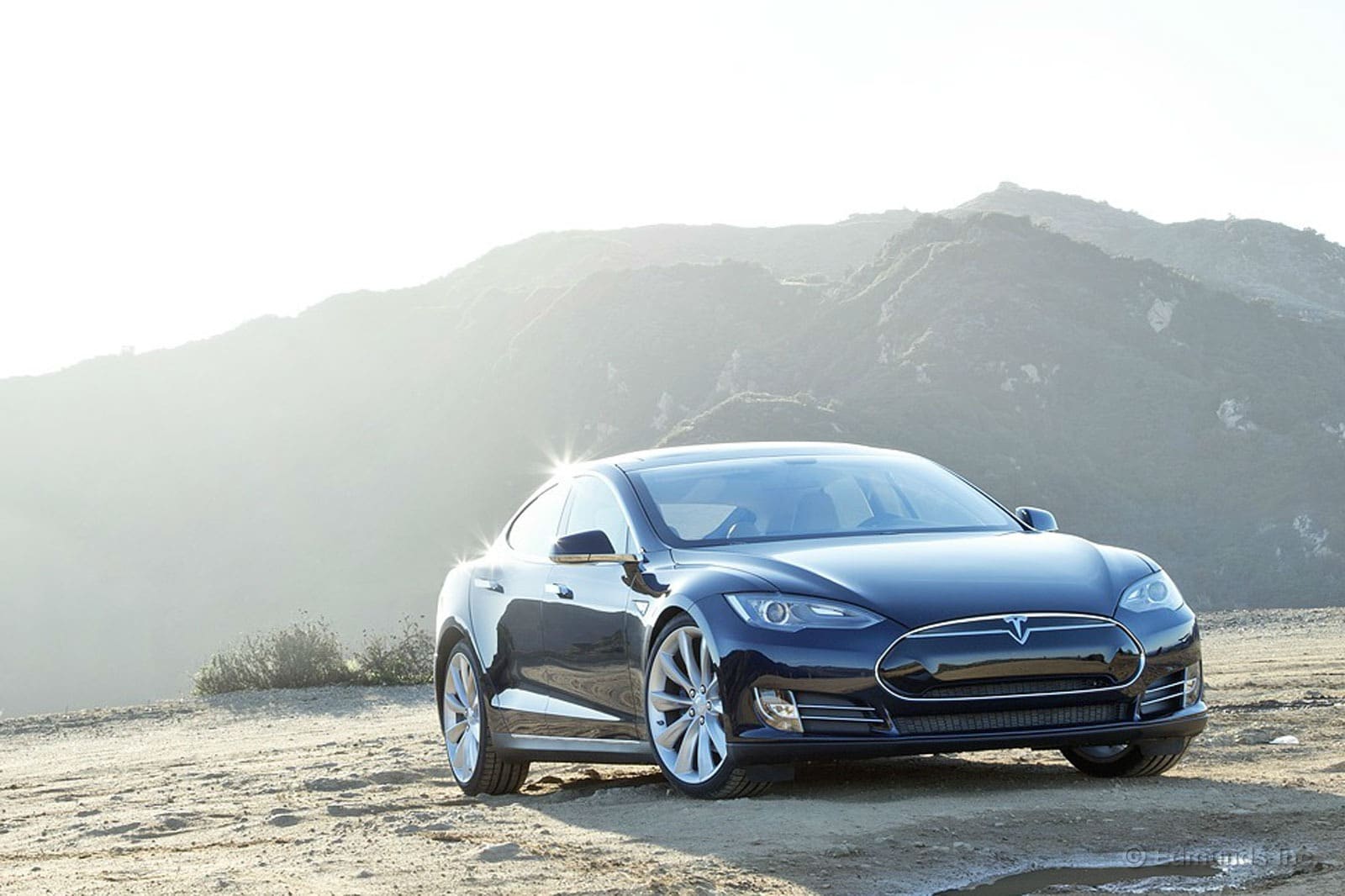2013 Tesla Model S: What's It Like to Live With?
Read daily updates on our long-term road test of the 2013 Tesla Model S and follow along as our editors live with this car for a year.
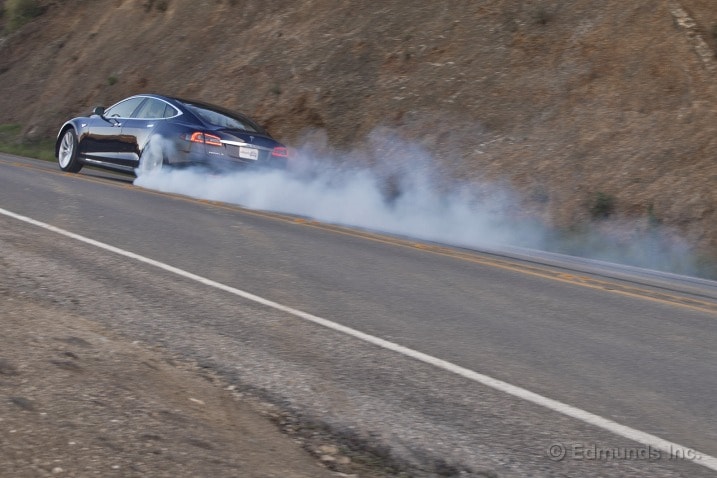
What do you want to know about?
- Introduction
- Wall Adapter Replacement Program
- Burnouts? Burnouts!
- The Key
- No Touchscreen, No Heat
- Touchscreen Getting Replaced
- New Touchscreen is Working Fine
- Taking Delivery
- First Road Trip
- Plays Any Song by Voice Activation?
- Brake Light Actuation
- Wood Interior Trim
- All-Electric Weekend
- New Touchscreen Bug Surfaces
- Electric or Not, It's a Great Looking Car
- Charging Port
- A Few Flaws in the Craftsmanship
- Beautiful Styling
- Bluetooth Inoperative
- Jump Seats
- Trip Planning
- It Even Has Unique Seatbelts
- Active Air Suspension
- Missing Coat Hooks and Grab Handles
- Real World Range
- It's Better Than Television
- Guys Love It
- Getting Low with the Brakes
- Navigation Outage
- Windshield Distortion
- Less Maintenance, More Money?
- Hidden Door
- Rearward Visibility
- On-Trend Sunroof
- Street Legal
- Car Wash Fun
- Las Vegas Road Trip
- Supercharged
- 2-Speed Cruise
- Free Gas
- Vegas Road Trip Wrap-Up
- Track Test
- One of One? Hopefully
- Visiting the Tejon Ranch Supercharger
- Charge and Chat
- Software Update in Store
- Cat Transport
- What's Missing?
- Wall Connector Finally Arrives
- What's Wrong With This Picture?
- Recharging From an Outdoor Electrical Outlet
- Software Update
- Moisture Discovered in Reverse Lamp Lens
- TPMS Gets Confused
- Great Mirror Design
- One Mile Per Second
- The Center Console (Or Lack Thereof)
- Cargo Cover Arrived
- Screen Blanks Out Again
- Average Seats for the Price
- Hit and Miss Door Handles
- Tesla Model S vs. Fisker Karma
- Poor Door Lock Controls
- Plenty of Room in Back
- First 5,000 Miles
- Philosophical Range Anxiety
- So Cool. So Fast. So Devoid of Passion.
- Navigation's On the Fritz Again
- Impresses Everyone
- It's Got a Big Trunk
- Its Door Handles Drive Me Nuts
- Cabin Boom
- Late to the Party
- High Power Wall Connector Flaw
- Would You Sign the Petition?
- Commentary from the Public
- Supercharger Charging: How Fast Is Fast?
- Broken Sunroof
- My First Time
- Door Handles
- Broken Sunroof Fixed Quickly
- Have App, Will Play
- Back Seat Review
- Uphill, Downhill
- Charging Network Extended
- Too Few Cupholders
- HOV Stickers
- Fingers Stuck in the Door Handle
- Revised High Powered Wall Connector In-Hand
- Audio Review
- Ask Us Anything
- Crash Test Scores
- San Francisco Road Trip, Part One
- San Francisco Road Trip, Part Two
- San Francisco Road Trip, Part Three
- Chickening Out
- Testing the Jump Seats
- Interior Storage
- Regenerative Braking
- Is This the Safest Car Sold?
- Ample Charge Port Door Warnings
- Fancy a Drive to Mt. Rushmore?
- Tailgate Party
- Beauty is in the Details
- It's Wide
- High Power Wall Connector Is Up and Running
- Hurts To Sit Down
- Power Window Poltergeist?
- Tire Woes, Part 1
- Tire Woes, Part 2
- Tire Woes, Part 3
- Tire Wear Post-Mortem
- Weekend Road Trip to Monterey, Part One
- Weekend Road Trip to Monterey, Return Trip
- A Gift Card To Buy Some Jeans
- How Quickly Does a Supercharger Charge?
- 10,000 Mile Update
- What's The Best Color?
- Deliveries Arriving Daily
- Charging at an RV Park
- Monitoring the Rear Wheel Alignment
- Ominous Noise
- Door Opens Automatically
- Visiting an Historical Fire House
- Supercharger Network Now Links San Diego to Vancouver B.C.
- Ominous Noise Fixed
- Door Handle Won't Retract
- Rear Visibility Is Poor
- Looking at the Battery Pack From Below
- Noise Is Gone
- Superchargers or eHarmony
- Making Sense of the Energy Displays
- Is This the Sort of Trailer Hitch He Hit?
- Mild Driveway Scrape
- Charging at Home With a NEMA 14-50 Outlet
- Software 5.8 Update, Low Ride Height Disabled
- Popular with the Rich
- A Holiday Gift
- Wrong Album Art for Podcasts
- Welcoming the Electric Future
- HPWC Default Charge Rate 80 Amps Again
- Graphical Brains
- 2,000-Mile Road Trip
- Trip Planning Is Key
- Road Trip Dynamics
- Side-View Mirror Reflection
- Shimmy
- Road Trip Range Anxiety
- We Bought Snow Tires
- Tire Sidewall Bubble
- Car Key Shows Signs of Wear
- Beyond 15,000 Miles
- Huge Improvements in Release v5.8
- Cold Weather Performance
- Supercharger Waiting Room
- Road Trip Recharging Strategy
- Electric Holiday Road Trip
- Cheap Electricity on the Oregon Coast
- A Typical Supercharger Dinner
- A Different Tire Issue
- I-5 Charging Station Review
- Will the Wife Fit?
- Missing Common Features
- Weak Black Levels
- Carpool Stickers Are Losing Their Usefulness
- It's Still Impressive
- Stuck on the Freeway
- Is the Third Drive Unit the Charm?
- It Does Have Homelink, But...
- How Much Range Is Lost When Parked?
- Steering Wheel Controls
- No Distance Lines on Backup Screen
- Most Annoying Feature
- Premium Center Console
- I Want a Regen Rheostat
- Creaking Steering Rack
- When to Choose Max Charge
- Driving Impressions and 20,000-Mile Update
- Supercharger Network Still Growing
- Underbody (Battery) Shield Kit Installed
- Laundry List Service Visit
- Clean Screen
- Cost of Gas vs. Electricity
- Five EV Questions
- Our Thermally-Fused NEMA 14-50 Adaptor Has Finally Arrived
- CarMax Offer
- Durable Interior
- New Michelin Pilot Super Sport Tires
- Coast-to-Coast Trip
- Los Angeles to New York in Pictures
- Model X Update
- Drive Unit IV: The Milling
- The Rest of the Story
- It Sells Itself
- P85D
- Wrap-Up
Introduction
Elon Musk is either a genius visionary or a complete fool. And we just paid him $110,000 to find out which.
We bought a 2013 Tesla Model S. It's ours and, unlike most other newspapers, magazines and Web sites, we're going to test it without Mr. Musk loaning us the vehicle and tracking our every move.
We've tested the Model S before. Several times. And it has consistently impressed us with its abilities and technology. But as with the rest of America's media, Tesla, which is based in Palo Alto, California and builds the cars in nearby Fremont, loaned us those sedans for evaluation. We would drive the car for a week or two and return it to Elon. In fact, the first Model S we tested was the man's personal car.
But this time it's different. There are no time limits. And no scary big brother black boxes watching over us. It's our car. We paid for it. We picked it up at the Fremont factory with 50 Tesla-test-track miles on the odometer. And our plan is simple. We're going to drive the hell out of it for a year. We're going to drive it as much as possible. Where we want. When we want. And Mr. Musk can only sit back and read about it like everybody else.
What We Bought
The 2013 Tesla Model S is available in two trim levels, Base and Performance, starting at a totally reasonable $59,900. For your nearly $60 grand, you get 19-inch wheels, keyless entry, dual-zone climate control, cloth seats and a 40kWh battery pack producing 235 horsepower, 310 pound-feet of torque and a range of about 100 miles. But we've had EVs with a hundred-mile range before. That's no fun anymore and while you can get a base Model S with more juice, we decided to step up our game and get the Model S Performance.
The 2013 Tesla Model S Performance starts off where the base leaves off, but leaves behind the boring 40kWh batteries in exchange for an 85kWh pack. This power plant delivers 416 hp, 443 lb-ft of torque and an estimated range of 265 miles. Last time we tested a Tesla Model S with the Performance pack, it hit 60 in 4.3 seconds (4.2 with 1 foot of rollout) and cleared the quarter-mile in 12.6 seconds at 108.3 mph.
Beyond the upgraded powertrain that will give us real-car range and sports car speed, the Tesla Model S performance brings active air suspension with sport-tuned traction control and Napa leather. The cost? $93,750, including $990 for Tesla Personal Delivery (its words for destination and delivery) and $180 for "Final inspection, prep, and coordination" (its words for "give us more money").
Even though we were already over $90,000, we didn't stop spending. The stunning blue metallic paint ran us $750 and the all-glass panoramic sunroof was $1,500. We spent $950 on the Sound Studio package that includes a 12-speaker, 580-watt stereo with Dolby Pro Logic 7.1, a music storage hard drive and XM Satellite Radio preparation.
We also upped our passenger-carrying ability by two when we added the rear-facing jump seats for $1,500. The seats can be used by children (or very small adults) between 35 and 77 pounds and over 3 feet 1 inch, but not so tall as to hit their head on the ceiling. The rear parcel shelf ran us $250, while the Twin Chargers ($1,500) allow us to pump in 62 miles of range per hour when both are connected to the car at the same time.
Finally, we added the Tech package for $3,750. This package includes xenon headlights, self-dimming sideview mirrors, power liftgate, high-definition back-up camera, turn-by-turn navigation and automatic keyless entry. And, while it's not an option on the car per se, we got the High Power Wall Connector for $1,200 (plus $35 shipping) to take advantage of our twin-charger option.
The total damage worked out to $105,005 before tax, title and license. We wrote the check ourselves and hand-delivered it to Tesla when we picked up the car at the company's Northern California headquarters.
Of course, buying the 2013 Tesla Model S wasn't as simple as hopping on a plane with a big check. In fact, this process started early on in 2012 when we put a $5,000 deposit down on a car we hoped would arrive sometime in the future. Months later, Tesla called to let us know that we could head down to one of its experience centers to spec out a car.
We headed down to the closest one to us, on the Third Street Promenade in Santa Monica, where we then outfitted our Model S with blue paint over a tan interior before adding our options. From there, we were given a build date and a rough estimate of two months until delivery. Almost right on time, our car was available in early February and on February 19, we hopped a plane to Oakland to pick up our new car and test the Supercharger system on the way back.
Why We Bought the Tesla Model S
Whether you like EVs or not, they're a part of the automotive landscape today, and maybe tomorrow. And the Tesla Model S is, in clearest terms, the most innovative and capable EV in the world.
Until the Model S, EVs have been city runabouts: compacts (or worse) designed for urban singles who drive very few miles per day, typically at sub-freeway speeds.
The 2013 Tesla Model S Performance, however, can go 265 miles on a charge. It can also seat seven passengers. And do 130 mph. And run the quarter-mile in less than 13 seconds. It may not be able to do them all at the same time, but the important thing is that it can do all of these things and that's a first for an EV.
And it's not even from a major carmaker.
The most innovative and important car of 2013 isn't a Chevy or Ford or Toyota or Ferrari. It's not Japanese or German. It's from a Northern California, Internet-money-funded start-up, propped up by government loans and private funding, hell-bent on disrupting not only the EV business, but the entire car business.
Does it live up to the hype?
We've got at least 12 months to put 20,000 miles on our new Long-Term 2013 Tesla Model S to see if it's the real deal or another flash-in-the-pan tech innovation that works better in theory than in the real world. Follow along on our Long-Term Test page as we tell you what it's like living with a Tesla.
Current Odometer: 453 miles
Edmunds purchased this vehicle for the purposes of evaluation.
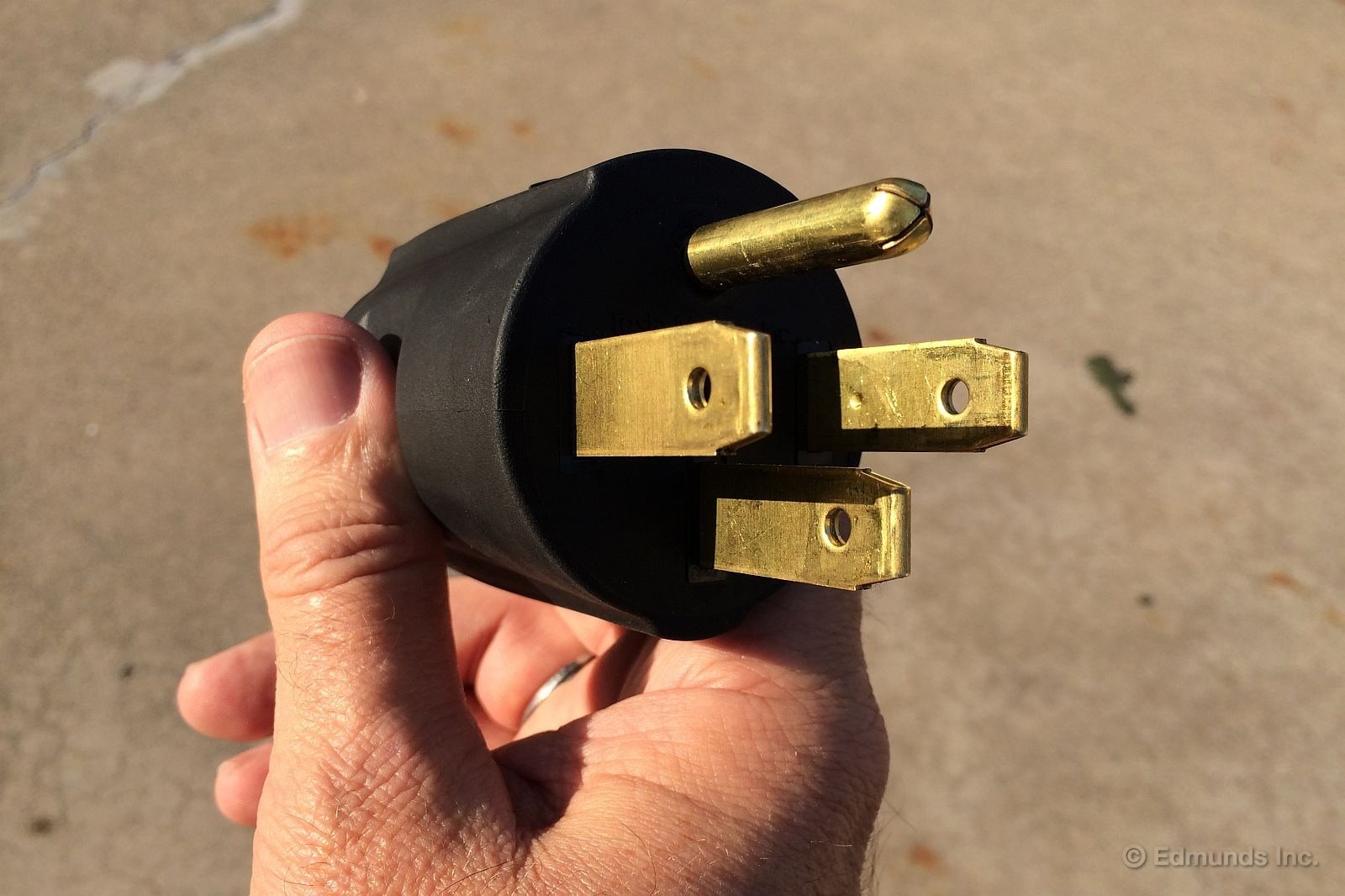
Last Friday, Tesla Motors announced a replacement program for wall charger adapters. Apparently there have been several reports of smoke in the vicinity of the wall plug, and at least one owner was burned when trying to unplug his car when he saw said smoke.
And while the issue is related to the home charge cord that comes with the car, the cord itself is fine, too. The issue is instead related to the use of the NEMA 14-50 wall adapter that can be snapped onto the end of it. That's the part that's being replaced.
That's the adapter I was using at Dad's place in Oregon. In fact, I had a minor charge issue myself while I was there. See the next page for more on that.
Early media reports were all over the map, with accompanying photos depicting the High Powered Wall Connector (HPWC) or a Tesla Supercharger. Neither is involved. They're fine.
Tesla says the adapter isn't really at issue. They instead blame the incidents on substandard or faulty home wiring.
"These are very rare events, but occasionally the wiring isn't done right," CEO Elon Musk said. "We want people to have absolute comfort, so we're going to be providing them with an upgraded adapter."
The upgraded adapter, which will be mailed to Tesla owners in the next two weeks, is functionally identical to the one pictured above, but with a thermal fuse imbedded inside to cut power if overheating is detected.
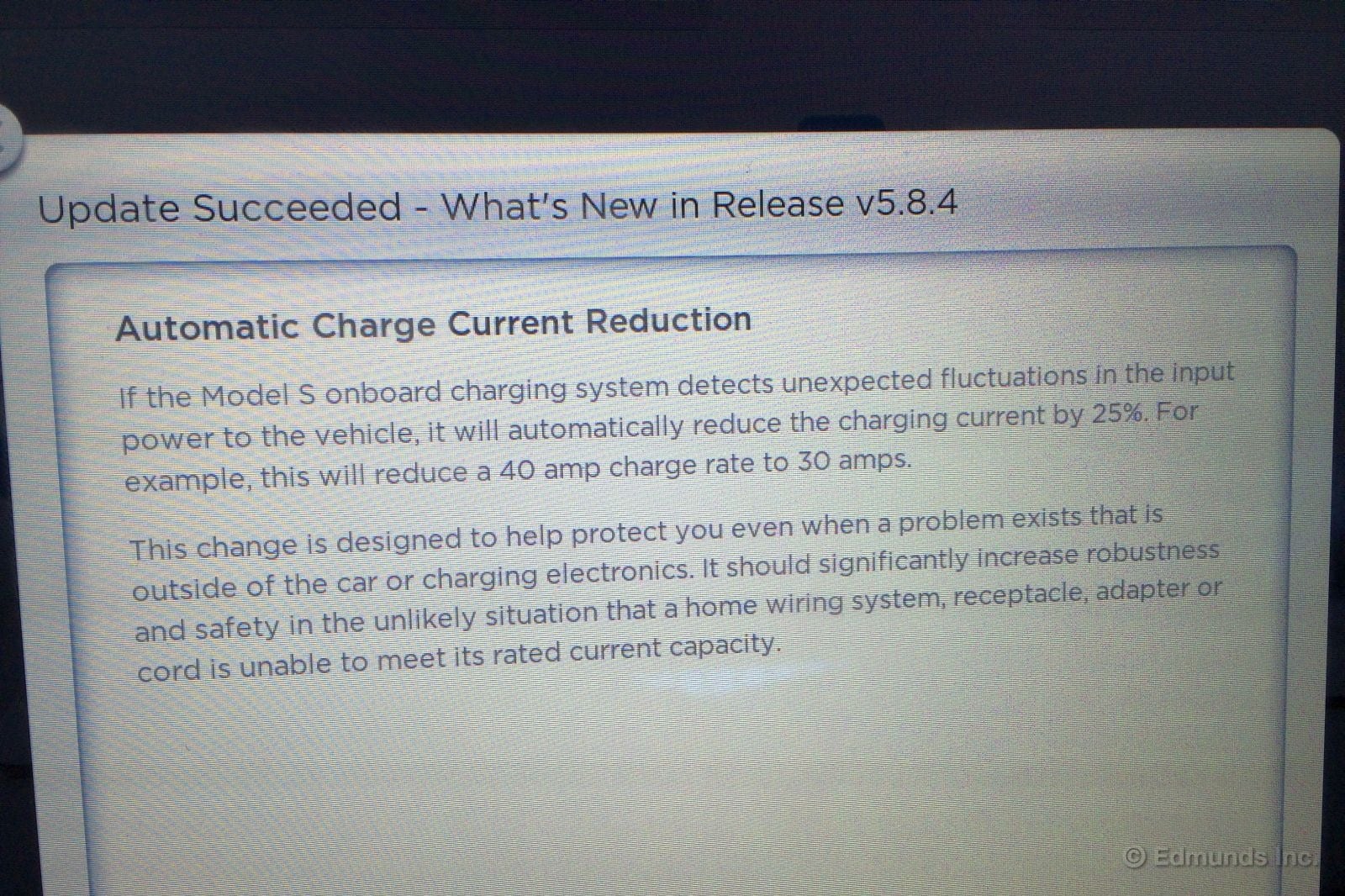
It makes sense. Tesla isn't in a position to control the upstream home wiring environment, and standardized electrical codes can only guarantee so much. The necessary NEMA 14-50R receptacle costs less than $10 at Home Depot. The other parts are cheap and available, too. I imagine there are more than a few DIY wiring jobs out there. In fact, I've read more than one forum post where owners boasted of how easy it was to install the NEMA 14-50 socket themselves.
Tesla has always recommended the job be done by a qualified electrician, but they're unable to force the issue. Also, I'm not sure there's a standard definition of "qualified electrician."
Maybe that's why the adapter upgrade is part of a two-pronged affair, if you'll pardon the pun. A couple of weeks ago Tesla sent out a software update to enable the car's onboard charging circuitry to cut the power draw by 25 percent in the event of unusual input power fluctuations. This update (v5.8.4) popped up just a day or two before I headed north to Oregon, about 2 hours after I downloaded update v5.8, in fact.
I didn't know the history of this update at the time, but the description sounded good in light of what I knew about the variability of home wiring. My own house was built in 1966, and who knows what's in my walls? I don't. For its part, Tesla says there have been no reports of overheating since the update went out.
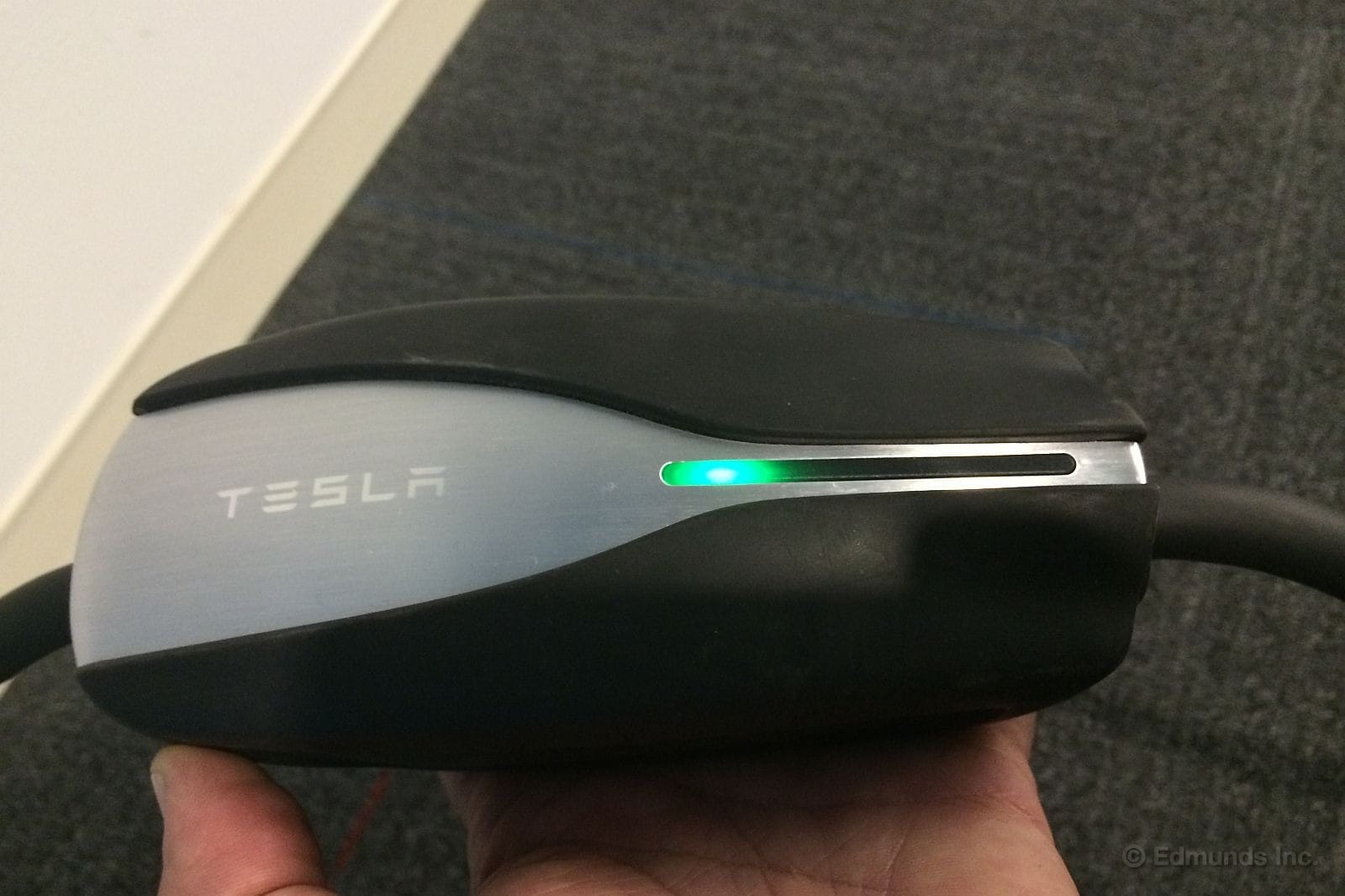
This all came together at Dad's place in Oregon, well before the issue was publicly announced on January10th.
After unloading our luggage, we put the car to bed down behind his shop and plugged it into his NEMA 14-50 socket. Later, after dinner, we went back to the shop to see how it was doing. (There's no 3G reception there and his home Wi-Fi doesn't cover his shop, so the iPhone app couldn't communicate with the car.)
Charging had stopped. The green light on the charge cord's transformer had gone red. The car displayed a "charge cord fault" message in the cluster. But whatever it was hadn't happened right away because about 60 miles of range had been added before things came to a halt.
There wasn't a whiff of smoke, no sign that heat had ever been present. The cord's internal breaker had done its job as designed.
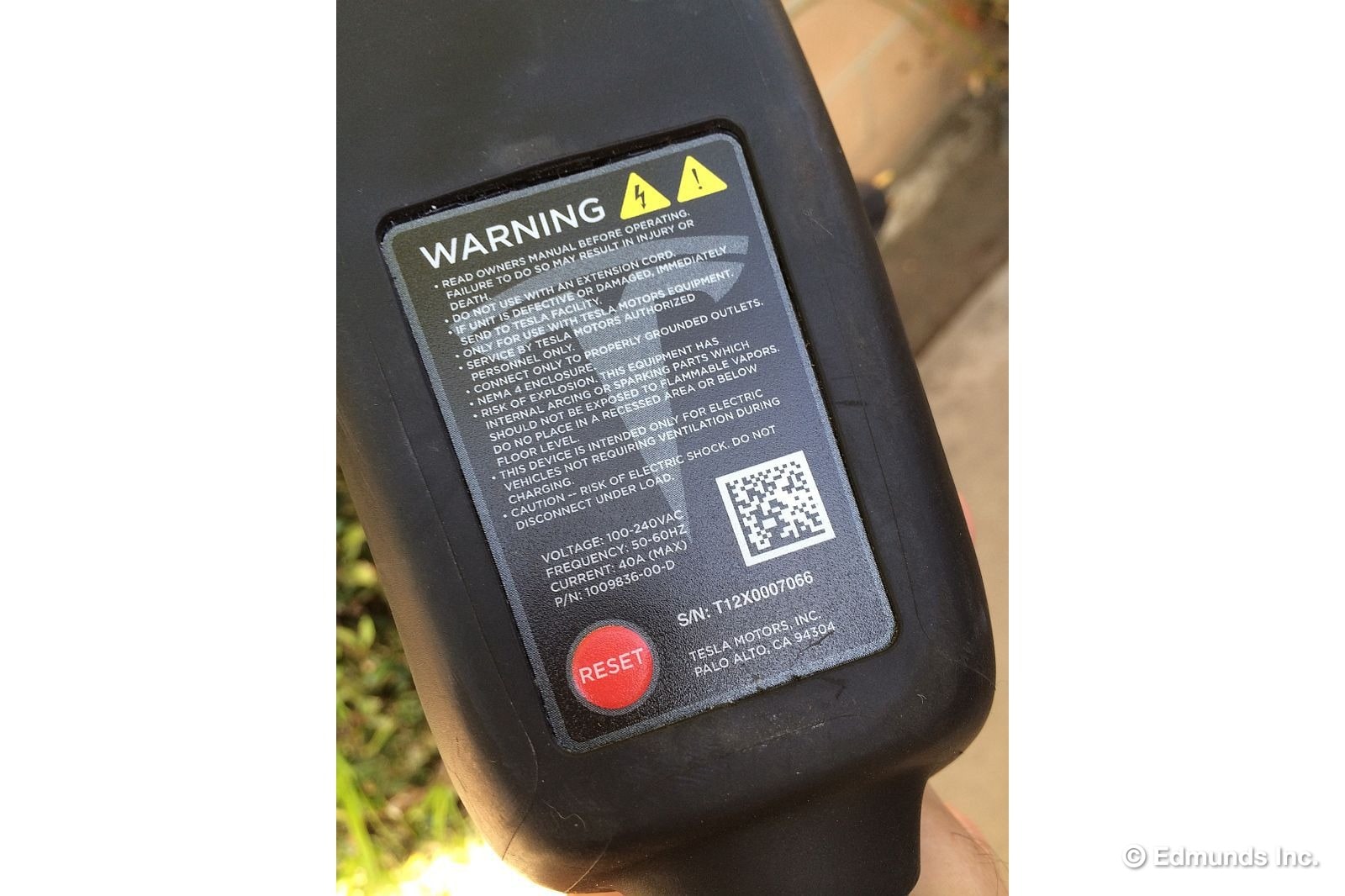
I unplugged everything, including the wall connection to the cord. Then I plugged it back in and pressed the "reset" button on the charge cord's housing. The green light was back.
Then I plugged it back into the car and dialed the draw down from the NEMA 14-50 default of 40 amps to 30 amps.
Everything worked great from then on. I successfully charged it each of the next four nights, and the only difference on those subsequent charges was 30 amps was the default. I didn't have to manually dial it down from 40 amps each time.
This raises several questions. If the cord has internal protection built in, and the internal breaker functioned properly for me, why are the incidents happening at all? Why is additional thermal protection necessary at the plug end? Perhaps a qualified electrician can enlighten me.
And what's up with Dad's wiring? Well, the distance from the panel to his 14-50 is a long run. And the duty cycle of Tesla EV battery charging through a NEMA 14-50 is a fairly atypical 100 percent at 9.6 kilowatts, more or less. His NEMA 14-50 was added by repurposing an existing circuit years after the initial construction, but they did downgrade it from a 60-amp to a 50-amp breaker, so I'd have thought the conductors would be oversized.
Also, the cord's own breaker tripped before the v8.5.4 Automatic Charge Current Reduction software kicked in. The car was still at 40 amps when I came upon the scene and the system did not auto-detect a problem after I reset the cord's breaker. I set it down to 30 amps myself.
Maybe the wiring and the electrician are fine. Maybe there was a weird isolated power surge on the local grid, the kind of fluctuation the charge cord designers had foreseen. Maybe that's why the breaker tripped and the Automatic Charge Current Reduction software didn't.
What's clear is there are lots of outside-the-car variables in play. I don't think my incident matches those in the reports, but the new software and the thermally-fused NEMA 14-50 plug-end seem like prudent steps anyway. And whatever you do, don't DIY your NEMA 14-50 installation unless you are a qualified electrician.
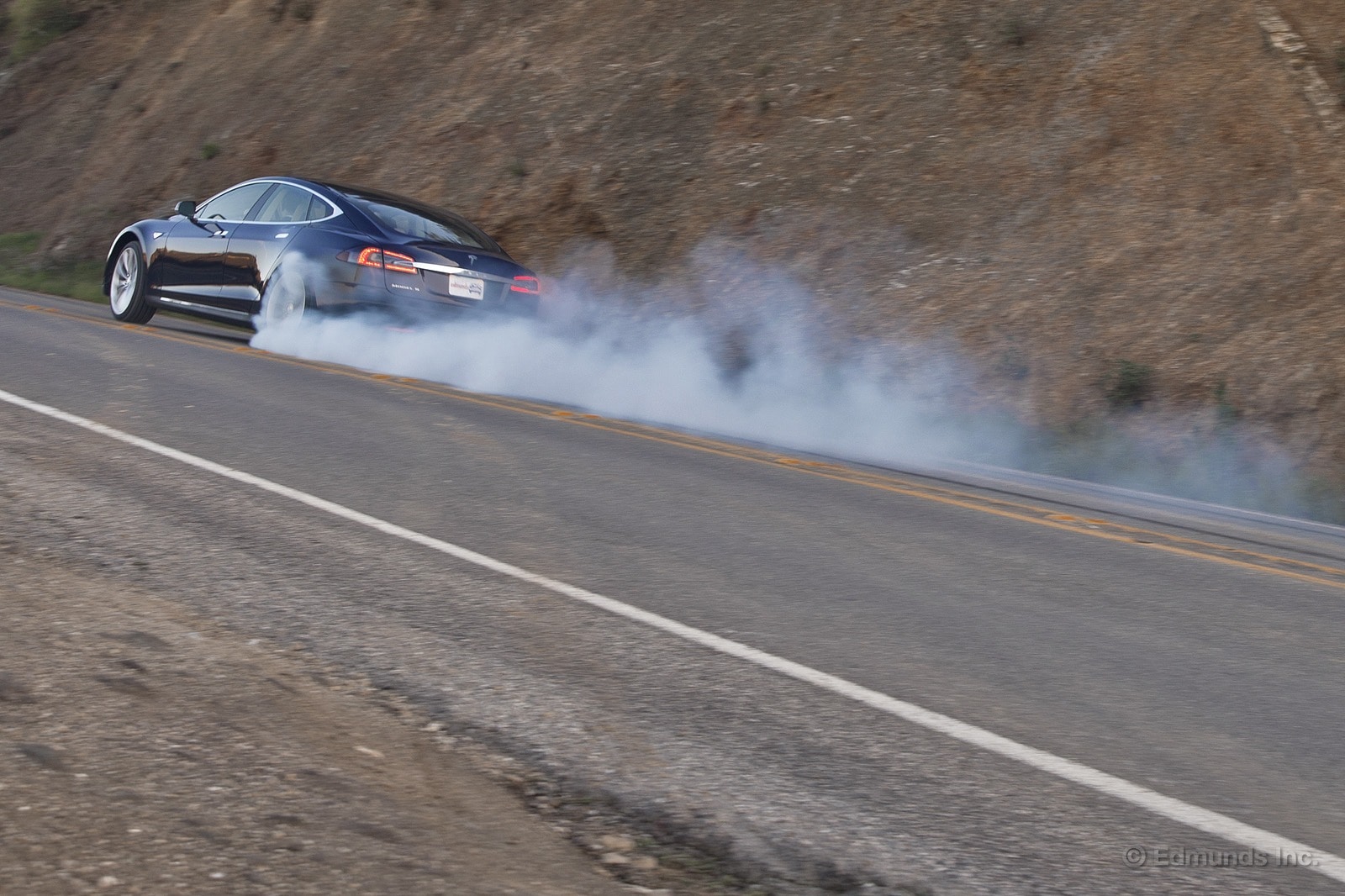
The thing about most electric vehicles is that they're incredibly conservative. Sure, they've got a bazillion pound-feet of torque, but they're so conservatively tuned that you get like, 9, from a stop and even then, if you get any wheelspin, the electronic nannies put you straight in the corner.
This, friends, is not the case with the 2013 Tesla Model S. With our Performance model's 85 kWh battery pack, we've got 443 pound-feet of torque available from 0-5,100 rpm and, with the traction control turned off, you get to use them all. Just mash the pedal to the floor as fast as possible and try not to slide into a tree.
No nannies. No careful meting of torque to prevent fun. Just power followed by a deficit of traction and a surfeit of smoke. The only odd part is the noise.
When tires give it up, they stop squealing and just sort of scratch at the pavement, this is normal. Usually, though, you've got to manage the engine speed to avoid the redline and avoid letting the tires catch. Here, you don't. It's only got one speed and torque everywhere. It's almost too easy. I think I see a Burnout Supertest in this car's future.
Thanks, Tesla, for trusting your owners and letting us have some fun.
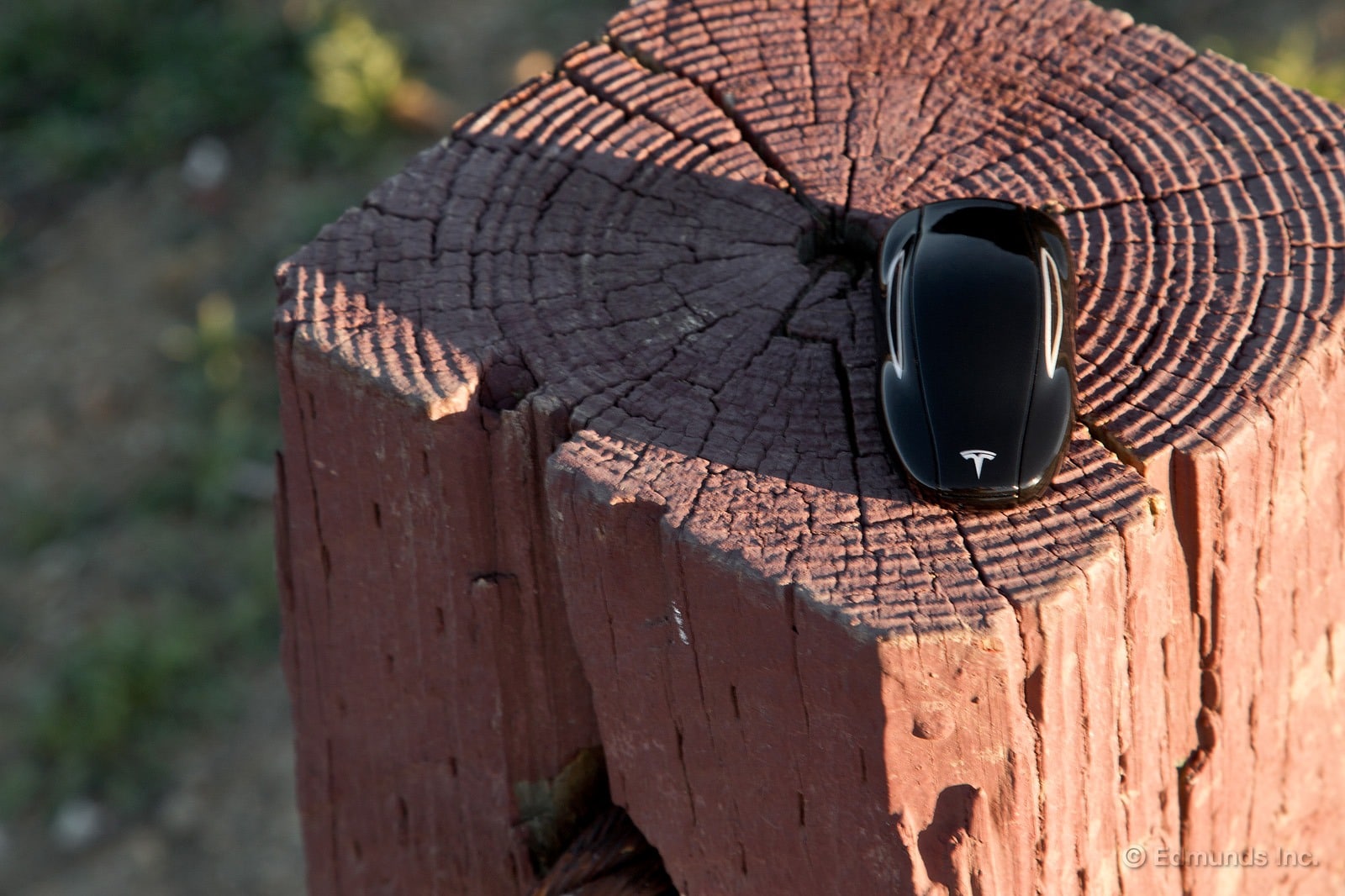
Like virtually everything else having to do with the 2013 Tesla Model S, the folks at Tesla have decided that a normal key wasn't good enough and have given us this.
Look at it. It's slick, it's shiny and it has no visible buttons. It does, however, just like a fresh baby, have a bunch of soft spots on its dome that are made for pressing.
Pressing the front squishy spot opens the frunk. Double tapping the rear "button" opens the powered trunk (it stops with a single tap) and the top one locks/unlocks the door. Holding the middle button down for a few seconds will open all the windows. Of course, with the Tech Package, the Tesla Model S automatically locks/unlocks the doors, so the key may not ever be necessary.
But, with the exception of the faux buttonlessness of it all, it's kind of old hat. What makes this one unique is that there's no spare key hidden inside.
So what do you do when the battery in the fob eventually dies? Easy, you put the key on the passenger-side windshield wiper and then push the handle in, it'll pop out and let you in. To start the car, dump the key in the cupholder.
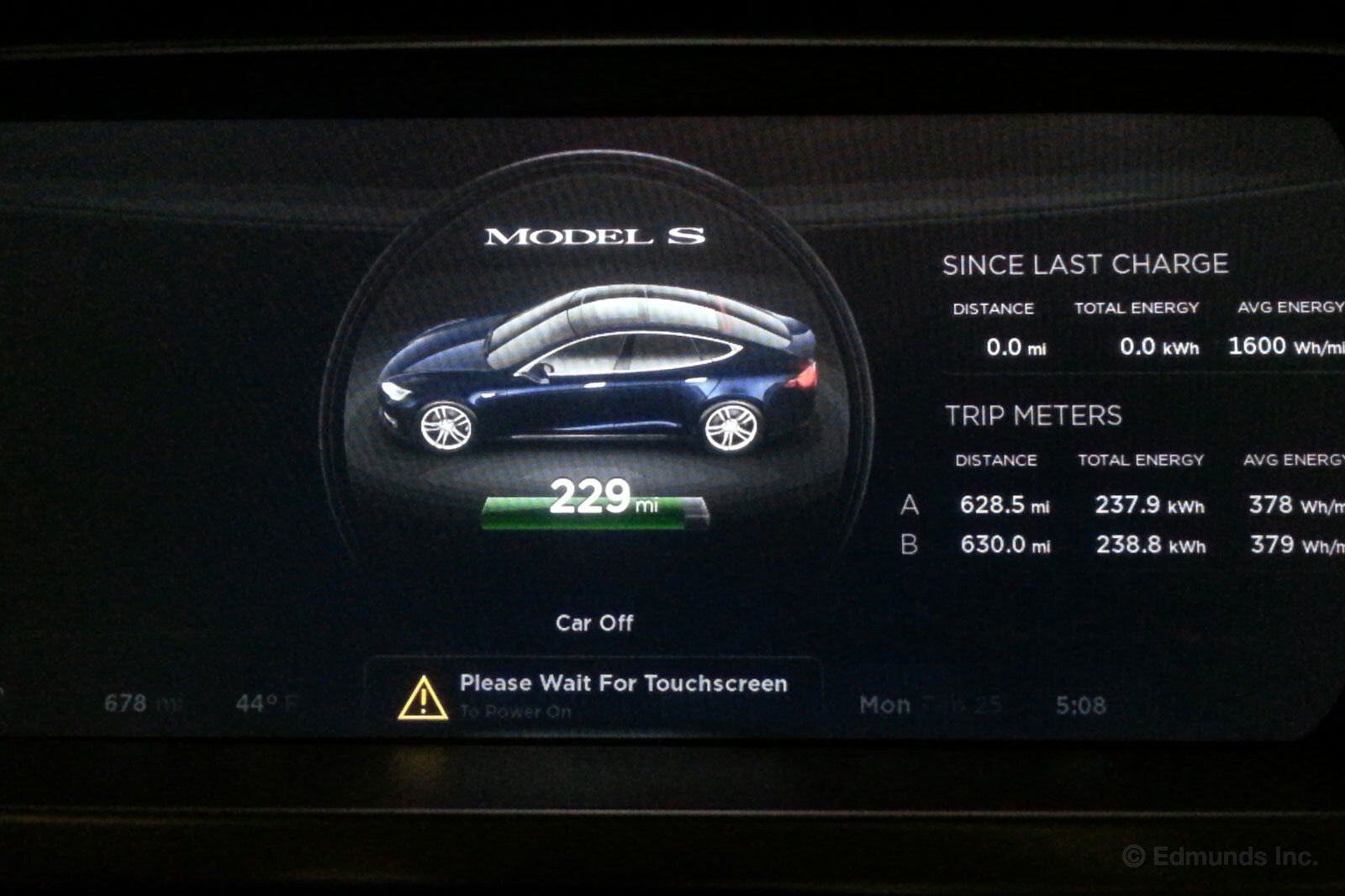
I was looking forward to driving our new Tesla Model S into the office this morning. Figured I would sip some coffee in my kitchen for a few minutes while warming up the interior of the Tesla sitting outside via the phone app. No such luck. It wouldn't connect to the car even though it had been working great all weekend. No big deal I figured, there was plenty of time to try it later.
So I grabbed my things, hopped in the car (I had unplugged it the night before as it was already fully charged), pressed the brake to bring it to life — and nothing, or at least nothing from the main touchscreen. The rest of the car was ready to go, but there was a message in the instrument panel that said, "Please wait for touchscreen to power on."
After 5 or 10 minutes of nothing happening I left. It was 5:00 in the morning and I wasn't about to do any more trouble shooting. Maybe it would start up along the way, I hoped. It never did, making for a chilly and silent drive to work. With no main screen, the radio and climate controls wouldn't work. I tried the auxiliary controls on the steering wheel for both and neither worked.
We'll be stopping by the local Tesla service center today to see what's up and keep you posted.
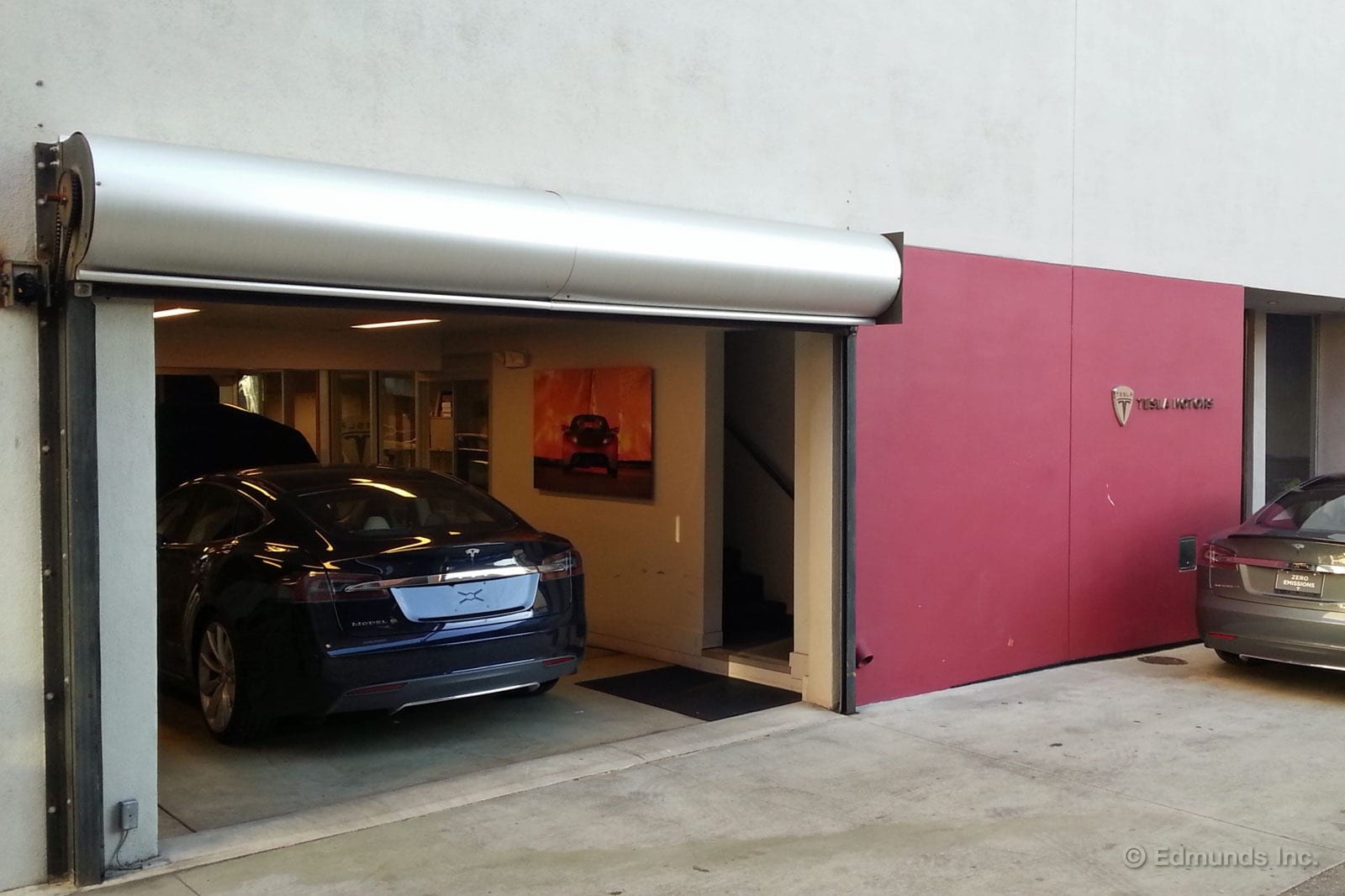
After yesterday's meltdown of the touchscreen in our new Tesla Model S, we ended the day at the local service center. This was after talking to a tech on the phone who asked us to try a hard reset of the screen by pressing the two roller buttons on the steering wheel. It didn't work, so a dealer visit was the next option.
For us, this wasn't a big problem as the Los Angeles service center is only a few miles away. I dropped in at around 4:30 and the two service writers got on it right away. They pulled the fuse for the screen and let it sit for a few minutes so it would reset fully. After putting the fuse back in, the screen didn't immediately return to life, but the technician kept working on it and it eventually started up again.
At that point they started to download the data logs from the car in an attempt to pinpoint the reason for the failure. The service writer said the logs were being sent up to headquarters where company engineers would look them over. This took longer than I expected, as it ended up being over an hour before there was any response. When all was said and done, the service writer said that they wanted to replace the screen entirely, presumably as a precaution against any further problems. I told him I would bring it back the following day.
On the drive home, the screen worked fine and I experienced no additional problems, but we're definitely bringing it back in to have the swap done. More on that later.
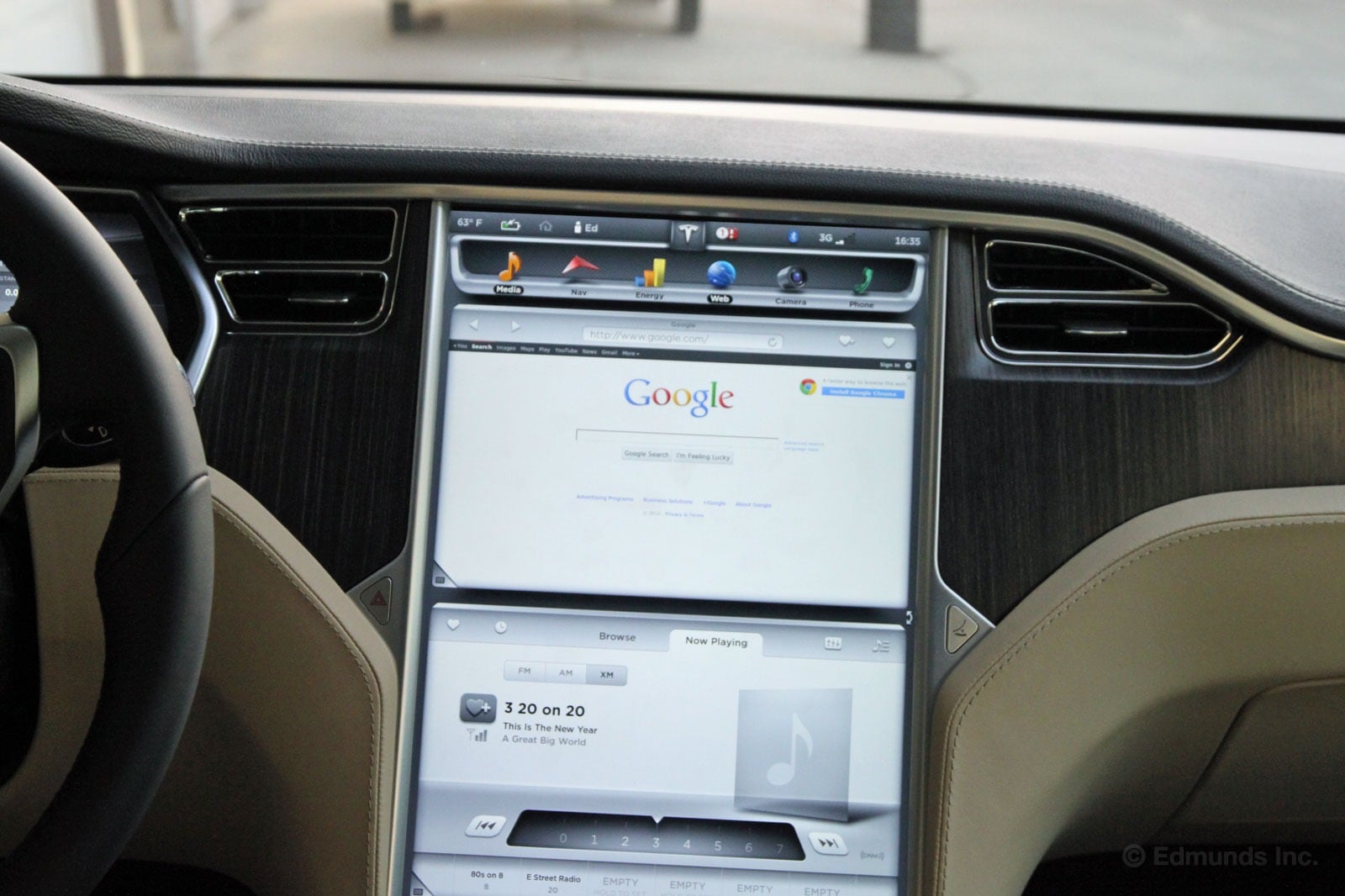
Not sure why, but Tesla wanted to replace the touchscreen in our Model S even though it was working fine after some time with the technicians. Seemed a little over cautious but we weren't about to argue. I dropped our Model S off at the Tesla service center around 9:30 in the morning with a promise to have it back sometime midday.
Sure enough, at about 1:00 in the afternoon, the service writer called back and said it was ready for pickup. He even asked if I wanted it washed. I headed down to the service center again, signed an invoice and was out of there in 5 minutes.
Other than the fact that all my previous presets and information were wiped out, there was no major drawback to the screen swap. The new one appears to be working fine and hopefully it will be our last. Time will tell.
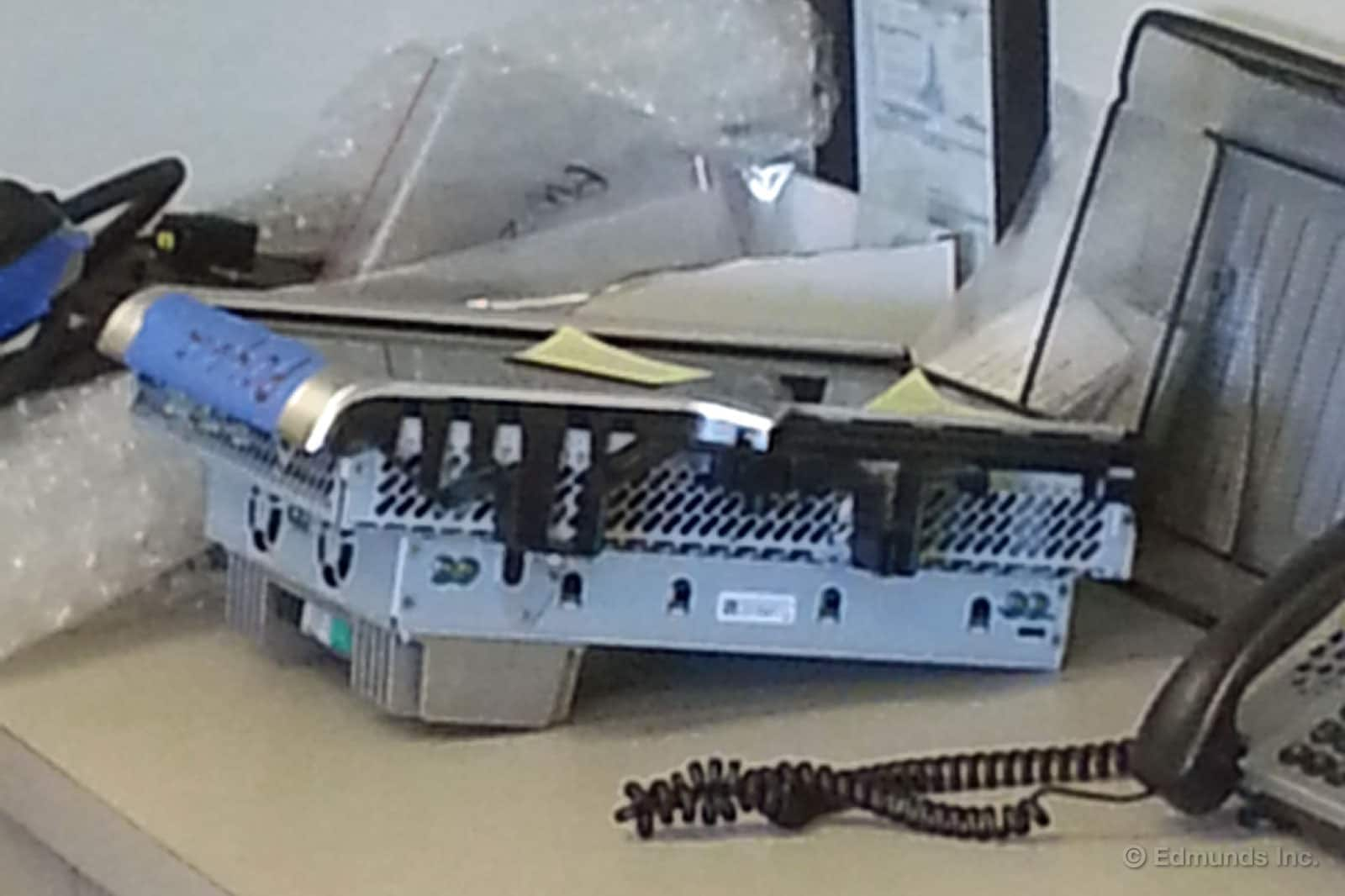

There are two ways to pay for and take delivery of your new 2013 Tesla Model S. Tesla will bring it to you or you can do what we did and pick it up at the company's assembly plant in Fremont, CA and drive it home.
Surely we understood the irony of taking two Lincoln Town Cars and a Boeing 737 to pick up our new electric vehicle, but we couldn't pass up the opportunity to see where the cars are built and to test Tesla's Supercharger network, which includes several locations between Fremont and our Santa Monica office.
We arrived at the huge facility, which was once owned and operated by Toyota, just before our appointment time of 9:00 a.m. We were greeted by delivery experience specialist Matt Alcorn, who was friendly, accommodating and extremely knowledgeable about Tesla, the Model S and the facility.
After some small talk, we took him up on some coffee and got down to business. Matt graciously accepted our $110,750 check, asked us to sign a few pieces of paper and the car was ours.
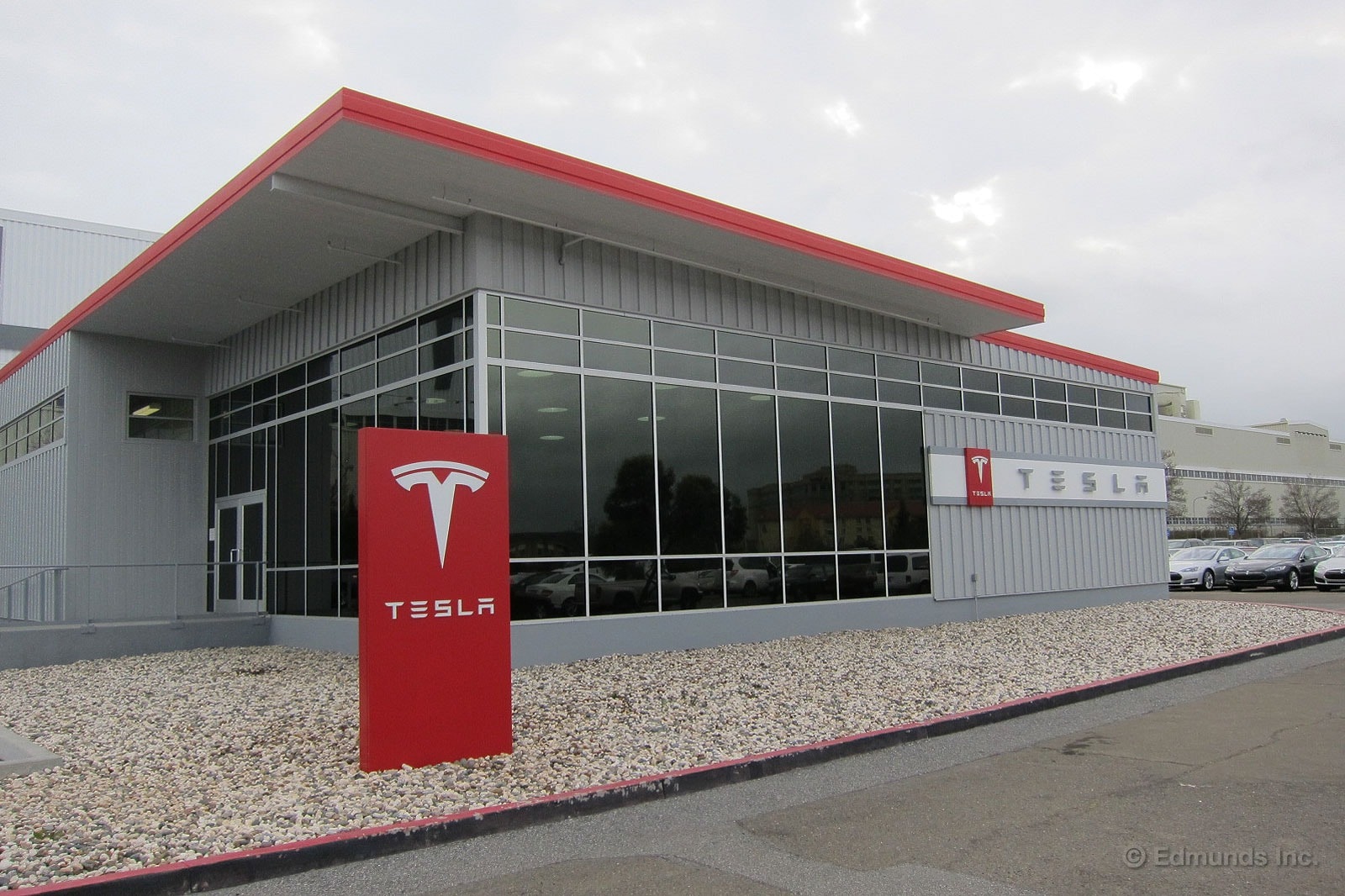
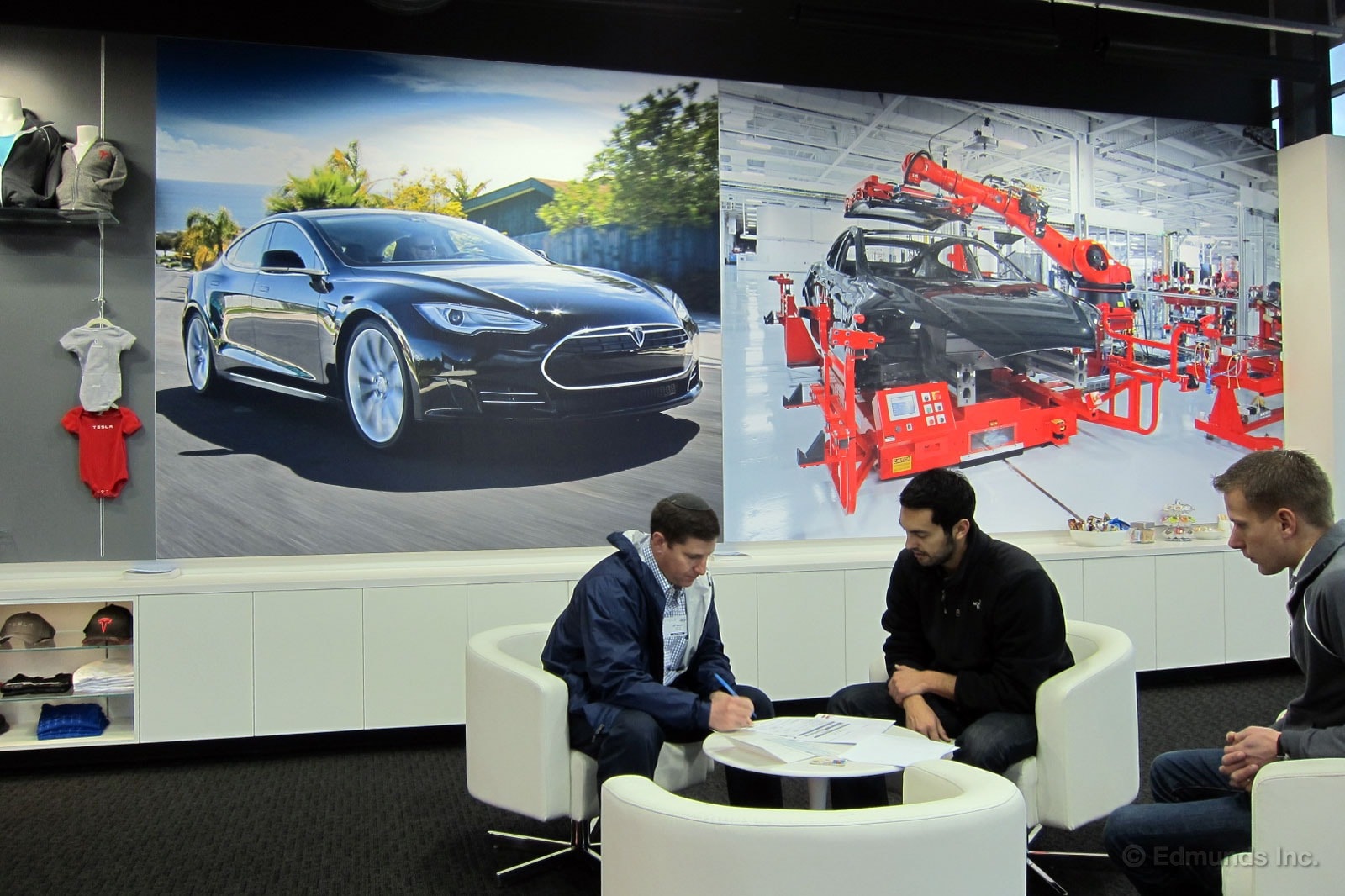
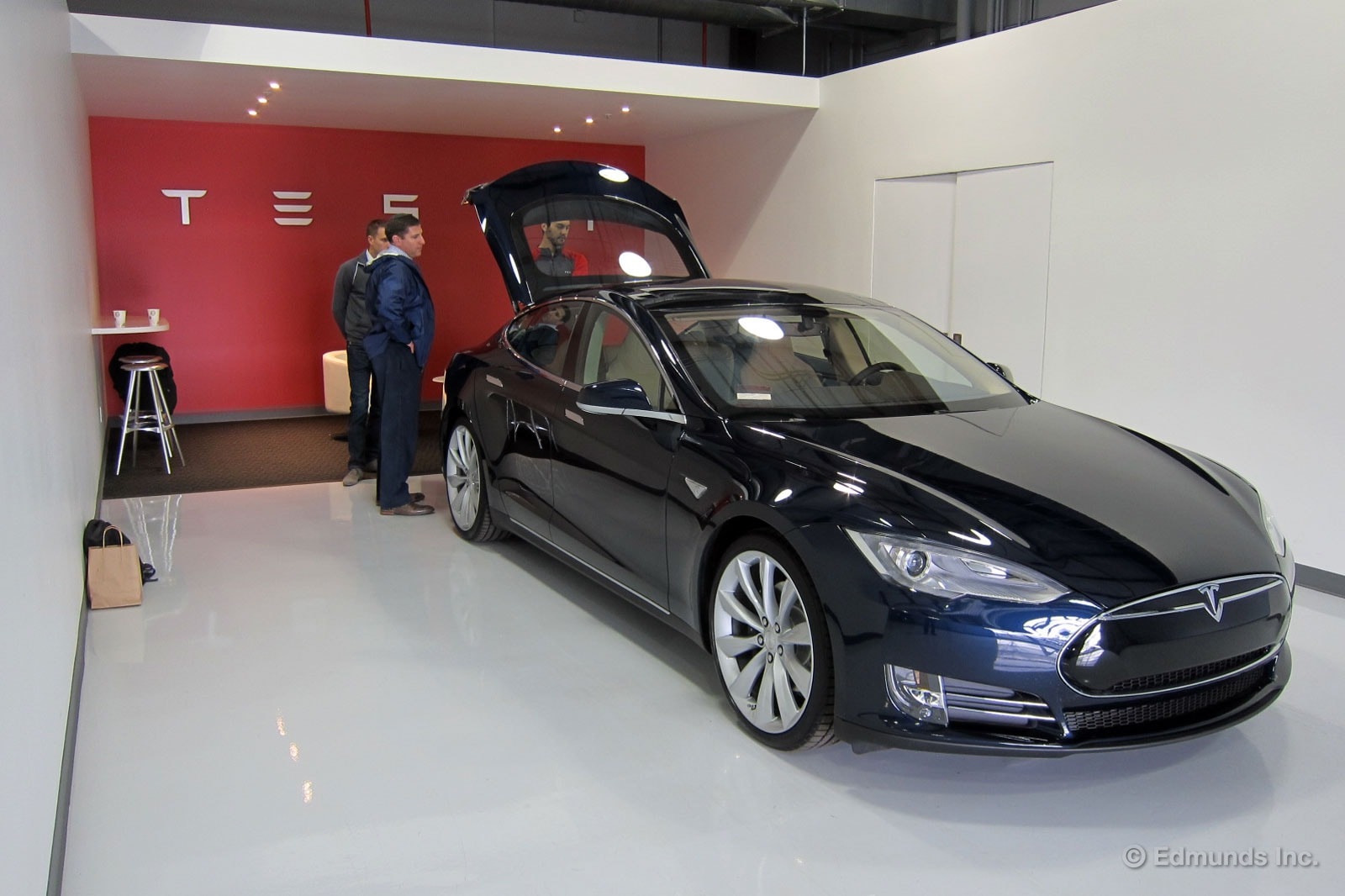


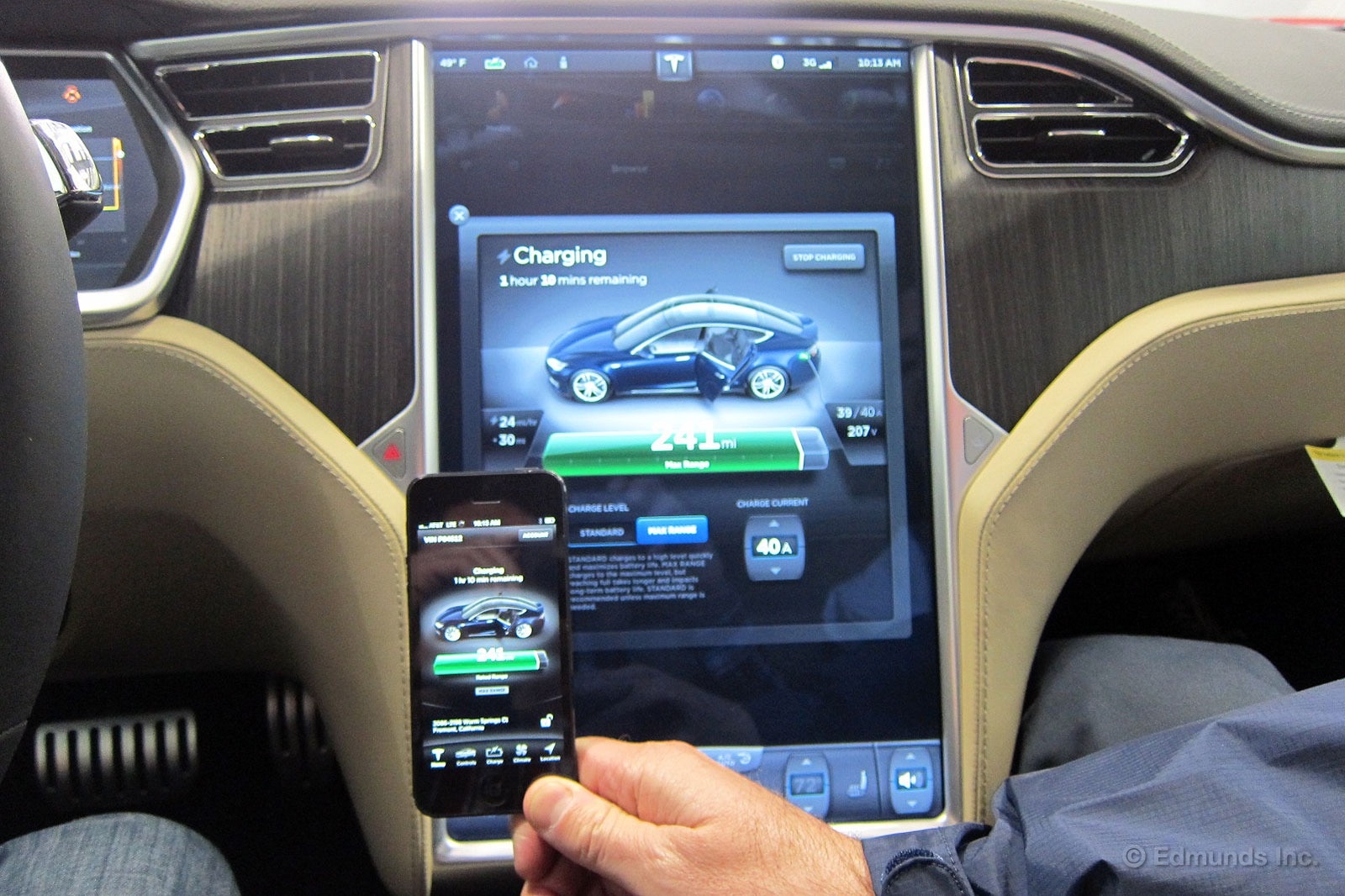
Within minutes were into the next room, where the car was displayed like sculpture on the world's whitest floor. It was plugged into the wall, and there were droplets of water remaining in the door jambs from a recent bath. There were 50 miles on its odometer. According to Matt every car gets a shake down on a small test track on the grounds of the plant.
It was also just as we had ordered it months before: Blue, sunroof, 21-inch wheels, Tan Performance interior, Obeche Wood Matte Interior décor, Tech Package, Sound Studio Package, Rear Facing Seats and Twin Chargers.
The education began. Over the next 30 minutes Matt walked us through every aspect of the car, politely answering our stupid questions along the way. He explained all of the controls and subsystems. Taught us how to plug it in. And got the Tesla app fired up on our iPhones. There was a lot to learn, but Matt made it easy. He even helped us pair our phones to the sedan's Bluetooth.
Then we toured the assembly plant, which was originally built in 1960. Tesla is building 40 cars a day now, and we witnessed the entire process, from stamping aluminum fenders to the upholstery shop to final assembly and inspection. As expected, robots and enormous machines do much of the work, but there are also many human hands on the cars. Portions of the sedan's floor are even welded manually and we watched people hand finish freshly stamped aluminum hoods.
Unfortunately, no pictures are allowed inside the plant.
Big place. An hour later, we were ready to hit the road for Santa Monica. With smiles on our faces, Matt's cell phone number in our pocket and the Tesla Supercharger at Harris Ranch programmed into the car's navigation system, we pulled out into a light rain and pointed it southbound.

We pulled our Model S out of the Tesla factory customer delivery center into a light rain with its range reading 249 miles. The Harris Ranch Supercharger, according to the sedan's navigation system, was just 153 miles away.
Range anxiety? Not even a little.
Southbound on Interstate 5 and it's easy to become enamored with Elon Musk's creation. The Model S is comfortable, luxurious and it feels substantial on the road. And it is fast. Like supercar fast. Still, we controlled ourselves and cruised around the 70 mph speed limit.
After 130 relaxed miles we got a warning message, both on the gauge cluster and the large screen center stack: "Service Tire Pressure System Contact Tesla Service."
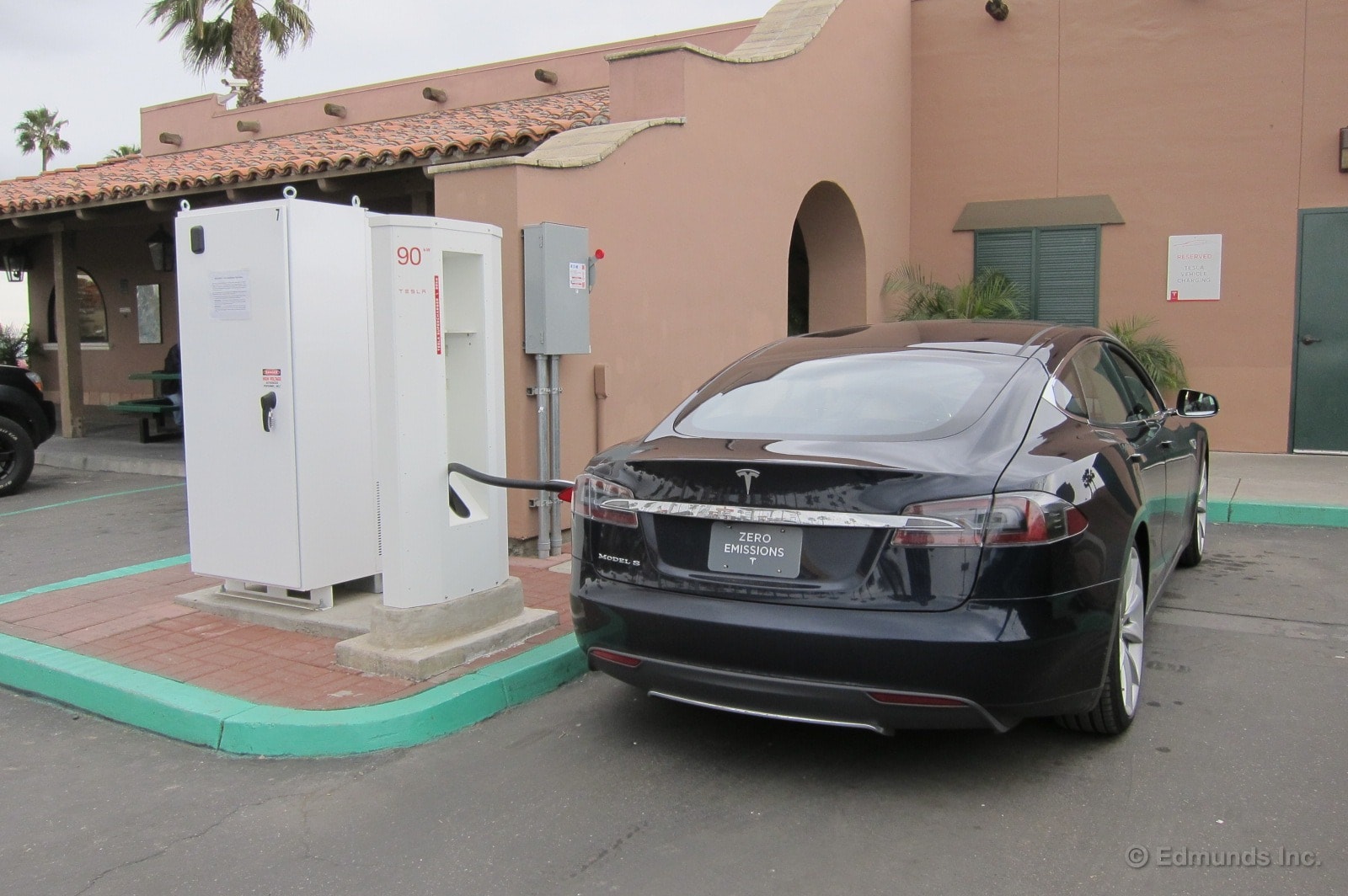

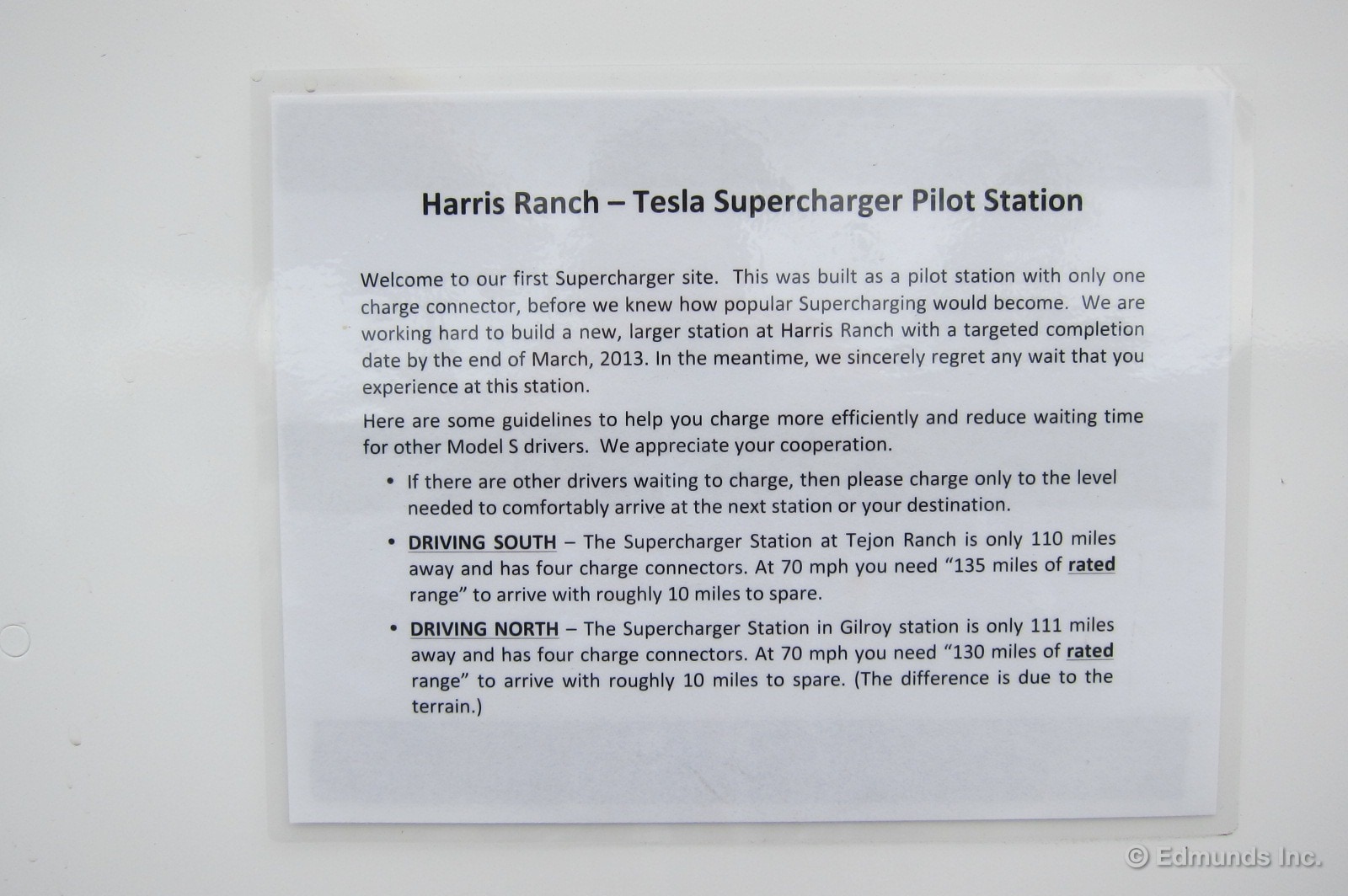
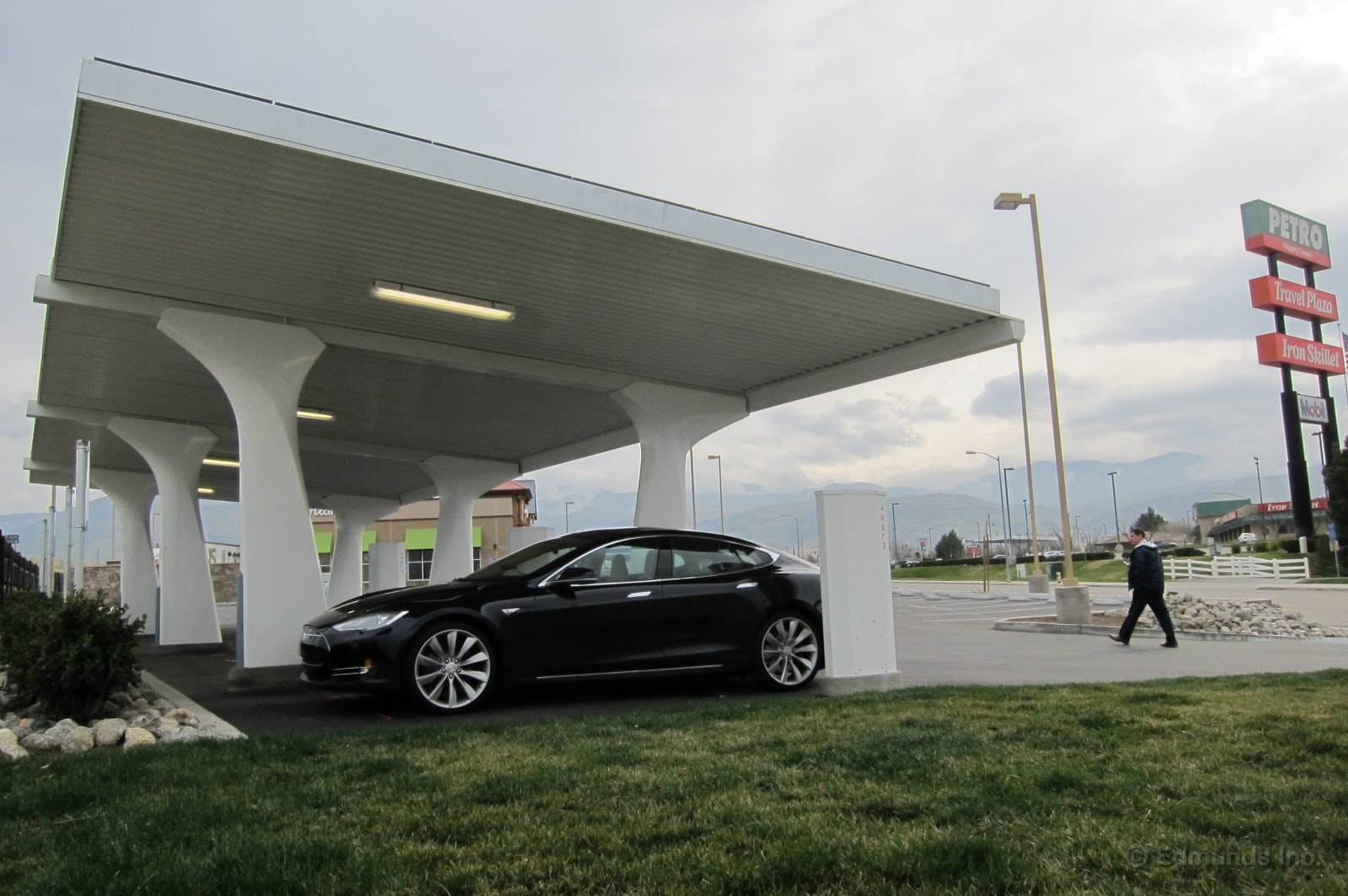


With the Supercharger just 23 miles away and the car feeling fine we pressed on and arrived at Harris Ranch without issue and with 43 miles of range left. We plugged into the ugly large white box, ate lunch and unplugged 60 minutes later. The car's computer said the range was up to 238 miles. Impressive in such a short time. By the way, the weather was now a dry and windy 55 degrees.
Oh, and the tire warning message was now gone. We got back on the road and soon realized how much the Model S does not like crosswinds. For several miles, keeping the sedan true in the lane was difficult. Nothing severe, but not the kind of dynamic flaw you find in a Mercedes S Class or a Porsche Panamera.
With our Santa Monica office about 150 miles away we decided to take the conservative approach and charge up again at Tejon Ranch at the base of the Grapevine, a severe climb through the mountains we were sure would accelerate our range consumption.
We reached the charger with 68 miles of range after a total drive of 269.4 miles. Far larger and more majestic than the unit at Harris Ranch, this Tejon Ranch Supercharger looks like a high-tech car port from a futuristic sci-fi movie. It's also solar powered and it can handle five cars at once, while the Harris Ranch facility is a solo.
We plugged in for 50 minutes while we snacked at Yogurtland and emerged with a slight dairy coma and 231 miles of range, way more than enough to make it home.
After 359 total miles of driving we arrived at Edmunds HQ in Santa Monica with 121 miles of range left over. That's just enough to make us question the need for the second charge at Tejon, but better safe than sorry.
Overall the drive was a very positive experience. The car is comfortable, even after hours of driving, and the Superchargers performed as advertised. The tire warning message never returned, but we're keeping an eye on our tire pressures just the same. Some staffers are already planning more road trips in the Model S, so stay tuned.
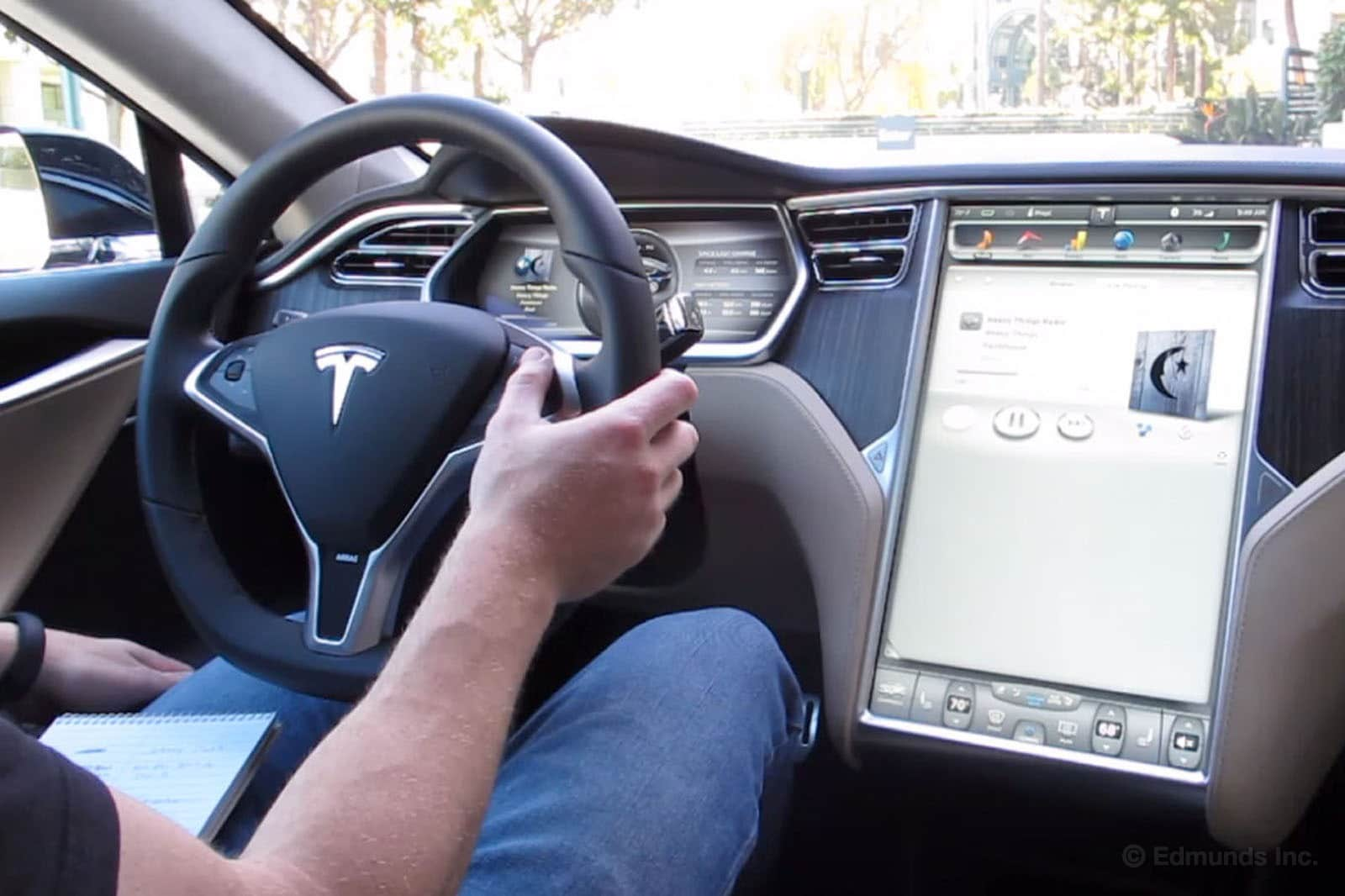
In a recent interview/product show-off with Bloomberg, Tesla CEO Elon Musk showed off a feature of the Model S even we as owners didn't know about: Press and hold the voice button, and the Tesla Model S will play any song you ask it for.
Of course, the Tesla doesn't have the world's largest hard drive, rather, the Model S is constantly connected to the Internet where it can take advantage of Stitcher Internet radio. It works great when Elon is demo'ing it for a smitten TV reporter. Does it work as well when we try?
Not quite.
In the video, you see some clever editing by Bloomberg. The way it appears in the piece by Bloomberg, is that the track plays instantly. Watch closer, and you'll notice that there's a cut scene immediately after every request. What happens in that cut scene? Well, a few seconds (about 5) of the system "thinking" followed by a screen prompt that requires you to pick the track/artist/playlist/genre you were looking for.
Despite the cuts by Bloomberg, the system is fast, finding songs off of the 'Net faster than the original version of Sync would search a connected iPod. And while the system works incredibly well, there were some hiccups.
When asked to play artist "Franz Nicolay" the system searched for "Frans Nicolai" and returned no results. When asked to play an obscure track off of one of his albums, the system worked as advertised. The same thing happened with the band "Phish." The Tesla searched for "Fish" and retuned no results related to the hippie band. Ask it to play a track by Phish, however, and the appropriate song popped right up.
Did it play every song? Almost. It certainly played every mainstream track we could think of. Only one band, Mischief Brew, a small, self-releasing folk/punk outfit out of Philly, stumped the system. Watch the video below to see how it works without cuts for drama/watchability. After an entire night of fiddling with the system, this was the only gap we found.
Even if not exactly as advertised, it works, and it's cool.
(Guest hands provided by new Associate Editor Travis Langness.)
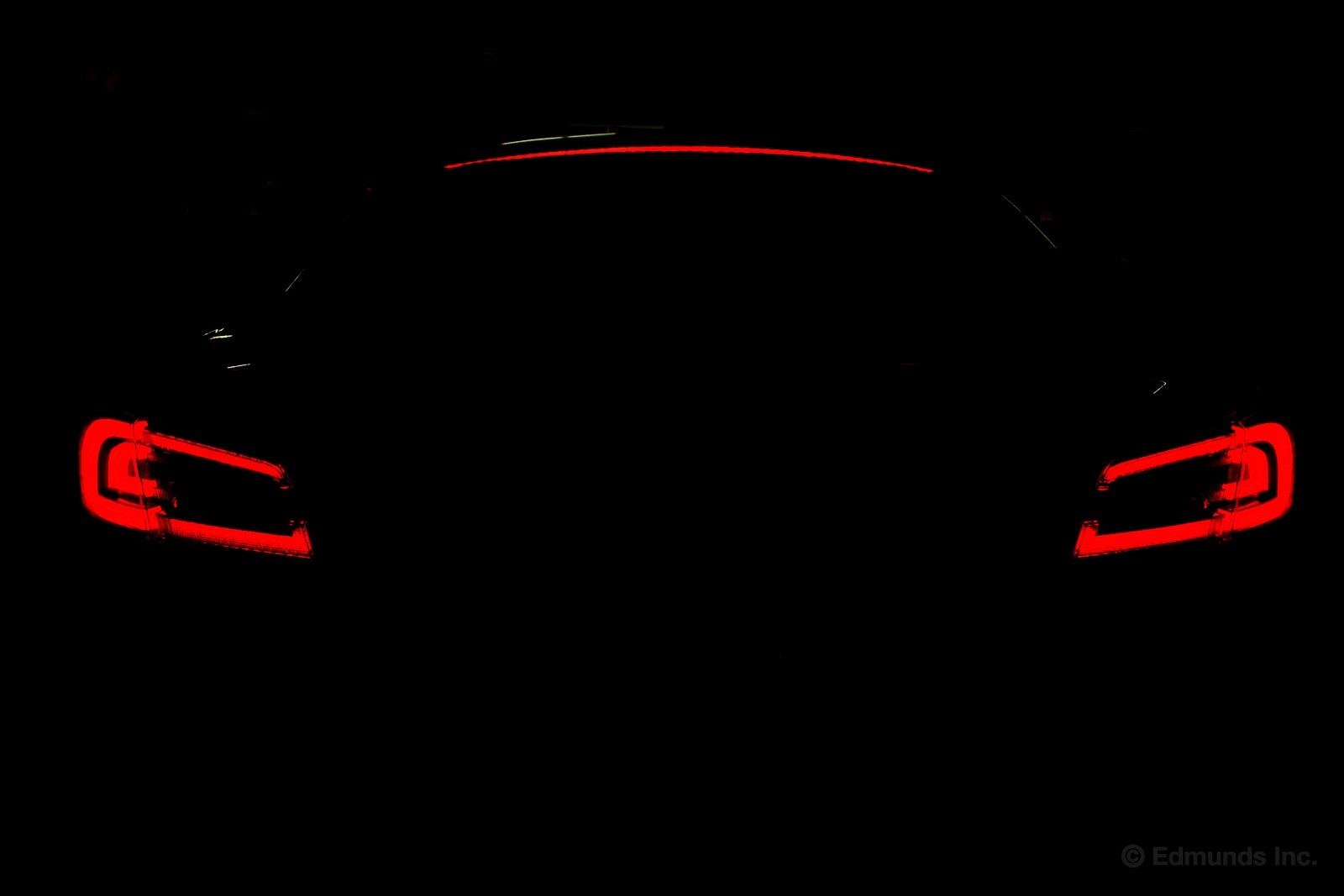
Our long-term Tesla Model S has a pretty aggressive regenerative braking system. When you hop off the accelerator pedal, the deceleration is as strong as easing into the brakes. It takes a little getting used to, but with smooth inputs, you won't be getting your passengers carsick. But the sharp deceleration had me a bit nervous about getting rear-ended.
Thankfully, the brake lights do indeed turn on when there's enough deceleration, whether or not you're foot is on the brake pedal. If you ease off the accelerator and slow down as a normal gasoline-powered car would, the brake lights stay off. So at least the driver behind you can't blame the Tesla when they're distracted by their phone, nav, dog or latte.
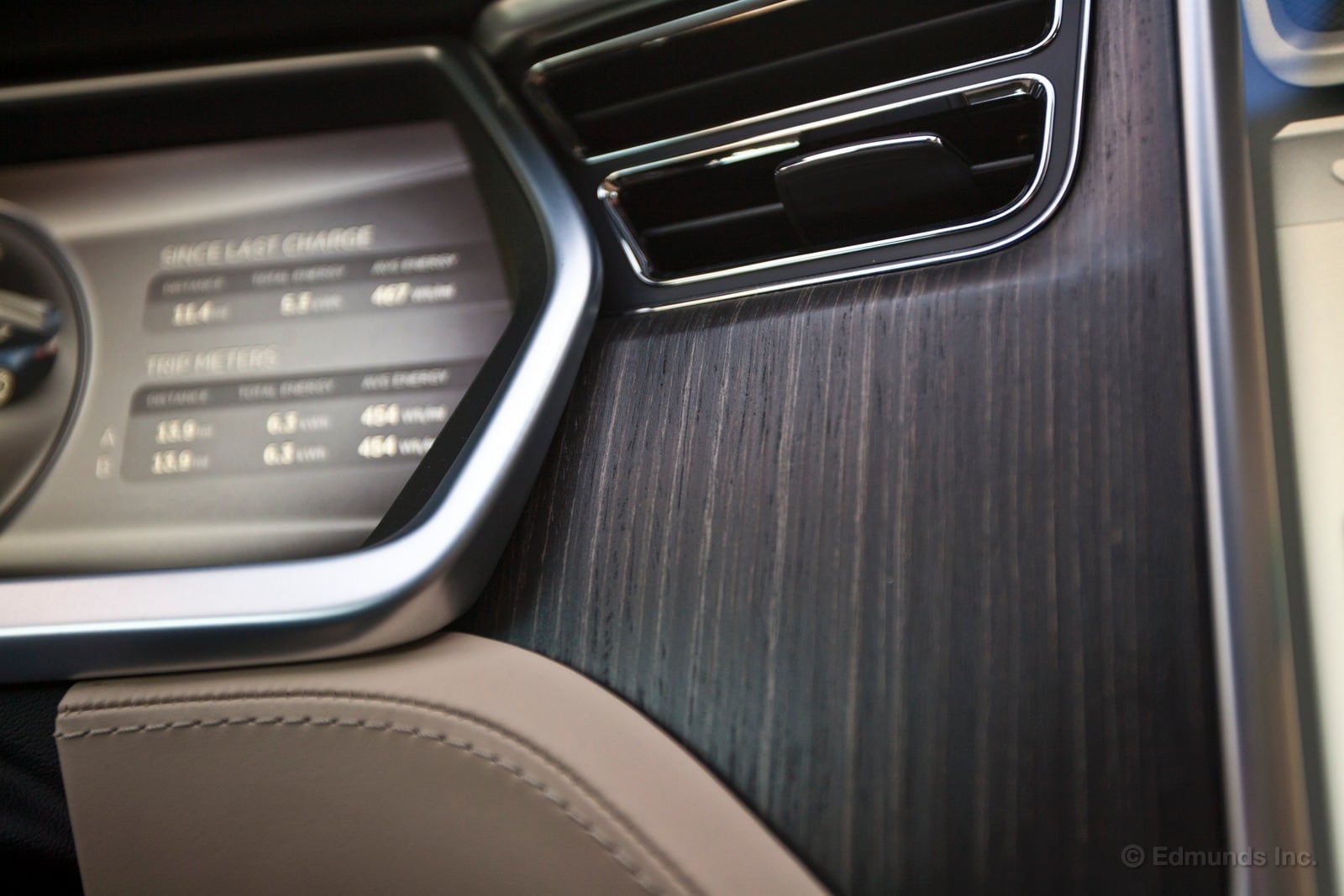
I really like the look of the wood trim in our long-term Tesla. It's got a rough texture with a matte finish, which cuts down on the amount of glare that might sear your retina. In a neat coincidence, I found out a little more about this unique wood trim.
I'm starting a new construction project. No, it's not an addition to the Star Trek-themed bar I built for Riswick. This time, it's a massive entertainment center for myself. I'm buying a truckload of teak from a local shop called House of Hardwood. I just happened to drive our Tesla Model S to consult with the guys in the shop and found out that they're car nuts like the rest of us.
It also turns out that, according to them, someone at Tesla would stop by the shop to check out all sorts of wood species for the Model S. I told one of the workers to check out the Model S interior and tossed him the key fob.
At first they thought it was a type of Wenge, but after closer inspection, they agreed it was a composite of different wood types. Tesla calls it Obeche, "a natural wood product from the African Triplochiton scleroxylon tree. The Obeche Wood décor uses Obeche Wood laminated together in a vertical linear pattern. Obeche Wood is commonly used in the construction of sauna interiors and on premium guitar fret-boards."
Obeche is more of a blonde wood, though, so I'm guessing they stained it to go darker. In any case, I think it looks great. You can order it with a gloss finish, but I'm all over the matte treatment. Personally, I like the Obeche as much as the bamboo trim you can get in an Aston Martin.
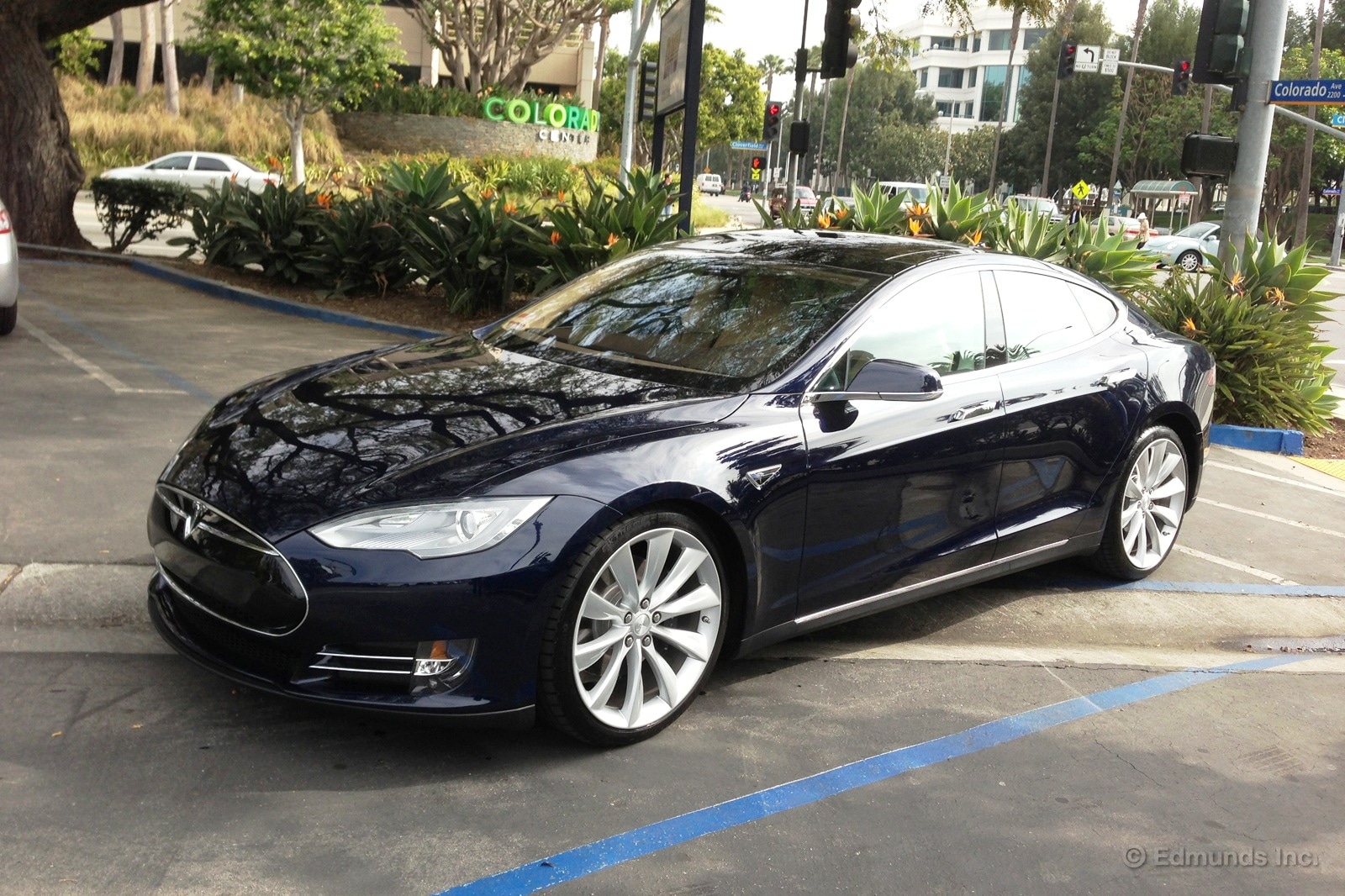
I spent the last weekend in the 2013 Tesla Model S and it has quickly become my favorite car in the fleet. It's fast, quiet, high tech, comfortable and looks great from every angle. Here are three things I noticed about the Tesla as I drove it.
Size
This is a big car. As someone who has a small hatchback as a daily driver, it took me some time to get used to the Tesla's size. The Model S is 195.9 inches long and 77.3 inches wide. This is roughly the size of a new BMW 7 Series. I made my right turns a bit wider because I didn't yet have a feel for the corners of the car. And I'd park on the far end of parking lots to make sure I found a large enough space. I have a small single-car garage at home and the Tesla just fit with inches to spare in the front and back. It was such a tight fit that I had to have my wife direct me as I inched the car into the garage.
Charging at Home
I didn't leave the office Friday with a full charge, which would be about 265 miles of range. I drove home, went to dinner with my wife and had about 183 miles of range remaining. I wanted to "top off" the car for the following day. I wasn't sure where my day would take me and I also wanted to get a feel for what it was like to charge the car.
The handy Tesla iPhone app told me that I was charging at a rate of three miles of range per hour on a standard 120-volt plug. This is about six times slower than if it were plugged in at our 240-volt charger at work.
I plugged in at 9:18 p.m. and didn't unplug until 2:25 p.m. the following day. The 17 hours of charging wasn't enough to fill the battery. It still needed another 30 minutes. That charge consumed 27.7 kilowatts of electricity, which was about $4.16 at my rate of electricity. This was more than enough charge to last me the weekend and I didn't charge the Tesla again until I returned to the office on Monday Morning.
This car was obviously designed with the 240-volt plug in mind. We've ordered Tesla's charging station and when installed, it will charge the Model S at a rate of 60 miles of range per hour.
Presence
The Tesla gets a lot of attention from people on the street. Some are drawn to its looks, while others are trying to figure out what it is. A woman driving a late-model Camry rolled her window down and said "Your car is beautiful! What is it?"
"Thanks. It's a Tesla Model S," I replied. She was still confused, and I said "It's an electric car from a new company," though I'm not sure if that helped any.
The following day, I had the car parked in the driveway and I noticed some teenagers walking around it and peeking inside.
Finally, on the way to work on Monday, I got a thumbs-up from a fellow Model S driver. I was driving behind a Chevrolet Volt and passed a Nissan Leaf earlier that morning. I didn't get a thumbs-up from either of them. Maybe they were silently approving.
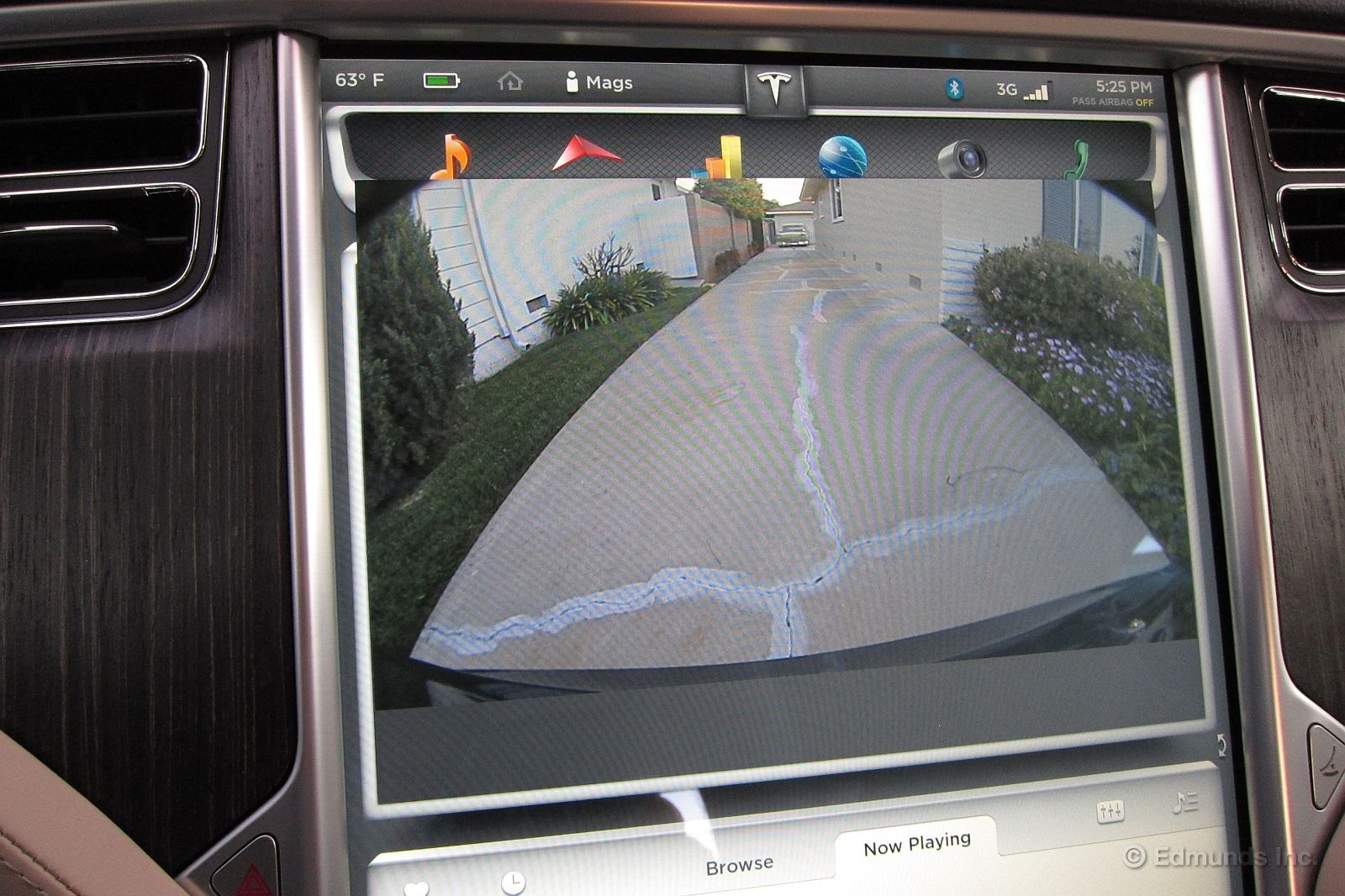
Really? I thought we were done with this. I'm looking at the new replacement touchscreen on our 2013 Tesla Model S and I can hardly believe my eyes.
Oh, it works. It hasn't burnt out (or whatever) again. But just look at the camera image.
Don't see it? Look closer. The image is misaligned, out of its designated window. And its new unauthorized position has it partially obscuring important virtual touchscreen buttons. Plus it looks gross.
Only the camera does this. If I turn it off and choose any other display screen it all works normally.
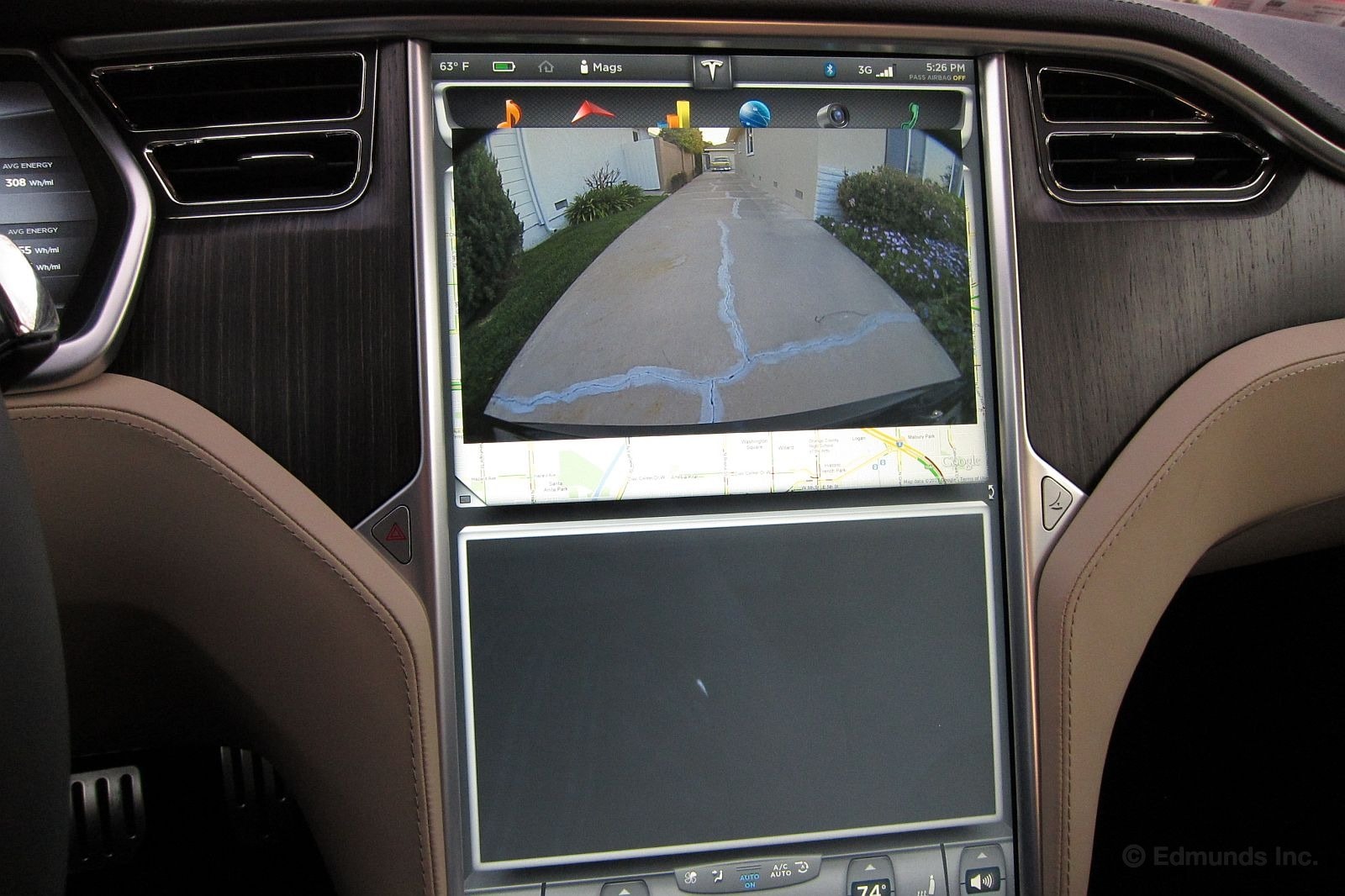
A tiny virtual tab between the two displays is supposed to allow me to swap the top and bottom screens. I press it, but the misaligned camera won't play. It stays put, leaving the lower frame it's supposed to swap down into conspicuously empty. Meanwhile, the former lower screen shuffles up (and under) the persistent misaligned camera image.
I know what you're saying, "Try the reset procedure. Do the Ctrl-Alt-Del thingy."
Sure, I know about that. Press the two thumbwheels on the steering wheel simultaneously and hold them until the screen reboots, and when that's done do the same with the two upper steering spoke buttons to reboot the instrument panel screen.
Two things: First, I think the Tesla service center should see this and log the issue in their system, especially in light of this car's previous touchscreen history. Maybe it will help them find the root cause, or something. Who knows? Maybe the root cause behind the loss of screen number one is behind this, too. Or maybe it's unrelated. Both parties should know. We lose that opportunity if I reboot it myself and clear the symptoms in my driveway.
Second, I bristle at the idea of rebooting a car as a routine repair method. It irks me no end that we put up with (and consider normal) the utter and universal unreliability of PCs and software because we're so starstruck with the technology, and I do not want to open that door even a crack in the automotive world. If it seizes, I go to the dealer because I consider it a problem, reboot procedure or no.
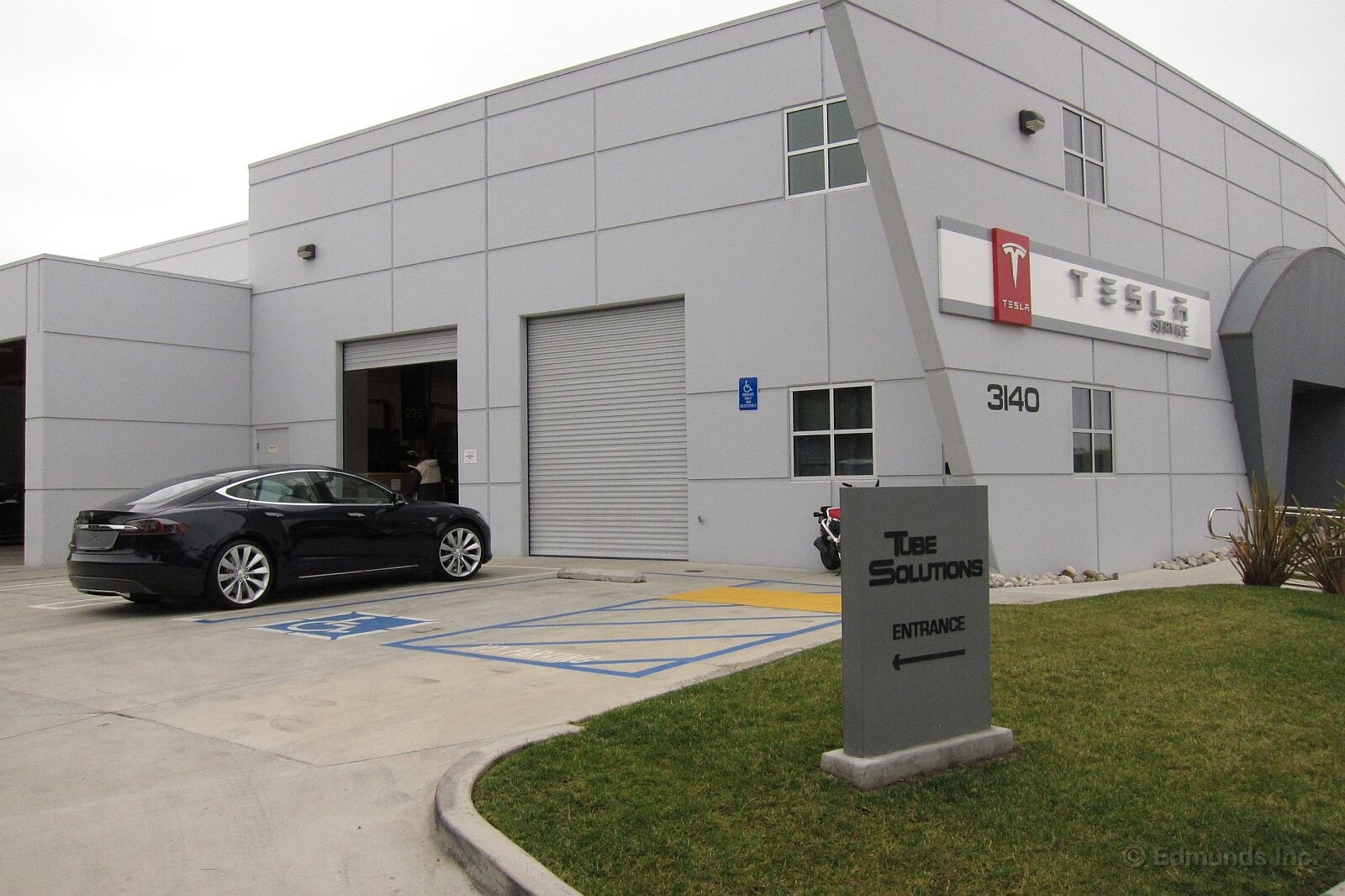
I pull into the driveway of the Tesla service center in Costa Mesa fifteen minutes after they opened. They're swamped, and the lifts behind the glass wall in the reception area are well and truly filled with Model S sedans. But exactly zero customers are in the waiting room. Curiously, my presence seems like a surprise.
"Do you have an appointment?" asks the representative.
"No," I reply. "The sign says Monday to Friday 9:00 to 5:00, Saturday and Sunday by appointment only. It's Tuesday." And it's only 9:15, I add to myself in my head.
It turns out this service center also does pre-delivery inspections on new cars headed to waiting buyers. Over three dozen new Tesla Model S sedans are parked in various places around the lot waiting their turn. They are bulging at the seams. Business looks good.
The appointment question this early on a weekday makes we wonder if they're really set up to take walk-ins. Is this an Apple store or an automobile service department?
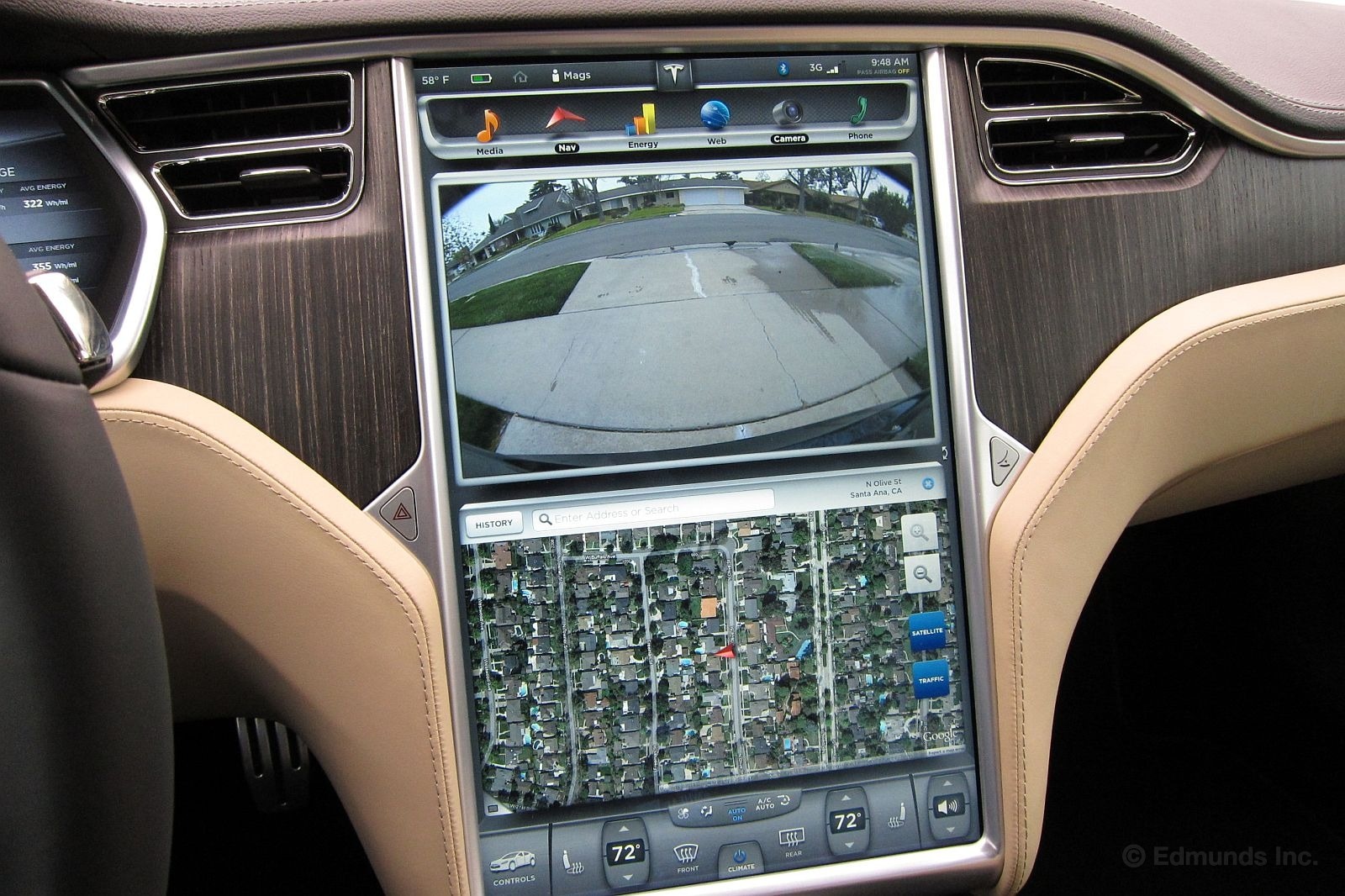
But there's more to it than that. They're struggling with an Internet outage and it has them off-balance. From where I stand the irony hangs heavy in the air.
What this means is they can't scan our car and analyze the problem. From this I can only surmise that Tesla service centers do not have the same kind of self-contained diagnostic equipment that traditional dealers have. Apparently the scans are sent off to the cloud where they are intercepted and read by mission control, or something.
Since no Internet equals no diagnostics, the representative goes ahead and does the reboot thing in the parking lot while I sit in the passenger seat. It takes all of a minute. It's the same procedure described above. I could have done it at home.
Back inside, she apologizes profusely and offers me some coffee as she writes the car's VIN and odometer reading on a paper ledger. She'll call another location (mission control, presumably) and have them go through the historical logs remotely.
But the reboot worked, and I was out of there no more than ten minutes after I arrived. The images are all back in their windows, the upper touchscreen buttons are fully visible with the camera running and the screens shuffle around as they were meant to.
I still don't know what led to this, and I have no idea if this bug will ever surface again. I can always try the reboot trick, but I consider that a band-aid, not a fix. The root cause in this case, if there is one, has not yet been analyzed, identified or addressed.
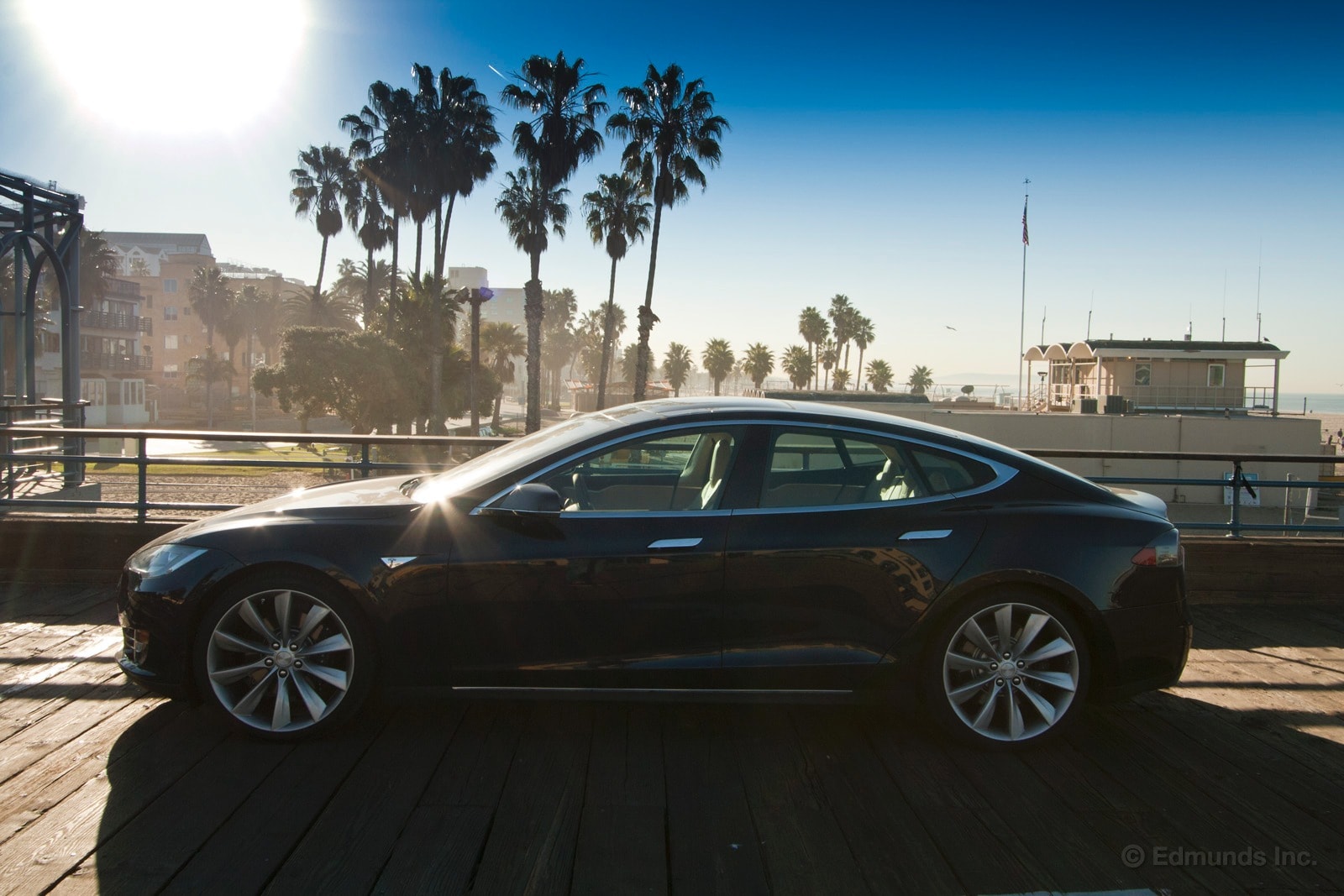
As I drive the Tesla Model S, I notice that people stop short, stick next to me in traffic and gaze for long periods of time. Most people probably have no idea what it is, or even that it's electric, and that's a good thing. It's not just a good looking EV. The Model S has got great body lines, a sleek sloping rear window, and really cool wheels. For cars like this to succeed, or for technology to advance in cars, form needs to meet function somewhere in the middle.
Sometimes, as automotive journalists or car enthusiasts, we make concessions (excuses really) for the aesthetics on fuel-efficient or electric cars. We say, "That weird looking headlight is extremely aerodynamic," or "that mirror is funny-looking because it was designed in a wind tunnel." But with the Tesla Model S, no compromises seem to have been made in the design studio. This thing is beautiful.

Besides our ongoing troubles with the touchscreen, our Tesla Model S still has a glow about it. Literally.
The car's cool factor even carries over into the mundane act of recharging. First of all, the charge port is hidden behind the side part of the taillight. You'd never even know it was there, and you'd never guess it was big enough to hide the port. When you plug the charger in, the port begins to pulse with a green glow.
Yes, other EVs show that they're charging with other indicator lights, but this is just another example of Tesla going that little bit further to make the whole experience seem more special.
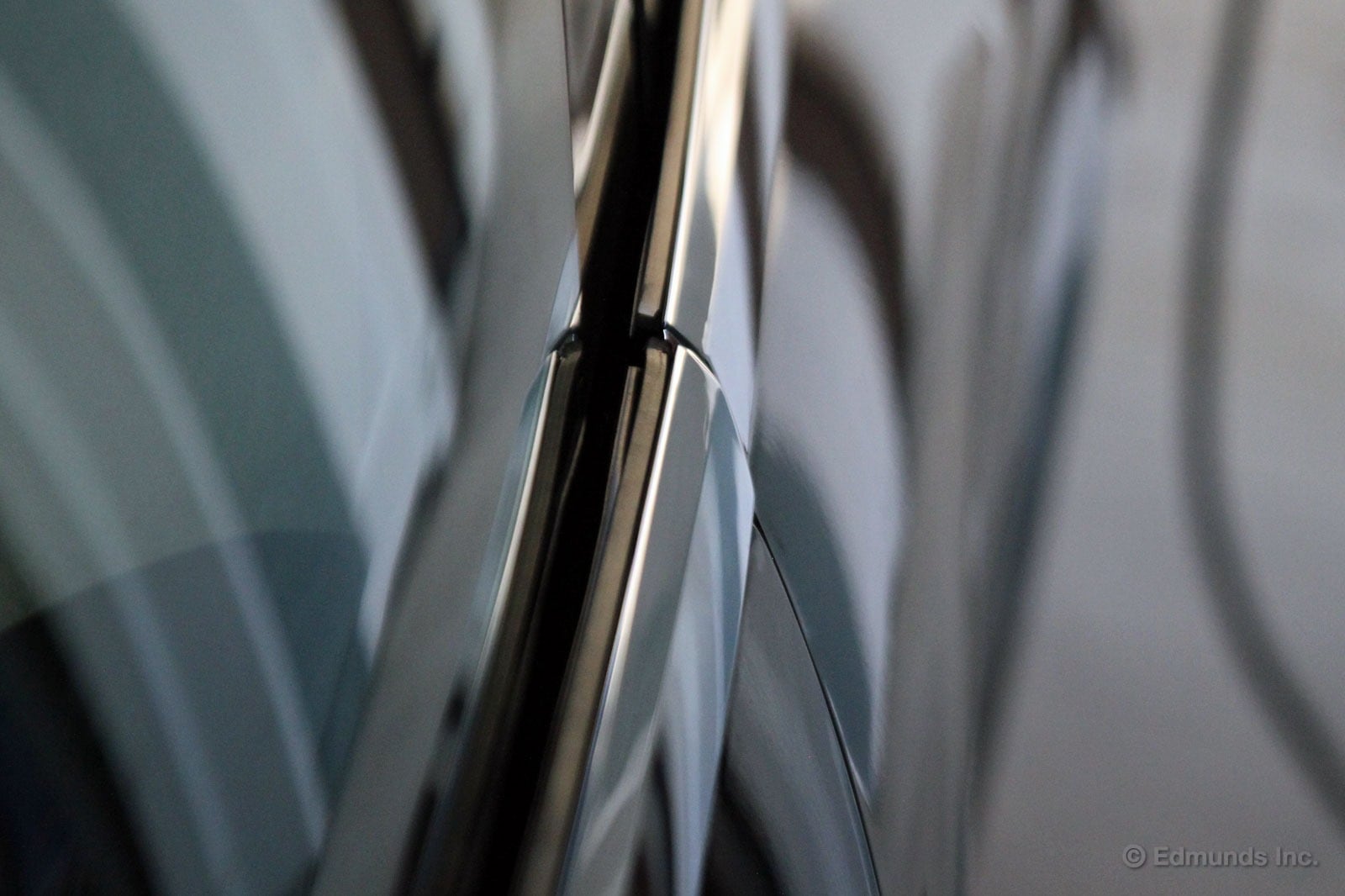
As polished as our new Tesla Model S looks on the road, closer inspection reveals that it has some flaws in the craftsmanship. I noticed this the first time I adjusted the driver's side mirror.
As it panned across the side of the car, it looked like the driver's door was cracked open. I opened and shut it again to secure it tight and it didn't help. After a closer look, I could see that the door trim was not secured firmly so the edge was starting to fray at the end.
In another instance, I was walking up to the car and it looked like the rear hatch wasn't closed all the way. I slammed it shut, but it still didn't fit quite right. Not sure whether this is the way it's supposed to fit or not, but it looks misaligned to me. I checked a few more body panels and there were other signs of less than perfect fit, too.
There are two ways to look at this. On one hand, this is an all-new car from an all-new plant, so minor imperfections like this are hardly surprising. On the other hand, this is a $100,000 luxury car. It should be flawless. If I saw an Audi A8 or a Mercedes-Benz S-Class with these kinds of fit and finish problems, I would never drive it off the lot.
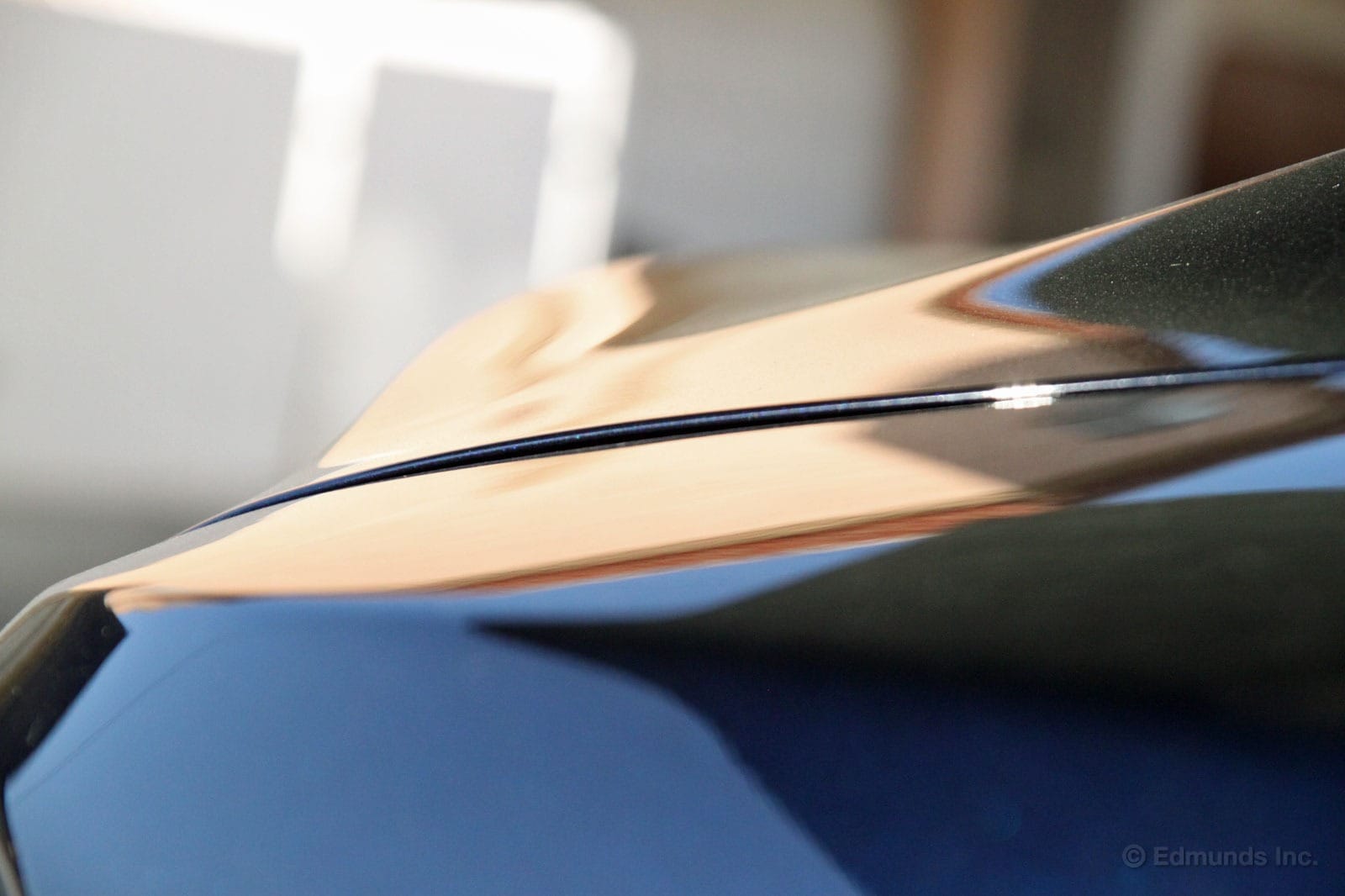

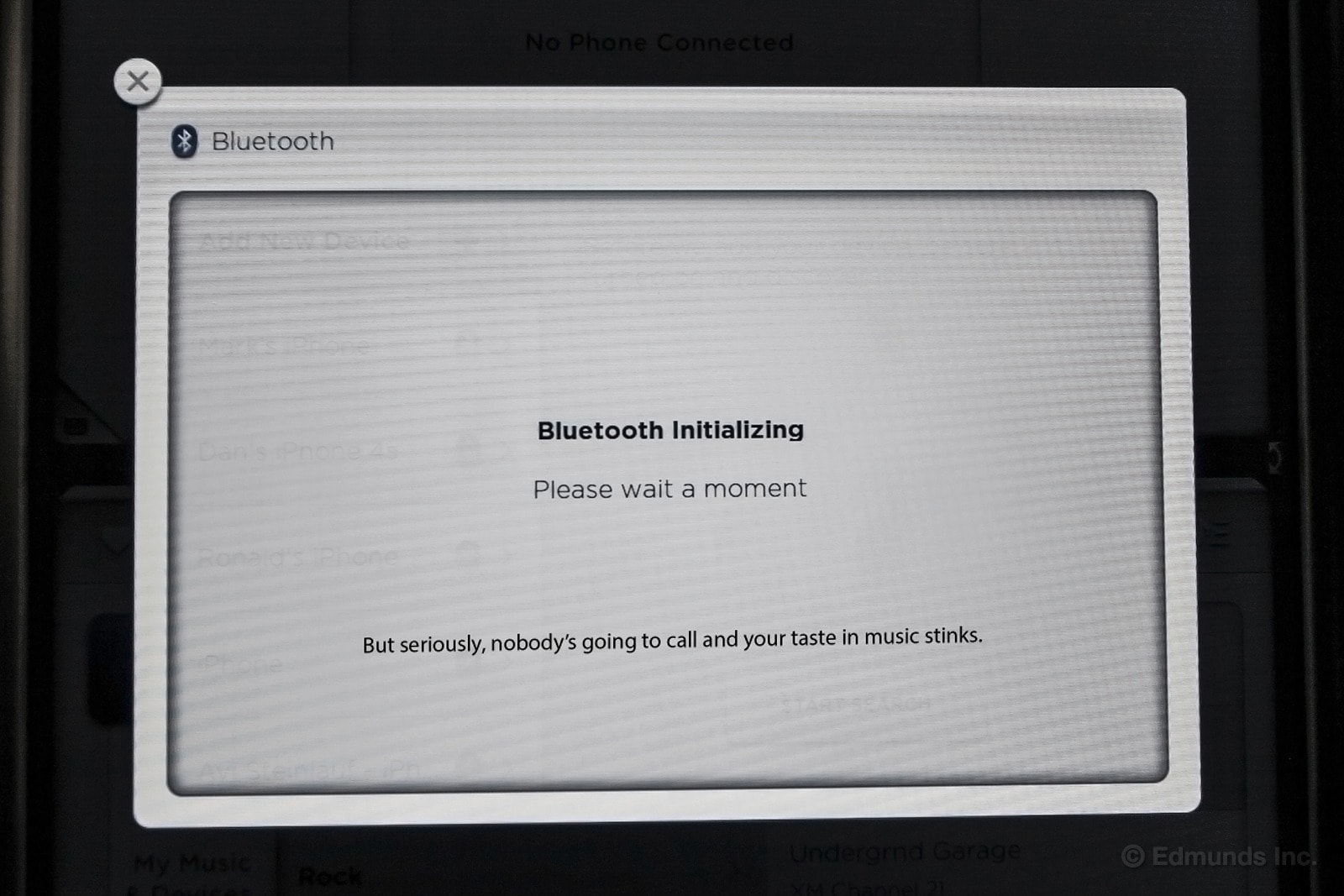
This weekend, our long-term Tesla Model S gave me the equivalent of the "blue screen of death" (Bluetooth screen of death?).
All day Friday and Saturday it was working as it should. Saturday night, it decided to stop. Sure, it's not the end of the world, since I rarely get or take actual phone calls and satellite radio is a decent backup to streaming audio. But really, it's times like these that I wish there were a Control-Alt-Delete for the main touchscreen.
Then there was that voice in my head that said, "hey dummy, maybe there is!"
One Google search later and I found the reset procedure for the center screen. All I had to do was hold down the scroll wheel buttons on the steering wheel for a few seconds and the system reboots. After it restarted, the Bluetooth was once again able to initialize. Score!
For some reason, I still couldn't connect to my phone, so I deleted the pairing and went through the process again. It worked like a charm. All is well once again in Tesla land.
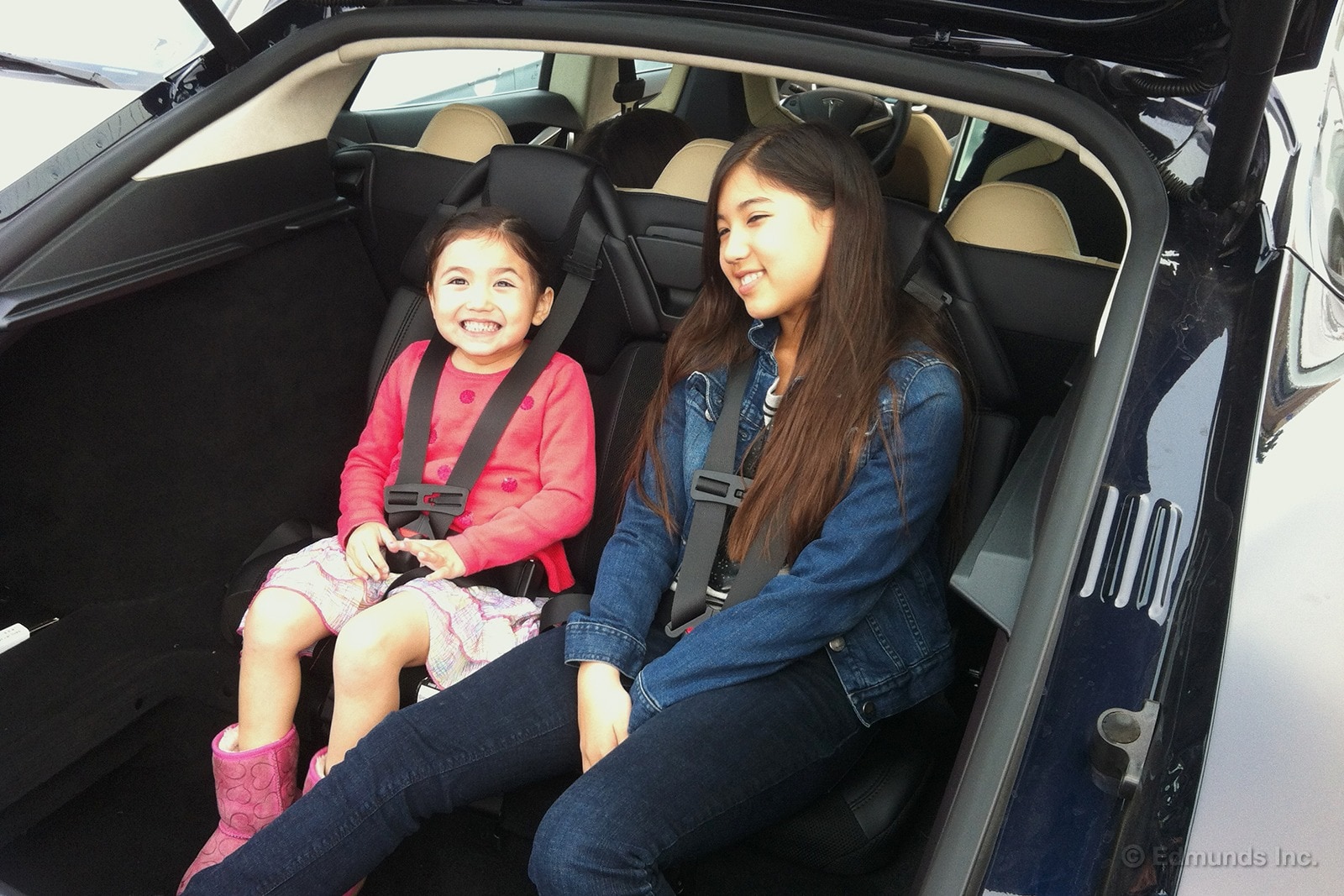
It's pretty obvious the Model S jump seats aren't intended for adults. I tried them once while the car was parked and I have to admit, I've been trapped in trunks that were roomier (ahhh, Vegas). Because I don't have kids, I figured I'd have to leave jump seat evaluation to one of our editors that do. But my sister's desperation to have someone watch her three children while she was off skiing in Utah left her no other choice but to have the infamous uncle "Marky" in charge.
So, I took this unusual opportunity to stuff my nieces in the trunk. I have to admit this would be my preferred seat if I were still a kid. Anything different has a great novelty to it. The taller of the two just barely fit, and I was nervous about her head being so close to the glass, but she seemed to be fine.
Driving around, though, I was pretty nervous about getting rear-ended. Fortunately, tailgaters stayed away. The seats themselves are pretty stout, certainly more substantial than the third-row seats in our old Mitsubishi Outlander. Those things felt as strong as a 99-Cent Store beach chair. The child-seat restraints were well placed and had enough range to fit either kid perfectly.
I took the whole gaggle out to dinner that night. Since I'm not well-versed in child care (I can barely maintain myself), I didn't know that a full can of a soft drink would turn the little one into a close approximation of the Great Cornholio. Hilarity ensued as she was rattling off like she was speaking in tongues.
In the end, I did discover one drawback to putting kids in the jump seats. The rear window was plastered with fingerprints. I suppose if a younger uncle Marky was back there, face prints and perhaps "other" prints would be smeared all over the glass, too.
I'd guess these seats were intended for occasional and novelty use, not on an everyday basis. In any case, I think they're pretty cool, though they'd be even better if they were easily removable.
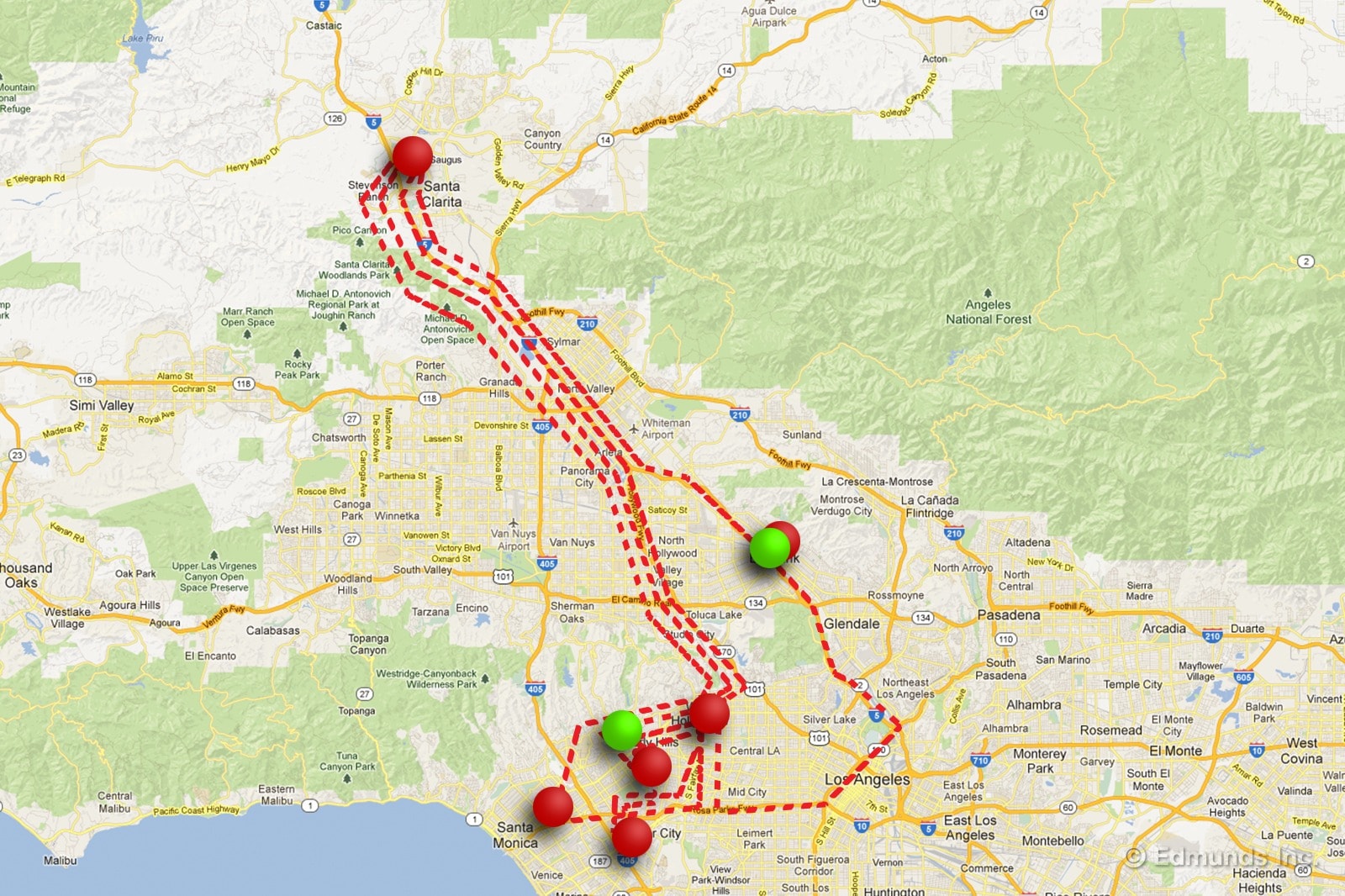
I knew that when I signed out our Tesla Model S, I had a lot of weekend traveling in front of me. I left the office with 240 miles showing on the projected range, but I was confident the Tesla wouldn't hinder my plans.
I headed about 9 miles east to Riswick's house for a quick little hangout. It also gave traffic a chance (albeit slim) to die down for a later destination. After shooting the breeze there, I headed home to feed the pet and pack for the night. I pointed the car north to Valencia to spend the night with the girlfriend. Without traffic, it's a 45-minute trek. But it was Friday night, just before St. Patrick's Day, and a sobriety checkpoint brought traffic flow through Hollywood to a crawl.
I finally got on the highway and up to speed, then more traffic. Ugh. I had traveled about 20 miles, but the range was showing that I've used up 30 miles worth of charge and there was still a big hill to climb. This was not how I thought it'd go.
The next afternoon I drove back home and the range was estimating 140 miles left, with actual miles coming to about 95. A couple of smaller trips to a taco stand on Sunset and the Petersen Automotive Museum kept chipping away at the range.
I wouldn't call it range anxiety, maybe range awareness by the time Sunday morning rolled around. The L.A. Marathon kept me from making my direct route back up to Valencia, so I had to drive through Downtown to head north. Luckily, Ikea was on my weekend to-do list and they just so happened to have a charging station nearby.
With 80 miles of range showing, I parked and plugged in as we headed into Ikea in Burbank, or as I like to call it, "the place where couples go to fight." We had no such disagreements in the store so we resorted to fabricating an argument about curtain rods to keep our sanity in the rat maze. We were out of there in only 30 minutes, which wasn't nearly enough time to get a decent charge. It was close enough to lunchtime, so I proposed we grab a bite in the dreaded mall food court.
As we ate, I texted Magrath to get an update on the charging. He has the Tesla app and I don't. He said I was at 105 miles of range, then asked how Burbank was. It's creepy having someone with the ability to shadow me, so I shut the remote access feature off as soon as I got back in the car.
A quick stop in Valencia and then back to L.A. The range was down to the 50s so I had the girlfriend look up charging stations in my neighborhood. There was one just a mile away in Beverly Hills, so she hopped in her car and followed me over. Another plug-in and we left in her car for a few hours. Honestly, this last charge was probably unnecessary, but I wanted more than 25 miles of a buffer zone to get back to work Monday morning.
We picked up the Tesla just before dinner, then swung by my sister's place a few miles south and dragged her kids to dinner in West L.A. Back up to my place to pick up out iPads and then back to my sister's to keep the kids from burning the house down for at least a few hours. When we finally got back to CasaHashi, I had 50 miles left on the range. Good enough for the 7-mile drive to Santa Monica in the morning.
Now that I've thoroughly bored you with what a Takahashi weekend is like, there's a moral to the story. The Tesla was able to handle the many destinations with ease. In L.A., there are plenty of charging stations to facilitate buzzing all over the county, and I'm sure more stations are on the way.
If I owned this car, and I didn't have to log every time I charged-up, I'd probably charge at every available station (movie theatres, supermarkets, Home Depot, etc.) whether or not I really needed to. A few miles added here or there give me that added security and, hey, you get rockstar parking in front! Then there's the cool factor. Once you get out of L.A.'s westside, Teslas are a rarity. I spotted a lot of people stopping to check out the car as it charged and there was no shortage of looks while on the road.
Yup. I like it. The Tesla Model S represents the first electric car that I consider aspirational. At some point, I'll take it into the canyons to see if it's inspirational, too.
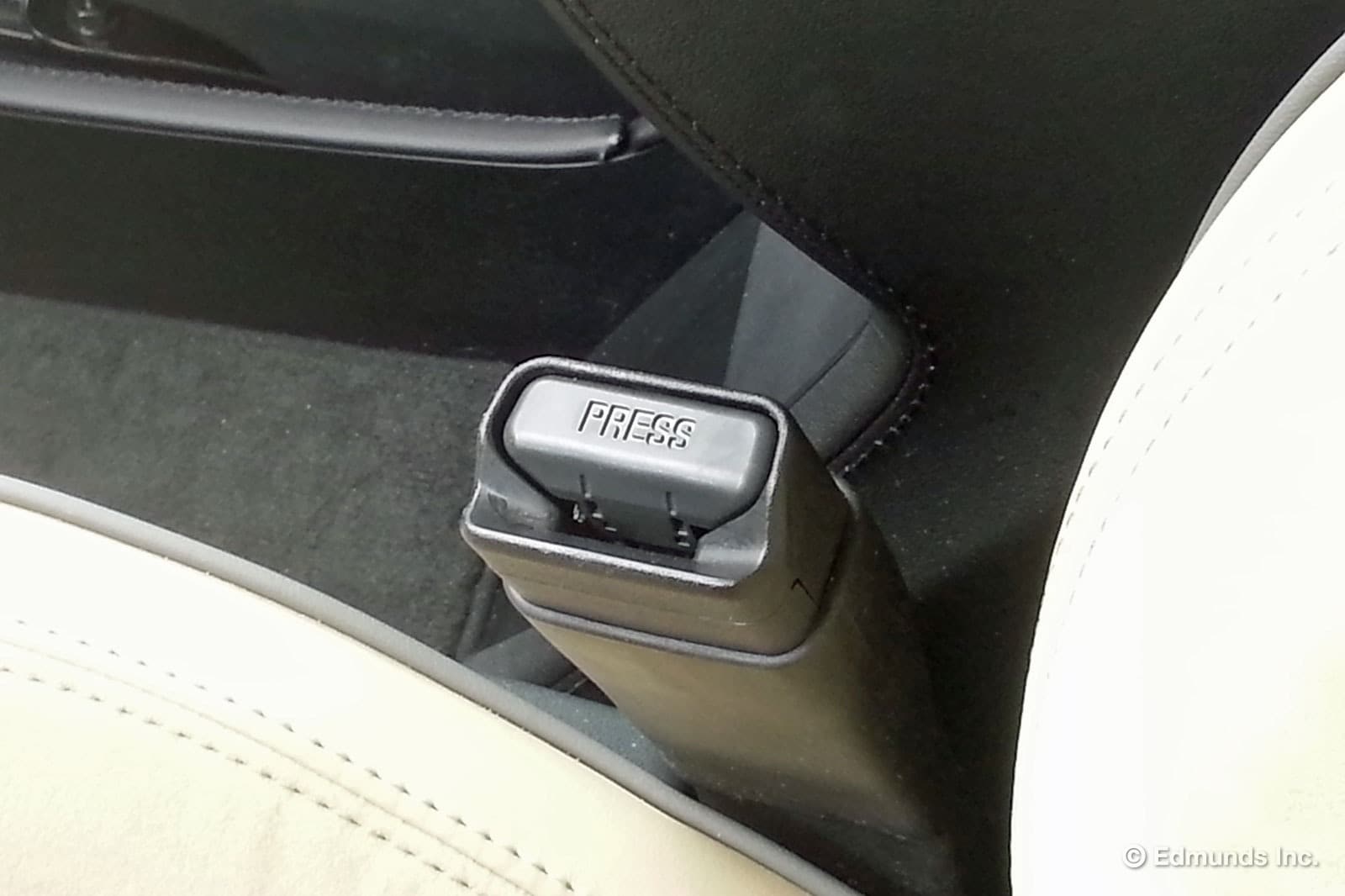
As you can see, the seat belt buckle in our Tesla Model S is a little bit different. Having a black release button might not seem like much, but it's a small sign that Tesla went the extra mile to make the Model S unique.
I've noticed over the years that no matter how expensive the car is, the seatbelts are always the same. Whether it's a $15K Kia or a $150K Mercedes, they always have black nylon seatbelts with an ugly, plastic connector at the end.
Now, much of this is dictated by safety regulations, so there's probably not much you can do about the seatbelt materials itself, but surely some smart engineers and designers can come up with a more aesthetically pleasing latch design. In Tesla's case, the designers didn't go quite that far, but at least they finally got rid of the big ugly red release button. Not even Bentley does that.
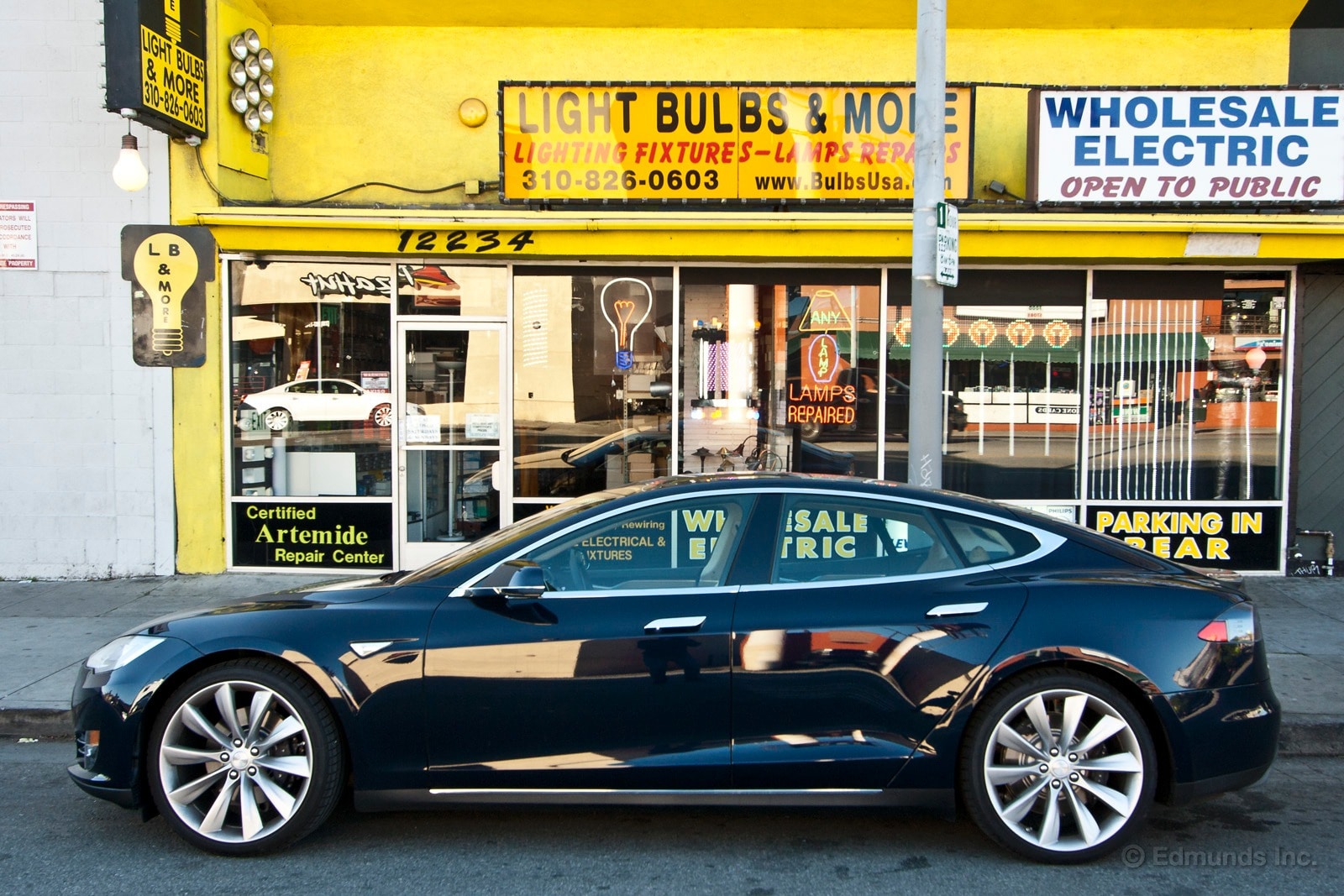
Our 2013 Tesla Model S is equipped with the Performance trim package which features active air suspension. The system uses pneumatic springs to lower the vehicle automatically as it accelerates. This improves aerodynamics and increases range (even if just slightly) but you also have the option to change it manually, which is a great addition to the car's versatility.
I've always enjoyed lowered cars, especially those with sleek and swooping lines like the Tesla Model S. Cars look infinitely better when there is no wheel-gap between the tire and the fender, but this can cause some serious usability issues.
Pictured, the Model S is in 'Standard' suspension mode which is perfect for driving around town. The car sits high enough that you can open the doors without scraping them as you get out, as well as negotiate steep driveways that would beach some exotics. Most important, getting in and out of the Whole Foods parking lot in this thing is a breeze.
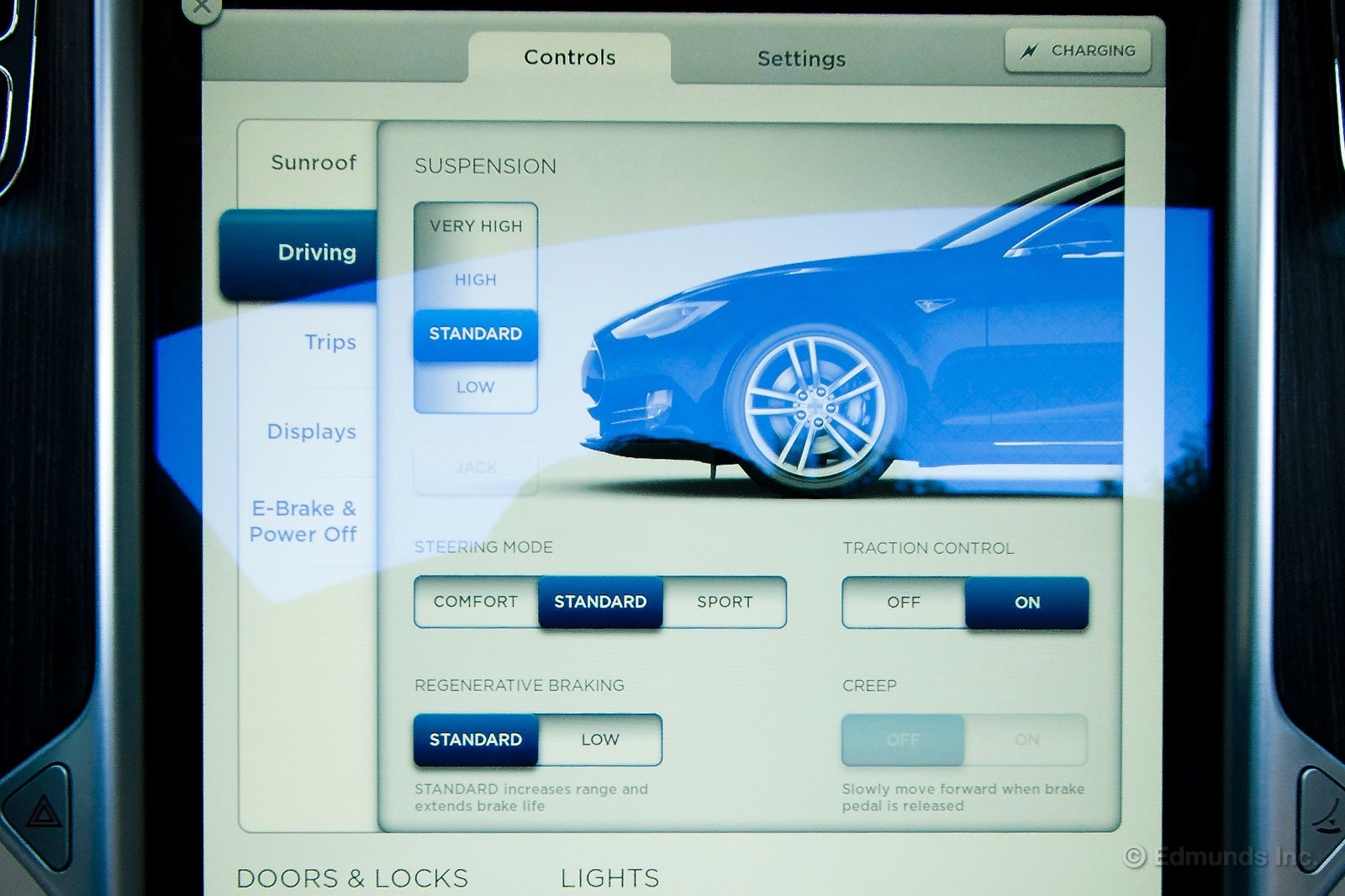
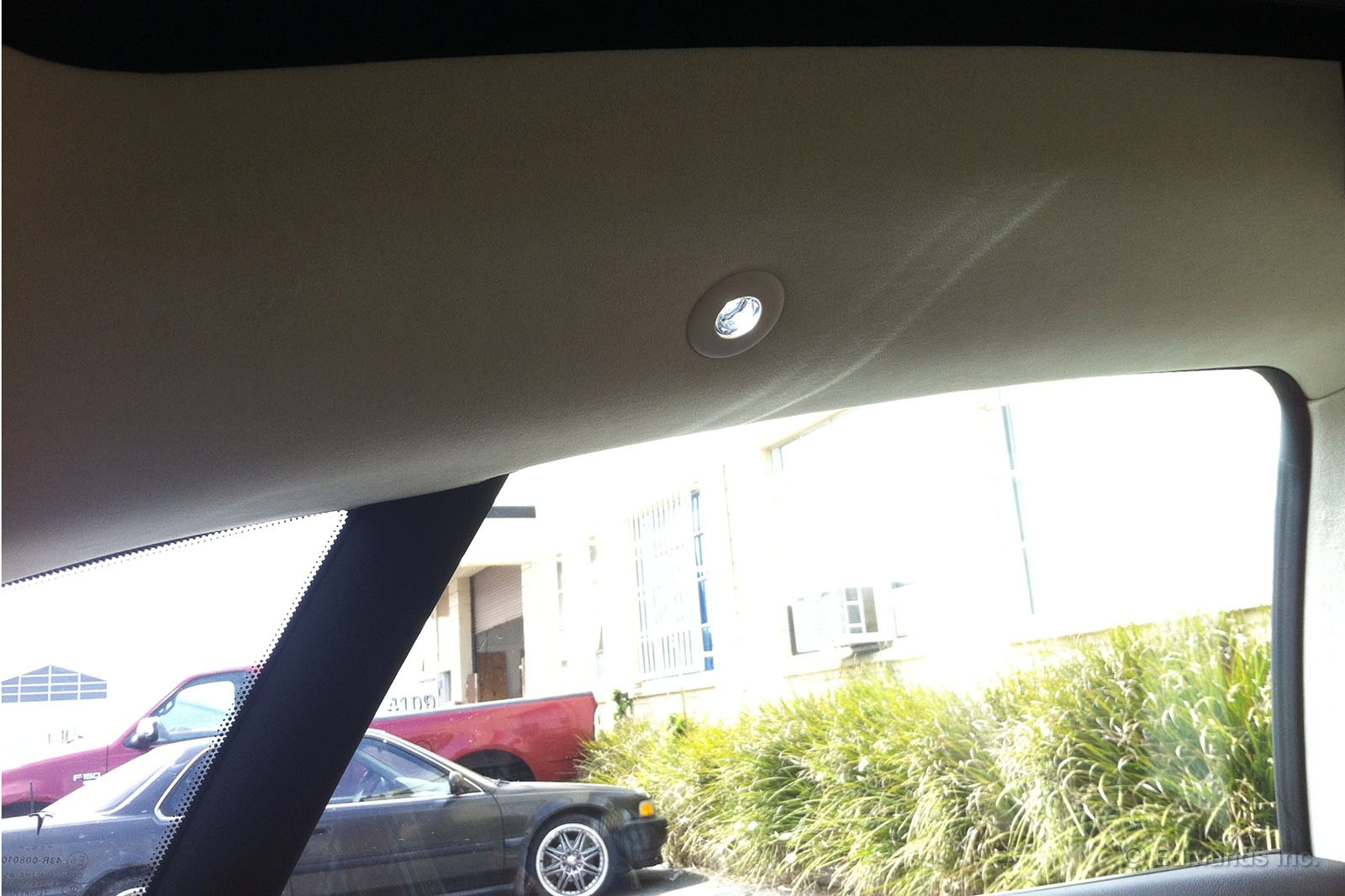
While I agree with my many colleagues that the Tesla Model S is a thoroughly magnificent car, there are some little functionality issues that may start to bug you after its emotional allure begins to fade.
Are they reasons to not buy it? Of course not, but it shows that its means of thrust and giant touchscreen aren't the only things that separate the Tesla from established luxury brands.
For instance, let's say you've picked up the dry cleaning or need to hang up your jacket after a day at the office. Sadly, there are no coat hooks in the back seat. There are also no grab handles in lieu of a coat hook, nor for your rear-seat passengers to hold onto as you vigorously explore the Tesla's impressive corner-taking talents.
It's a little thing to be sure, but it's something you'd have in a Mercedes-Benz S-Class.
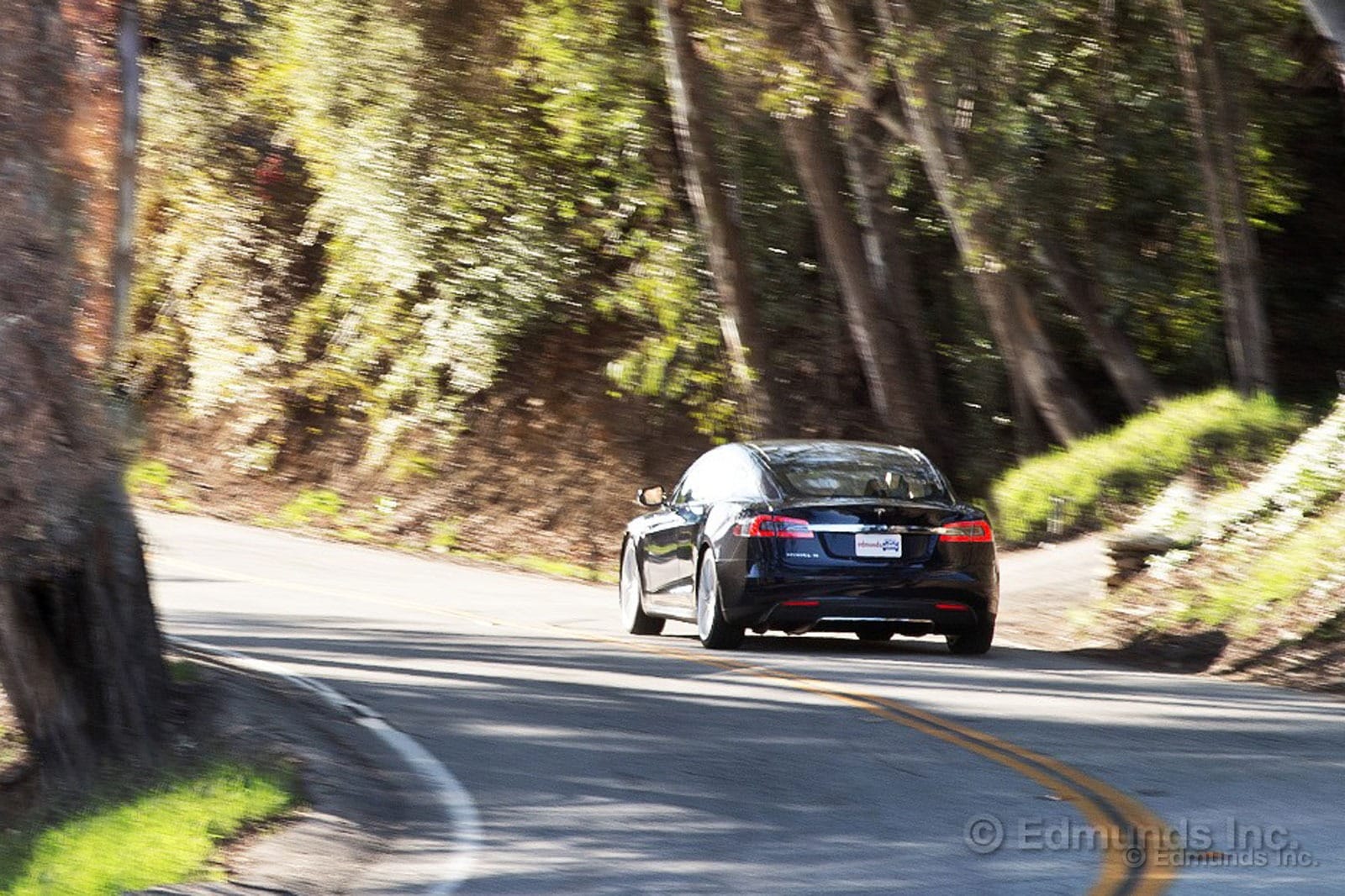
On Friday afternoon I jumped in our long-term 2013 Tesla Model S and headed home for the weekend. The car was fully charged and its instrument cluster told me it was packing 251 miles of range.
I never plugged it in over the weekend, and on Monday morning the Tesla and I arrived back at Edmunds HQ after 87.6 miles of driving. At this point the car's instrument cluster was telling me it was packing only 65 miles of range, so my 88 miles of driving used 186 miles worth of battery range.
Hmmmmm. Admittedly I'm no hypermiler and all of the 88 miles were in the city, but at that rate the car's true range is in the neighborhood of 120 miles.
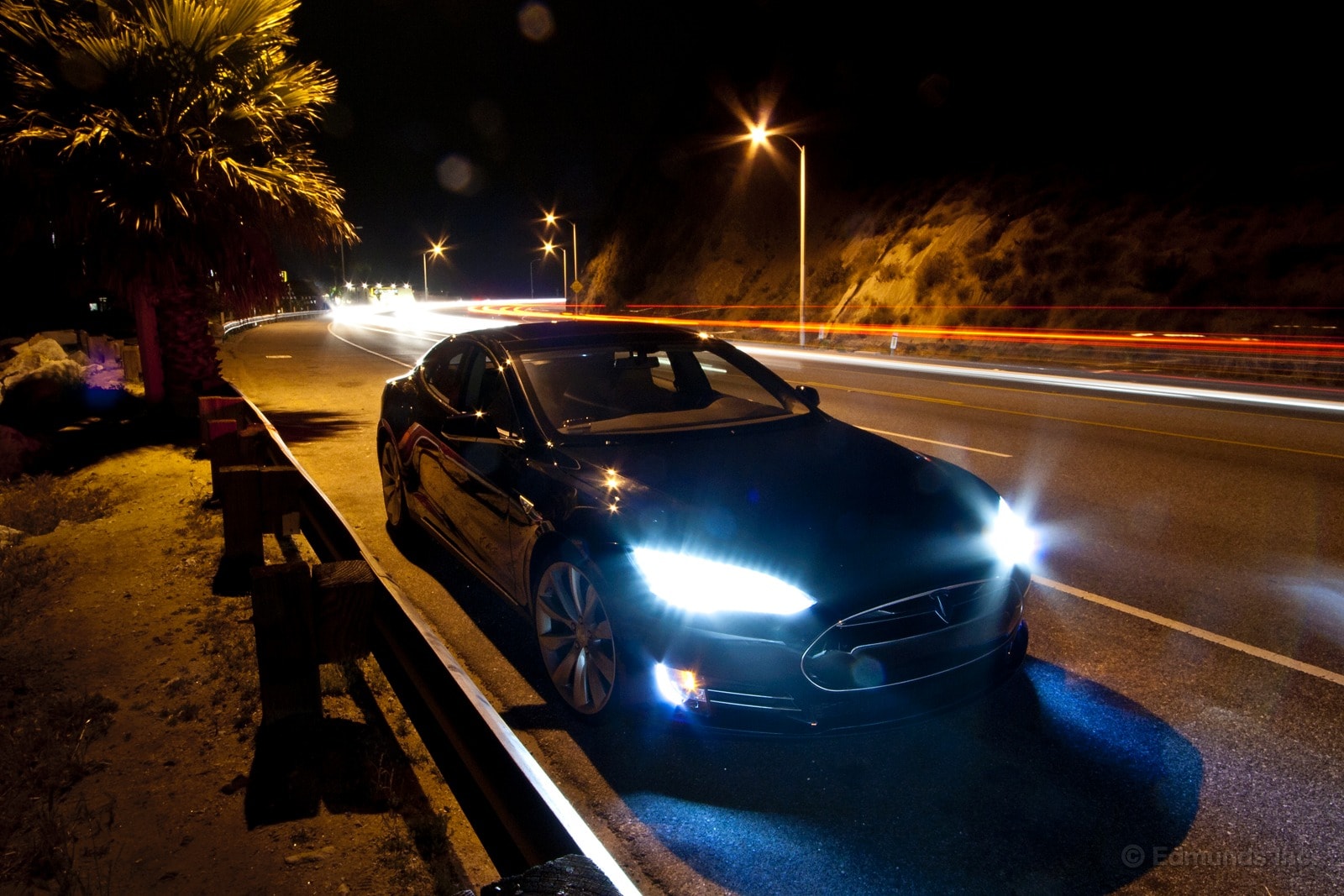
It's a typical Tuesday night and I have no pants. Well, I have pants, but they're piled up in the laundry basket and I'm running low on work-appropriate clothes.
Weeknight laundry gives me a chance to relax on the couch and catch up on my DVR, but tonight I'm not even remotely interested in what the 500 channels on my TV have to offer. I have our long-term 2013 Tesla Model S and I've decided I'm going to squeeze in a drive before my pants dry.
9:52 PM: The clean/wet laundry is ready to be transferred and I set my timer to match all three dryers. I've got 53 minutes and my desired route is 32.2 miles. Everything respectable I own is being dried, and I get the distinct feeling I'm the least refined person to ever drive a Tesla. I start the dryers, grab my camera bag and run for the car.
9:57 PM: Finally, I get to drive the Model S on the freeway and it feels even better here than on city roads. It's one of the quietest cars I've ever driven. I imagine this is what the backseat of a Rolls-Royce sounds like and that idea bores me. I roll the windows down, put back the sunroof, shout a voice command and the Tesla blasts "Sleep Now in the Fire" through its incredible 580-watt, 12-speaker sound system. These go up to eleven.
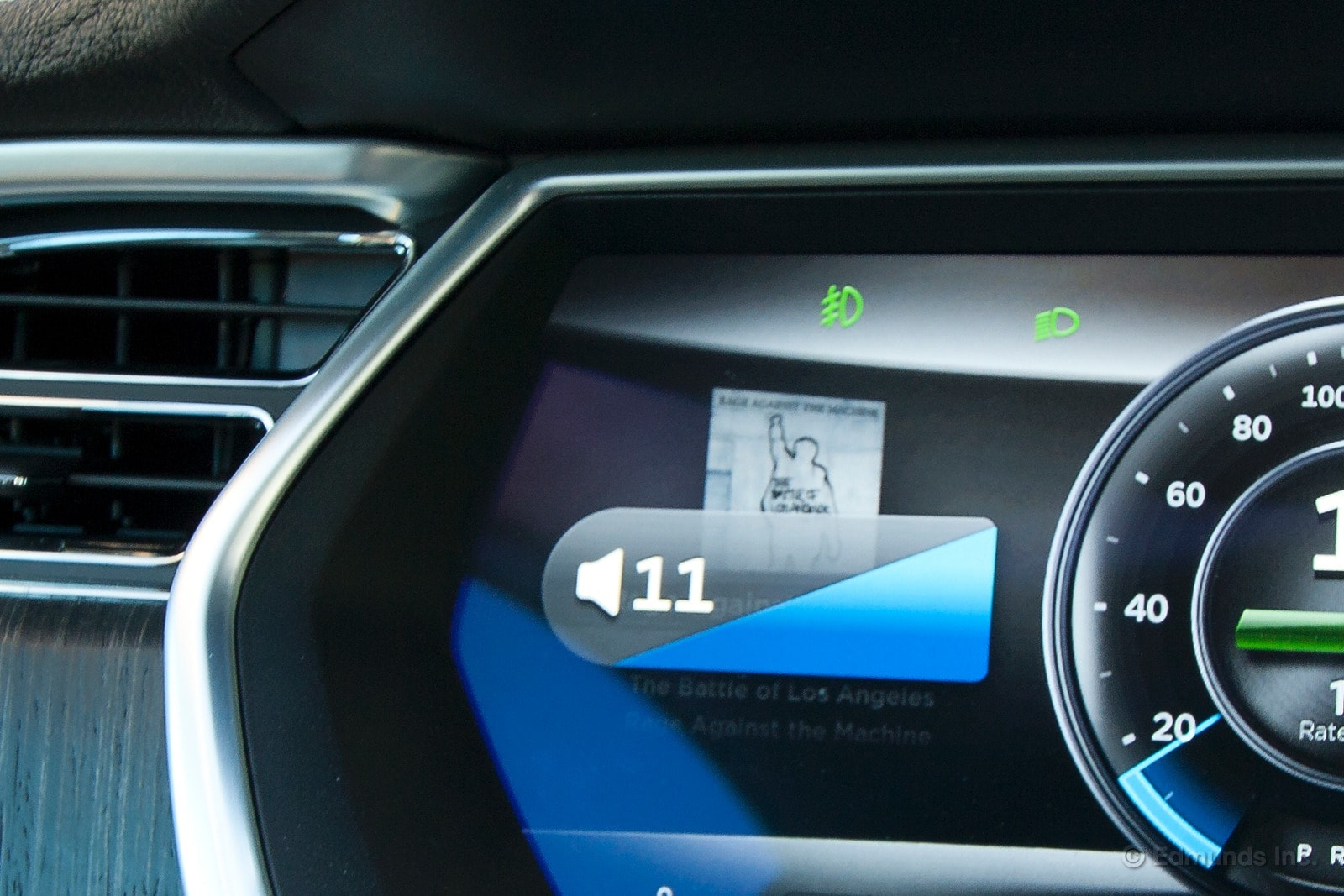
9:59 PM: The highway is quiet and I don't have far to go. I pull off the main road to enjoy some tighter turns and do a completely non-scientific test of the "Rated Range" on the Tesla. A curvy, uphill, 4.3-mile-long stretch of road is next.
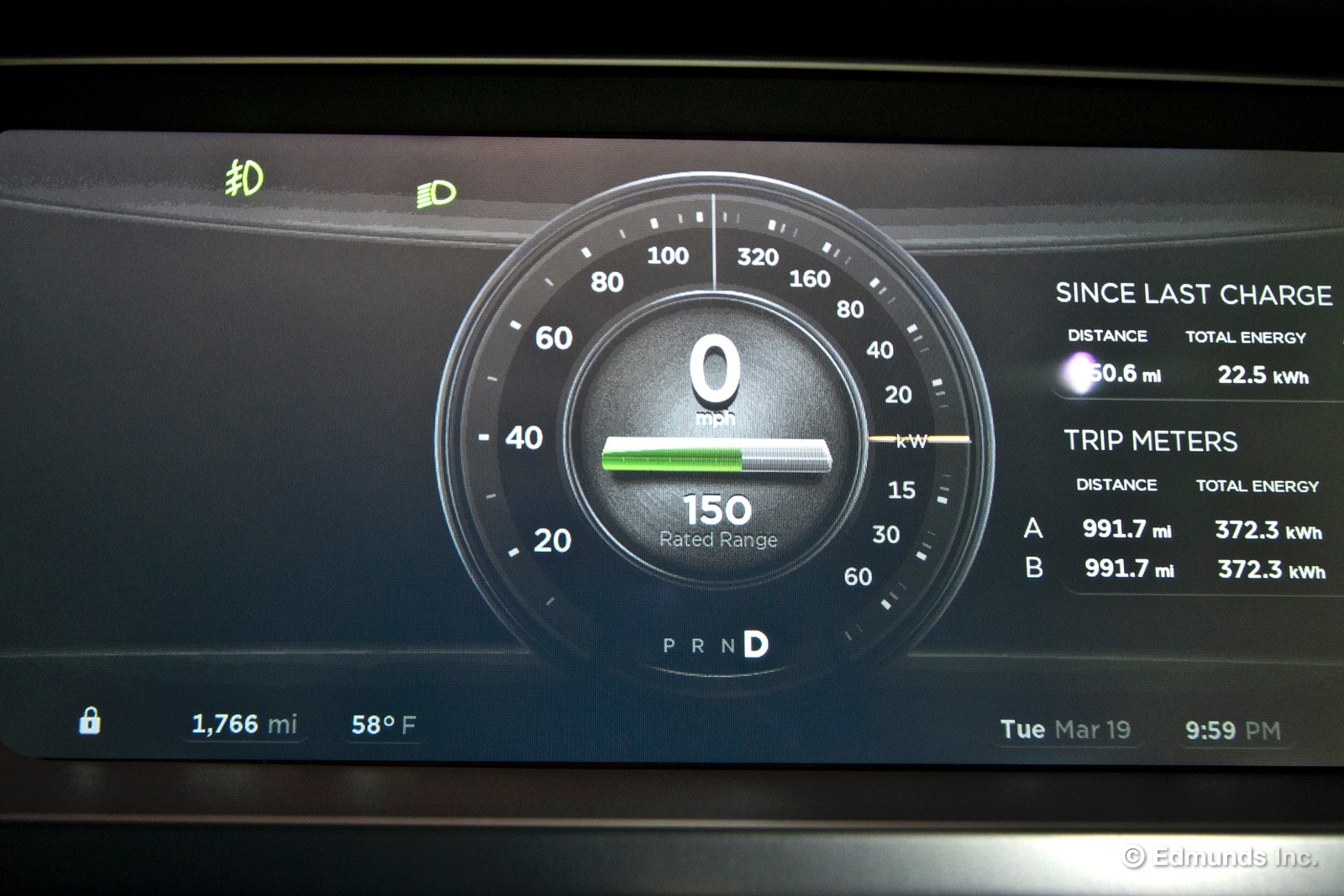
10:07 PM: I'm stuck behind a row of slow moving cars. The Tesla Model S is over six feet wide and it's expensive. I'm keeping a very watchful eye out for guard rail changes, deer, birds, branches, leaves, pebbles, gum wrappers other various contraband along the road. The climb uphill has relieved the Tesla of 10 miles of estimated range, but we've only travelled 4.4 miles.
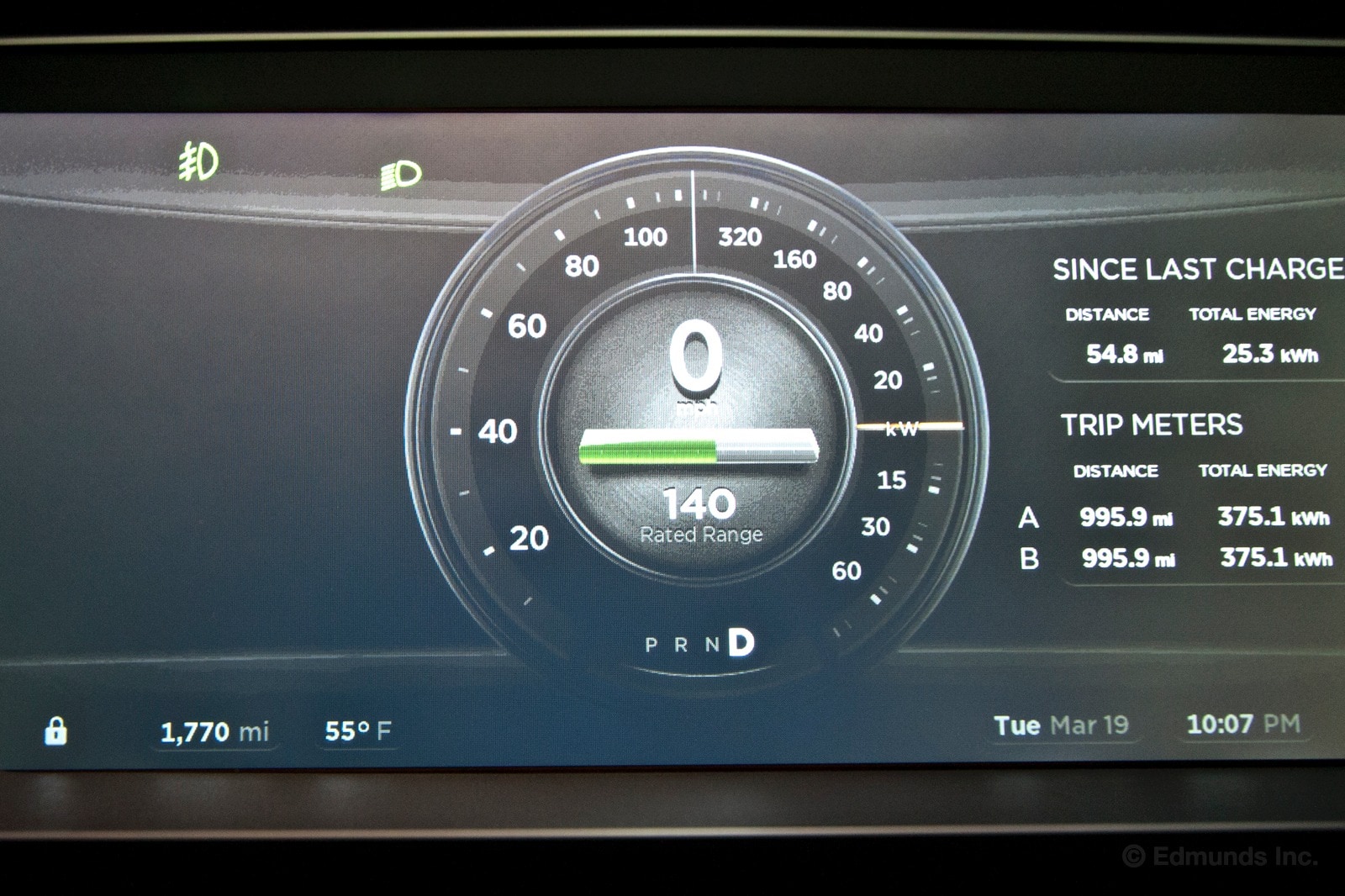
10:14 PM: For consistency, I take it easy on the downhill part, too. In the same distance, the car only uses two miles of estimated range. I, of course, have regenerative braking and non-use of the throttle to thank for this efficiency.
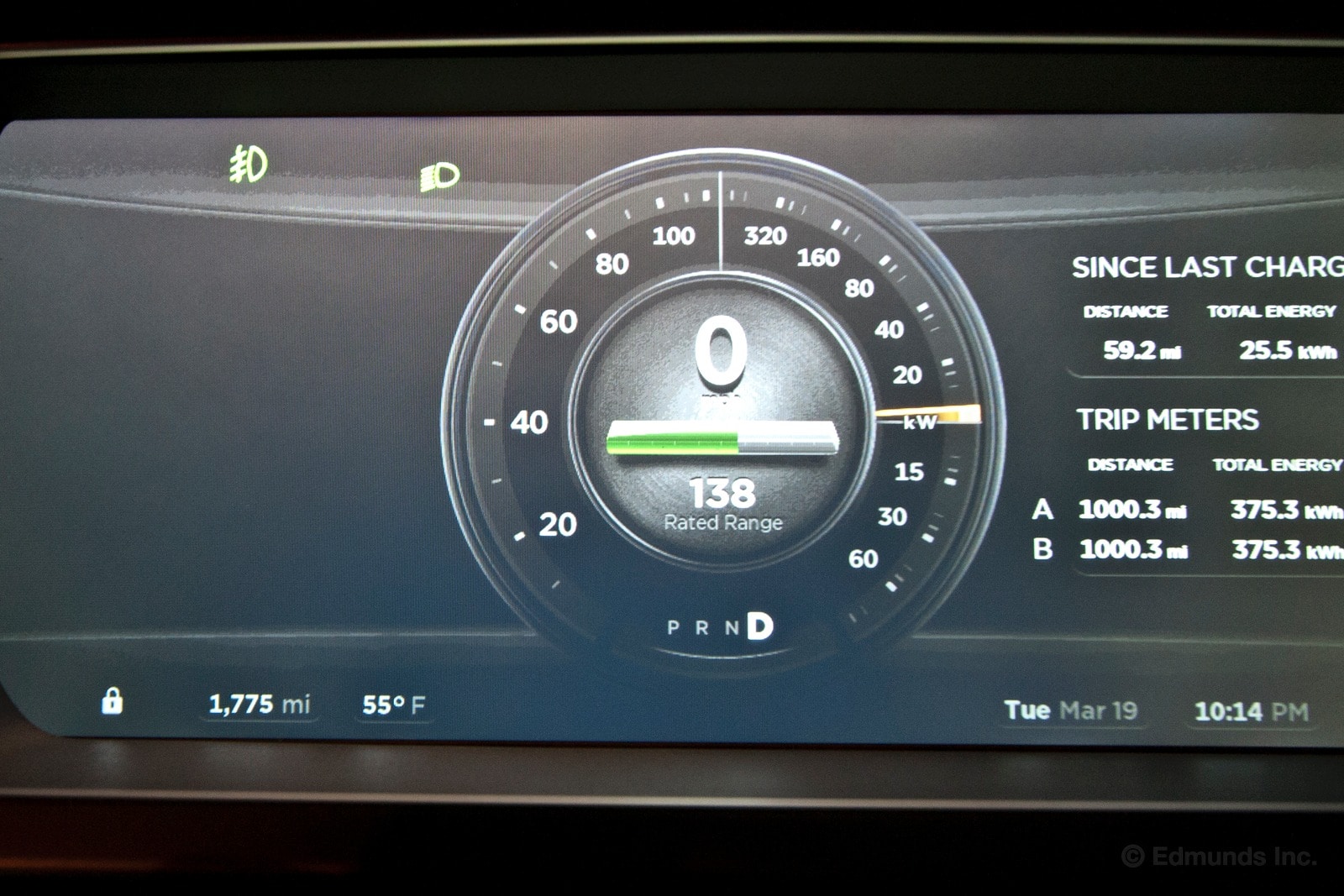
10:25 PM: I stop on Pacific Coast Highway for a moment to enjoy the view. With the Model S still running, all I can hear are the waves. For a minute I forget about the dress shirts tumbling at home. I'm out of quarters and wrinkles set in quickly so it's time to go.
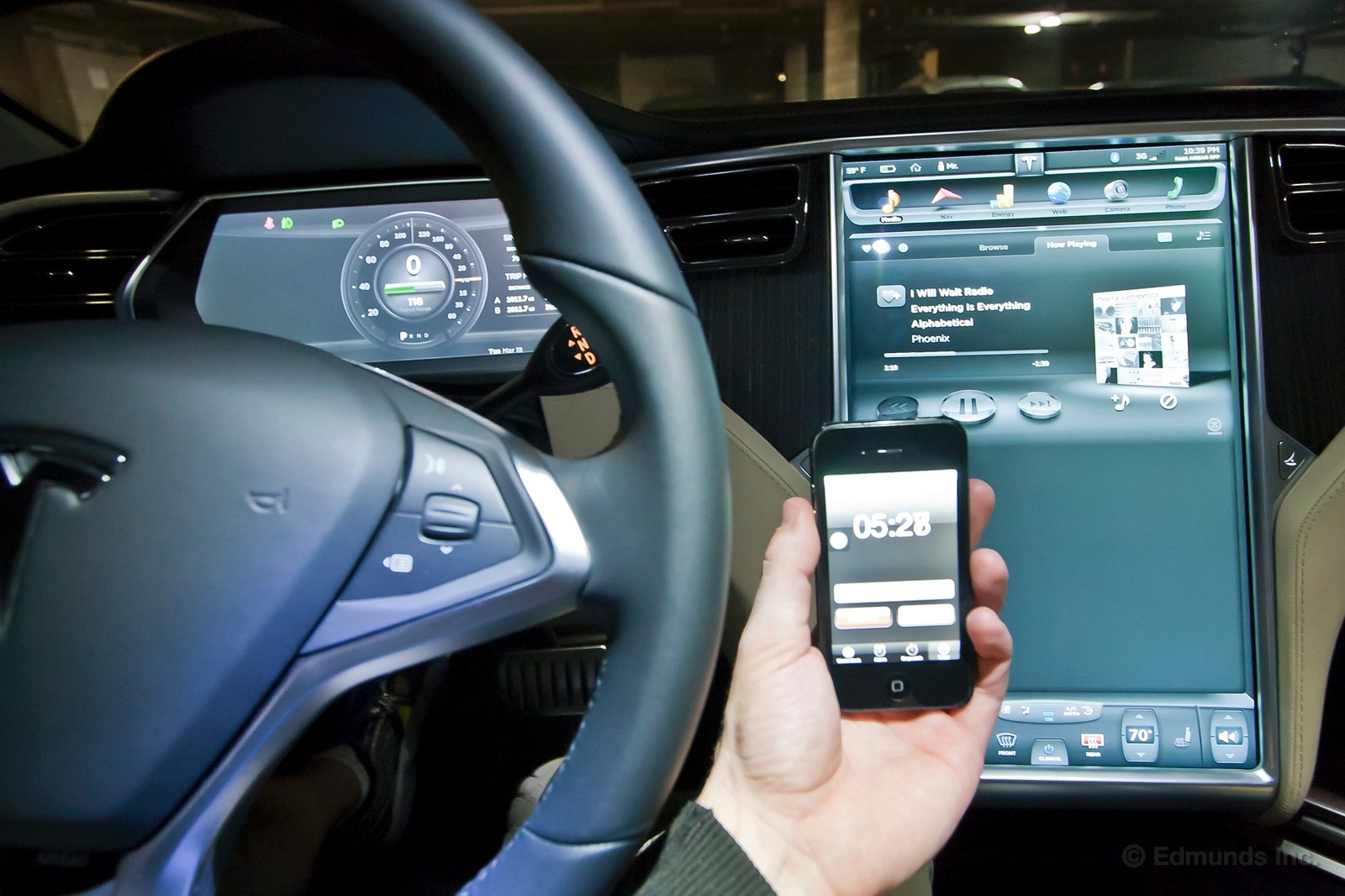
10:39 PM: I pull in to the underground garage, back our long-term Tesla Model S in to my parking spot and pull out my phone. There's plenty of time to spare. I hang up, fold, roll and put away my clean clothes and don't even bother turning on the television before settling in for the night.
I've had my fair share of entertainment for the evening and I believe I've answered the age old question that plagued great minds like Thomas Edison and Benjamin Franklin: "Is it possible to put three loads of laundry in the dryer, go on a canyon run in a $100,000 electric supercar and get back before the buzzer goes off?" Yes. Yes it is.

This past weekend I let three friends drive our long-term Tesla Model S. Joe went first. He owns a 2009 Mercedes SL63 AMG. Then Sam, who drives a 2008 BMW 550i, and finally, Tom who's infatuated with his new 2013 BMW 335i with the M Sport Package.
The Tesla blew them away. They all loved it. Everything about it. They loved its ride, its speed, its handling, its interior, its big touch screen, its styling...everything. They were so impressed all three guys are still taking about it days later.
And now my neighbor Al, who drives a Supercharged 2012 Jaguar XJ, wants to try it. I think I'm going to start charging a few bucks.
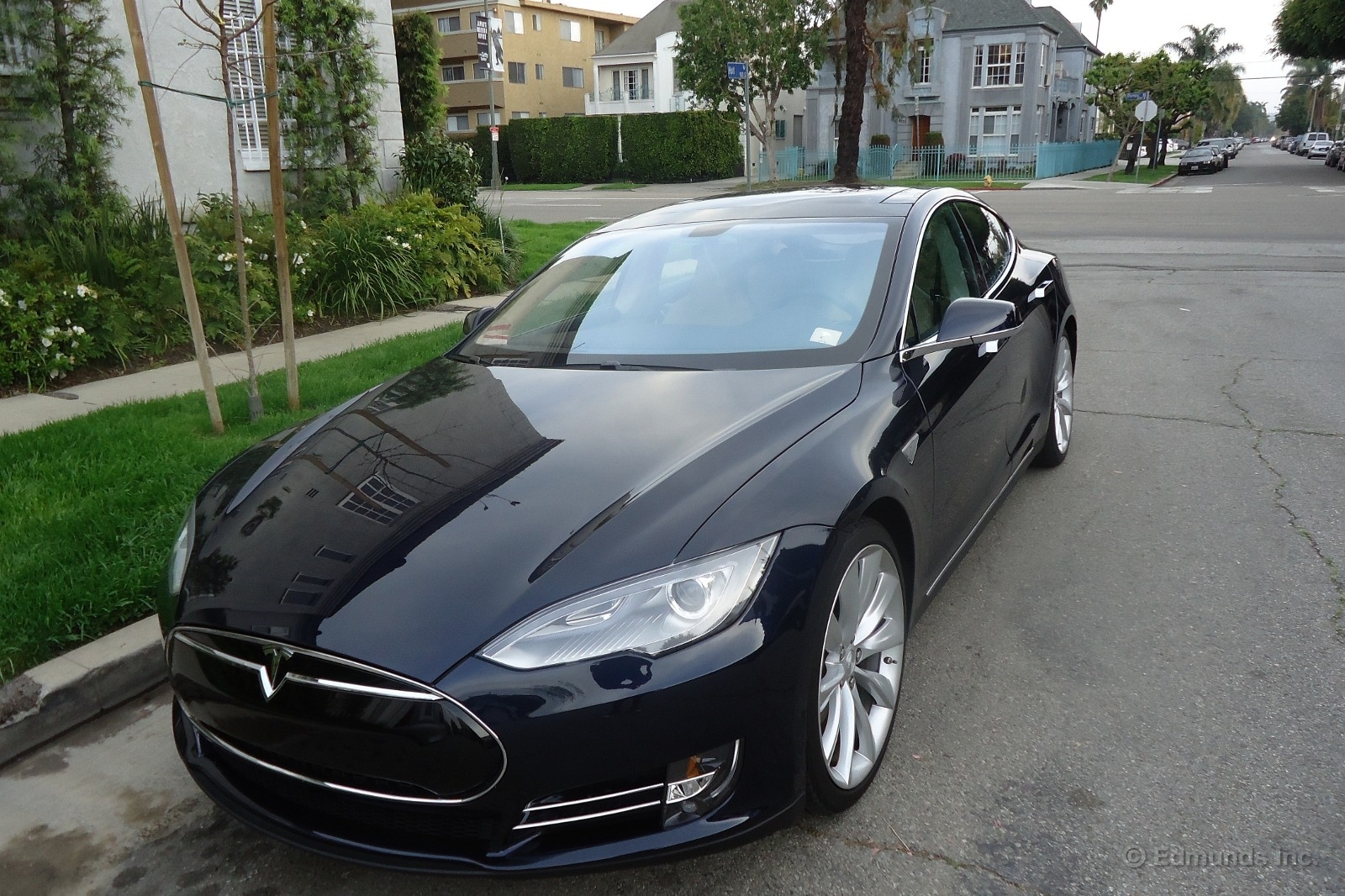
As I pulled out of our parking structure in our breathtakingly lovely Tesla Model S, I noticed something that wasn't pleasing to me. The car's regenerative brakes felt a bit anxious and slot-car-like, in a way that called to mind the intrusive braking seen in some less expensive electric cars.
I consulted the Tesla's gargantuan display screen to see if anything could be done to remedy the situation. Sure enough, our Tesla offers a couple of brake settings: Standard and Low. The brakes were currently set to Standard. Beneath the brake setting was a prudent admonition, "Standard increases range and extends brake life."
Thanks for the reminder. In my opinion, Standard also sucks much of the fun out of the driving experience, so I decided to throw green caution to the wind and change the setting to Low.
That did the trick. No electric-car tenseness here, just luxury car smoothness all the way.
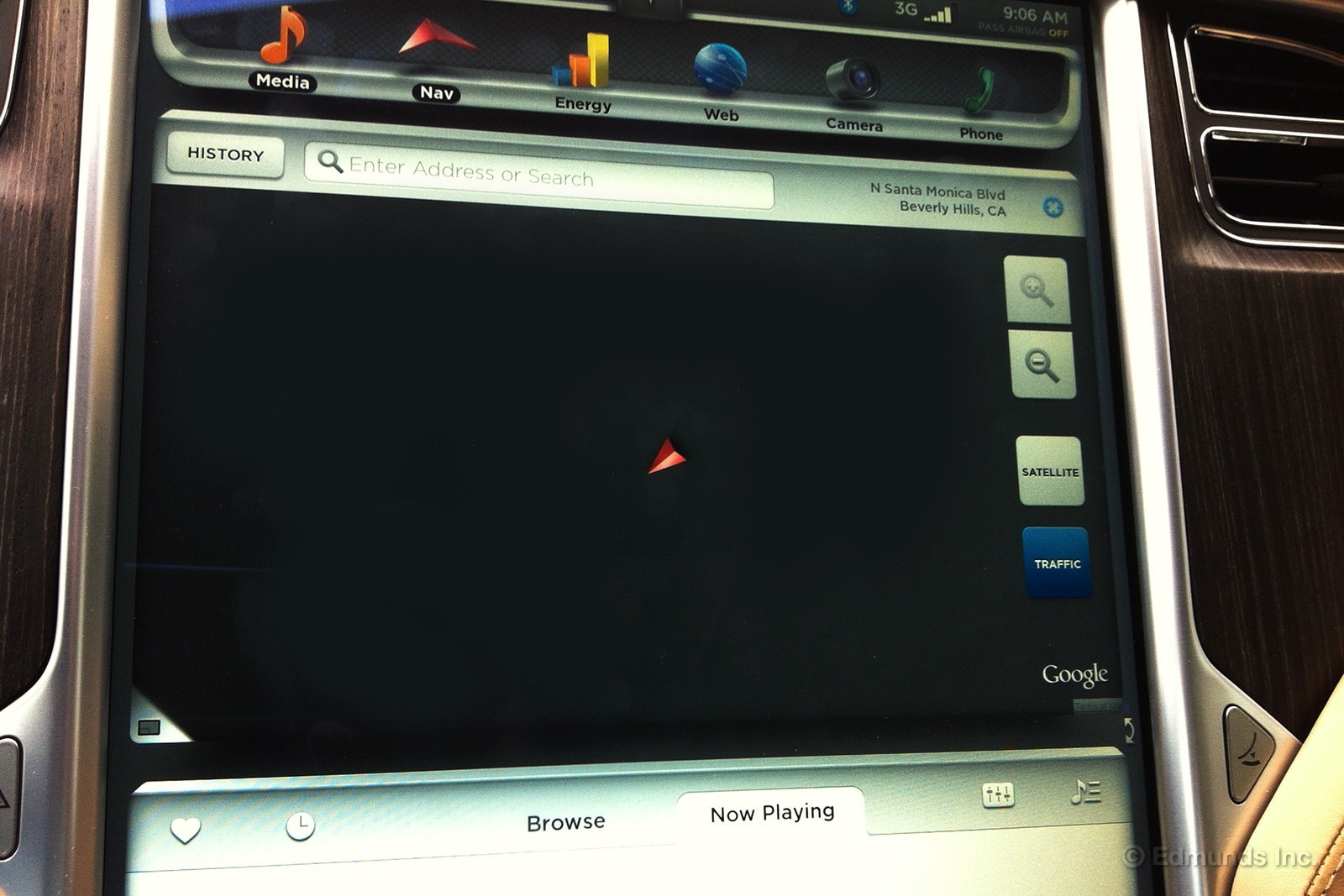
It started slow. The Tesla's web-based navigation seemed to miss a couple of sections as it updated. Then more gray squares kept appearing as I made my way home. On the drive into Edmunds HQ in the morning, the whole navigation map was one big gray square.
Sigh.
When I parked the Model S to charge, I remembered the reset procedure I tried when Bluetooth went south. I didn't have time to drive it around after that, so I asked the next driver (Schmidt) to give me a report.
According to him, the map was indeed populating, but it was missing a few squares here and there. Then when I got home, the news was going on about some crazy cyber war that was slowing down networks around the U.S.
That might have been the cause, but I'll know for sure when I get another update.
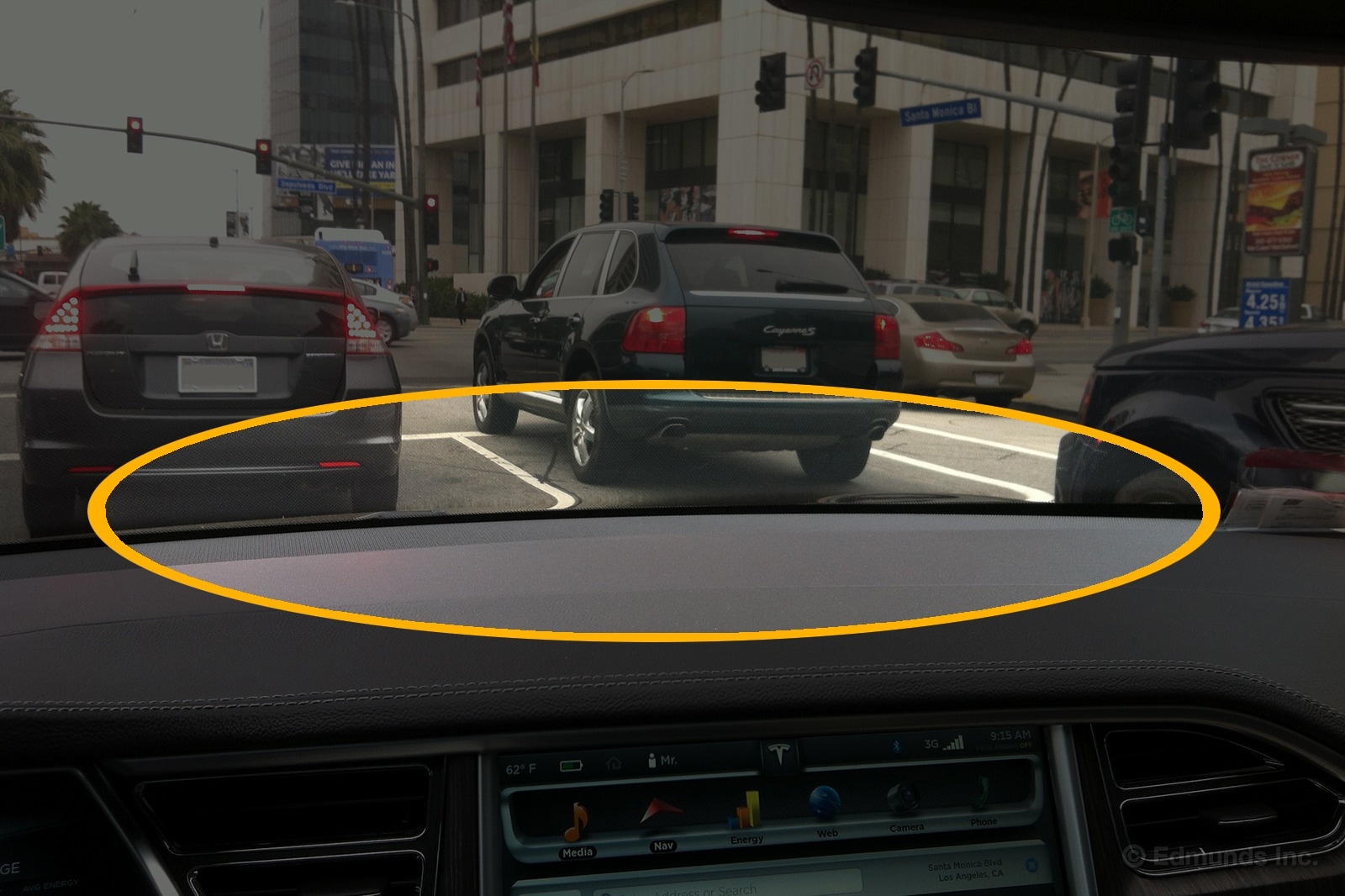
It's one of those things that once seen, can't be unseen. At least this isn't as horrific as the untold volumes of random Google image searches that have been seared into my consciousness. At the very bottom of the Tesla Model S windshield, there's a distortion that refracts an otherwise clear outward view.
You can see how the paint stripes bend as they approach the bottom of the glass. Now that I know it's there, it's all I see. I'm sure after more time in the Tesla, it won't bother me as much (more time in the seat? Awwww, poor me!)

Part of the appeal of driving an electric vehicle is that you never have to worry about oil changes, smog checks and spark plugs. "With just one moving piece in the motor, compared to hundreds in a gas engine, there are fewer things that can go wrong," says the Tesla site. "That translates to less maintenance and service over time."
Nissan also uses this as a selling point in this Leaf commercial called the "New Maintenance."
But a closer look at Tesla's service pricing shows that less maintenance doesn't necessarily equal less cost.
When you purchase a Model S, you are given the chance to "save up to $1,000," by purchasing a pre-paid service plan. Tesla recommends an annual service once a year or 12,500 miles, whichever comes first. That will normally set you back $600. Add an additional $100 if you want a "Tesla Ranger," to perform the maintenance at your home or job.
The savings are realized when you pre-purchase the "4-Year Plan" for $1,900. It is good for four years or 50,000 miles. This saves you $500 and makes each service $475. The $1,000 savings are only realized when you purchase the "4-Year Plan +4-Year Extension" for $3,800, though each service visit still costs $475. Tesla owners have 30 days from when they take delivery to pre-purchase the service plans. We're going to pass on this, since we only keep our cars for one year.
But even $475 seems pricey since you're not likely to need much in your first service. The Model S annual maintenance includes tire rotation, software update, topping off the washer fluid and replacement of any worn items (brake pads, wipers) except tires.
Brake pads on EVs tend to wear slower, since regen braking takes much of the pressure off the pads. They aren't a yearly item you would replace. My colleague, Phil Reed, who has leased a Leaf for almost two years now, is still on his original brake pads.
Contrast the Tesla prices to a quote on the Nissan Web Site where a Leaf owner is bragging about a recent trip to the service department. "Got the 15k mile checkup on my Nissan Leaf — it was just $20 for tire rotation, car wash, battery testing," says Katie M. Were her brake pads and wipers included? Probably not, but she likely didn't need them.
For reference to another high cost repair, we paid $668 for the 20K service on our long-term Mercedes Benz SLS AMG.
The Tesla Model S is a high-end car. I get that. But as an EV, it doesn't need to have high end car maintenance costs. Low maintenance should be a huge selling point with an EV, but in the Model S, I'd say it is a strike against it.
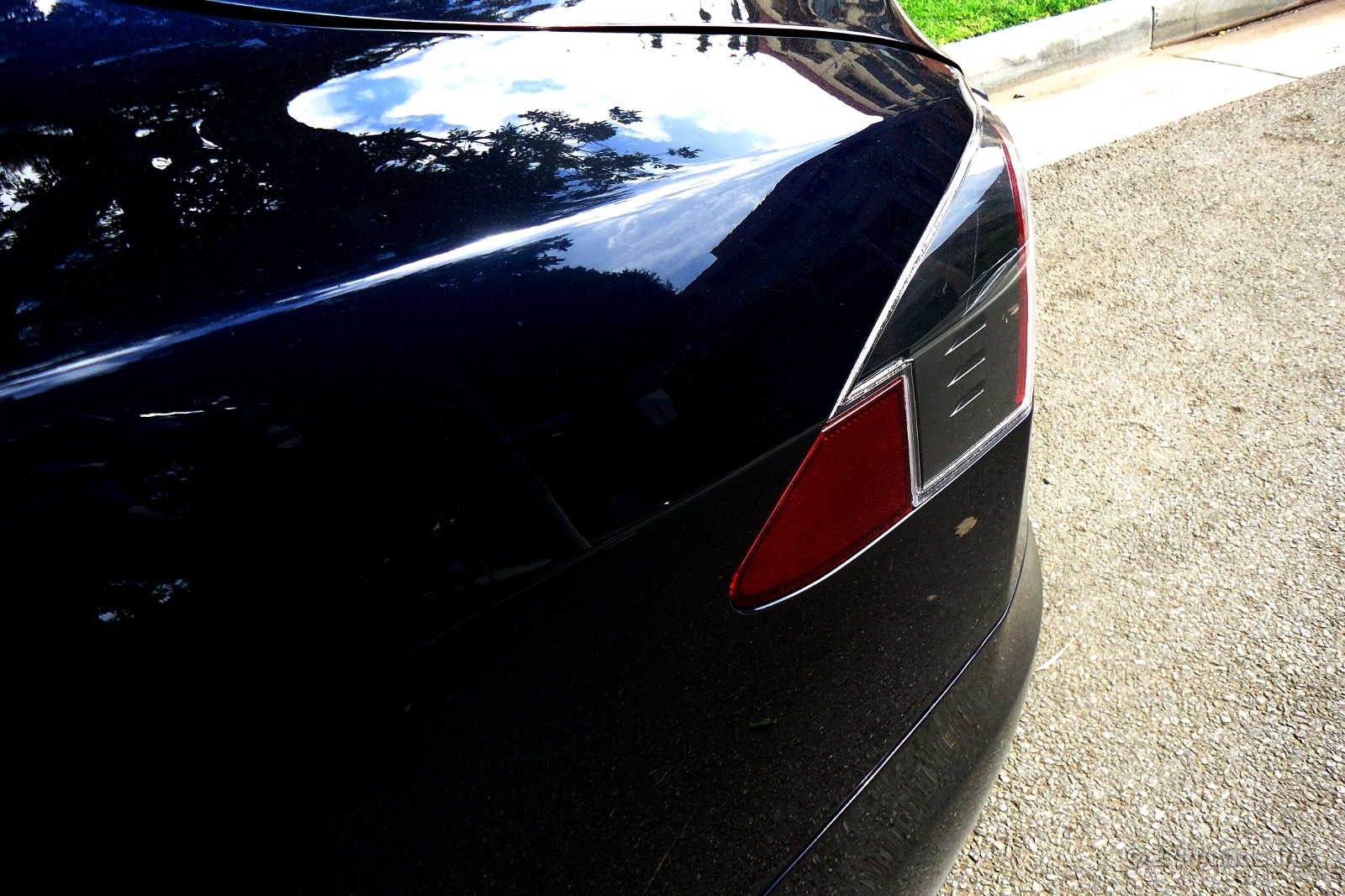
It was my first time charging our Model S. I pulled up to the charging station and spent a good five minutes circling the car, looking for the door to its charge port. Where could it be?
Then I figured that, like everything else on this high-tech luxury cruiser, the door was probably operated via touchscreen. I was right.
There on the touchscreen display was a control that allowed me to open the door. I tapped my finger on the screen and heard a little pop of surrender, which let me know the cunningly concealed door had finally revealed itself.
Aesthetically, the hidden door is in perfect harmony with the Model S's clean, sleek approach to design.
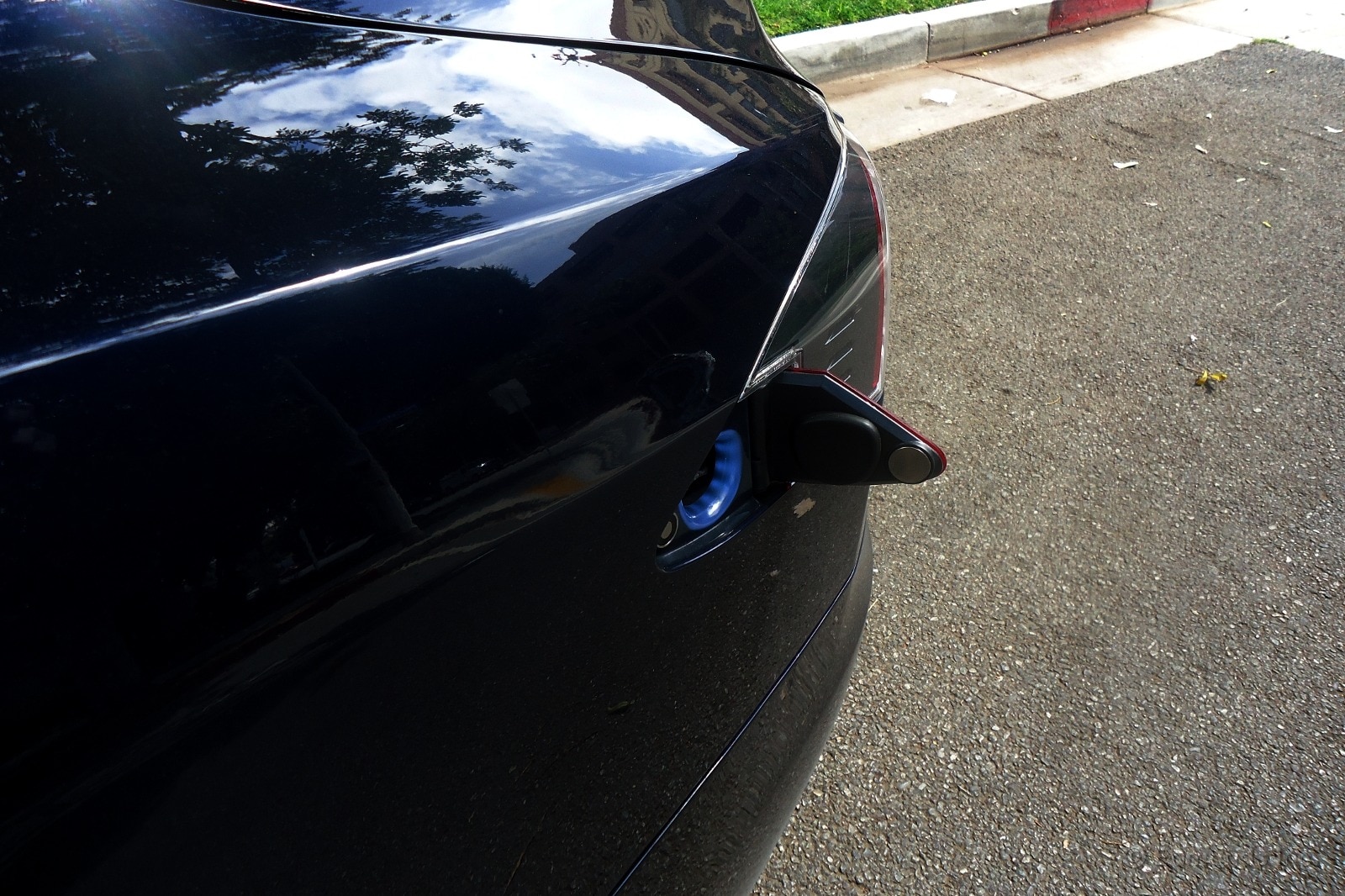
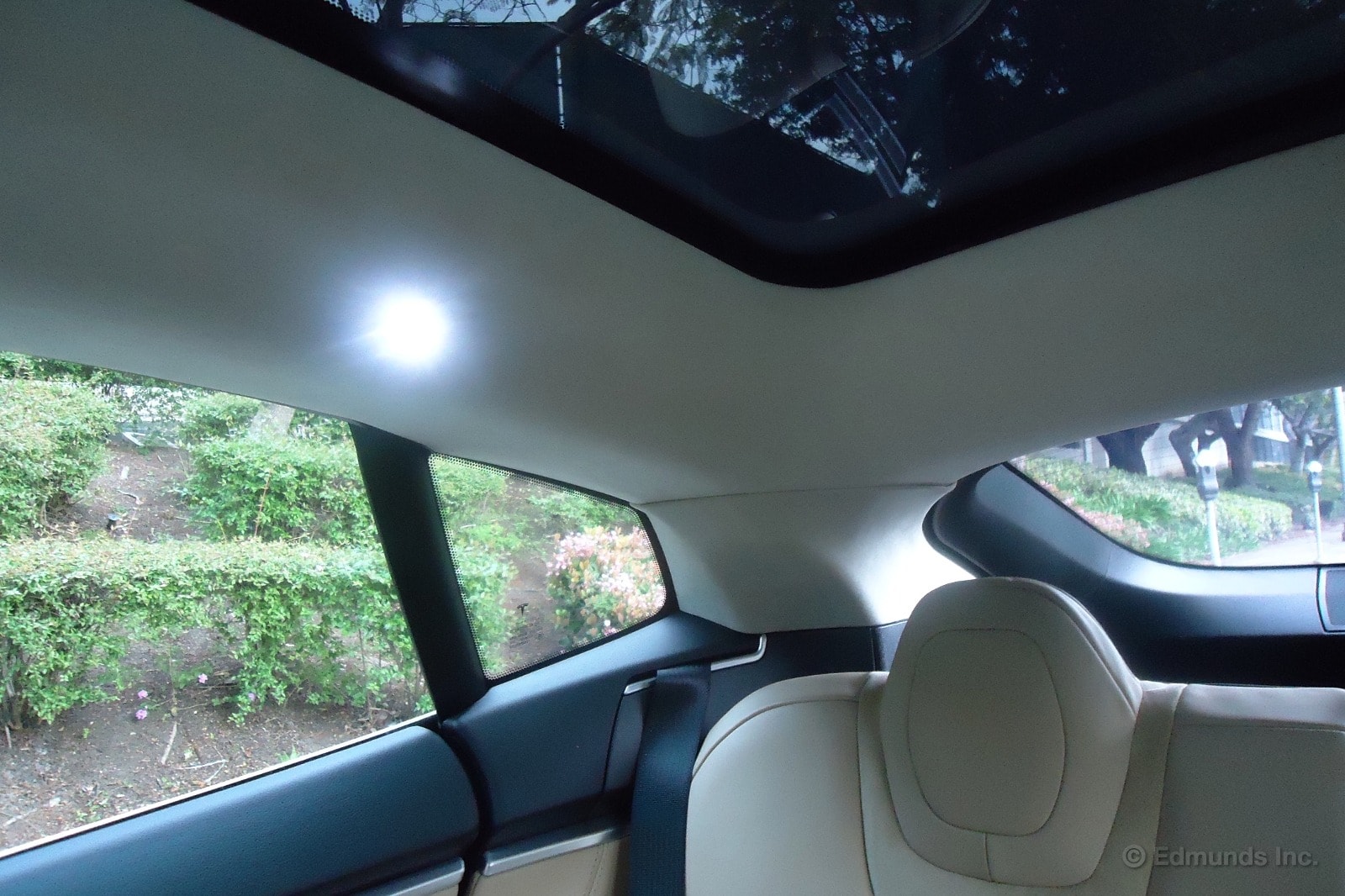
It seems churlish to complain about something as mundane as rearward visibility when faced with all the splendor and glory of our Tesla Model S.
But the fact is, visibility could be better. That C-pillar is pretty wide, and the rising beltline doesn't help matters.
On the plus side, there are so many pleasant distractions within the Model S's doors, visibility will likely be the last thing on your mind. In the beginning, anyway.
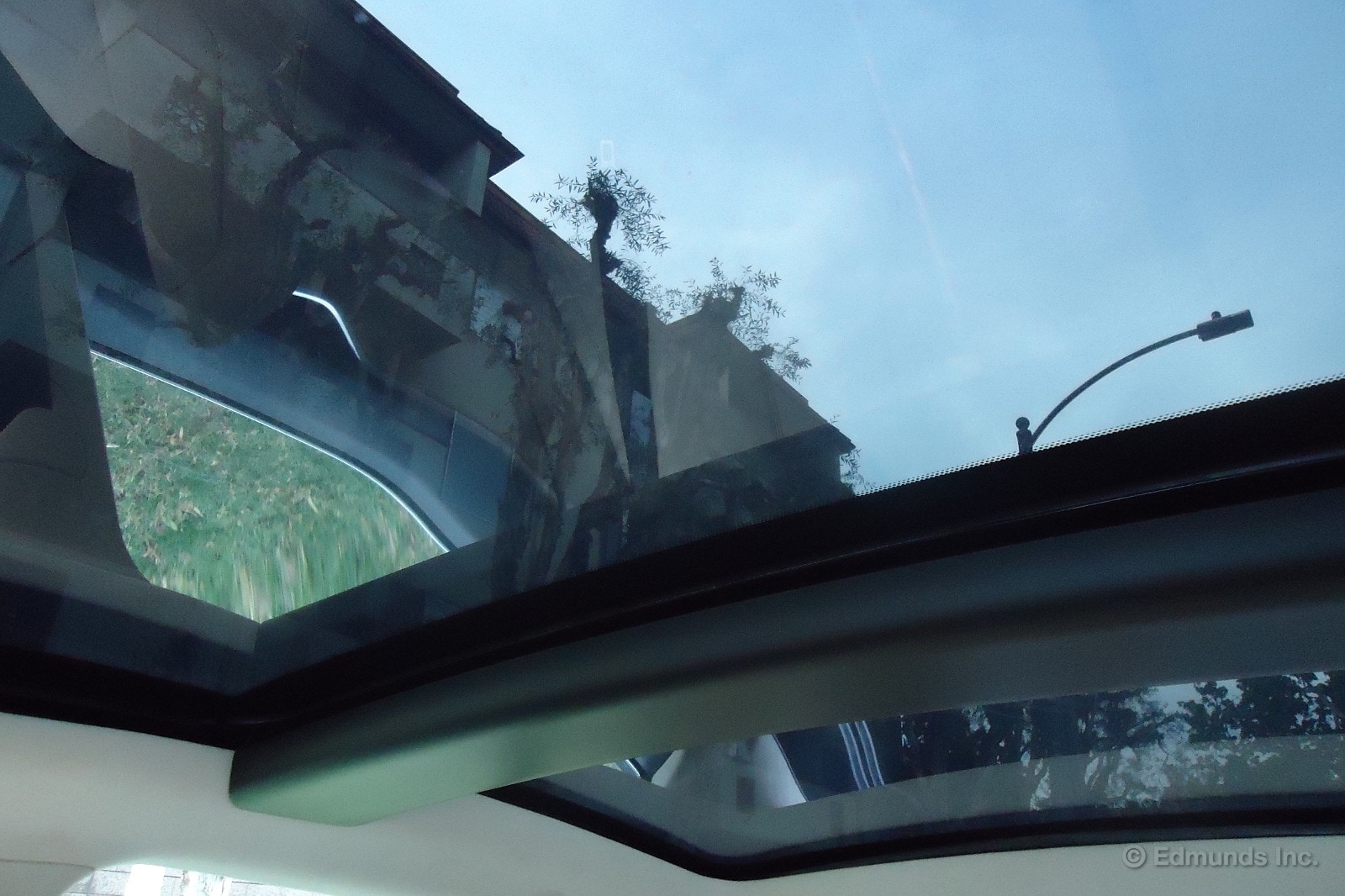
The trend these days is toward huge, panoramic sunroofs with sprawling dimensions that approximate an open-air driving experience.
In this respect, our Tesla Model S is most definitely on-trend. Its generously sized sunroof is a treat not just for front-row passengers, but for those traveling in rear, as well.
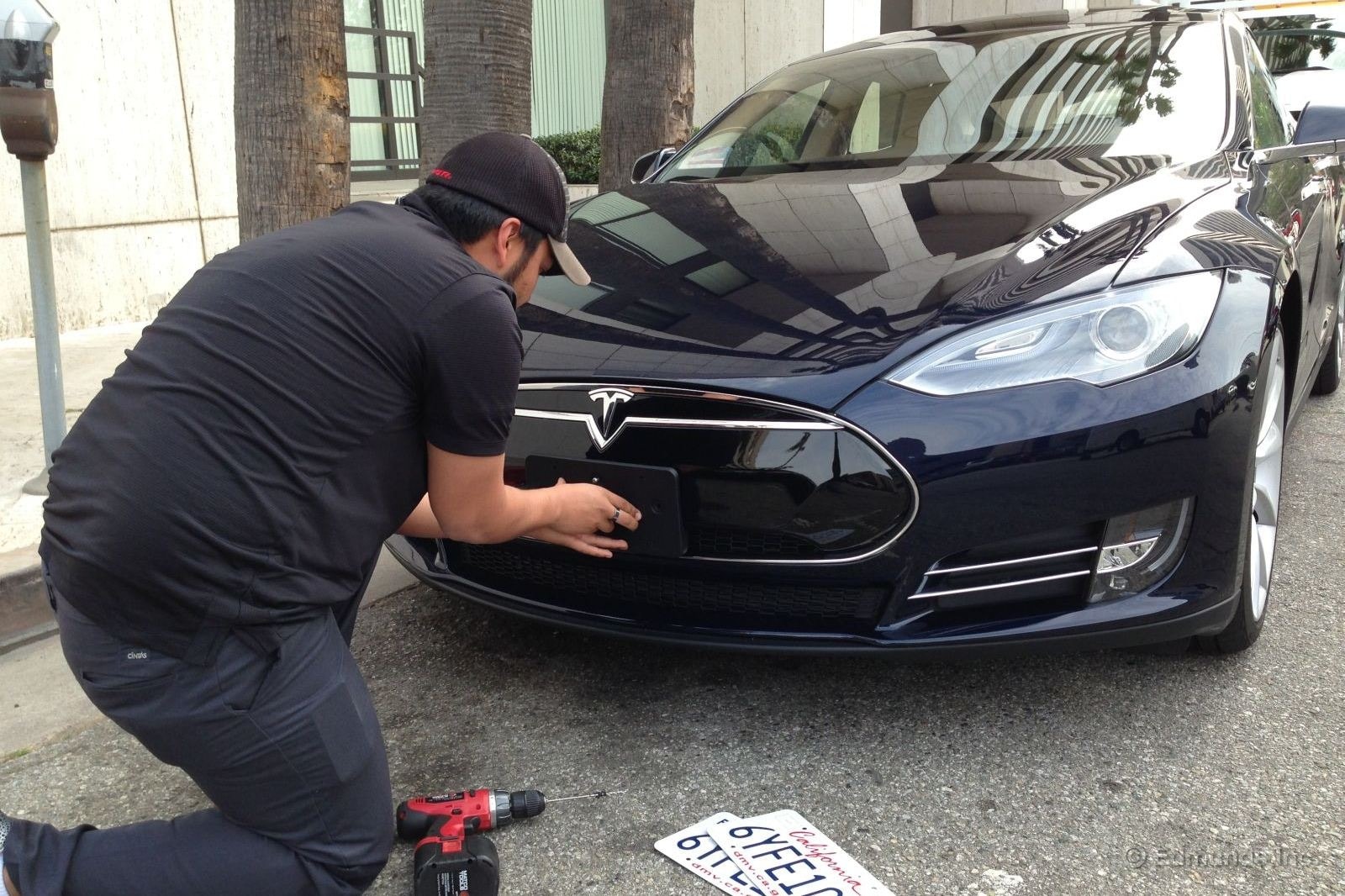
With a car this expensive and this beautiful we couldn't bring ourselves to drill holes in the front bumper for the license plate bracket. So we called the Tesla service center in Los Angeles and asked if they could do it. The cheerful receptionist checked with the techs and said to just stop by any old time.
The service center is only accessible down a tight alley so we just parked at a meter and waltzed into the service center unannounced.
The service bay was jammed with Model S's being prepped for delivery. But they honored our request and a tech named Juan came out to the curb to do the job. There were three indentations in the front bumper, to align the frame with the bumper. We averted our eyes as Juan drilled out the depressions. He then carefully mounted the bracket and the license plate.
The holes and plastic inserts were already in place for the rear plate. We were hoping for something more substantial, like a nice Tesla frame. Juan searched around for the frames but the other techs told him the frames are only available at the factory.
We chatted as Juan worked. His admiration for the car was evident. "You know the thing I like about it," he said. "They put the battery on the bottom and totally slammed the car to the ground. That's why the handling is so awesome."
Juan installed the bracket and plates before the 30 minutes were up on the parking meter. It was a good visit with a lot of helpful and friendly folks.

If you take a Tesla Model S to an automatic car wash, leave a little extra time for the staff to freak out.
Since you have to be sitting in the Tesla's seat for it to move forward, someone really has to ride in it. After a bit of conversation, where they tried to decide who would be the rider, I volunteered to be the one sitting in the car.
I enjoyed watching as the jets of water rainbowed down onto the windshield. It's a good idea to set the suspension setting to high, too, to avoid any damage to the tires or wheels.
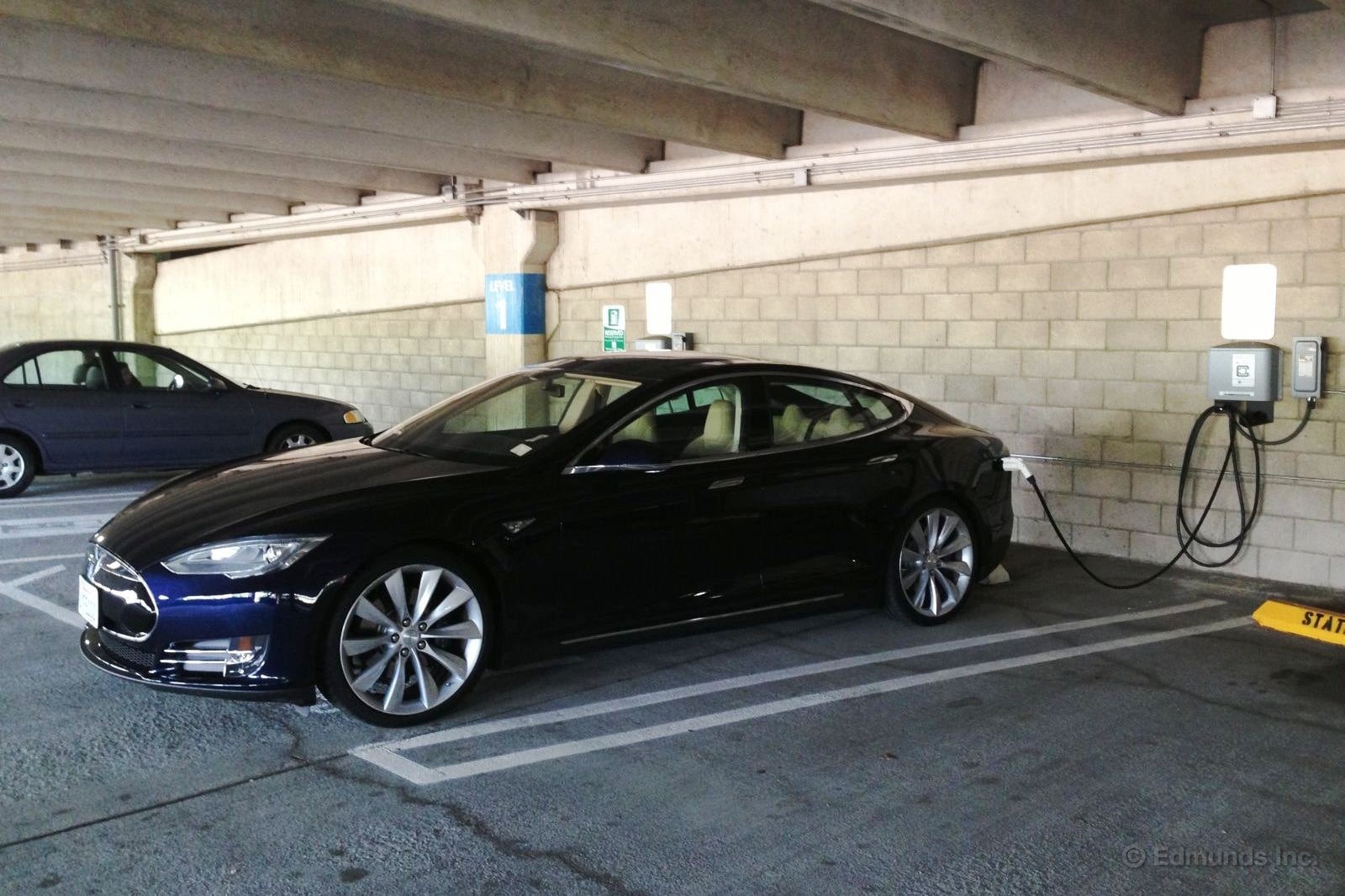
I was psyched to get the chance to be the first Edmunds editor to drive our Model S to Las Vegas. But then reality set in.
Las Vegas is 275 miles from my house. The Tesla only goes 265 miles max, and probably more like 240. Okay, I'll stop in Barstow for an hour to juice up at one of the super chargers. But what if they're full? And what happens when I get to Vegas and need to charge? And what about valets driving this quirky luxury car?
Lots of questions. Some anxiety. But I'm going anyway and I'll embrace the adventure.
Then I hit my first problem.
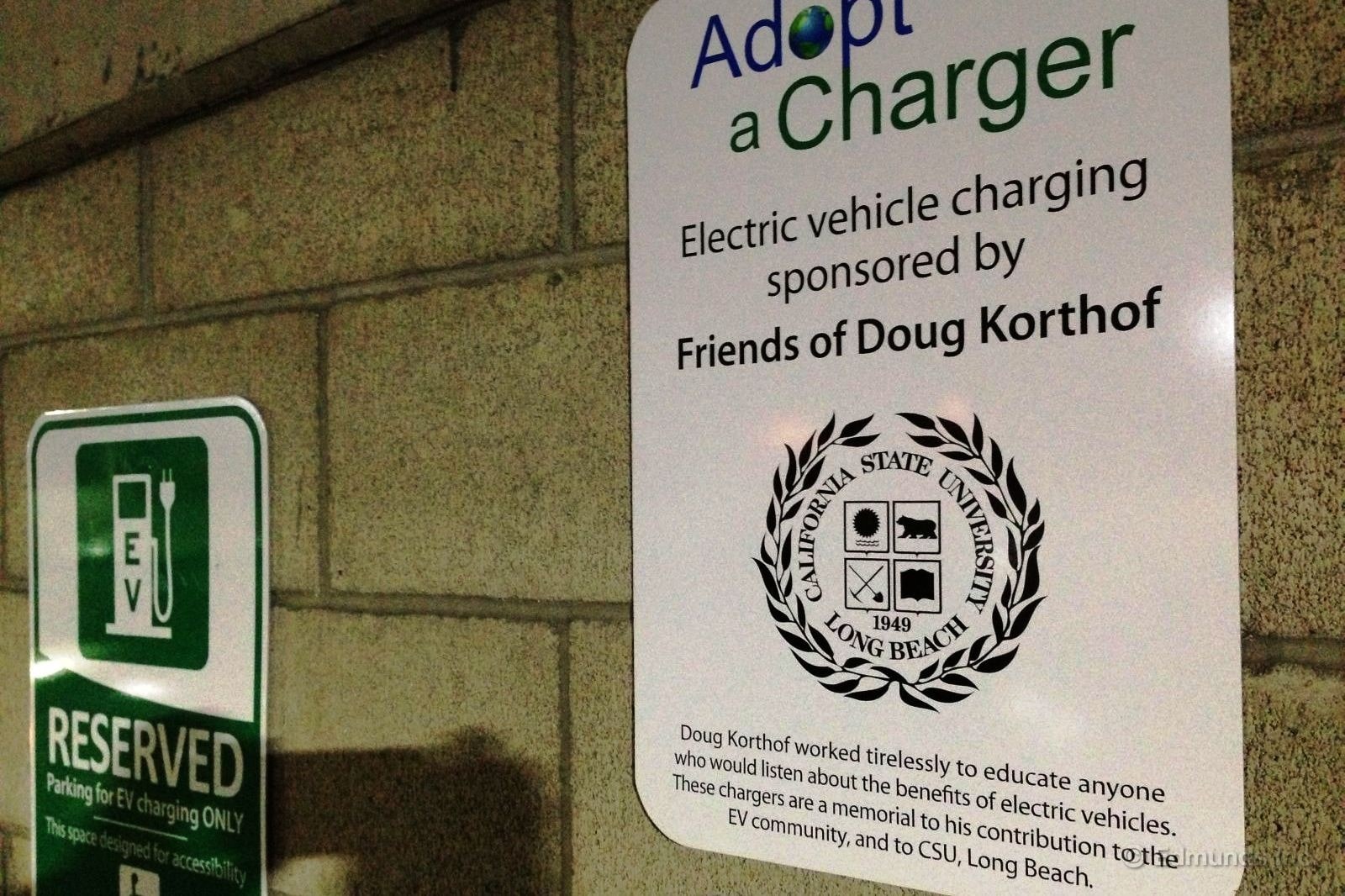
I'm leasing a 2012 Nissan Leaf so I have a 240-volt charging station at my house. I drove home two nights ago, plugged in and then checked the Tesla app: "Charging stopped." What the — ? Turns out, my SPX charger isn't compatible with the Tesla even with the adapter on the cord.
In a panic, I emailed William Korthof, owner of Sustainable Solutions Partners and the guy who installed my charger to see what I could do. He got right back to me and said that SPX was going to do a software upgrade to fix the problem. He offered to temporarily install a compatible charger. But, I needed one right away so I could leave for Las Vegas with a fully charged battery.
I used Plugshare.com to locate the closest charger and found it in the parking garage at California State University Long Beach. Nearby was this sign saying the chargers were dedicated to Doug Korthof, an EV proponent who turned out to be William's father. He passed away last year at 68.
Anyway, checking on my Tesla app I was able to see when the battery was charged. I went back over to the campus and drove the car back to my house, ready for an early morning departure. There's a lot of desert to cover between here and Las Vegas, and a lot of mountains to climb. Wish me luck.
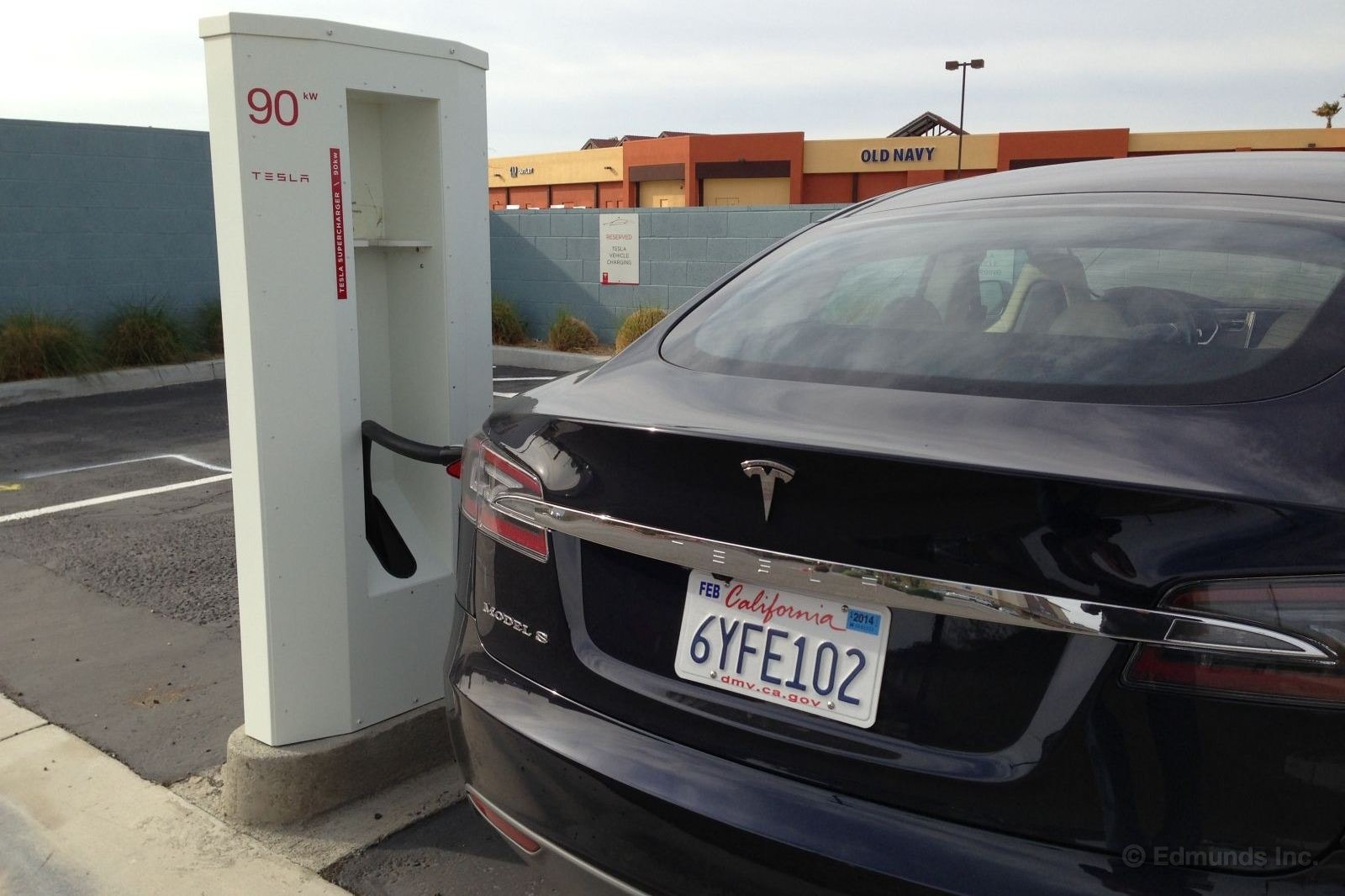
I felt a little apprehensive when I left my house early on a Sunday morning. I had to reach Tesla's supercharger in Barstow 128 miles away over the Cajon Pass, elevation 4,190 feet. I dialed down the cruise control to 65 mph as I climbed the long grade. But other than that, I cruised at 70 mph.
It was a good thing I read the Tesla forums because there were no signs directing me to the superchargers. They were, as other owners had posted, behind the Chili's restaurant. I pulled in, hooked up and checked the charge screen: jackpot! I was getting 300 miles of charge every hour.
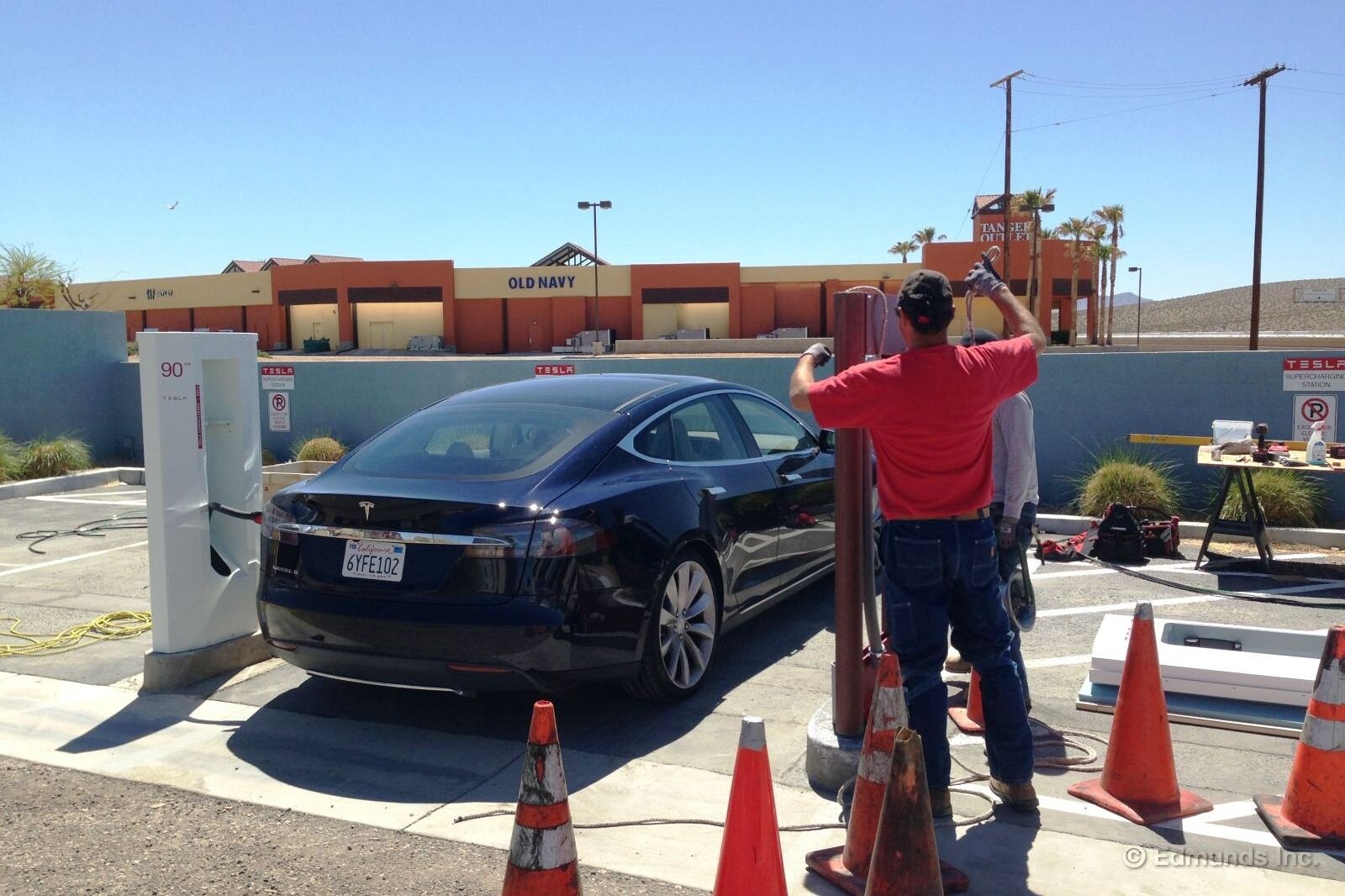
I went for a bite to eat at nearby Denny's, occasionally checking the charging level on my Tesla app. In less than the time it took to wolf a bacon avocado breakfast burrito the battery was fully charged.
I'm skipping ahead now, but I wanted to describe the return trip, since it also involved a stop in Barstow. I left Las Vegas with a full charge and cruised at about 75 mph. I was now confident of where the superchargers were and I felt they would be available on a weekday morning. But when I came around the corner of Chili's, I thought, oh crap! A pickup truck was blocking the chargers and three guys had wires spread all over the place. For a horrible second I thought I would be stranded here among chain restaurants and tacky outlet stores. But my anxiety quickly diminished as one of the guys moved the truck and waved me in.
Turned out, they were installing two new superchargers to bring the total to four. One electrician described them as "gen 2" chargers and, in fact, the towers were taller. Also, the electrician told me that if two Teslas charged at the same time, the second one to arrive would do so at a slower rate. When the first one left, the slower rate would continue, unless the owner disconnected and then began charging again.
I left the Tesla charging and went for a quick lunch. When I returned the car was charged and I was ready to head home.
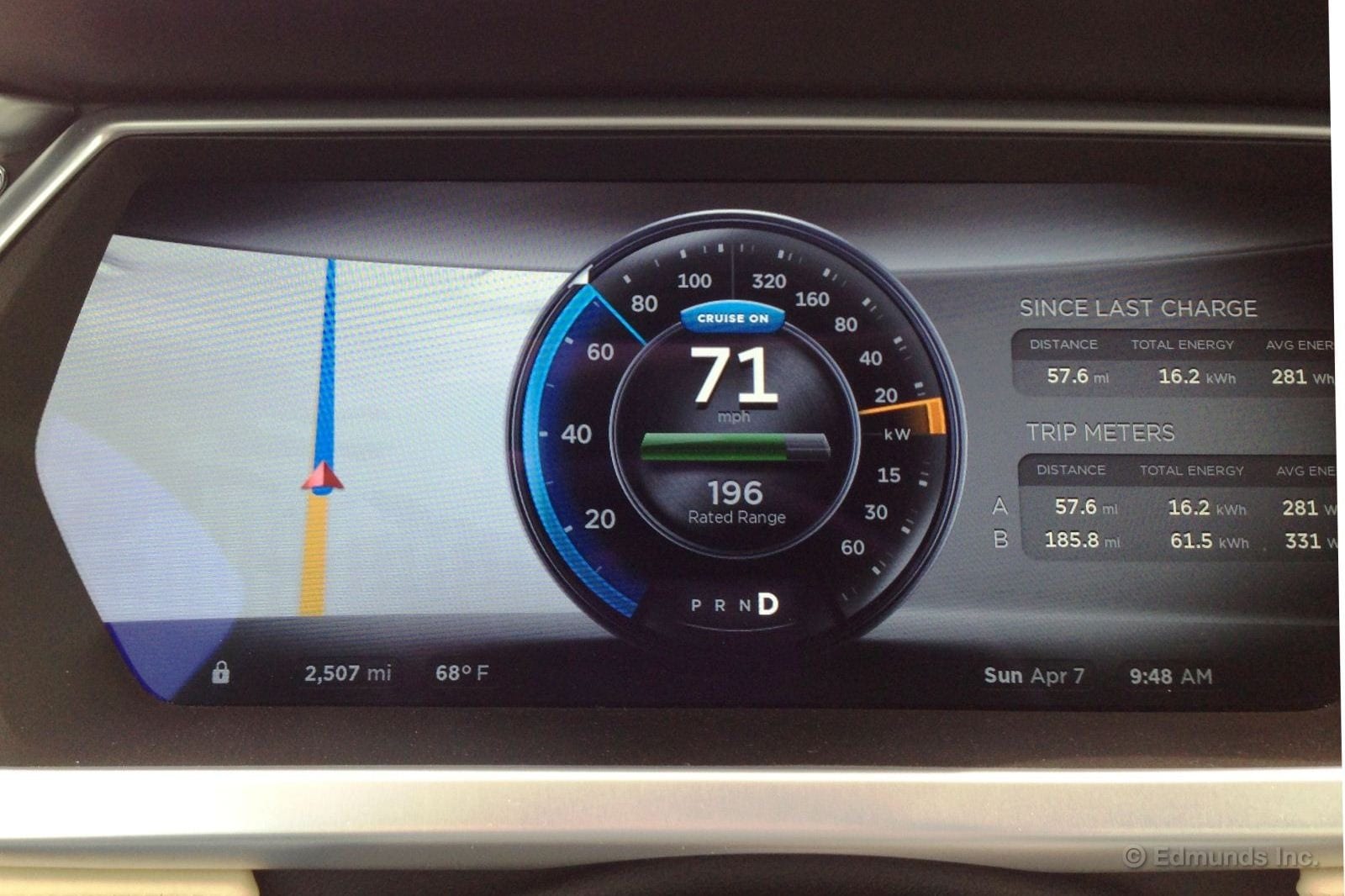
I'm a big fan of cruise control for two reasons: it reduces fatigue on long drives and it helps keep you at a legal speed. On my trip to Las Vegas I discovered that our Tesla Model S has a super cruise control system. The graphics are great and the system actually offers two speeds. One bump gives you the customary 1 mph increase/decrease. But if you push it through a detent, you get an approximately 5 mph plus or minus jump.
There was one other feature of the cruise control that I liked.
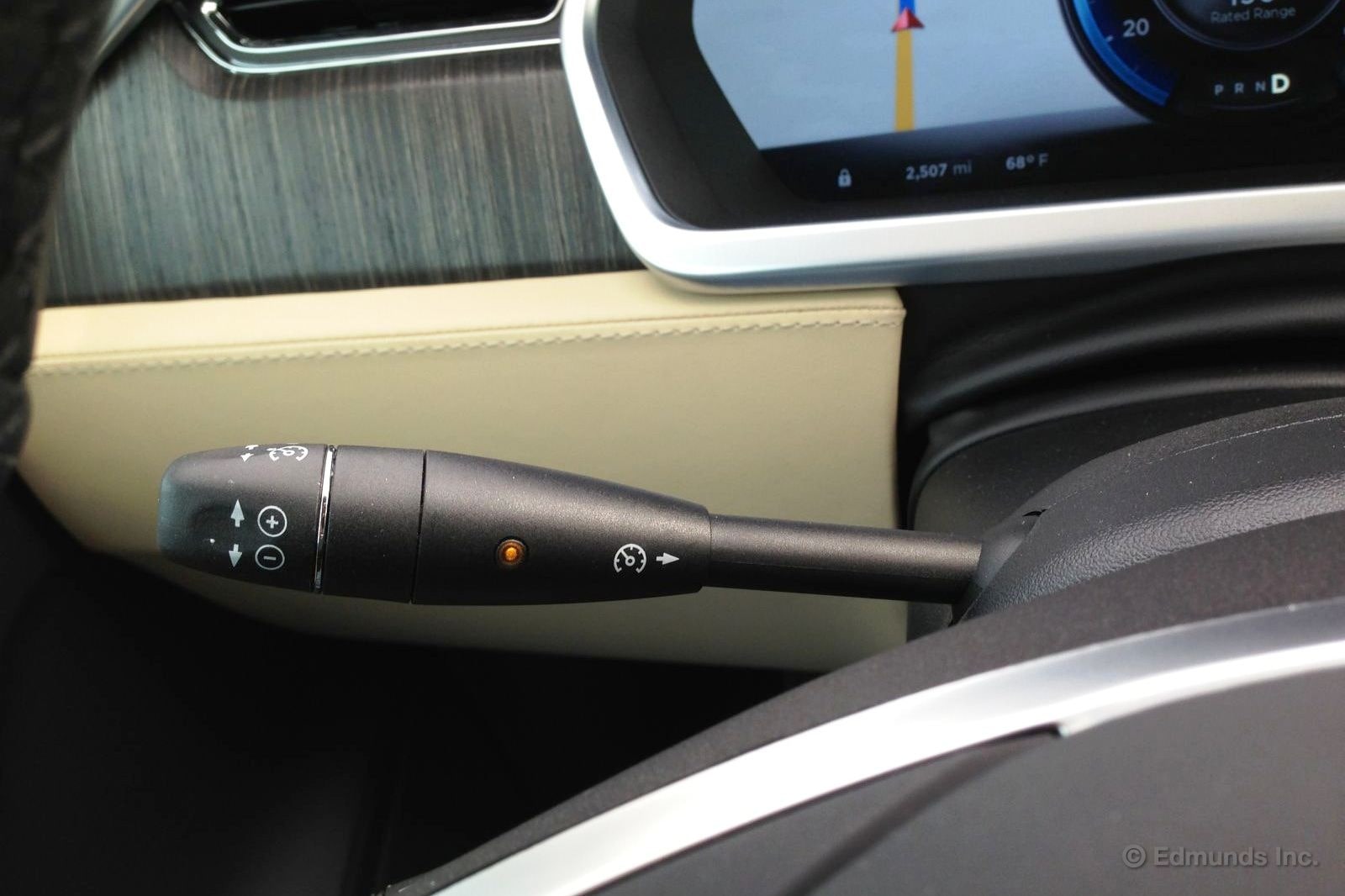
The cruise control is turned on by pressing in on the stalk to the left of the steering column. Once you turn it on, a glowing green light reminds you it is on. Classy.
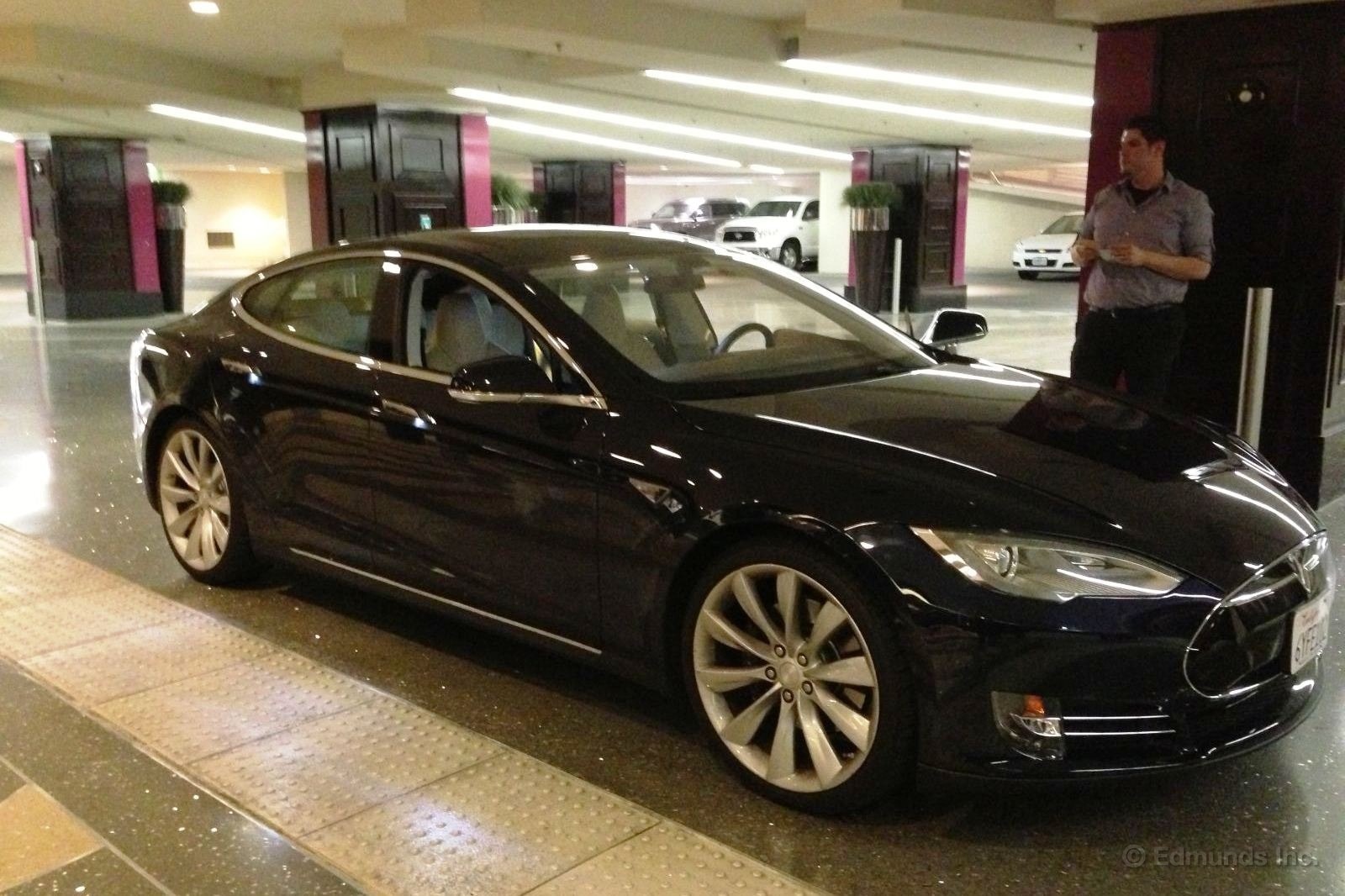
What if you went to a mall and there was a gas pump with a sign saying, "Go ahead and fill up! It's free!" That's what it was like to drive the Tesla to Las Vegas. Free fuel in Barstow. Free fuel in Las Vegas.
And how much is that worth? Gas for a 2013 BMW 7 Series getting 22 mpg combined and requiring premium at $4.17 a gallon would be $123 for the 650-mile trip. For the Tesla, fuel costs would be $0. But there is the time and hassle of charging.
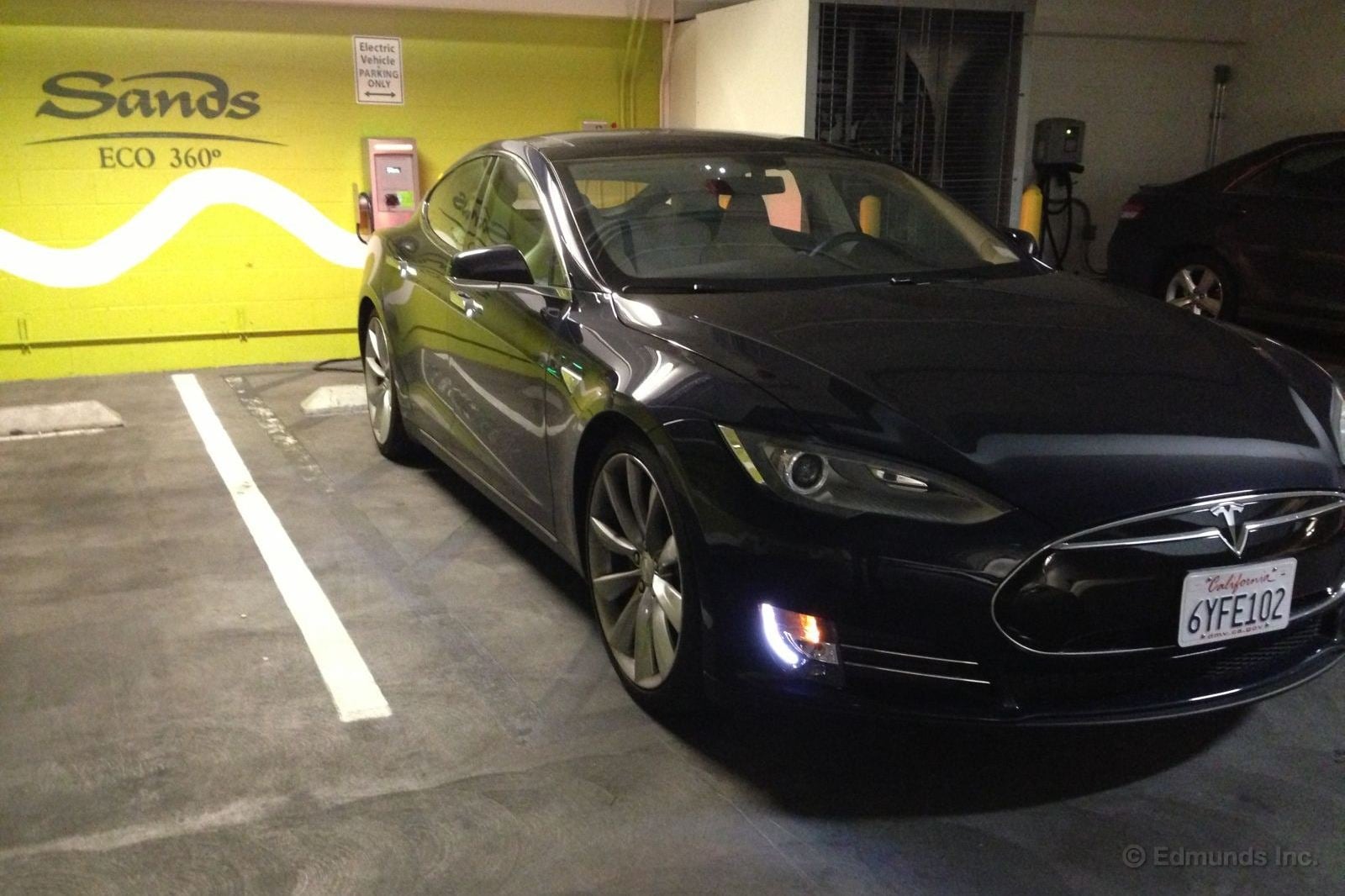
I was nervous about handing over our Tesla Model S to the valets in Las Vegas. But I had to do it if I wanted to charge. A Tesla spokesperson directed me to charge at the Aria Resort and Casino. When I got there, I asked to ride along with the valet to the charger, to make sure he hooked it up correctly. But the valet dude said their insurance wouldn't allow it. Instead, I handed off the key fob, tipped liberally, and walked away. Minutes later, I checked the Tesla. It was happily charging.
The next morning the valet returned the Tesla to me and assured me the cable and adapter was in the trunk. I checked just in case.
Later in my trip I had to change hotels so I headed for the self-parking garage at the Venetian Las Vegas. I was wandering around, looking for the chargers (they are always so hard to find) and I spotted a maintenance guy on a little electric cart. I asked him where the chargers were and he said, "Follow me." So now I'm in this hulking luxury EV, creeping after a little golf cart as it weaves through the parking garage. But I found the chargers on the 6th level, hooked up and got another free charge.
Electricity and comped buffets are about the only free things in Las Vegas.
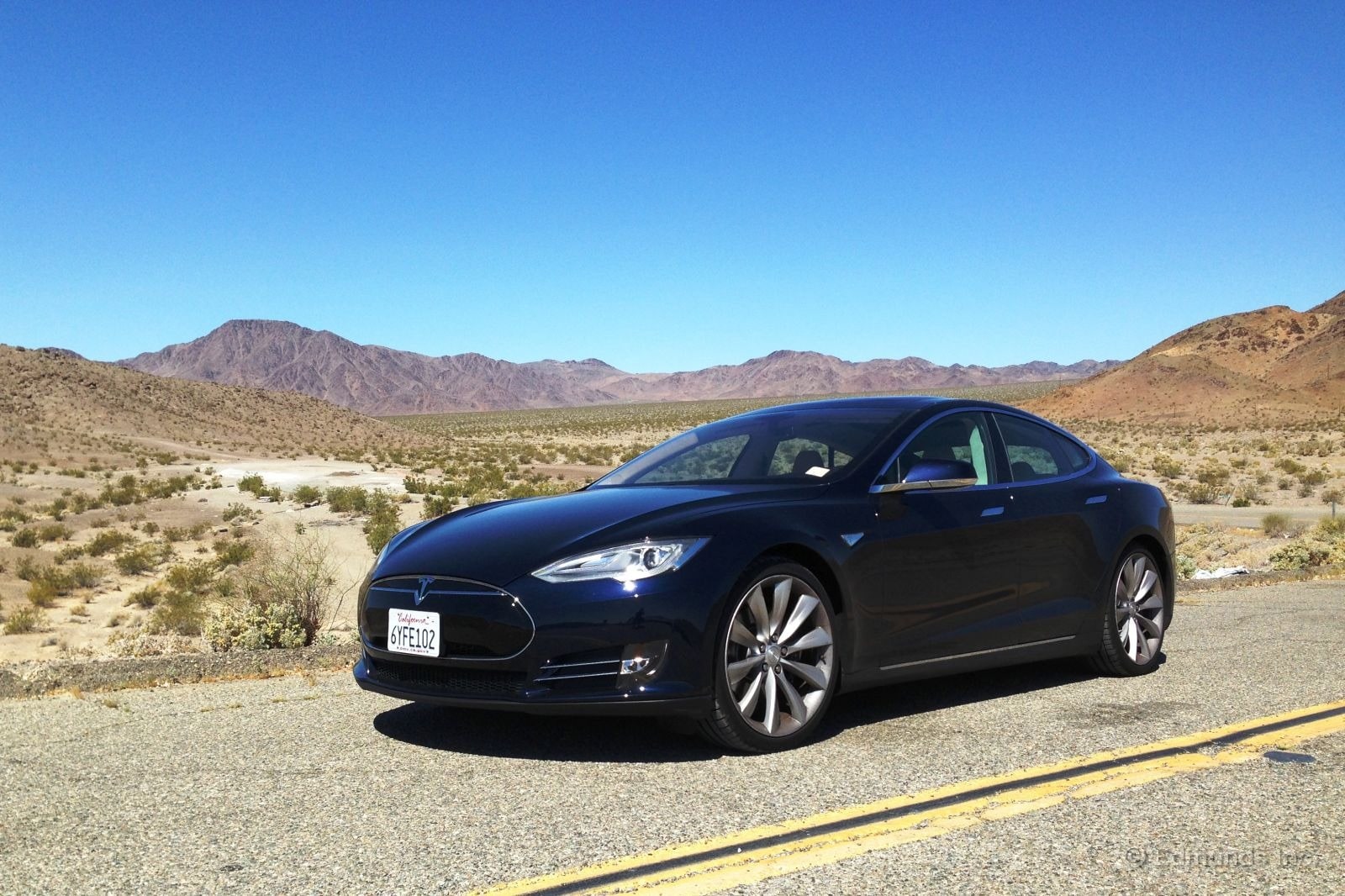
I drove to Las Vegas in our Tesla Model S, in and out of various hotels and restaurants, and back home across the desert. All told, I covered 820 miles and, of course, it was all under electric power. Sure, there was a little anxiety at first. But that feeling is quickly offset by other advantages. Namely, the car drives like a dream: fast, quiet and ultra-responsive.
But there were a few features that I really didn't like. And some lingering insecurities.
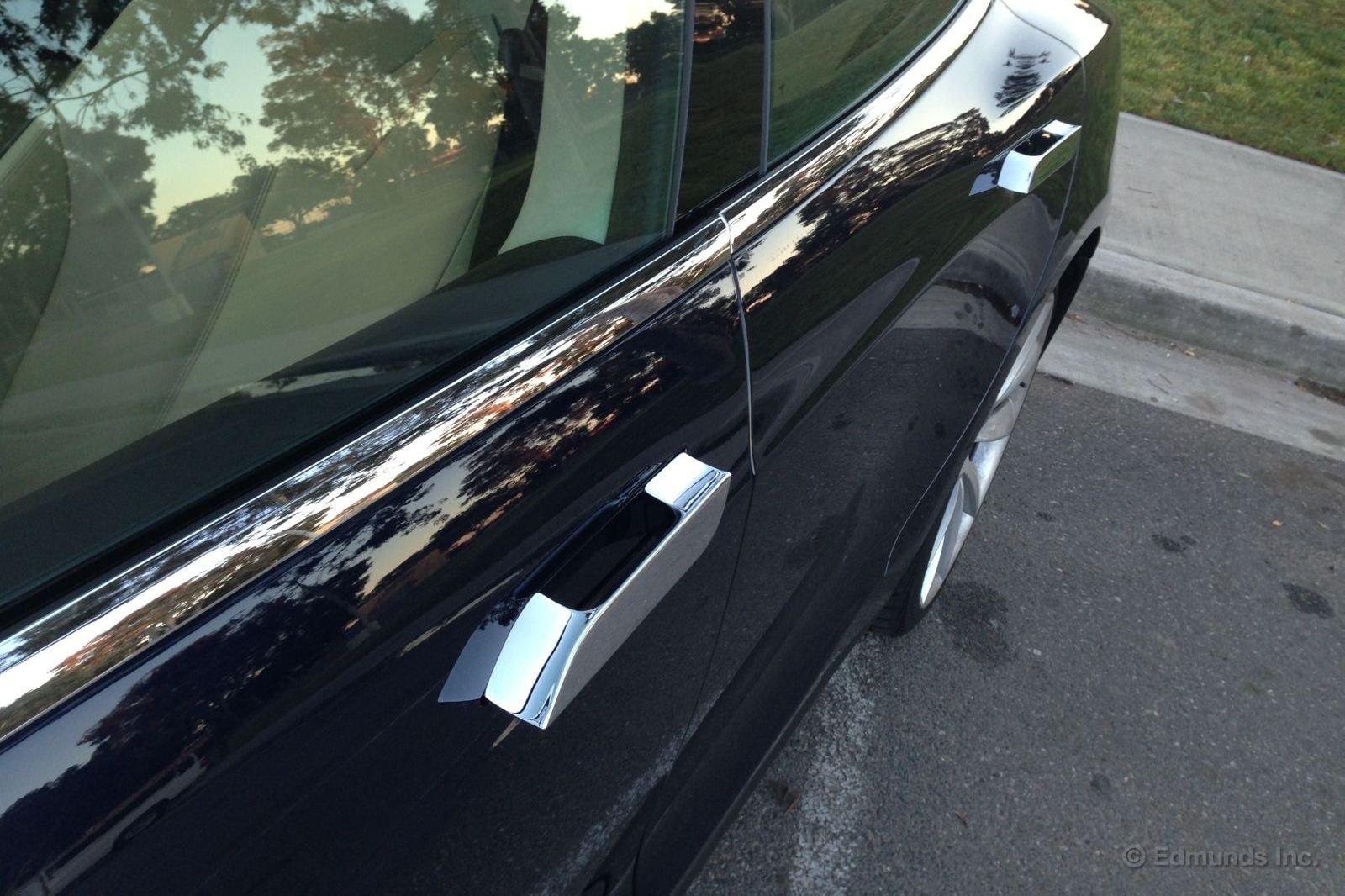
The sculpted door handles are flush with the side of the car. When you approach the car, the door handles sense the key is in your pocket and magically appear. This is so cool. But I found it produces problems. First, you might have your fingers in the handle when it retracts. There's a safety cutoff but it could give you a really firm handshake. Secondly, the handles don't always respond. Your car is your safety capsule and you might want instant access to it in an emergency, like if a bear is chasing you. Supposedly, a double click on the key fob manually opens the handles. But that didn't always seem to work.
The other problem I have with the car is general build quality. Closing the doors doesn't produce the super solid thunk we like in quality cars. There were a few sharp edges to storage compartments and unfinished details in the cabin. The back seat provides good legroom but one six-footer who sat back there said his knees jutted up uncomfortably.
And, finally, we wondered how the car will hold up as the years roll by. Still, based on the car we drove, it is a technological marvel, a magic carpet ride into the future.
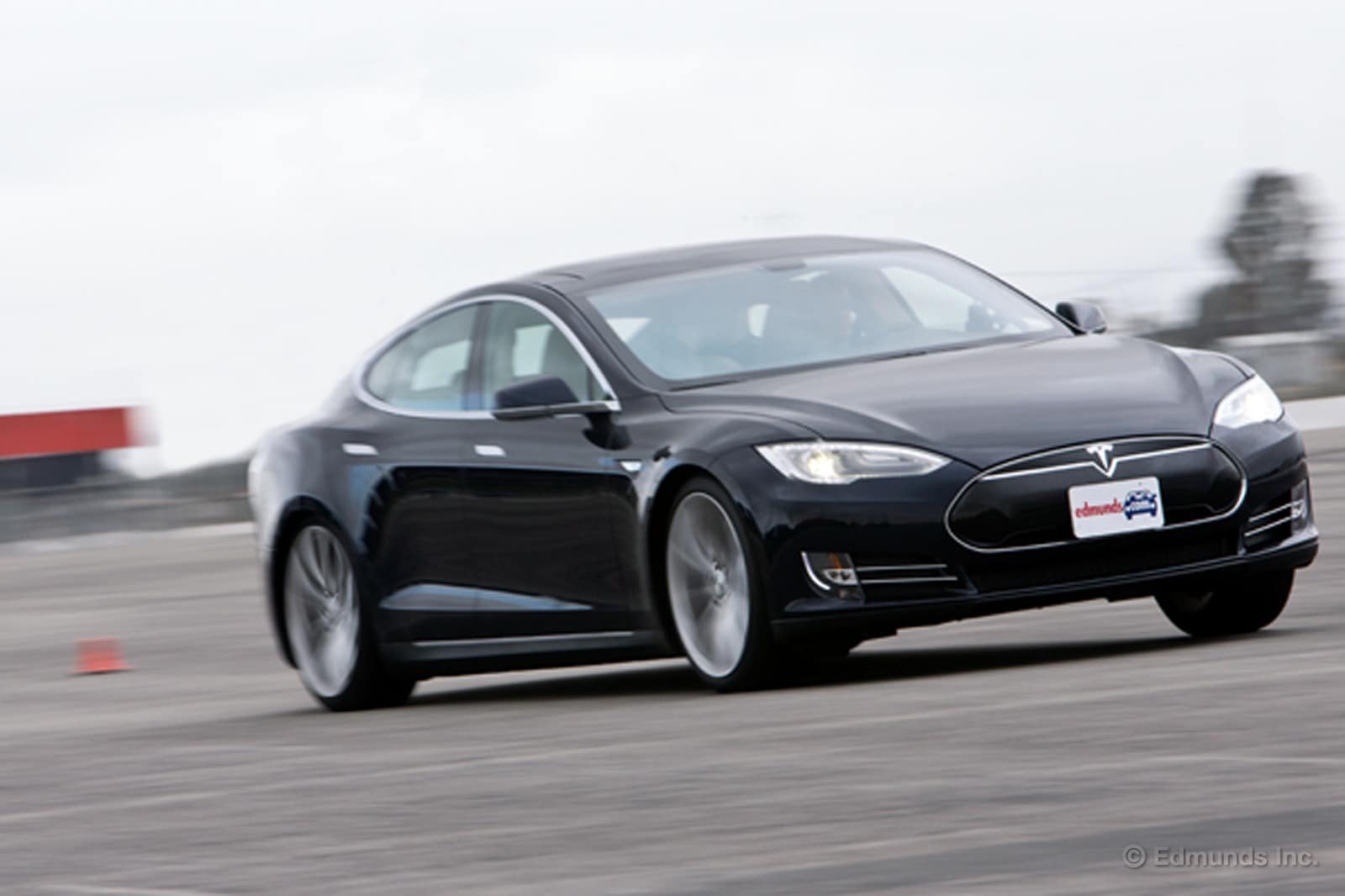
We finally took our 2013 Tesla Model S, which we bought and paid for, to the track.
To see how our big EV did on the track, click here.
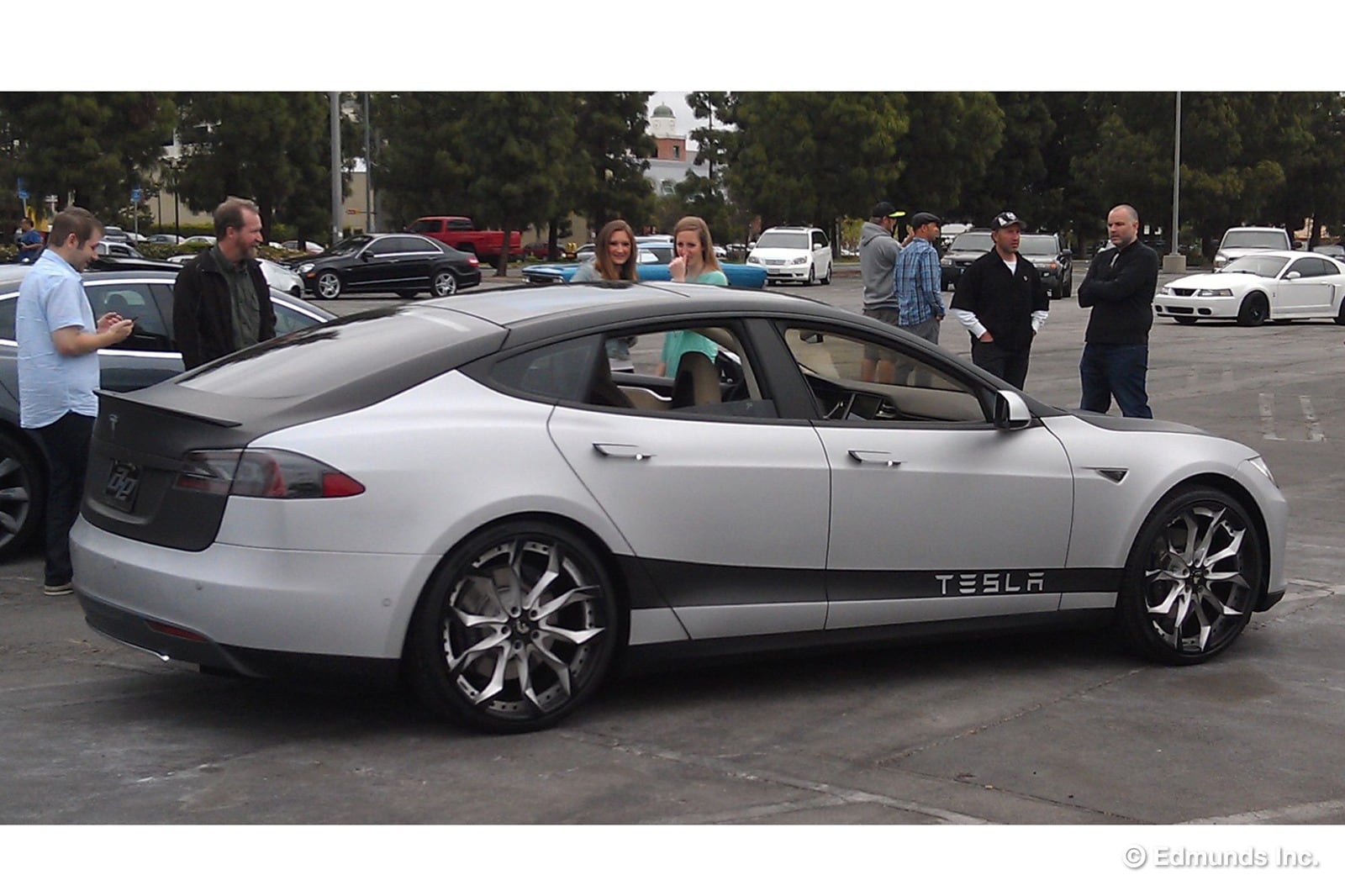
I saw this "personalized" Model S at Supercar Sunday recently. I don't know what your reaction would've been, but this was mine: https://edmu.io/9HQR
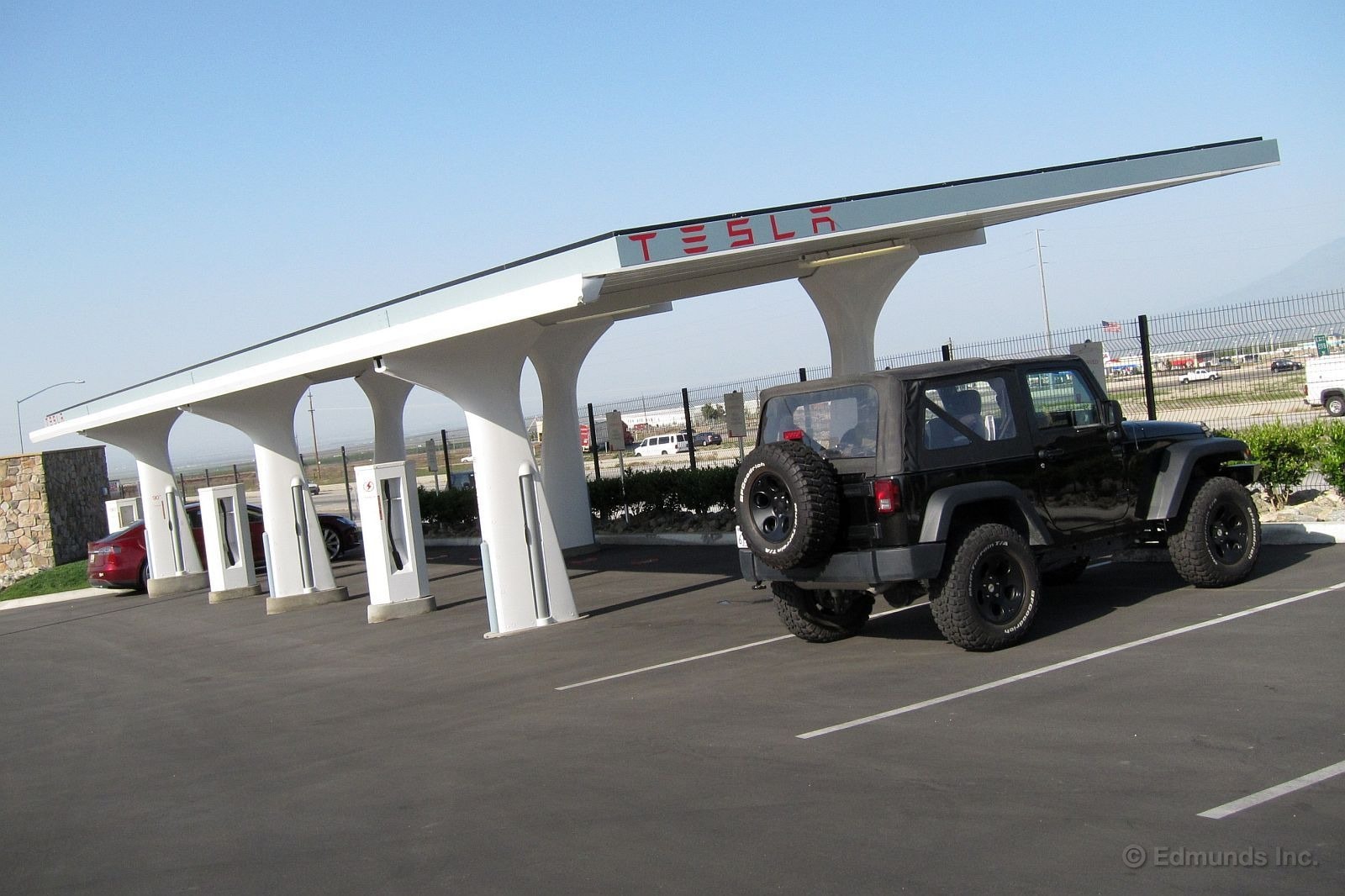
There I was, taking the long way to Moab, Utah in our 2012 Jeep Wrangler. My first stop was Buttonwillow Raceway to help out at the SCCA road races, but before I got there I peeled off Interstate 5 at Laval Road in Tejon Ranch for some sustenance.
"There's a Tesla Supercharger around here somewhere," I thought to myself.
I found it just behind a Fro-Yo place and the Chipotle Grill. It's in the back corner of the parking lot, in fact. A Panda Express sits next door. There are several others, including an In-n-Out about a quarter mile away if you really want to stretch your legs. A nice motel stands just across the street not 100 yards away if you feel the need to spend the night.
Bottom line: You'll have plenty to eat while your Tesla Model S quietly recharges in something like 30 or 45 minutes. And there are six available spots.
I met a happy Tesla owner from the Bay Area as he strolled out of the Fro-Yo place, the app on his phone having just told him his car was ready. He was headed to L.A. on his first road trip in his 2012 Tesla Model S Signature.
This charge would easily get him up and over the Grapevine and Tejon Summit, and the next public charger at Tesla HQ in Hawthorne would serve him during his visit and get him back here for the trip home. There are no credit card readers on these "pumps." Tesla does not charge for their use.
You can bet I'll try this out soon enough in our own 2013 Tesla Model S.
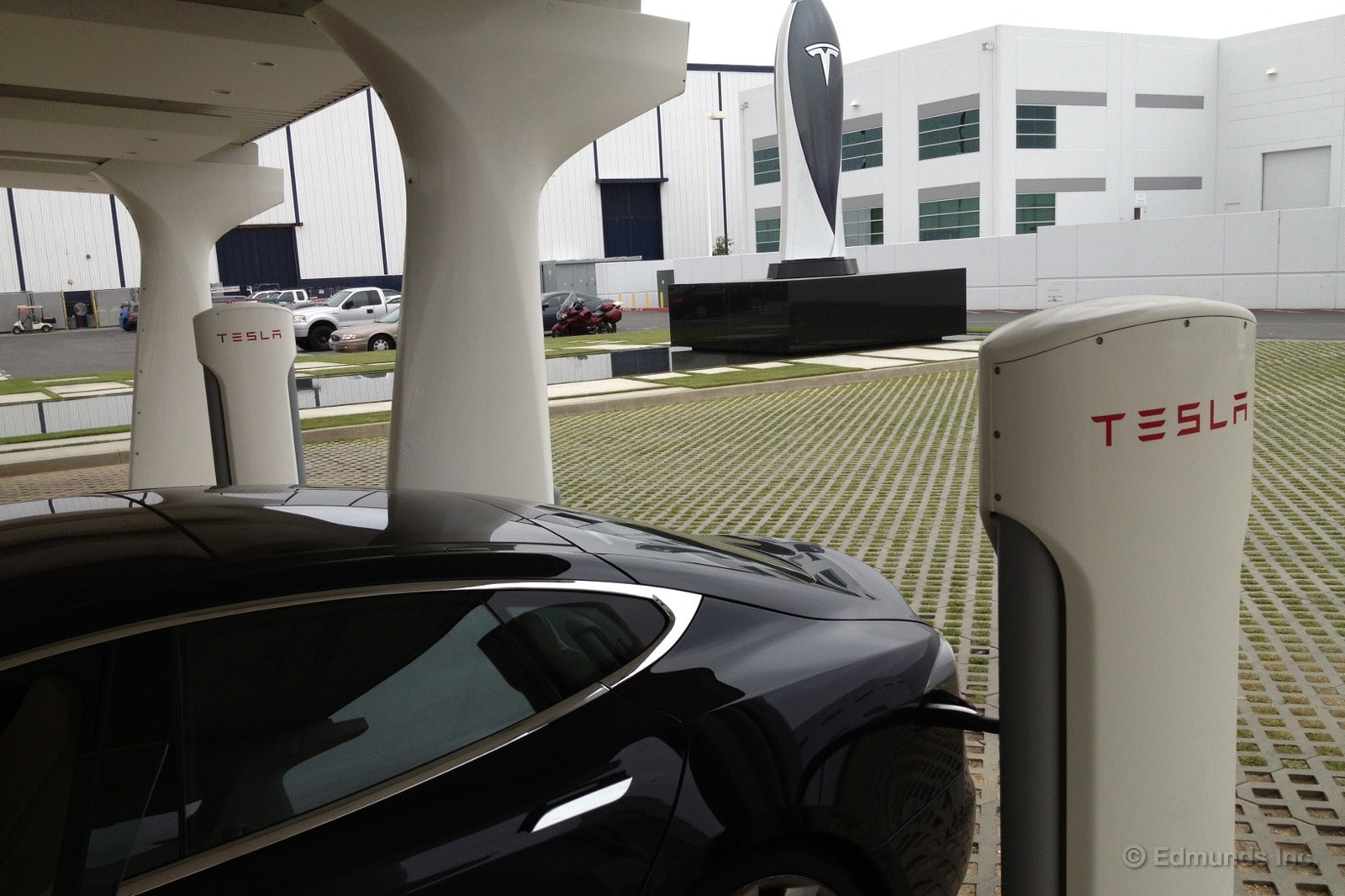
I had our 2013 Tesla Model S recently, and if I had just done around-town trips, I probably could have gotten by without charging the car. But in addition to the usual errands, we had plans for dinner and a jazz concert in Hollywood. That's 60 or so miles of driving. And then there were the "vampire losses," the 8-10 miles of range drop that happen overnight when the car is not charging. Added up, and it was definitely time for a fill-up.
Fortunately, one of Tesla's six supercharger stations is at Hawthorne Airport, a general-aviation field that's about 16 miles from my house. We pulled in with 86 miles of range remaining.
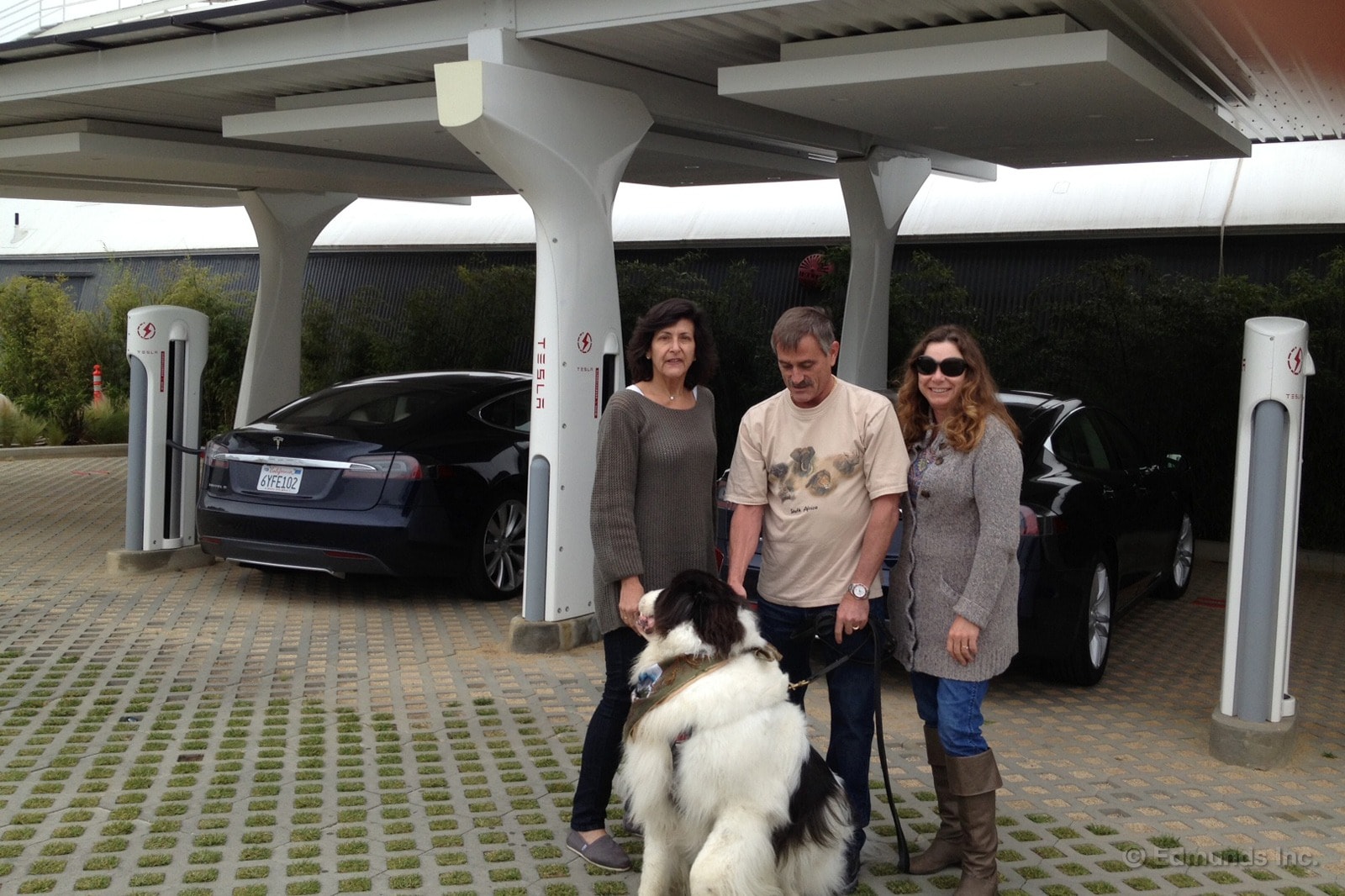
After seeing Phil Reed's pictures of a recent trip the Tesla Model S took to Las Vegas, I expected the superchargers to be a couple of columns in the middle of a ho-hum parking lot. But the Hawthorne supercharger is adjacent to Tesla's design studio, and next door to Elon Musk's other enterprise: Space X. It's a sleek, solar-powered five-station charger that's fronted by a grassy forecourt and Tesla's pickle-shaped monument to innovation, or whatever it's supposed to symbolize.
We weren't the only people charging: Two other Models S, including one that's a twin to ours, were happily sucking up kilowatts ahead of us. Teri, on the left in the photo, has had her car for two months and loves it, except for the fact that it won't run her iPod. (It's apparently just such a tired, 20th-century technology in the eyes of Tesla.)
Bill, in the center behind the gigantic dog, has had his Model S since November and has put more than 14,000 miles on it. He's planning a road trip to Portland.
Both like the social aspects of charging in Hawthorne, where several Models S typically collected on weekends. Teri said that it was here, talking to other owners, that she learned about California's $2,500 electric-vehicle tax credit. She knew about the federal credit, but the state's plan was a pleasant surprise.
After about 45 minutes, we were up to the standard charge level: 240 miles of range. And ready for anything.
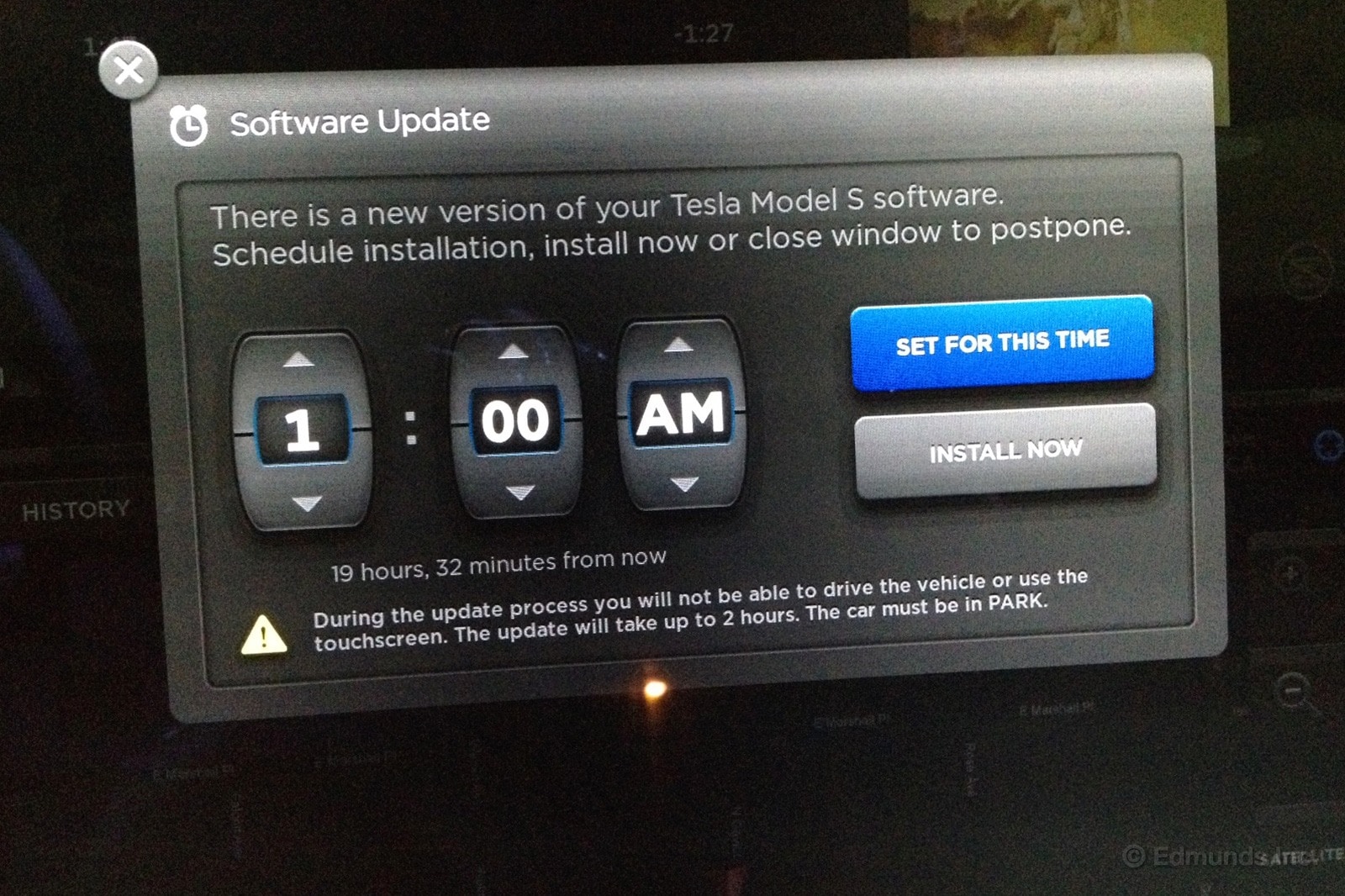
On Monday morning, after a weekend with our 2013 Tesla Model S, this screen was waiting for me. As soon as we complete the update, which takes about two hours, we'll let you know what changes it brings about, if any.
In so many ways, the Tesla feels like a piece of technology. It's just one that goes very, very fast.
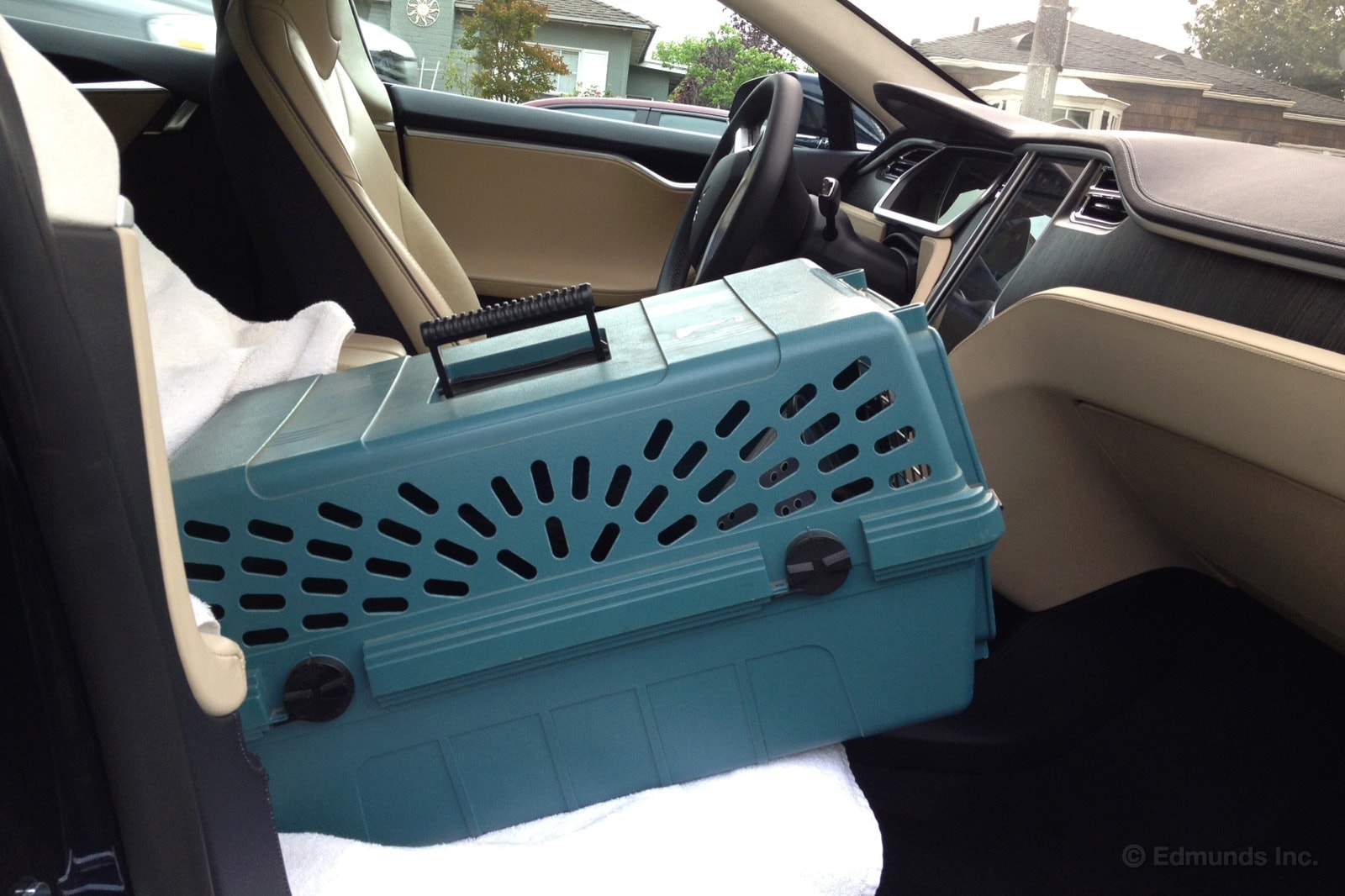
It wasn't glamorous or high tech, but one of the first tasks I had for the 2013 Tesla Model S was toting an unhappy cat, in his carrier, to the veterinarian. The Model S's wide doors and ample interior space for front passengers made it easy to get the carrier, and the 19-pound cat inside, into place.
The car's interior light interior is lovely, but makes me skittish. I put down a towel to ensure that the carrier wouldn't scuff or dirty it.
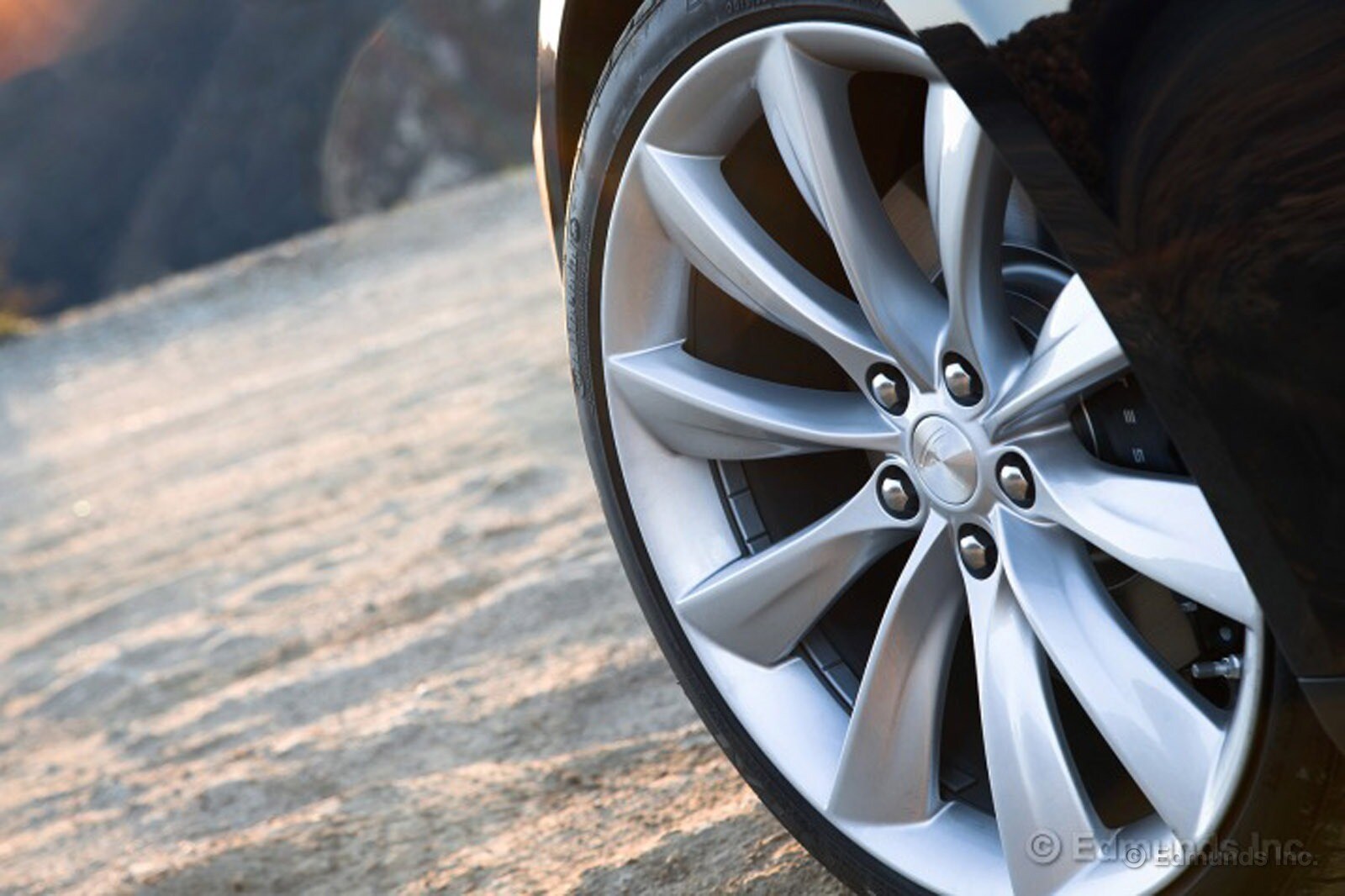
The 2013 Tesla Model S has so much going for it that it seems nitpicky to talk about what it doesn't have in the way of small amenities. But when you, or Edmunds.com, have paid more than $100,000 for a car, shouldn't it have what many luxury cars have?
The car would be more convenient if it had:
- Parking guides in the rearview camera: This is parking aid that the very, very wide Model S lacks.
- Lighted vanity mirrors: Serious, Tesla? You can't expect women to put on lipstick without better lighting. The little LED map lights do not do the job.
- Blind-spot monitoring system: If you can get this in a Mazda 3, why not a Model S?
- Less vulnerable wheels: The wheels on the Model S protrude beyond the sidewall of the tire and are extremely susceptible to curbing. Telsa would do owners a favor by rethinking this design.
I also was going to note that the outside passenger-side mirror doesn't tilt, but by reading through the Model S forum, it seems that the car does indeed have this feature. You just have to program it into your personal driver profile.
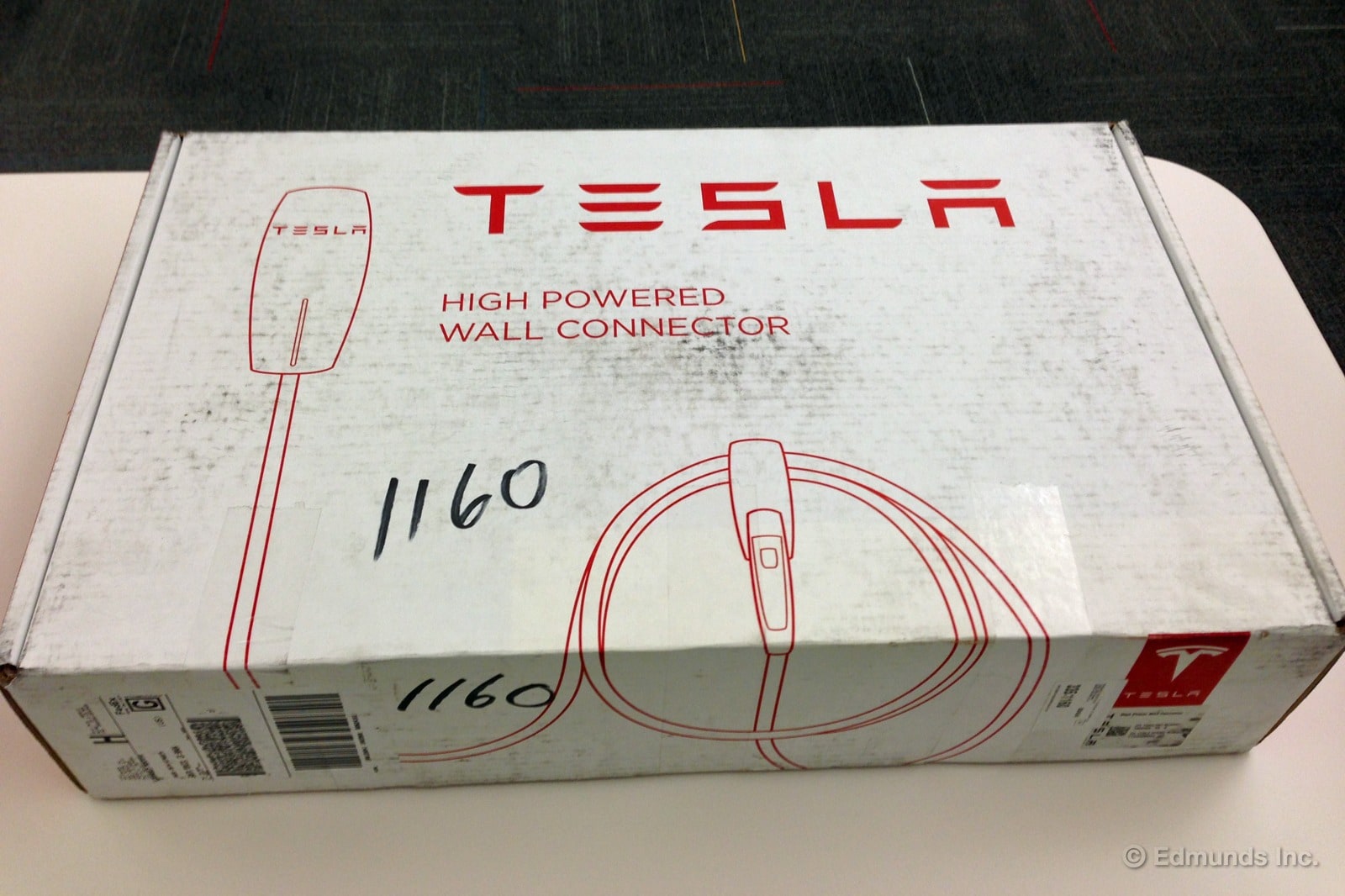
Our Tesla "High Power Wall Connector" has finally arrived. The HPWC, as the Tesla forum members call it, is a $1,500 option that allows the Model S to be charged at 62 miles of range per hour at 240 volts and 100 amps. This is the fastest you can get without having to trek down to a Tesla Supercharger location. For reference, the 240V Charge Point station we have at the office charges the Model S at 18 miles of range per hour at 30 amps.
We're glad that the HPWC arrived, but it took just over two months from when we took delivery of the car to make its way to us. In fact, we weren't even sure when it would show up.
We took delivery of the car on February 19. About a week later, I called Tesla customer service to ask about the HPWC. A customer service representative told us that it would arrive on March 31. That was a Sunday, so I figured it would arrive by the first of April. It didn't.
A few days later, I called Tesla customer service again. The Tesla rep didn't know anything about our charger's status. "They send them out from the factory and we don't get any information on them," said the rep. I asked for a tracking number, or anything else that would let me know that this thing was on the way. I didn't get one.
This thread on the Tesla forums was far more helpful. I learned that the HPWCs were on back order, that they were being shipped from the factory based on customers' build order and that a few people who took delivery of their cars in late October were getting their units delivered in early February.
If the HPWCs were shipping from the factory, shouldn't ours have been waiting in the trunk when we took delivery?
Ours didn't take as long as the early Model S owners, but two months and four days is still a long time for such an important component. Tesla eventually shipped it via FedEx ground with a tracking number and everything. It would've been nice to have that tracking information when the unit was shipped. Guess we missed the memo.
We're lucky enough to have a charger at the office, but what if we were a new Tesla owner and this was our first electric vehicle? Plugging it into a 120V plug is hardly doable, since it only charges the car at 3 miles of range per hour. Even if we were a loyal Tesla customer upgrading from a Roadster, the plug has changed, so we'd still have to rely on the HPWC. We could do what some other Tesla owners in the L.A. area do: get charged up at the Tesla Supercharger in Hawthorne, where Tesla has its design studio. But that's not meant as a long-term substitute for convenient home charging.
The temporary in-home solution is to call Solar City, Tesla's recommended charging equipment installer, and have the company put in a NEMA 6-50 outlet and 50 amp circuit breaker. I also gleaned this information from the Tesla forums.
"If you make your contract with Solar City, and your HPWC is not yet available, they will install a temporary 6-50 plug until the HPWC shows up at no additional charge," said Ceilidh, a Tesla forum member.
This leaves your garage about halfway ready for the HPWC and lets you plug in your car at 240V in the meantime. When the HPWC eventually arrives, the 50 amp circuit breaker will be replaced with a new breaker with up to 100 amps — if your home can support the extra draw.
We never received a call from Solar City. There was no business card or flyer in the HPWC box. Tesla's Web site mentions that Solar City is the recommended installer, but doesn't give the number to call or offer a link to the company's site. I Googled "Solar City" and found the phone number on the company's official Web site.
We'll be giving Solar City a call soon and let you know how the installation goes.
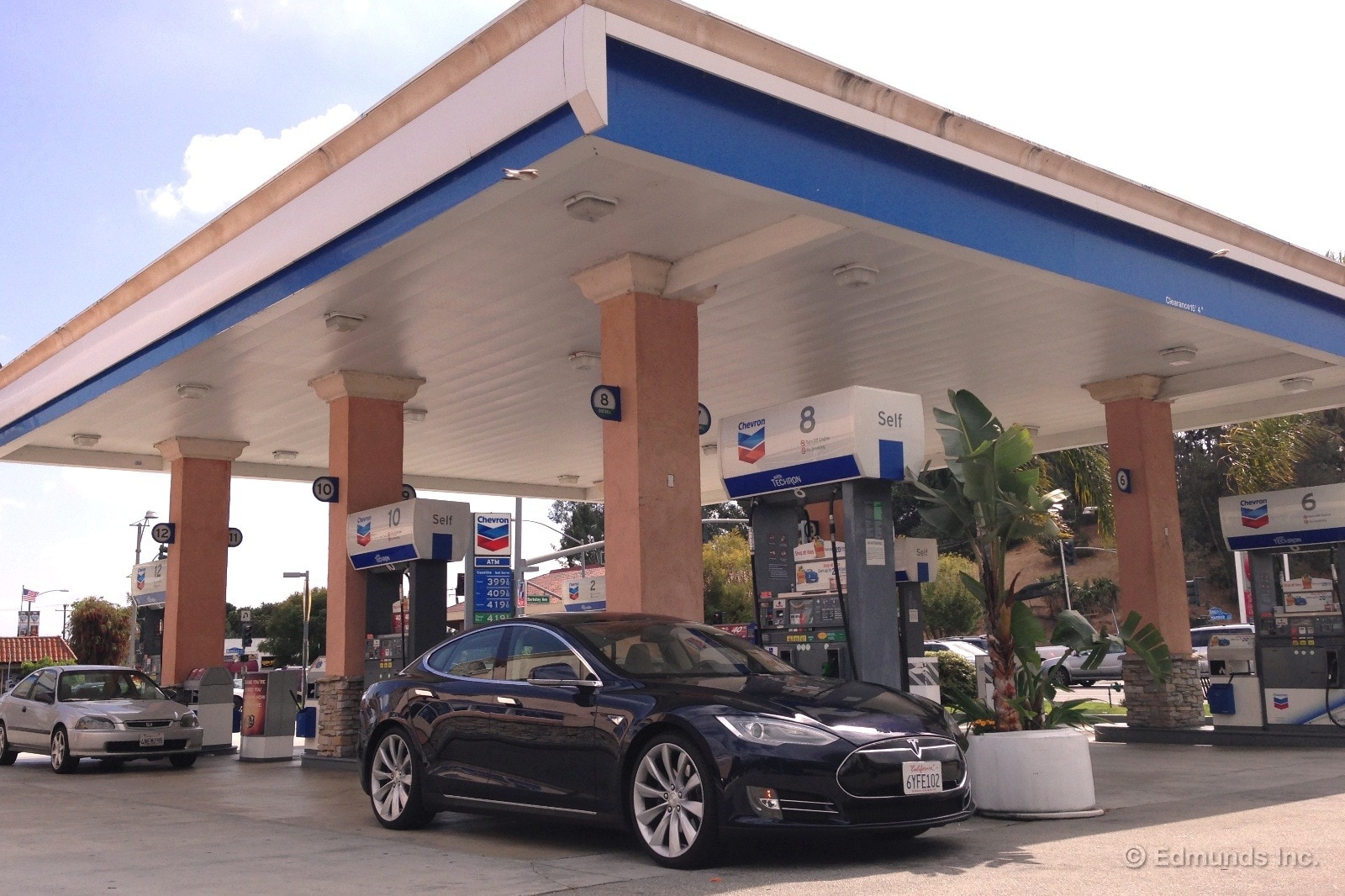
Only eagle-eyed readers will spot what's wrong with this photo. Can you?
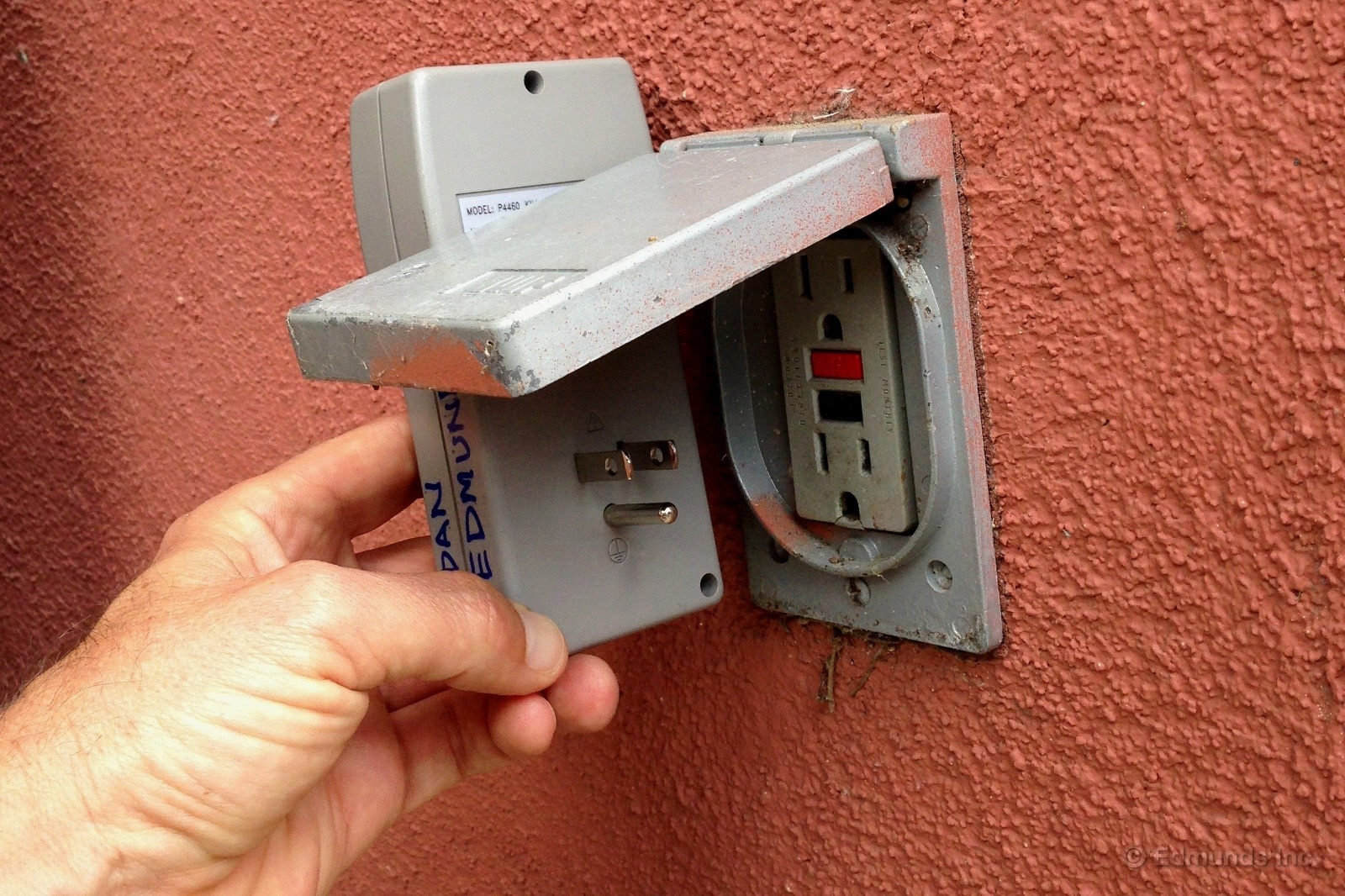
After driving our 2013 Tesla Model S home, I snapped this photo and sent it to Director of Vehicle Testing, Dan Edmunds along with "We don't have clearance Clarence. I'll check the garage for a nearby outlet minus cover." To which Dan replied, "If nothing pans out, I guess you'll have to charge without recording."
It turns out our "Kill A Watt EZ" gauge we use to record how much electricity goes into the car's batteries won't mate with my outdoor outlet with the big, flappy rain cover.
Click through to see what my electricity usage looked like after I plugged in the Tesla
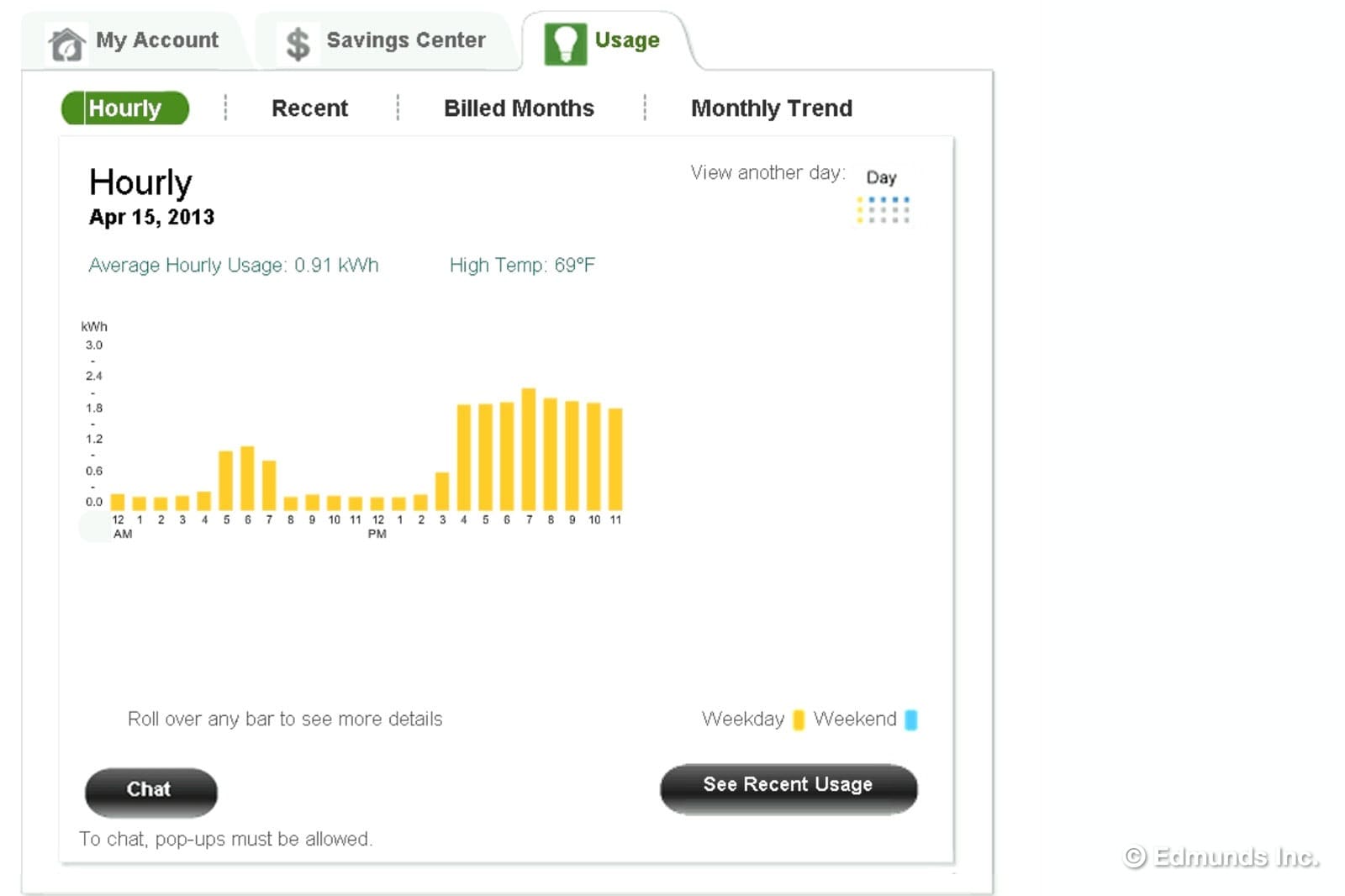
My neighborhood recently switched to smart metering that allows me to log in to my account and view monthly, daily, even hourly electricity usage. So, after discovering the rogue outlet, I went inside, clicked on a few lights, opened the garage door, found no nearby outlet, so connected the Tesla to the outdoor outlet without the gauge at approximately 4:00 pm on April 15th, 2013. Bam! I wonder how to submit an expense report for the electricity. Hmmm.
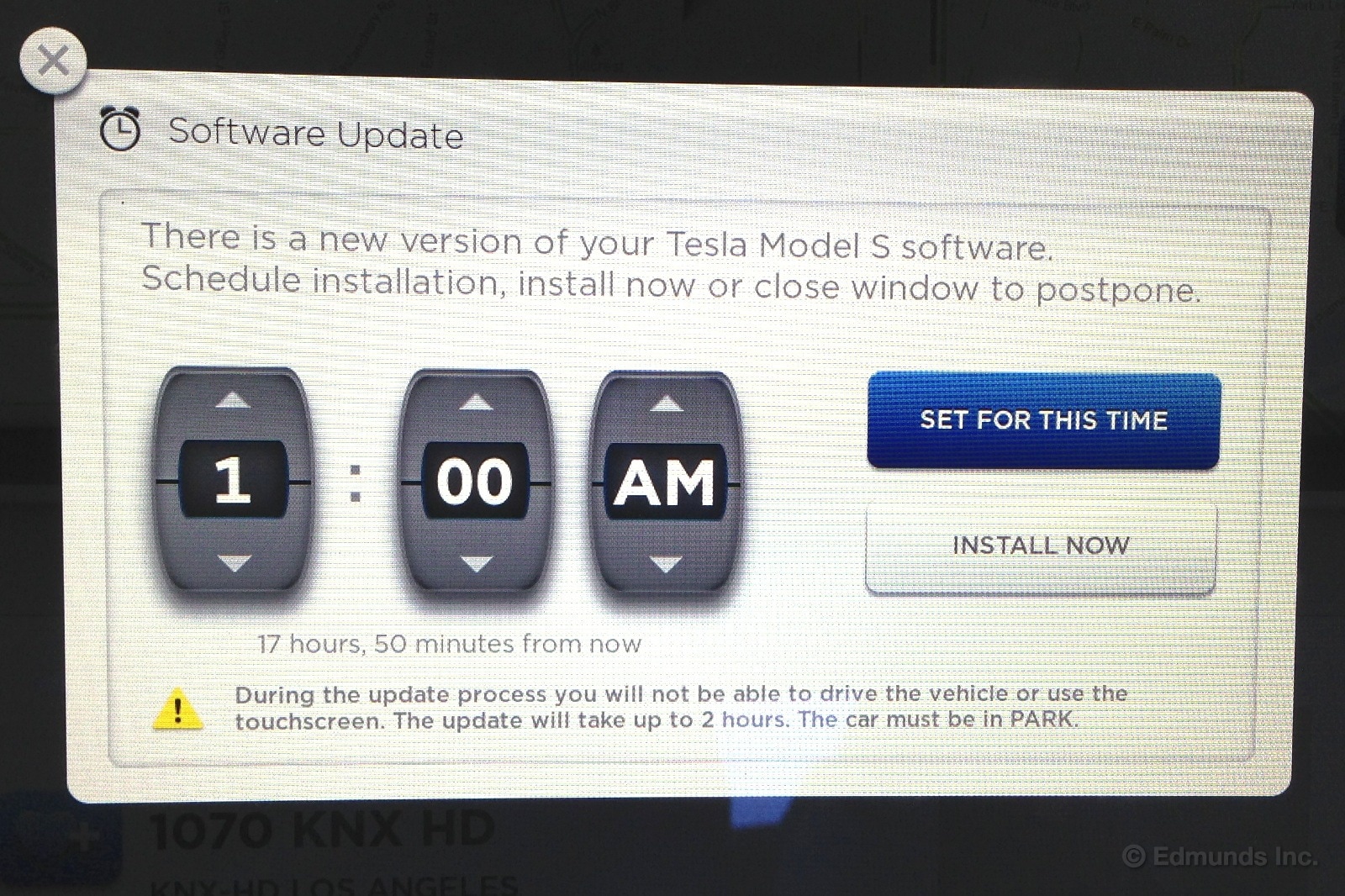
I sat in the car. It awoke and alerted me that it wanted a new software update. Neato. Even neater, you don't need to visit the dealer/service technician and it does it wirelessly. Because it requires the car be parked for up to two hours, the car allows the update to be scheduled during the wee hours of the night. I assume it all worked at 1:00 a.m. as it was programmed to do.
Click through to see what the software update entailed.
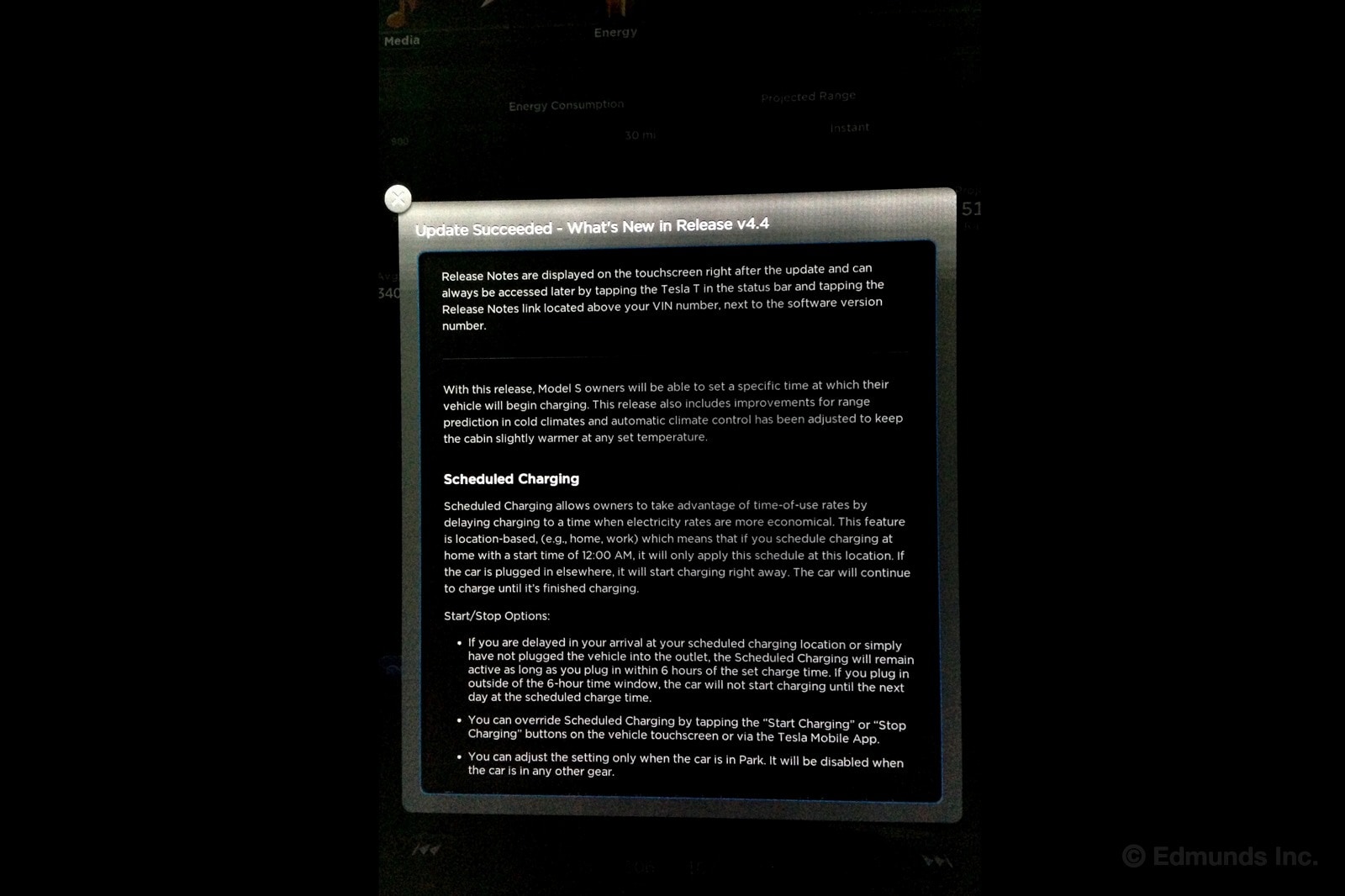
The next morning, I found this screen displayed. The software updated several things: Owner-scheduled/programmed charging (for those cheaper, nighttime electricity rates), improved range prediction in cold climates, and an adjustment to the climate-controlled cabin temperature.
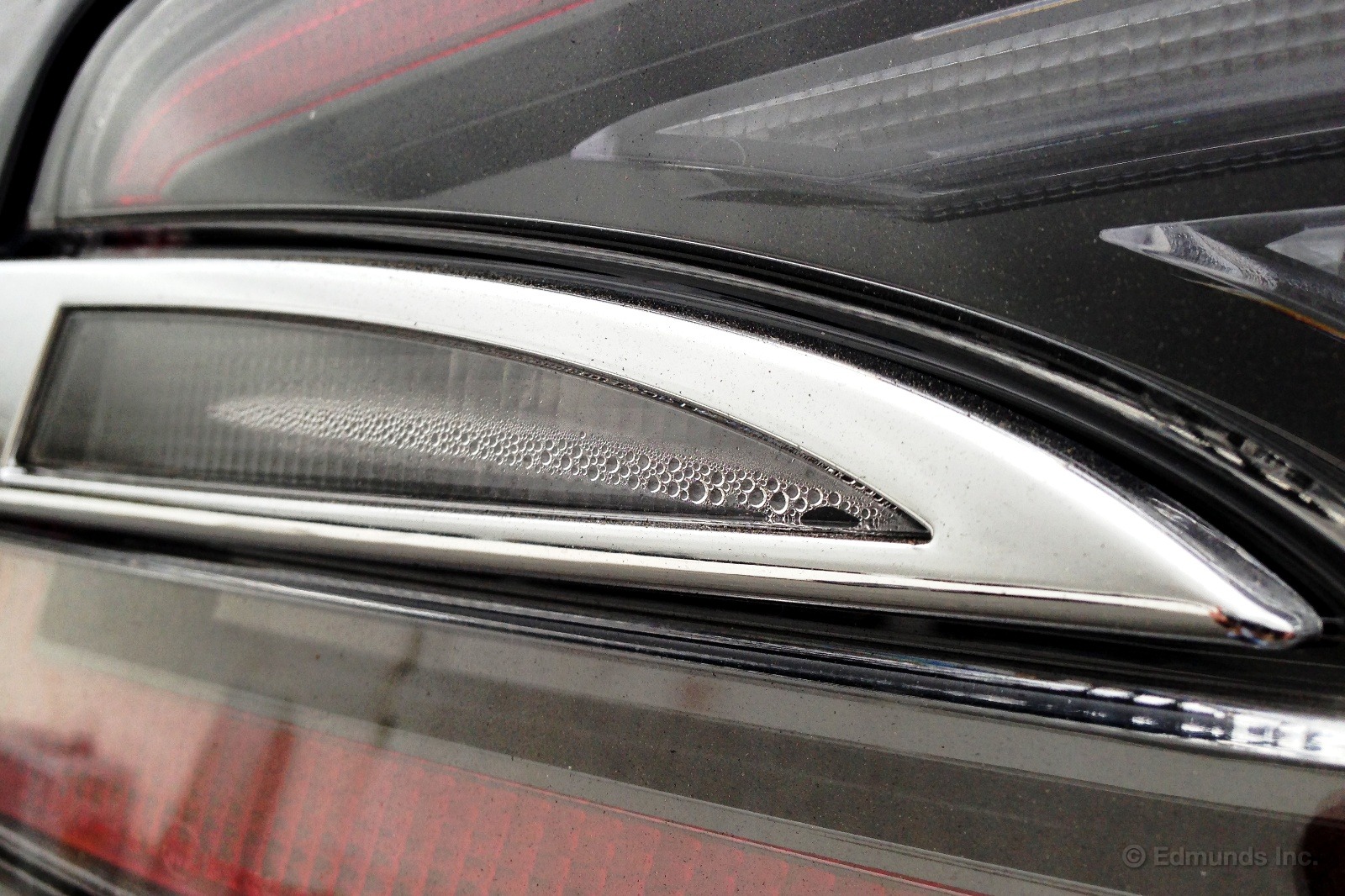
Yup, our 2013 Tesla Model S is an exceptional car for myriad reasons, but just like any other car, sometimes a vigorous washing or cracked lens allows moisture to get behind or condense onto the lenses of lights. I'm not going to attempt the repair myself. We'll put it on the list for the next scheduled service visit.

We recently performed the first track-test of our long-term 2013 Tesla Model S, and during the 60-0 mph braking test, this message flashed up on the screen and on the instrument panel as well.
I poked around for a few minutes looking for a screen that displays individual tire pressures to no avail. I got out of the car and made a visual check for obvious deflation.
Nope. I was wheeling the car back to staging to put a gauge on each tire when the message simply disappeared from both displays. Huh. I wonder what happened.
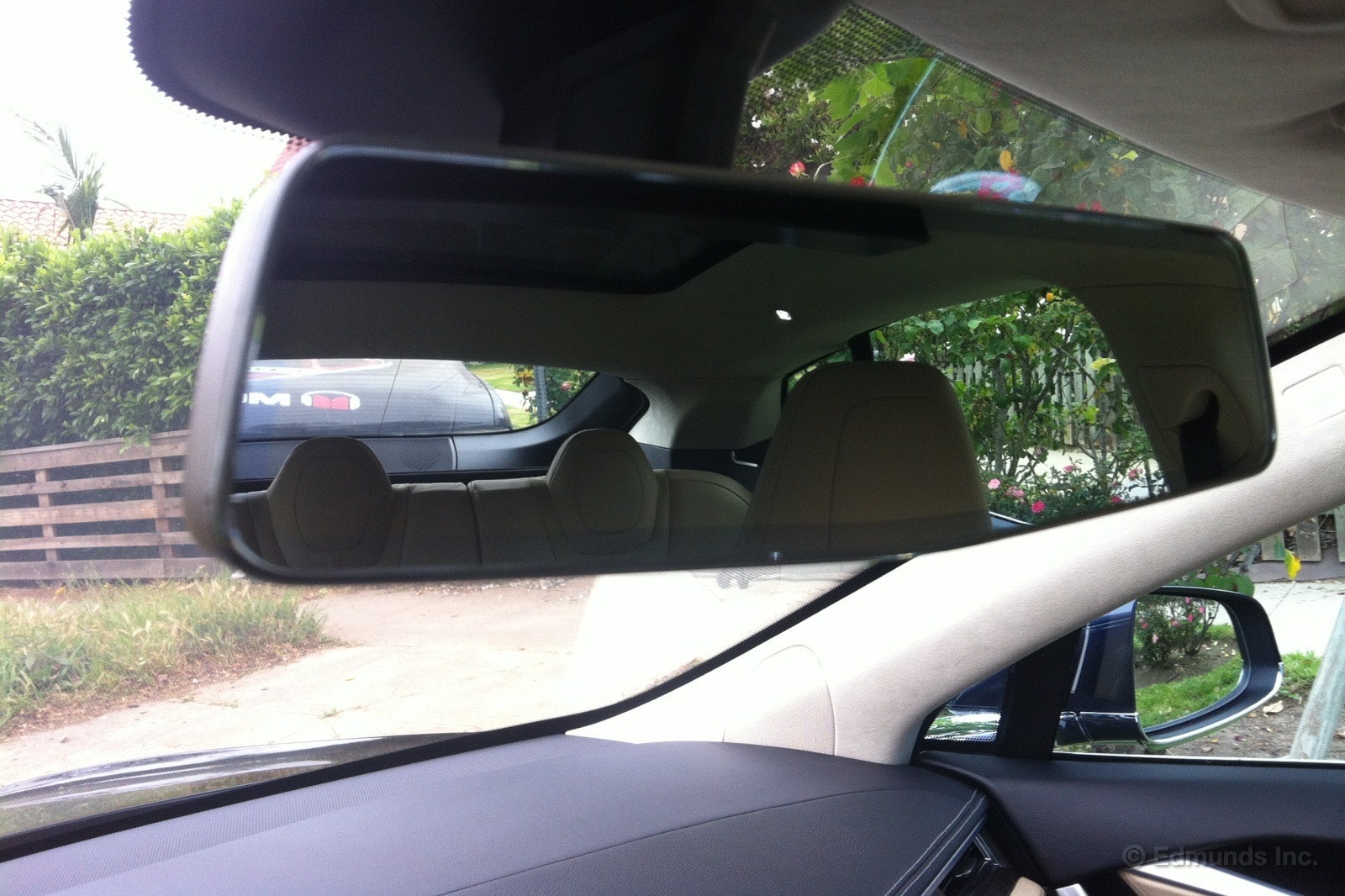
Range this, charge times that. Here's something about our long-term 2013 Tesla Model S that has nothing to do with the fact that it's fueled by electrons. Check out its rear-view mirror. See that? It's all mirror. No clunky plastic bezel. No HomeLink buttons or GPS beacon or a full complement of patio furniture or a frickin' laser beam on its head.
It may look all arty, but it's the function of the Model S's mirror that grabs my attention. Every square millimeter of its surface is devoted to its primary function of presenting the view behind you. This way, the mirror obscures the least possible amount of the view through the windshield.
'Course, there is that fat plastic thing right above it...otherwise, this is an example of a detail done right.
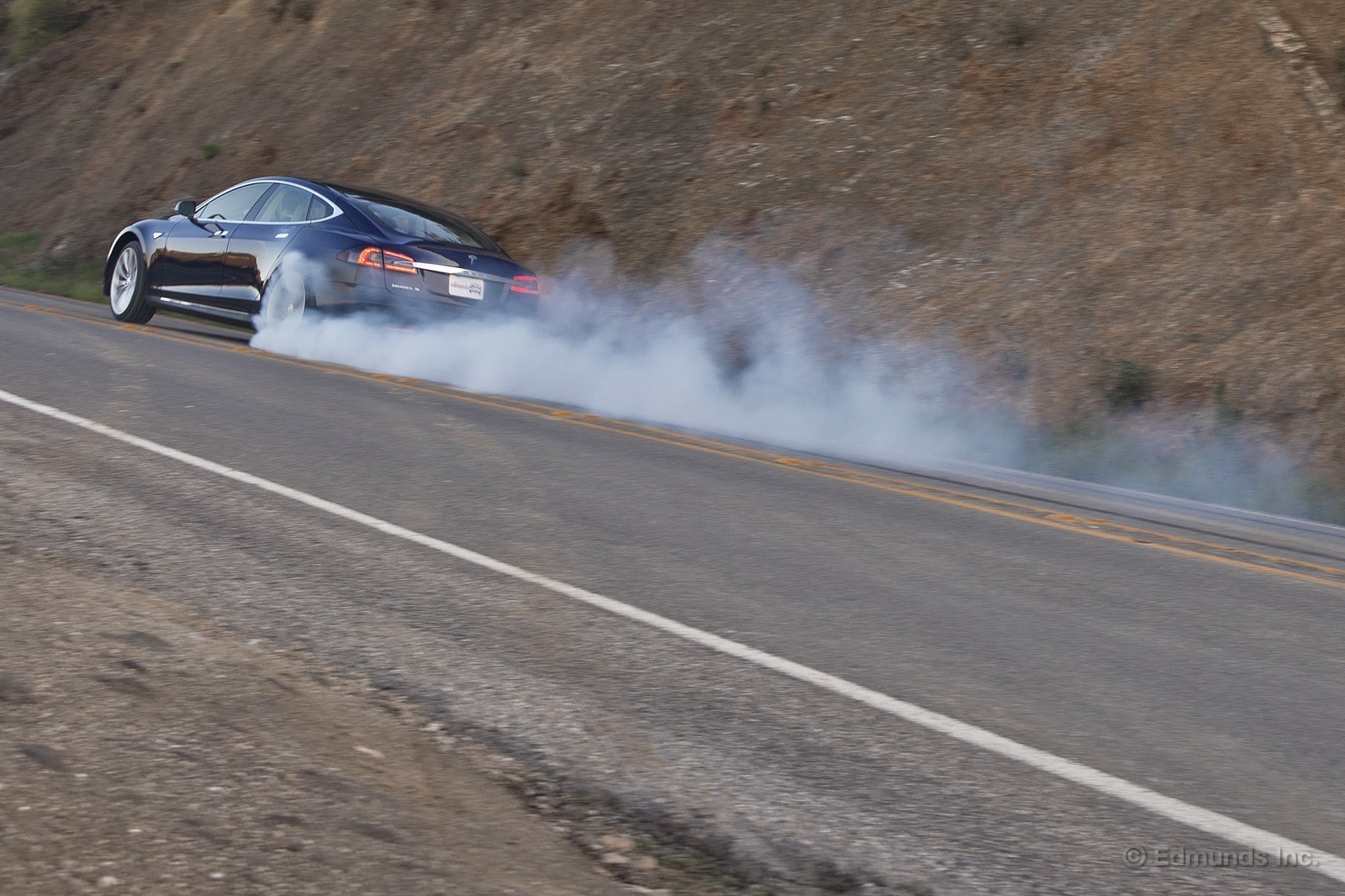
Our long-term 2013 Tesla Model S hauls the mail. The thrust available underfoot when trundling along at city speeds is immense. When you floor it from a low speed, the Tesla delivers an instant, seamless wallop of potent, even giddying, acceleration.
Of course, tapping into that thrust consumes range at an alarming rate. Based on a very unscientific test, I determined the Model S's rate of range loss at full whack to be about one mile per second. That is, if you hold the right pedal to the floor for five seconds, you'll lose five miles of range.
Get frisky with the accelerator often during an extended drive and it might wind up even more extended than you'd planned.
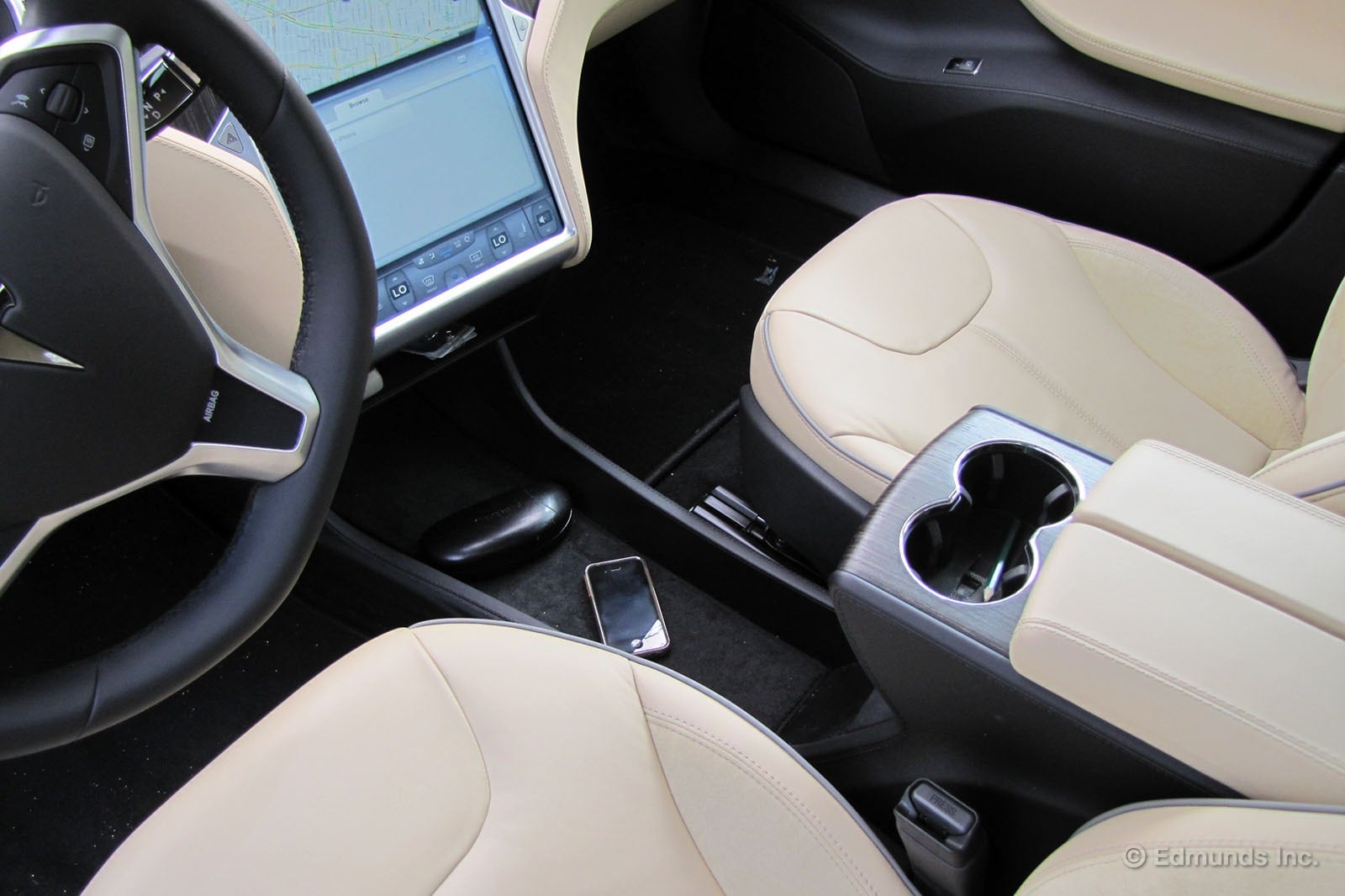
I don't understand the Tesla Model S's center console, or rather its lack of one. There's just a carpeted strip on the floor with little walls on the side. It's basically a gutter. Is this appealing?
Now, I can certainly see some appeal, in theory. My mother is the proud owner of the previous-generation Honda CR-V and loves that the open space between its seats is a perfect place to store her purse. She also likes how nice and open it makes the cabin feel.
However, that CR-V still has a large bin to securely store items, especially those of value you'd rather not leave out in the open. The Tesla has only a small shelf under the giant screen and an average-sized glovebox. The armrest also doesn't have any storage. There are two cupholders and that's it. Essentially, common in-car items like sunglasses, garage access cards or your phone go on the floor.
I'm not sure how the gutter is favorable to some sort of clever bin system that would include more and/or better cupholders? At the very least, couldn't such an alternative be an option?
As it is, do owners actually like the gutter? I just don't get it.
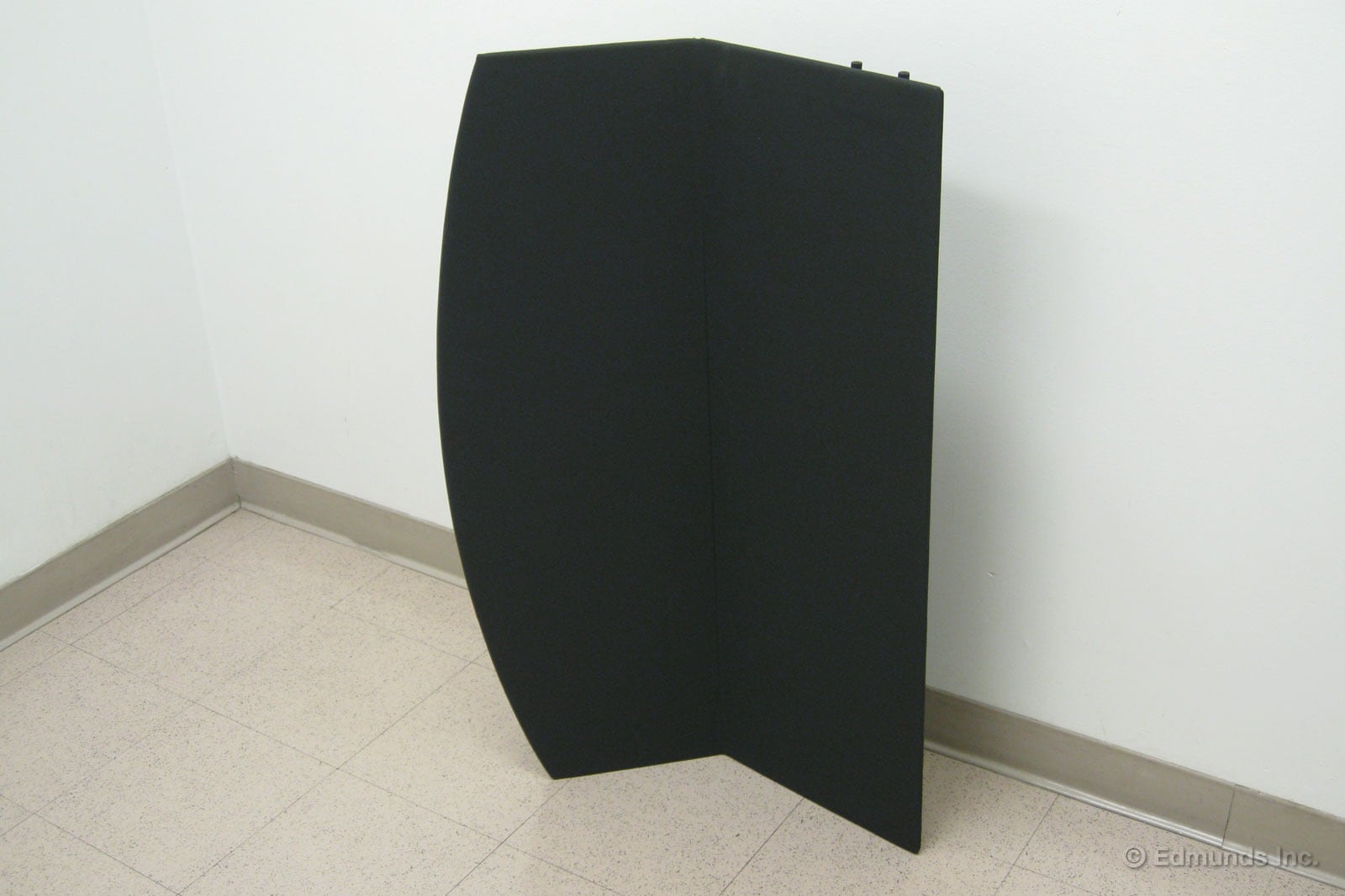
Six weeks after taking delivery of our 2013 Tesla Model S, the cargo cover arrived. It was disappointing that we had to wait so long for the arrival of the $250 optional cargo cover, which Tesla prefers to call a parcel shelf. But that was nothing compared to how long we waited for the charger to show up.
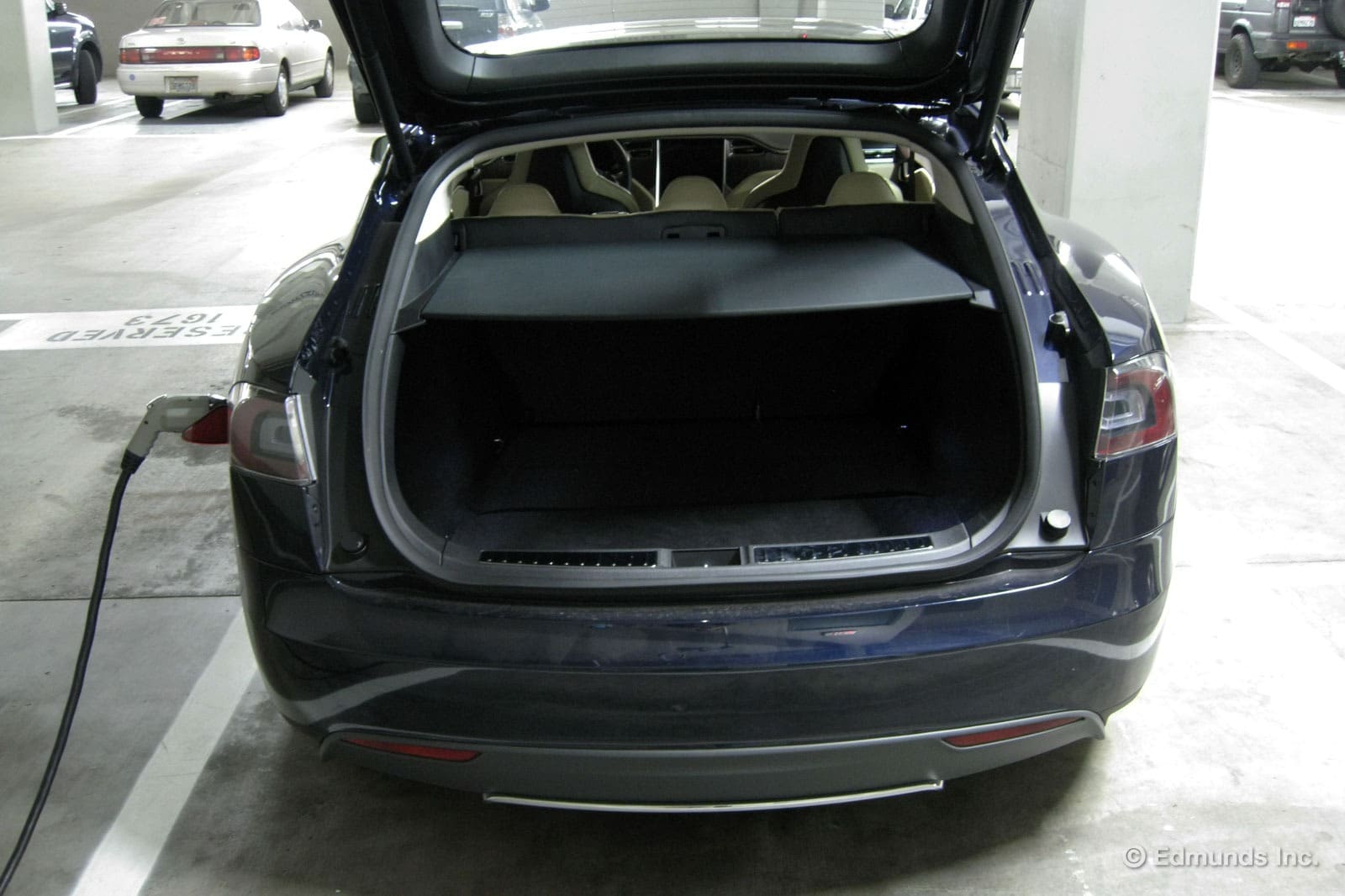
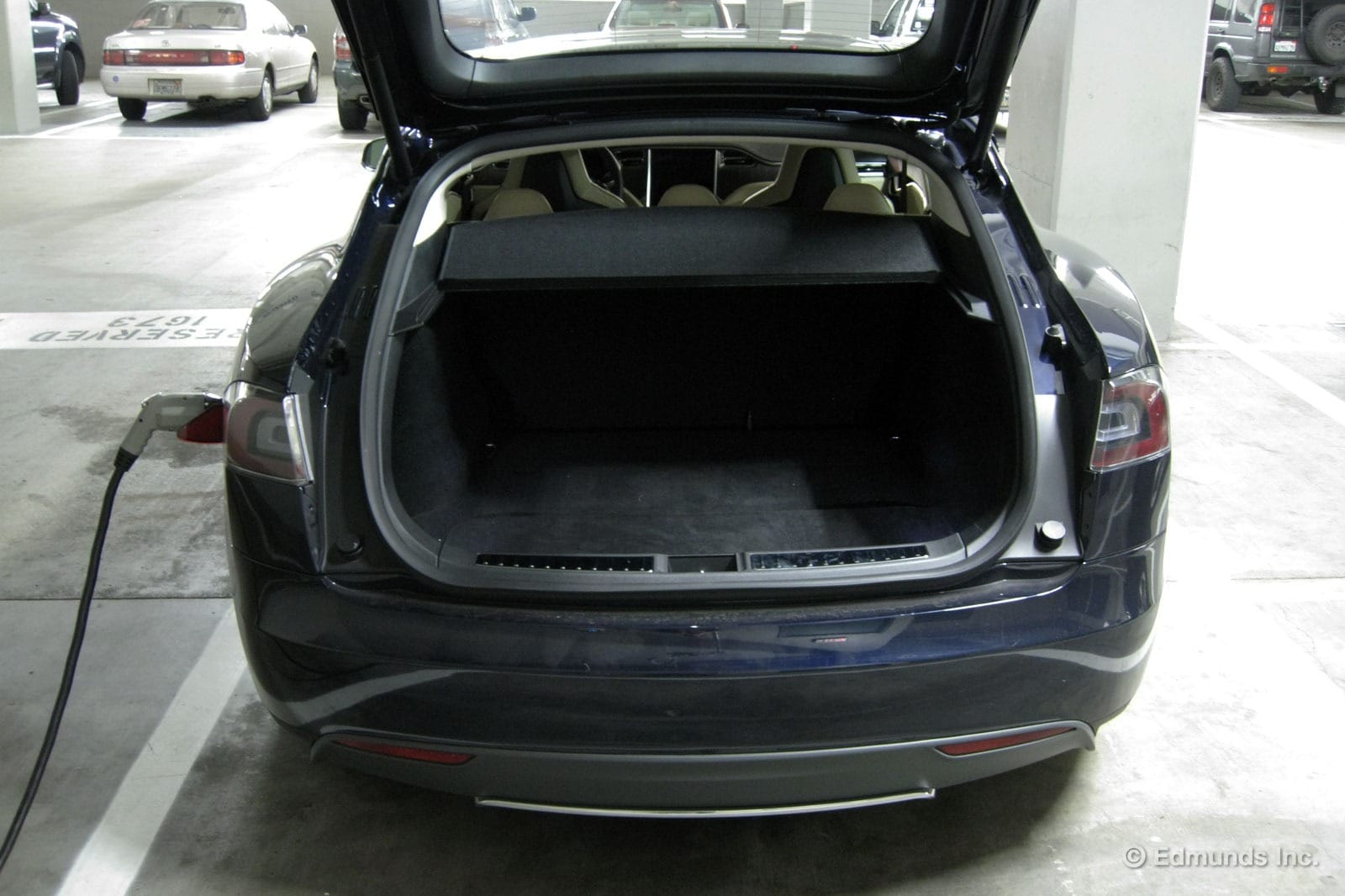
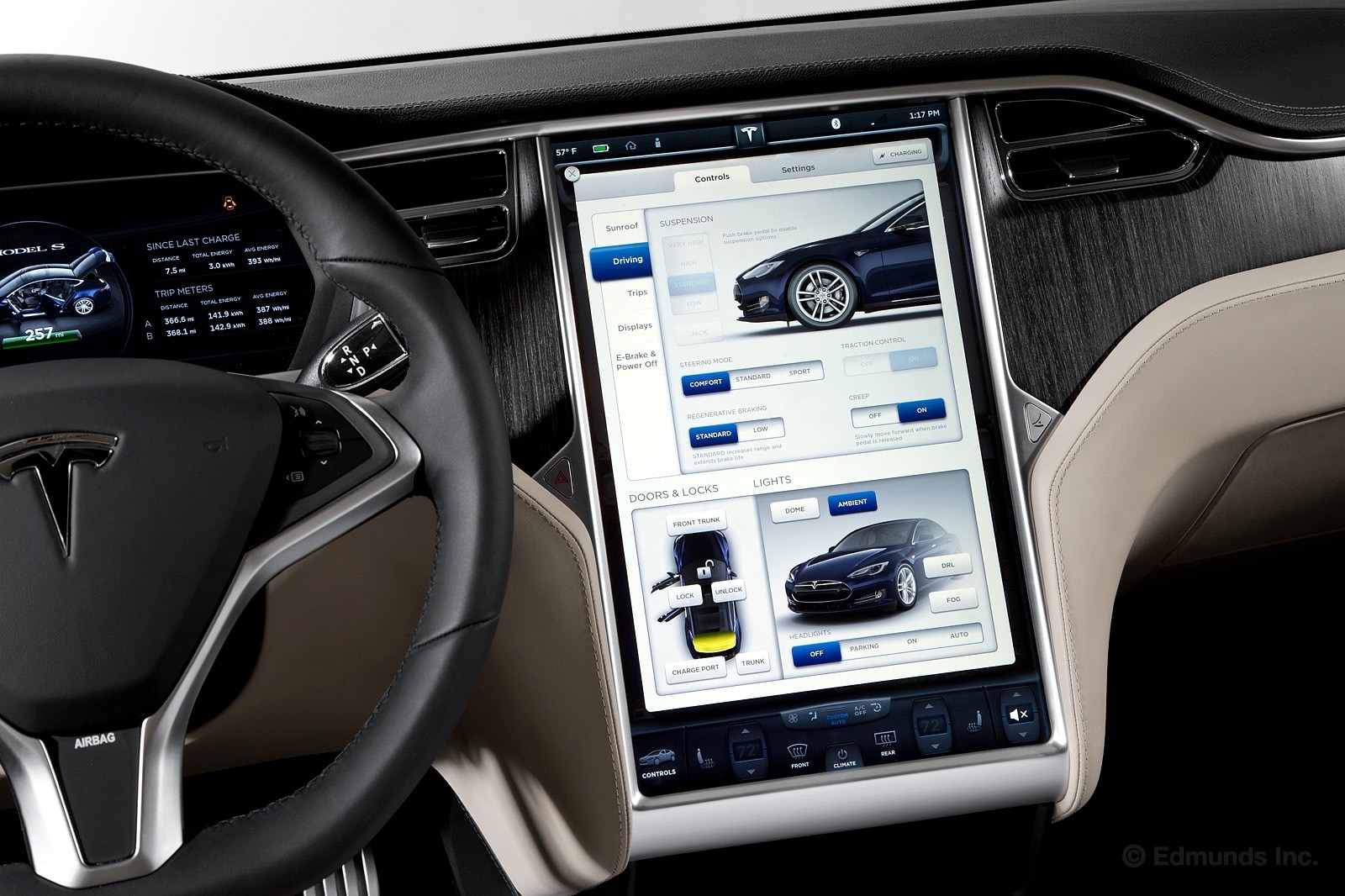
The primary display screen on our 2013 Tesla Model S went blank, again. If you are keeping track, this is the third outage in three months of ownership. A recap follows...
Our local Tesla dealer replaced the screen the first time this happened. The second time a reboot put things back on track. This time was much like the second. The car operated fine, but the blank screen was annoying. After the two-button reboot, a trick every Tesla owner should know, the screen returned.
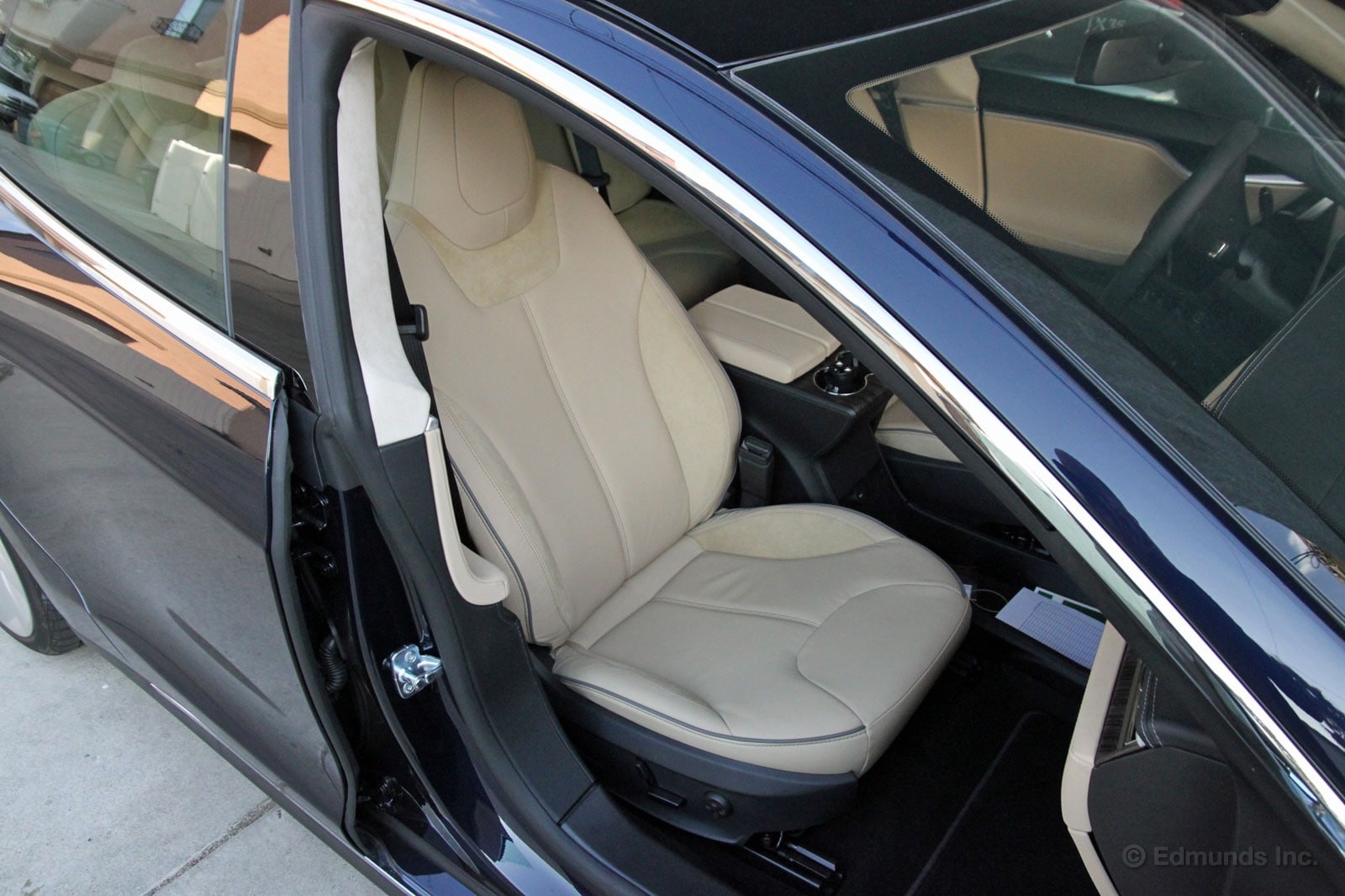
As impressive as our 2013 Tesla Model S is for a pure electric car, it's still a very expensive car in general. And with a price tag of well over $100,000, there are certain expectations that come along with it.
For me, that means a great set of seats, at least for the driver and front passenger. In the Model S, the 8-way adjustable front seats are pleasantly comfortable. They have a good shape, nice materials and a decent amount of adjustment. But as luxury cars go, they're nothing special.
In the Audi A8 L 4.0, which starts at around $88,000, the standard seats have 18-way adjustment and can be upgraded with massage and cooling functions. Not exactly necessary, but nice to have if you're shelling out such money for a car.
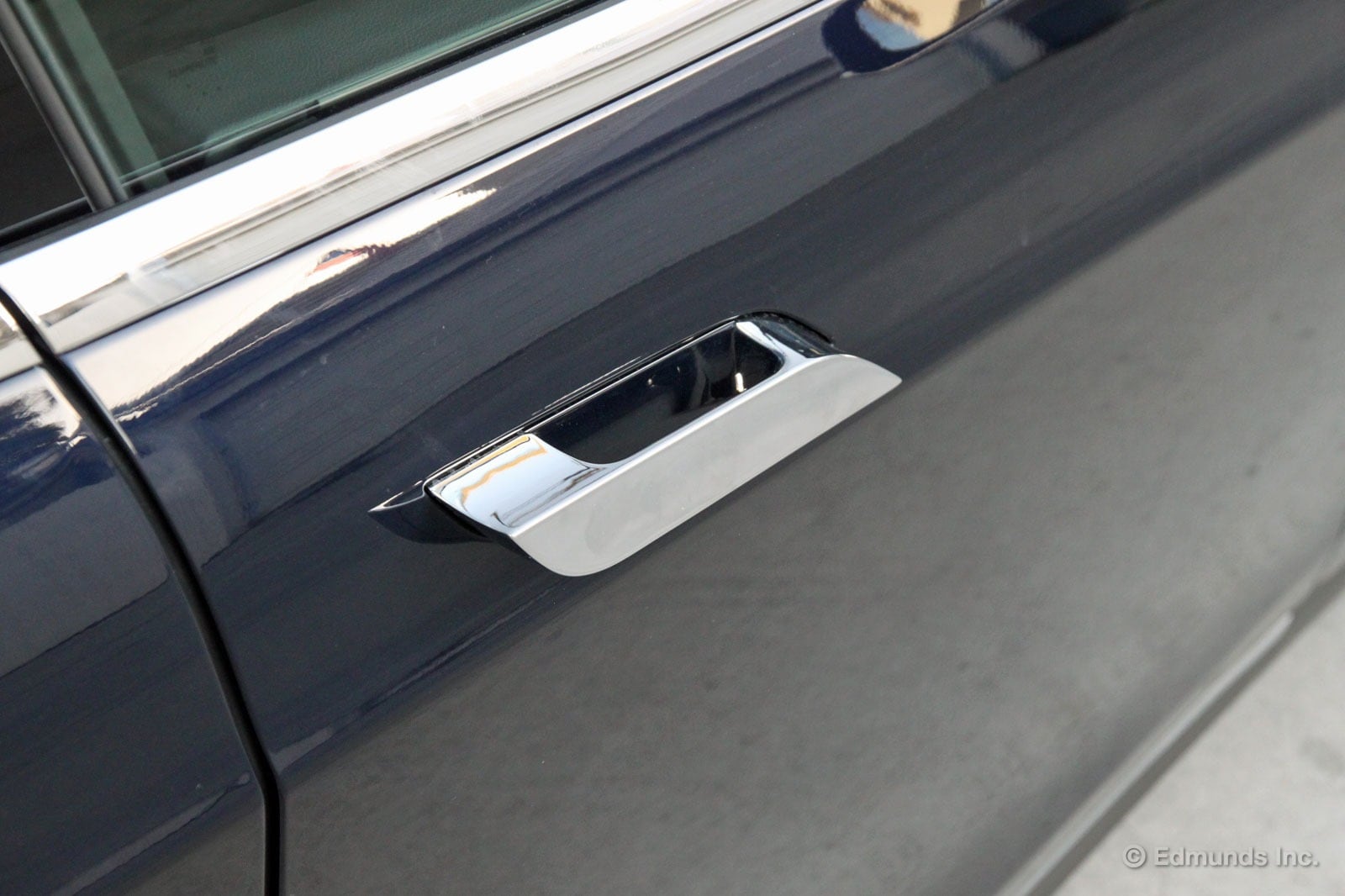
The door handles on the 2013 Tesla Model S are one step away from being great. Allow me to explain.
For one, they're well designed. When they're retracted, they blend nicely into the contour of the door. When they're deployed, they have a simple, functional shape that easily fits the biggest hands.
Then there's the feel. They're solid as can be when you grab them, like giant hunks of raw metal. You don't expect that given the car's aluminum bodywork and general preference for keeping things lightweight.
And now the downside. They're really just big beautiful buttons. When you grab them they don't unhook a sturdy latch, they merely fire a small motor that pops the door open similar to the touch pads on a Corvette. The handles themselves don't move at all, except to retract into the door.
I'm sure there are plenty of good reasons why they function the way they do, but I would love it if they worked more like traditional door latches. Not many cars today have a solid feel when you grab the door. Even the most expensive luxury cars often have small plastic handles that convey little in the way of heft. The Model S could have scored a few points in this category over its traditional rivals, but oh well.
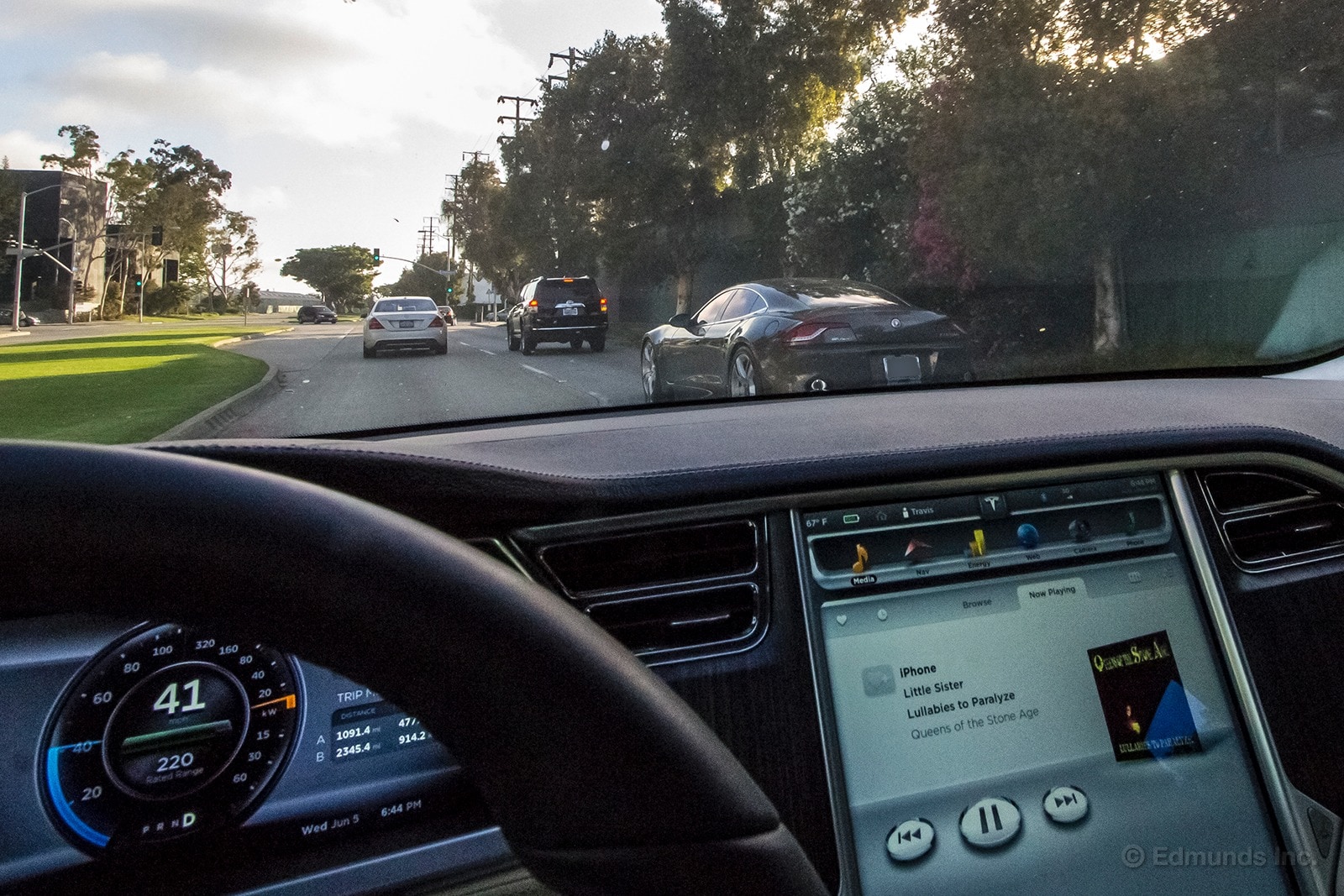
As I drove our 2013 Tesla Model S home last night, I passed a Fisker Karma. After passing the Karma and giving a "Yup, we both love the environment and have $100K to spend on it" nod to the driver, I couldn't help thinking about the vastly different directions these companies are heading.
The Karma is on its way out, while the Model S is the favored new kid on the block (at least in Southern California), but why?
Fisker Automotive has been plagued with troubles like battery supply and recalls, the loss of over 300 Karmas during Hurricane Sandy, and the resignation of its founder Henrik Fisker. In April, Fisker reportedly laid off the majority of its workforce. Speculation for the company's future is bleak at best, and prices on used Karmas have plunged.
Tesla Motors, however, seems to be moving swiftly in the opposite direction. Tesla's government loan has been paid back, their supercharger network is poised for rapid expansion, and their sales are exceeding expectations. Around Santa Monica, Model S sedans are seemingly everywhere.
The Model S is a much faster car than the Karma, but it's also tethered by its range. You can drive it fast, but only for so long. The Karma was marketed as the most eco-friendly car on the planet with solar panels on the roof and naturally-fallen leaves in the door panels. Both cars are luxurious, large and (arguably) stylish. So what do you think is so different about these two companies and their flagship cars? Which car would you rather have?

There are many things I like about the main control screen in our Model S. The door lock control screen is not one of them.
It's not the screen itself that's the problem, it's the fact that it's the only means of locking and unlocking the doors other than using the key fob itself.
This is a problem for a couple of reasons. One, door lock controls should be on the doors. Putting them anywhere on the dash is nonsensical, or just plain stupid if you prefer. Tesla is not alone in this problem.
The other issue is the fact that the lock/unlock screen is not the default home page. You have to select the control screen first to bring it up, so unlocking the doors is a two-step process. Again, that's ridiculous. Just design a fancy lock/unlock button and stick it next to each door handle, it's not that hard.
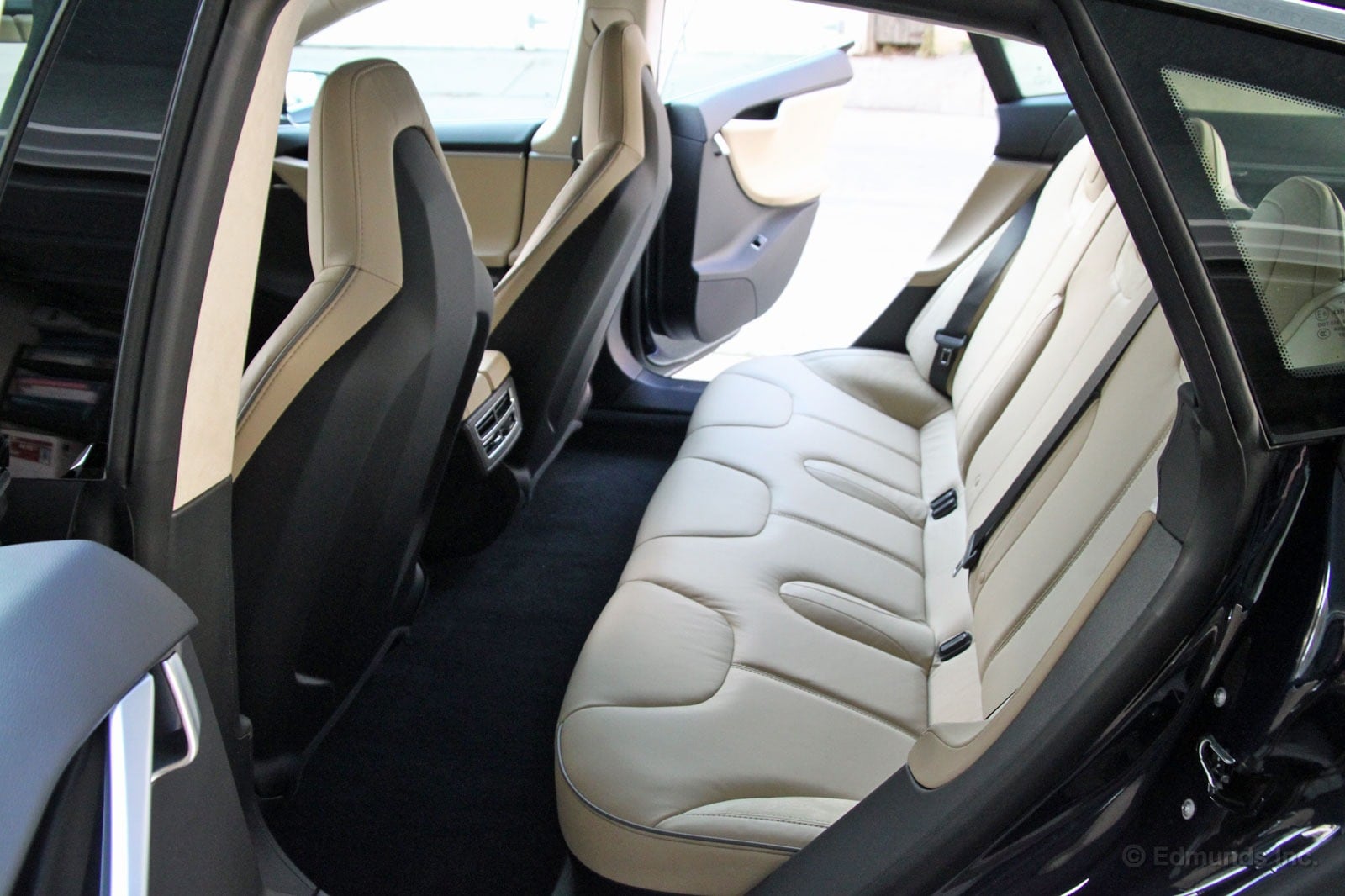
After knocking our Tesla Model S for its average seats up front, I figured it was only fair to take a closer look at the rear seats. Turns out, they're pretty solid, and not in an overly firm kind of way.
The best thing the rear seats in the Tesla have going for them is space. There's plenty of it. The Model S is a very wide car and it translates into enough room for true three across seating. In most luxury sedans, the middle is nothing more than a penalty seat.
Space aside, the seats themselves have good contours and firm cushions that are reasonably comfortable. The lack of a center tunnel hump also makes the rear quarters feel more spacious than your typical rear-wheel-drive luxury sedan. Overall, it's an above average setup.
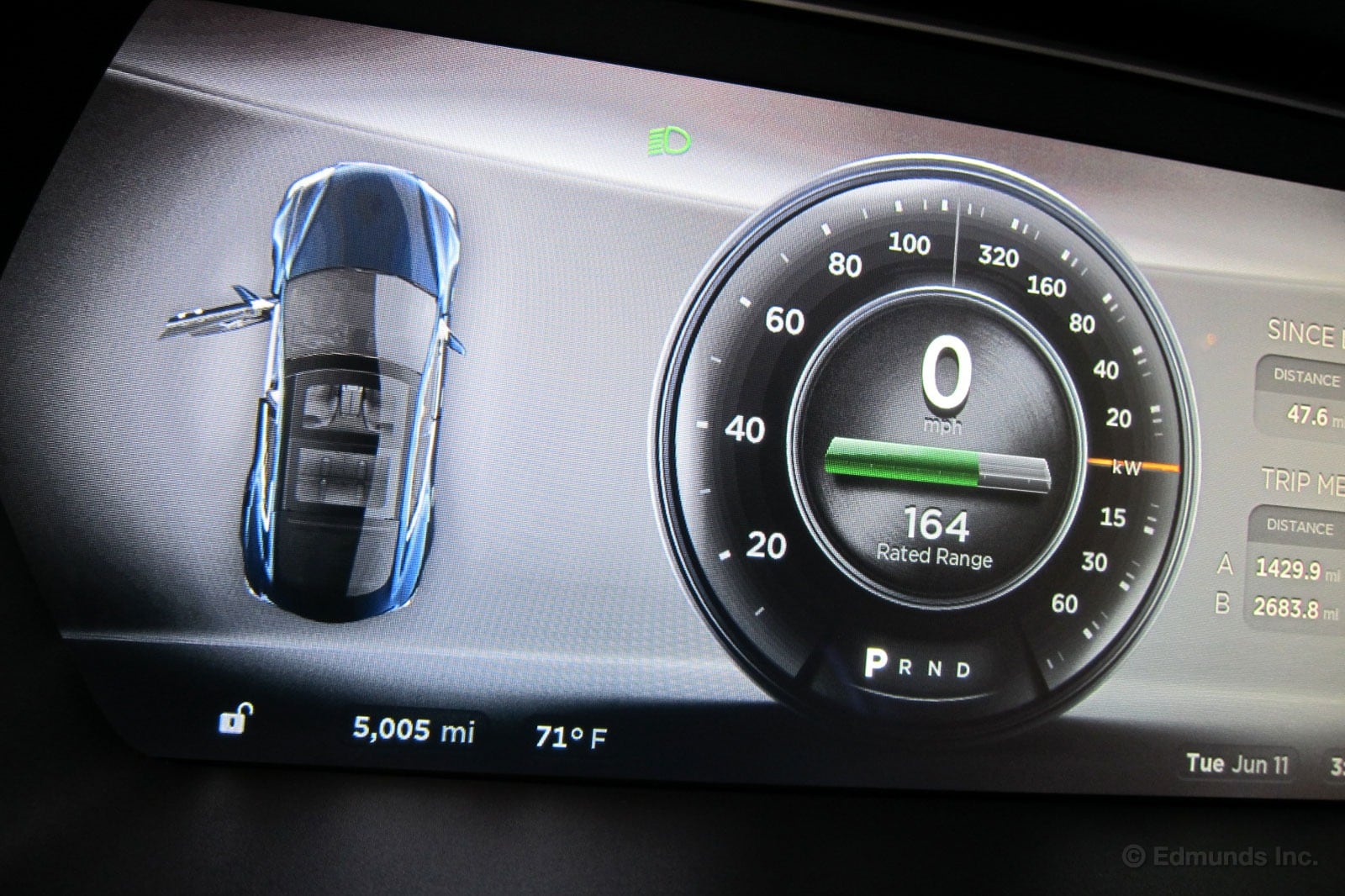
We've officially driven our long-term 2013 Tesla Model S 5,000 miles since we purchased the electric sedan back in January.
Although 5,000 miles in six months is still far behind the mileage accumulation of the more conventional gasoline and diesel-powered cars and trucks in our fleet (the bulk of which we drive about 20,000 in 12-months), it's far ahead of previous EVs that have spent time in the Edmunds fleet. Other EVs have accumulated mileage at a much slower rate due to their more restrictive range capabilities. We drove our long-term Nissan Leaf, for example, only 3,500 miles during its six month test.
Although, we have driven the Model S to Las Vegas and back, and it was driven to L.A. from the Tesla factory in Fremont, CA, the Tesla spends most of its time driving around the city of Los Angeles and serving commuter duty. And that will continue, however, a few more road trips are being planned.
So far everyone exposed to the Tesla walks away impressed by the vehicle, and reliability has been very good. We've only had one problem. The large screen that makes up the Tesla's center stack called it quits early on. We had it replaced under warranty.
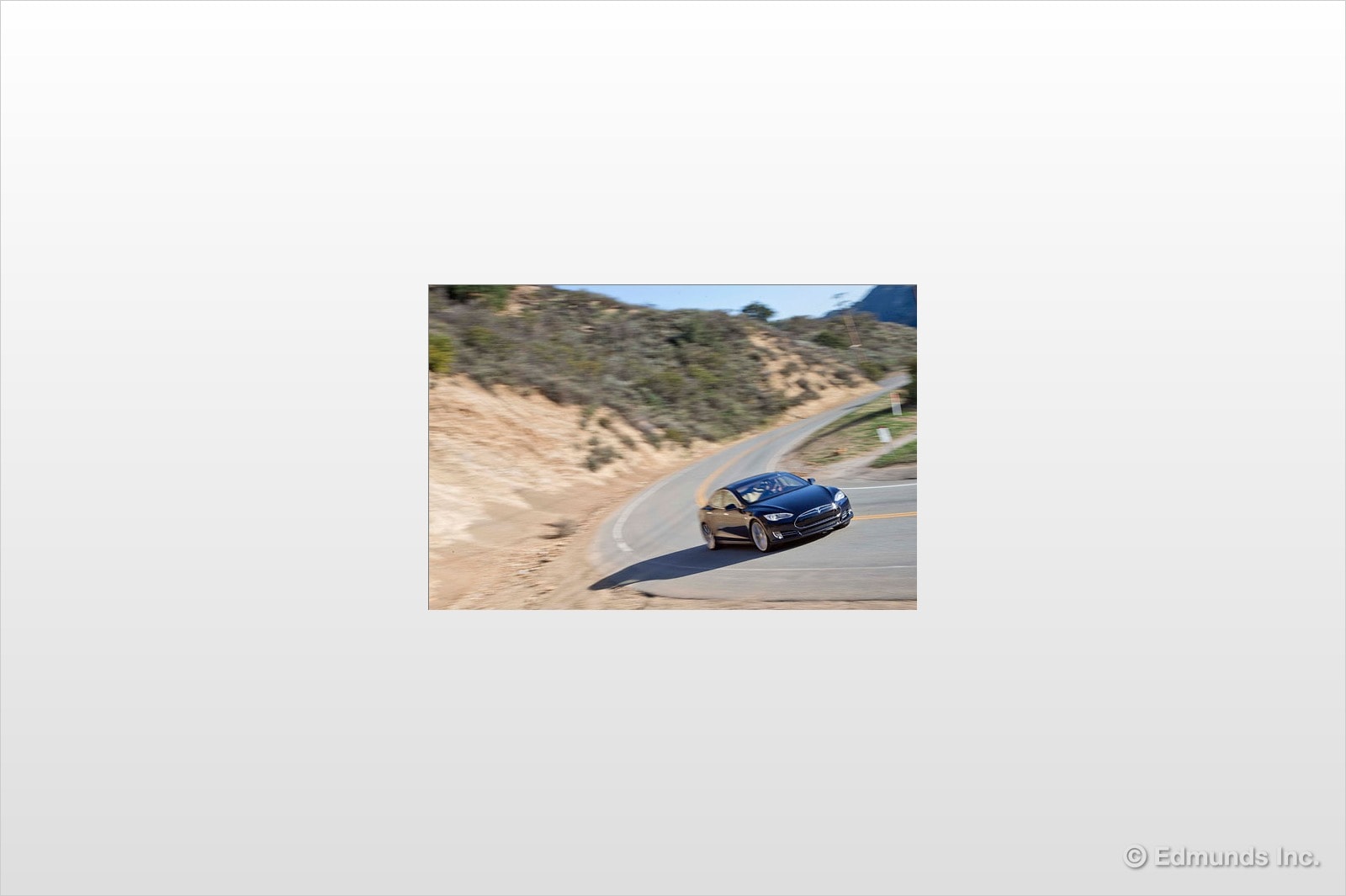
Last Thursday when it was my turn to pick a car for the weekend the Tesla Model S was available. It was the moment I'd been waiting for. I genuinely like this car. I like its speed, styling, the progress it represents and the fact that I can feel genuinely patriotic when I drive it. It's good like that.
But I went home in the Mazda CX-5.
I live 52 miles from the office. Assuming the Tesla was fully charged when I started I'd have at best about 150 miles of range for the weekend. That's pushing it for me. I typically drive 50-60 miles on Saturday and the same on Sunday. Assuming I didn't charge the car at home, that driving behavior would leave me, in theory, 30-50 miles of range when I got back to the office.
But based on Scott's weekend experience, that's far too close for comfort.
Charging at home happens at a rate of about three miles per hour. But that also means I'm committed to leaving the car at home to guarantee sufficient range. It means I can't be spontaneous. It means I have to do some (admittedly basic) math to know if I'm safe to go anywhere. Most importantly, it means I can't yet have the freedom in the world's best electric car that I would have in even the most rudimentary gasoline-powered car.
And I'm just not willing to deal it. Not yet, anyway.
Electric cars, or more specifically, their current limitations, cause me to analyze carefully what it is that drove me to my passion for them. I fell in love with cars because of the freedom they grant. Thinking about it now I realize all that cars have given me: giddiness over getting my driver's license, my first powerslide, my first real passion for doing anything, .my first drive with a female other than my mother.
And it was all predicated on freedom. On the fact that cars let me go where I wanted, when I wanted, at virtually whatever speed I wanted. Electric cars, even this groundbreaking Tesla, still can't do that. At least not in my current situation. And, frankly, it makes me a sad.
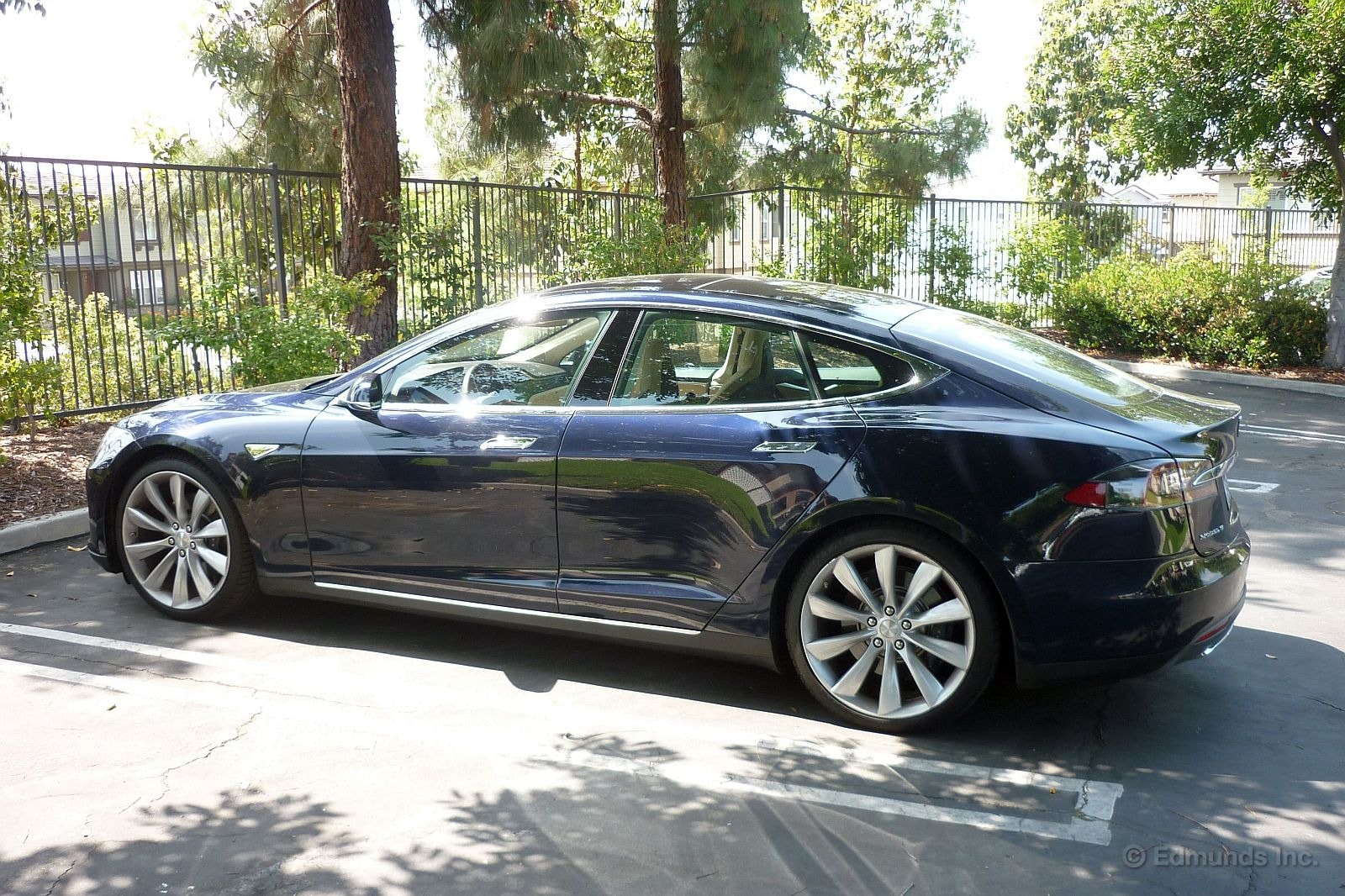
A few days ago I took our long-term 2013 Tesla Model S home for the first time. Driving a Model S is an interesting experience.
It's luxurious and upscale, and it feels, well, expensive. And large. And substantial.
And even though the Models S has been out for awhile now, people were giving it second, third and even fourth glances as I motored south on the 405.
The Tesla is also eerily silent. So silent, in fact, that you notice there's quite a bit of wind noise. And because it's so mechanically quiet and stable at speed, you're doing 80 without even trying. Whoops. Better slow back down.
But while the whole thing is impressive, I must admit to feeling that the electric experience isn't really my thing. See, I don't just love cars and sportbikes and dirtbikes and powerboats and snowmobiles for the speed. I also love them for the sounds they make, the mechanical-ness, if you will, of it all.
And this is where the Model S is lacking. It's got no passion.
But then I push the throttle to the floor, again, and the thing rockets forward. Holy crap, it's so stinking fast.
Hmm...maybe I could get used to this. Certainly can't hurt to find out.
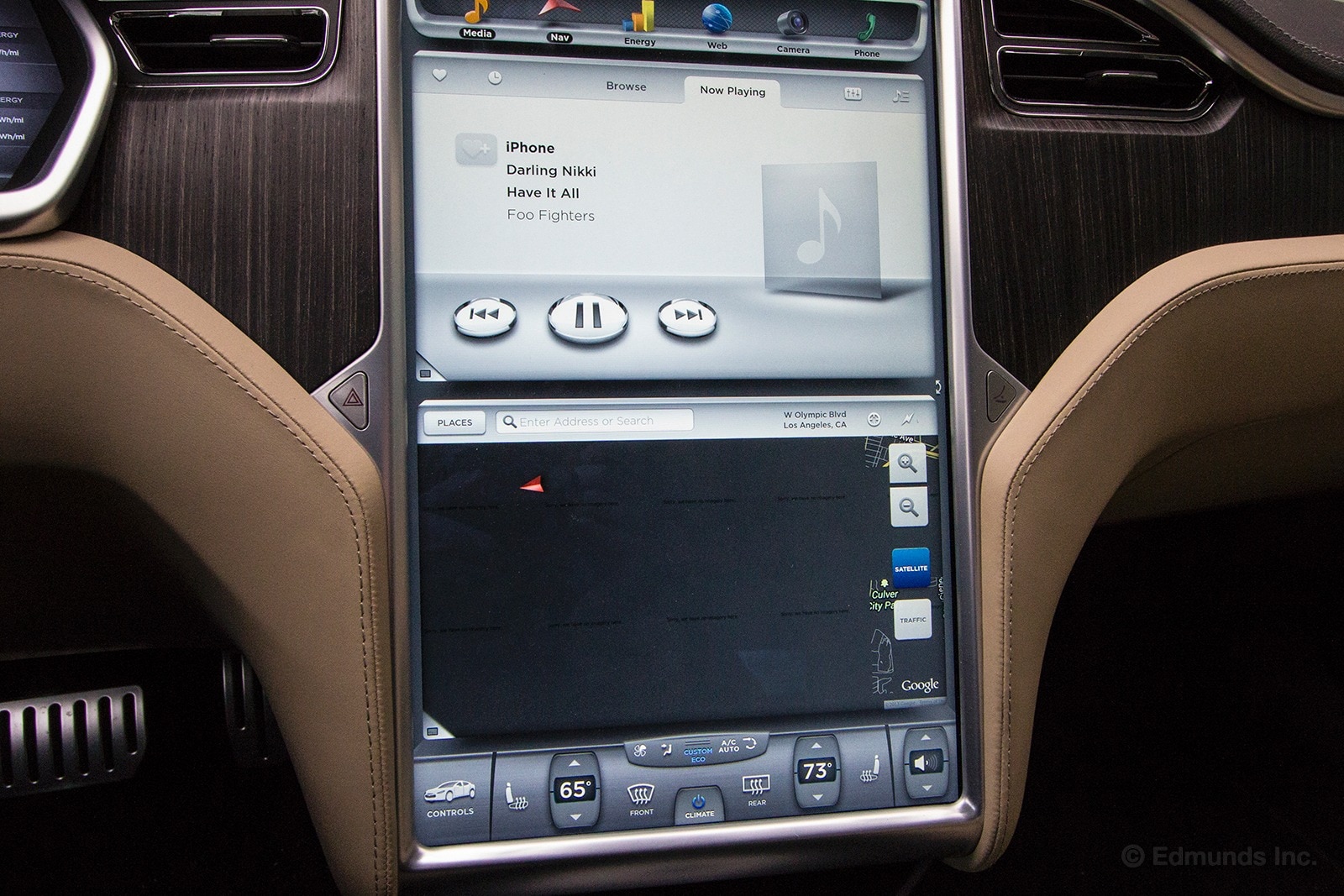
If you're counting, this is the fourth time we've had to reset the touchscreen in our Tesla Model S not including the screen replacement in March. This time, it was because the web-based navigation system was missing large portions of its map, no matter where I drove.
Editor Mark Takahashi had the same problem with the navigation screen a few weeks ago when certain areas of the map started going gray but it was a satellite issue, not something we could blame on the Tesla.
The reset took about 30 seconds and everything was back in working order. I've had to perform a hard restart on my iPhone with about the same frequency and it's not terribly annoying. Only thing is, my iPhone didn't cost $100K.
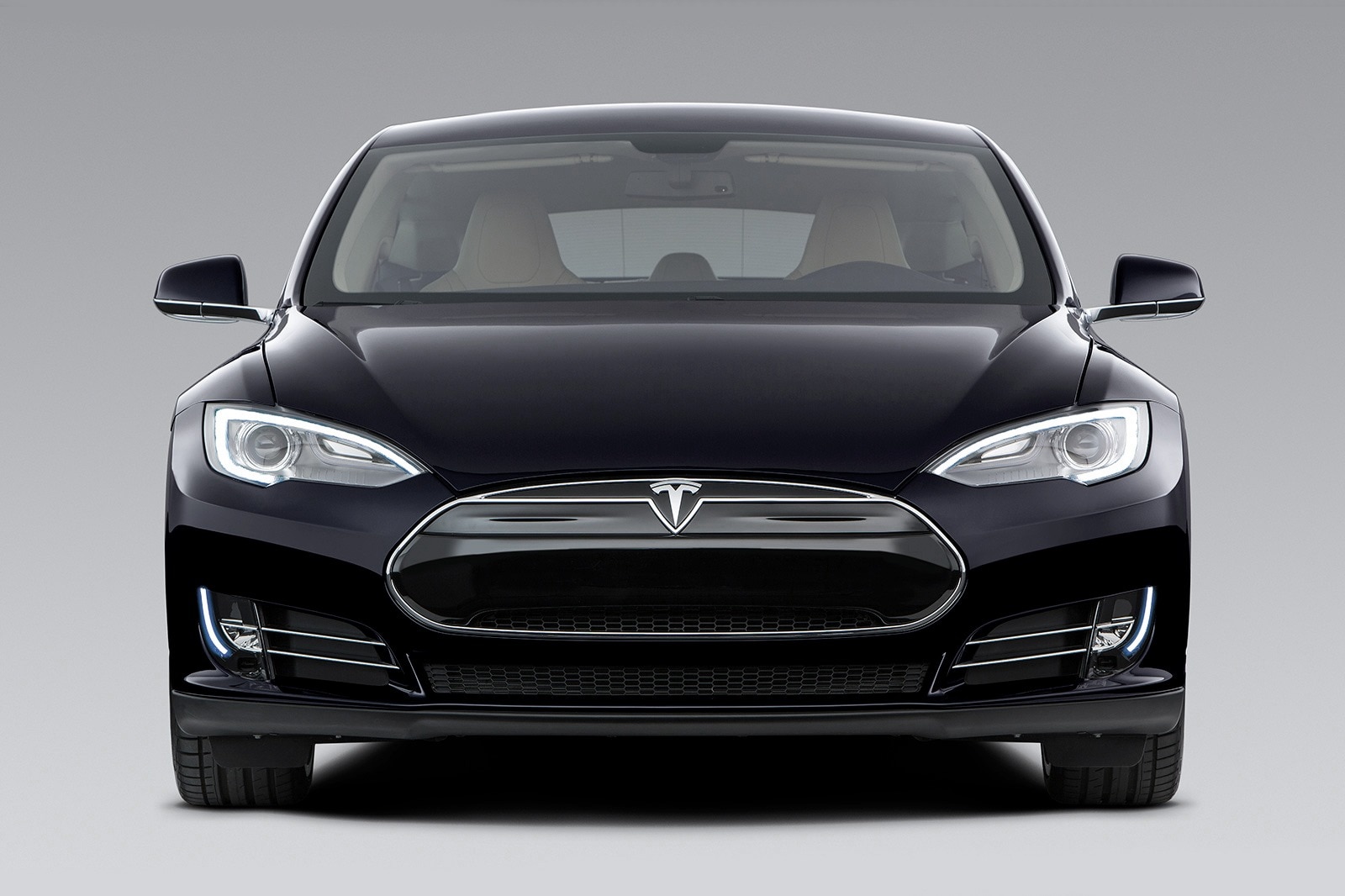
I was hanging out at my local cheese store one morning and we were talking about the Tesla that I parked in the back. I was trying to describe why I liked it so much. I tried equating its acceleration with a strong gust of wind propelling you, or a flood of torque that is eerily silent. Nothing seemed to convey what I was trying to explain. Finally I just said, "You know what? Let's pile in and go for a spin."
The auto-present door handles and their feather-light operation may have won some over before we even got in. Once inside, they were struck by the simplicity of the cockpit and the big touchscreen. These are, of course, things that impressed me as well.
We drove down the alley and the silence overtook them. I gave the pedal a quick stab and they were left speechless. I gave them a few bursts of acceleration every so often and they reacted with glee. Most of the time, though, we just leisurely strolled around, and my passengers definitely gained an appreciation for the Tesla's luxury capabilities.
One of them is a spokesperson for another car brand and can't officially comment, but he was visibly taken by this car. And that's the thing about the Tesla. Even the most jaded of drivers "get" this car. It doesn't take any championing on my part to win them over. I've yet to meet someone who is unimpressed by it.
Is it perfect? No, of course not. Nothing is. But it sure is close.
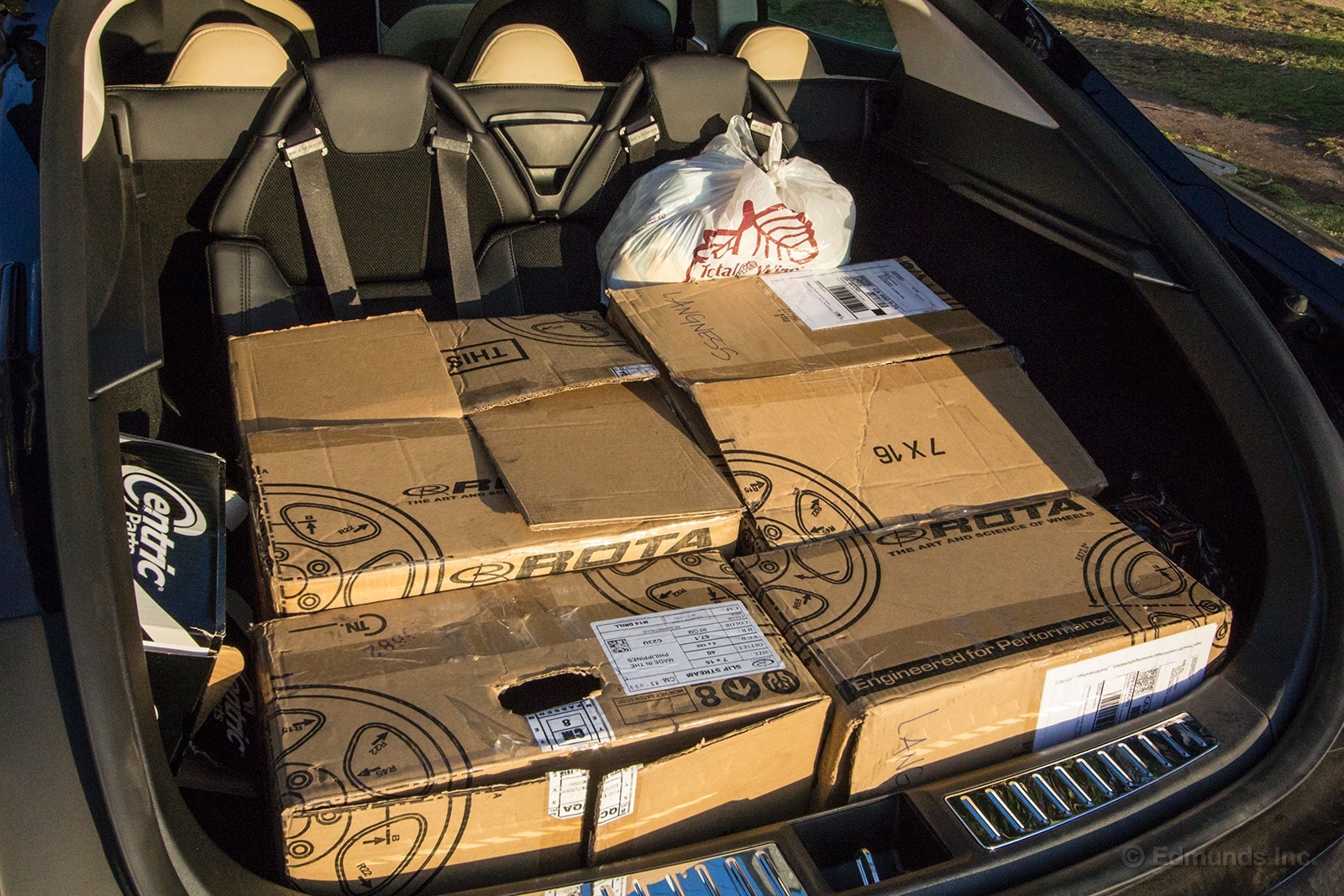
The task of transporting a set of wheels for my personal car recently fell to our 2013 Tesla Model S. Even with the rear jump seats installed there was plenty of space for four large boxes.
Later, on my drive home from the gym (with my duffel bag in the front trunk), I stopped for groceries and there was plenty of room left for those, too.
With the rear seats folded down, the Model S has a combined 63 cubic feet of cargo space, which is on par with some small SUVs. If you've got stuff that needs moving, the Tesla Model S can be your huckleberry.

Seems I'm in the minority regarding the door handles of our long-term 2013 Tesla Model S. You see, I cannot stand them. That motorized feature is goofy and unnecessary, serving only to provide a gee-whiz impression the first time you use them and after that the novelty is gone and then they're simply a potential trouble spot. They lack tactility, as there's a delay between when you tug and when the solenoid fires, so the door feels as though it sticks slightly. Not a lux vibe, that.
But worst of all, they conduct heat like you would not believe. The other day, after sitting in the morning sun for just a couple of hours, the handle grew so hot it was essentially untouchable. Yowza!
The Tesla's door handles strike me as one of those ideas that wasn't really thought through.
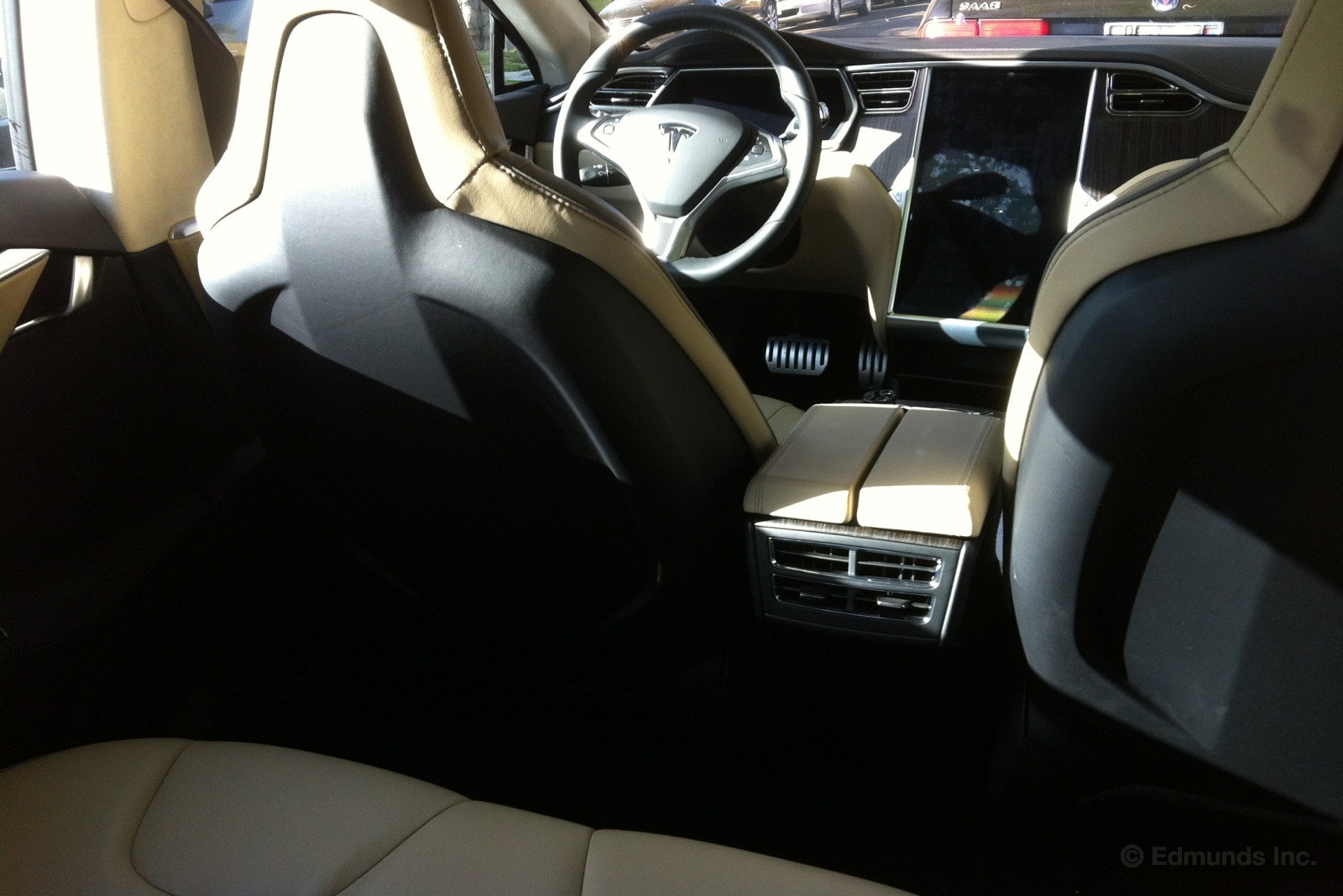
Our long-term 2013 Tesla Model S has a boomy cabin. It may be noticeable only because otherwise this is an uncommonly quiet car, but boom it does, each time a tire thumps against a bump in the pavement.
I'm no NVH engineer but I suspect the Model S's large interior volume (it is a hatchback, after all, so the cargo volume is contiguous with the passenger volume) presents a greater challenge in terms of quelling cabin boom.
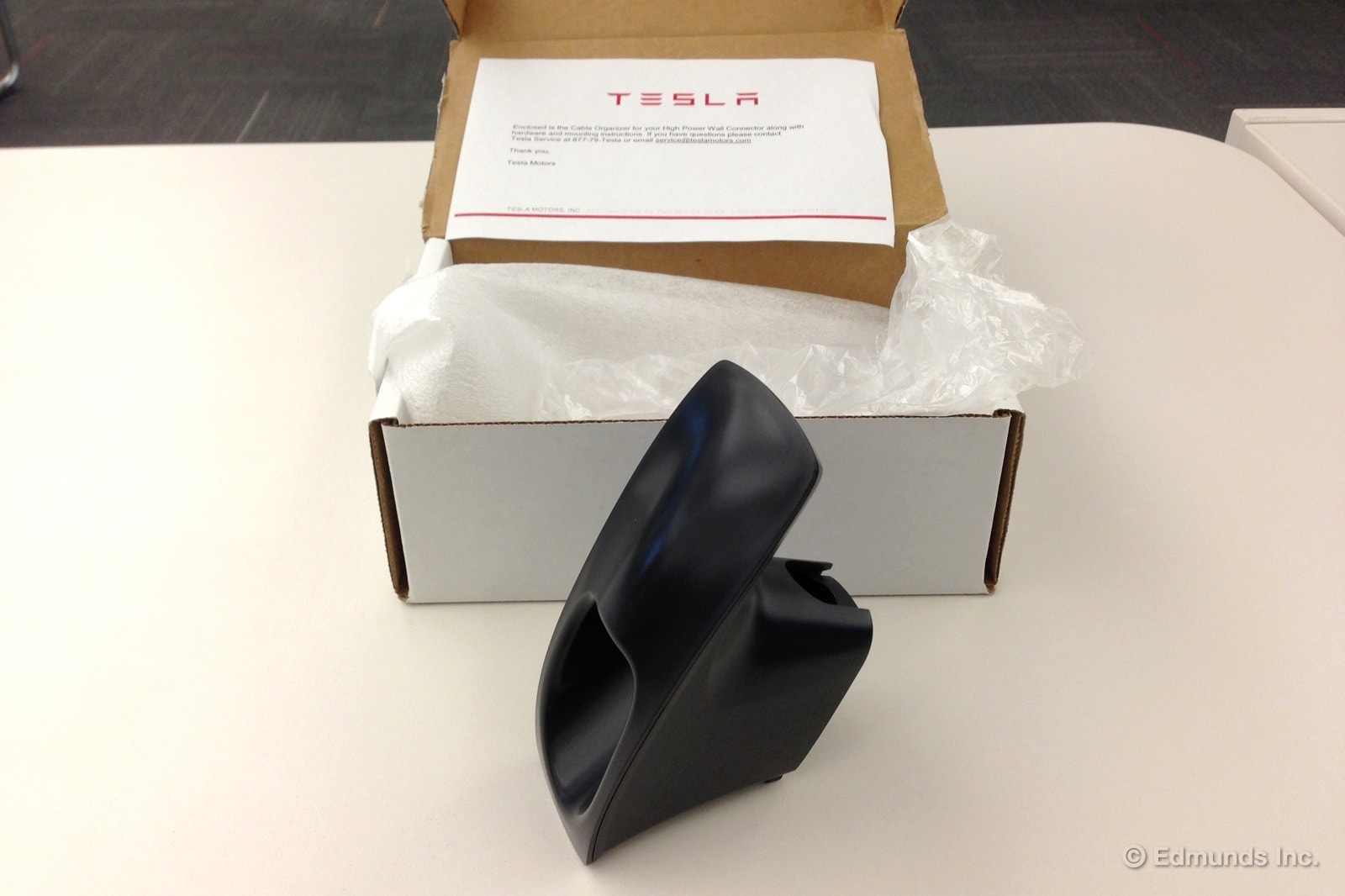
"Dear Customer,
Your High Power Wall Connector (HPWC) did not ship with a cable organizer. Once the cable organizer part is available in February, we will ship you one.
"As an alternative to installing the cable organizer next to your HPWC, Tesla recommends coiling the cable around the exterior of the HPWC. The shape of the connector is designed to secure the coiled cable against the mounting surface."
This was a note we received from Tesla — in late April. That's when our HPWC arrived, a couple of months after we got the car. Model S cars may be speedy, but the shipping of parts that go with them is another story. We finally got the cable organizer this week, four months after the promised delivery date.
Prior to the part's arrival, I was thinking we'd use a wall-mounted garden hose rack from Home Depot, but Model S owners are more resourceful than I am. A number of Model S owners have crafted their own cable organizers in the meantime. This $6 part from Panduit is a popular option with some forum members.
We'll eventually use the Tesla organizer. But for now, there's an issue with the High Power Wall Connector that has put the process on hold. Dan Edmunds will have more on this later. Plus, we're still cutting through the red tape of installing an electric car charger device in a large business complex.
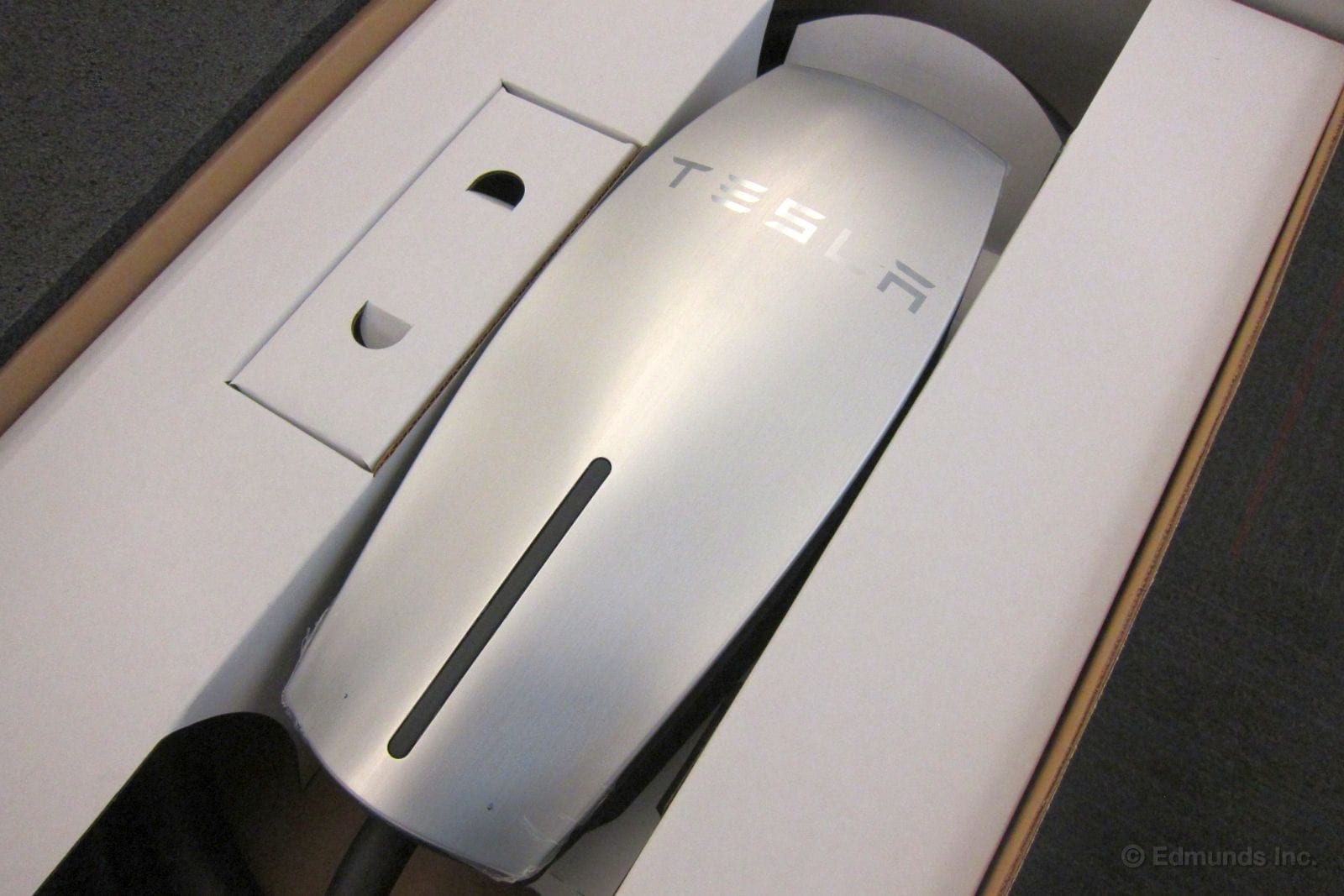
More than one person has quizzed me about it over the last couple of weeks, including my boss's boss, whose title is a three-letter acronym beginning with "C" and ending with "O".
"Why is that still sitting on your desk?" they ask, pointing at the white cardboard box containing the HPWC (High Power Wall Connector) we bought with our 2013 Tesla Model S.
"Uhhh...it's complicated?"
A Tesla HPWC draws 240V single-phase power at 80 amps through a 100-amp circuit breaker, enough juice to refill an empty 85kWh Model S battery and restore its 265 miles of maximum driving range in just over four hours. Put another way, a Model S charges at up to 62 mph through a HPWC, as in 62 miles of driving for every hour on the plug.
Our Coulomb Level 2 charge station draws 30 amps through a 40-amp circuit, plenty for all other EVs on the market. But it takes over a dozen hours to refill an empty Model S. Slow as this sounds, it would do until we got our HPWC installed. Many Edmunds staffers drive less than 50 miles overnight, which the Coulomb can deal with in less than 3 hours.
That's great, but why is it still sitting on your desk, Dan?
The answer begins with delivery dates. We picked up our 2013 Tesla Model S in February of 2013, but the HPWC was not in the trunk as we had expected. We learned it would be shipped to us later.
Much later, as it turned out. The HPWC didn't land upon my desk until May, by which time we'd gotten accustomed to the ins and outs of charging with our Coulomb. Still, the lack of speed was hindering our ability to do full recharges every time, a necessity in our quest to track fuel consumption at every "tank" like we do with gasoline cars. It also sewed "will it be full enough?" doubts in the minds of those who were considering a longer trip.
With the HPWC in hand, I could finally kick off the installation process. Tesla sister company Solar City is the go-to installer, so I put in a call. But I was told to "go to" someone else once they realized I needed to install our HPWC in a commercial building instead of a private residence.
So I struck out on my own and begin seeking bids from commercial electricians. But a bigger problem soon stopped me in my tracks.
I'd begun reading an HPWC thread on a Tesla owner's forum, looking at pictures of other installations. As I read, I noticed that as more went in service they started chatting about a possible defect in the HPWC, with the first vague report dating back to early April, maybe even late March.
Fuses were blowing inside early in-service HPWC units left and right. Tesla became concerned enough to release a firmware update that went out to all Model S cars in the field.
Among other things, the quietly-released update limited the car's maximum charging draw to 60 amps instead of 80 amps. Our car apparently got it, too, at some point, but we never ran across the warning screen that others saw because we had not yet plugged our car into a Tesla HPWC.
At first I wasn't worried. Our HPWC had arrived in May, some five weeks after the problem first surfaced and the firmware update went out. Surely ours didn't have the problem at this later stage. Maybe that was the reason for our unit's delayed shipping.
But no resolution or official statement had come to light in posts with dates that matched the day our box arrived. Later in May folks were still swapping stories about buying the expensive fuses from third party electrical supply houses, replacing them on their own and charging at 60 amps.
Rumors of an impending HPWC swap-out program surfaced toward the end of May, with the stories suggesting they would appear in June. But from Tesla Motors we still heard nothing.
For my part, I still needed to figure out a suitable metering solution. Unlike our fleet-grade Coulomb charge station, the Tesla HPWC doesn't have a readout that displays the number of kWh dispensed in a given session. I would have to develop a work-around.
On June 11 a forum member posted pictures of his new unit with the cover off. Instead of two 100-amp fuses everyone had been talking about it had two 200-amp fuses sitting crossways, with a different busbar shape to match the new orientation.
Upon seeing this I went straight for a T-20 Torx wrench to remove our HPWC's cover and take a look inside.
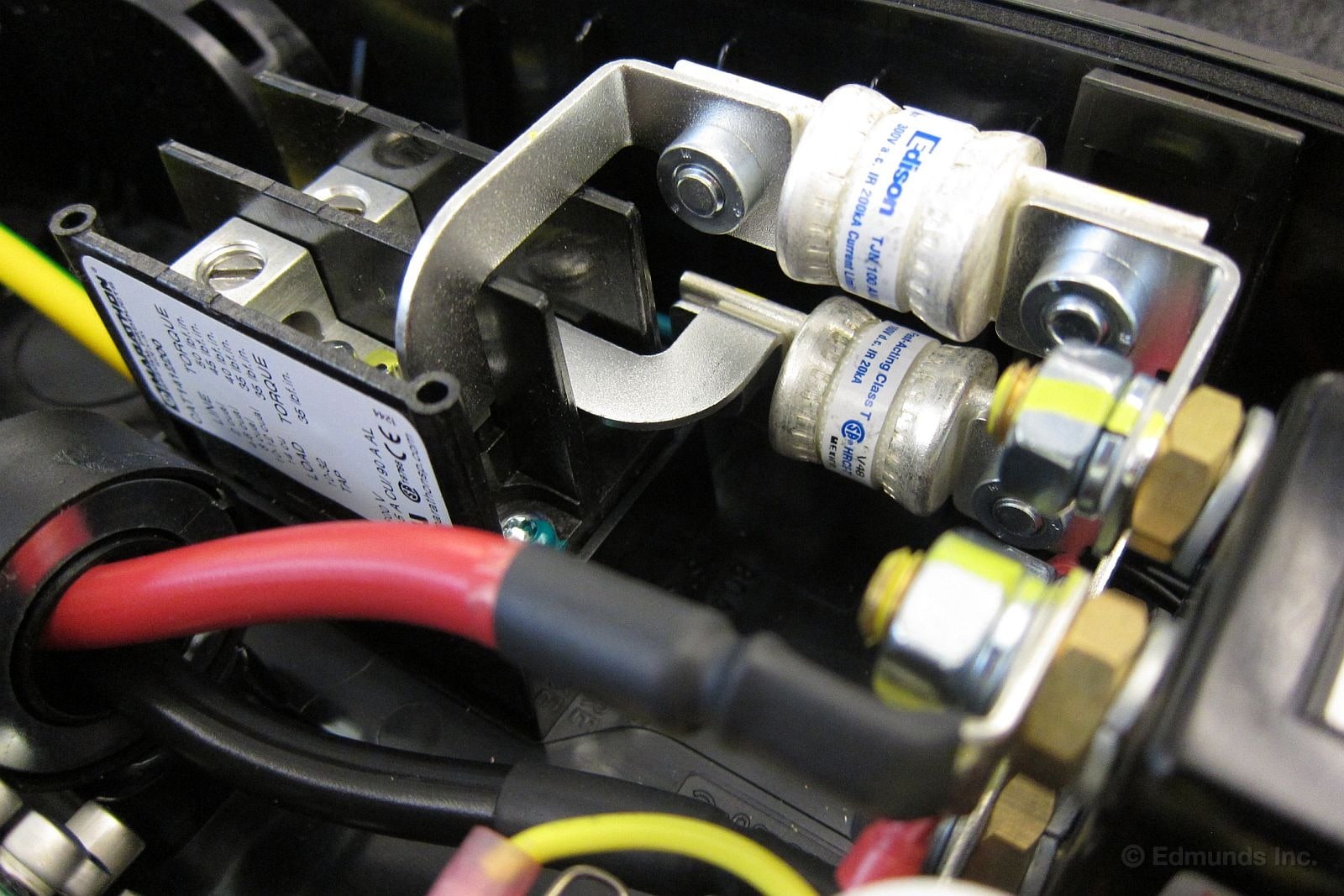
Sure enough, I found two 100-amp fuses sitting lengthwise. It seemed certain at this point that we had the "bad" one.
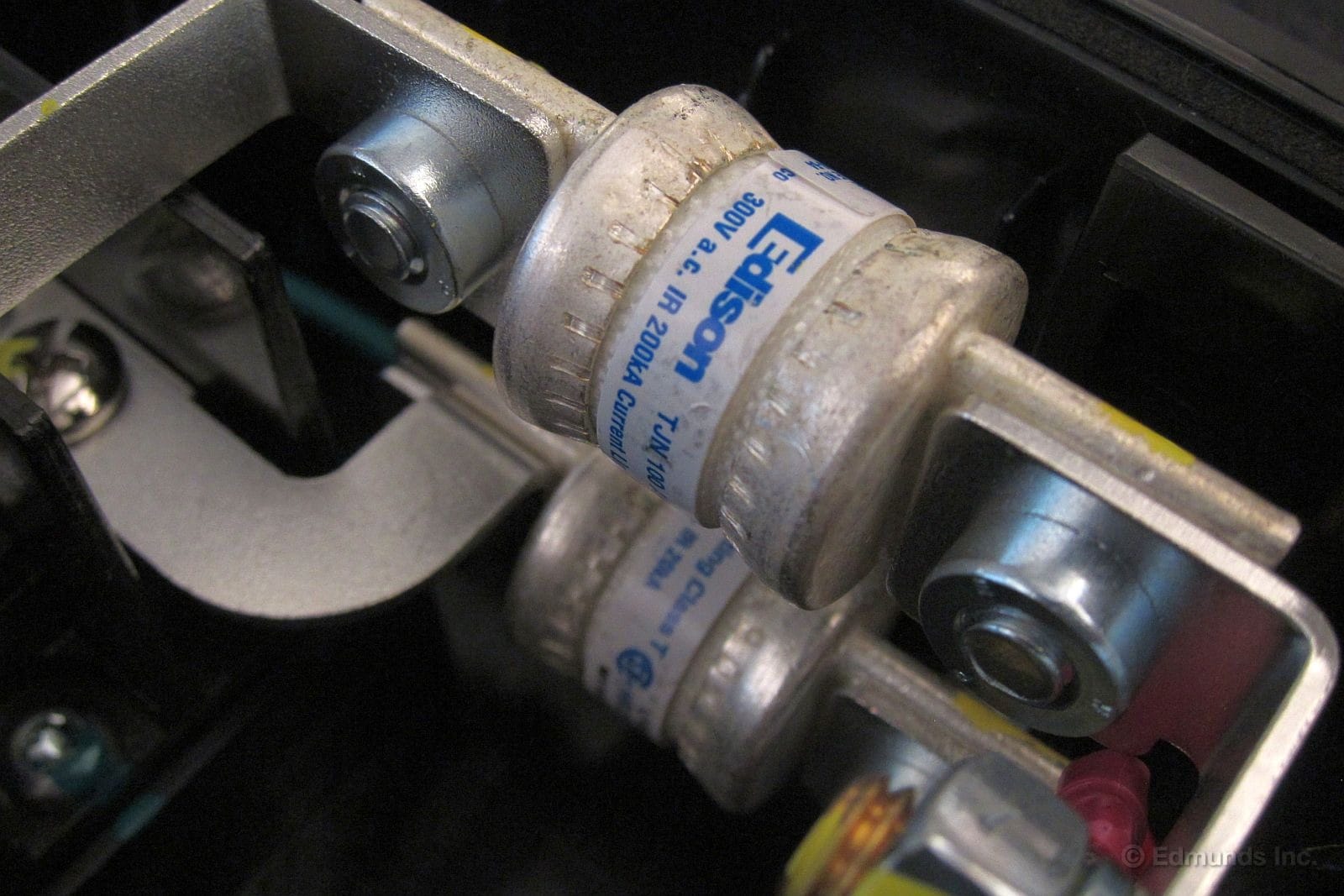
There is a humungous irony here. Can you spot it? The cantankerous fuses in question that plague this Tesla component are made by…Edison.
At this point I had no further desire to play the anonymous role of Joe Consumer and let events play out at their own pace. I decided to play the Edmunds card. I contacted Tesla PR. After all, forum posters had implied that the squeaky wheels were getting the grease. I could squeak louder than anyone with kind words. "Hello, this is Dan Edmunds of Edmunds.com, and I was wondering…"
They said that there had been problems and, yes, the fuses and busbar had been redesigned. The affected units have a TPN number ending in 99-A and 99-B. The redesigned units end in 99-C. I checked ours: it's a 99-B, which was no surprise after my T-20 Torx expedition.
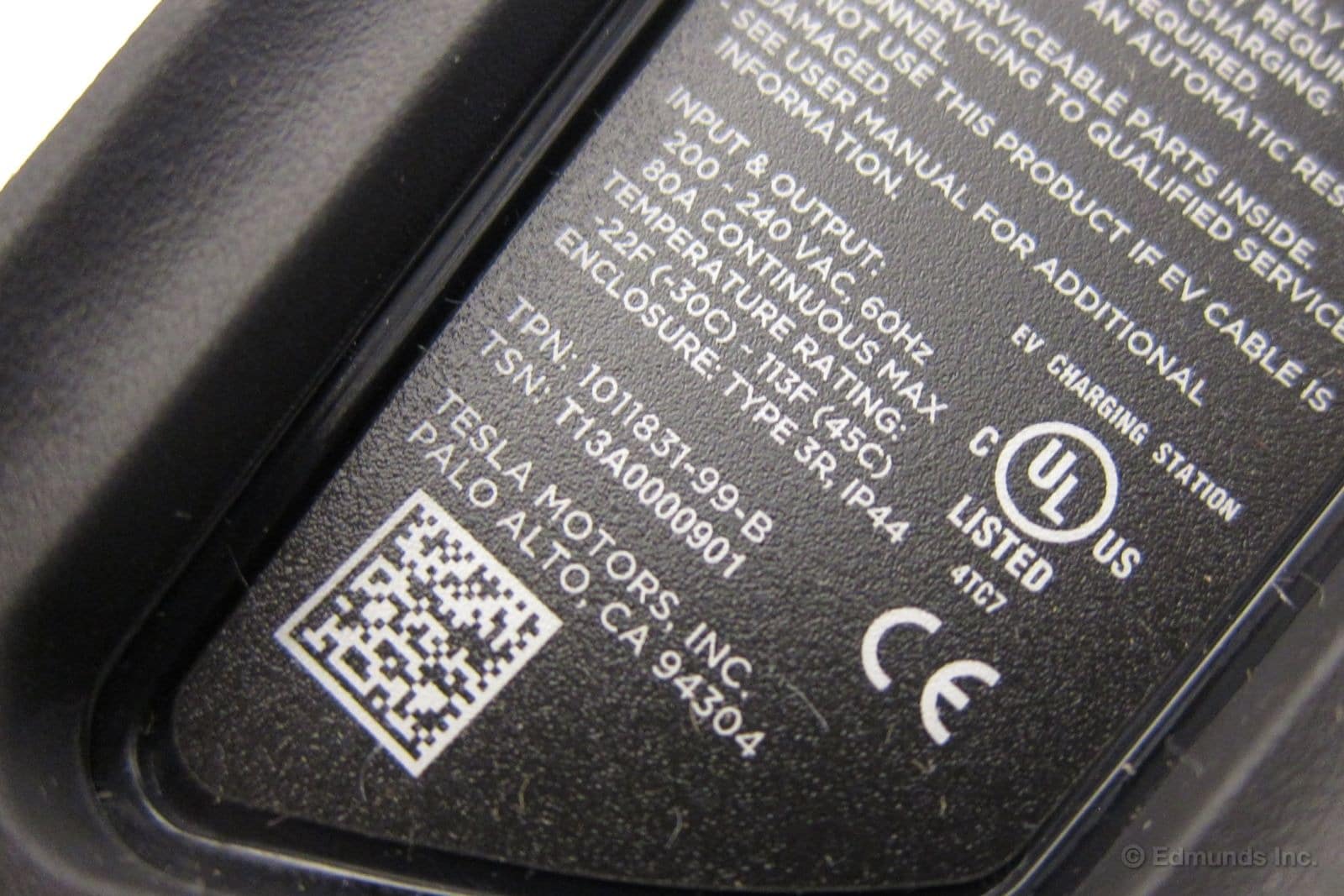
So, what's next?
They explained that the early focus has been on sending out new replacement HPWC units to existing consumers as the supply of replacement parts built up. Now they're at a point where they have sufficient parts to have Solar City technicians upgrade existing in-service units in the field without undoing the entire installation, which is much less of a hassle, especially in localities where this would trigger a second round of permits and inspections.
In our situation they'd rather trade us for a new 99-C unit since ours is still mint-in-box. I expect to get a notification from the mailroom of a package for me any day now.
And so we're moving ahead with the installation process once more. We've zeroed in on an electrician and have gotten the blessing of building management. I've even worked out a metering solution (more on that later) so our drivers can record how many kWh of electricity were dispensed.
The new unit should arrive by the time the installation has been approved and permitted by the city of Santa Monica. I'm getting close to having my desk back.
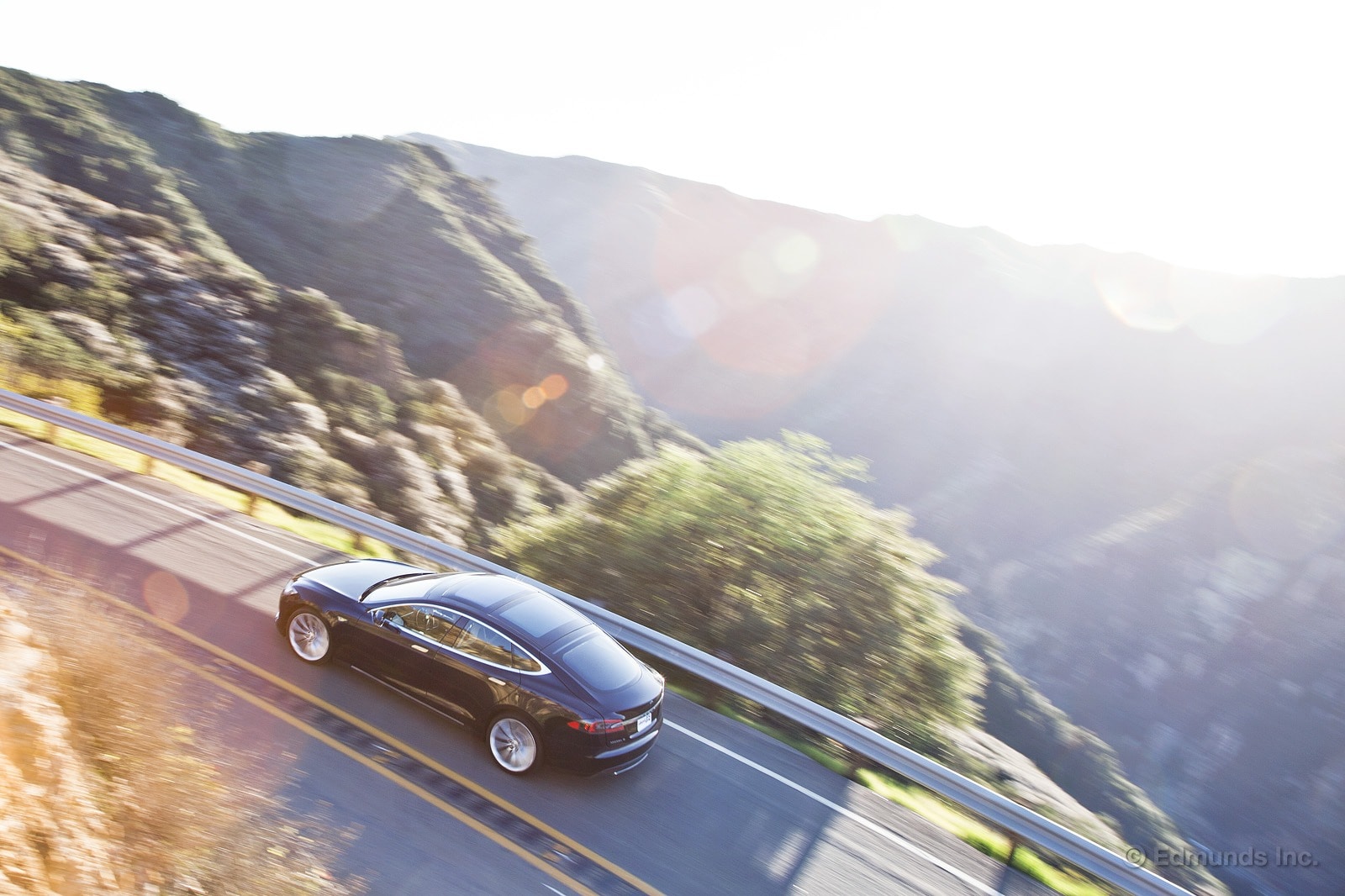
Tesla Motors wants the ability to sell cars directly to consumers in all U.S. states without a dealer network.
Tesla CEO Elon Musk said that an "anonymous Tesla enthusiast" started a petition to put before President Obama. The petition has passed the required 100,000-signature threshold to merit a response from the White House.
States laws vary on the subject but, to simplify a complicated subject, franchise dealers are protected by state laws that prohibit manufacturers from selling and servicing automobiles directly.
What do you think should happen? Would you sign the petition ?
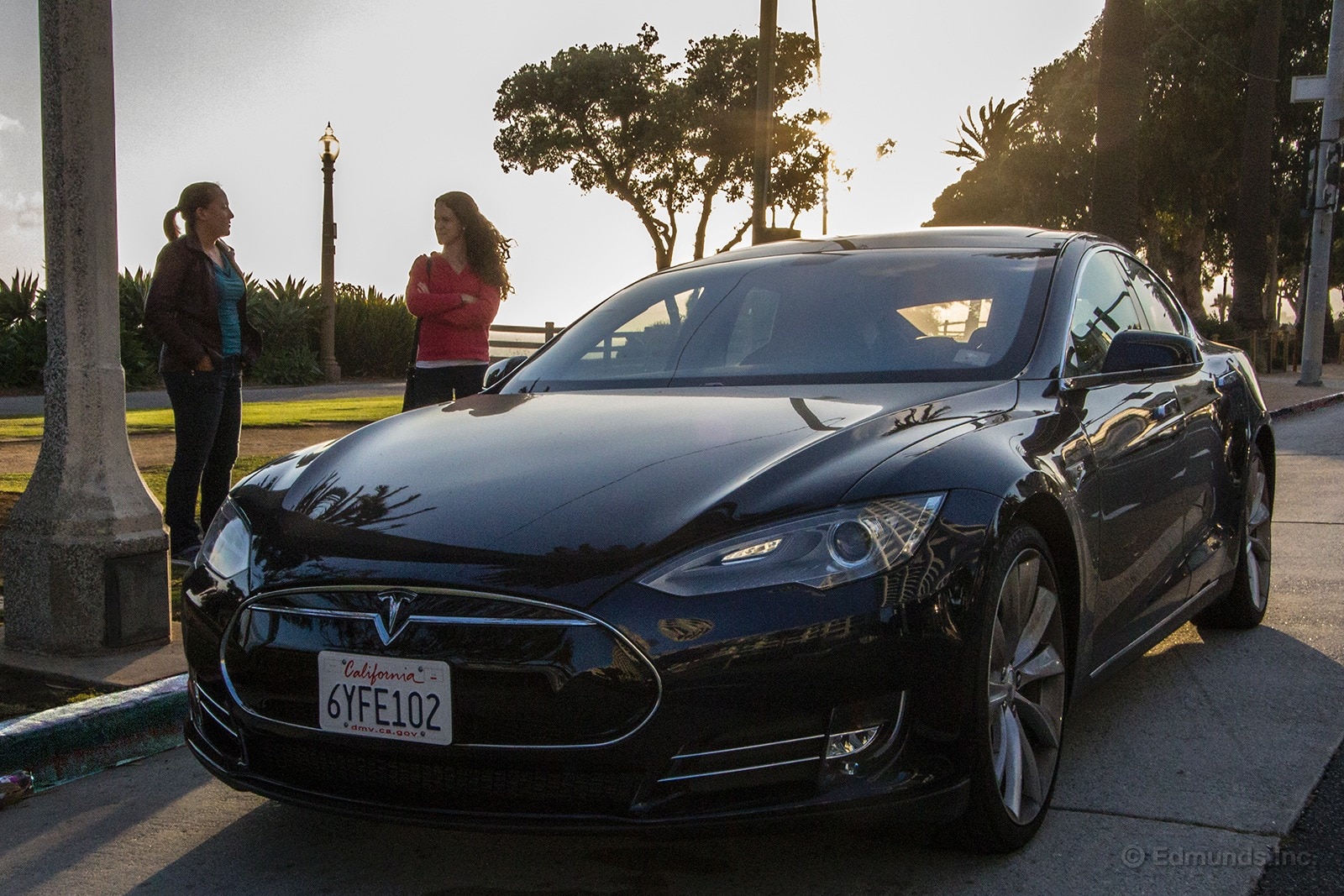
Our 2013 Tesla Model S gets much more attention than any car in our fleet. I easily get ten times more questions about the Tesla than even our immaculate 1987 Buick GN or the shouty-SLS. You simply can't get out of it without someone saying something, snapping a photo, or turning to their friends and pointing out what's just pulled up.
Click through to read a few of the interesting remarks I heard during a few days in the Model S.
While taking some friends for a spin:
"Oh my god! My dad needs to buy one of these! This thing is awesome!"
"It's so nice in here. Can we just drive around forever?"
"You weren't kidding. It's like that roller coaster at Disneyland that rockets you forward from a stop. That's a perfect description."
While driving around to the shops:
"Wow, that thing is gorgeous. What is that?"
"Did you just put the groceries in the front? Where's the engine?"
"I'm from England and I'm seeing those cars everywhere. It looks like the Jag. What is it? A Tesla? Well, it looks amazing."
So if you purchase a Model S, know that you'll get a few questions about it.
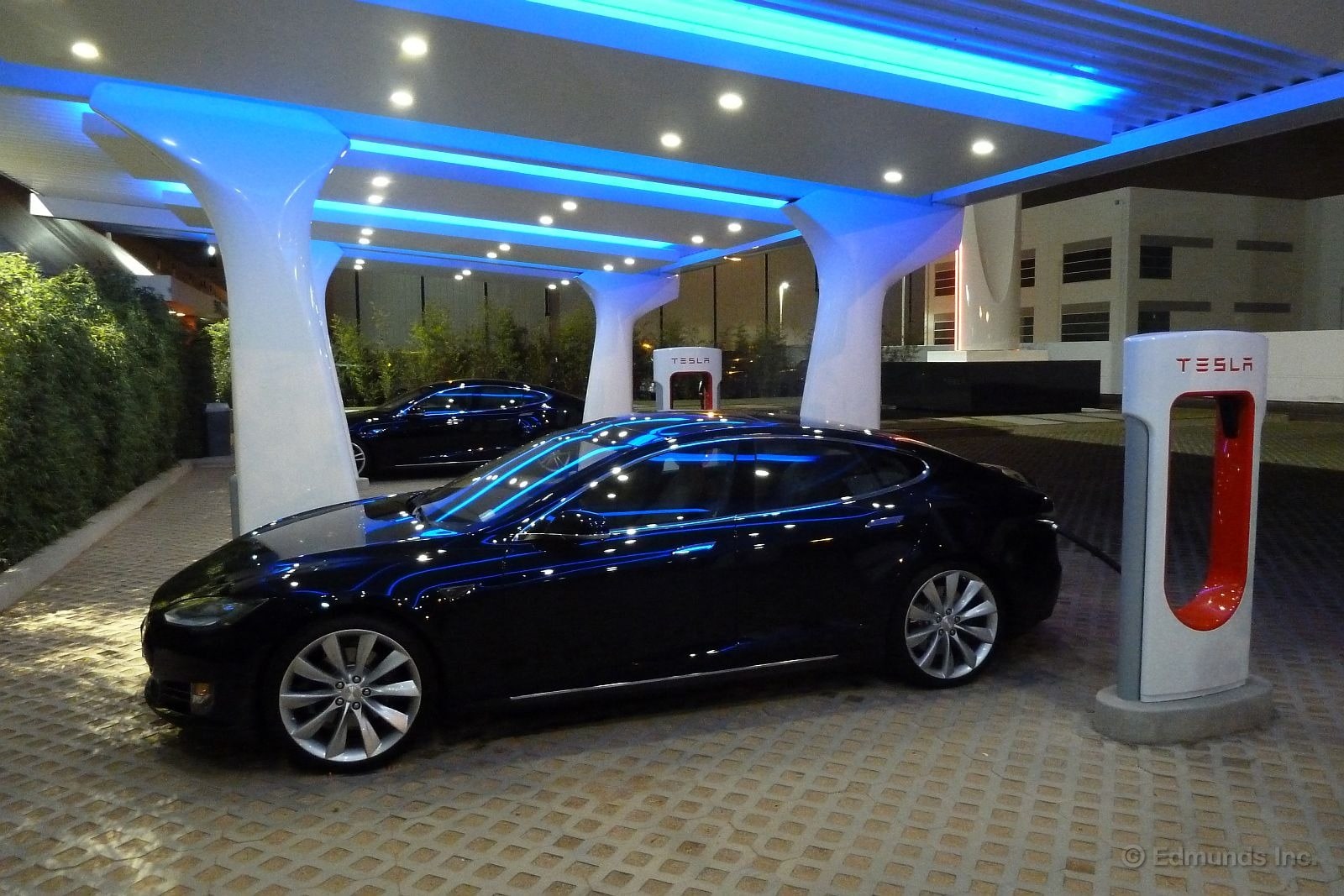
I've been very interested in the ins and outs of rapid charging at a Tesla Supercharger station ever since they first announced the build-out of the Supercharger network. I've become even more interested of late, because I'm considering taking the 2013 Tesla Model S on my next bi-annual trip to the remote Oregon Coast to visit my parents.
The Supercharger network will loom large during this journey, and I need to know exactly what I can expect in terms of downtime at each stop.
Tesla's claims for charging speed are not absolute. Weasel-words like "up to" and "as fast as" pepper the discussion. One says a Supercharger will "provide half a charge in about 20 minutes." At the Supercharger unveiling they said they could "provide 3 hours of driving in as little as 30 minutes."
These claims are astounding, even if they prove to be half true in less-than-perfect conditions. But they didn't give me the specificity I needed to plan my trip.
So I headed to the nearby Hawthorne supercharger with our 2013 Tesla Model S, arriving with just 29 miles in the tank. My plan was to take screen grabs from the Tesla iPhone app at intervals as it charged, then put everything in Excel and graph them when I got home.
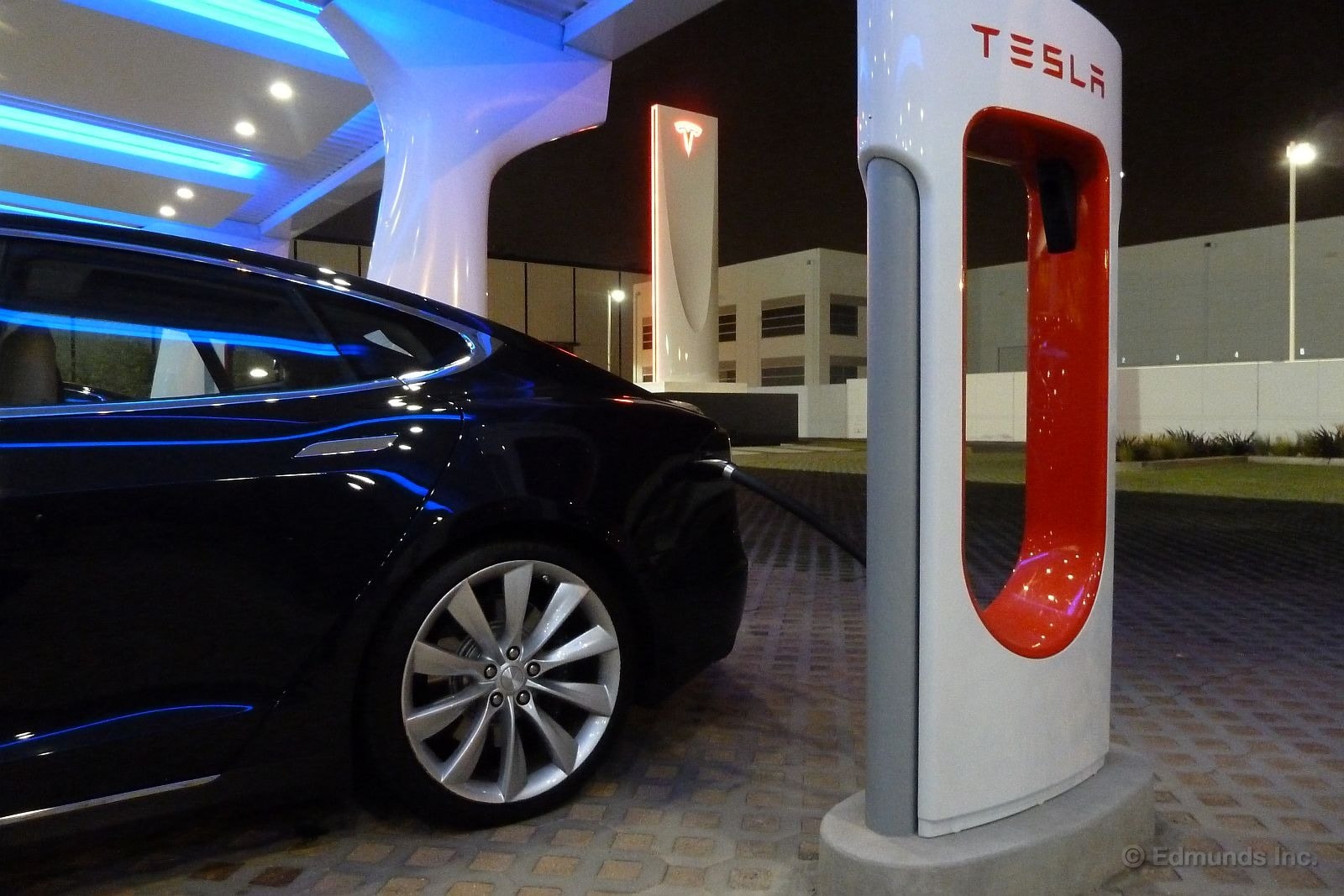
The route to Tesla's Hawthorne Supercharger shares a driveway with sister company Space X, and as my wife and I wheeled into the drive we could see the business end of a Falcon 9 booster rocket on the factory floor through an open bay door. The street address: 1 Rocket Road.
Two other Model Ss were parked and charging when we arrived at the station. I knew from Tesla owner message boards that the power feeding each 90kW charger is split between two adjacent spots; park next to someone on the same circuit and the two of you will be sharing that 90 kW. These folks apparently knew this, because there were open spaces between them.
But the spots they had chosen left us no way to get on a dedicated circuit of our own. We'd be sharing with one or the other of them, so we'd be dealing with reduced power until one of them left.
True to my luck at supermarket checkout lanes, I chose wrong. The car I hadn't parked next to finished and left the scene not 10 minutes after I plugged in. I quickly unplugged and moved to his now-vacant spot to have a full 90 kW to myself.

It paid off. The screen shots on my iPhone app showed a charging rate improvement from 184 to 277 mph. Over the next couple of minutes it rose to 292 mph. In case it isn't obvious, this usage of "mph" refers to miles of driving range added to the battery for a given hour spent on the plug. A Tesla Model S battery doesn't hold that much, so this is an at-the-moment charging rate.
After about 25 minutes of this, with the battery range standing at 159 miles, I decided to switch to extended range mode, figuring that I would need maximum range on the northerly legs of my trip to Oregon. I'm not sure if it was coincidence or not, but the switch to Max range came with a drop in the apparent charging rate to 230 mph. When I got home and studied the screen grabs more carefully I discovered the amp draw of the charging system had plummeted from 240 amps to 150 amps about the same time.
And then, about 15 minutes later, another Model S crept into the lot. In keeping with my supermarket check-out luck, he parked next to me, taking away my sole-status on the 90kW circuit in the process. My battery's charging rate sank to around 200 mph for the duration.
It's hard to know it the fall-off in charging rate was due to my selection of Max range status, the presence of another car or the fact that my battery was edging close to the full mark. Battery charge rates do tend to tail off near the end, but there were too many variables in play this time to sort it out properly.
In the end my battery reached 230 miles of range after 63 minutes, at which point I called it quits and pulled the plug. I'd added 201 miles of range during that time, a rate that works out to 190 mph. Slower than the best-case claims of Tesla, but this was far from a best-case situation. Besides, this is still lightning fast compared to other EVs, which charge at about 20 mph on a good day.
Interestingly, my actual observed overall charge rate was slower than every corresponding in-process value I'd captured on screen grabs from the iPhone app, even though it has access to the very same range and time data. I cannot explain why this is so. Perhaps it has to do with charging losses, the difference between the inflow through the plug and the actual power amount captured by the battery.
Whatever the case, here's the graph I made using the two measured quantities I was really interested in: range added versus clock time.
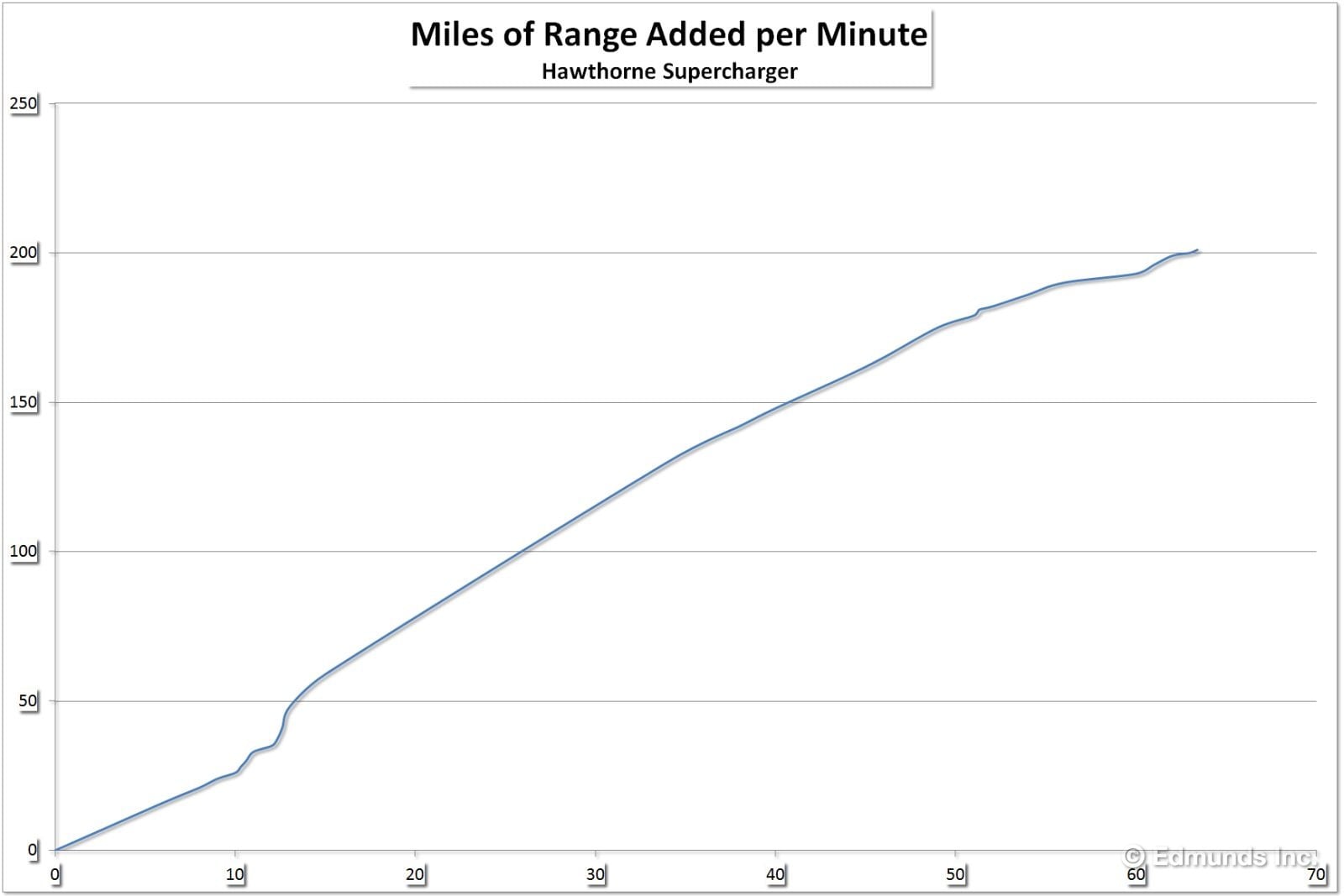
Though the charging rates fall far short of what the app reported at every step of the process, the ebb and flow reflected in the changing slope on the graph matches the sequence of events.
The shared charging for the first 10 minutes occurred at 160 mph. All-alone charging in normal range proceeded at 260 mph until I switched to Max range at 34 minutes, at which point it sagged to 180 mph. Finally, when the "new guy" showed up for the last 13 minutes (when, it must be said, the battery was nearing full) the charge rate dropped to 107 mph.
And maybe that's the point. The comings and goings of other cars is a normal situation. I'll never be able to control who parks where while our Tesla is plugged in. Power-sharing with another car parked next door seems inevitable, something I should account for when I estimate my idle time.
Tesla, for its part, has announced they'll soon be upgrading the Supercharger network, upping the rating of the chargers from 90 kW to 120 kW. The fine print on their Web site graph reveals that's where their "200 miles in 30 minutes" claim comes from, alone and unshared with other cars, of course.
However long I sit at the various Superchargers, I still need to plan on a three day trip if I try for Oregon this summer. The northernmost Supercharger is at Folsom, CA, and this experience suggests I need to plan for as much as 90 minutes once there to get the maximum 265 miles of range into the battery before I head "into the wild" off Tesla's grid.
That's important for me because from there I need to make it as far as possible before I spend the first of two nights charging off-network on conventional Level 2 charge stations at hotels or NEMA 14-50 outlets at campgrounds. Highway 101 doesn't have a lot of conveniently-located choices in places you'd care to stay with your family, so pickings are slim. And one of the best options is likely to be stoner-central for a massive reggae festival on the week we're considering.
On second thought, this exercise (and the reggae festival) has me thinking I should delay the effort until my December Oregon trip. By then Tesla's growing Supercharger network is set to bridge the gap to the Oregon border, and the new stations will most likely feature the new 120 kW equipment. I should be able to make the run at or near my usual gasoline pace, with just one overnight stop.
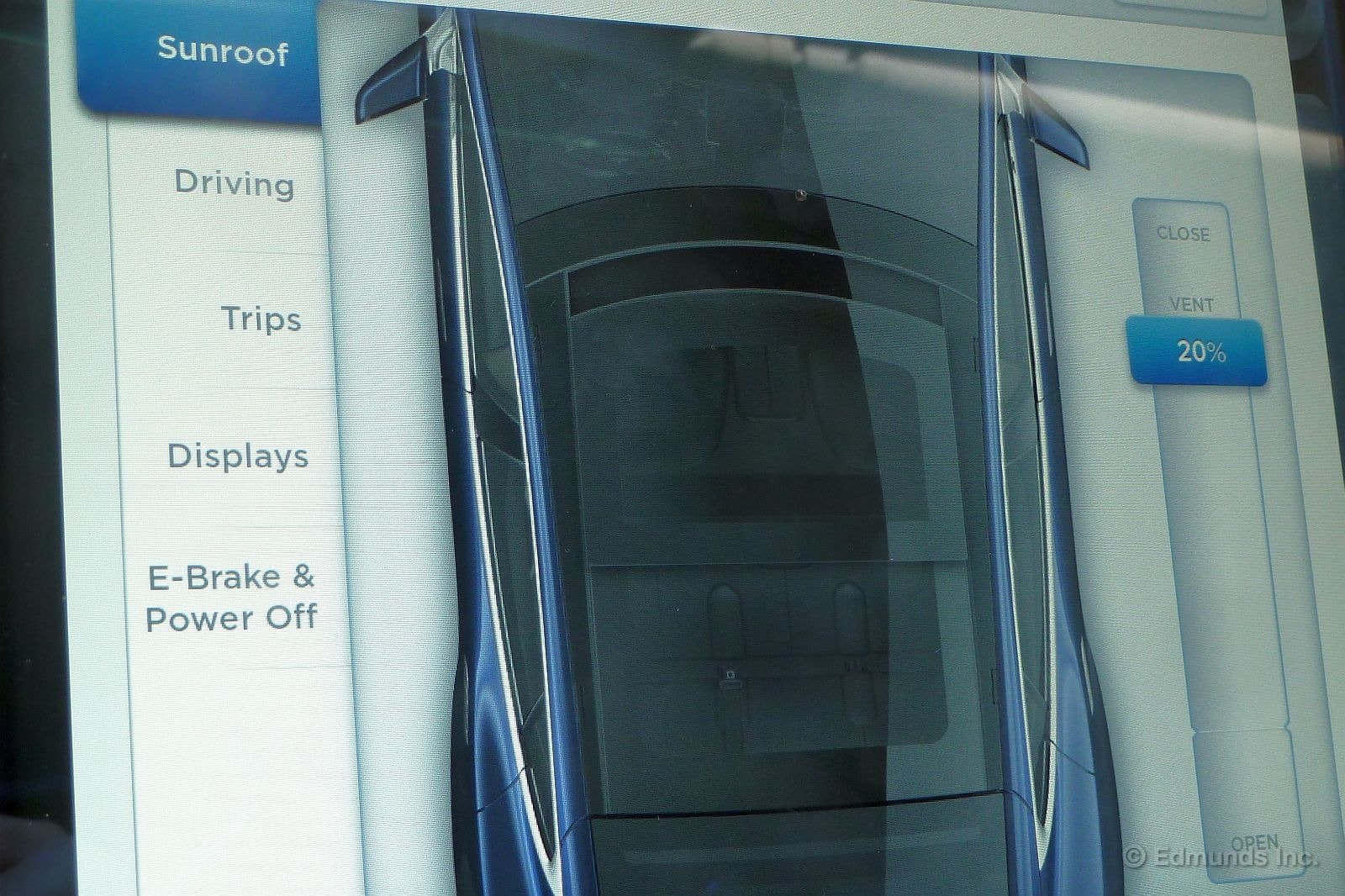
My daughter was curious about the all-glass sunroof in our 2013 Tesla Model S. So I opened it for her, or tried to.
It jammed at 21-percent open and went no farther. I closed it without incident and tried once more. Same result, except just 20 percent this time.
The trouble seemed to originate on the driver's side just above my head where I could hear a faint click. And I could see the glass panel pull up short on my side, too, as the whole mess cocked sideways a tiny bit before the action ground to a premature halt.
I saw what was going on in short order once we all exited the car at home. But it was also abundantly clear that I wasn't going to be able to fix it myself. This looked to be a job for the Tesla service center.
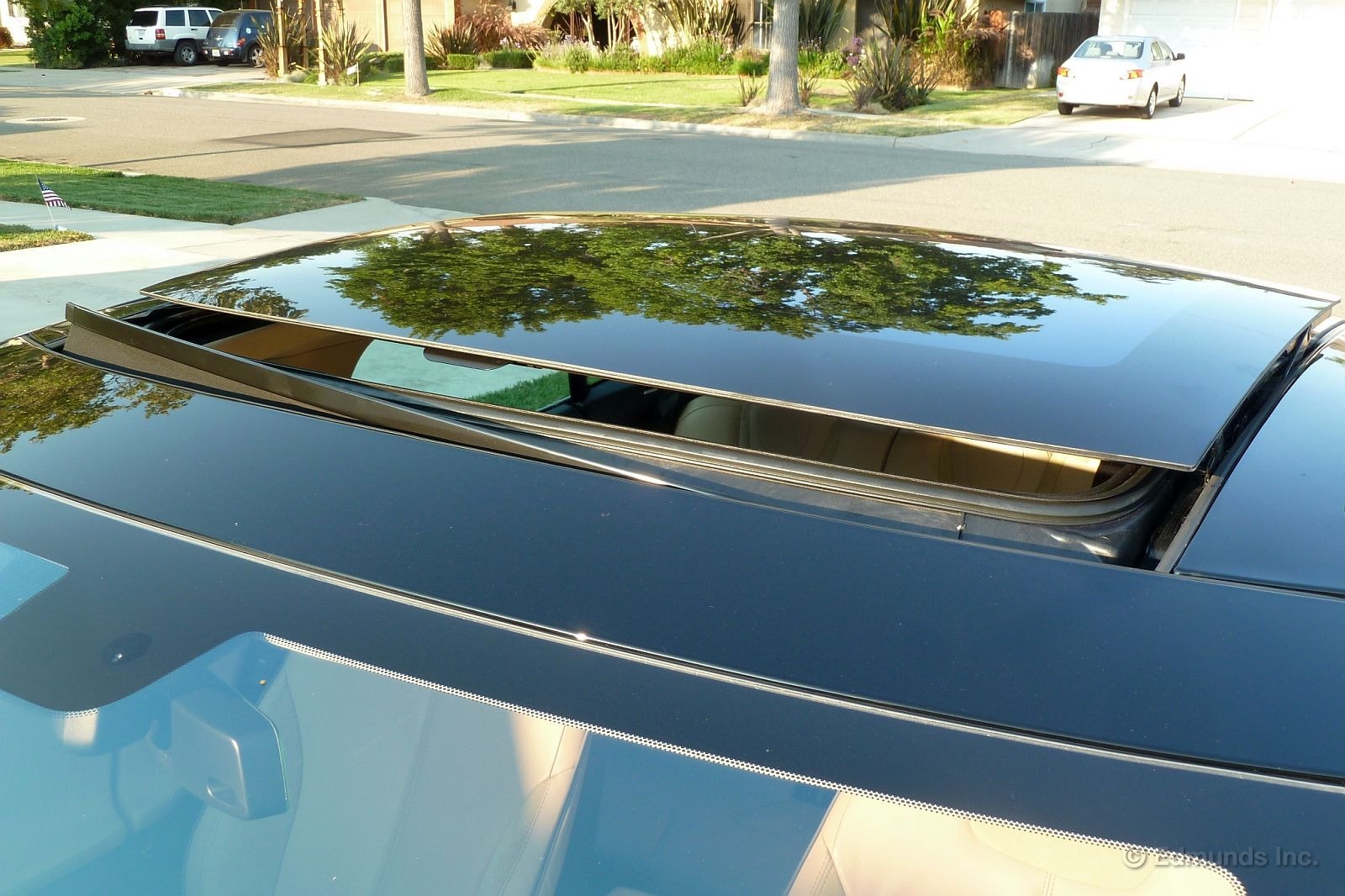
As you can clearly see, the pop-up air deflector isn't popping up on the driver's side.
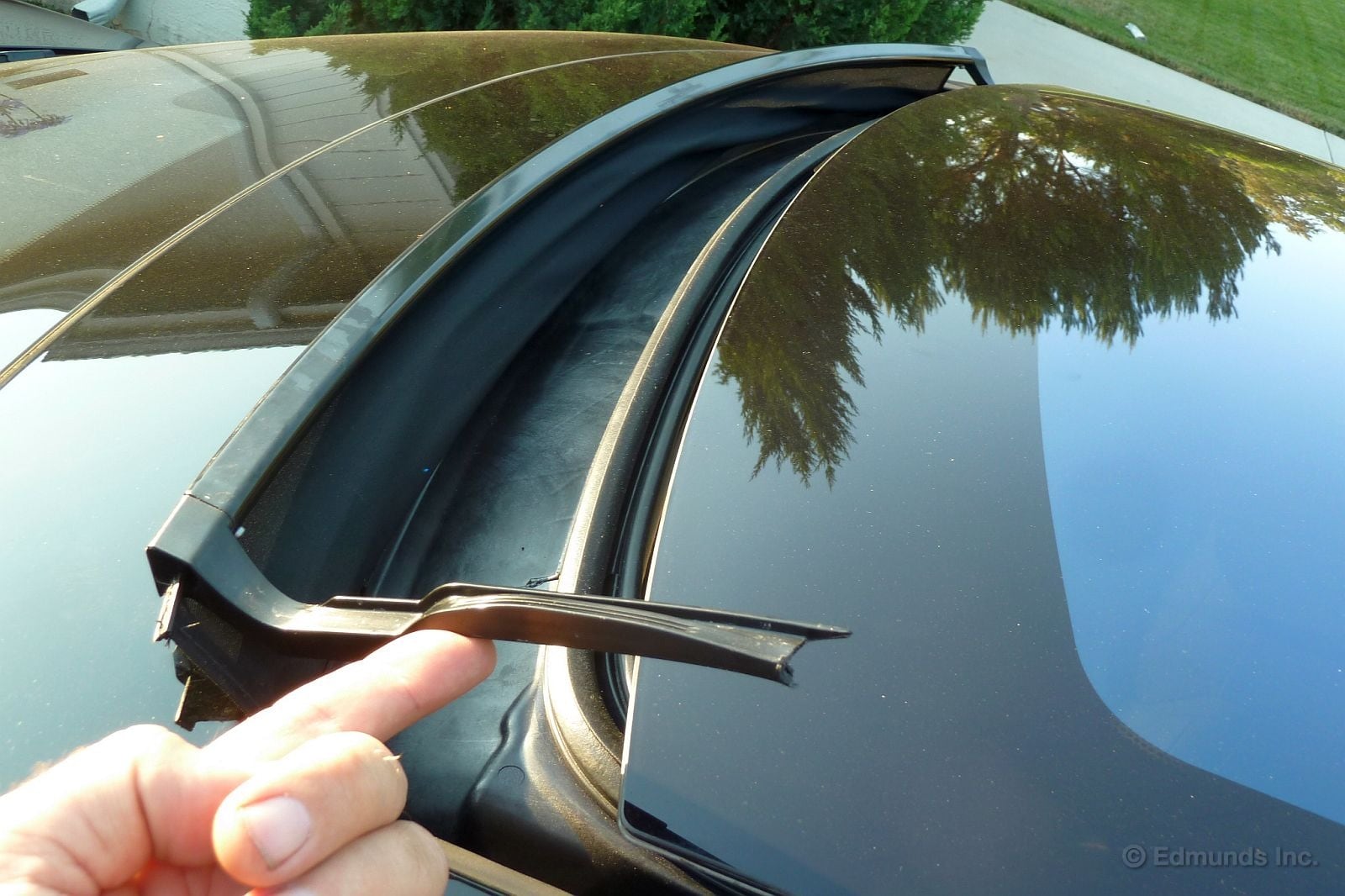
A closer look shows why: the left-hand pivot arm is broken in two. Yes, it's made of plastic, but plastic isn't unusual for this sort of part.
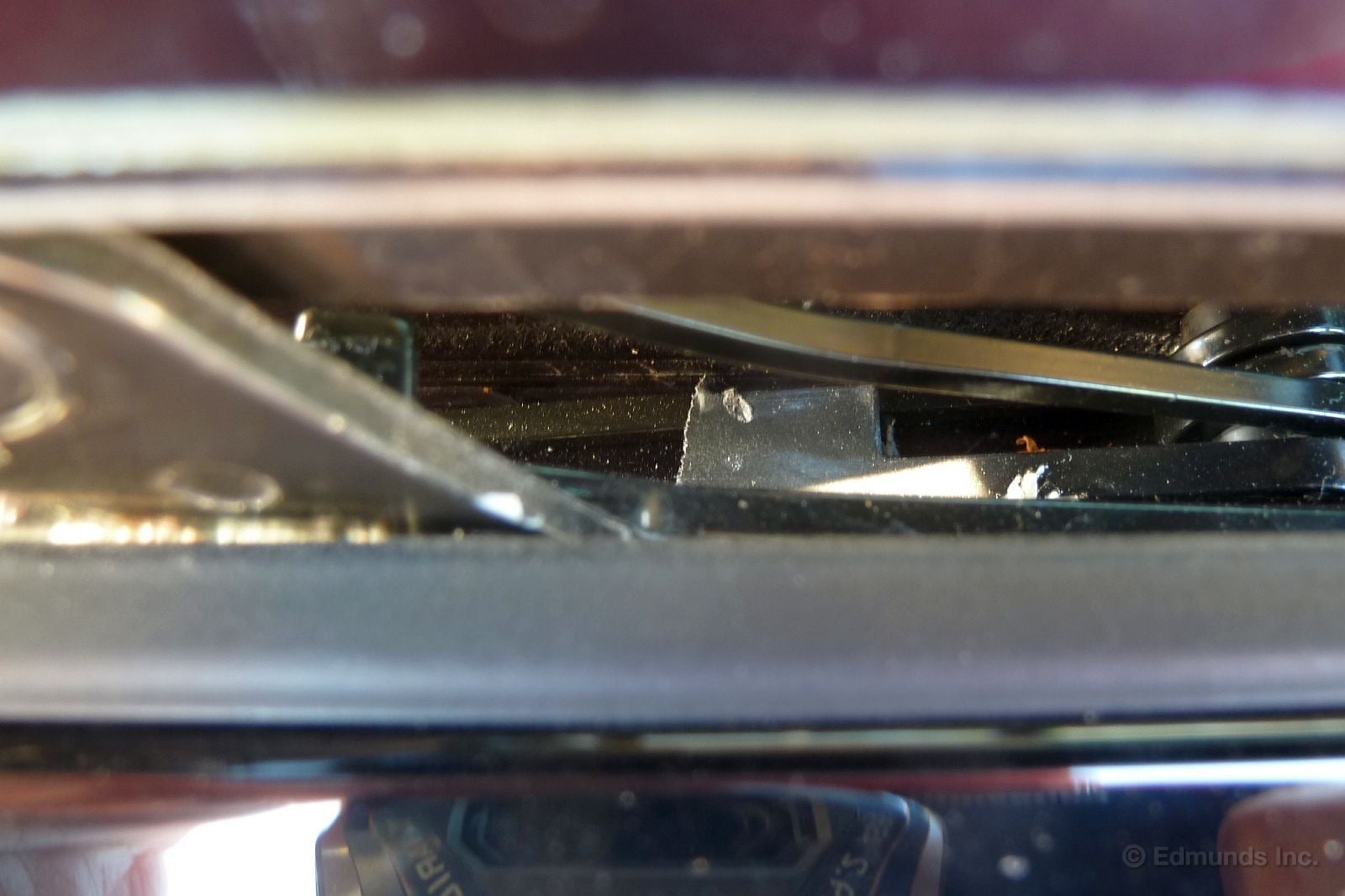
The remaining piece is still attached to its hinge point, but it's free to drop down into the works where it can jam things up.

I can fiddle around and line up the pieces, but the result only shows how futile it would be to attempt to fix it. And it looks to be a brittle sort of fracture. This fix is going to require a whole new piece.
I'm a big fan of the Tesla Model S and of Tesla's approach to the EV segment in general. There's a lot of genius here, and it's an unprecedented car from electric vehicle performance, range, and usability standpoints.
But I also see many signs of Tesla's inexperience as a carmaker. After all, this isn't the only quality or satisfaction issue that has cropped up on our test car. I'm of a mind that Tesla is set to become a permanent part of the automotive landscape, but if anything shoots them down it's going to be quality issues like this.
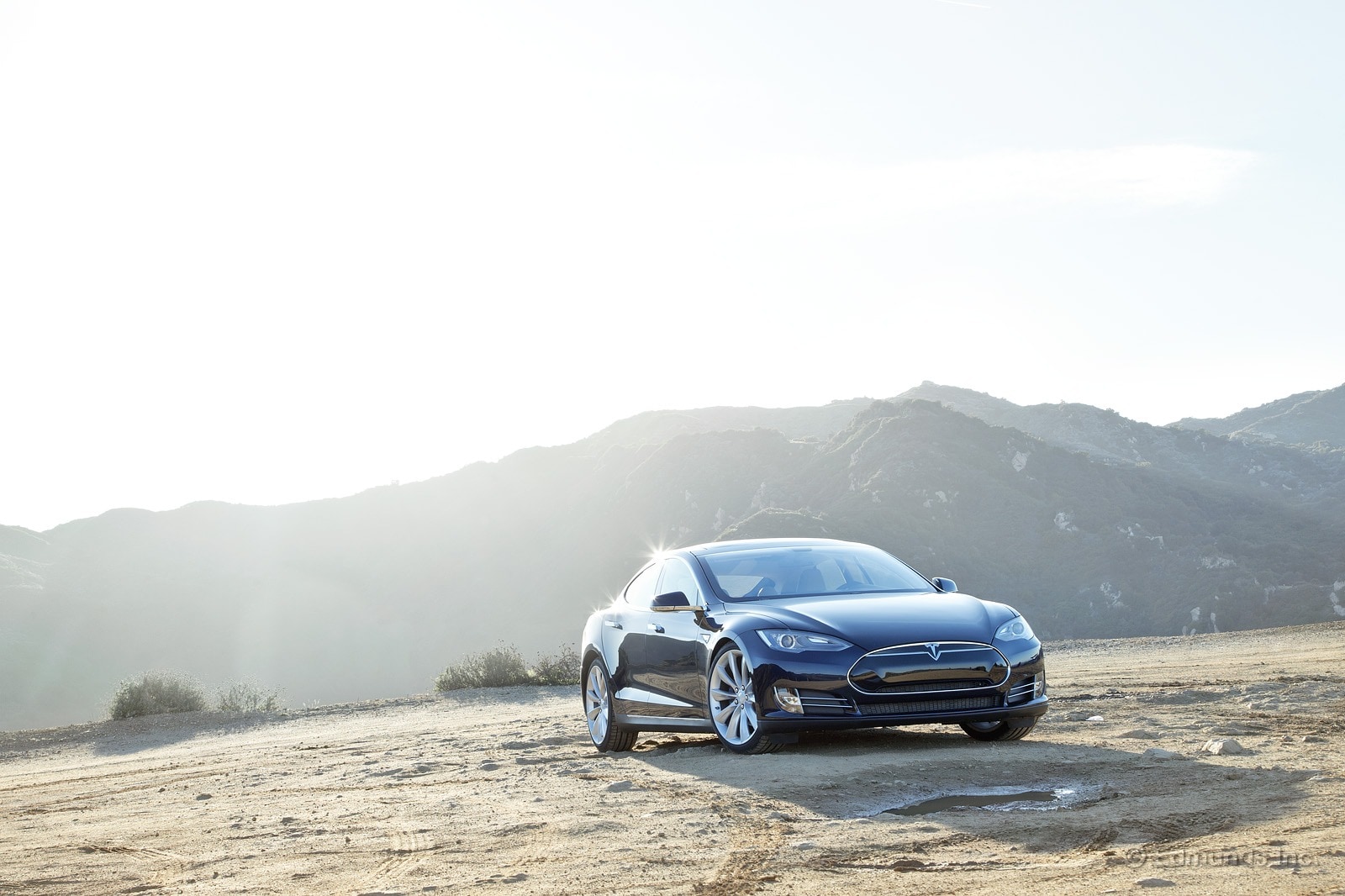
I don't know why it has taken me this long to drive our long-term 2013 Tesla Model S. But somehow it worked out that way. I had Dan give me a run-down so I wouldn't screw anything up.
Despite reading all of the posts in our long-term section, driving this car is new to me. So bear with me if I repeat observations that other editors have made.
Let's start at the beginning. I didn't have to use the key fob to open the door. As my hand got close to the recessed door handle, it popped out for my use. As I slid into the driver seat, the car started. Dan told me the car starts when your body hits the seat. You turn the car off the same way. Get out and it shuts off.
I like to control things myself so I went through a few scenarios in my head of when I wouldn't want this to happen. What if I drove a friend somewhere and was waiting outside for them? I just want to sit in the car, not necessarily have it running and using up power. Minimal power is used when idle. If I was really worried about conserving energy, I could turn off the climate system. A little bird told me that deep in the controls, there is a way to override this and shut the car off. But I haven't pursued it yet.
Dan took me through the functions of the center display. Everything runs from this hub: climate, navi, entertainment, analytics, etc. Then he showed me how to reboot it in case it weirds out on me. You can even put on the rear camera and leave it on while you are driving for extra blind-spot visibility.
When I drove into the office in the early morning, the rear window was fogged over and while I waited for the defogger to clear it, I left the rear camera on so I could see behind me. It has a clear, sharp picture and really helps with visibility. It gets distracting though, so as soon as the rear window cleared up, I switched the camera off.
Next up, entertainment. Dan warned me that the two USB ports are for charging only. They will not play an iPod. Very few of the modern cars in our fleet play my ancient iPod anyway, so that's OK. I'm used to it. I could pair my Bluetooth phone to the car and play music through it. But I don't keep any music on my phone. Then Travis reminded me that I can play almost any song I want by using the voice command. When you have all the songs in the world at your disposal, it's very difficult to narrow down. There was already an '80s rock station on and I was enjoying listening to my youth, so I will wait until this weekend to try and stump it.
And then I drove it home. I've been very fond of almost all of the electric cars that have passed through our garage. I was particularly smitten with our Mini E tester and the Nissan Leaf. I thought of those cars as little robot pals, like R2-D2 and goldenrod. (Nerd alert: Danger, Will Robinson, there is a nerd in this car.) Driving the Tesla Model S was a whole different experience. This is a super luxury car. It's not trimmed down to eke out every bit of range it can get, but full of plush materials. It's chock-full of battery, running along both sides of the vehicle. And nothing is spared. There is plenty of space in the trunk and frunk. And there are the extra little jump seats in the back if you need them.
Like all electric vehicles, the Model S is quiet. But quietly powerful. It has tremendous passing power. I got a kick out making silent sling shot moves on the freeway. It's futuristic. I will always enjoy the exhilarating rumble of a V8 engine but being able to access that feeling of silent limitless power is pretty special. It's like driving in the void of outerspace.
More observations later. These are my initial impressions. Next up, Dan will tell you about fixing the sunroof.
Let me know if there is anything specific you want me to test.
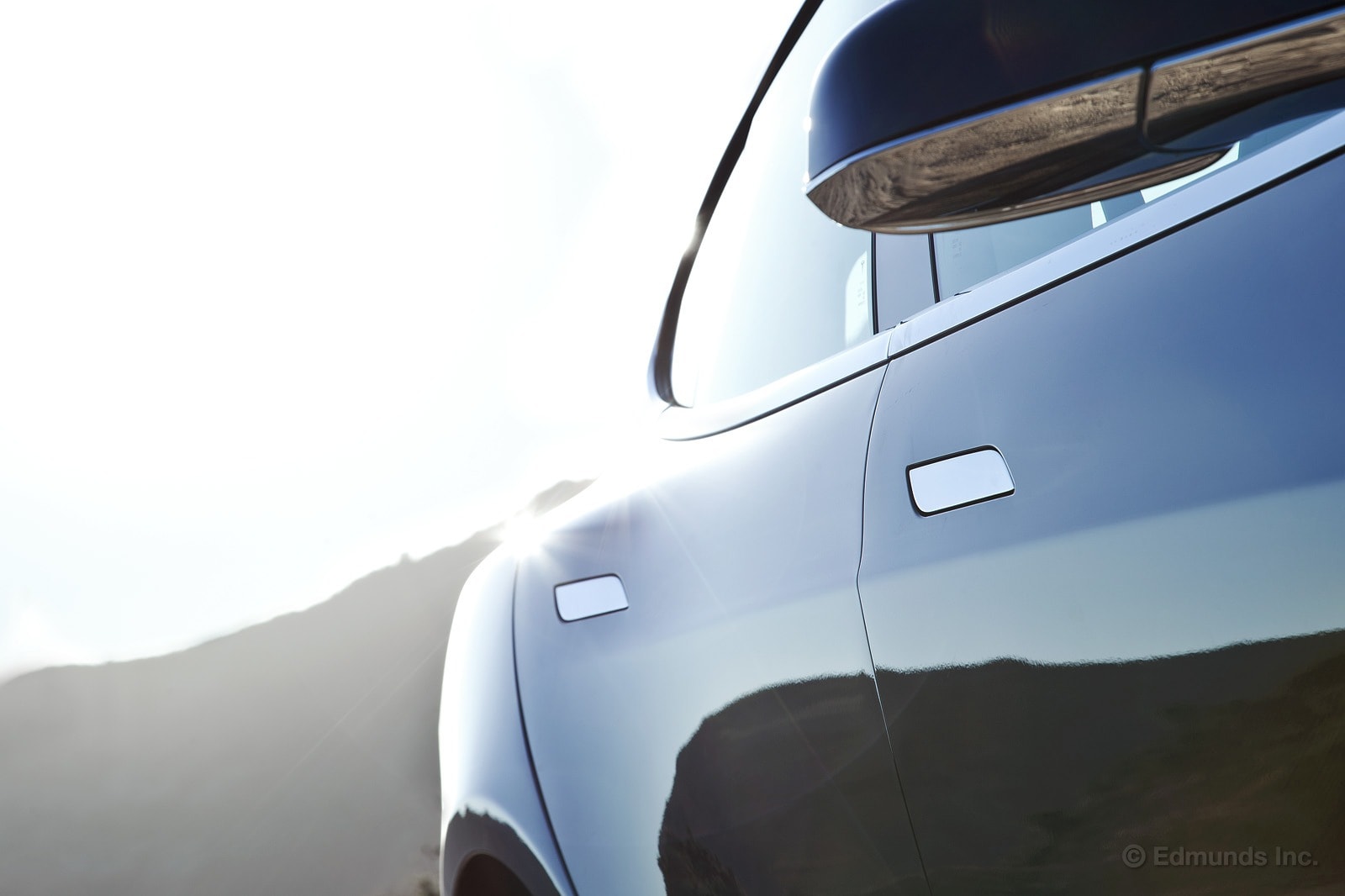
Love 'em or hate 'em, the door handles on the 2013 Tesla Model S are unique and add to the space-age vibe of the car.
Click through for an 11-second video of the driver door handle in action.
What is your verdict, yea or nay?
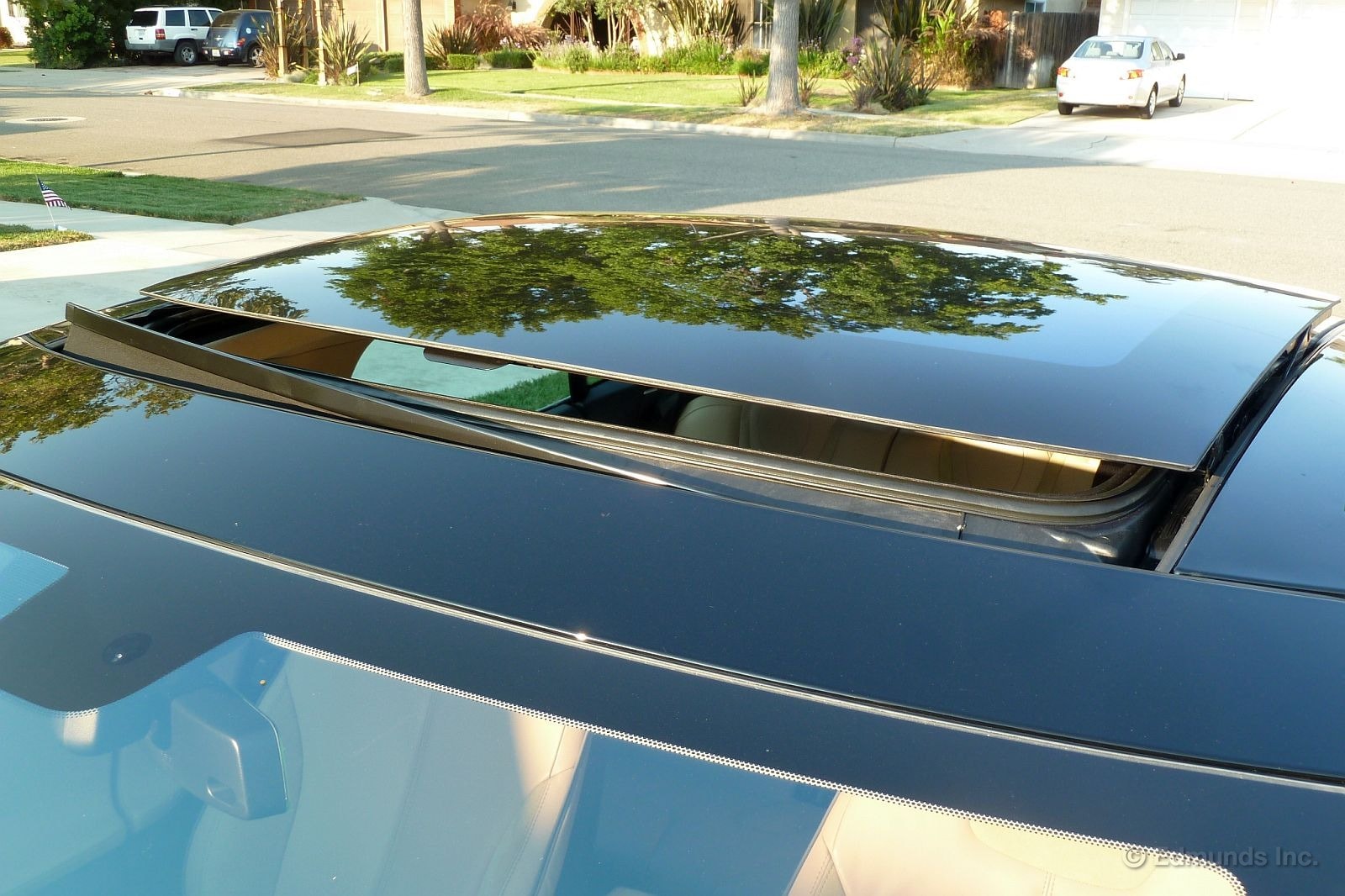
Late last week our 2013 Tesla Model S suffered a jammed sunroof because the pop-up wind deflector had inexplicably broken in two. The piece that was left behind fell into such a position that it jammed up the works.
Someone at Tesla got wind of this after I posted a tweet on my personal Twitter account, and they sent me a message on Saturday. I promptly emailed them the same pictures I'd taken for the "Broken Sunroof" post that went up a few days ago.
On Monday I got word back that the local service center probably had the part in hand, they wouldn't know for sure until they eyeballed it themselves. So, we set up a Tuesday appointment for 12:30 pm. The local service center is only a couple of miles away, and they have a concierge service, so they sent someone over to pick it up so I could keep on working.
The guy's credentials checked out, and he knew the story without prompting, but I was still a bit nervous when I handed over the key. This sort of dealer valet service isn't new, but I'd never personally used anything like it before.
So I spied on him as he drove away. I followed his progress back to the service center on the Tesla iPhone app.
The little icon traced its way back to the service center's location on the map, and within a half hour I could tell they were busy working on the sunroof.
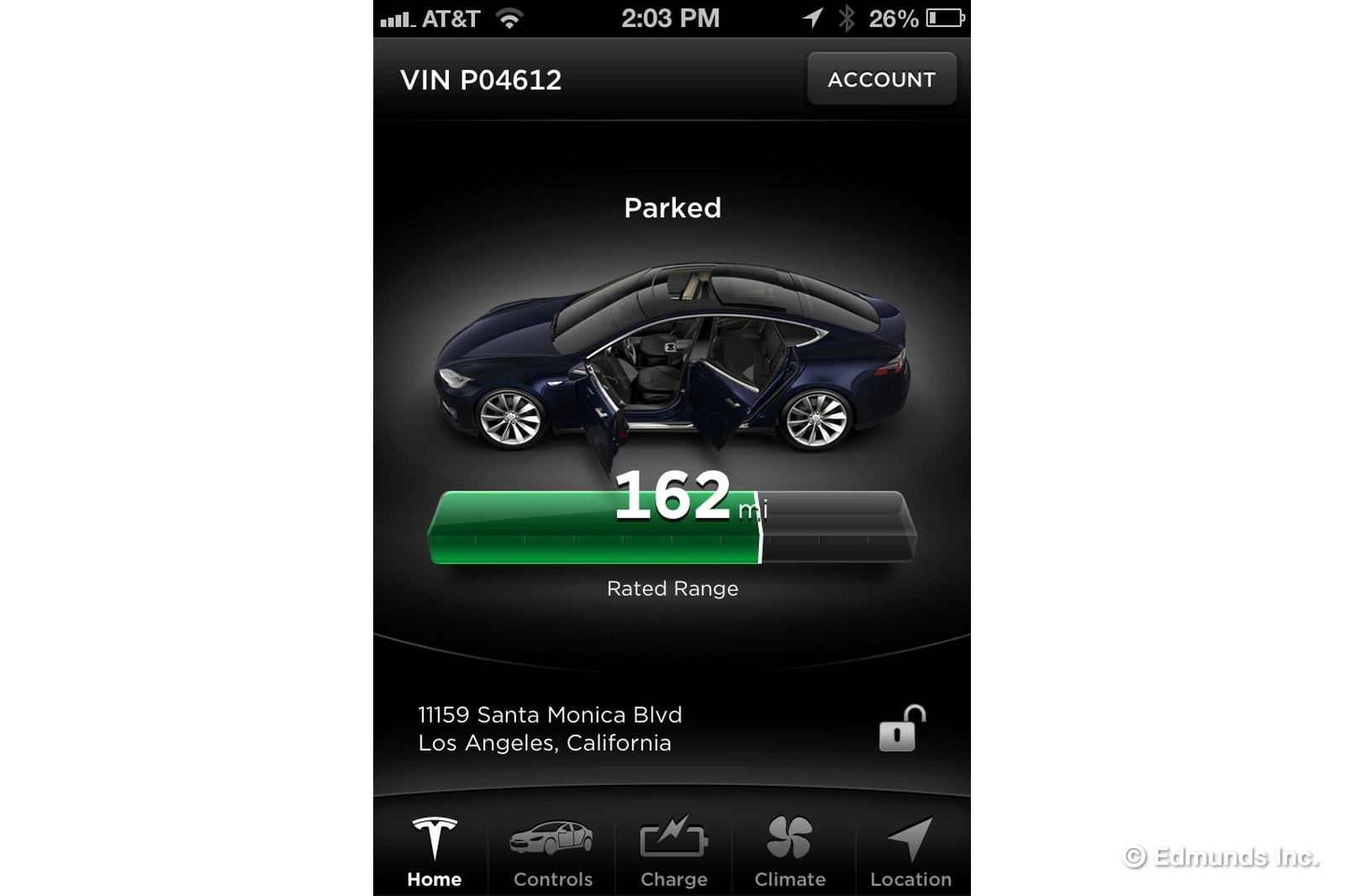
They called a couple of hours later to tell me it was all done. The concierge service brought the car back before the end of the business day. The only skin off our nose was the time spent letting him in and out of the Edmunds parking garage.
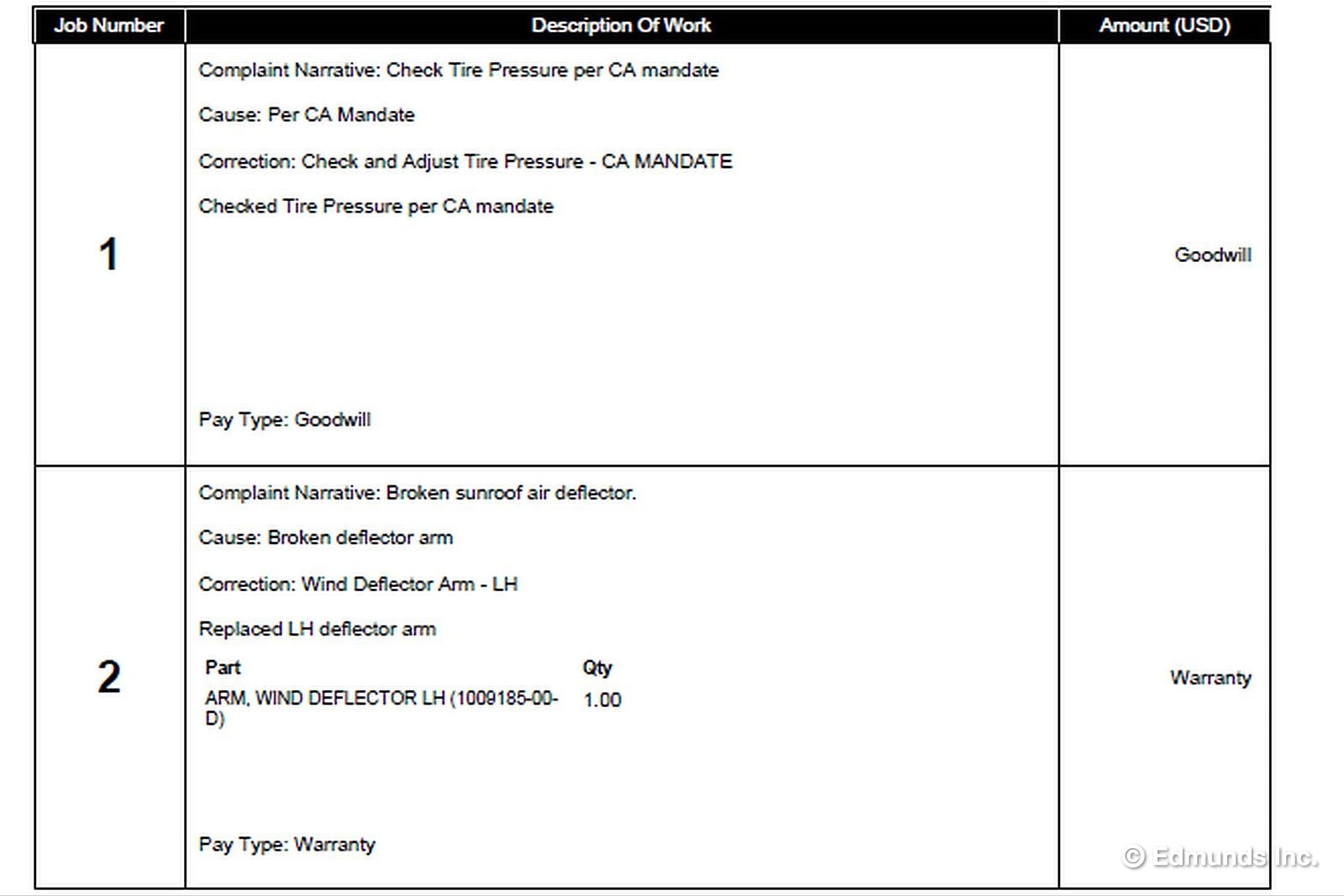
And they e-mailed us an invoice before the car arrived back in our garage. Free. That's what I like to see.
But the invoice has a page two. They fixed a couple of other things while they were at it.

One I knew about and shared with the valet when he picked up the car. Some black goo had gotten smeared onto the roof as the sunroof opened up and out. I figured it was related to the jamming because it was on the same side. I imagine some sort of Oldham-esque sunroof burnout slinging grease back when someone attempted to open the jammed sunroof.

My burnout theory may or not be right. The invoice has it down as excess butyl adhesive. Whatever the cause, they cleaned it up and replaced a seal.
And then there are the floor mats, which they replaced. I'd been thinking of commenting on the lame Velcro attachment they have in a separate post, but hadn't yet taken my pictures. The Velcro was coming off and the mats were starting to scoot about, in fact. Tesla had apparently issued a service bulletin and a fix, so they took this opportunity to swap them out.
And page two of the invoice was free, too.
Money out of pocket: $0
Time out of service: 4 hours. But really it amounts to more of 5 minutes of my time because I only had to make two trips up and down the elevator. The car would have sat idly in the garage whether we had scheduled this service or not.
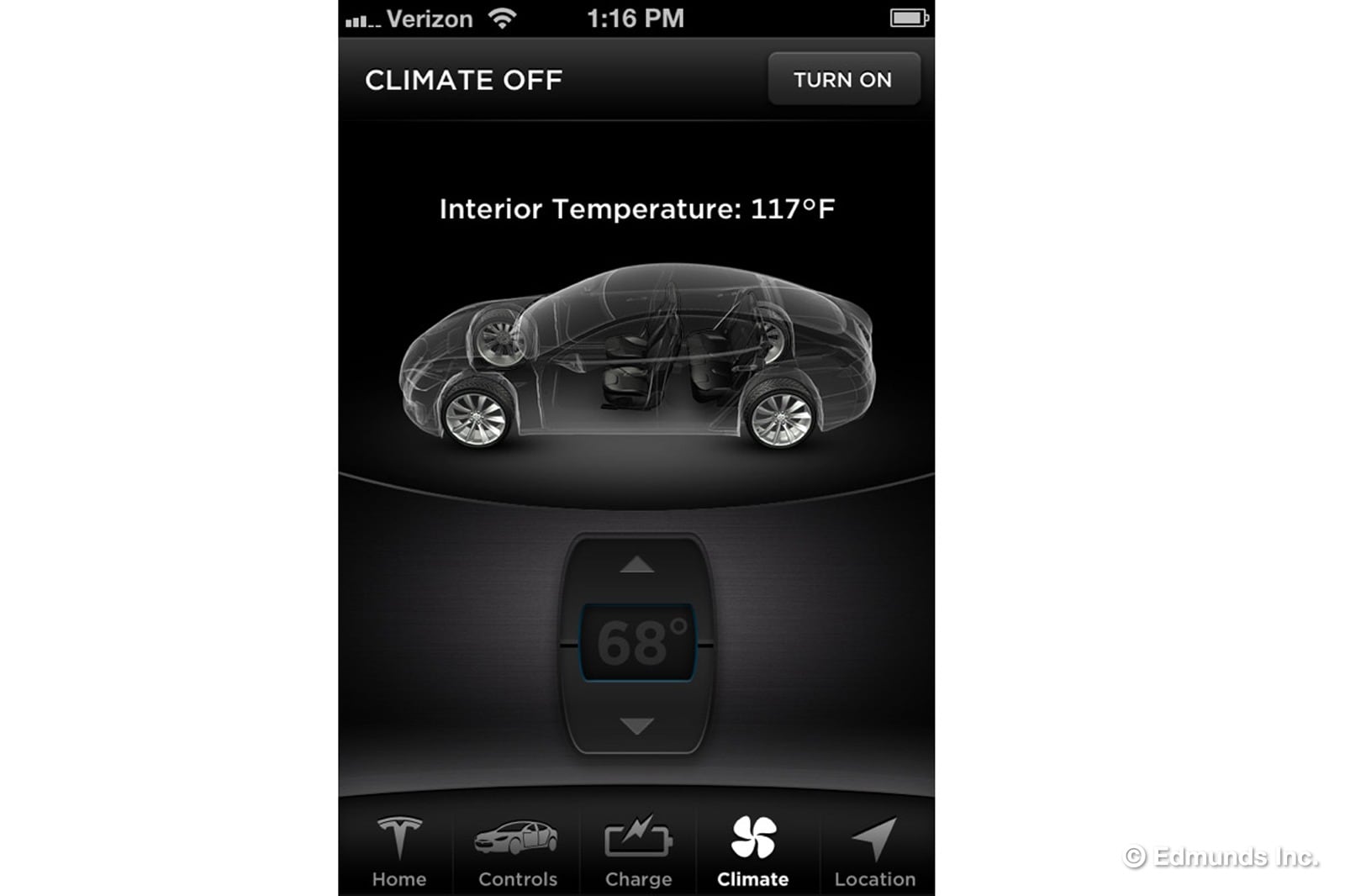
I'm fairly obsessed with the iPhone app for our 2013 Tesla Model S. Every once in a while I just check in to see how the car is doing. It's like having a baby monitor for your car.
I noticed that it loses some estimated range just being parked overnight. Not sure if it is consuming a small amount of energy while it rests or if it adjusting itself based on my driving style from my latest trip. Either way, I check the app occasionally to see where I stand.
One sunny afternoon I noticed that the app said the interior temperature of the car was 117 degrees F. Yikes.
So, using the app I vented the sunroof to let some of the heat escape. (It's also fun to be able to honk the horn when my neighbor's kids get too close to the car. Tee hee.)
I checked back about 30 minutes later and the app said the car's interior was 116 degrees. Nothing stops the relentless Southern California sunshine.
Before I went out later that afternoon, I used the app to turn on the climate control system and watched as the interior temp quickly dropped.
The car was comfortably cool when I slid into the driver seat three minutes later.

Two of my friend's birthdays are one day apart in July. So, I piled the gang into our long-term 2013 Tesla Model S and drove them to a local restaurant for a celebratory dinner.
I asked for a review of the back seat after having three adults sitting across. The tallest of the group is 6'1" and he was sitting behind the front passenger seat. He said there was plenty of hip and elbow room but the way the ceiling is shaped, he had to tilt his head to the side to avoid it touching the top. He added that if he was sitting in the middle, under the glass sunroof, he would've been fine.
All of the three rear seat passengers were happy with the materials and comfort of the seats. It was a very hot night so I had turned the climate system on a few minutes before we got into the car. All were happy with the level of air conditioning that reached the back.
| Rear hip room | 54.7 inches |
| Rear leg room | 35.4 inches |
| Rear head room | 35.3 inches |
| Rear shoulder room | 55.0 inches |
| Total Seating (not counting the jump seats) | 5 |
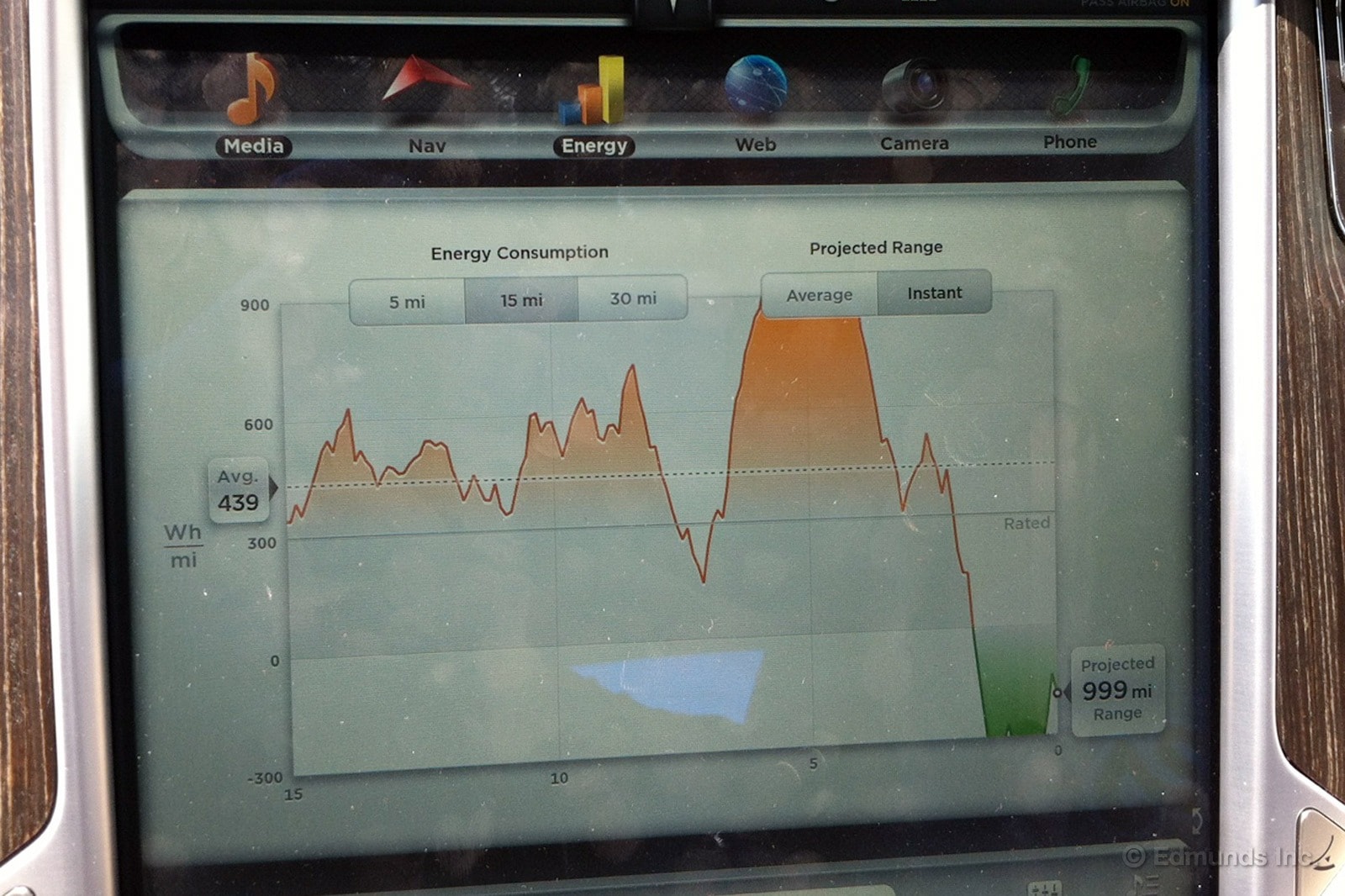
Here's a shot of the Energy Consumption screen after driving up and down a steep hill in Palos Verdes, CA.
The normal fully charged estimated range offered by the Tesla Model S is based on maintaining an average of 300 Wh/mi (Watt-hours per mile), the gray line you see going across the screen. Most of my driving style rests above that line, not usually as high as the average in this photo showing 439.
You can see the mountainous orange peak from when I drove up the hill. Then you can see the deep green valley of my trip back down the hill, using the regenerative braking in the Model S most of the way down.
The estimated range (which you can't see in this photo) at the time I started my downhill trip was 124 miles. That number stayed put until I got to the bottom of the hill. I gained no estimated range back but I didn't "consume" any either, according to the Tesla's display.
I remember taking this exact trip when we had our Mini E test car, and I had gained 7 miles of range on the trip down. These are all estimates, of course, based on how the car is rating your driving at the time.
According to this analysis, if I could drive downhill all the time, I'd have a projected range of 999 miles ;)

Dan Edmunds approaches me once a year to reserve a car for his annual family tour of the northwestern states. This year he asked for our 2013 Tesla Model S. A week or so later he changed his mind, citing the lack of supercharging stations along his route. The extra time required to refill at civilian charging stations didn't fit into his time schedule.
Now Tesla has announced an extension of its supercharger network in the Pacific Northwest. Dan may want to rethink his plans.
New charging stations opened in Washington State. Tesla owners now have access to free supercharging stations from Vancouver, BC to Burlington, WA to Seattle, WA to Centralia, WA to Portland, OR. There is still a gap between Portland and Folsom, CA, a span of about 600 miles. But according to the Tesla website, the supercharger build-out will link those areas by the end of this year.
The Tesla supercharger network is almost ready for an Edmunds road trip.
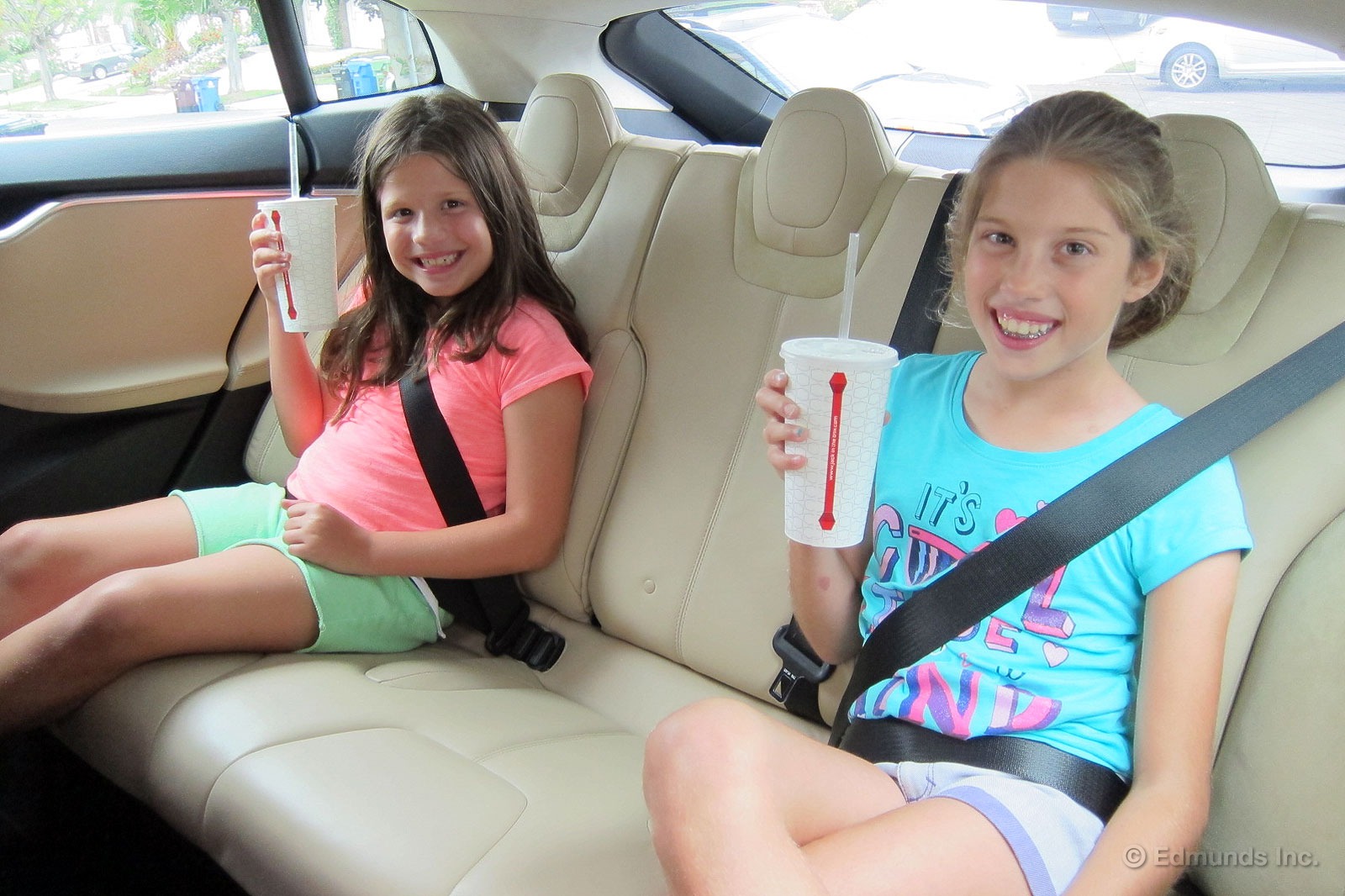
A few nights ago the Oldham's pushed aside our daily intake of skinless grilled chicken breasts and kale smoothies and hit the drive-thru at the local Jack in the Box where breakfast is served 24/7 and the new slogan is Go Big or Go Hungry.
We went big.
And on the way home I discovered two things. 1) My desire for fatty fried foods is far greater than my paternal instinct. 2) The Tesla Model S is without rear seat cupholders.
"Daddy, there's nowhere to put my drink," said little Oldham #1. "Yeah, there aren't any cupholders back here," confirmed little Oldham #2.
With my bunnies fed and my belly full I took to the socialsphere and I tweeted @elonmusk about the issue. He replied quickly and politely, "Coming out soon and will be available as a retrofit."
So there. We'll follow up when that happens. In the meantime, I highly recommend the Big Waffle Stack. Just make sure you have time to take a nap after you inhale it.
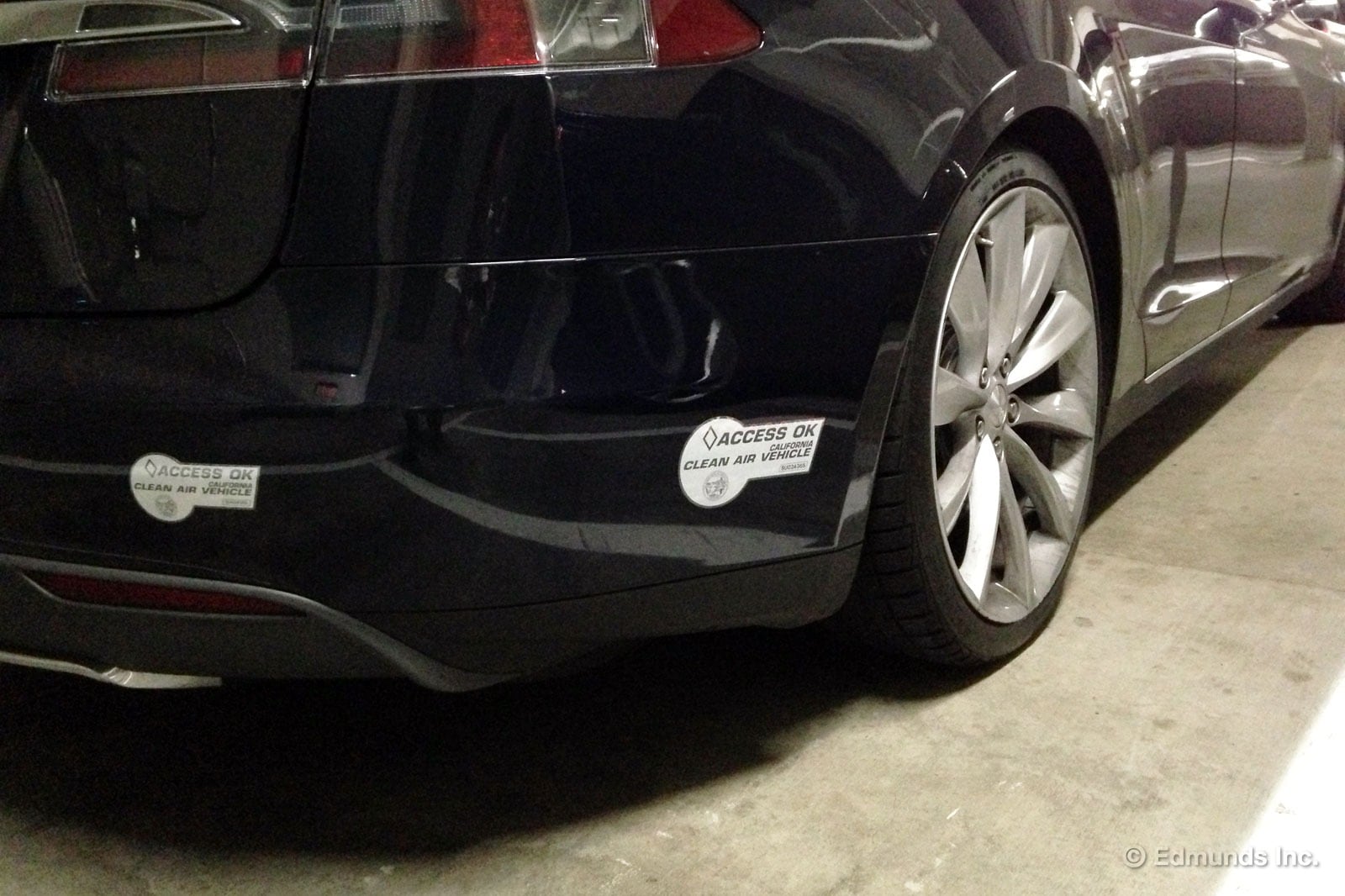
Clean air stickers on our filthy 2013 Tesla Model S. First stop is the car wash. Next stop is the HOV-lane to bypass as much traffic as possible. We may even wait until rush hour just so it feels more satisfying.

This 11-second video I made of the Tesla Model S door handles got lots of comments and questions on YouTube and Reddit.
The Reddit community mostly asked about their operation in icy weather conditions (which I can't test at the moment) and also wanted to know what happens if you get your fingers stuck in there when it closes.
So, I tested it. I can tell you this before you watch the video. The door handles do not detect an "intruder" and pop back out automatically. They continue to close.
Click through for the video...

Just over a month ago we found out that our as-yet-uninstalled Tesla HPWC (High Powered Wall Connector) contained a flaw that would prevent it from working at the 80-amp charge rate it's supposed to. Internal fuses were blowing in customer units in the field, leading Tesla to send out a software update to all vehicles to prevent them from drawing more than 60 amps until they had a fix.
We learned about all this through a Tesla message board, but we'd heard nothing from Tesla directly. So we put our installation plans on hold and gave them a call to find out when we might get our hands on a revised one.
It arrived on my desk while I was on a business trip last week, about 4 weeks after I put in the call.
Here's what a new HPWC with "the fix" looks like inside.
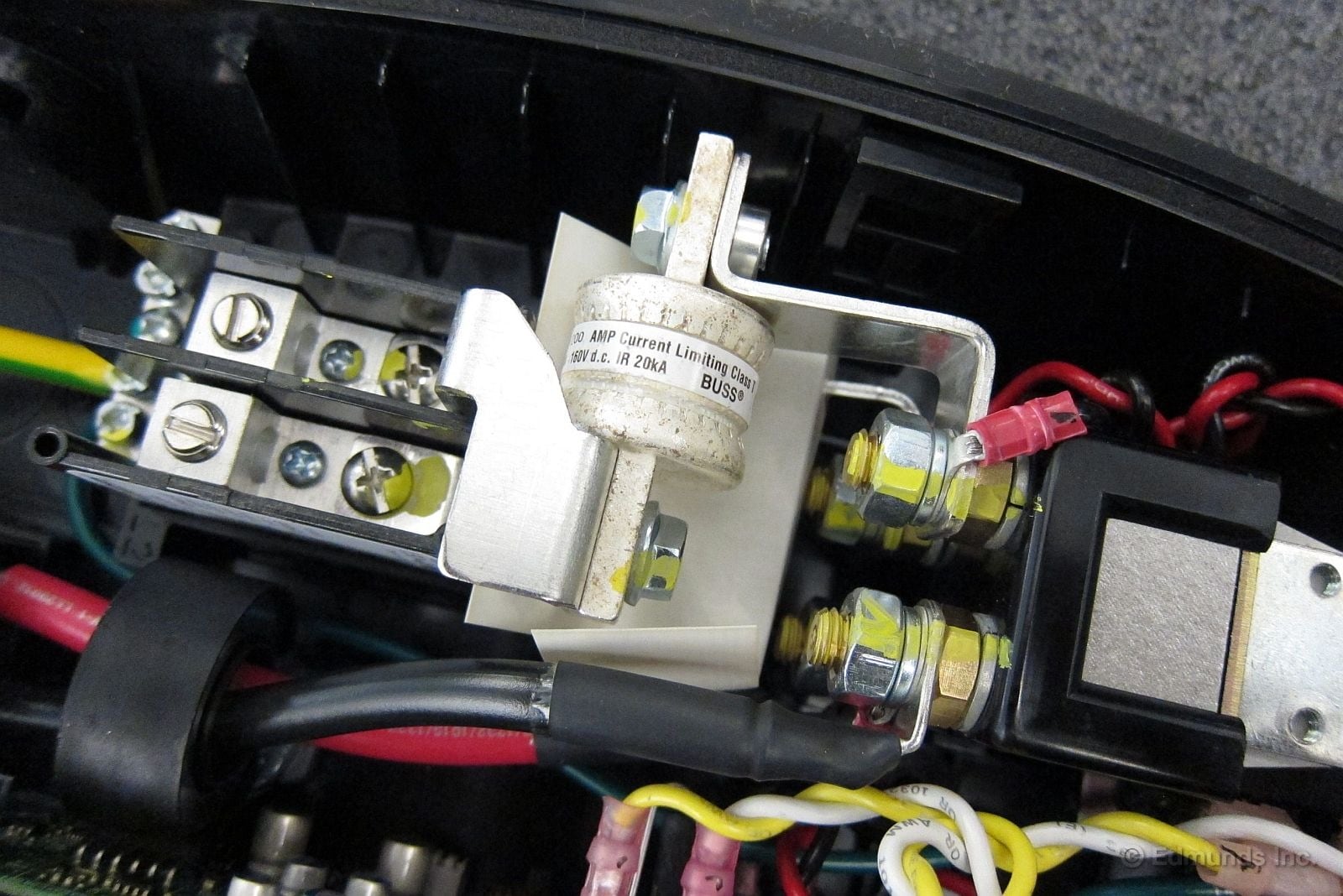
A pair of 200-amp BUSS fuses sits crossways in the housing.
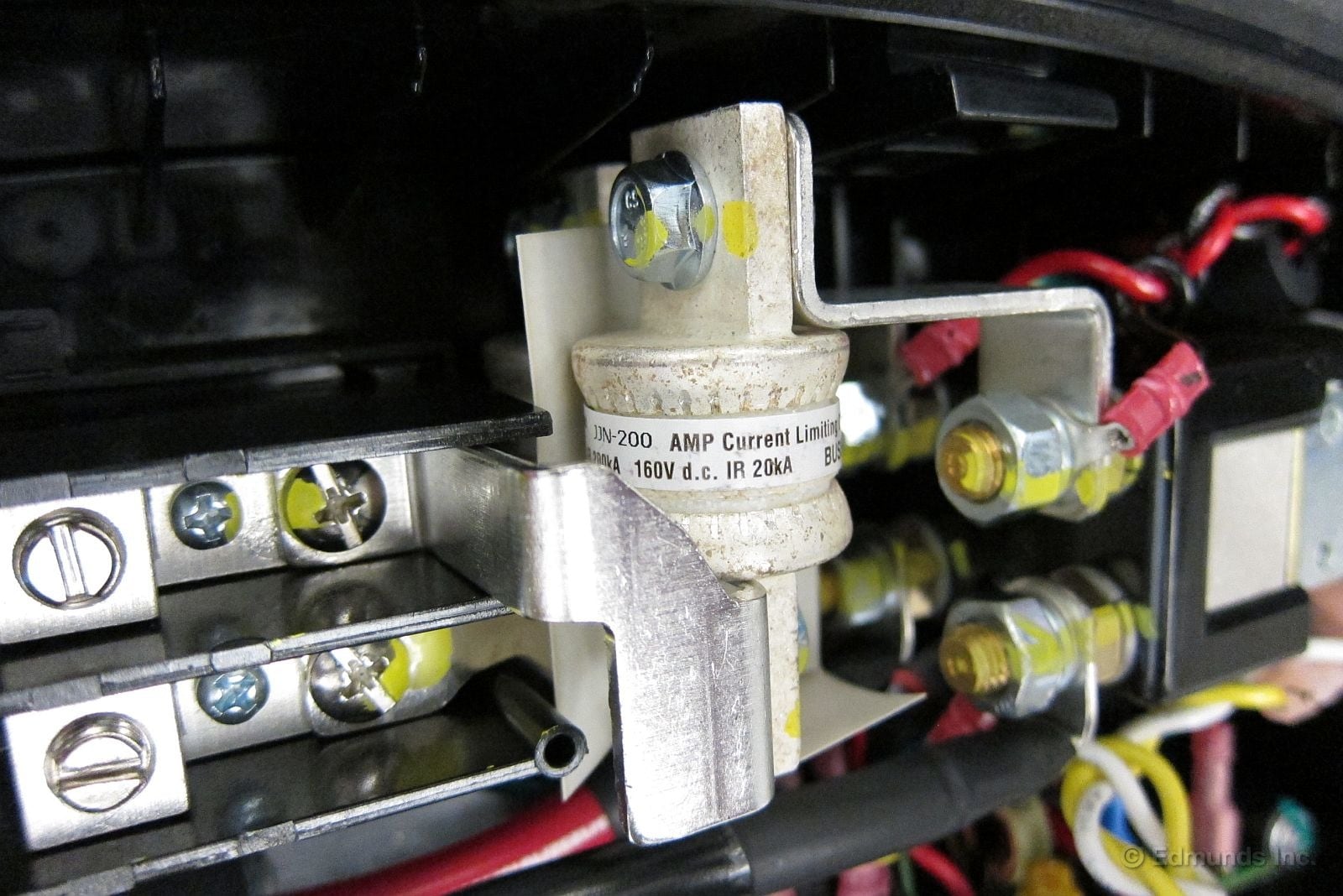
Yes, there are two of them. One is stacked atop the other. You'll notice that the brackets they mount to have been replaced so the fuses can sit 90-degrees from their original orientation.
In case you've forgotten, here's what the old one looked like before the upgrade.
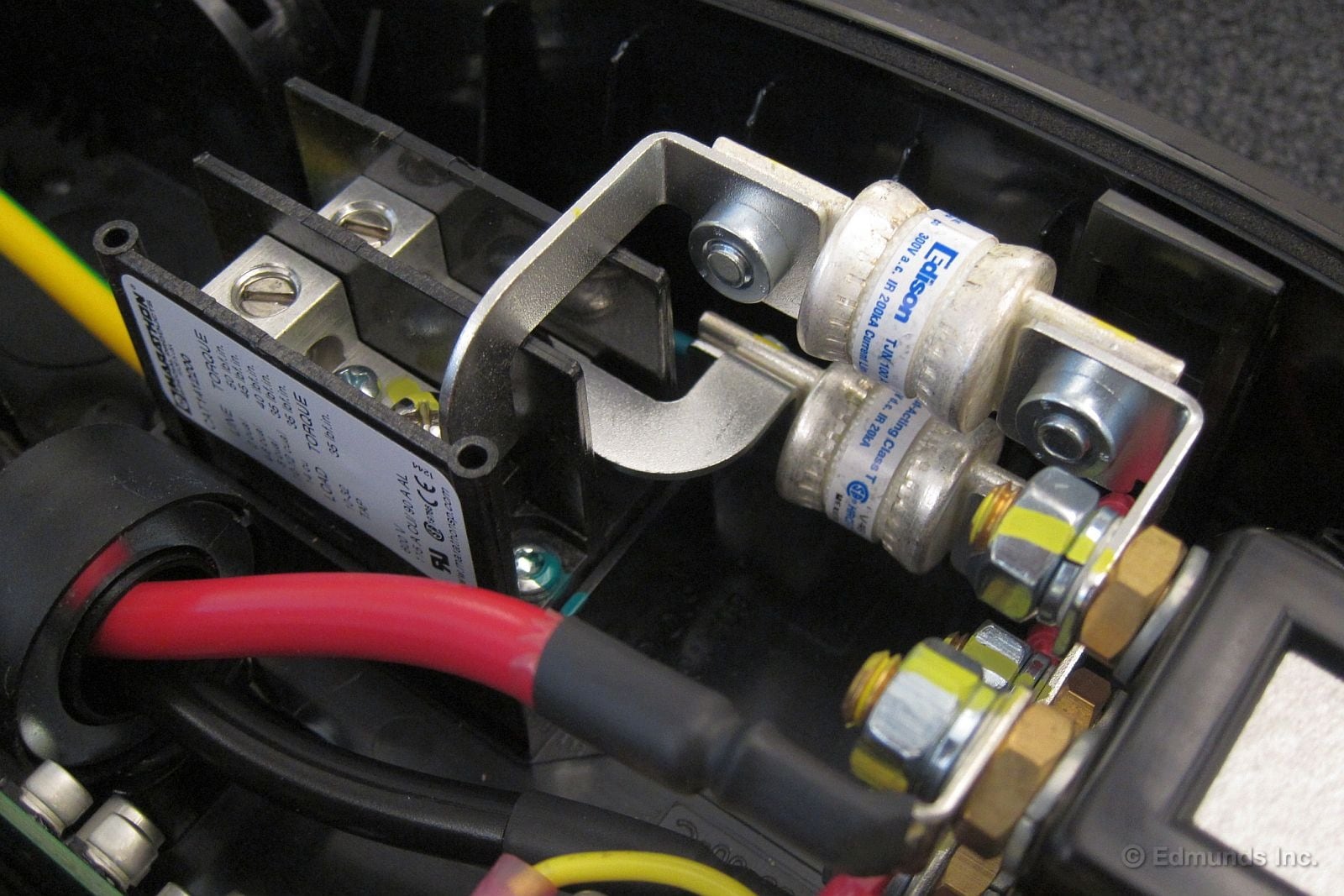
The questionable fuses were 100-amp units supplied by Edison, of all people. These beefier 200-amp units ought to do the trick.
Now we're ready to restart the installation process in earnest. But it's not as simple as that. Our electrician has gone on vacation.
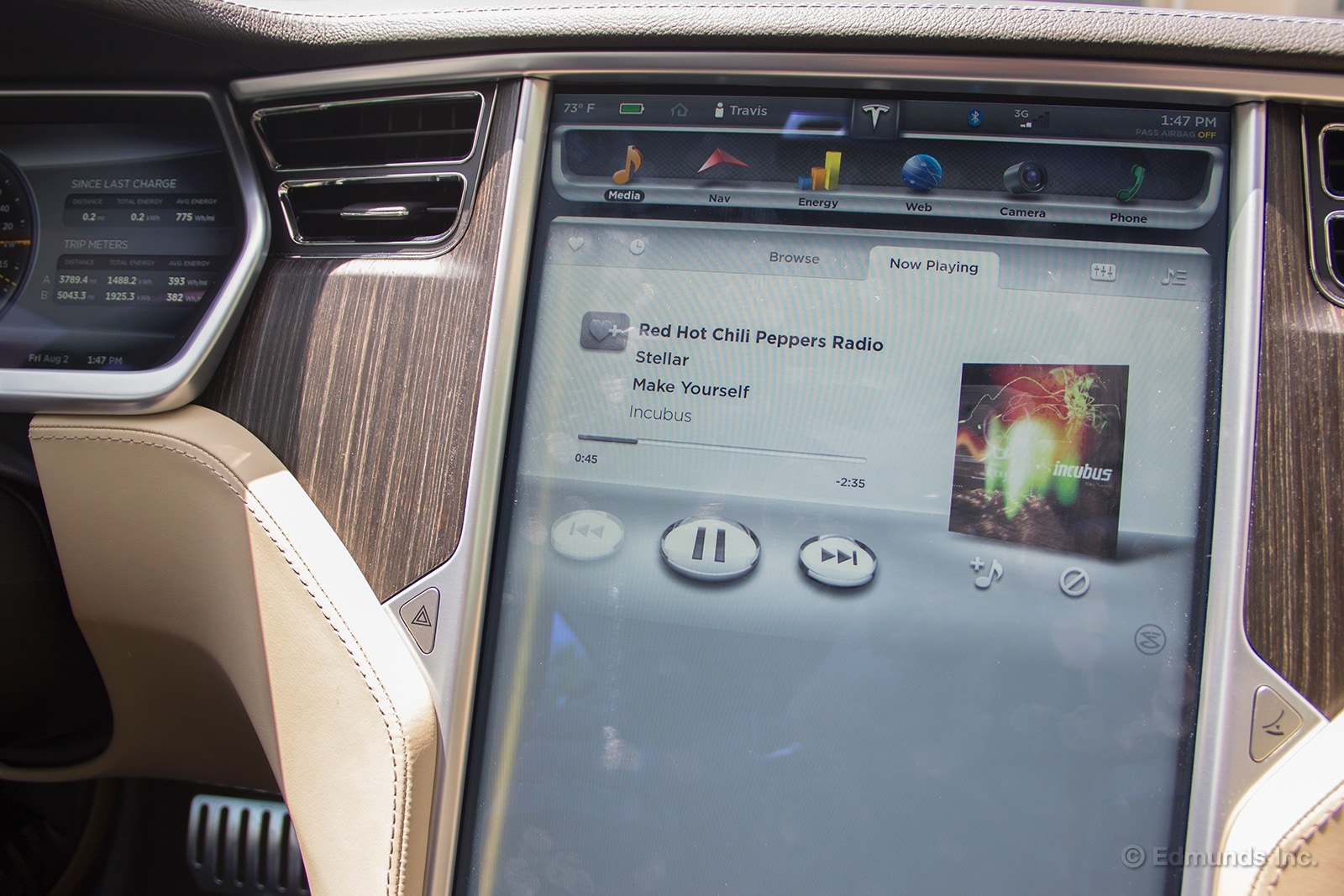
Our 2013 Tesla Model S is equipped with the optional $950 Sound Studio package. It includes a 12-speaker, 580-watt stereo with Dolby Pro Logic 7.1 surround sound, a music storage hard drive and XM satellite radio preparation.
The voice command connected to the internet radio will play virtually any song you can think of (provided it's in the Stitcher database), and the touchscreen certainly isn't lacking in square-footage, but what's the sound quality like?
In a word: Excellent.
Medium- and high-pitch frequencies are crisp and clear, while bass is strong and consistent up and down the volume range. There is no speaker distortion (regardless of genre, making it more impressive), even when you turn the stereo up to the maximum. Roll down all four windows, slide back the panoramic roof and you'll be able to entertain (or annoy) the whole neighborhood.
Since we waved goodbye to our long-term Infiniti JX35 and its optional 15-speaker Bose sound system, this is without a doubt the best stereo in our fleet.
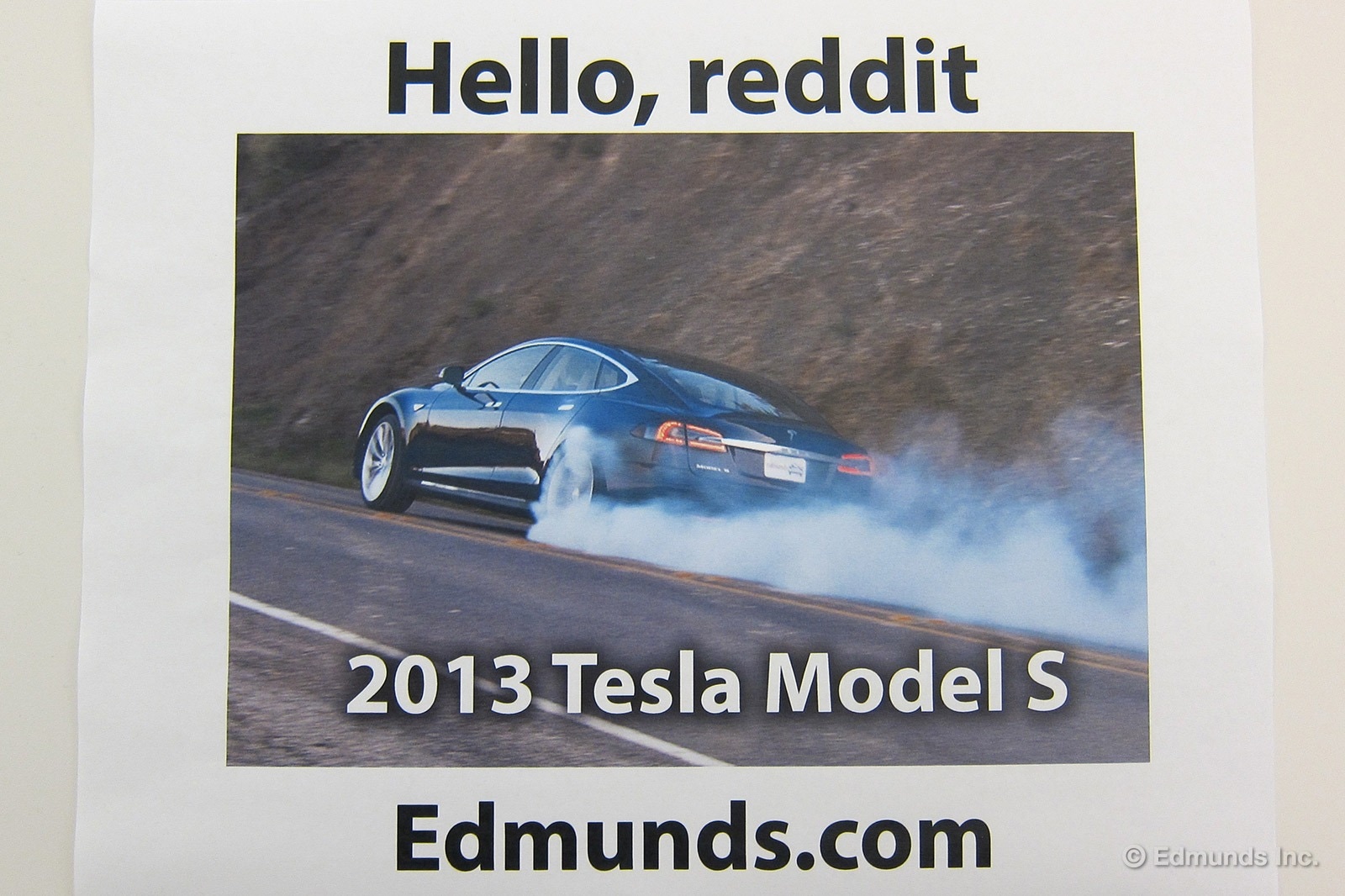
Join us today (Monday 8/12) at 11:00 a.m. Pacific Time / 2:00 p.m. Eastern Time for a reddit AMA (Ask Me Anything).
We'll be taking questions about our long-term 2013 Tesla Model S.
We won't have the exact link until a few minutes before the event starts but you should be able to find it on reddit's AMA main page. I'll post the exact link when I have it.
The chat will include Scott Oldham, Dan Edmunds, Mike Magrath and me.
We look forward to seeing you on reddit. Announce yourself as a regular LTRTBer so we can say a special hello.
Here is the reddit link to the AMA.
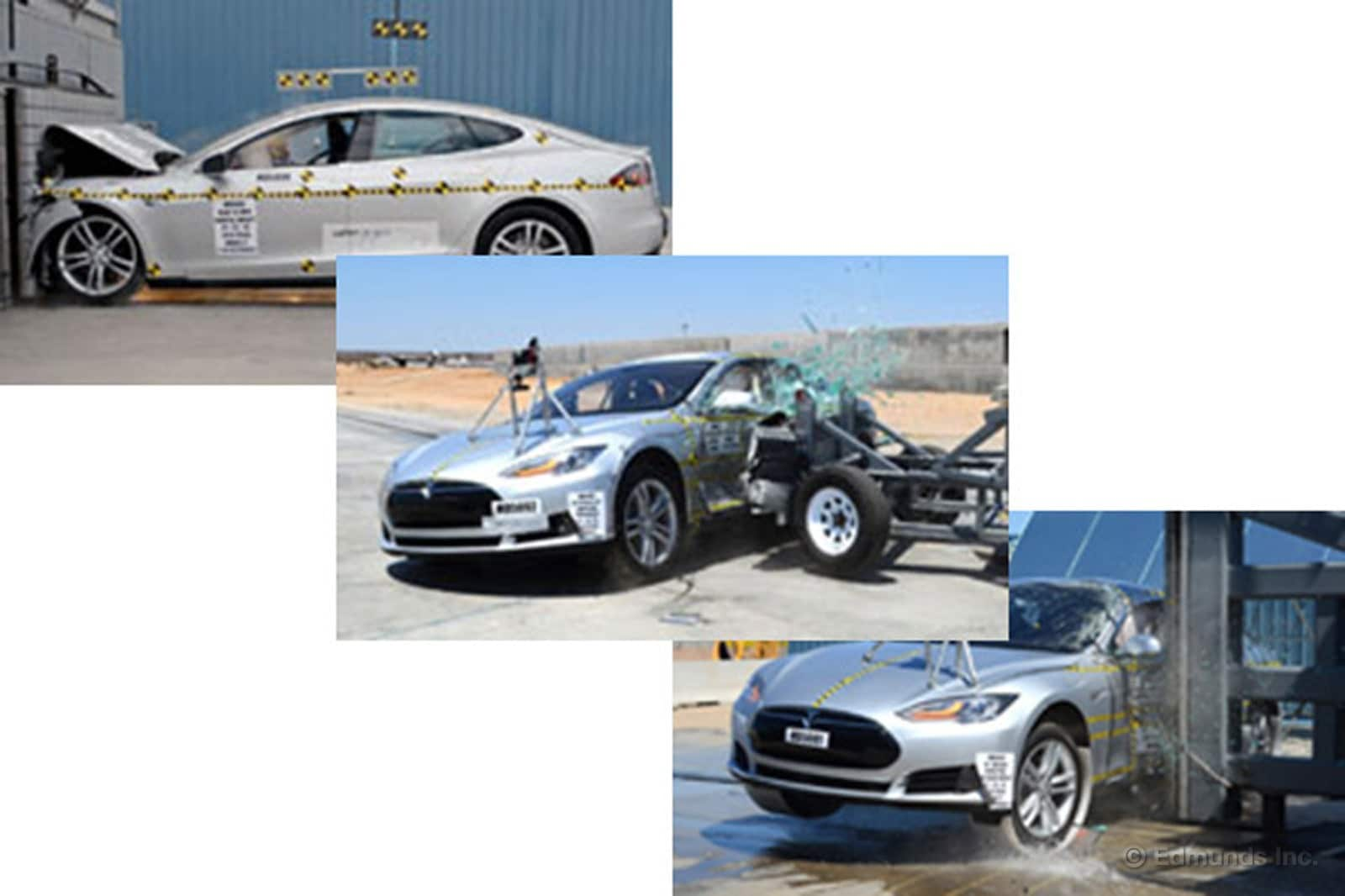
The 2013 Tesla Model S electric sedan has earned the highest five-star rating on crash tests by the National Highway Traffic Safety Administration. It received perfect scores in the frontal, side and rollover crash tests.
Click through to see video of the crash tests from the NHTSA Web site...
NHTSA 2013 Tesla Model S Frontal Crash Test
NHTSA 2013 Tesla Model S Side Crash Test
NHTSA 2013 Tesla Model S Pole Crash Test
2013 Tesla Model S Earns Highest Rating in Federal Crash Tests
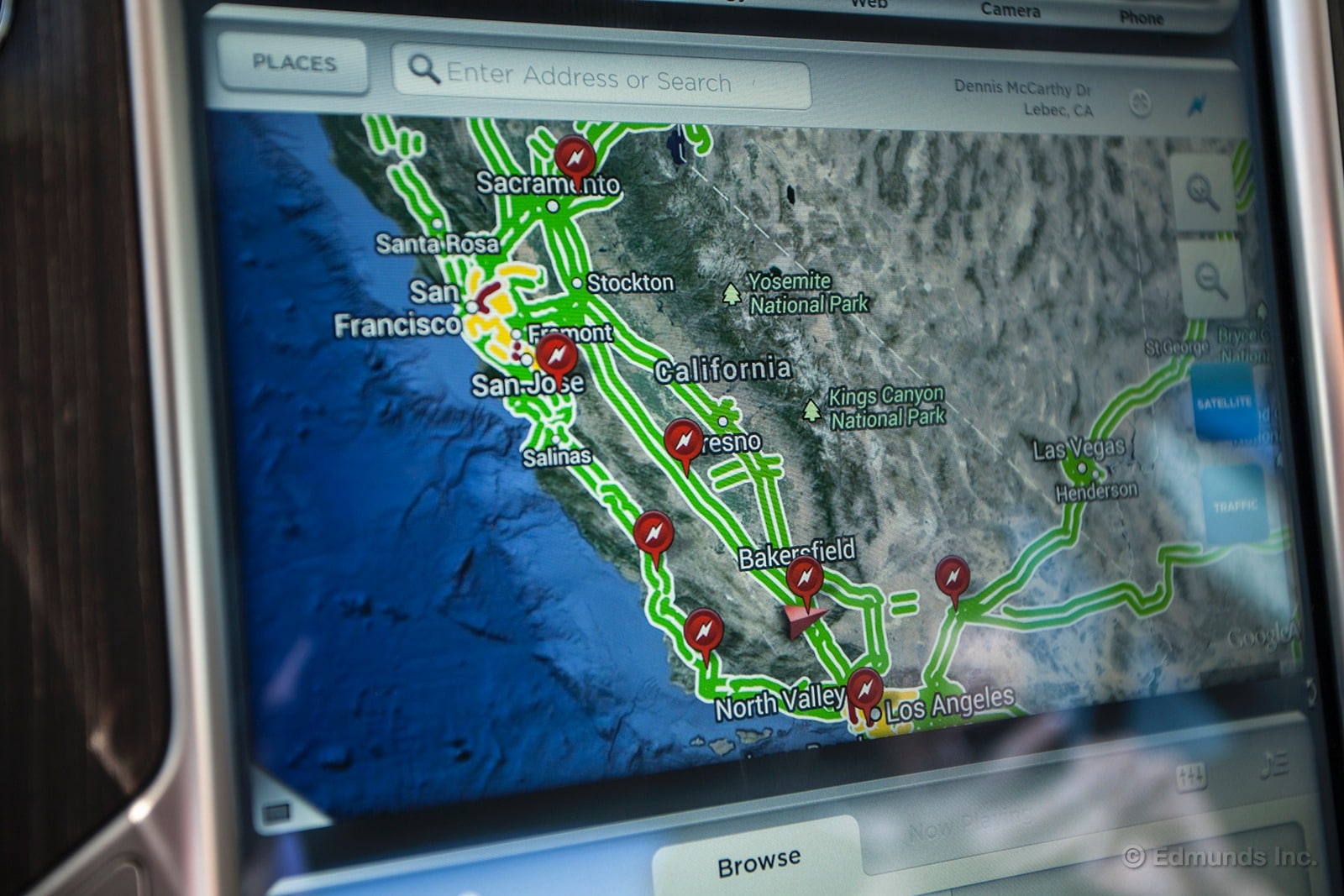
I think I'm getting better with road trips. Between the Grand National trip from Memphis and my L.A. to Napa and back in a day, these things are a less of a big deal. Of course, I'm always up for a challenge.
This time around, I was tasked to drive our Tesla Model S to San Francisco for a night with Edmunds Media Relations Manager Stephanie Mar in tow. The reason for heading up there was to have the Tesla on display at a Connected Car technology event that was co-hosted by one of our beloved former Edmunds colleagues, Doug Newcomb.
I was given the option of heading up to the Bay Area a day before the event so that battery range would be less of an issue. My schedule didn't allow this, though, so I opted to leave at 6:30 a.m. the day of the event. In hindsight, it would have been smarter to spend the extra night up there.
The night before, I made sure the Tesla was set to its extended range charge. In the morning, Stephanie and I set out right on schedule and headed north on the 5 Freeway out of Los Angeles with 257 miles in estimated range. My first stop would be the Tesla supercharger station at Tejon Ranch, a scant 83 miles away. It really wasn't all that necessary, since the Model S could probably make it to the second stop easily. But I didn't want to even tempt fate.
With a massive range buffer at my disposal, I drove the Tesla with a bit more verve than I would in conservation mode. Onramps were obliterated and passing slower cars was like buzzing a bi-plane with a jet fighter. The car's navigation smartly has the ability to guide you to supercharger stations with only a few taps on the screen. It doesn't get much easier.
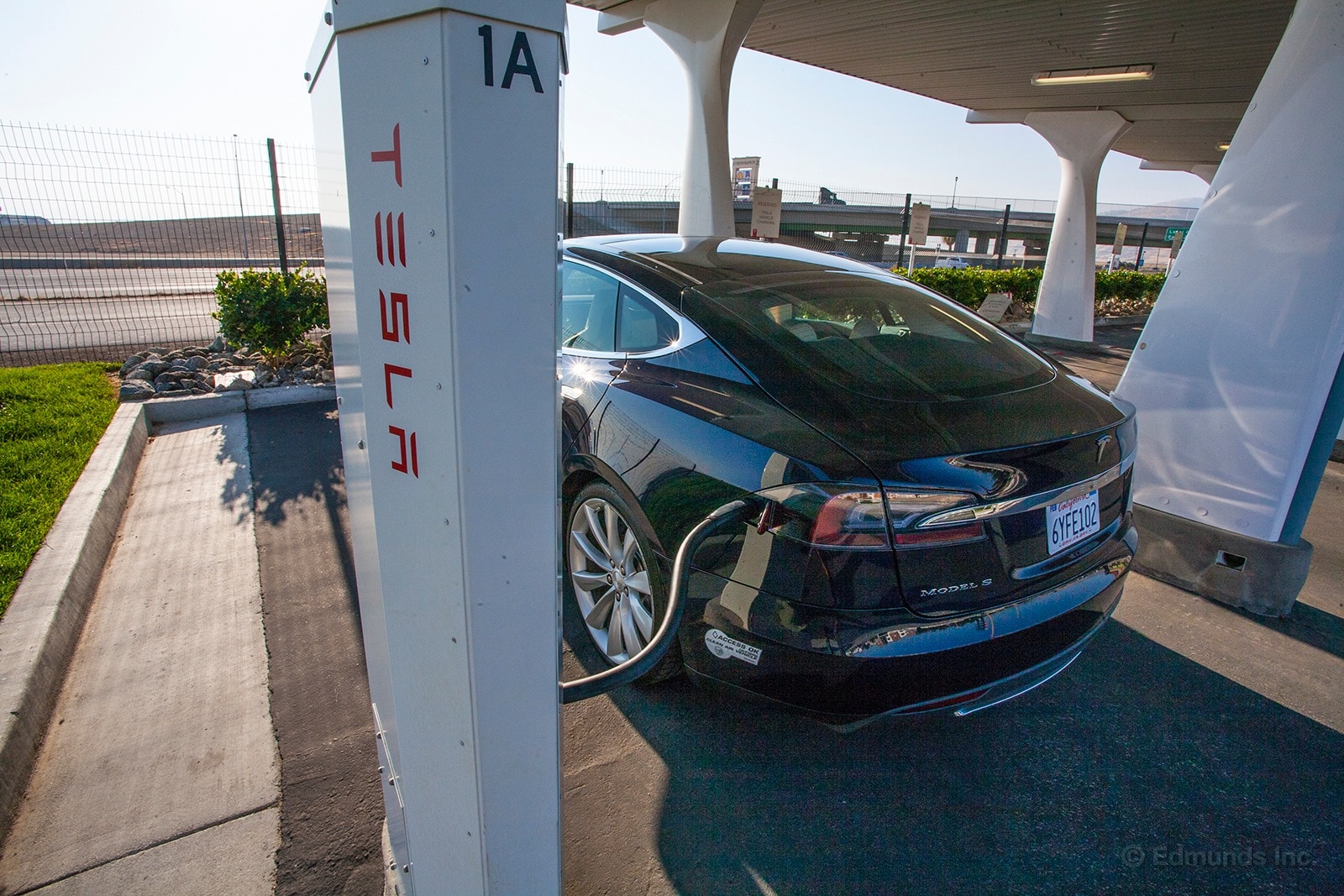
We arrived a few minutes ahead of schedule with 147 miles of range left. Subtract the 83 actual miles and that means I squandered about 27 miles in hard acceleration. Worth it. A scant 40 minutes later on the supercharger and the range was right back up to 252 miles of range. Getting the next 10 miles of range took an interminable 25 minutes as the charge rate slowed to protect battery life. I gave up at 262 miles and we were once again headed north.

Just like the first leg of the L.A. to San Francisco road trip, The Tesla would easily make it to the second supercharger stop at Harris Ranch. A mere 116 miles with my 262 estimated range miles.
Right on schedule, we pulled into the supercharger station with 120 miles of range still in the bank. I knew range wasn't an issue again, and drove "normally," squandering 26 miles in more enthusiastic acceleration.
The superchargers are positioned right near the Harris Ranch Restaurant in Coalinga, CA, so our lunch destination was pretty much made for us. As the resident red meat enthusiast at Edmunds, I was please to be greeted by giant slabs of beef roasting right by the entrance. By all accounts, I was in the right place.
As I sat over my plate of beef sawing away with a steak knife (it wasn't very good), I would occasionally take a look at the Tesla app to see how the charge was going. The highest rate shown was 284 miles per hour. Now THAT'S fast.
By the time I gave up on my tri-tip, the charge was right back up to 262 miles. Plenty of range to make the 187-mile leg into San Francisco if I drove conservatively, right?
Wrong.
I was a good boy behind the wheel. I used a featherlight touch on the accelerator the whole way up. I was conscious of the estimated range versus the actual miles. None of that helped. I can't say for sure, but I'm fairly convinced that it's a gradual uphill climb into the Bay Area on the 5 Freeway.
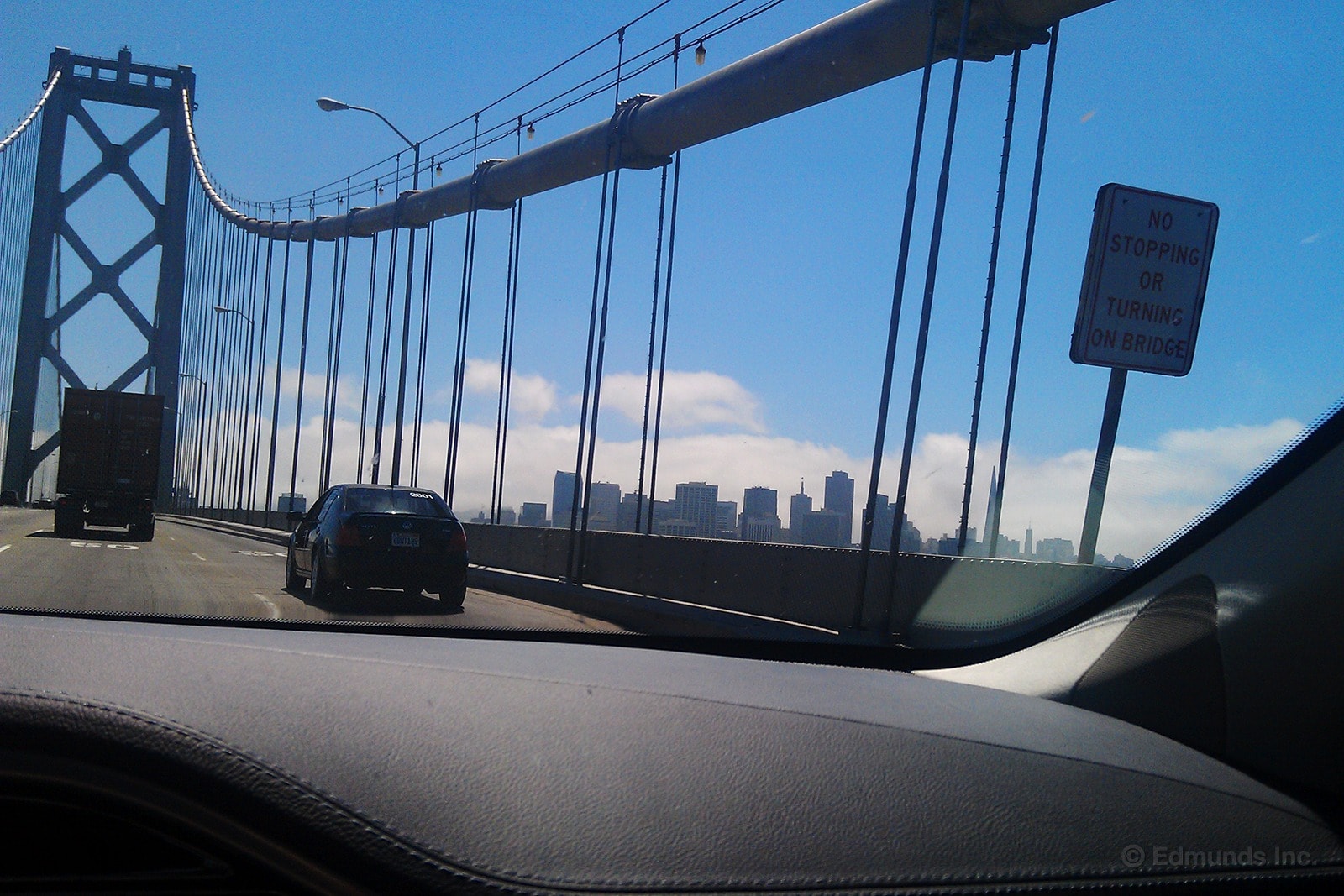
We finally pulled into San Francisco with only 27 miles of estimated range left. That was way too close for comfort, and we still weren't at the destination. We had to stop to get the car washed first. Fortunately, the car wash, event and hotel were all within a few miles of each other and we had about 90 minutes before we had to show up.
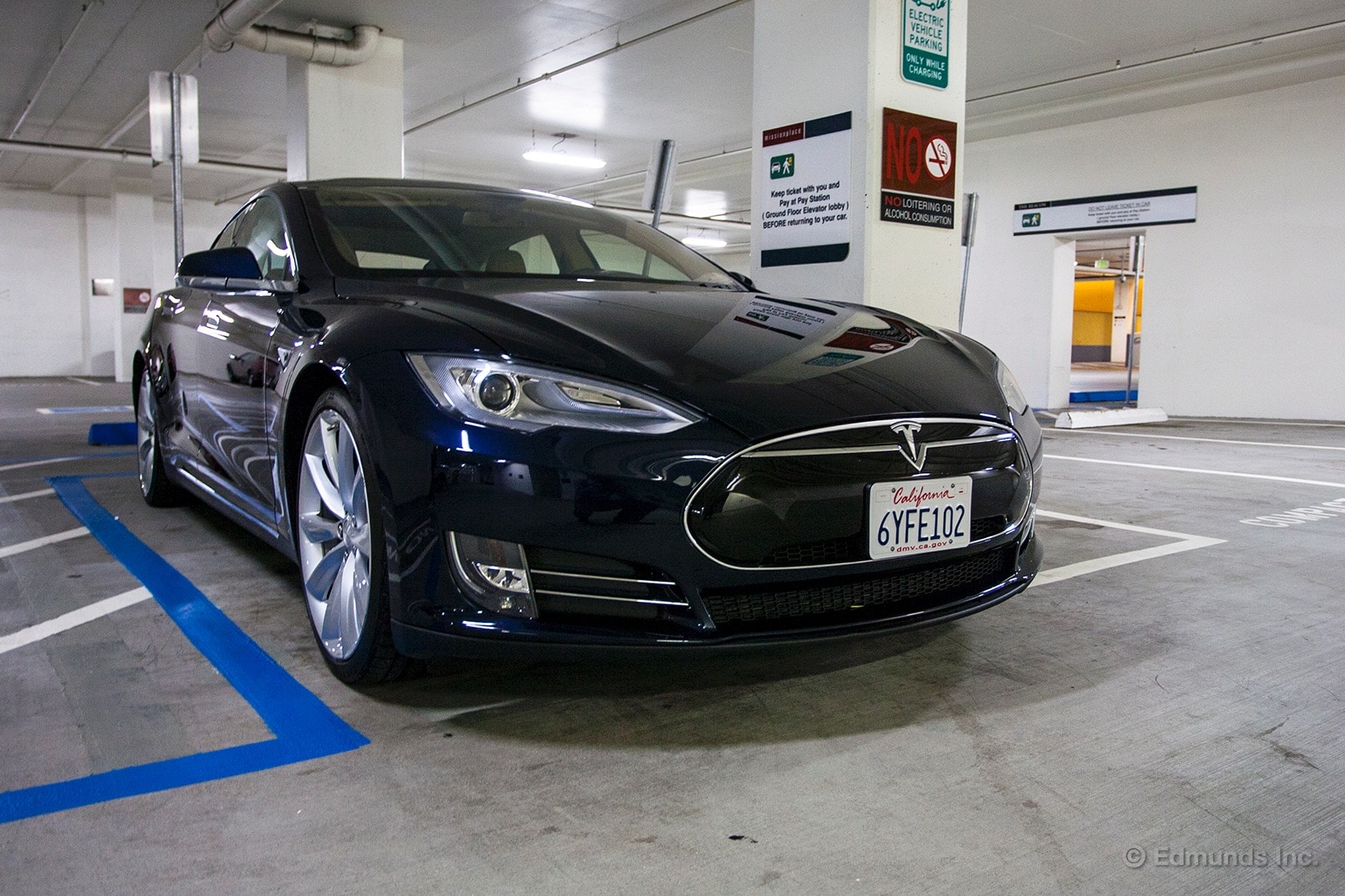
I used the PlugShare app to find a charging station near the event space. It was in a parking structure at the Beacon building and the description noted that if you buy something at the Safeway, you get 90 minutes of parking for free. We got there with 18 miles left. Whew. A little over an hour, the range clawed its way back up to a paltry 37 miles. Good enough, I figured, to leave it on to give a few demos of the car while it was parked and get it to Union Square.
The event went off without a hitch and I became a bit of an ambassador for Tesla, explaining all of the systems and its driving characteristics. After two hours we were set free on the city and I had but one place on my mind: A16, one of my favorite places to eat. We had to stop at the hotel first, to check in and drop off our bags. According to PlugShare, there was a charging station just a block or two away, but just on the outside chance, I asked the valet if he knew of a closer one.
He did, in fact, and it was in the same lot they store their cars, which is under Union Square. I found it easily and plugged in for the night. We cabbed it to and from A16 (it was fantastic, by the way) and I made sure throughout the evening that the car was still charging using the app.
Between the drive, range anxiety, trying to be charming in an interview, the Montepulciano(i), grilled octopus, gnocchi with rabbit, pistachio panna cotta and a beautiful ruby port, I slept like the dead.
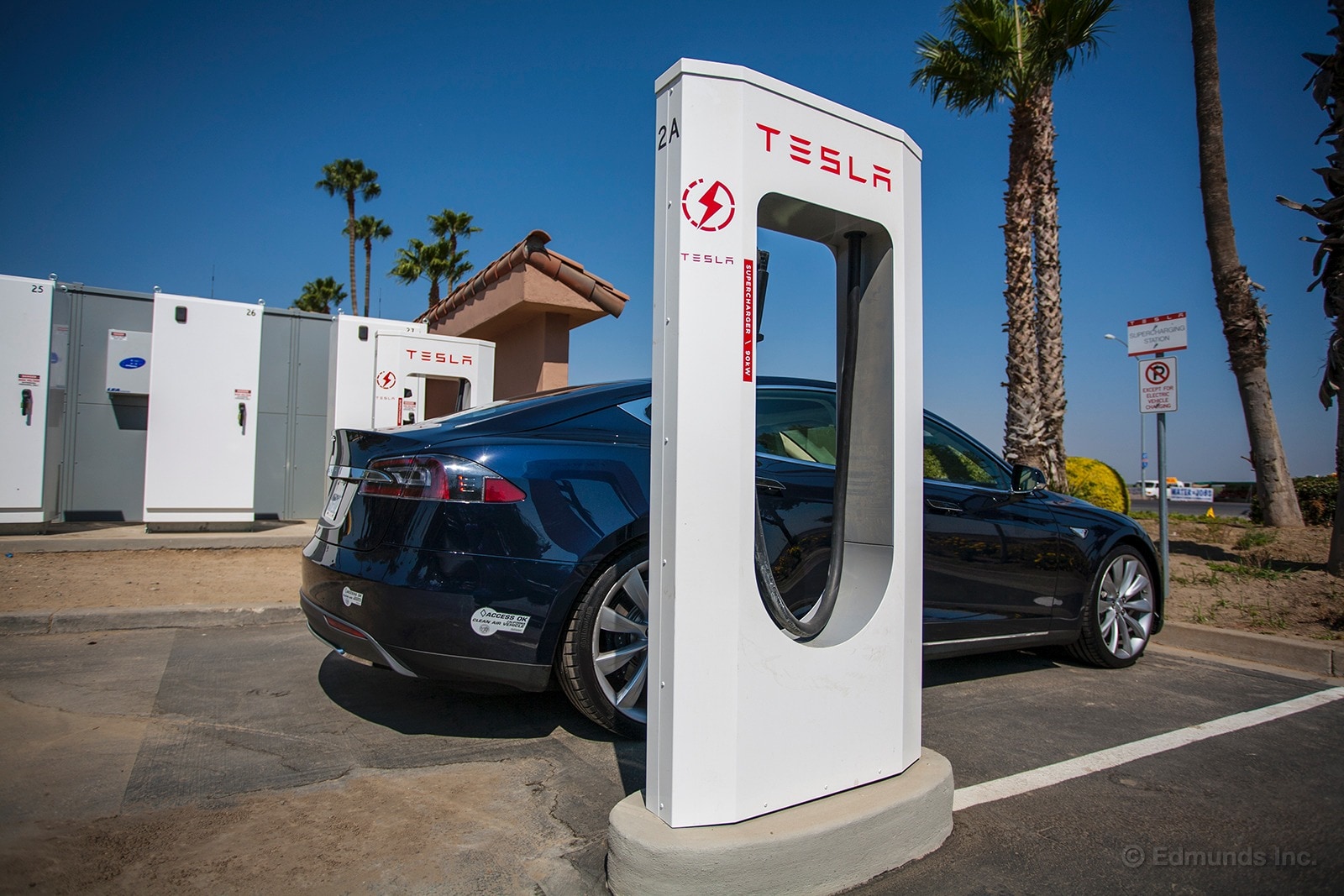
The drive back to L.A. from San Francisco gave us a lot more freedom than the drive up. We didn't have to be back in town at a scheduled time, so we could take our time. Despite this, we managed to head out of town by 10:00 a.m.
I grabbed the Tesla out of the Union Square garage with 257 miles of range showing. Considering the fact that we eked into town from Harris Ranch with only a 27-mile buffer, I knew to take it easy heading south.
As we arrived at the Harris Ranch supercharger, we had 49 miles of range left, which might lend some credibility to my theory that the northbound 5 Freeway has a slight uphill that sapped power on the way up. Short on choices, we once again had lunch at the Harris Ranch Restaurant, taking care to avoid the beef.
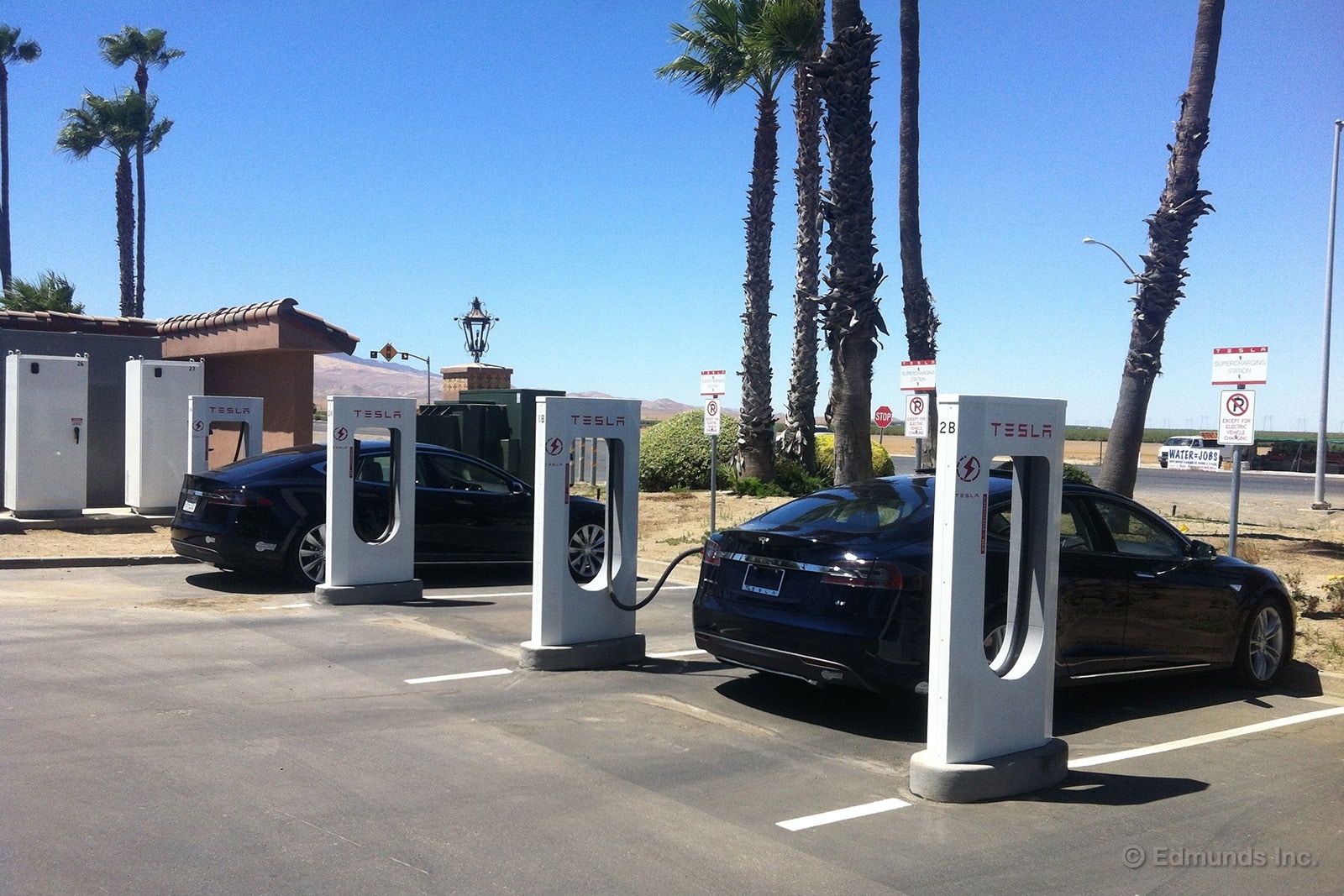
When we emerged, we were greeted by another Model S that was charging up, along with some Tesla flyers tucked under the windshield wipers. I assumed the flyers came from the other Tesla owner, but he was nowhere to be found. Knowing that it was a shorter drive to the Tejon Ranch supercharger, I pulled the plug with 244 miles of range in the batteries.
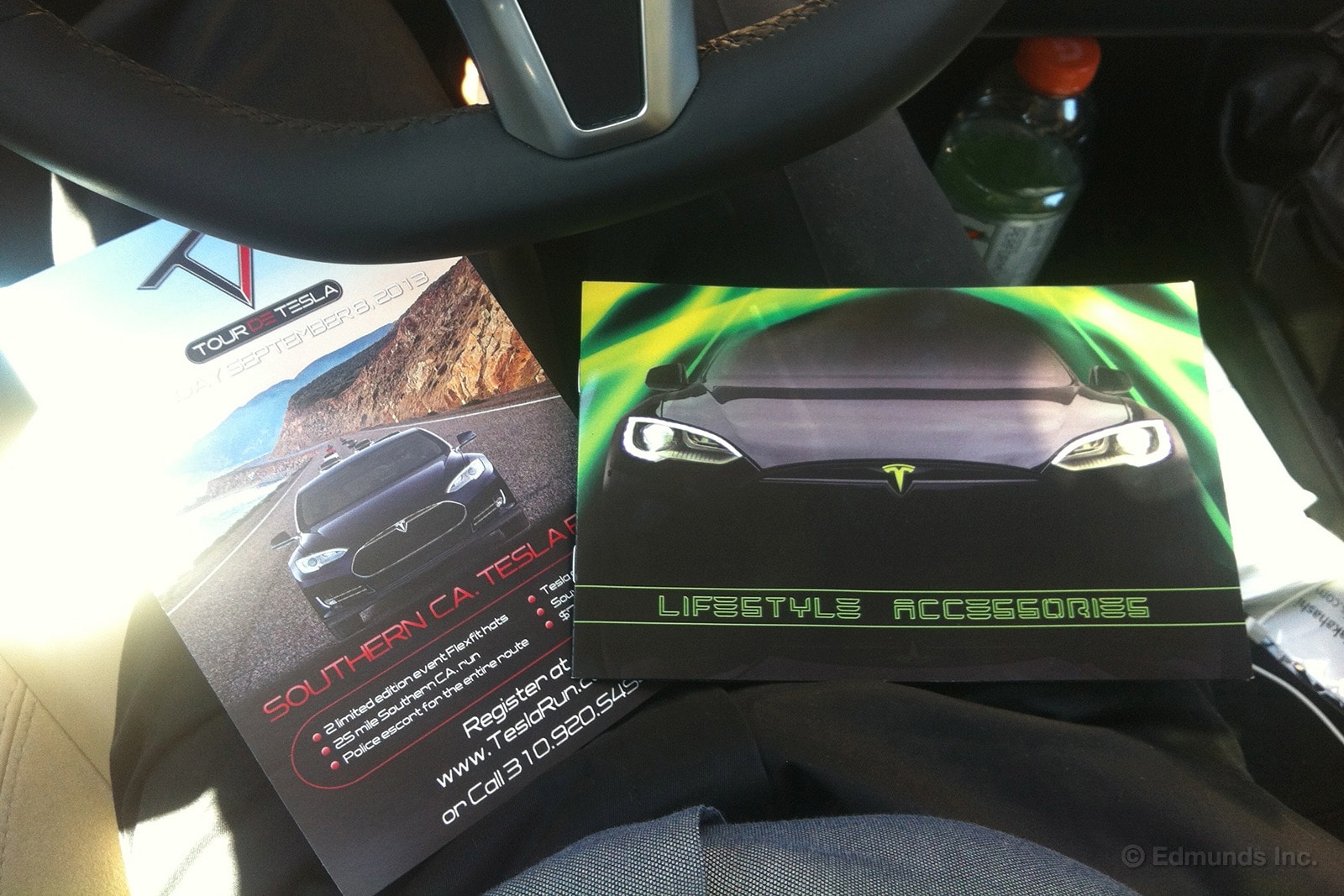
We did meet up with that other Tesla owner at Tejon Ranch though, just as we got back from a Starbucks break. We chatted for a bit and it turns out that he didn't slip those flyers on our car, as he had the same thing happen to him. He was a nice fella, just as enamored with his Model S as we are with ours.
We pulled into Edmunds HQ in the early evening, with the sun still out. I think if I were to do it all over, I'd consider taking the 101 instead, as there are three superchargers along that route. With the prospect of coast-to-coast supercharger network within a year, and 90-second battery swaps a distinct possibility, I think a much longer road trip is in the cards.
Got any suggestions?
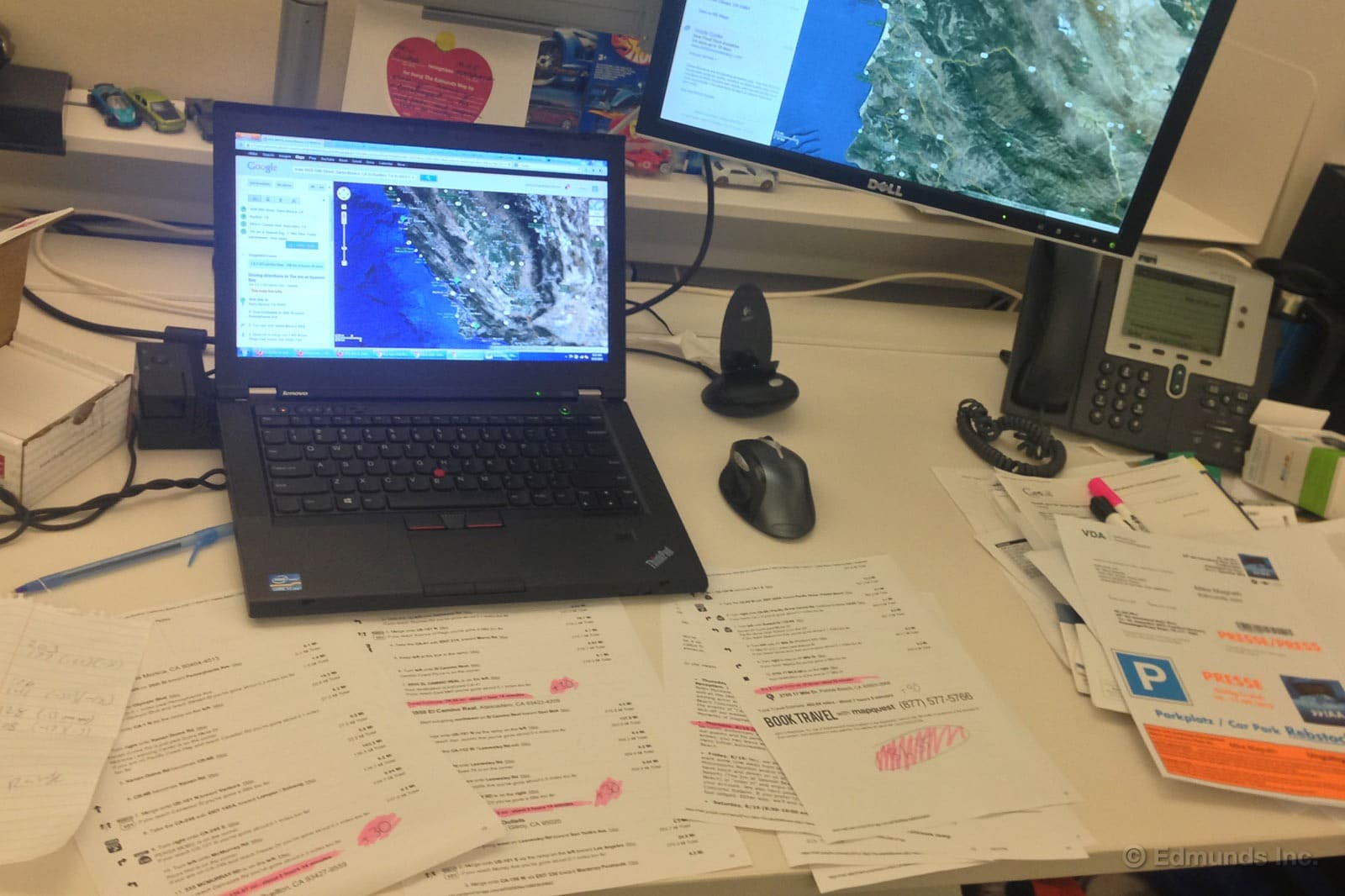
The Monterey Bay Historics weekend is fast approaching and I've been on the fence on what car to take. Scott's already called the SLS AMG which would, obviously, be my first pick. It's a great drive and the SLS is perfect for those roads. Most everything else we have will hold all of my luggage, get more than 11 mpg and just be too easy.
"What about the Tesla?" I thought.
The drive isn't terribly long; 300 miles or so. But it's full of hills, traffic and relatively quick highways. There's just no way I'd ever get the claimed 265-mile range on this drive. 200 if I'm lucky. 180 seems more reasonable.
But that's not much of a problem either. There are Superchargers in Buellton, Atascadero and, close to Monterey, Gilroy. It takes some planning (As you can see by the clutter on my desk and the 95 intertube tabs all with maps. The whiteboard maths on my partition are not shown.), but getting there isn't a problem.
What is a problem is getting back to Gilroy. The drive from Gilroy to my hotel — which does not have an EV charger beyond a simple wall plug — is about 50 miles and over the weekend I'll have a good deal of driving to do. And then there's the fact that the Tesla loses a bit of range just for hanging out parked. We've seen 20 miles go by overnight.
So let's estimate 100 miles back and forth to the Supercharger, 80 miles of heavy-traffic during the four days I'll be gone and then, to be safe, 20 miles of depleted range per night (80 more miles total). That's 260 if I've done my math right which only gives me a buffer of 5 miles based on ideal conditions.
I've never gotten close to ideal conditions or 265 miles of range.
I took our Tesla for a quick test the other day. I did some similar highway driving as I'd be doing over the big weekend, I did some similar city driving and I did a bunch of searching around for parking spots like I'll certainly be doing up in Monterey. The result? I drove 47.8 miles and lost 95 miles of EV range. That is well, well beyond my 5-mile buffer zone.
This trip would be doable if my hotel had a way to charge our Tesla that didn't involve unplugging a toaster. It doesn't. They have two 110v plugs and are expecting multiple Teslas and promised to "rotate the cars through the chargers as often as is necessary. Considering a drained Model S takes like 3 days to fill up, and that there will be at least a few others, I'm not expecting much plug time.
So I'm chickening out. I'm going to find something much more boring to take that offers much better range and refueling possibilities. I'll take the Tesla sometime when I have more flexibility, or when I stay somewhere with an EV outlet.
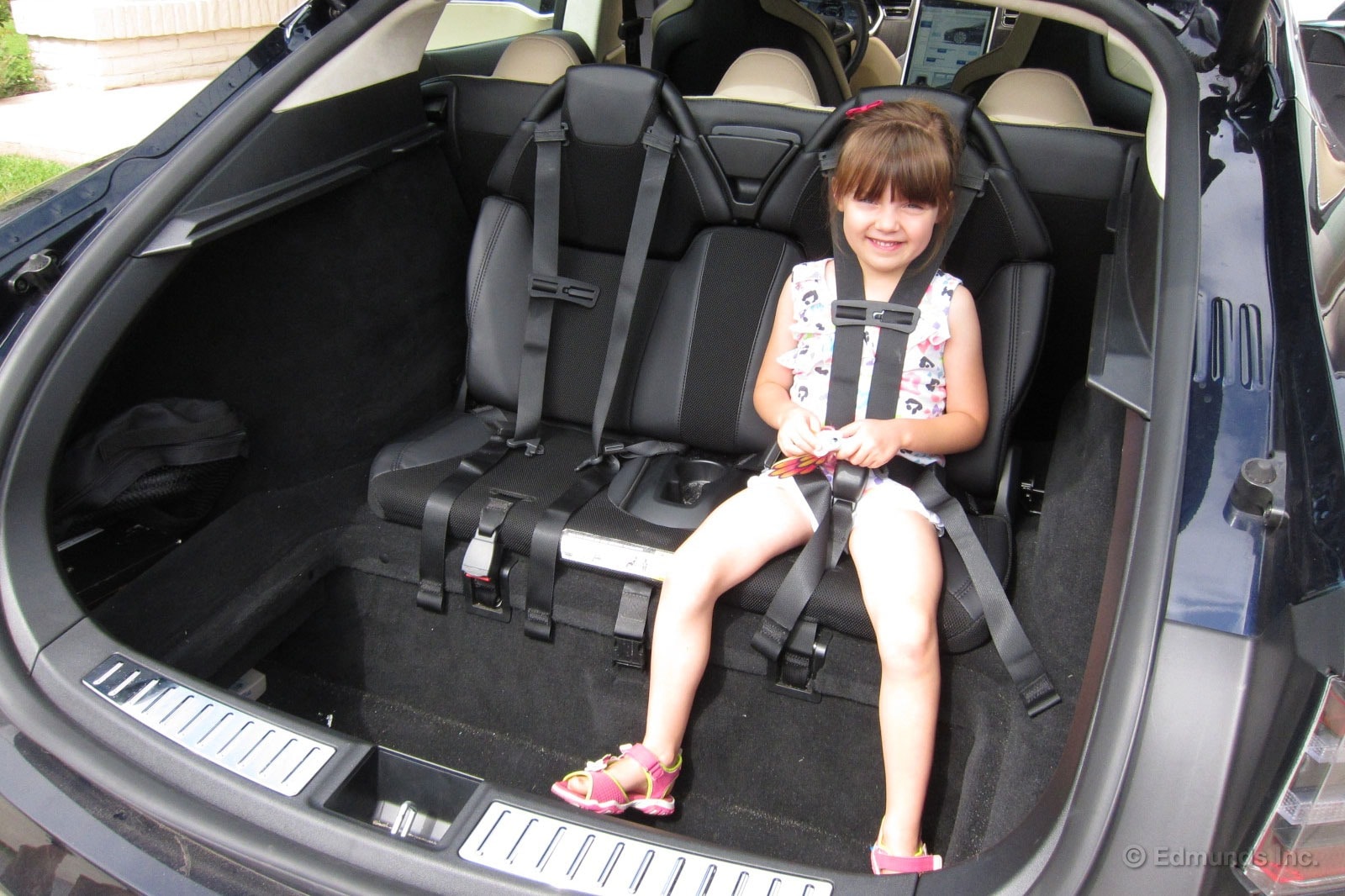
Yesterday I put my five-year-old in the Tesla's rear jump seat. It was met with a mixed review.
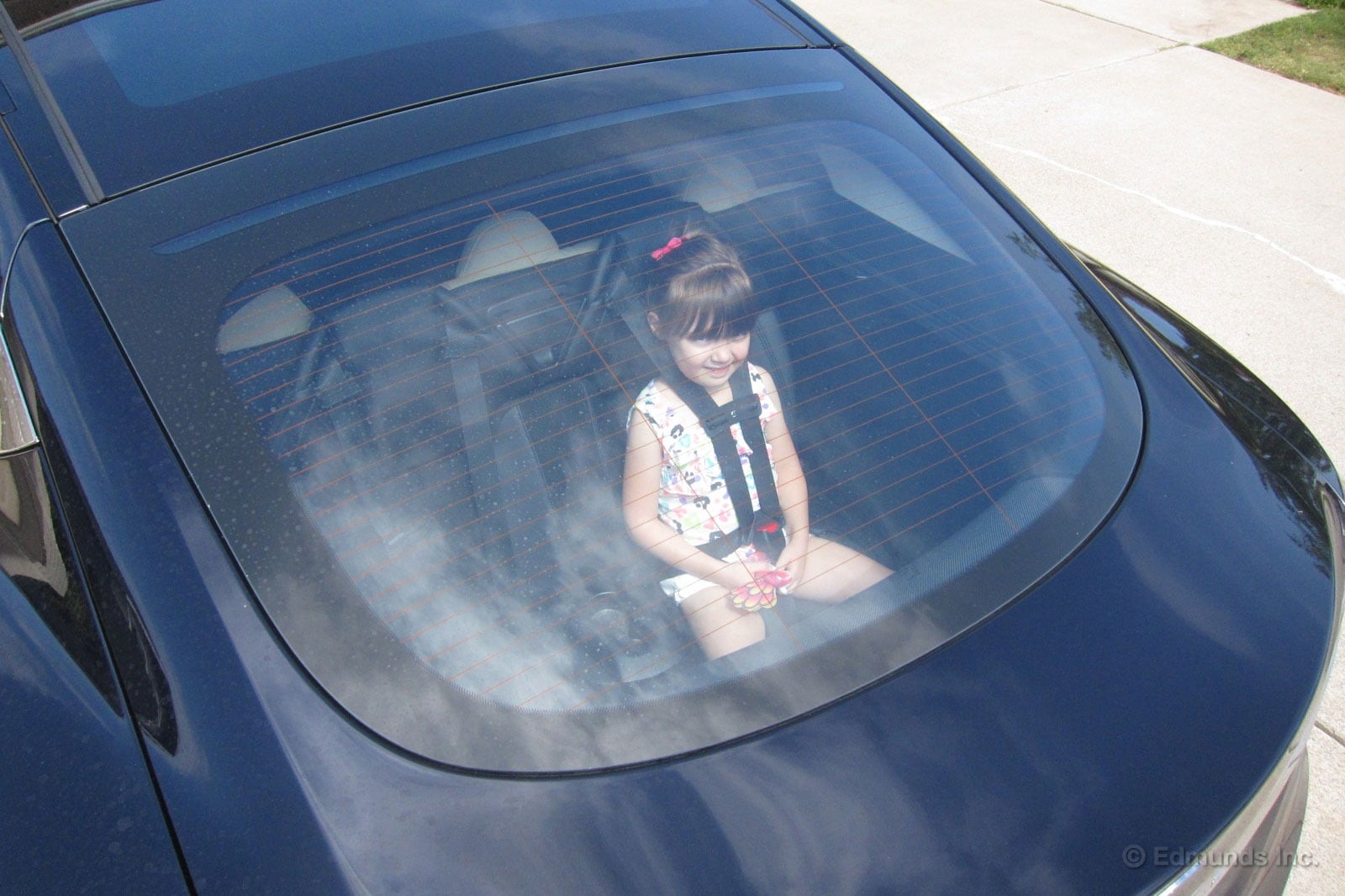
There was a moment of hesitation — for both of us — when I closed the hatch. Then, as I climbed in the driver's seat to take her for a ride, she said this, "Daddy, I don't think it's a good idea to put kids in the trunk."
The kid had a point.
We went for a ride anyway and she relaxed. But I never really stopped feeling like I just bought the world's most precious cargo a steerage seat. Plus, she isn't big enough to see out of the hatch which, I suspect, would limit her patience for riding back there once the novelty wore off.
Tesla says the jump seats are good for kids between 35 and 77 pounds as long as they're taller than 37 inches, which means my two-year old doesn't qualify.
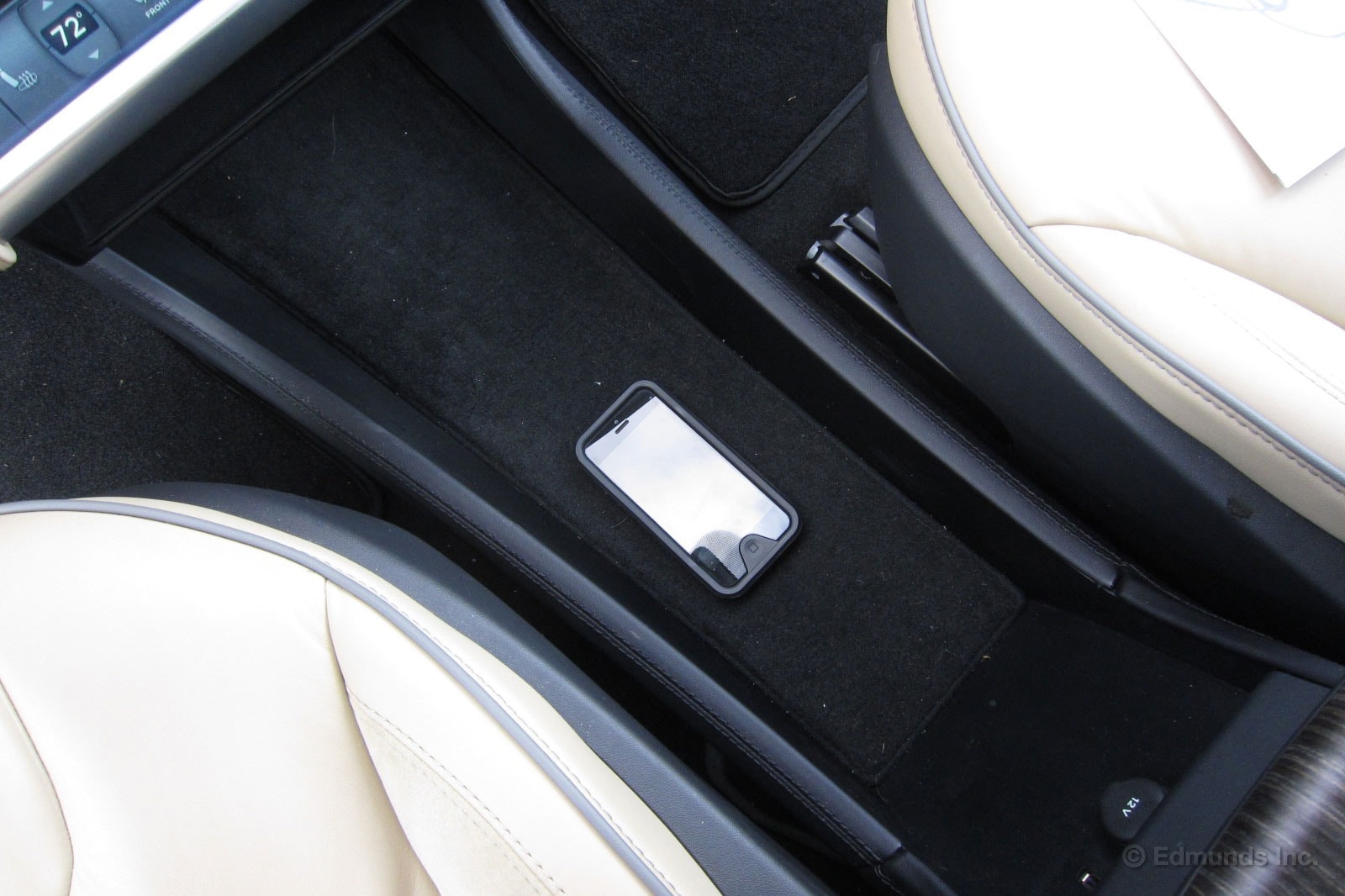
If for no other reason, I love the Model S for this single piece of packaging brilliance. That, I submit, is a real center storage bin.
For once, the lack of a center tunnel is being fully utilized.
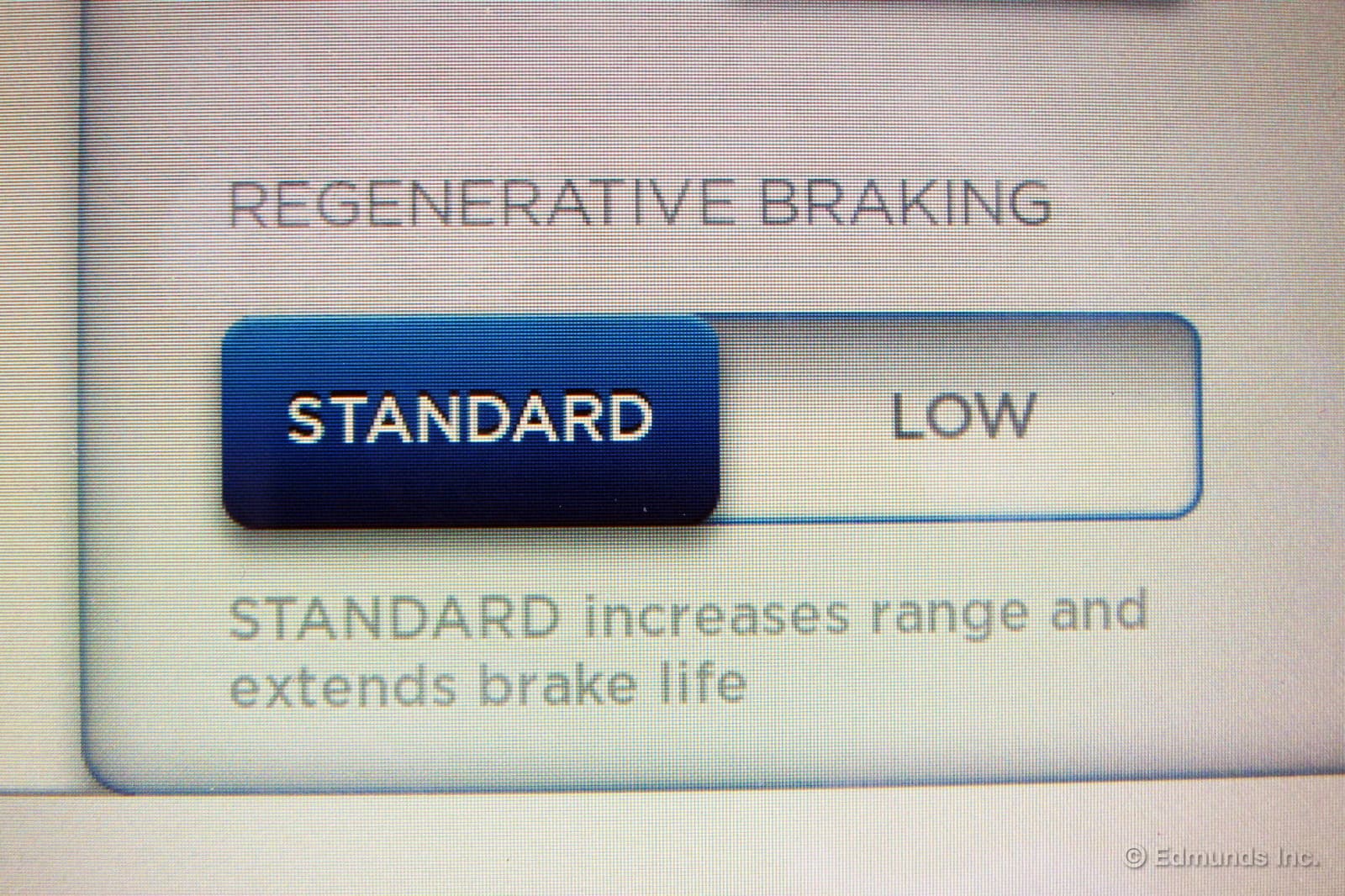
Last week's two-night adventure in our long-term 2013 Tesla Model S proved fruitful in demonstrating one of the car's better features: adjustable regenerative braking and one way it could be improved.
I began experimenting with the two modes (Standard and Low) on my way home from work and it was immediately clear that the "Standard" setting is far more aggressive. Enough so, in fact, that I began to wonder if the brakes lights were triggered simply by lifting off the throttle. So, I did an experiment to find out.
At home I had my wife drive up and down our street in both modes. We designated two points on the street, one where she was to lift off the throttle and another where she began applying the brakes. In the "Standard" setting the brakes lights came on at the lift-throttle location. In the "Low" setting they came on further down the street at the braking point.
So in "Standard" mode the brake lights probably illuminate every time the driver lifts off the throttle.
Now this isn't a truly scientific test. It could be the case that the brake lights are triggered by a certain level of longitudinal g-load (deceleration) rather than simply by lifting off the throttle, and that the standard setting is more capable of generating that level of deceleration. Either way, though, the result is this: When you lift off the throttle in the "Standard" setting, you'll likely trigger the brake lights.
This is a blessing and a curse. Obviously, if you're slowing down rapidly enough, people behind should know. Tesla and I disagree about that rate.
Here's where the subtlety is lost in the Model S. Any conventional car that allows you to lock the relationship between the engine and drive wheels doesn't trigger the brake lights every time you close the throttle. In those cars you're able to achieve the same or greater deceleration without triggering the brake lights. The Tesla's setup bothers me because in Southern California every time you apply the brakes it affects hundreds, if not thousands, of others behind you.
I simply don't want to trigger the brakes lights every time I lift off the throttle. Let me be clear: I also don't want to be rear-ended. However, I've been using engine braking as a subtle means to slow a car, ease into gaps, and gracefully maneuver without brake lights as long as I've been driving. It's a polite way to do things. And in 24 years of driving this way I haven't been rear ended as a result.
Possibly, I'm the only one on Earth (or at least in Southern California) to whom this has occurred.
Here's my suggested solution for Tesla. Rather than using two modes, the regenerative braking adjustment should be on a rheostat. It could be adjusted using a slider on the touchscreen. Even if the range were calibrated using the existing two settings as extremes, the driver could more precisely control his or her desired decel rate. This would allow Tesla to decouple the brake light trigger from the throttle (assuming that's how it's currently set up).
Keep the brake lights on the brake pedal. Keep traffic moving. Let the driver choose. After all, it's his car.
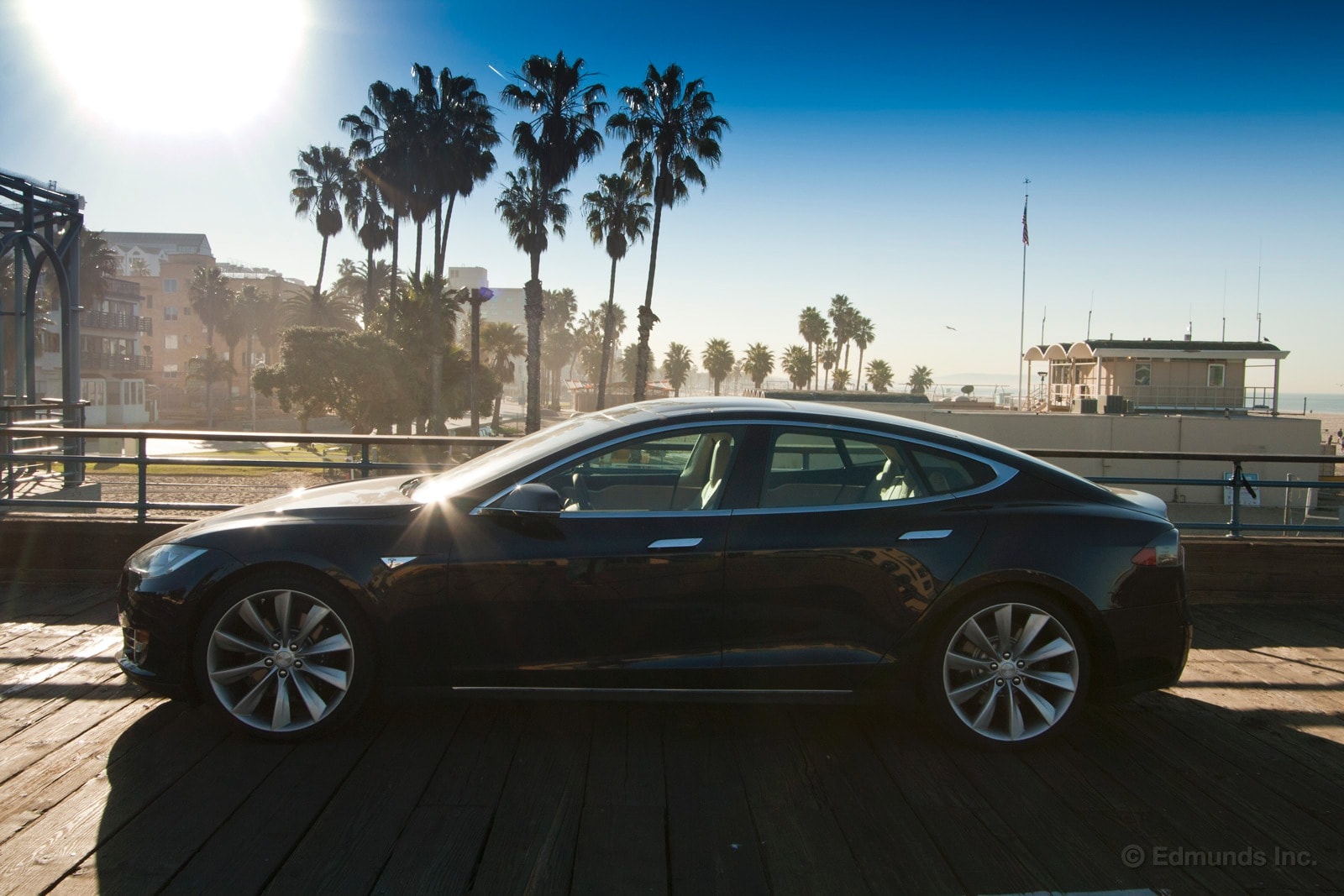
In a recent update we noted how the 2013 Tesla Model S earned a top five-star rating in the National Highway Traffic Safety Administration's battery of tests.
Interestingly, Tesla posted a press release about those results a few days ago. Basically, Tesla claims that the Model S not only gets a five-star rating, it has the best scores of any car sold, period.
Now, it's true that no car can earn better than a published NHTSA five-star rating. So in that sense, the Model S is equal to any other car with five stars across the board, such as a Honda Odyssey or Volvo S60.
But Tesla says that detailed, behind-the-scenes crash information is provided to automakers, and from that information, it's possible to extrapolate how five-star cars compare to each other. And from this, Tesla says in its press release that the Model S does better, or has the lowest likelihood of injury, of any car sold.
From our standpoint, Tesla's claims are unverifiable. But I found the overall information in Tesla's press release to be quite interesting nonetheless.
You can read the full release here.
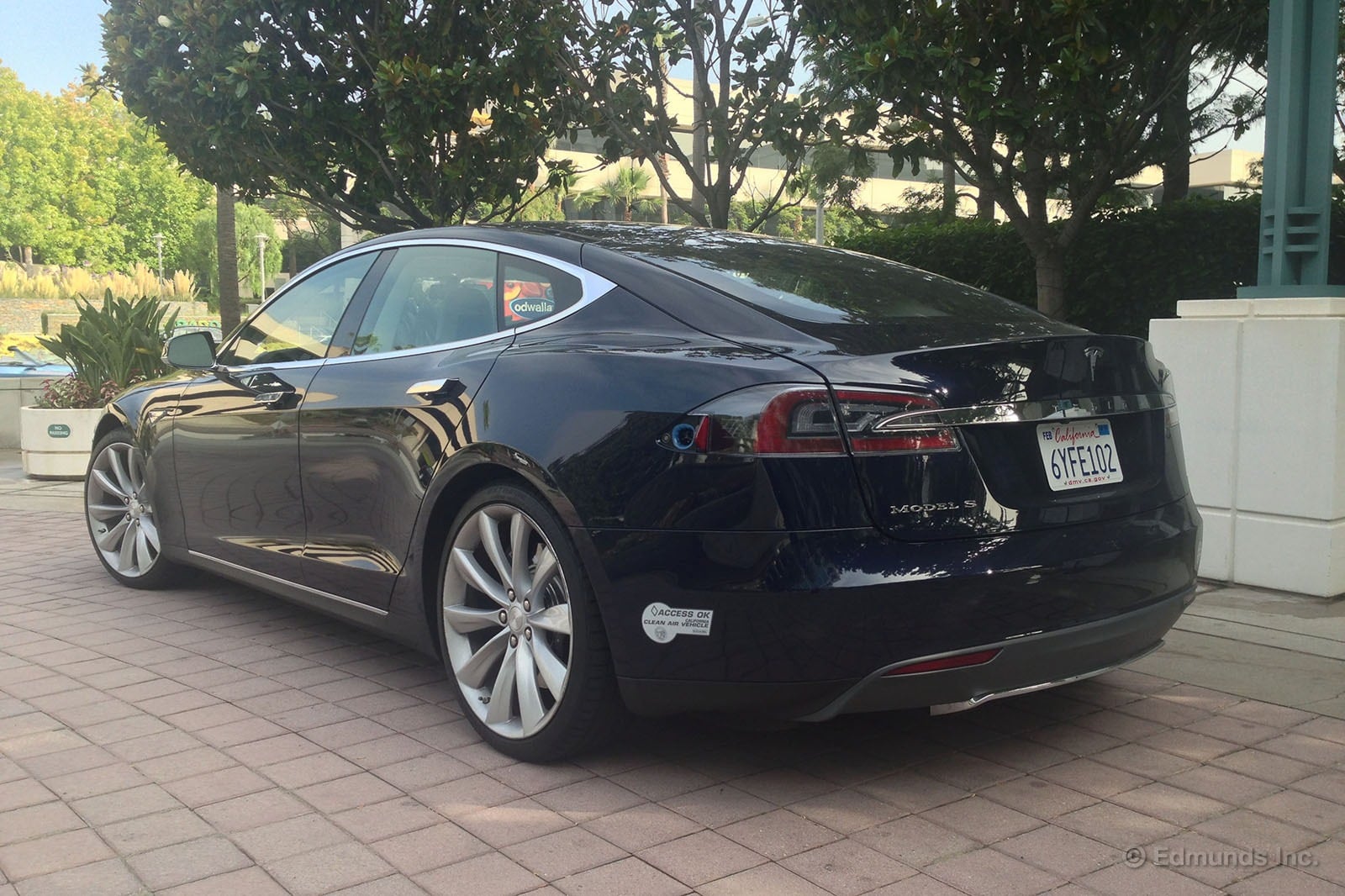
This morning while driving into work in our 2013 Tesla Model S, I must've passed a dozen other Teslas. That's not really a surprise. They're everywhere on the west side of L.A.
Of these dozen or so $100K EVs I saw, two had a noticeable issue: The charge port / EV plug door was hanging open. I know that the Model S won't let you put the car into drive if the plug is plugged in, but was it possible that they forgot some type of warning — there's no "check engine" light that I've seen — for when the door has been left hanging in the breeze?
Uhm. No.
There are at least three, perhaps four (it popped up once, but I couldn't replicate it) warnings inside the car, one of which never leaves the IP. So it looks like high-dollar EV drivers can be as inattentive as everyone else.
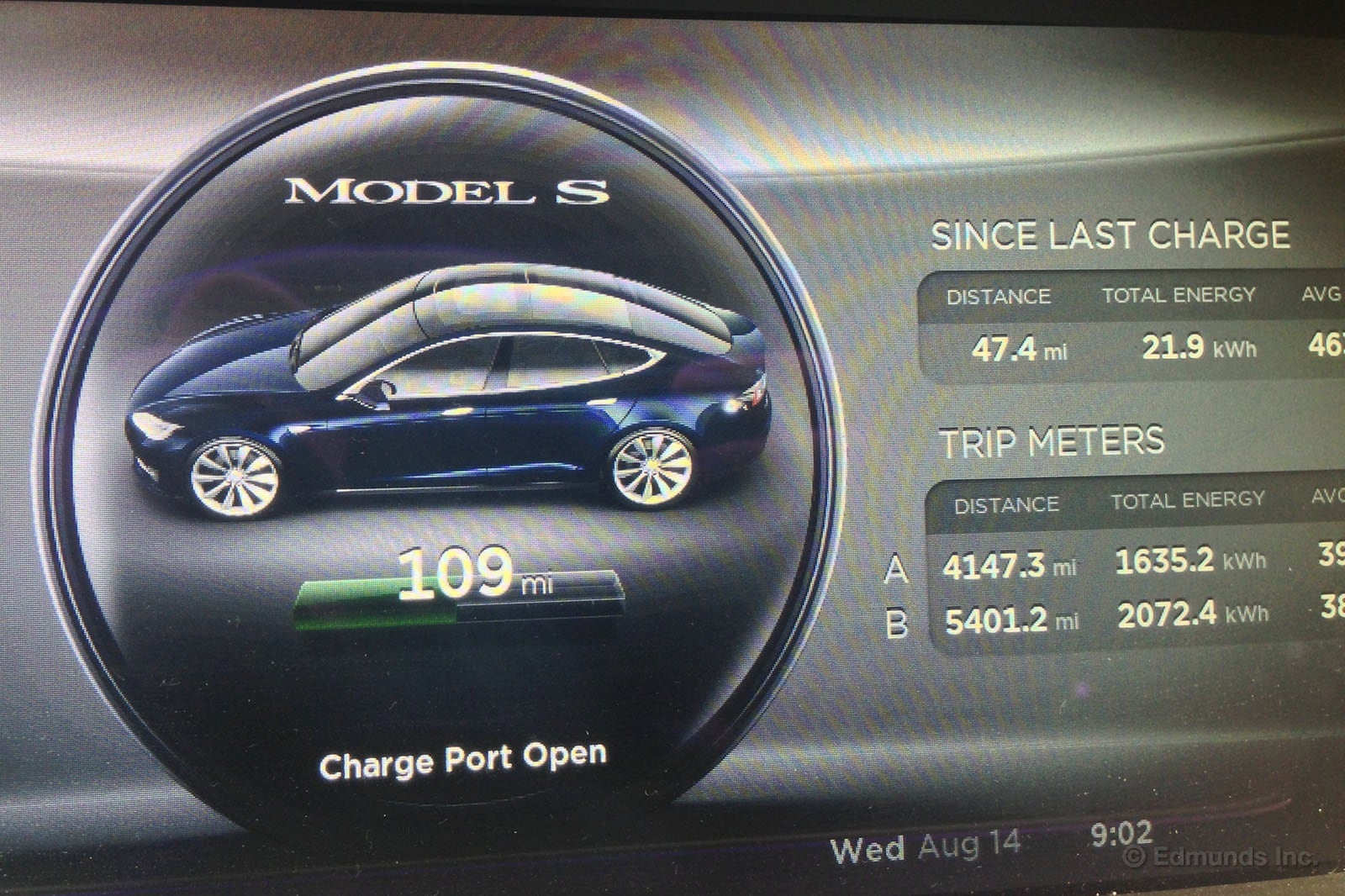
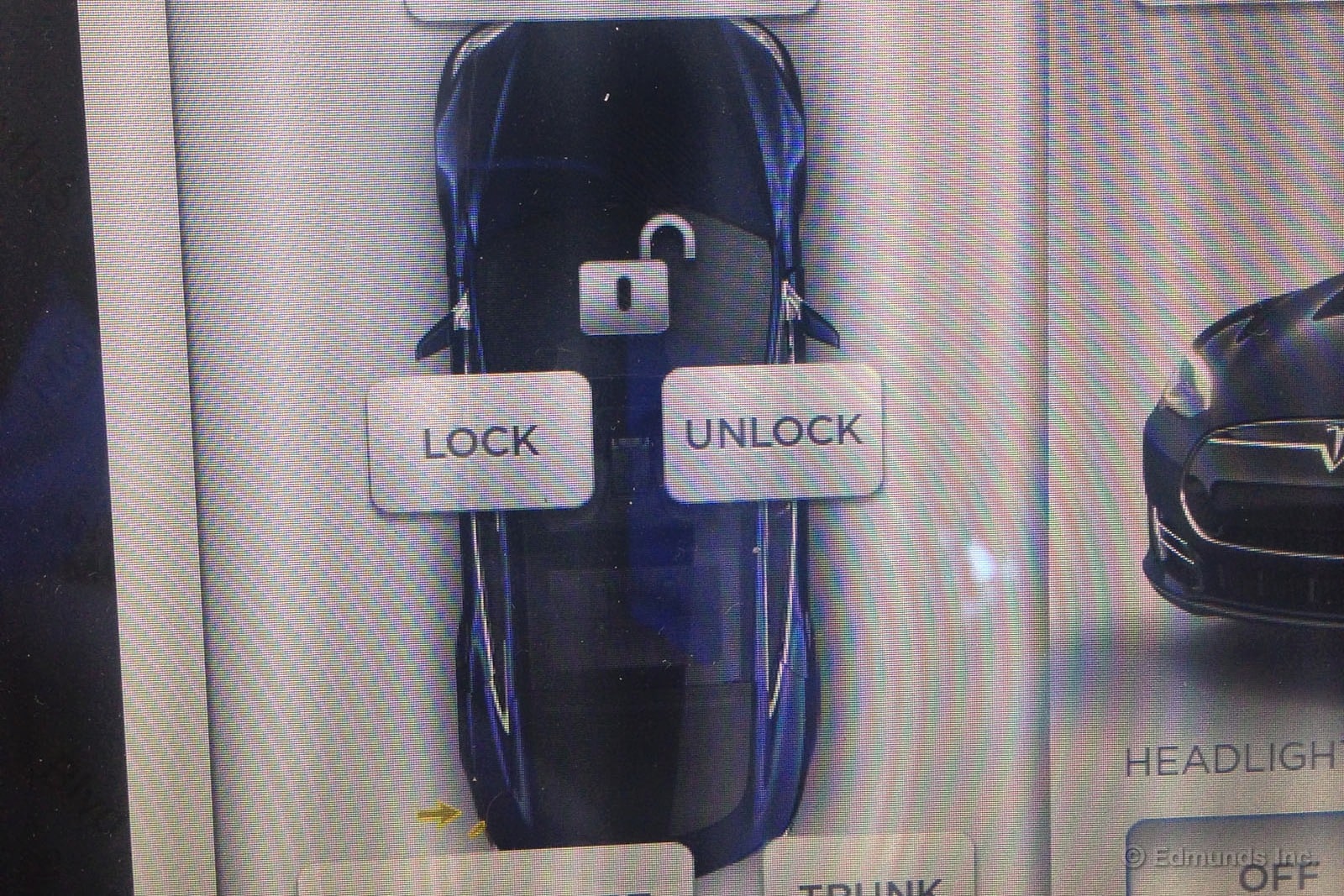
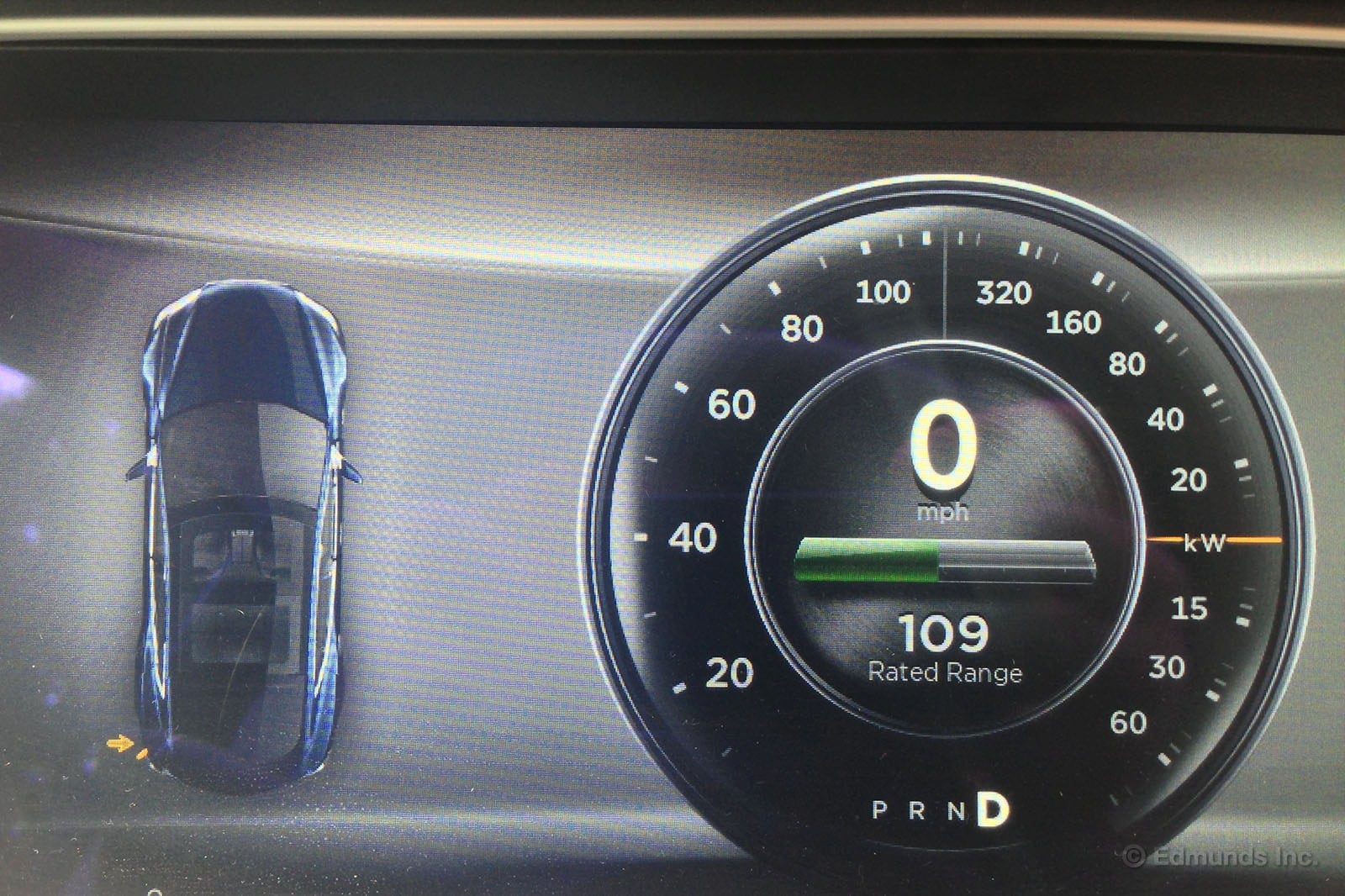
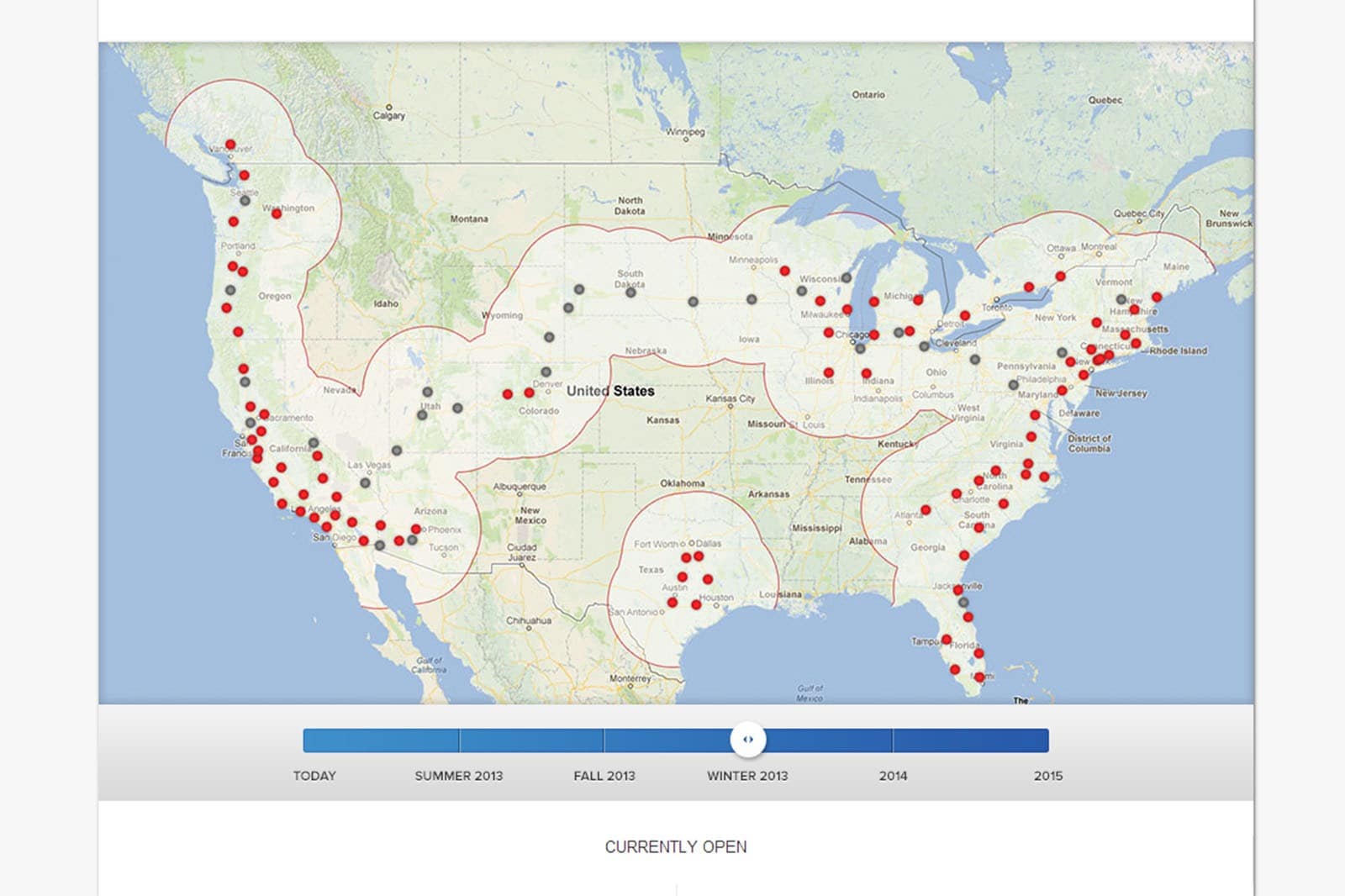
According to the Tesla Motors Web site, this is what its supercharger map will look like come this winter. So, anyone fancy a drive to Mt. Rushmore? Perhaps we could drive to the Detroit Auto Show in January and I can carry onto my home and native land in Toronto. Of course, it'll require driving through tropical South Dakota in January, but sure beats gasoline, right?
We'll have to wait until 2014 to have supercharger coverage on the cross-country routes of I-40 and I-70. By 2015, it seems the entire lower 48, plus southern Ontario, Quebec, Alberta and British Columbia will be covered.
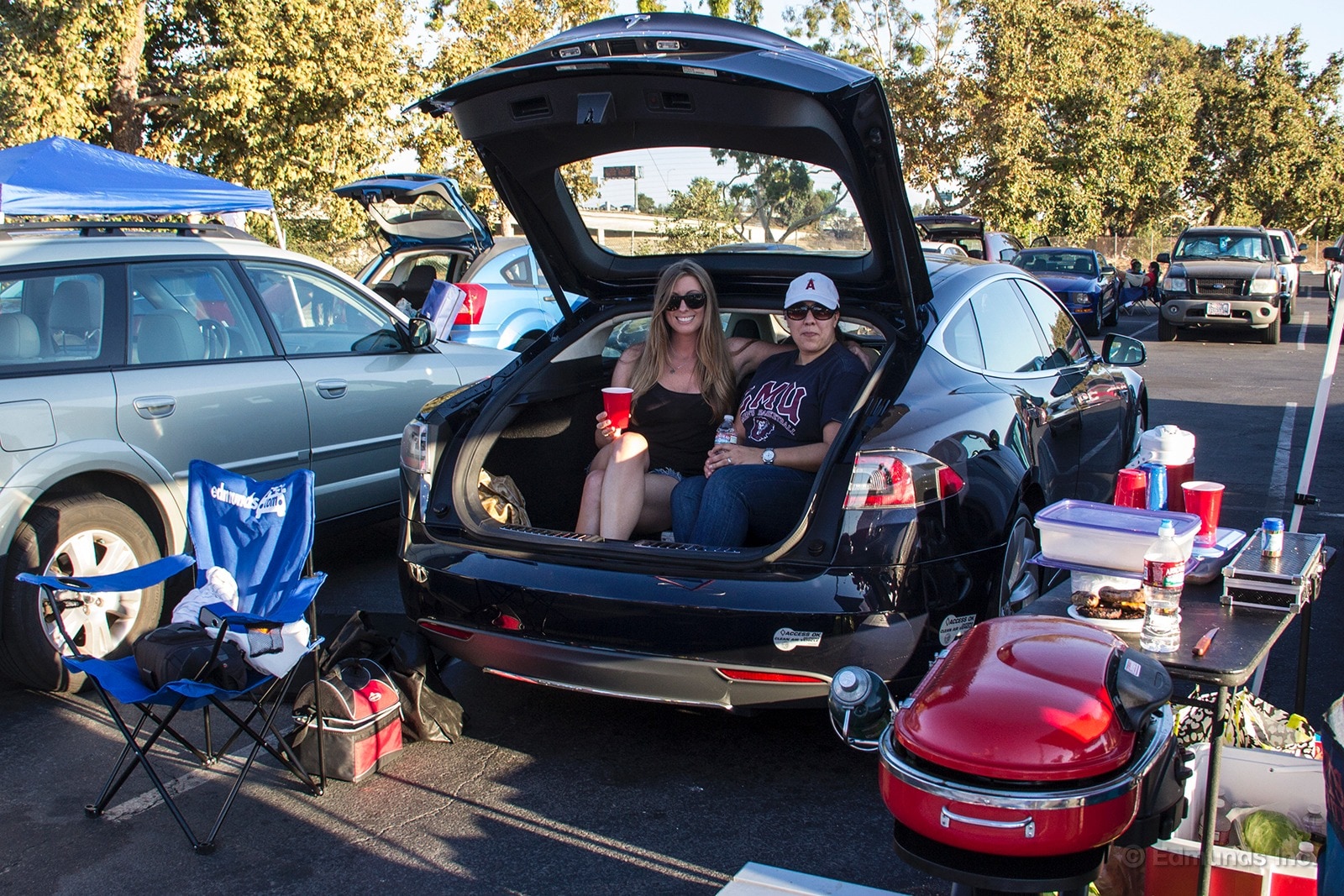
The rear jump seats in our 2013 Tesla Model S are intended for children, but that didn't stop me from using them for a tailgate party. Intent on impressing my college buddies, I picked up the keys to the Model S last weekend and headed for Angels Stadium. Spoiler: They loved it.
We had a surplus of cargo space, as the Model S wasn't even remotely challenged by our lawn chairs, food bags and cooler. Once we parked, the Tesla gave us two extra seats and provided shelter from the setting sun. I thought for sure that after a certain amount of time the rear hatch would try to close on its own but it never did and after a few minutes without the key nearby, the lights for the hatch shut off as well.
Following burgers, dogs, cookies and lemon bars, I gave a few of my old college buddies a quick demonstration of the Tesla's all-electric torque capabilities before the first pitch. My friend Mark commented that he planned to buy a Model S instead of a home. His wife loved the Tesla, too, but she didn't approve.
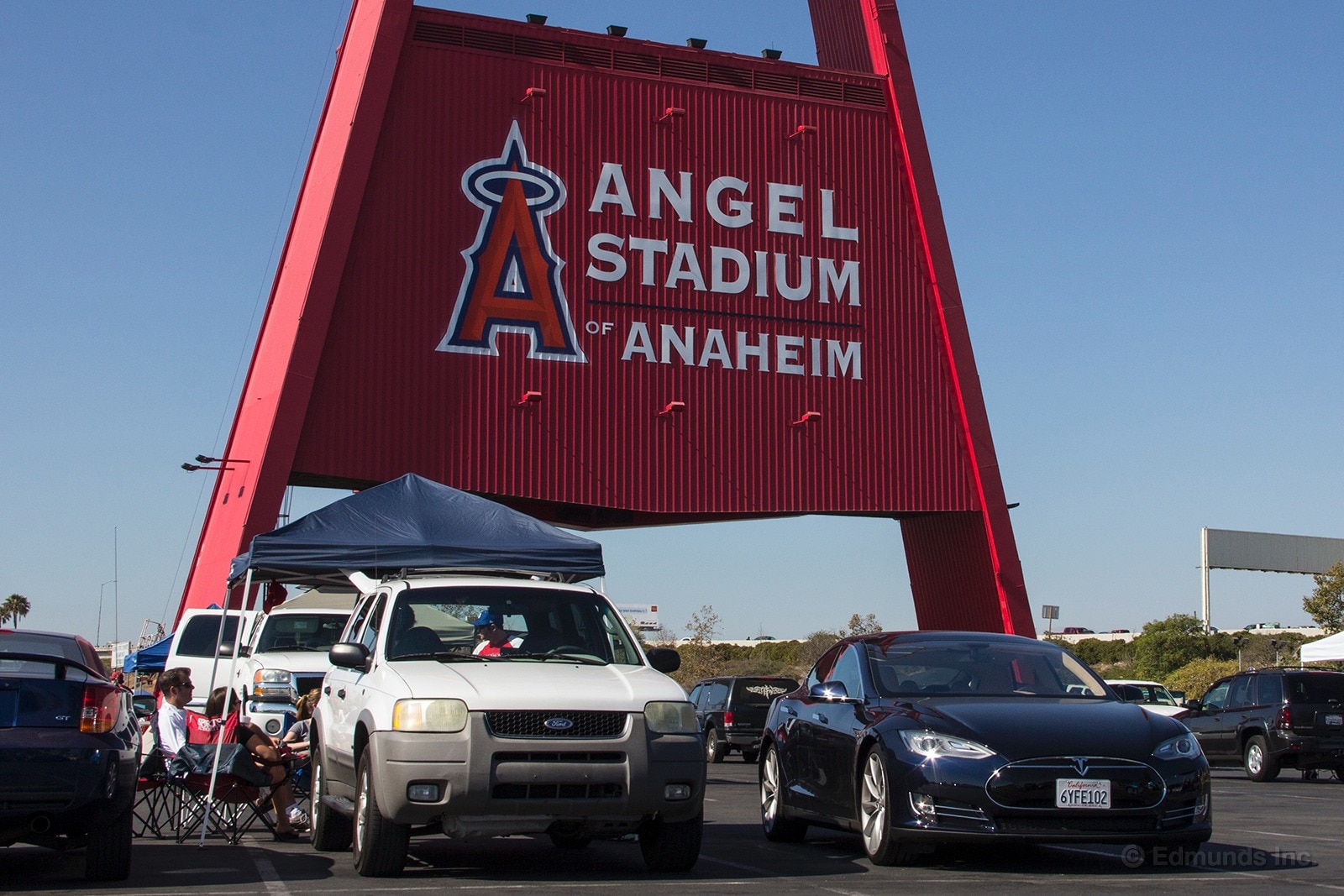
After a walk-off homer in the 10th, I pulled up the Tesla app on my iPhone and set the climate control to 72 degrees. By the time, we got to the car, it was already pleasantly cool. So if you're planning a tailgate party, I can now confirm that the Tesla Model S is an ideal choice.
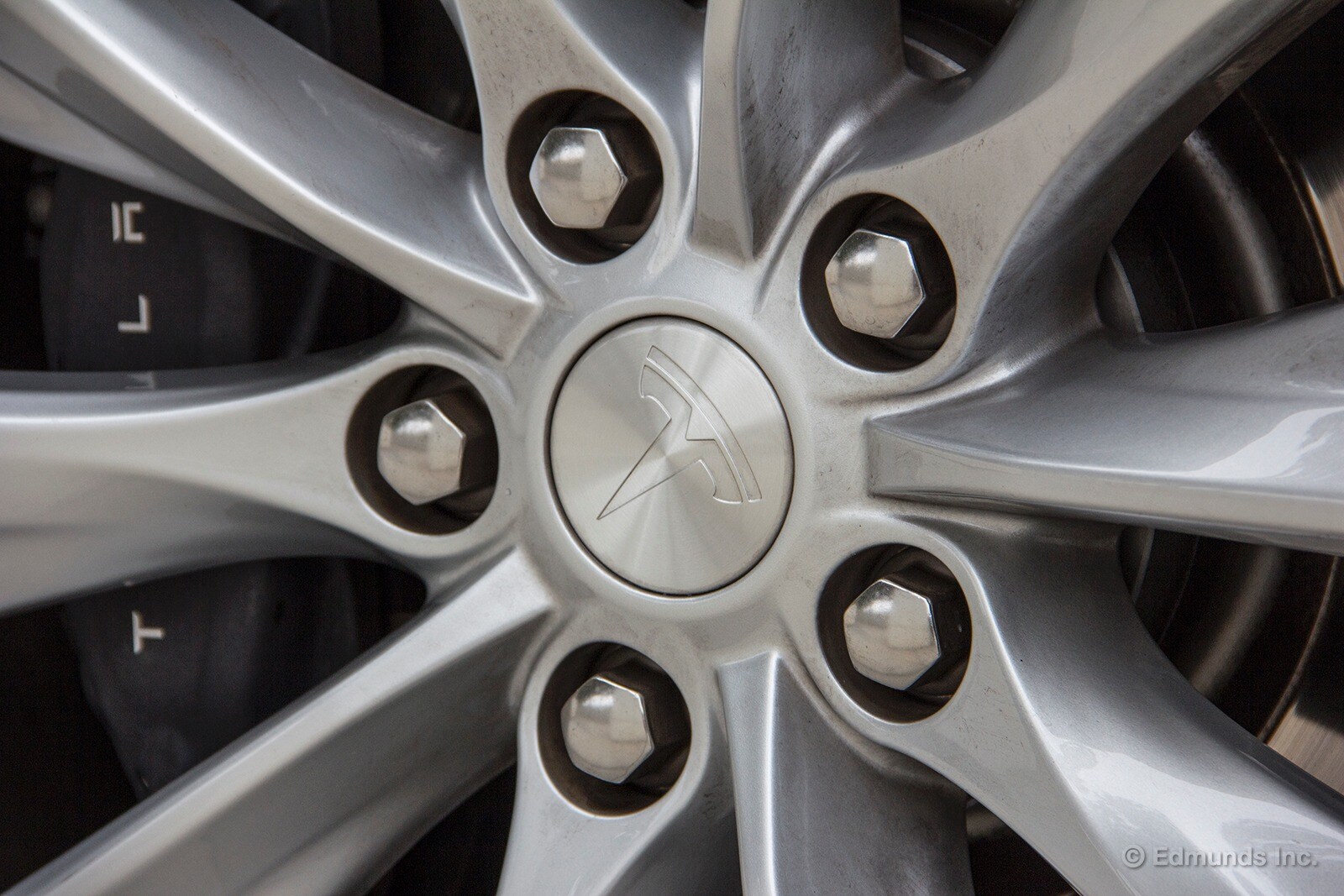
When we first acquired our 2013 Tesla Model S, Ed Hellwig pointed out A Few Flaws in the Craftsmanship. While I agree that the Tesla has some fit-and-finish issues, I think the Model S is appealing not just because it's electric, but because of design details that are subtle, timeless and beautiful.
For starters, the engraved Tesla logos on the center caps (instead of painted logos or stickers like many automakers) accent the classy wheel design.
The wood grain dash and the mirrored curvature of the top and bottom pieces surround it. Along with the HVAC vents and their one-piece chrome accents, you never get tired of looking at the dashboard.
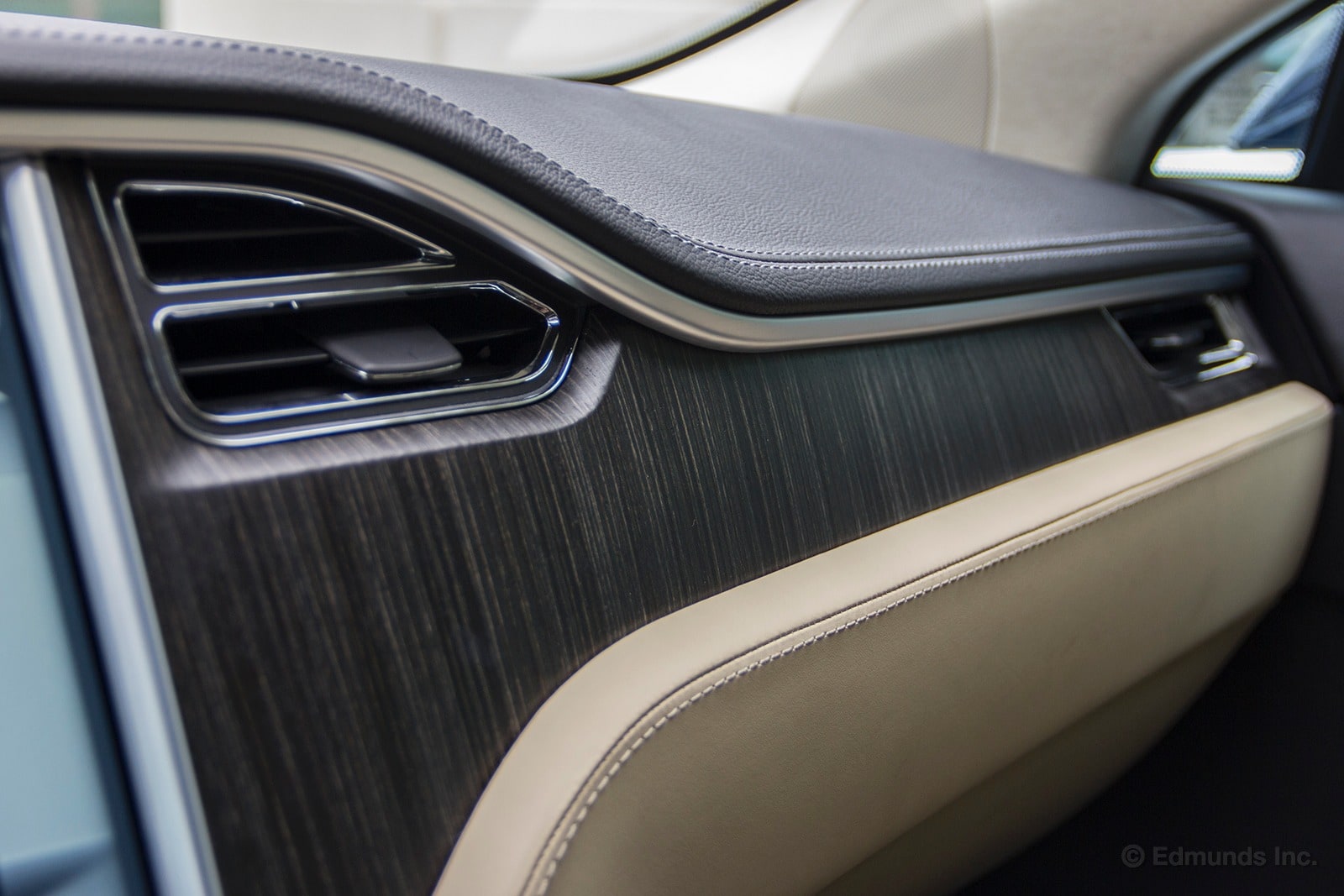
The bi-xenon headlights and their sleek integration with the body panels make for a sleek front end.
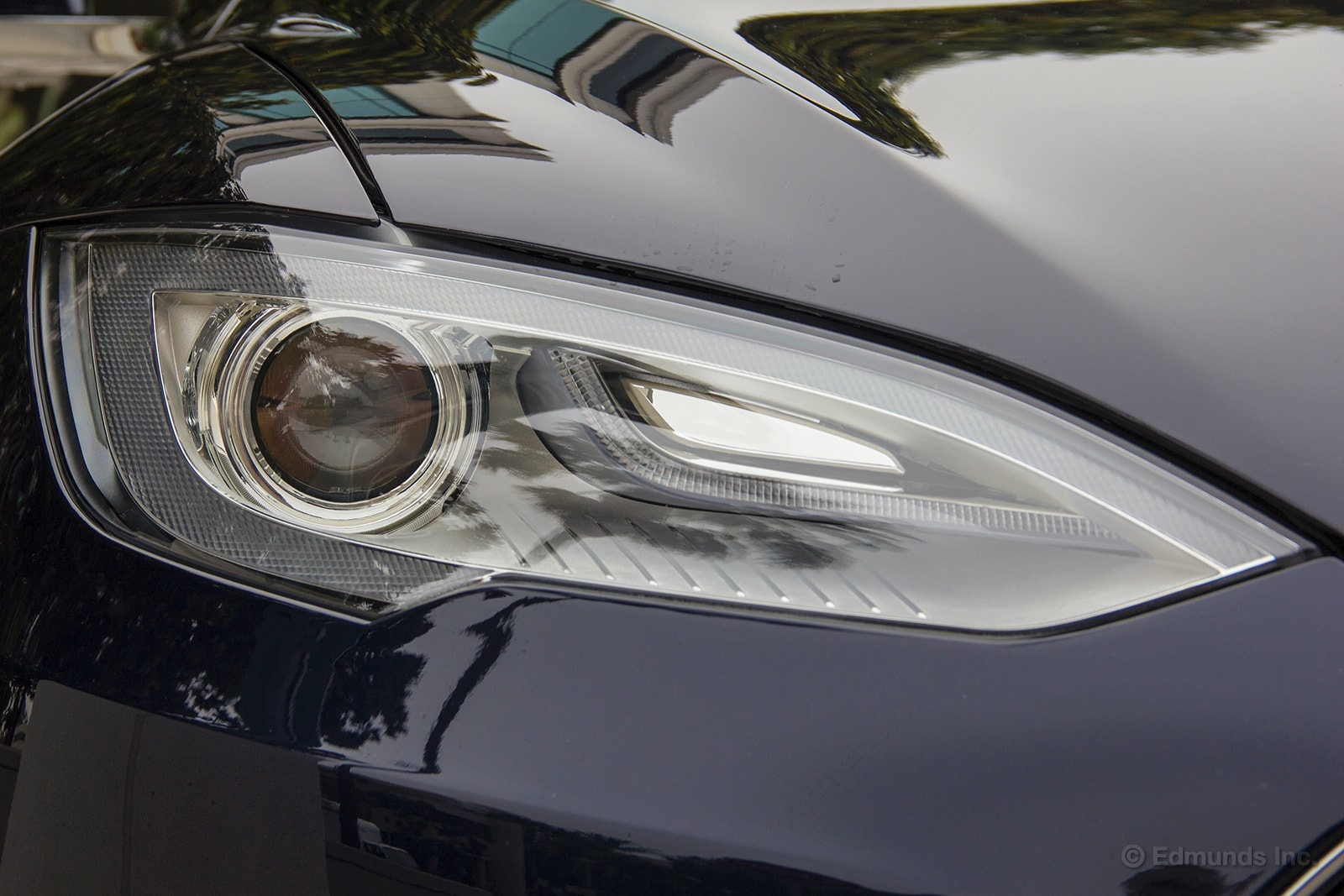
The taillights and the LED rear-facing lights are integrated flawlessly to the shape of the car.
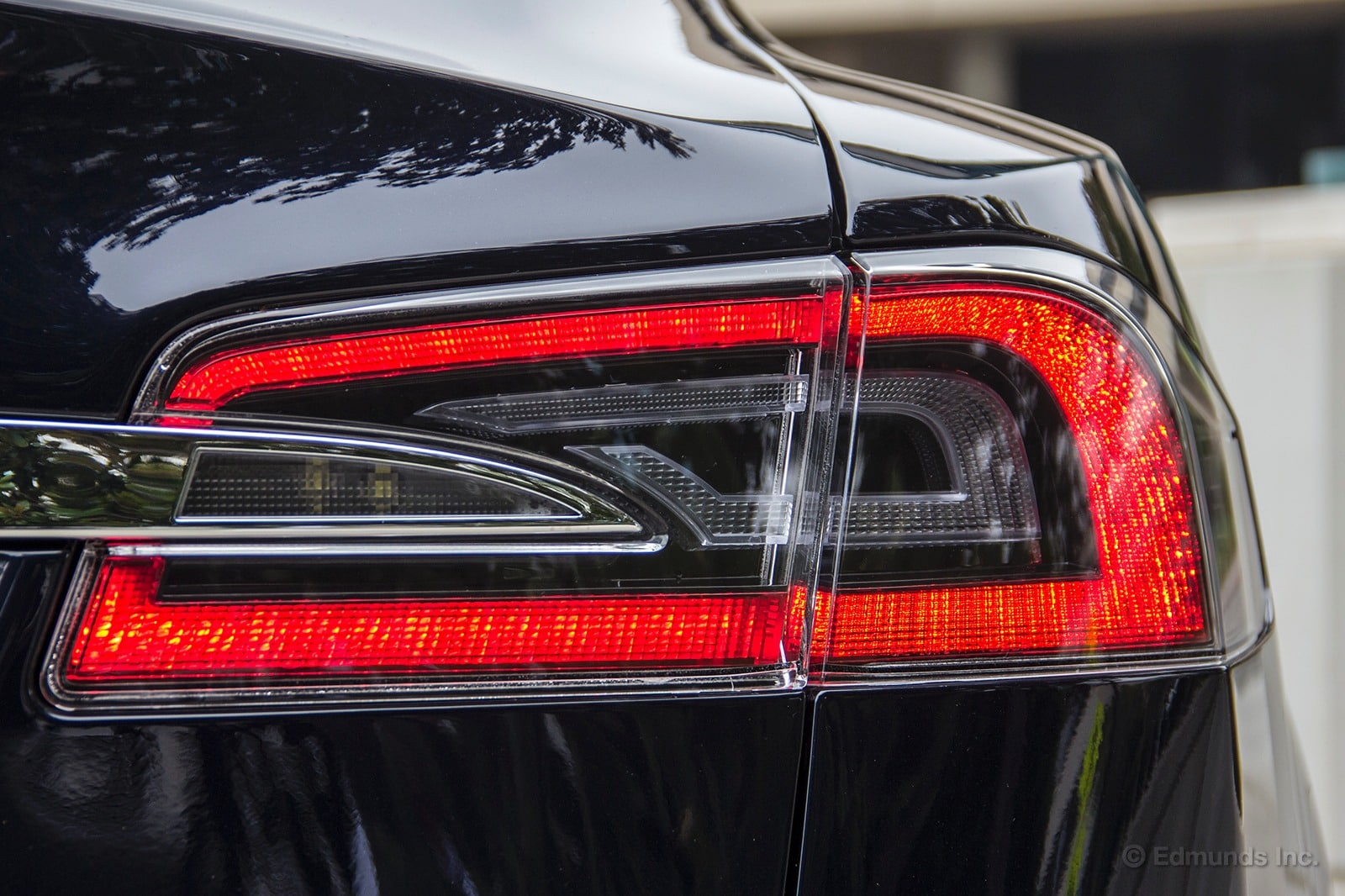
The recessed lighting in the cabin, with its small, blue-white LEDs bathe the interior with soft light. No complicated plastic overhead console means no cheap-looking ceiling.
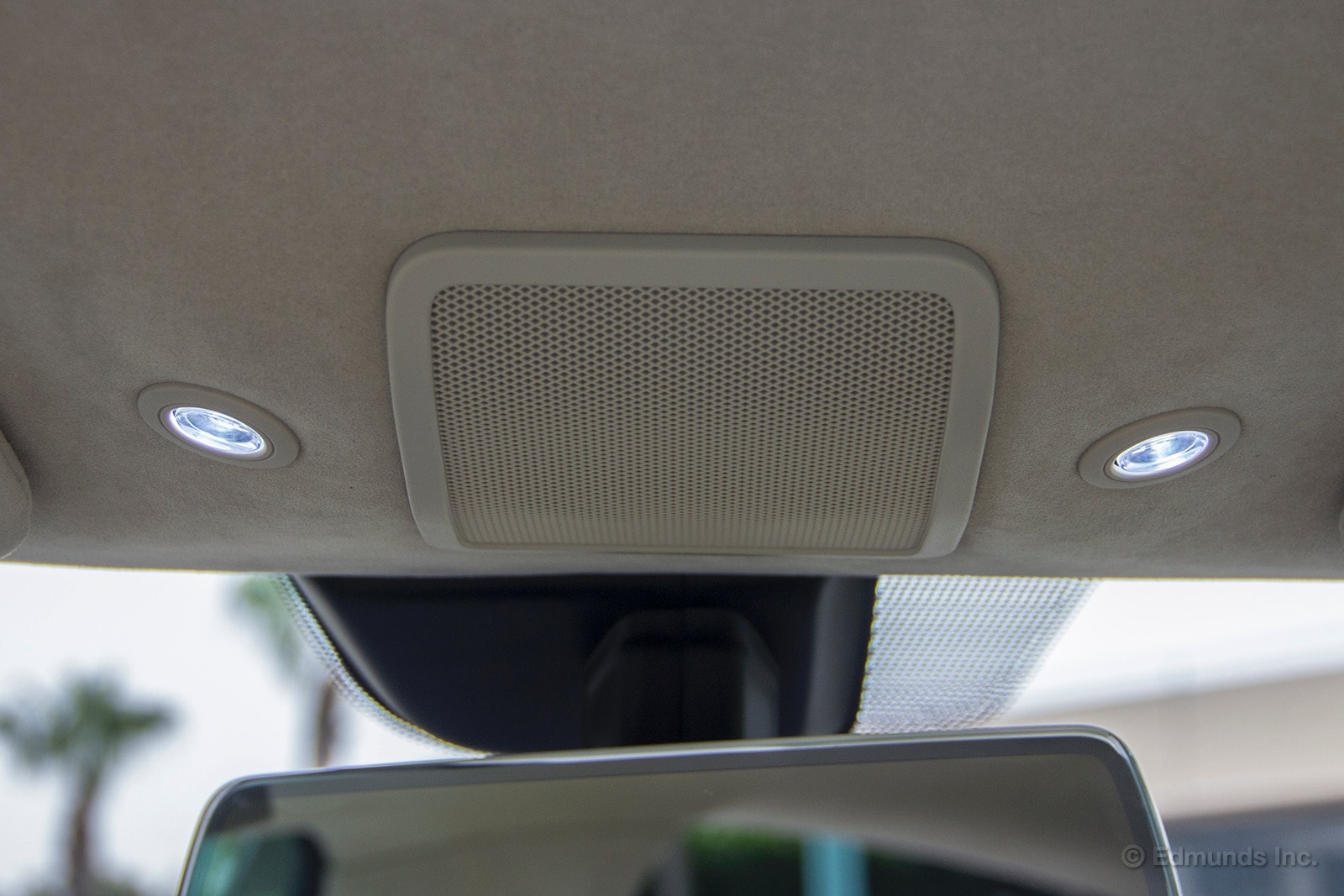
The swooping door handles paired with the hand pockets and their flawless integration into the extremely simple door panel. Sure it looks like a smiling fish, but I like it.
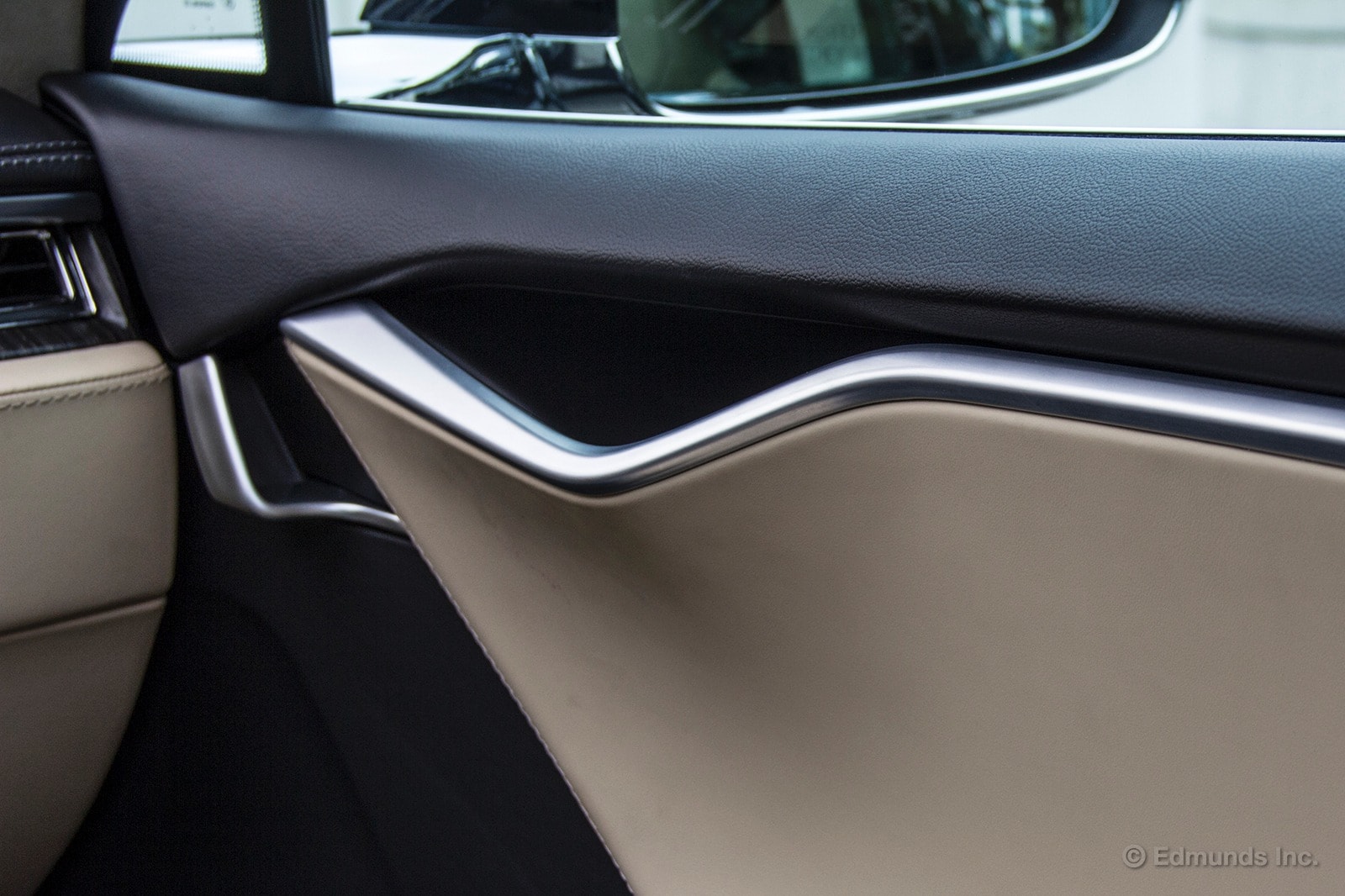
Finally, the seat belt that is designed to sit flush with the rear seat. This eliminates the possibility of sitting on the piece or losing it between the seats and it looks infinitely better.
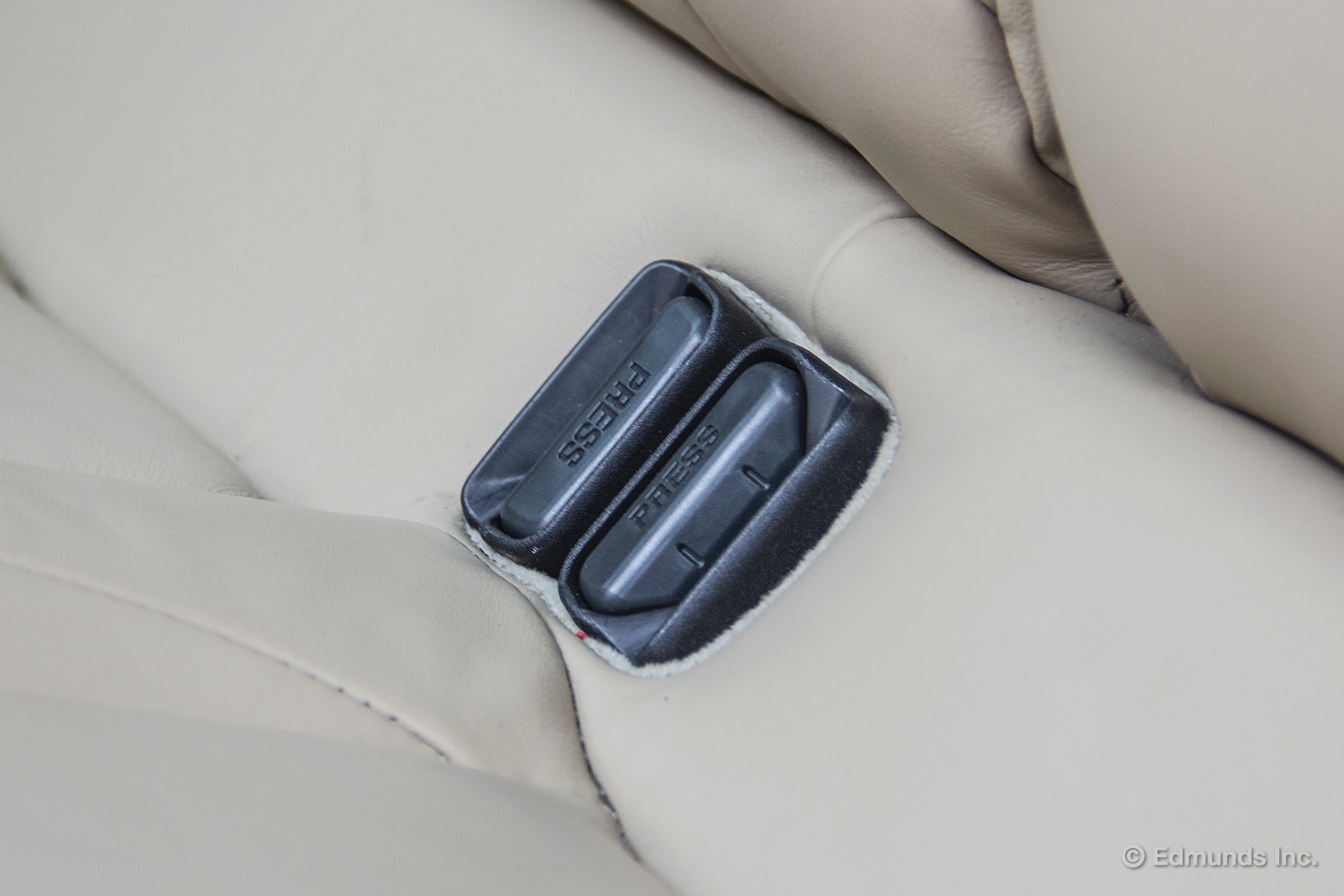

With the mirrors folded in on our long-term 2013 Tesla Model S, it is 77.3 inches wide. That is only 3 inches shy of being as wide as our long-term Chevy Silverado.
In its class, the Model S is 2 inches wider than a BMW 7 Series, 3 inches wider than the Mercedes CLS-Class, and 4 inches wider than the Lexus LS 460.
As a result, the Tesla requires extra attention in the tight confines of parking garages or curb-side. Since he is incapable of telling a lie, Sir Mix-a-Lot would be forced to say he likes our Tesla Model S.
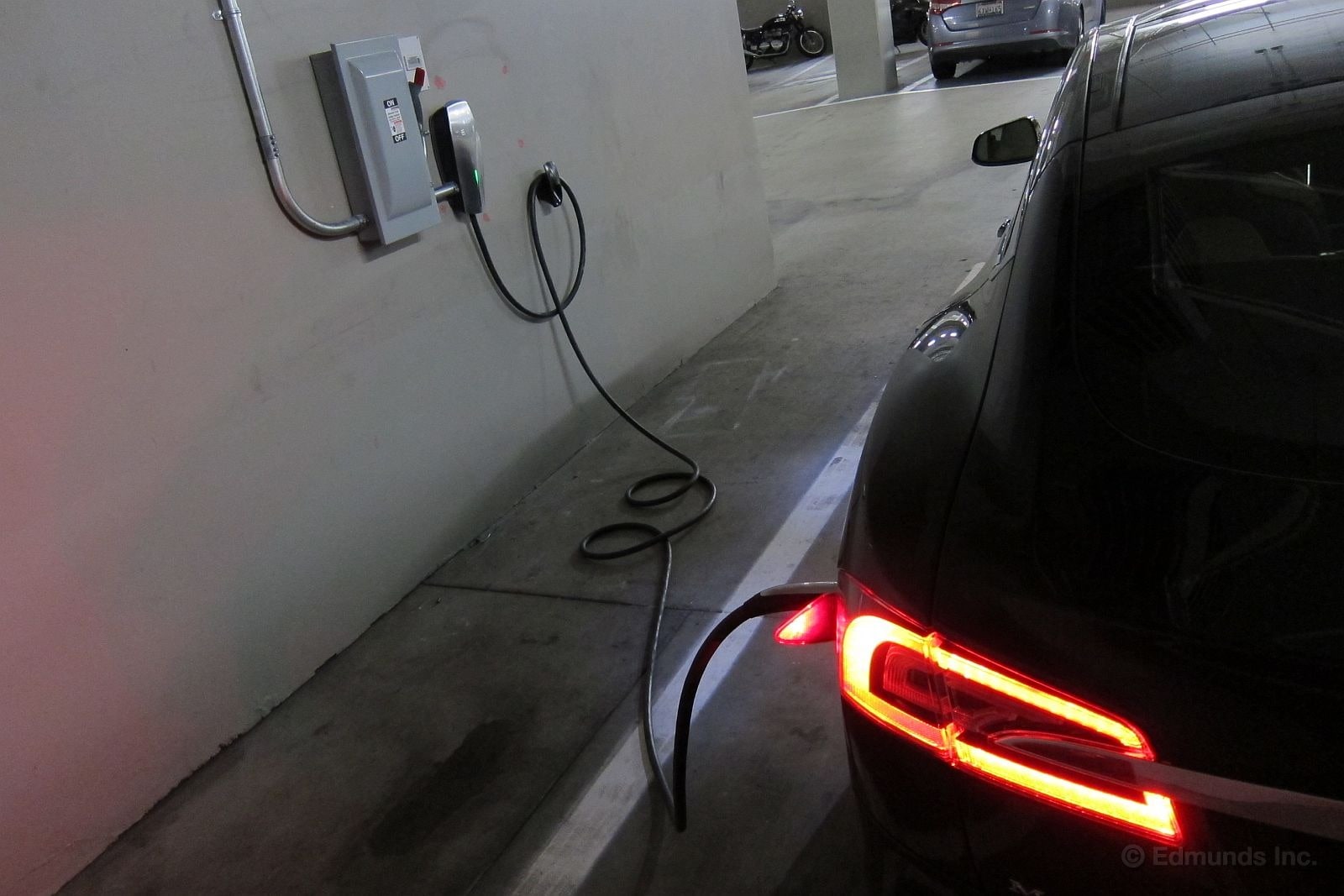
As of last week, our Tesla HPWC (High Power Wall Connector) is finally up and running. And it's fast. It can send electricity into our 2013 Tesla Model S's battery some 2.7 times faster than standard Level 2 charging equipment. That's because it's built to draw 80 amps through a 100-amp circuit instead of the usual 30 amps through a 40-amp breaker.
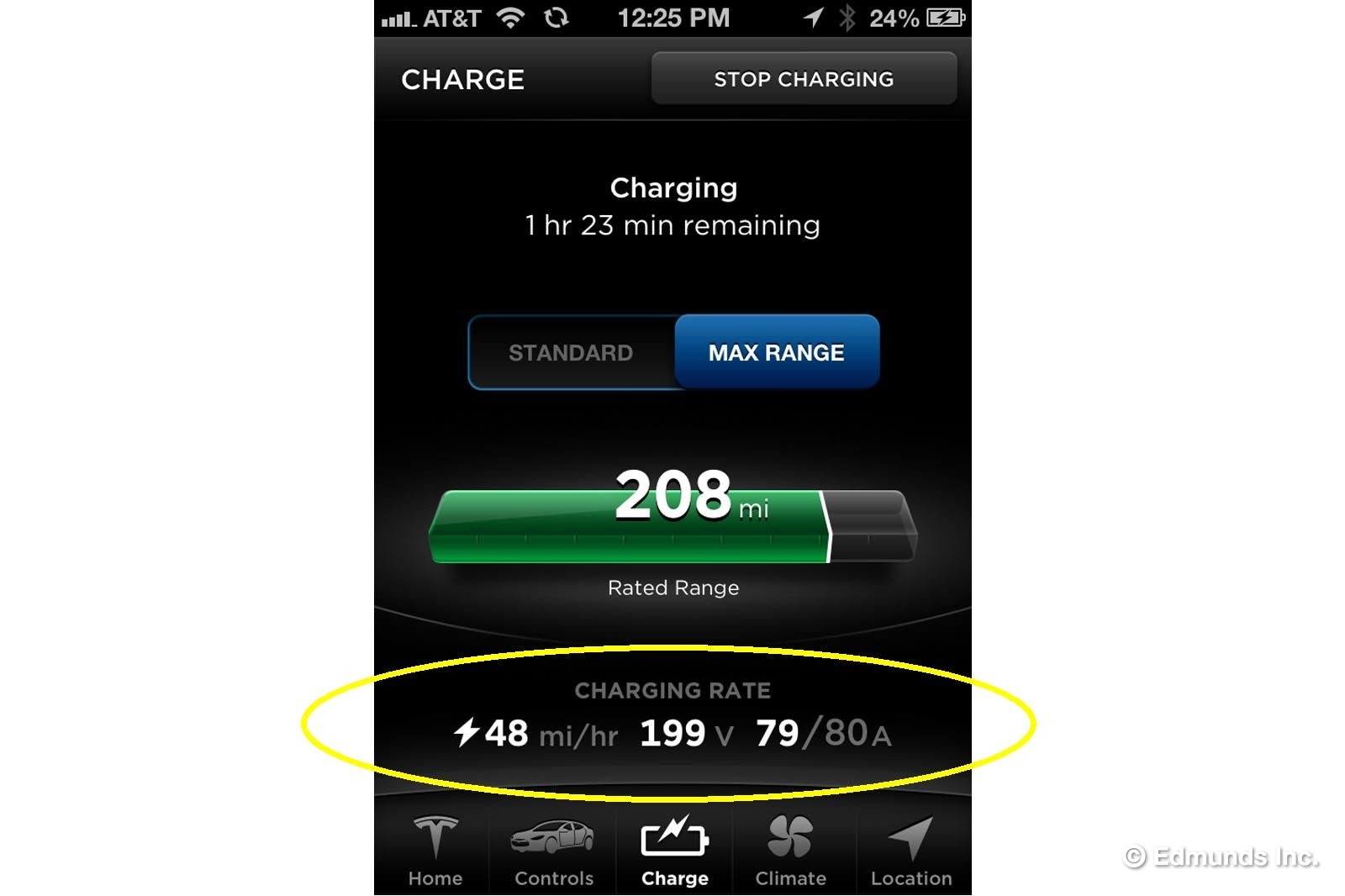
This screen grab from the iPhone app tells the tale. The figure on the left is telling us that power is being delivered at 48 mph, as in 48 miles of driving for every hour on the plug. Our ChargePoint Level 2 station is good for 18 mph.
That works out to 5.5 hours to fill an empty 85 kWh Model S battery instead of 14 or 15 hours. Our typical half-full battery will only take 2 or 3 hours to fill instead of 7 or 8, so now everyone who takes a turn behind the wheel will head home with a full battery, even if they leave early after the car arrives late.
It's worth pointing out the voltage readout, which shows 199 volts instead of the 240 volts you might expect. Our electrician tells me this is due to the natural of electrical service in commercial buildings, which tends to be 208V 3-phase instead of the 240V single-phase that's more typical of residential power panels. A HPWC should deliver 58 mph in a home installation with a full 240 volts (and 100 amps) behind it.
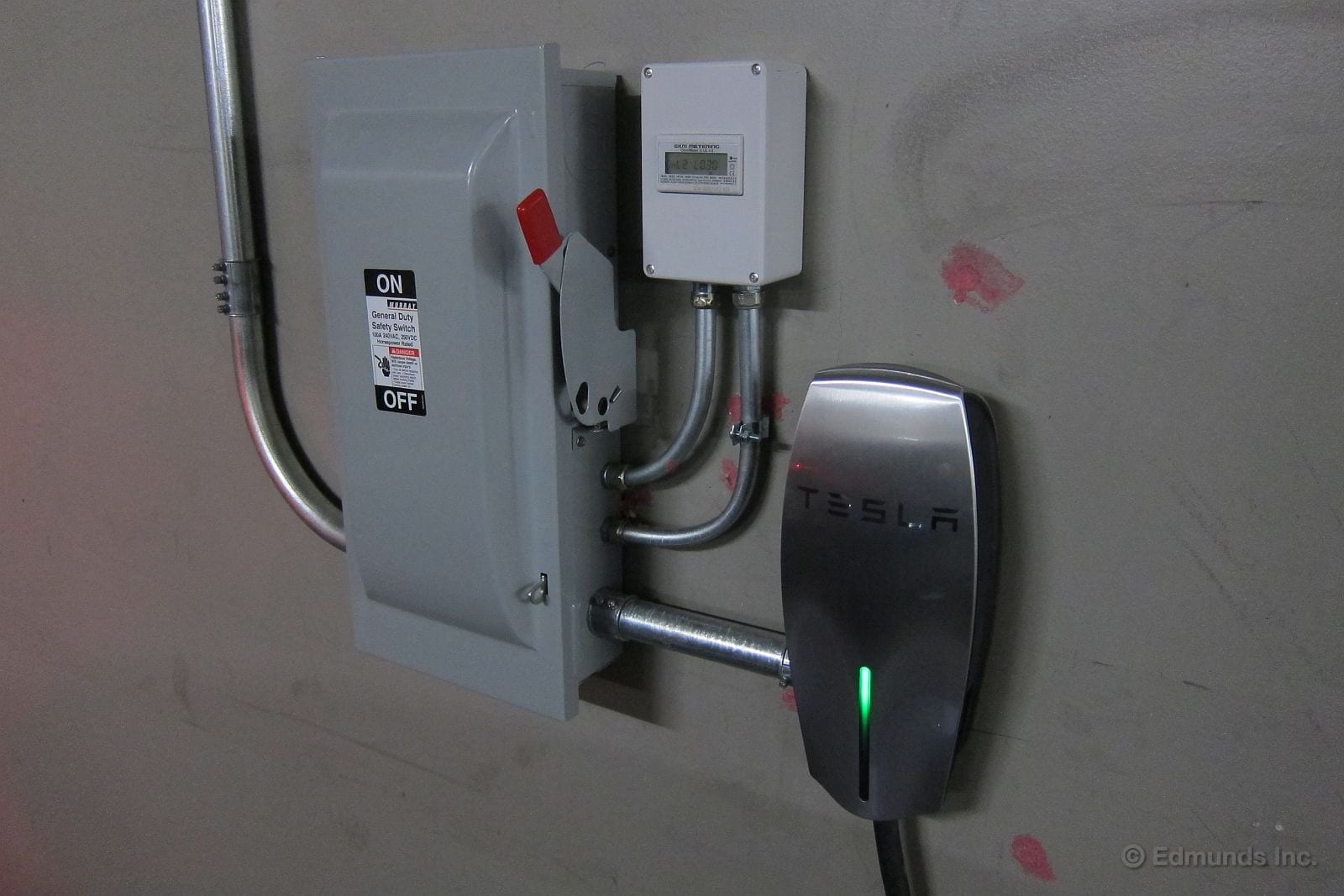
Our main circuit breakers are in a locked electrical closet some distance away, so a comically large power-disconnect panel was needed. And it positively dwarfs the sleek HPWC unit.
The smaller white box was my idea. Home charging equipment like the Tesla HPWC typically lack a readout of the number of kWh dispensed, but I needed to know how much electricity we're really using (read: paying for). After all, a gas pump with no "gallons" readout is pretty much worthless. The little box contains a digital meter I bought from EKM Metering. I'll go into more detail on that nifty little device at a future date.
Yes, it has taken us some time to get here, too much time. But now it's done, and we're ready to make the most of it.
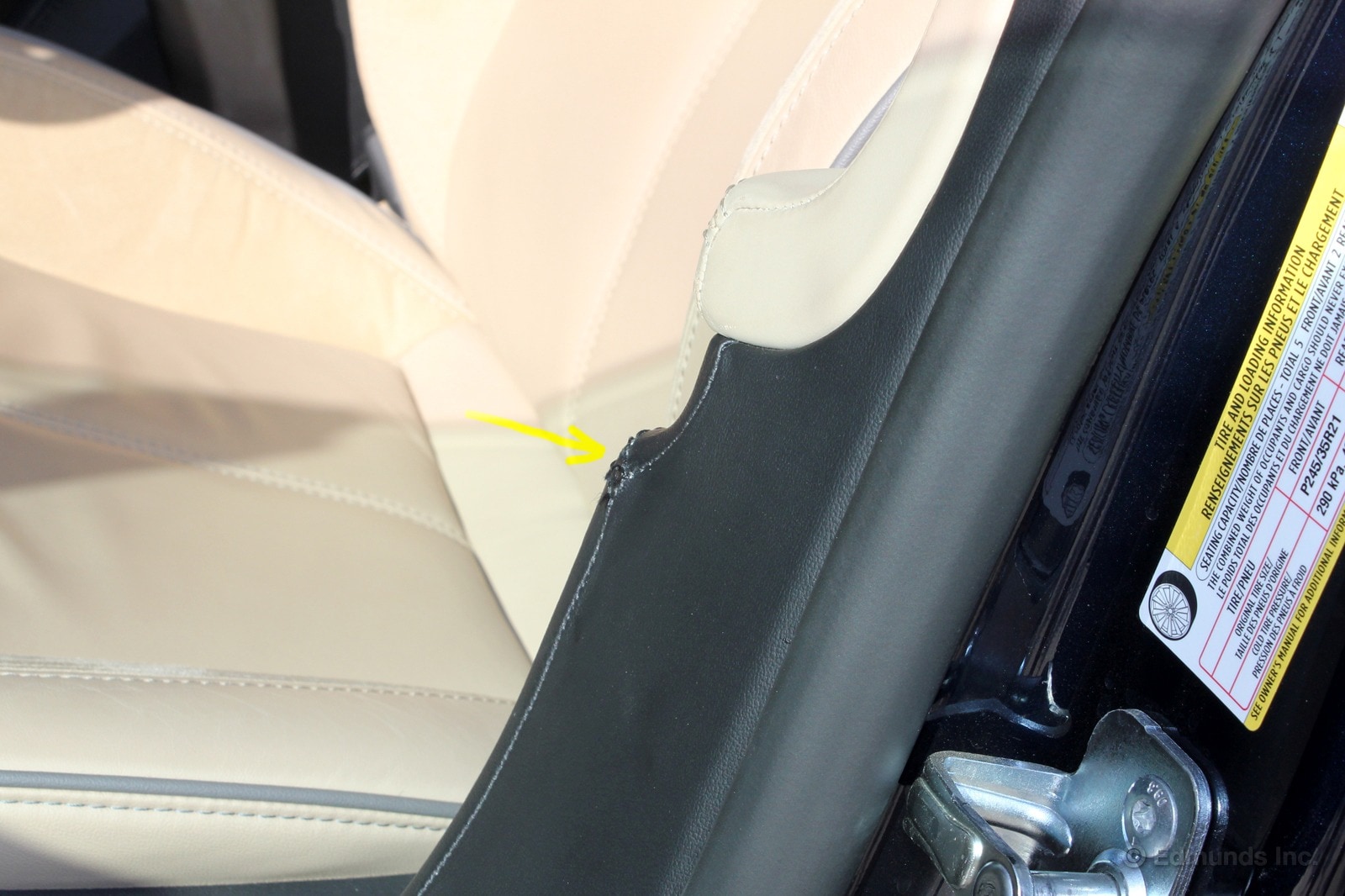
Last time I drove a Tesla Model S was in June 2012 at the production model roll-off. Then it was all giddy fun and giddy-up-and-go for the 15 minutes they let us have a car. This time I'm driving our long-term 2013 Model S. With a more critical eye. And a very sore thigh bone.
It must be the way I get into the car as no one else on the team seams to have been bothered. But each time I drop into the Tesla's driver seat I graze my left thigh, just below the hip, on a protruding bit of upholstered metal on the rear edge of the driver's door cutout.
That little bump-out is part of the Tesla's interior design, but it also is, literally, a pain in my butt.
The result of this glaring lack of Model S comfort is a 2-inch tender spot and a rather ginger approach to the car two days after bringing it home for the week. I now place my left hand on the protruding bit before I get in, and use it to cushion my entry. Awkward, but an effective painkiller.
I also wonder why no one else is complaining. Others obviously are rubbing against the same bump because the upholstery and the thread in the seam at that spot both are worn, as you can see in the photos below, and worn substantially more than at any other spot on the car.
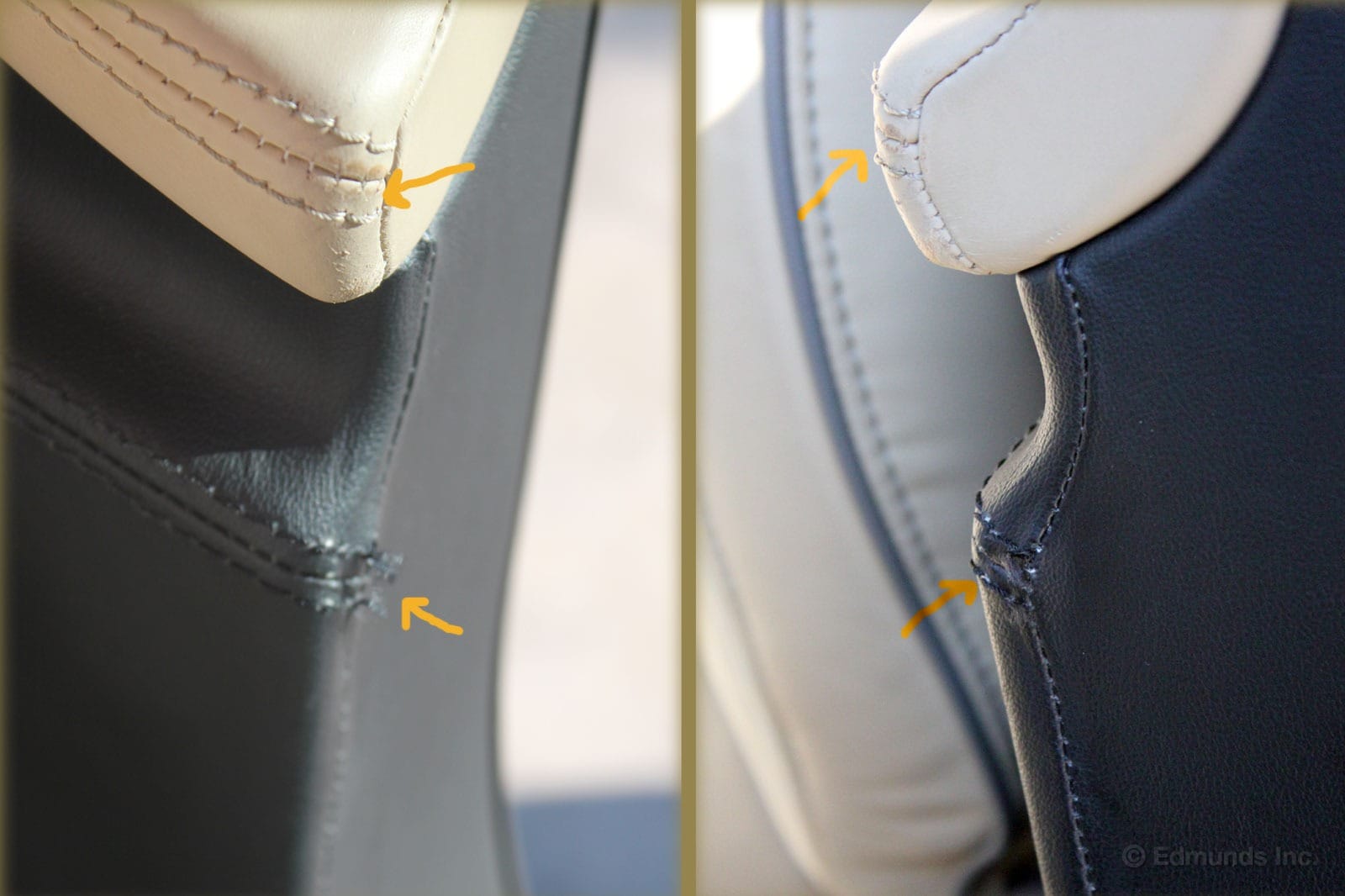
Perhaps I'm just not as well padded or as limber as some on the staff and thus can't avoid being jabbed by what others just slide on past.
Still, it seems a dumb thing for an expensive luxury car that's otherwise this well-packaged and aimed at buyers in an income bracket that suggests many wouldn't be as flexible climbing in and out as they once were.
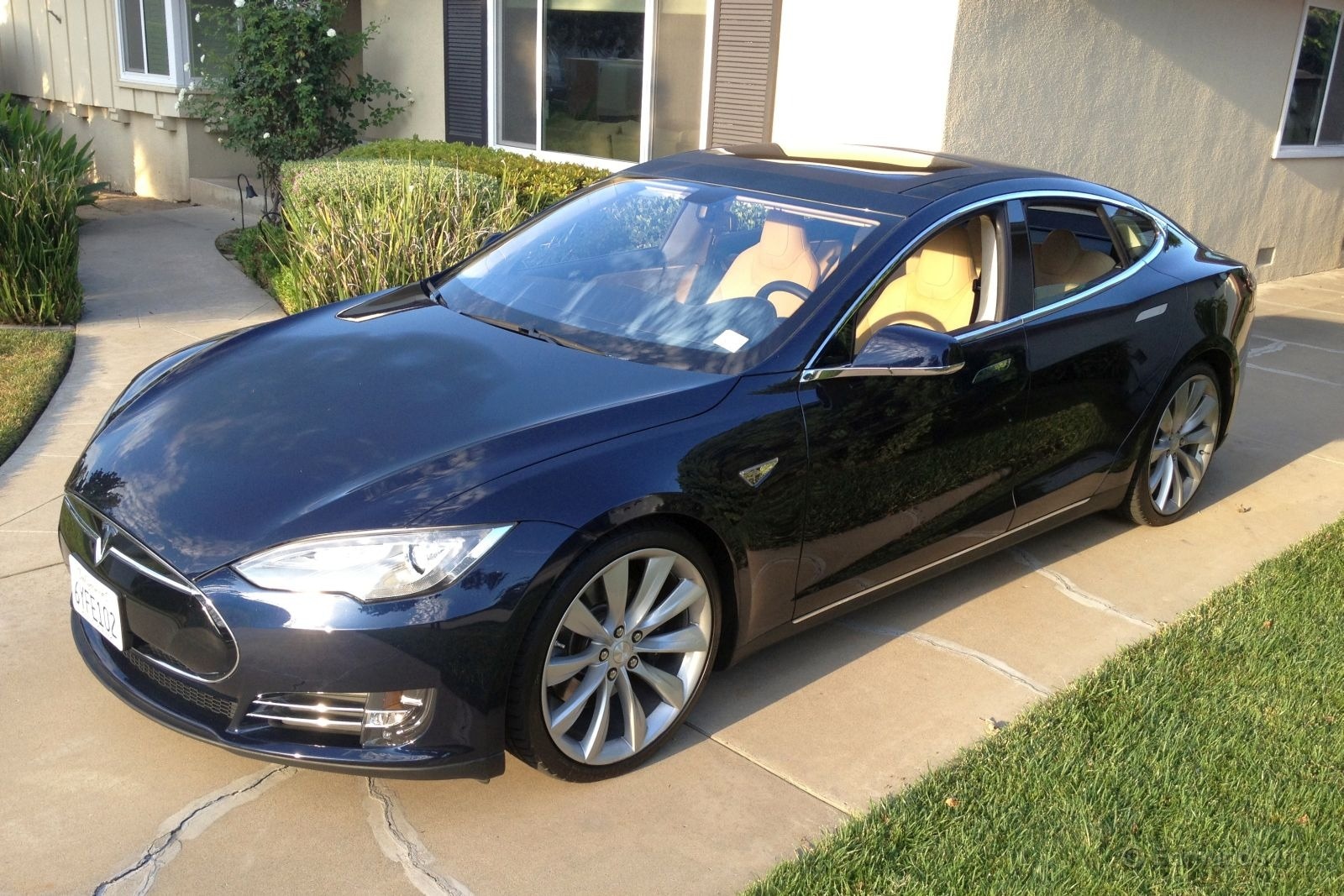
What the...? This is the second time this has happened. The morning of our recent Monterey road trip I walked out to our 2013 Tesla Model S to find all four windows fully open.
After I checked the interior for cats, my next thought was directed at Mike Magrath and his itchy trigger finger. He has the Tesla app and this car's login profile on his iPhone, too, and he's been known to remotely honk a horn or three at inopportune moments. He must be up to his old tricks again.
But then I studied the app on my smartphone once more. I can honk the horn, flash the lights, tilt open the sunroof, lock or unlock the doors, open the charge port door or manipulate the climate control system. And I can do all this from anywhere in the world, in fact, if the app can connect to the Web. So can Mike.
But there is no button for rolling down any windows. He's off the hook.
So now I'm back to square one. What the...?
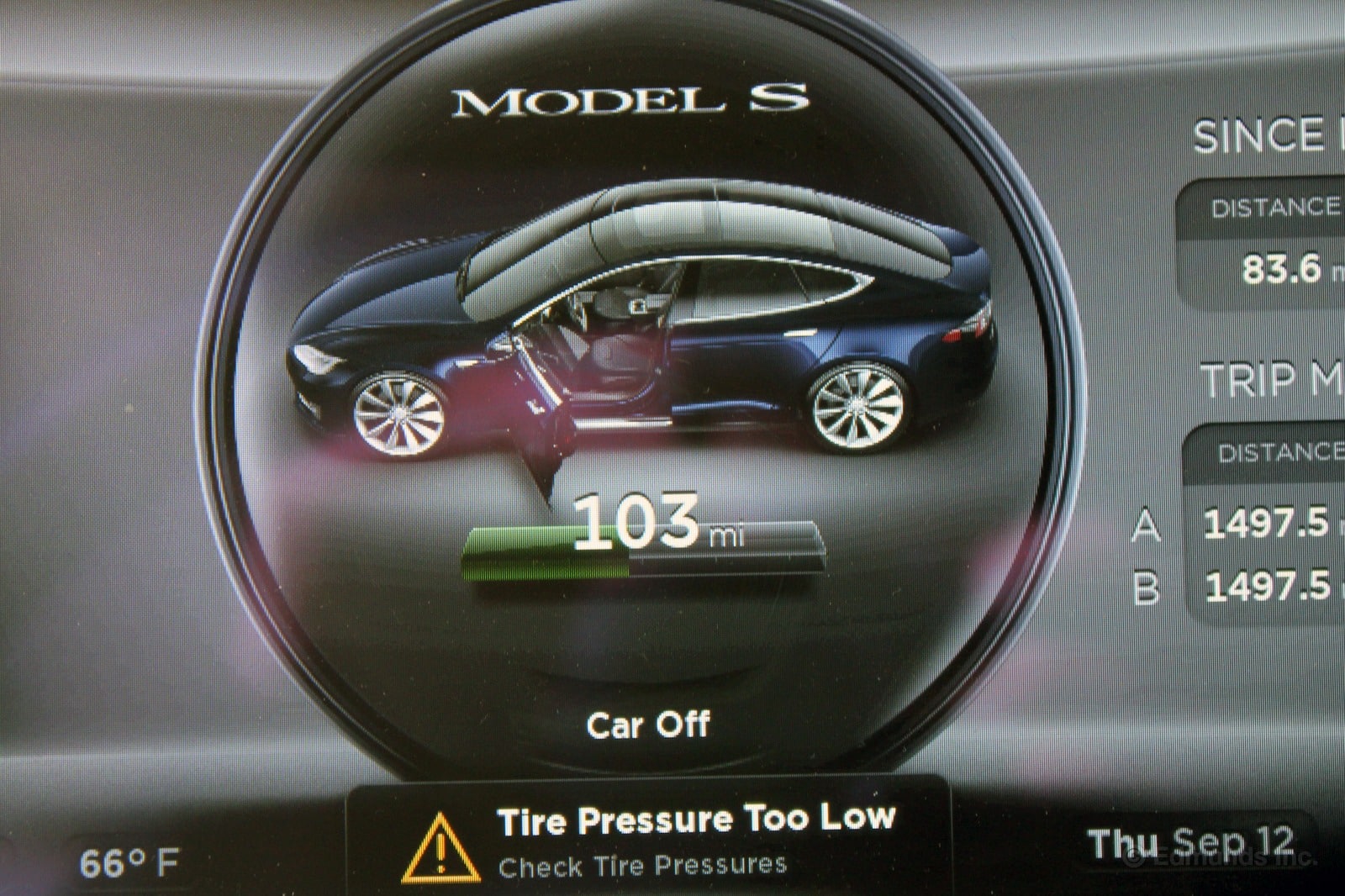
The tire pressure warning on our 2013 Tesla Model S lit up the other day, apparently for the first time, just as I was leaving the house to go to a Nissan event. (Cool move, I thought, driving the Tesla Model S EV to go see the Nissan Leaf EV).
Despite the car's breathtaking price tag, the Model S's tire pressure monitor doesn't tell you which tire is low. It just says 'Hey! Go check all the tires!'
I did. And I found the left rear to be the culprit, down to 36 psi instead of the recommended 42 psi. So, I added air from my home compressor and was on my way.
Slow leak, I figured, or maybe even just normal long-term deflation making itself known. Sure enough, the warning light stayed unlit all day and the tire, now hot, checked out at 43 psi when I got home. So I kinda forgot about it, figuring the culprit had, indeed, been normal air loss and not a leak.
Next time I saw the light was that evening as I was taking my wife out to dinner.
We were already on the road when it lit up, so we pulled into a nearby independent gas station and found that (a) per California state law they'd only give air to people who bought gas from them, not an option on the all-electric Tesla, (b) their for-a-fee air pump needed four quarters and we only had two, and (c) the cashier cage was closed so we couldn't get change.
Next stop was a big combination Chevron station, convenience mart and McDonalds (no, that's not where we ate). But while I could find oil, Monster energy drink, cheap headphones, gasoline and a burger there, I couldn't find the air pump.
Fortunately, there's a Pep Boys auto parts store and tire shop next door, so we drove over in the fading light and pulled up to an empty bay.
The crew was busily getting ready to close. It was almost 8 p.m. But several stopped their chores and walked over to take a look at the Tesla. It was the first one that had ever pulled into the place, mechanic Fabrice Tschumi told me.
There's a big sign on the wall that says "Free Tire Pressure Check," so I figured asking for a quick shot of air wouldn't be presumptuous.
"No problem," said Tschumi, as he grabbed an air hose.
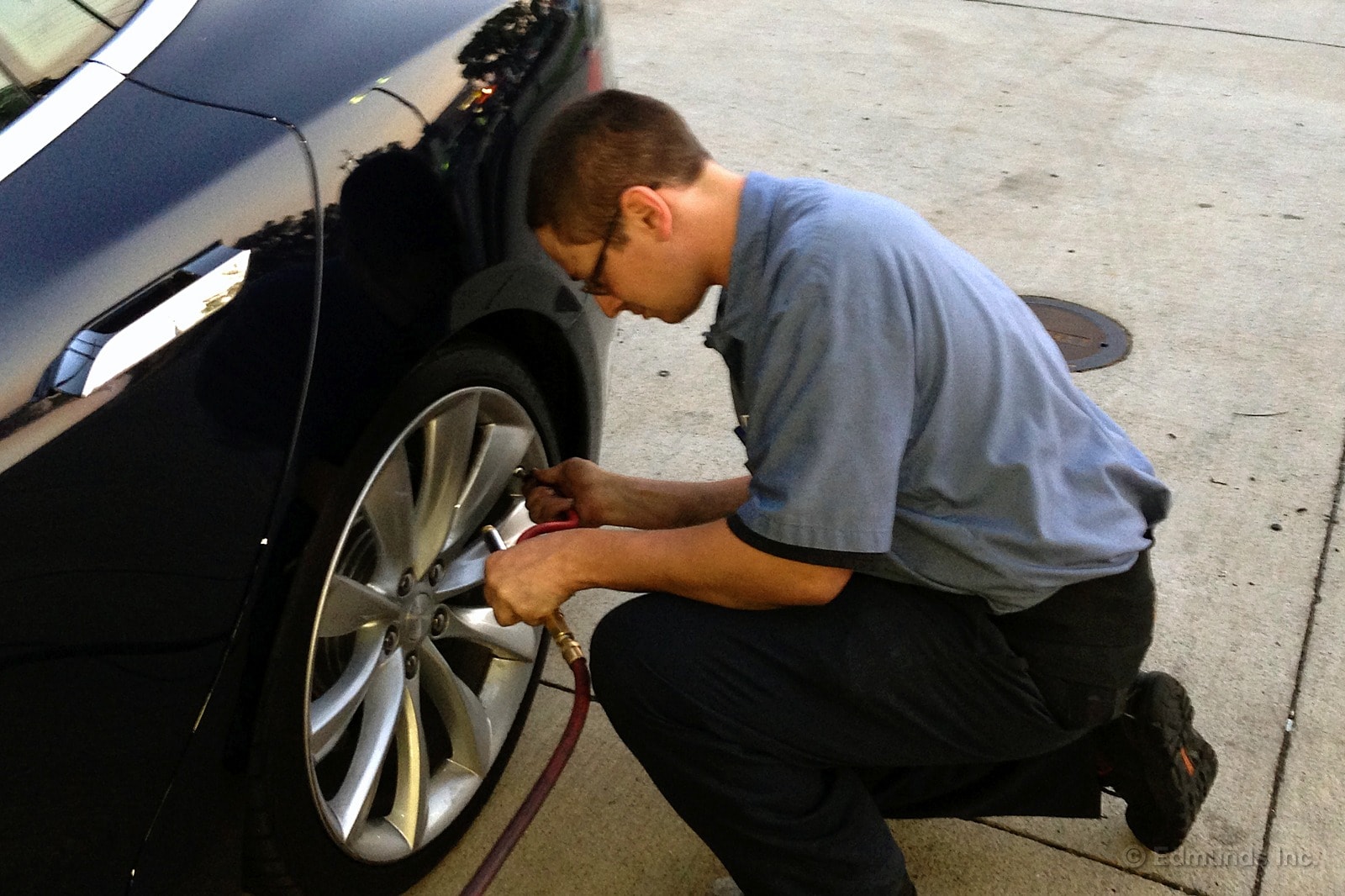
Then he paused and laughed a little. "This is what I get for saying not 10 minutes ago that we'd never see one of these in here."
The idea of a Tesla tire repair came up, he said, because he and a colleague were thumbing though a tire book and ran across the specs for the Tesla Model S.
He didn't get to repair the tire that night, but Tschumi did give us the air we needed, declining to accept a tip for the service. We made it to dinner and home without seeing the tire pressure warning again.
Until the next morning...

They say the third time's a charm. Not so with our long-term Tesla Model S and its rear tires.
The third time the tire pressure warning light lit up, I decided there must be an issue beyond normal air loss. I drove slowly to a tire shop near home and asked them to check the left rear for a leak.
What transpired was a bit shocking, as you can see from the photo above.
It's no wonder air was escaping. The inside edge of the left rear tire, and the right rear as well, it turned out, was chamfered by irregular wear to the point there was no rubber left. The steel cords were showing through.
"You need new tires," the service tech announced.
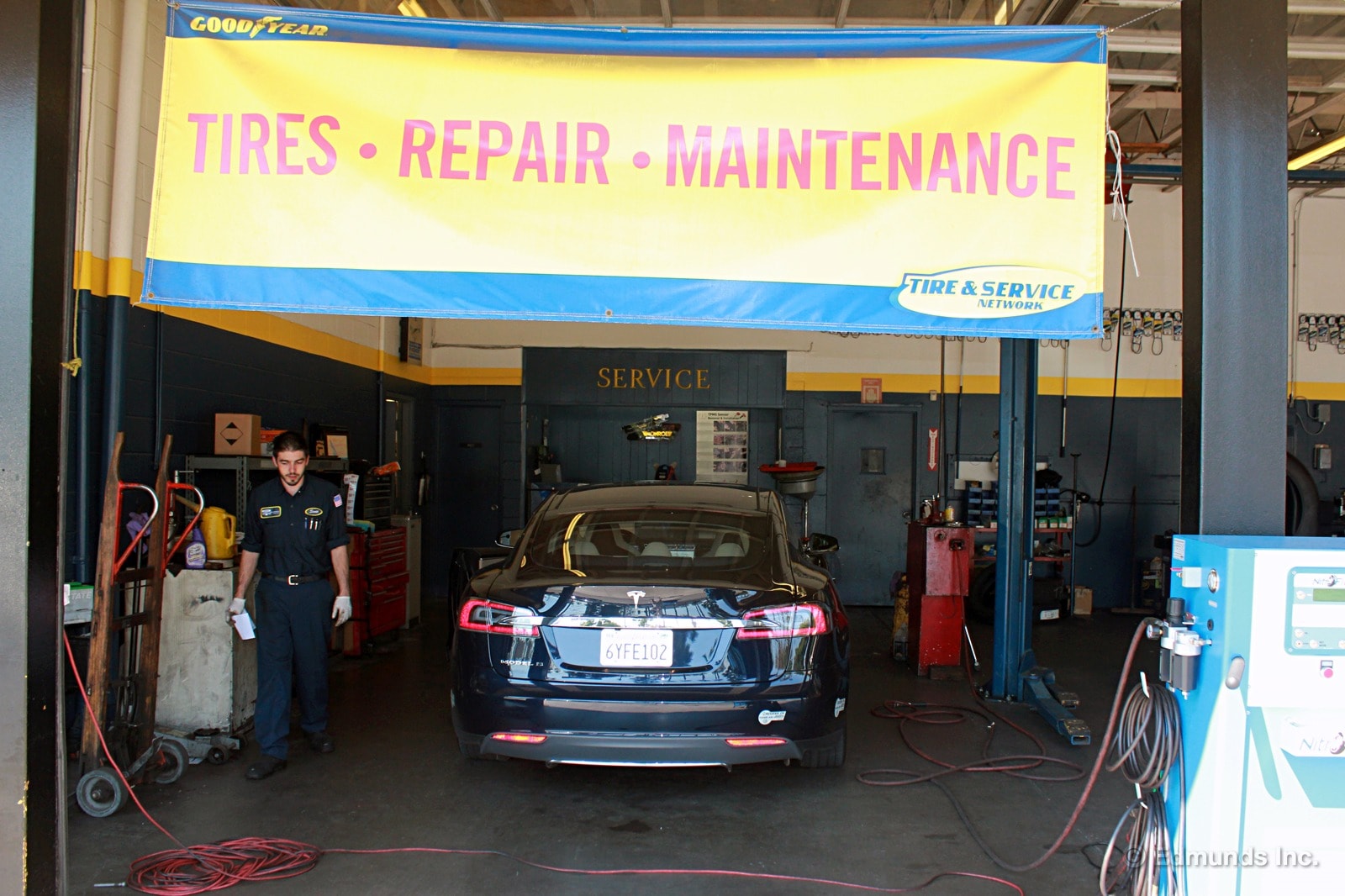
"No s---," I thought, while thanking him aloud for his help.
It seemed a bit much that the tires would wear through that way, and in just 9,500 miles, so in consult with Mike Schmidt we decided that rather than having the tire shop fit new rear tires, we'd have the car flat-bedded to the nearest Tesla service center, which turned out to be in Costa Mesa.
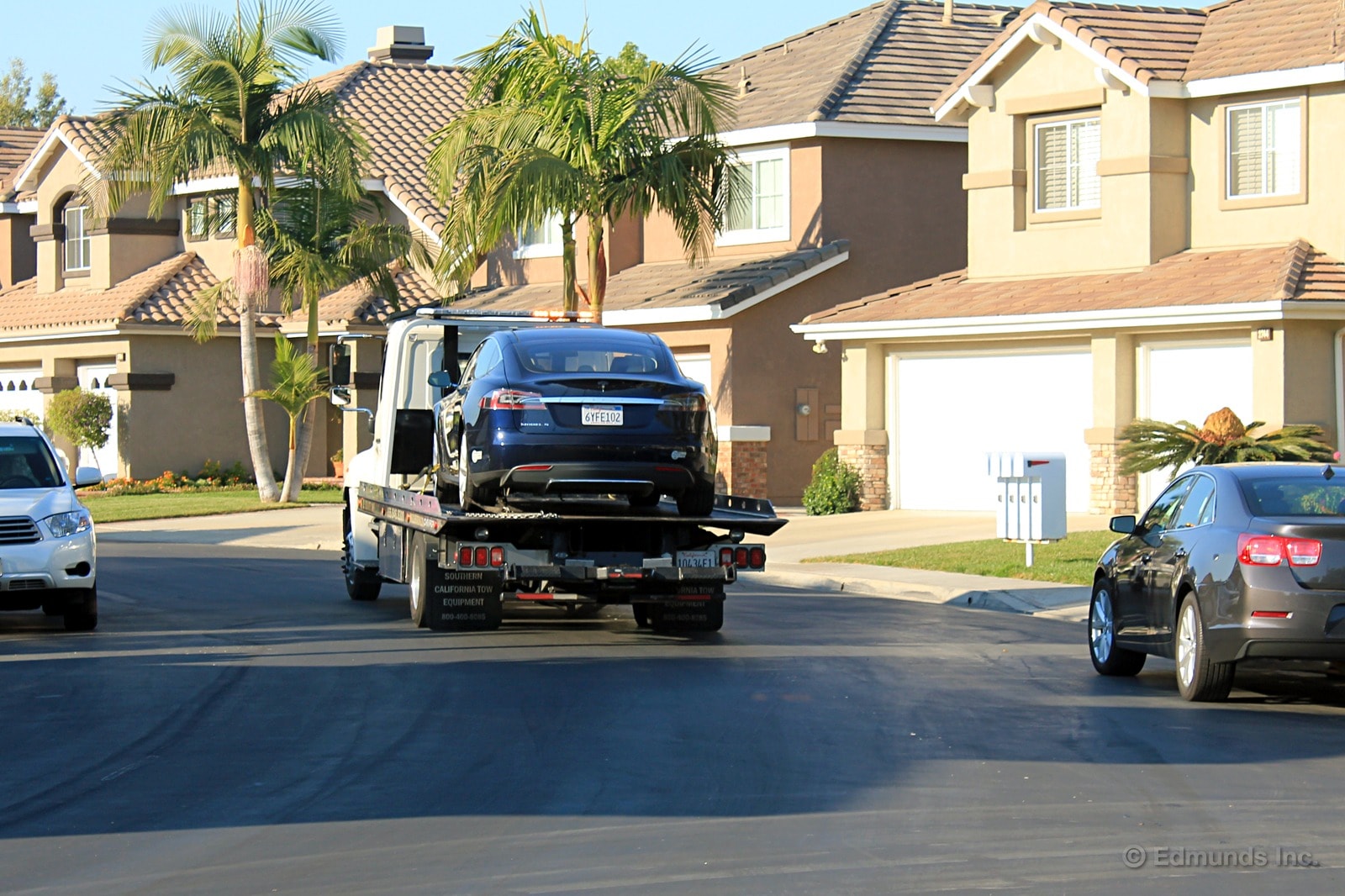
I called and talked to a service advisor named Nik, who said they were closing soon but to have the tow driver drop the key in the overnight box when he got there. Nik took my information and asked if the tires had ever been rotated. If not, he said, Edmunds would end up paying for the replacements at $375 each.
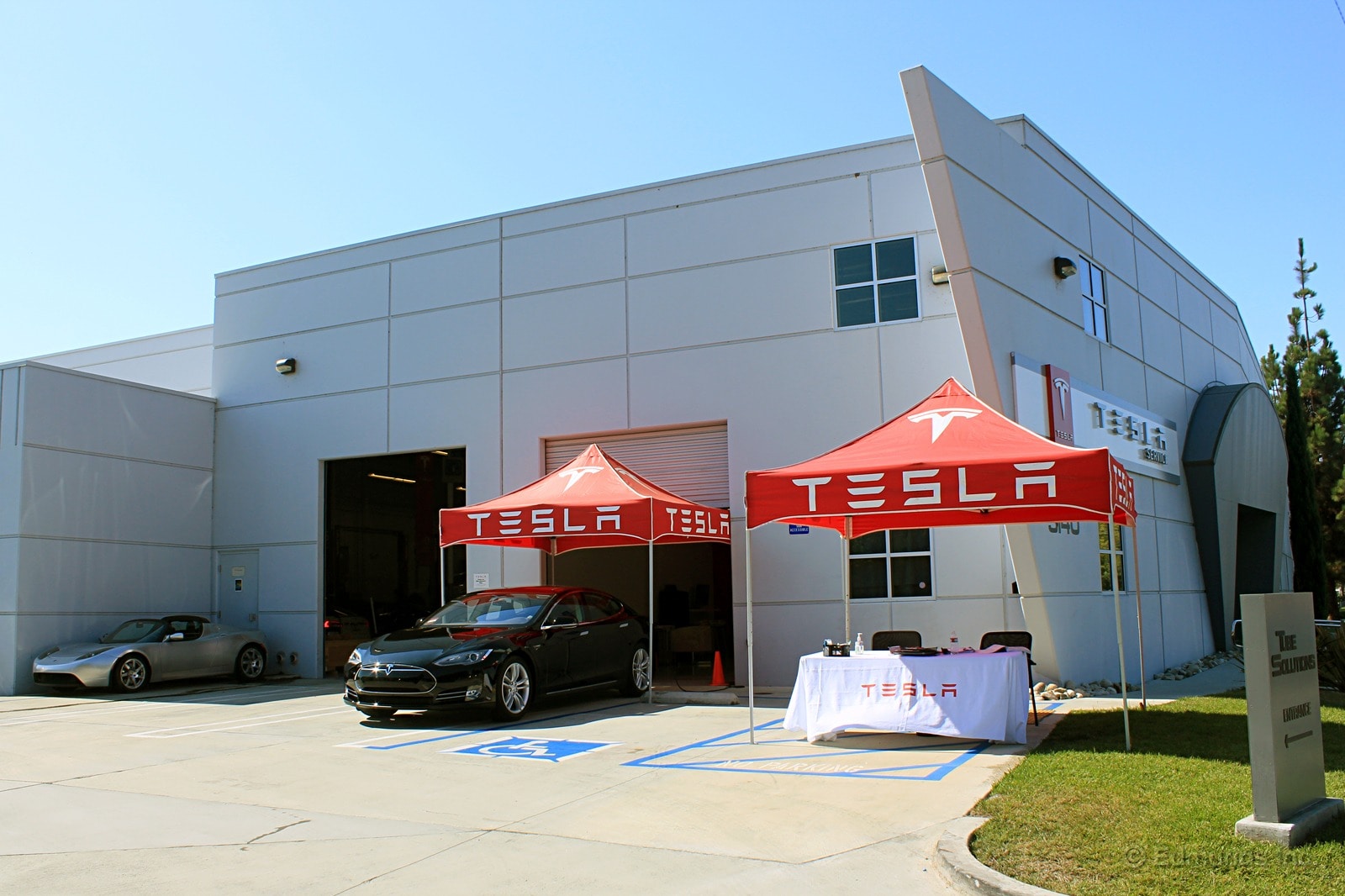
I called Mike and testing director Dan Edmunds and discovered that there was no tire rotation noted on the invoices from either of our two previous service center visits, both at the Santa Monica facility.
As of now it is unknown whether they did a rotation at 6,171 miles, our first visit for the broken sunroof, and just didn't write it down, or whether they forgot to tell us it was needed. We didn't ask for a rotation because it's not listed in the owners manual's care and maintenance guide, where just about every other automaker in the universe lists necessary stuff like tire rotations
Turns out there is a recommendation for a rotation every 6,000 miles, but it is in a separate section under "tires," six pages before you get to the maintenance schedule. The maintenance section merely recommends checking windshield washer fluid and wiper blades every 12,500 miles or 12 months and doesn’t mention tires at all.
There will, I'm sure, be more about that as we continue trying to trace down why the tires wear so unevenly and so quickly.
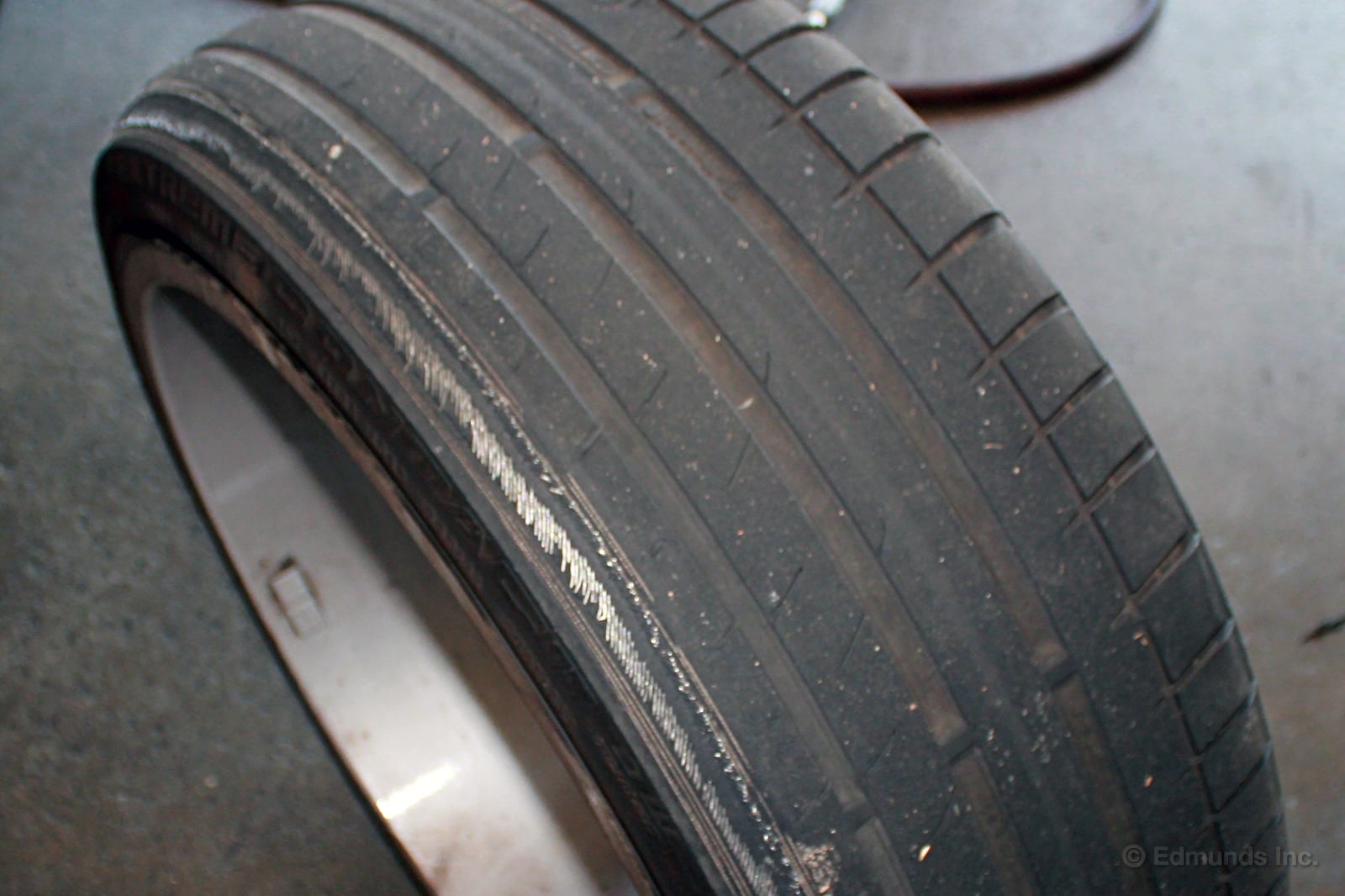
Both Nik and a service tech at the Costa Mesa center told me that such wear is common on Model S's that are equipped with 21-inch wheels, as is ours, and that haven't had a tire rotation at 5,000 to 6,000 miles.
Interestingly, we can't find anywhere in the Tesla manuals or official online material a warning about that.
There is a section on the Tesla Web site under the Model S "design" tab that talks about 21-inch wheels with low-profile performance tires (ours) providing "less protection from, …and [being] more likely to suffer damage from, uneven road surfaces, debris, curbs, and other common obstacles" and also reducing driving range versus the standard 19-inch wheels with all-season tires. But there's nothing specific about premature and uneven tread wear.
Now that we know of the issue, however, we did find a nice long string in the Tesla owner's forum about extreme rear tire wear on the Model S with 21-inch wheels.
Too bad we didn't see it a few thousand miles ago.
While the car is in the shop we're also having a few other issues looked at:
- The alignment. We want to see if the car was set up properly and/or how much out of whack the rear alignment actually is, whatever the cause. Nik said that while Tesla disavows responsibility for the worn rear tires, it would comp an alignment service if one is needed.
- The sunroof, supposedly repaired at 6,100 miles, wasn't and is still plagued by a loose gasket that gets stuck if the roof is opened (which the tow truck driver did as he was fiddling with the touch screen trying to close the side windows).
- The top of the dashboard cover on the driver side, over the instrument panel, isn't fastened down very well. I discovered this while drumming my fingers on it while listening to some Warren Zevon on the fantastically good audio system. The whole thing vibrated like crazy as I drummed, much more than it would have if tightly fastened. When I grasped the thin edge of the cover and lifted, it came away from the IP by about three-quarters of an inch.
- The front fascia. As the tow driver was getting ready to fasten the chains to the front end to pull the car onto his flatbed truck, I noticed that the top edge of the front fascia, where it meets the headlight housing, was sticking out as if someone had pulled it from its moorings. I pushed it back and it reseated with an audible "snap," but it is unclear how or why it came undone in the first place.
Including the tire wear issue, it seems like a lot of stuff for a six-figure car with less than 10,000 miles on the odo.

I'd been feeling a bit like Joe Btfsplk, an old comic strip character who wandered around with a rain cloud over his head jinxing everything he touched.
I'd picked up our long-term 2013 Tesla Model S, planning to get reacquainted with the powerful electric drive system and all the car's high-tech electronics during the week and then put it through its paces on a 700-mile weekend trip up to the central California coast and the Paso Robles wine country.
Instead, I spent much of the week wrestling with a Tesla tire issue involving extreme wear on the car's optional 21-inch Continental performance tires. The inner shoulders of both rear tires were so severely worn at 9,550 miles that the steel cord was exposed all the way around.
Premature Model S tire wear of varying degrees is a problem that others who've ordered the performance tire option have also experienced, some complaining on Tesla's owners forum of rear rubber wearing out as early as 1,500 miles.
We thought the issue with our car was a rear alignment problem. The Tesla service advisor who took my phone call thought not and suggested that if we hadn't done a tire rotation at 5,000 miles then we'd be on the hook for the replacement tires.
I wound up having the car flat-bedded to Tesla's Costa Mesa service center. There I was told again that we'd probably have to pay for the tires because, indeed, we hadn't had a recommended tire rotation. The manual says 6,000 miles, not 5K as our service advisor had said, and doesn't list tire rotation in the regular maintenance section. The car was seen at the Santa Monica service center at 6,171 miles but no one there suggested at the time that a rotation was needed.
The Tesla stayed in the shop all weekend while my wife and I did our wine country getaway in our own car.
On the following Monday morning I taxied to the Costa Mesa service center and handed over my credit card to pay the $855 bill for the tires ($375 each plus labor).
The service advisor who was checking me out was about to run the card through the processing machine when Nik, the advisor who'd first dealt with me, looked up from some paperwork he'd been busy with and said "oh, we're good-willing those tires."
After getting over my moment of surprise, I offered a heartfelt "thanks" (I would have been reimbursed, so it wasn't my money, but it was still $855 saved).
Then I asked if they'd decided to comp the tires because there was an alignment issue, as we suspected, or simply because we were Edmunds.com and were writing about all this stuff.
I got a shrug and an admonition to make sure we did regular tire rotations in the future because this didn't mean other tire wear issues would be taken care of at no cost to us.
Not quite satisfied with that answer, I sent an e-mail to Tesla's media contact in Palo Alto after I'd turned the car in at the office and filled Mike Schmidt in on the outcome.
I asked whether the decision to "goodwill" the replacement rear tires had been a corporate one and, if so, whether it was based on who we were or was acknowledgement that that severe misalignment had been a major cause of the wear.
I also asked whether, in light of the other customer complaints about premature rear tire wear on the optional performance tires, Tesla was satisfied that the rear suspension and alignment on the car was the best possible setup.
And would Tesla, I queried, be notifying customers and prospective customers that the lifespan of the performance tires was so limited?
The answers came back that evening. Re: the first, Tesla said that it left decisions about customer goodwill to the individual service centers and that, yes, it has been eating the cost of worn rear tires when the service centers determine there was an alignment issue.
That confirmed our suspicion that the wear we experienced wasn't normal, even for a performance car, and was caused by misalignment.

Dan Edmunds, our testing director, is going to be delving deeper into this in a separate long-term update posting once he's digested the results of the four-wheel alignment done as part of our service call.
His preliminary finding, however, is that "the rear camber was at the upper limit, but the rear toe was way off, toed out instead of toed in."
In answer to our other questions, though, Tesla was a little less giving.
The 10,000-12,500 lifespan of the Model S's performance tires is on par with that of other high-performance cars, we were informed, and Tesla is "more than satisfied" that the Model S's rear suspension and alignment is the best possible for cars with the optional performance rubber.
So, despite the complaints on the owners forum, and our own experience, don't expect Tesla to be providing its owners and prospective buyers any more details about performance tire issues than the scant amount it already provides in its marketing and owner info.
And for those of you following the other issues we asked Tesla to tackle during our latest service: The broken sunroof gasket was repaired; there was nothing done to address the loosely fastened fitting dashboard cover although a note was added to our file indicating that we'd reported the issue; and the front fascia's fasteners seemed to be holding so there was nothing to do to it.
Stay tuned for Dan's post-mortem.
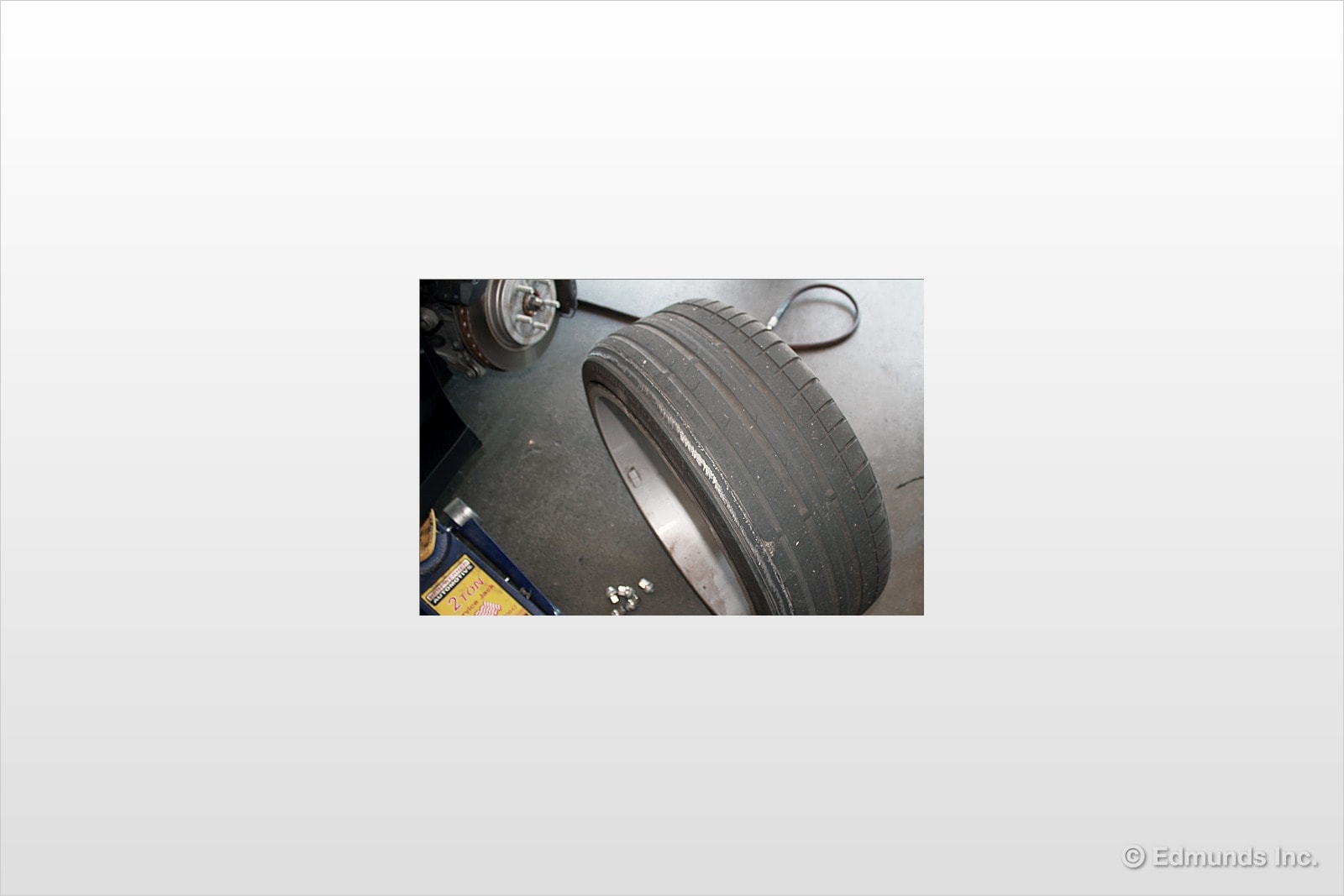
By now you've read all about the rear tires on our 2013 Tesla Model S and a how a TPMS warning alerted us to a leak. Our P245/35R21 Continentals only had 9,550 miles on them at the time, so we expected something like a nail and a $50 repair. The photo above shows just how wrong we were. And both tires looked pretty much the same.
As soon as I saw this photo I knew the missed rotation had little to do with what went wrong. It was obviously a wheel misalignment issue, and I asked John to make sure to get an alignment printout so I could see what had gone wrong.
Look at the tire again, ignoring, if you can, the mangled inside edge. Concentrate on the face of it. The tire looks to be somewhat evenly worn across its width, with maybe a little less tread depth at the inner wear bar than the outer one.
It appears that things were reasonably OK for a decent amount of time, and then something went horribly wrong. At some point the extreme inside edge began wearing at an entirely different angle, as if the tires suddenly got thrust into some kind of weird pencil sharpener.
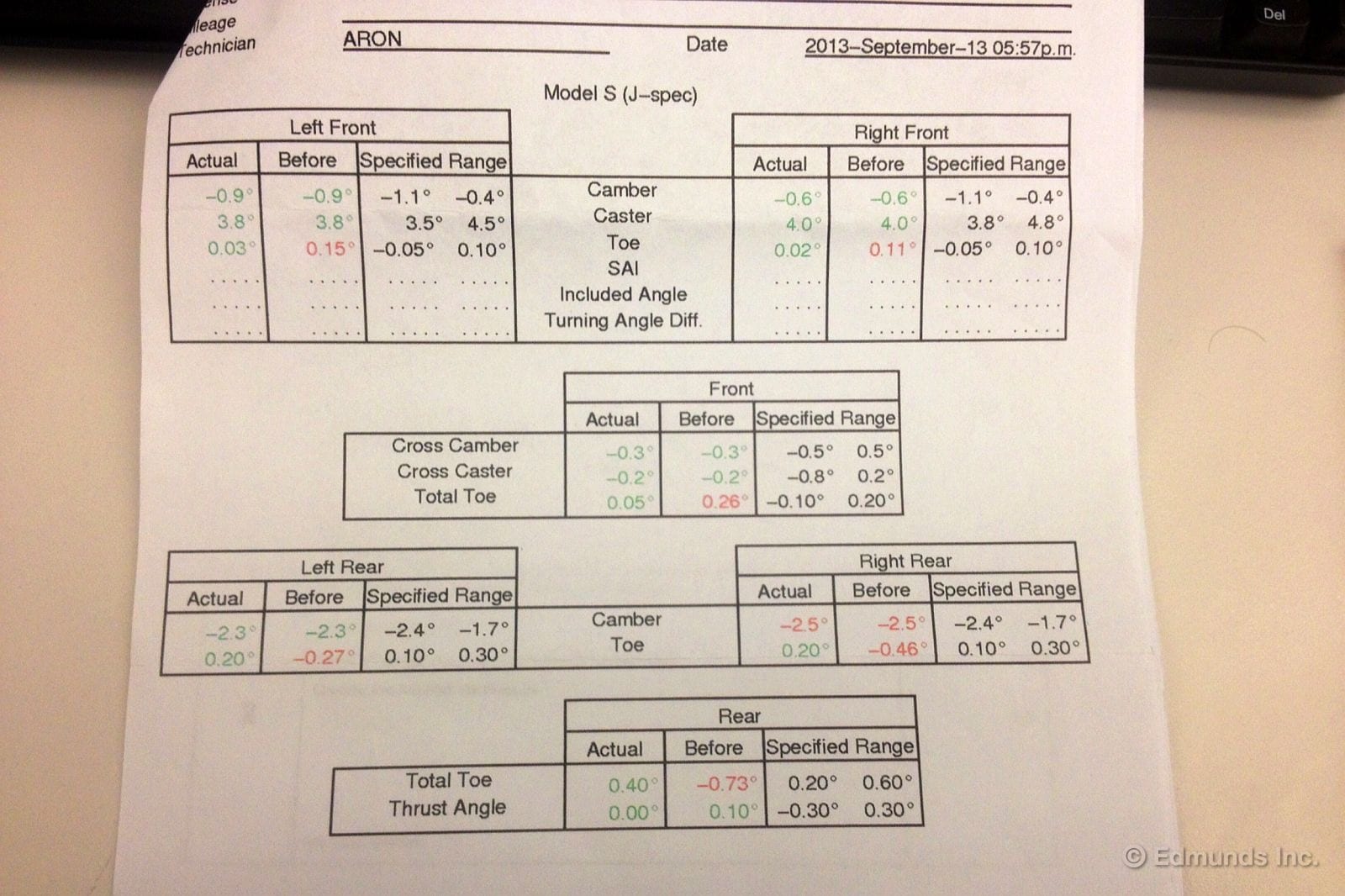
The "before" boxes tell the story. The tires ground themselves to bits because the rear wheel alignment went out, on both sides, to more or less the same extent.
But excess negative camber isn't our culprit. Yes, the Tesla Model S's rear camber specification does call for a healthy dose of negative: the range is -1.7 to -2.4 degrees on each side. And it's true our car was at the extreme negative end of that range. The left rear was just inside the limit at -2.3 degrees and the right rear was slightly over limit at -2.5 degrees.
But the extra tenth of a degree on the right rear is not our problem. Do not be overly concerned by this.
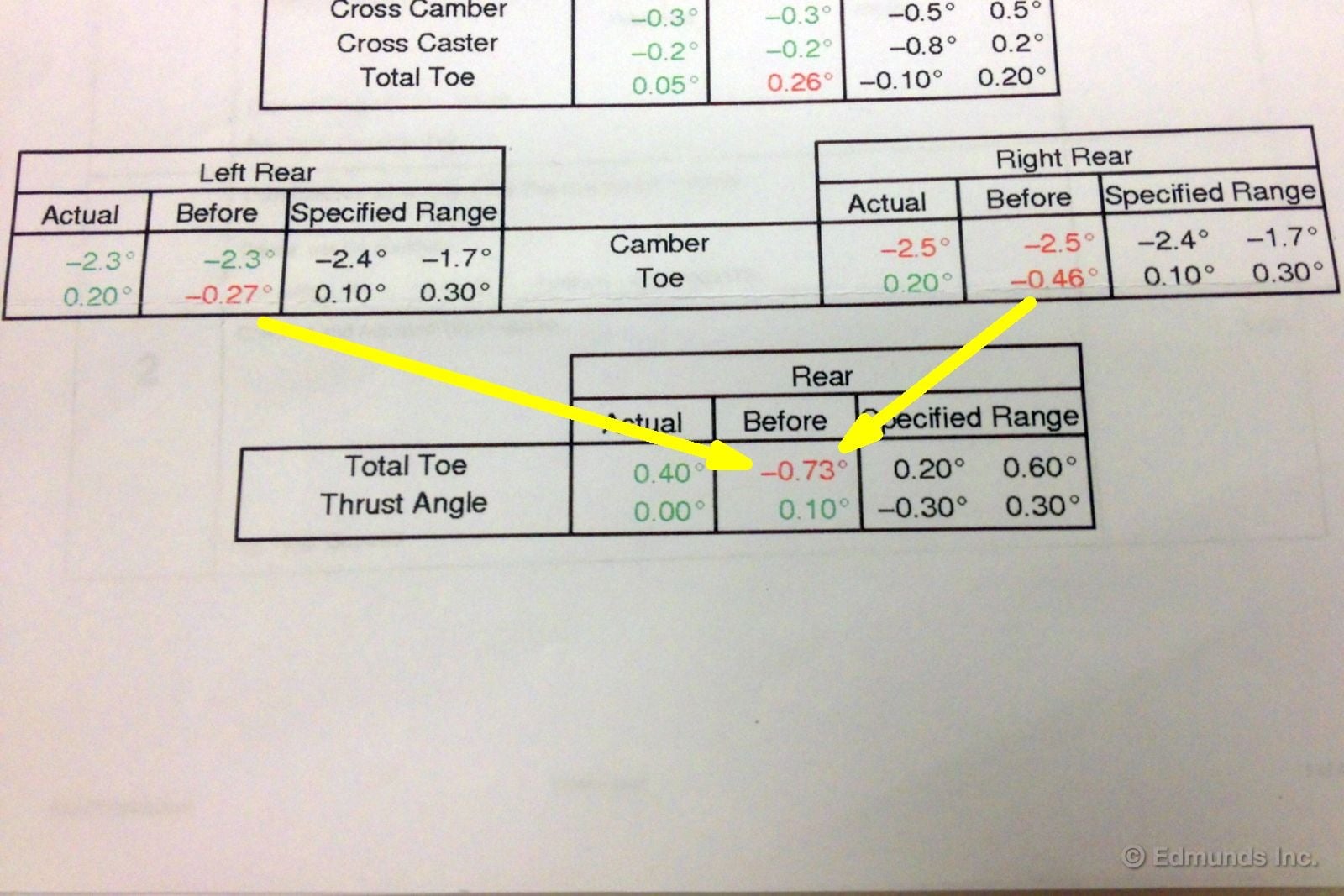
Check out the rear toe-in instead. Each side is supposed to be toed-in (angled in at the front — toes in, heels out — when viewed from overhead) anywhere between 0.1 and 0.3 degrees, which makes 0.2 degrees the dead center of the tolerance band. Across both tires, that's a range of 0.2 to 0.6 degrees, with 0.4 degrees being the target you'd shoot for if you were the alignment tech.
But I'm used to measuring and setting toe-in at the racetrack in inches, not degrees. And inches are easier to visualize. So here's a conversion.
Our P245/35R21 tires have a diameter of about 27.8 inches. Across this span, trigonometry says that 0.4 degrees of toe-in is equivalent to 0.19 inches. In tape measure units that's 3/16ths of an inch.
That sounds about right. That's about what I'd have guessed if you'd forced me to invent a rear toe specification at gunpoint.
The Tesla technician told John that the rear toe was the problem, and he was not kidding. Our Tesla's wheels were toed-out instead of toed-in, and not just a little. The left rear was toed-out 0.27 degrees and the right rear was toed-out a whopping 0.46 degrees.
That's 0.73 degrees or almost 3/8ths of an inch of total toe-out. Compared to the toe-in specification, the difference is greater than a half-inch.
This is massive. This is our pencil sharpener for tires. Our wide, low-profile Continentals didn't stand a chance, and no amount of rotation would have prevented it, especially if the alignment went out after the rotation was performed.
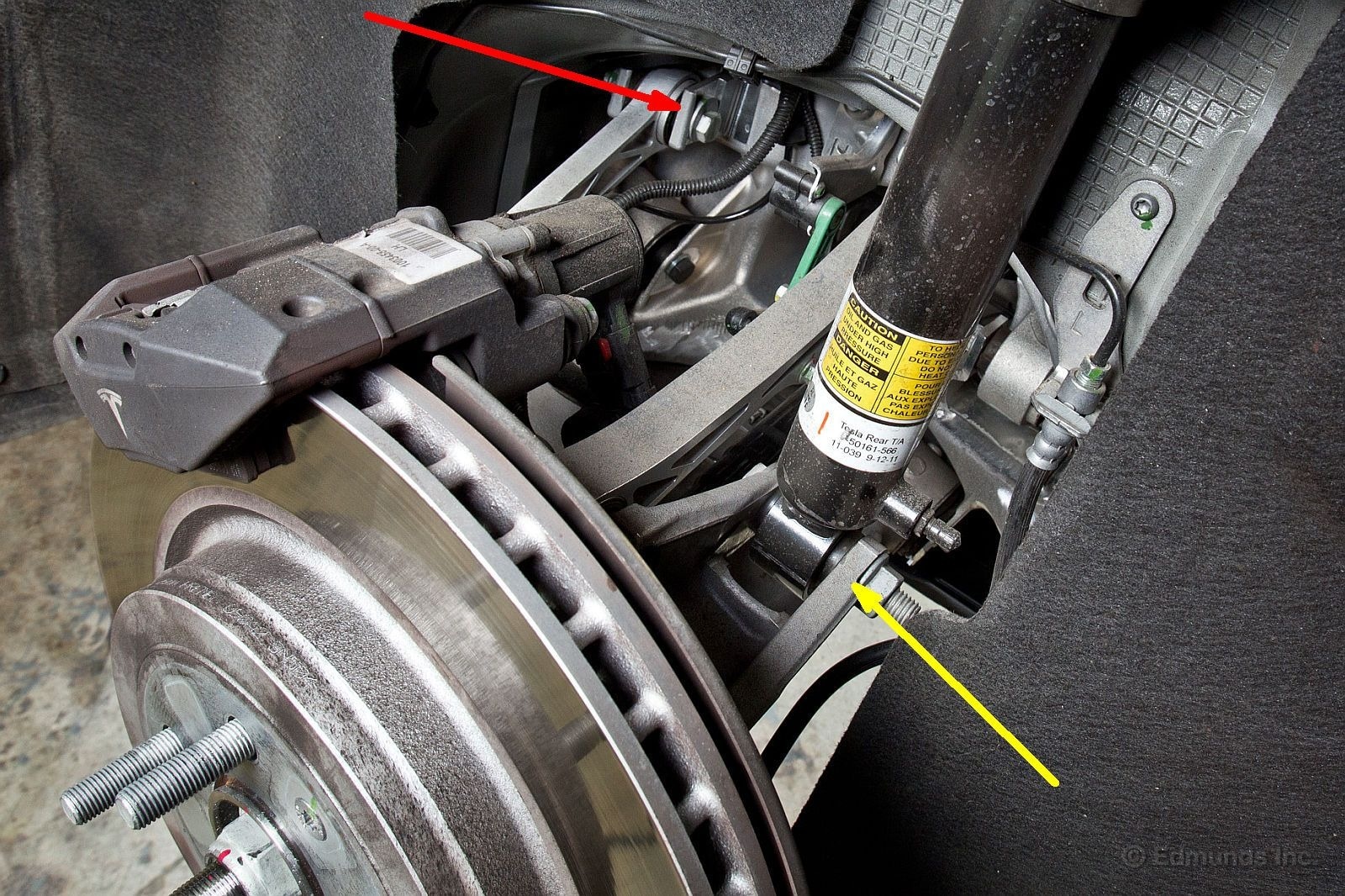
How did this happen? I'm still working on that. All I know for sure is the Model S uses an eccentric cam (red) for toe-in adjustment, as shown here in a photo from my 2012 Tesla Model S Suspension Walkaround.
Maybe the nuts weren't tight enough and the cams slipped. Maybe each got a good whack and moved. Or perhaps this bolted joint isn't robust enough to deal with the immense electric motor torque and the rigors of regenerative braking feeding back through in the reverse direction.
Whatever the case, no one's thinking about getting their alignment checked when a car is this new. It's rare to see this sort of thing at such an early stage, and I find it interesting that both sides were affected to a similar extent.
Maybe that's why Tesla replaced these tires on a "goodwill" basis. Why John has found other mentions of this kind of wear when poking around chat rooms. Why a co-worker's dad, a Model S owner, discovered similar unusual wear on his car after we showed him these pictures.
For my part, I'm going to apply paint pen witness marks to the eccentric cams to see if they slip again. And I'll do a quick string-check of the rear toe-in every couple thousand miles to see if I can see signs of any creep there, too.
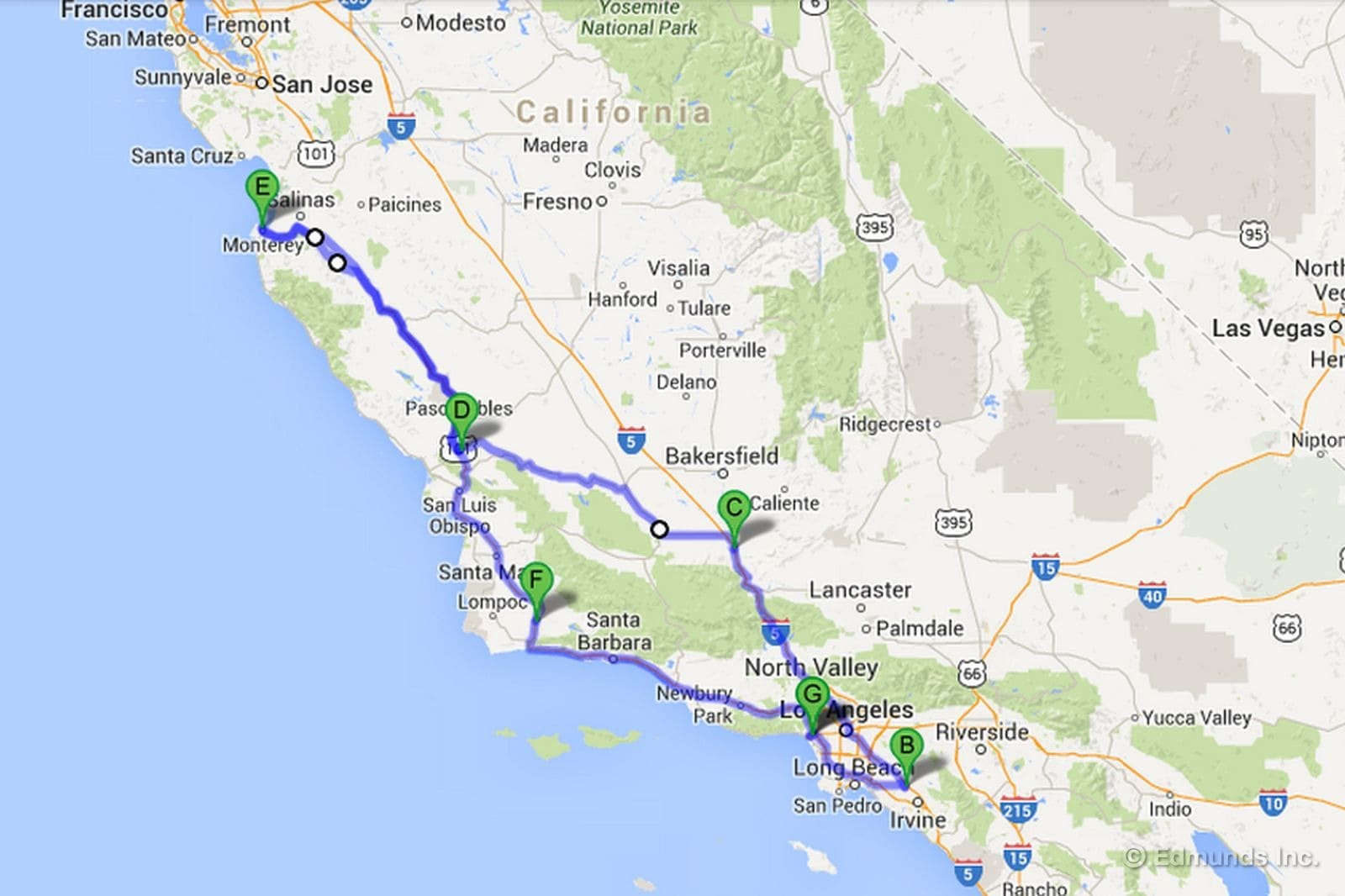
A couple of weekends ago my wife and I dashed out of town to watch the Grand Am races at Mazda Raceway Laguna Seca. And we drove up and back in our 2013 Tesla Model S, the only pure electric vehicle on the market that can make the 750-mile round trip in anything approaching a normal time scale.
Best part: Fuel for the trip cost us exactly zero dollars and zero cents.
Tesla Superchargers at Tejon Ranch and Atascadero got us up there, and the one in Buellton got us home. In between, overnight charges on our hotels' free Level 2 charger kept the Model S topped up for our daily runs to the track.
Here's how it went on the trip north.
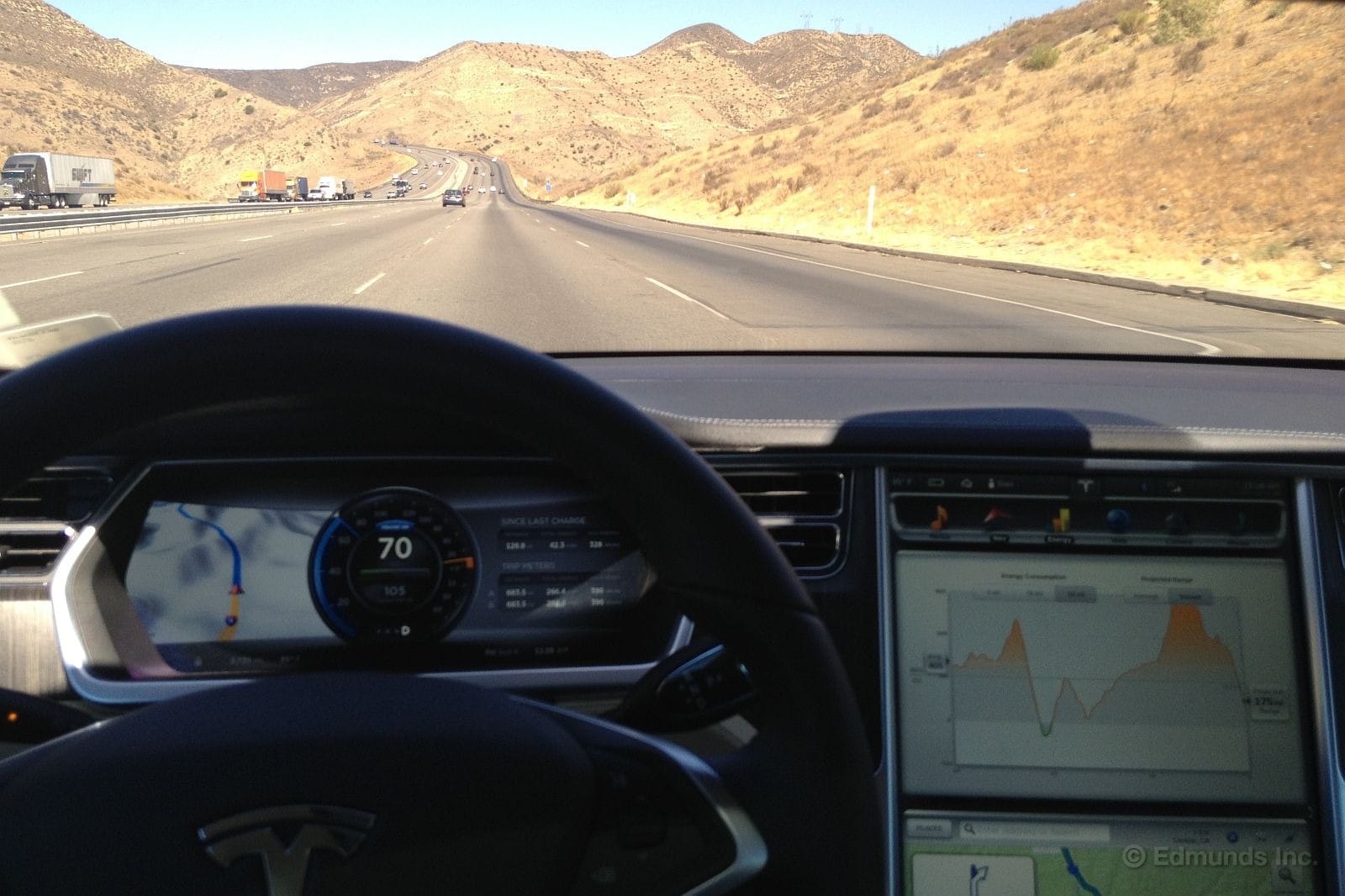
The green flag dropped at the office in Santa Monica with a full battery in extended range mode. The DTE meter (distance to empty) read 261 miles. But before I could head north on Interstate 5 I had to drive 50 miles south to my home in Santa Ana to gather up my wife and our luggage. Including this significant detour, the total distance to the Supercharger was 162 miles. With 100 miles in reserve there would be no range anxiety, no need to drive like a grandma.
Still, anyone who's ever left the LA basin knows there's a 4,144-foot mountain pass to climb over before you get California's great Central Valley and the Laval Rd exit where the Tejon Ranch supercharger is located. How would the Tesla's range be affected by an extended climb up the grade to the summit?
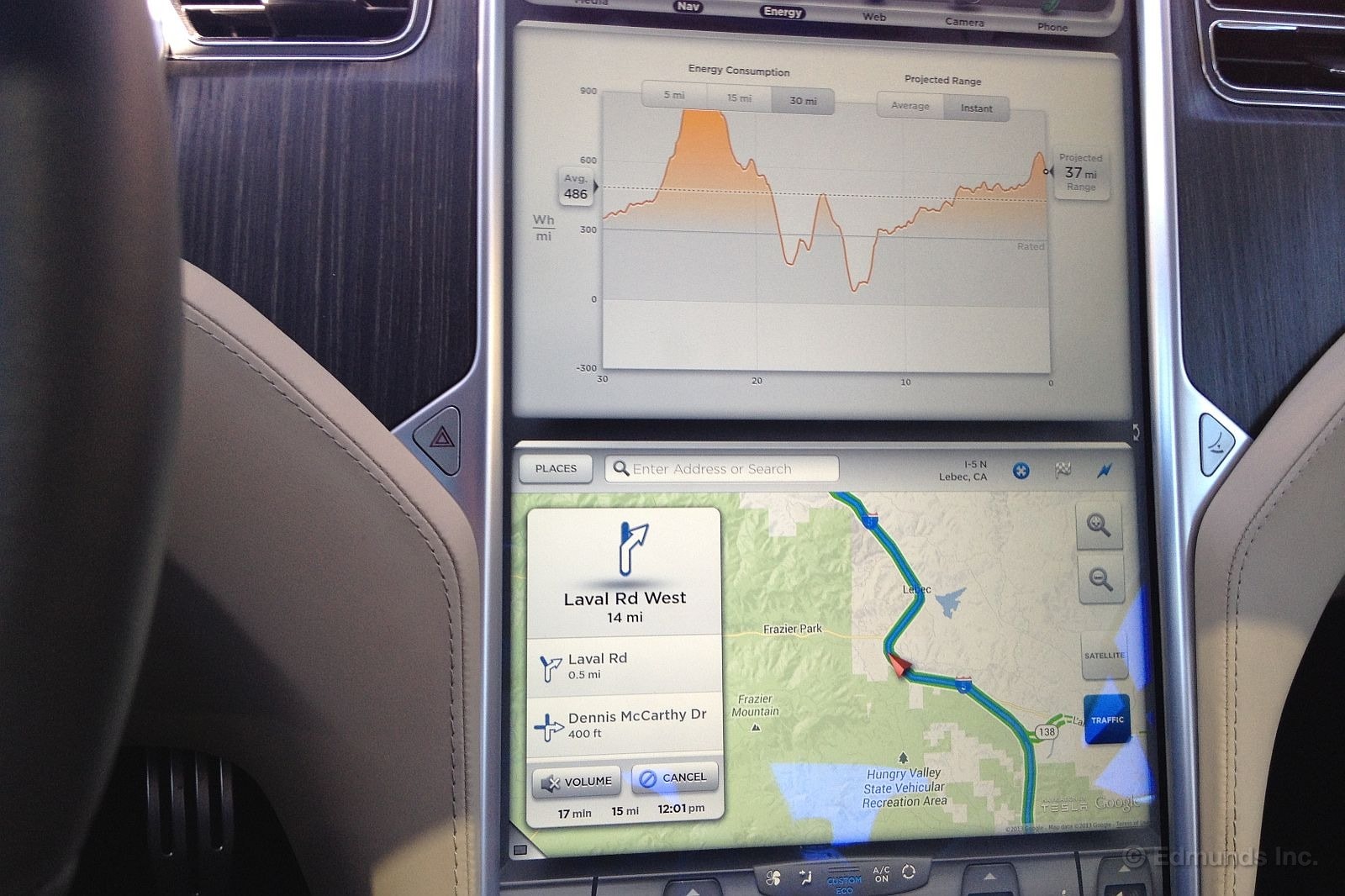
The first climb out of Castaic is the steepest, and it pegged the consumption meter, which can only display a maximum of 900 Watt-hours per mile. It's pretty clear we were draining the battery at a rate of over 1,000 Watt-hours per mile (1.0 kWh) for a period of some minutes during the ascent.
That initial push was followed by a couple of sets of rolling descents and false summits, which show up here as a series of waves. Eventually the climb resumed at a steady but somewhat more relaxed pace toward Gorman. The position of the arrow on the right side of the graph corresponds to the 4,144-foot Tejon Pass summit we crested just before this photo was taken.
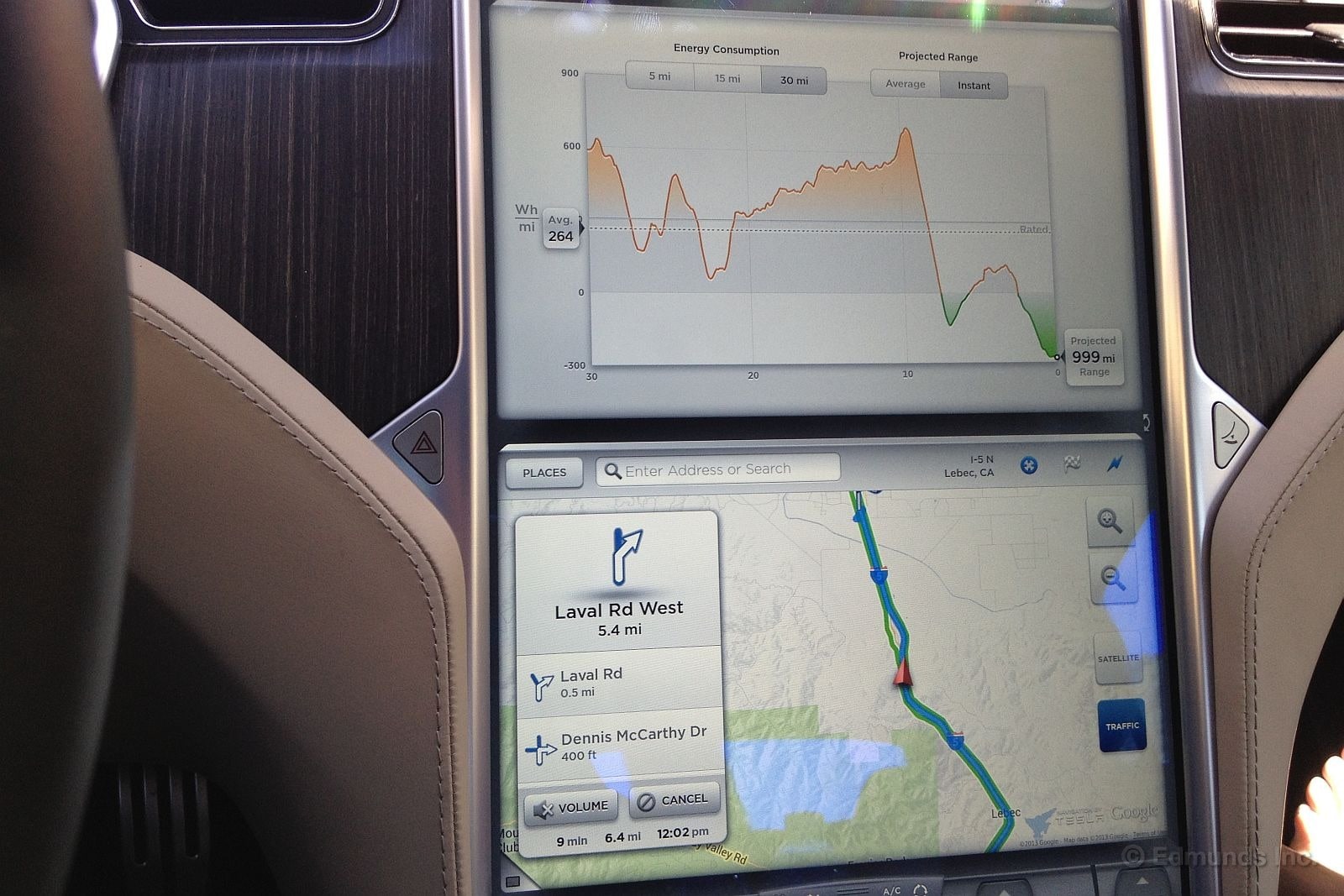
Once over the top, the road (and the graph) plummeted as we passed Fort Tejon and descended into the valley through Grapevine Canyon. There's no such thing as perpetual motion, of course, so the most the Tesla could regenerate on the downslope was 300 Watt-hours per mile (0.3 kWh).
Even so, the alarming drop in DTE miles we saw on the upslope reversed itself here as a handful of miles reappeared as the regenerative braking system kept the Tesla from running rampant down the hill.
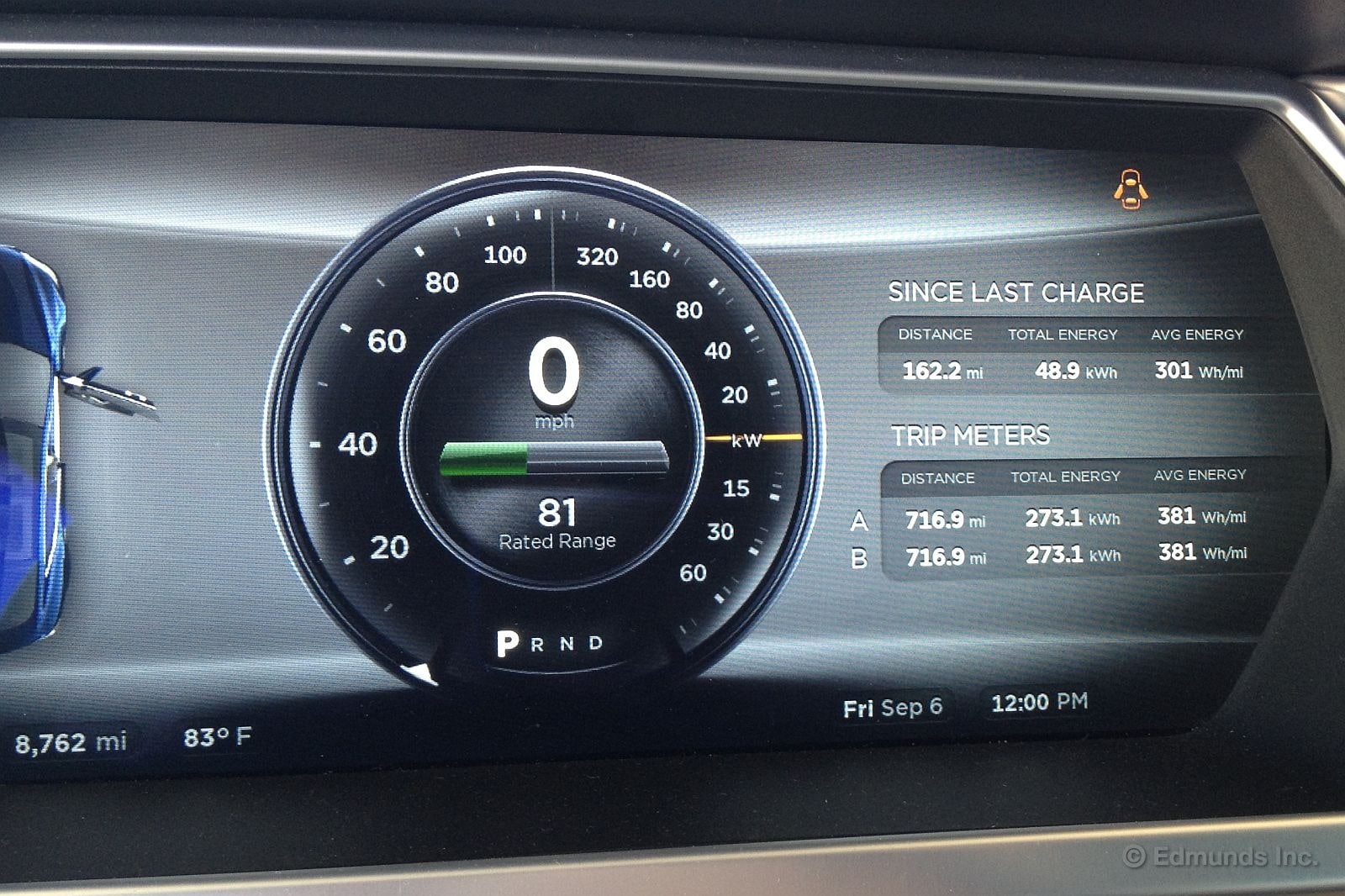
At the Supercharger, our dashboard told the tale. We'd travelled 162.2 miles and had 81 left in the tank, which works out to 243.2 total miles. Compared to the 261 miles we started with, we'd missed the predicted range by only 17.8 miles or 6.8 percent.
That's not bad considering the grade we'd just come over. And we'd been running the A/C the whole time, too.
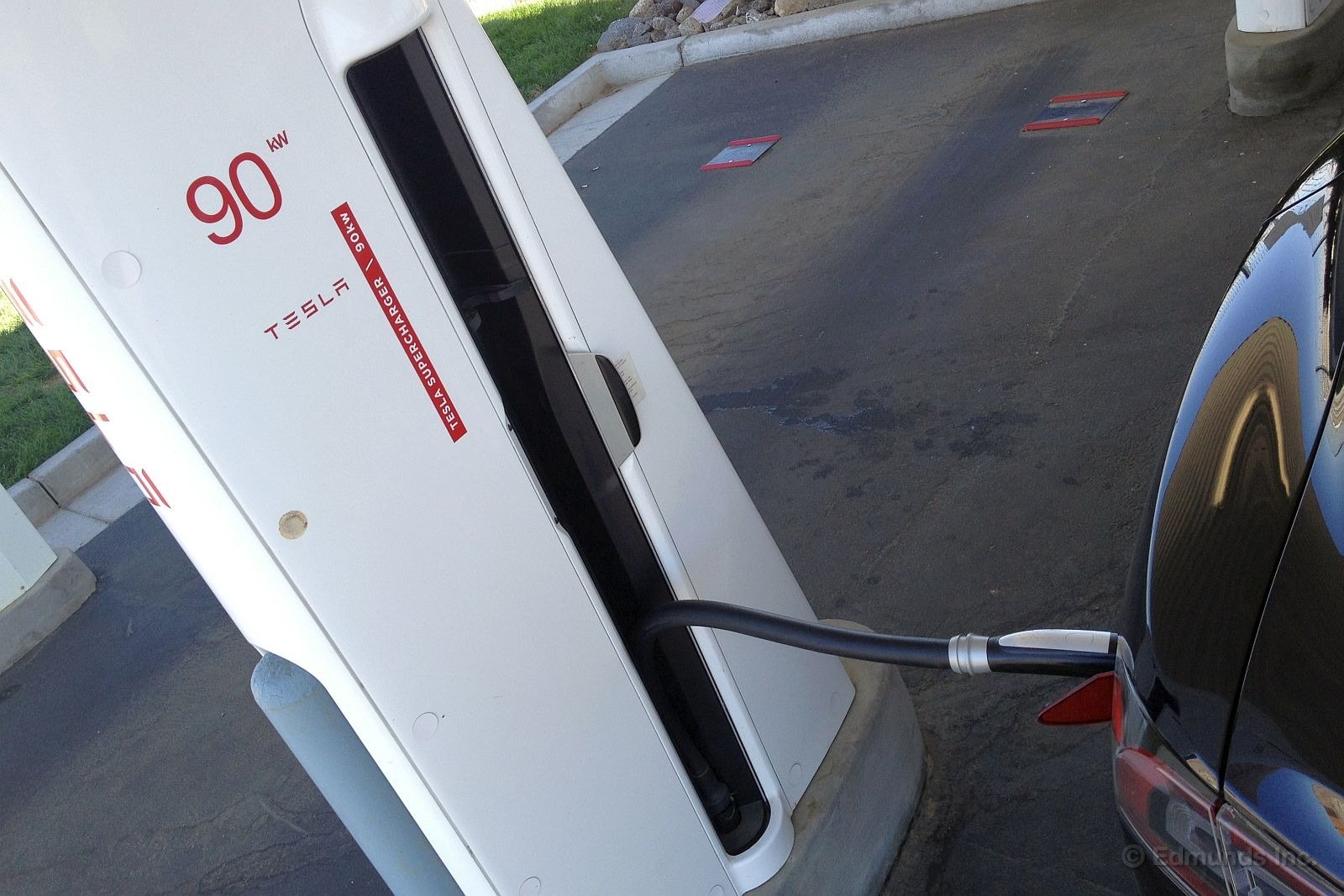
The six-space Supercharger was empty except for a Department of Water and Power employee parked in the shade of the solar array in a Ford van, eating her lunch.
We plugged in and walked across the small parking lot to the Chipotle burrito place to get some food of our own. We could have eaten at the Panda Express next door or the Iron Skillet across the narrow side street. A five-minute walk would have brought us to an In-n-Out Burger and a Del Taco. Point is, it's easy to multitask while your unattended Tesla sits there and charges.
Forty-two minutes later we walked back to a mostly-full Tesla, messed around with our luggage for five minutes, unplugged and headed on our way. The DTE meter now read 238 miles, which was plenty because our next Supercharger target in Atascadero was only 130-something miles ahead.
The surplus was enough to tempt us onto Highway 58, a sinuous stretch of two-lane that attracts more crotch-rockets than Corollas. The Tesla did not disappoint, and the instant torque of its electric motor made it ridiculously easy to overtake in 58's frustratingly short passing zones.

The Atascadero Supercharger is brand new, and it has 8 spaces. Two other Model S sedans were already there when we arrived at 3:15 pm with 73 miles left, so we picked an open spot, plugged in and hopped out.
We normally don't gravitate toward Denny's, but my wife had her eye on a Chocolate Sundae and it's hard to screw up one of those. And in the 99-degree heat the Big D had the advantage of being 100 feet from our parking spot. Several other restaurants stood across the street had we been craving something else.
Our hotel was but 127 miles away, and the route ahead was fairly unexciting freeway. So we paid the bill as soon as we were done, walked outside and unplugged, not caring that the range meter read just 206 miles.
Once on Highway 101 we put the hammer down, which is another way of saying we cruised in the fast lane with the flow of traffic. So far this was feeling like a perfectly normal trip. We'd have stopped twice in a gasoline-powered car, and for about the same length of time, too.
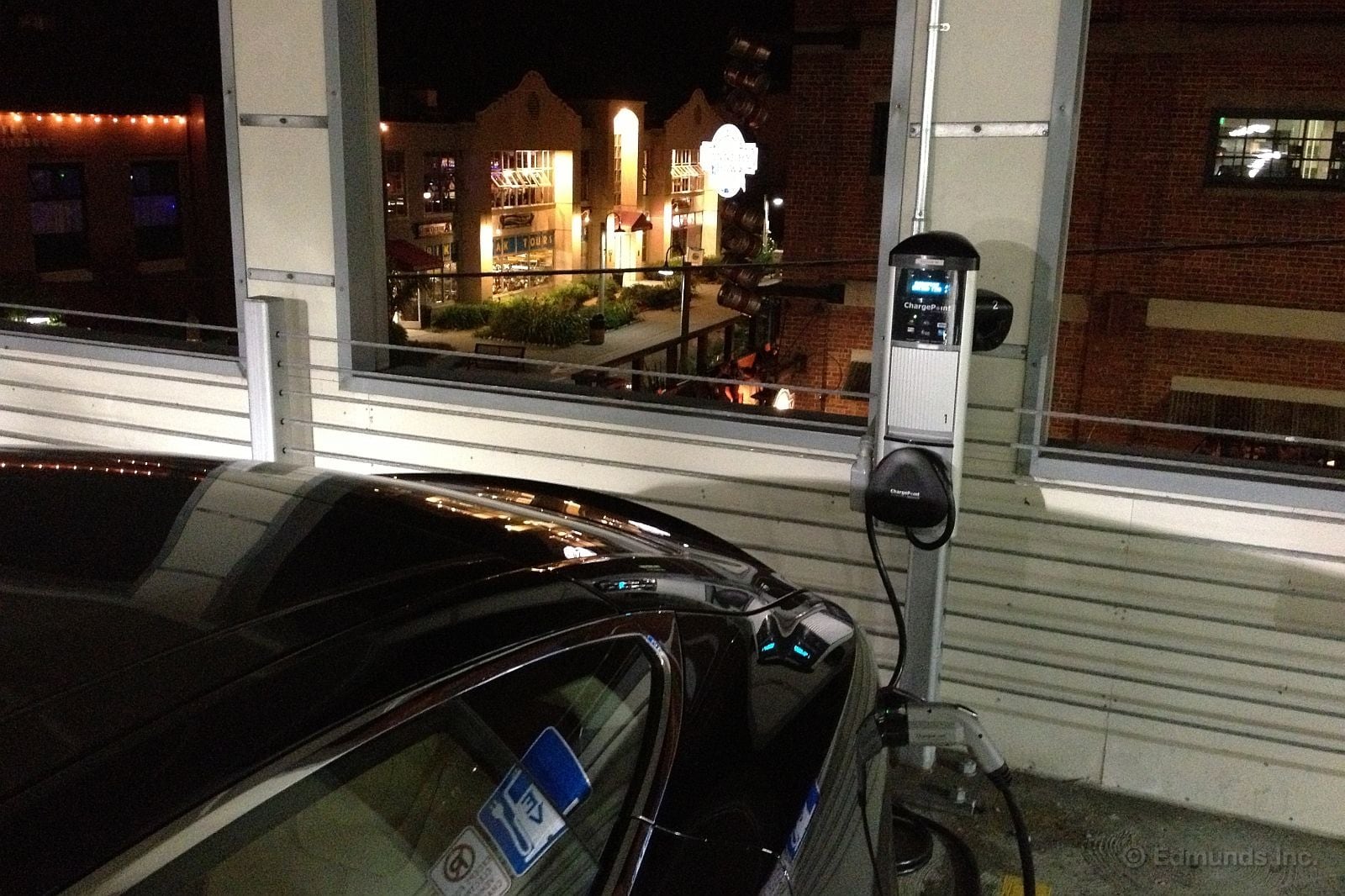
A couple hours later we rolled into the hotel's bag-drop with 43 miles left on the DTE meter. There is no Supercharger in Monterey, so the key that made this trip work was a 240V Level 2 charger in our hotel's parking structure. Better still, the Clement Intercontinental doesn't charge for the juice, just the parking, which we would have paid for just the same in any other car.
The slower Level 2 recharging time (about 11 hours with 43 miles left) wasn't an issue since we were putting this car to bed overnight. We'd have a full battery each morning on the way to the racetrack and, most importantly, for the first leg of the trip home.
How much did we use? What was our consumption in kWh/100 miles? Search me. Tesla's Superchargers don't display the number of kWh dispensed. And I suppose it doesn't matter in cases like this when no one's charging for charging.
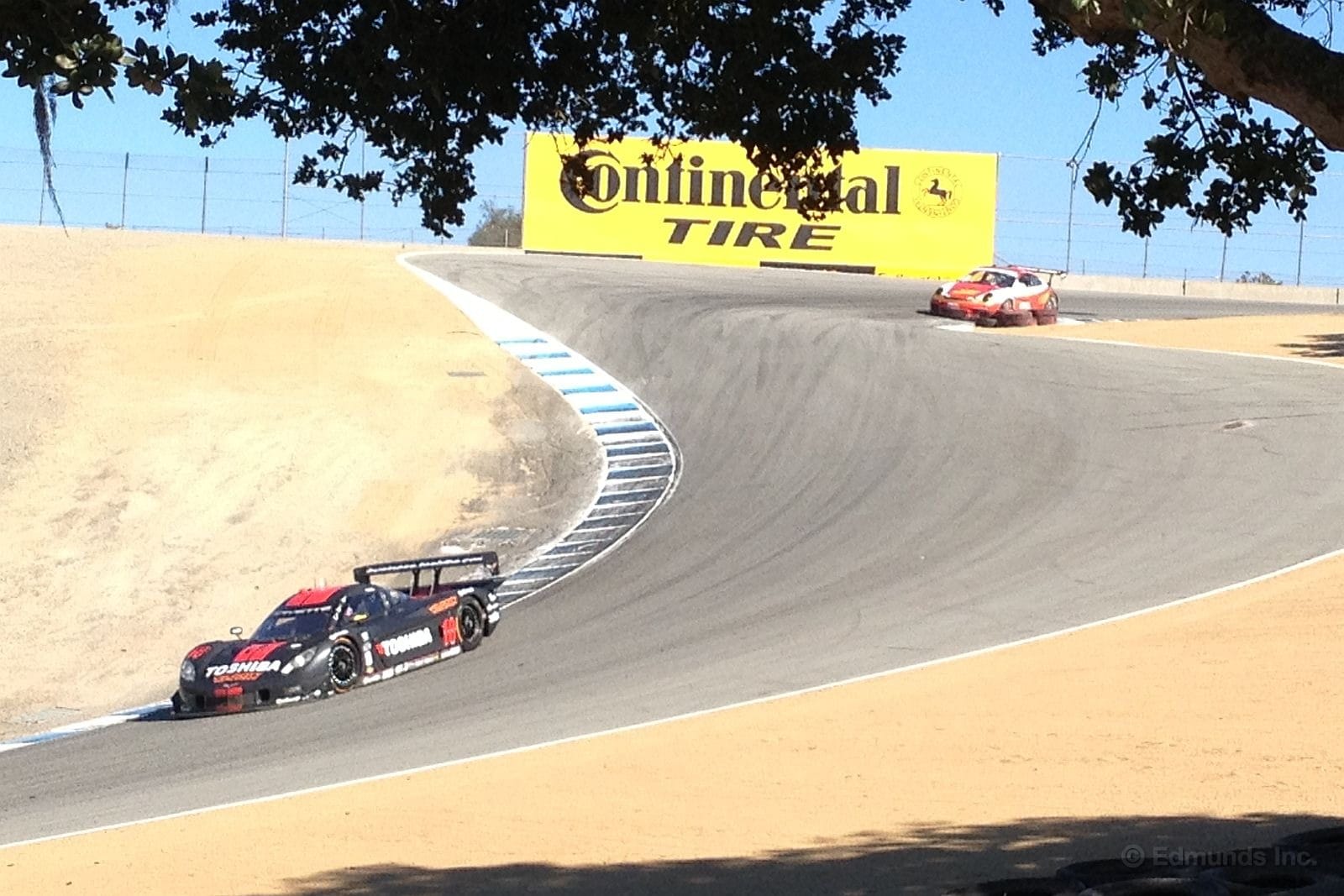
The reason Tracy and I went to Mazda Raceway Laguna Seca was simple: We had tickets to the Grand Am race weekend. It's a great event. The racing is excellent and the crowds aren't nearly as intense as they are on a MotoGP weekend. It's easier to get around in town on Cannery Row, too.
Our hotel's Level 2 charger was a decided advantage, a necessity in fact. We needed the extra juice to make it to the track each day. And we needed to replace some of the miles we used getting to the track so we could get far enough down the road to reach the Supercharger network.
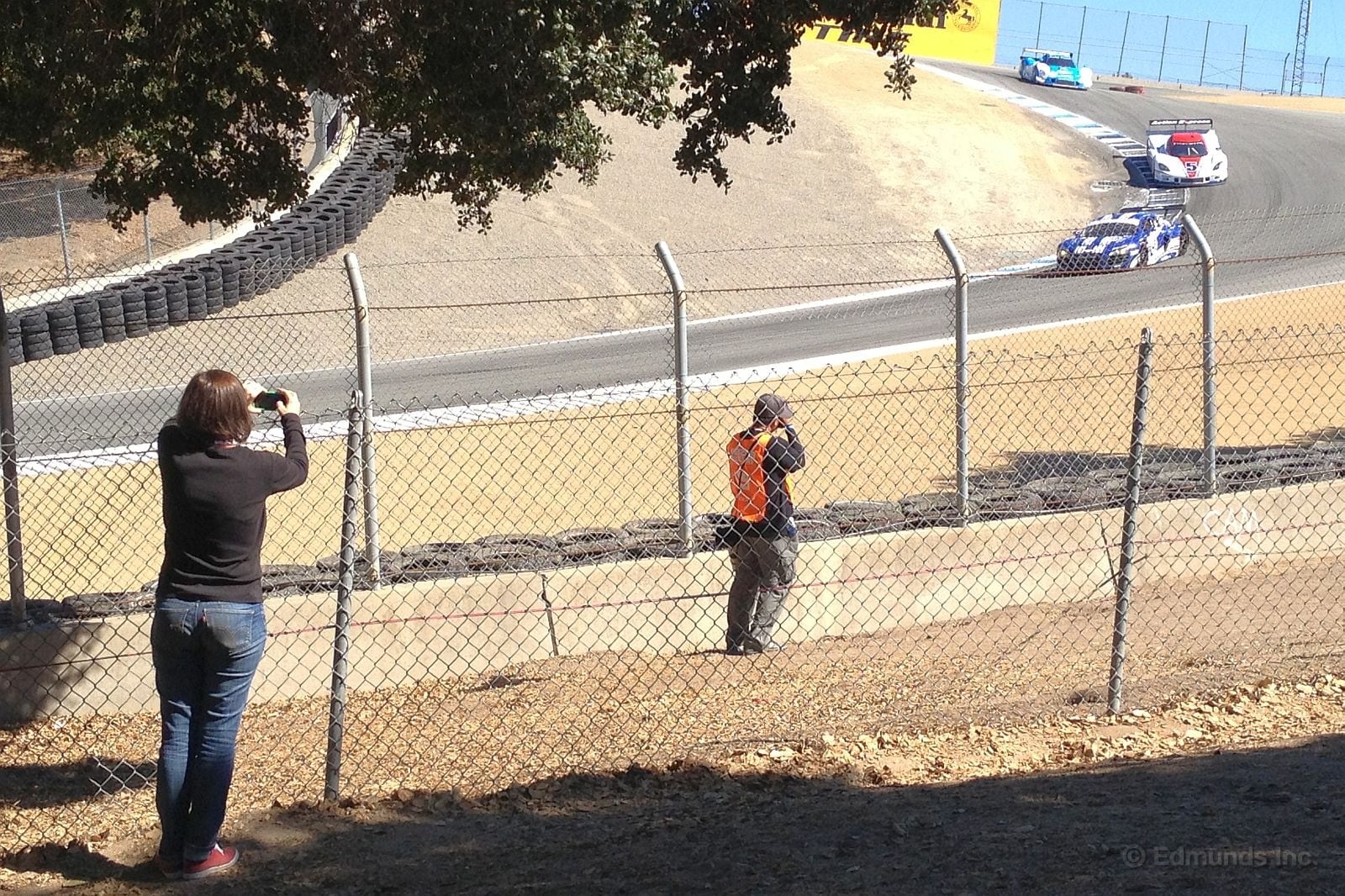
Each round trip to the track was 23 miles, and we made that journey twice. The first night's full charge would have been enough to cover both track days and the first leg back to the Atascadero Supercharger with a couple dozen miles to spare. And we could have saved a couple dozen additional miles by leaving for home straight from the track on Sunday afternoon.
But we had a room Sunday night, so we were able to top up at the hotel one last time. We'd be heading out Monday morning with a full battery.

I'd put the Tesla back into extended range charge mode, so we awoke to find 261 miles of battery to work with.
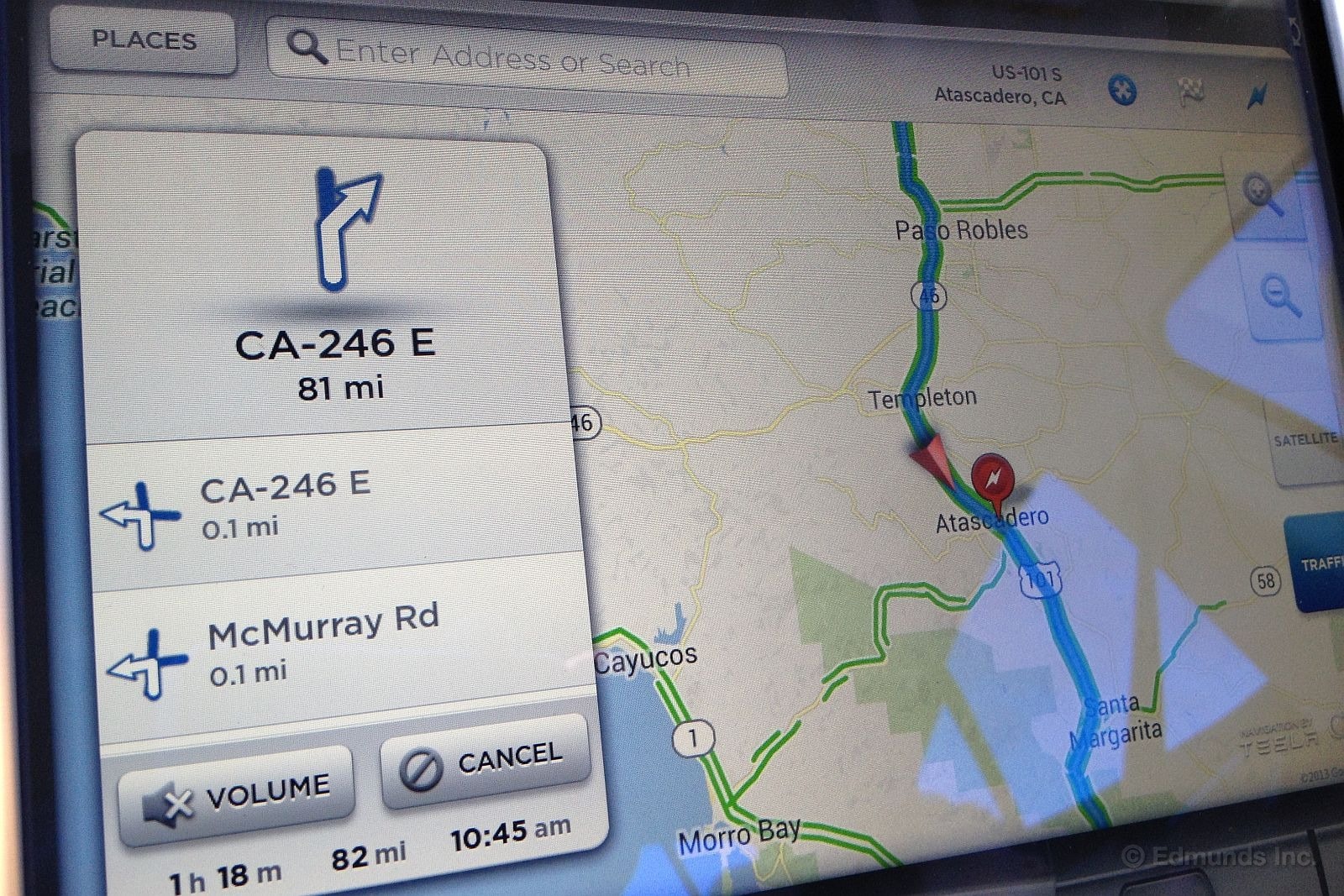
That meant we could do something unexpected. We drove past the Atascadero Supercharger and continued on to the next one in Buellton, which was 80 miles farther down Highway 101. It's nice to have options.

Buellton is another of Tesla's newest Supercharger stations. It's been open about a month and it's in the side parking lot of the Marriott hotel, which has a restaurant a few dozen steps away. There's a McDonald's and a movie theater right next door. The famous Pea Soup Andersen's is a half-mile walk on the other side of the freeway. We ate at the Marriott's cafe.
From this point we knew this was going to be a one-stop return trip. My car was in Santa Monica, my original starting point. We were only 134 miles from the end as far as the Model S was concerned.
For me, the exciting part of this trip was that it wasn't exciting at all. Except for the need to secure a hotel with an EV charger, the electric car issues people usually imagine were simply nonexistent thanks to the availability of Superchargers. We pretty much drove the Tesla Model S like any other car, and our stops were about as numerous and as time-consuming as they would have been otherwise.
In fact, our stops were even more relaxing. The typical roadside break is a two-parter: gas, then food. The temptation to drive through and eat on the road is great because you spent so much time at the pump. Here the plug and unplug task is little more than a footnote to the usual parking ritual. It doesn't really feel like you're stopping for fuel at all. Especially since Superchargers don't charge.
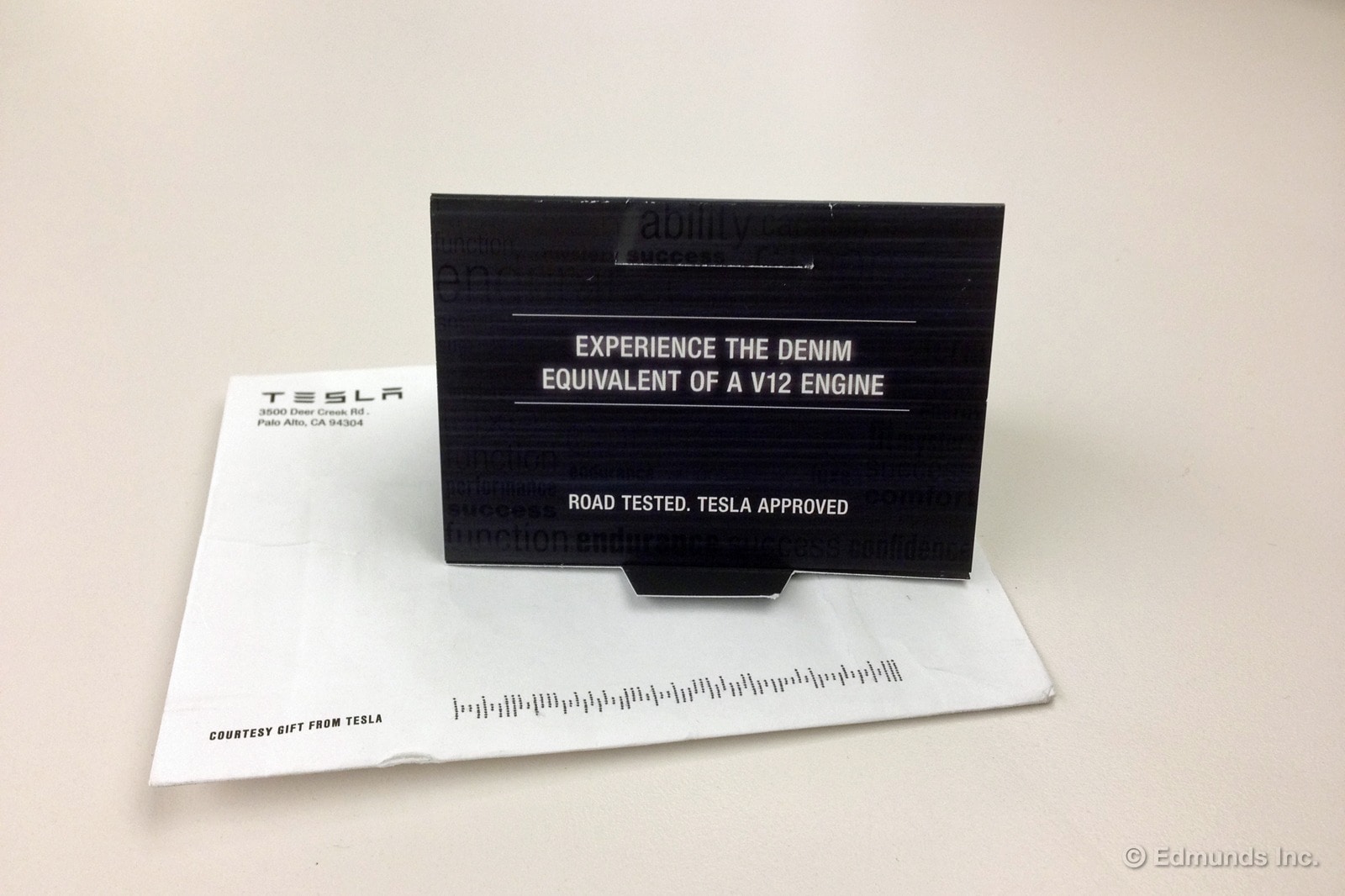
We received an unexpected gift from Tesla recently. It is a $100 discount card to buy 7 For All Mankind jeans. I wondered if this was meant to smooth things over after our tire incident, but there was no note attached.
You must spend $250 however, in order for the $100 discount to kick in. I hadn't heard of the brand, and I wondered how much one could get for $250. After a quick visit to the company Web site, I learned it's not very much.
As one of my more fashion-oriented colleagues pointed out, this is a designer brand. A pair of jeans advertised on the gift card was selling for $198. A men's button-down shirt went for about $150. Makes sense, I suppose. If you can drop a hundred large on a car, chances are, you don't have to shop at the Gap.
In any case, you won't see me sporting $200 jeans anytime soon. I gave the gift card to my editor in chief, as any ethical journalist would do. Mr. Oldham will then dispense the card as he sees fit.
Would you buy the jeans or re-gift it? I've already seen one person selling his card on eBay. Asking price was $10.
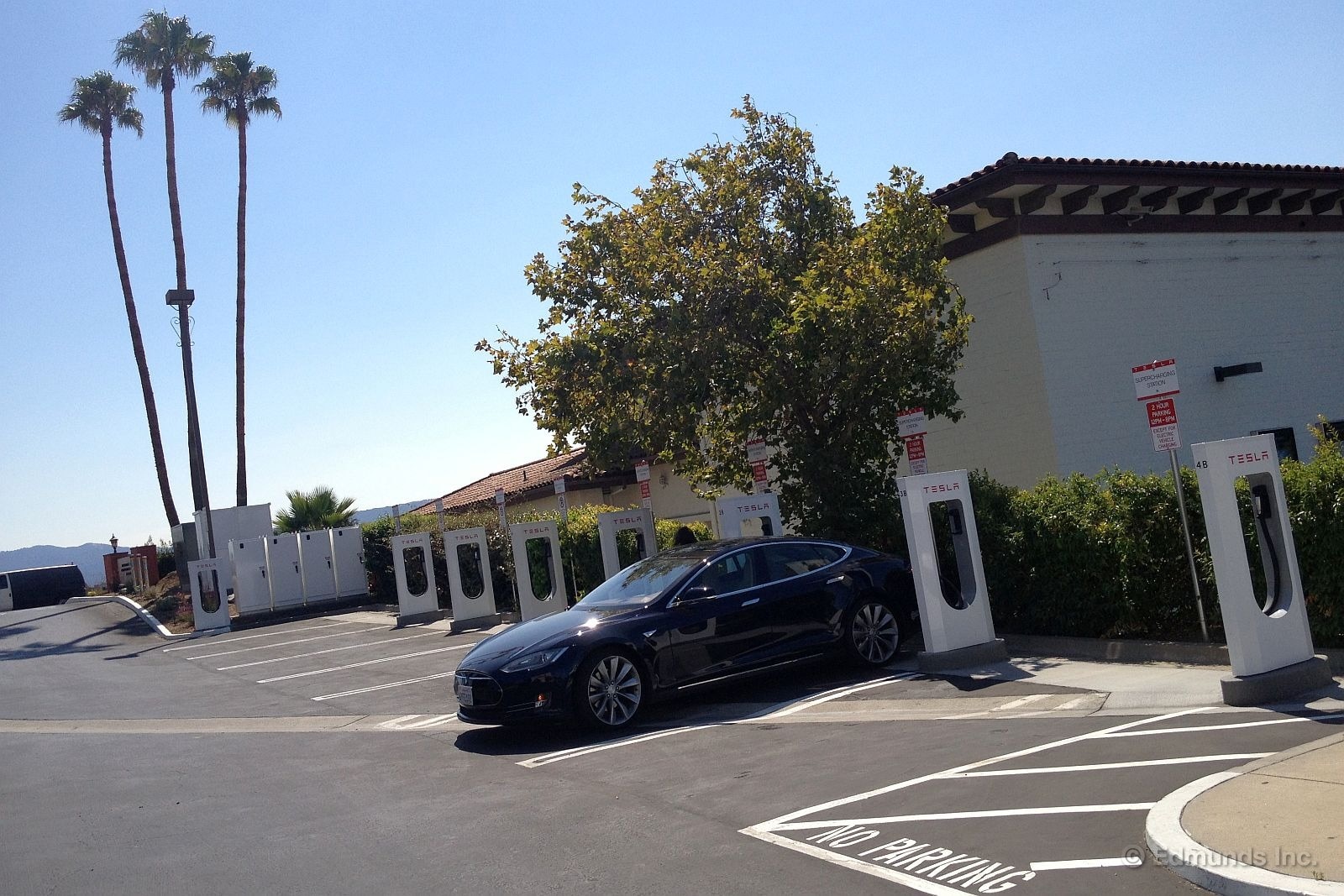
A couple of months ago I made a lame attempt to measure how quickly a Tesla Supercharger dumps electricity into a 2013 Tesla Model S battery. I was hoping to figure out how much downtime to expect on a long trip because I'm planning to take our Model S on my annual year-end holiday trip to Oregon as soon as the Supercharger network expands and connects the dots.
But my visit to the Hawthorne Supercharger at Tesla HQ was a spur of the moment decision. I hadn't really worked out a procedure before I arrived. And my results were inconclusive because of the comings and goings of other cars charging in adjacent spots.
Since then I've worked out a simple method, and a couple weeks ago I tried it on a short weekend trip to Monterey. The site was the new Supercharger in Buellton, California, and I was able to get clean data because no other Tesla vehicles were charging while our car was there.
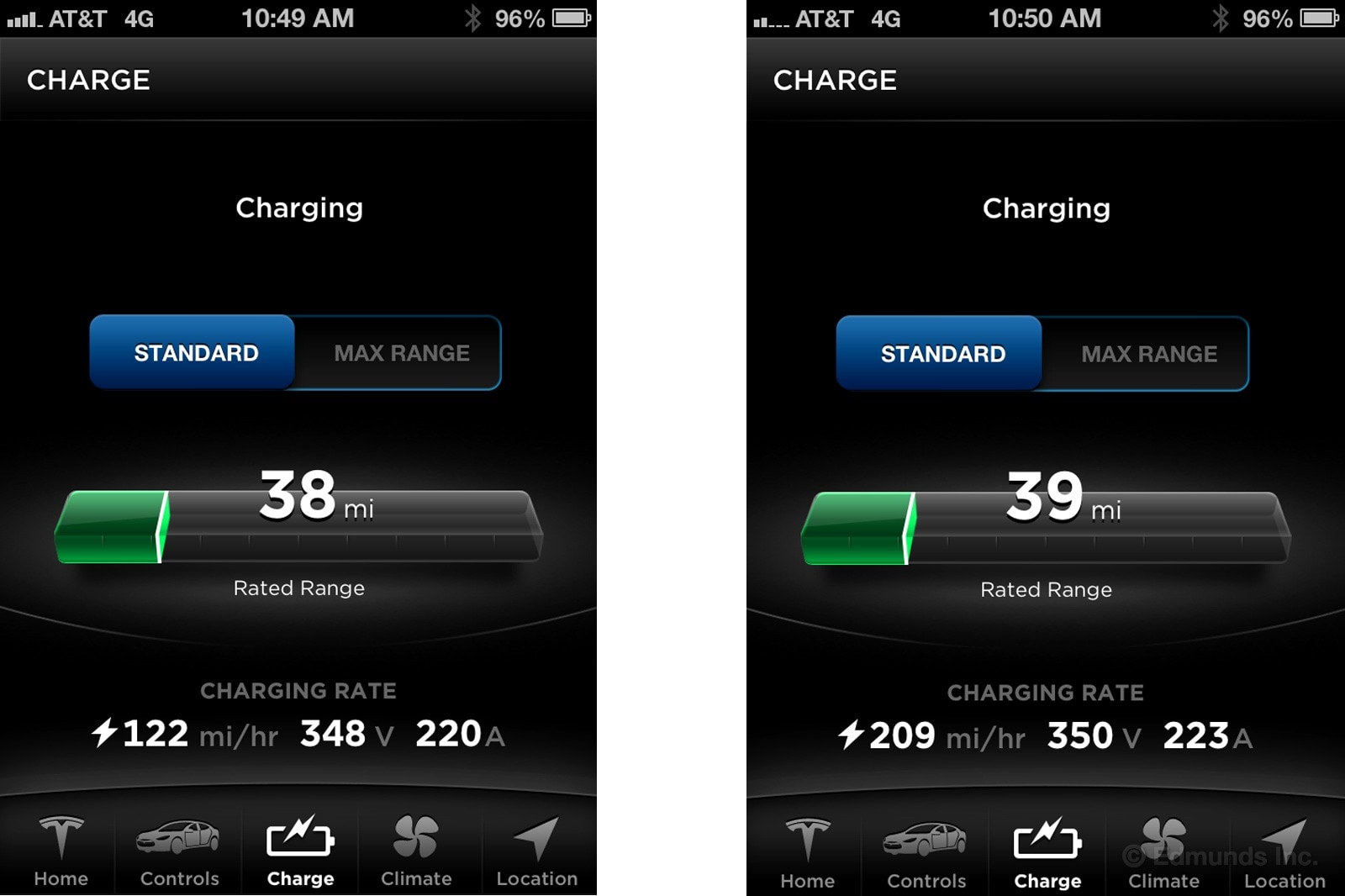
We arrived with 38 miles left on the range meter and promptly plugged the supercharger into the car. I immediately took an initial screen grab of the Tesla app with my iPhone then walked with my wife to a nearby restaurant.
From the comfort of our booth I took additional screen grabs every 5 minutes while we had a relaxing lunch. The app displays range, voltage and charging amps, everything I'd need for analysis later.
Charging commenced at 10:49 a.m. but I took another grab at 10:50 a.m. so it'd be easier to keep track of the 5-minute intervals. Besides, charging ramps up gently in the first minute or two, so an extra data point wouldn't hurt.
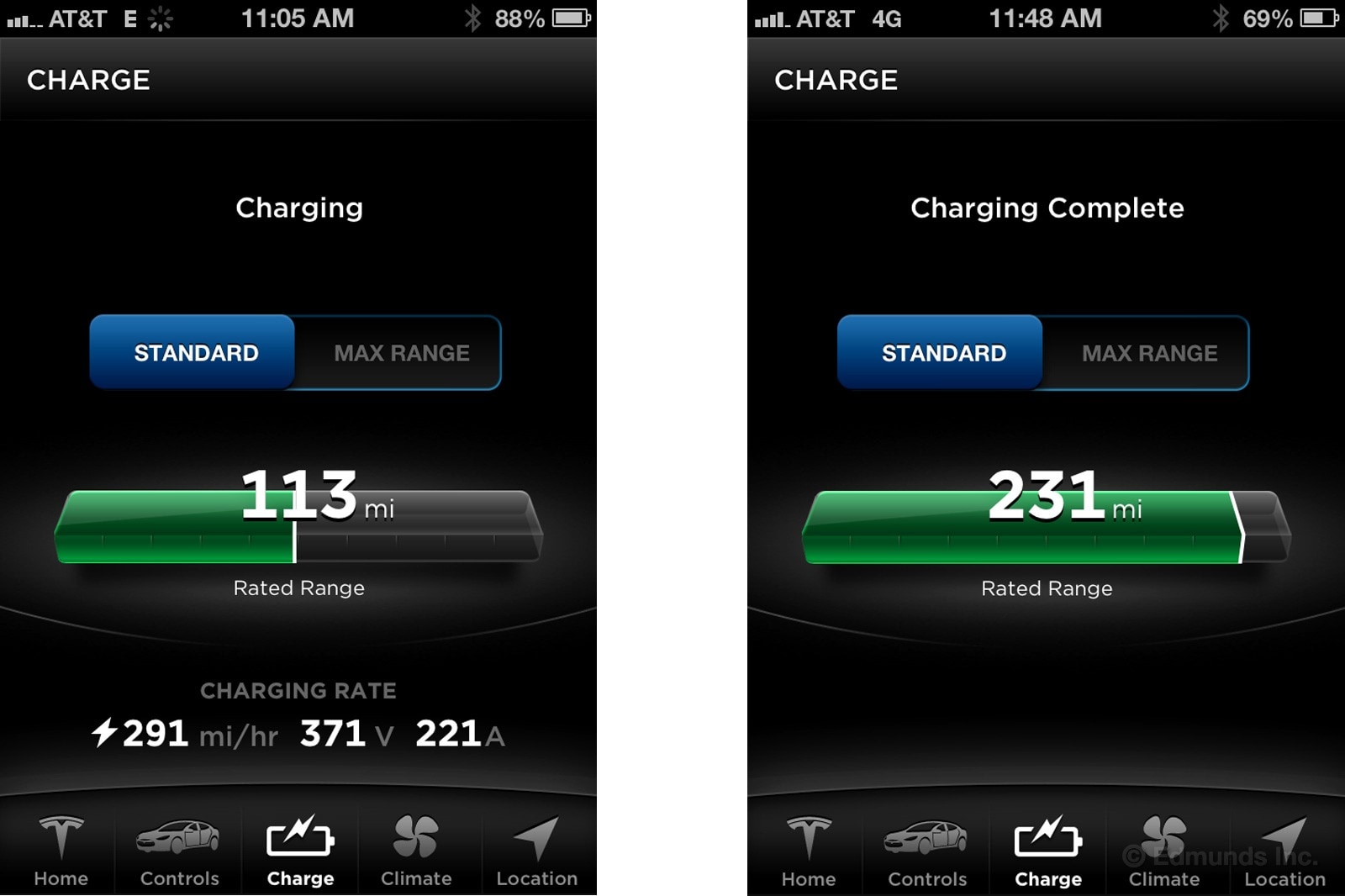
The app reports charging speed in "miles per hour" and its peak reported rate of 291 mph came at 11:00 and 11:05 a.m., exactly 11 and 16 minutes from the start, respectively.
But 291 mph turns out to be a little misleading. For one, it's an instantaneous figure that you can't use to predict when the battery will be full. This rate isn't sustainable for more than a few minutes. The charging rate starts off high and then tapers off.
I divided miles added by minutes passed and got 273 mph at 11:00 and 281 mph at 11:05. Theses cumulative numbers trail behind the instantaneous ones reported by the app because of the slow ramp-up in the first minute.
In the end, our Tesla battery reached a full charge (normal range mode) in 59 minutes, during which time 193 miles of range were added. That's an overall average charge rate of 196 miles per hour, and we pulled out of the parking lot with 231 miles on the range meter.

Here's what my data looks like graphed out. The x-axis is time in minutes and the y-axis represents many things. The 0-300 scale stands for charging rate in "miles added per hour waiting" if you're looking at the blue line, it's good-old driving range in miles when looking at the green line and it shows kilowatt-hours added per hour if you're looking at the red line.
Yes, I know that "kilowatt-hours per hour" is longhand for kilowatts. But the volume of an EV battery, its "gallons," if you will, is given in kilowatt-hours (kWh) and this exercise seeks to understand how much time it takes to refill the tank. Kilowatt-hours per hour seems like the best way to communicate what's going on here even though your math teacher would mark off points if you failed to simplify kWh/h to kW.
Our red line is the best one to follow if you want to see how a Supercharger interacts with the battery. As we saw on the app, the peak charging rate occurs about 10 minutes in, after which it rolls off. The max rate at the top of the curve is 89.9 kW, which makes perfect sense because the Buellton chargers have big "90 kW" stickers on them.
Tesla boasts of 120 kW chargers on their Supercharger Web page, but they must be a work in progress. I've visited five Supercharger locations, two of them open less than a month, and have yet to see a 120 kW unit. They'll undoubtedly be faster, but I expect the roll-off curve will look about the same, albeit hiked up by some 33 percent.
The "miles per hour" blue line is nothing more than Tesla's attempt to restate the red line in a less nerdy format. And it truly is a handy way to think about it. A Tesla Model S charges at 3 mph on 120V home current, 18 mph on our Level 2 Chargepoint back at work and something like 50 mph on our new Tesla HPWC. Yeah, this 90 kW Supercharger is fast, and the 120 kW ones will be even faster when they finally arrive.
For now, I'm assuming I'll have 90 kW Superchargers for my planned trip north to Oregon. If they're spaced 200 miles apart, I'll need to plan on one hour of downtime for every 3 hours of driving, which won't disappoint my wife and kids one bit.
I can cut that down to 40 minutes if the Superchargers are spaced closer together and take full advantage of the fact that the first two-thirds of the charge time delivers 80 percent of the juice. No use waiting for the bitter end if the slowest 20 percent of the charge isn't strictly necessary to get to the next Super-oasis.
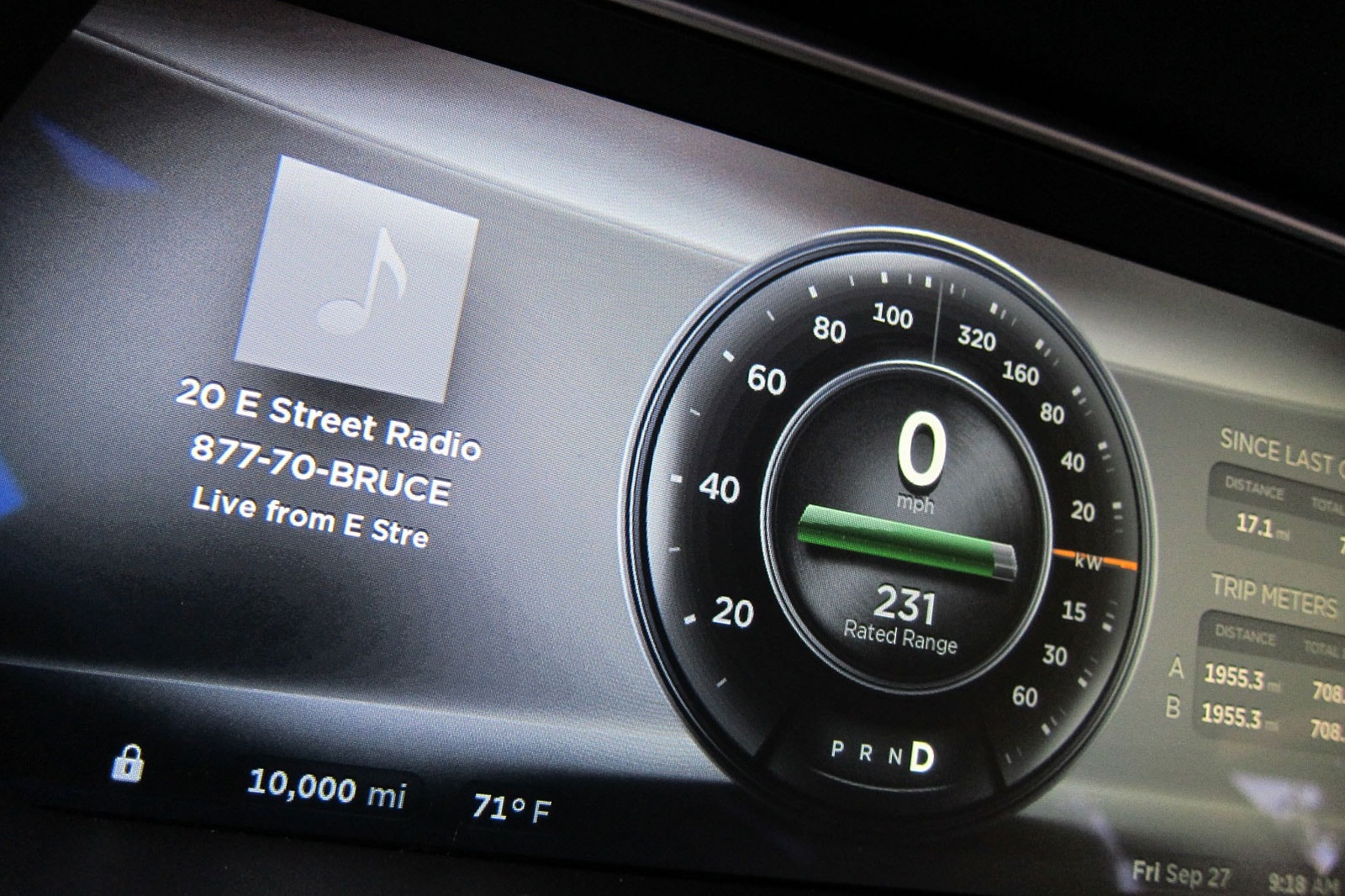
We took delivery of our 2013 Tesla Model S on February 19th. Seven months and seven days later we have driven the car over 10,000 miles.
There have been a few problems along the way. Problems with the car's interior screen as well as its sunroof and its accelerated tire wear, all of which we have documented. Also, our Tesla charger didn't exactly arrive on time. It was months behind the car in fact.
But there's no denying that we like driving this sedan. It continues to impress from behind the wheel, as well as the passenger seat.
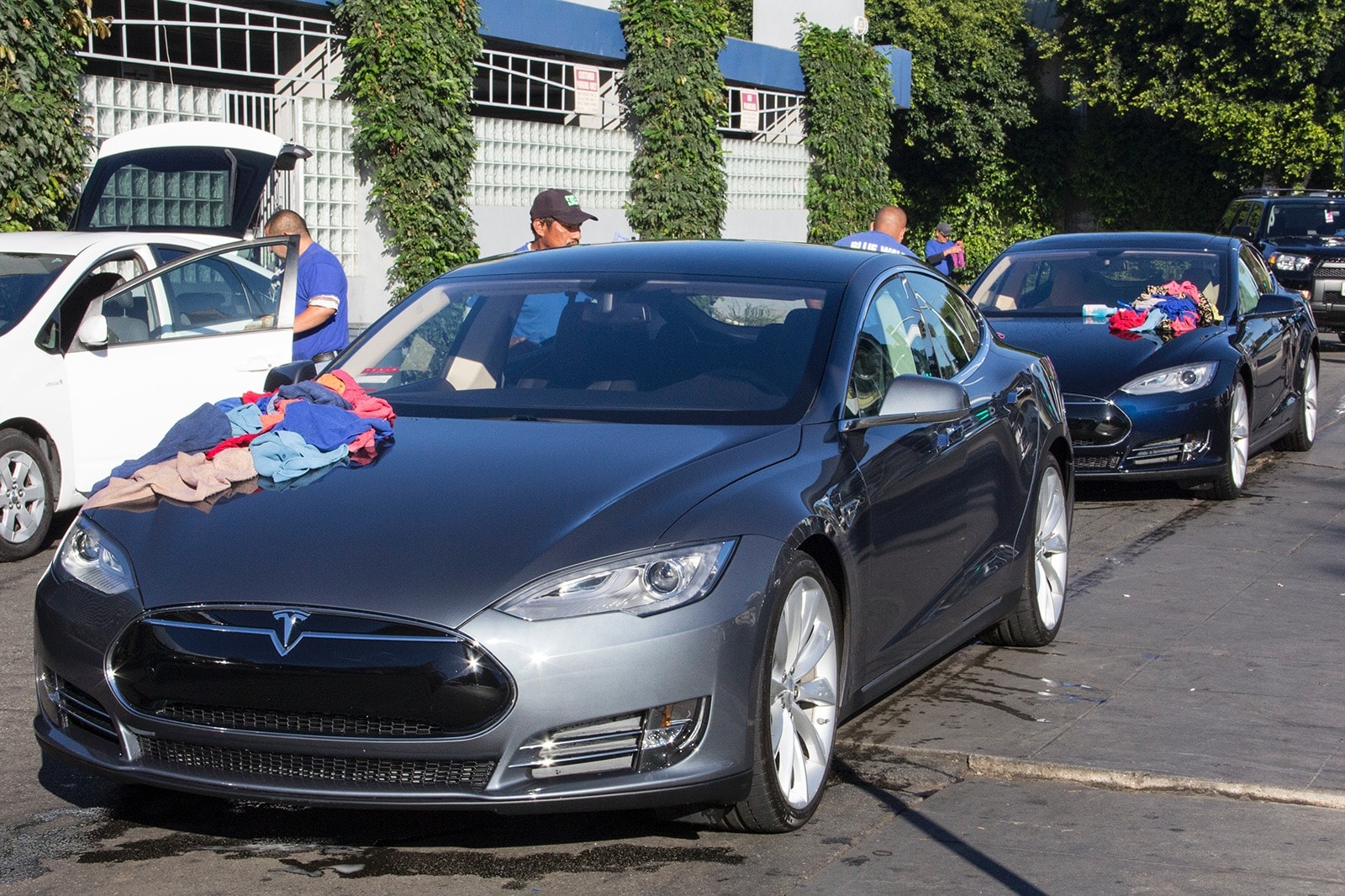
When I first saw our long-term 2013 Tesla Model S, I didn't pay much attention to the color. I liked the design, and that's what caught my attention.
Now that I've spent more time with our Tesla and seen this electric car all around L.A. in varying color combos (black-on-black with tinted windows is my favorite so far), I'm wondering what the best color combo would be. Would you get the Blue Metallic or opt for something else?
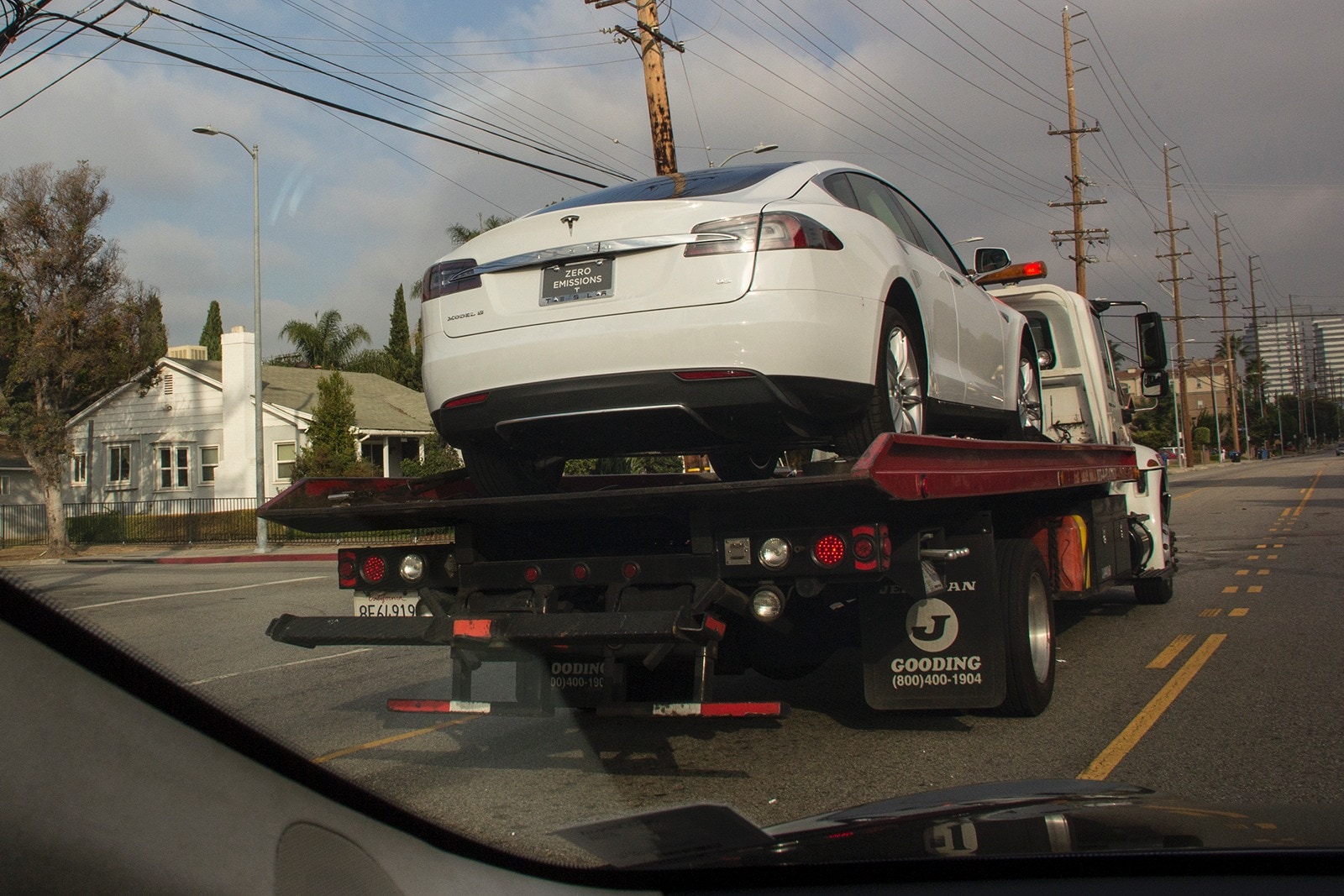
I used to drive our long-term 2013 Tesla Model S to work and feel different, unique and even kinda special. I used to wave when I saw another Tesla owner, and because there were so few Model S sedans on the road, I'd get a wave back. While the electric supercar sedan still gets plenty of attention, it definitely seems like less of an oddity lately.
Maybe it's the more frequent availability of supercharger stations in SoCal, or frequent locations with basic plug-in chargers. Maybe Californians just want the newest, hottest car on the market and that is driving sales, but I see Model S sedans around Los Angeles's West Side several times a day. I saw this one being delivered last week in Santa Monica, and three others on my scant five-mile commute.
In the second quarter of the 2013 fiscal year, the Tesla Model S outsold the BMW 7 Series, Mercedes-Benz S-Class and Porsche Panamera. In the month of June alone, it outsold all three, combined. The Model S is on its way to becoming downright common in this town. Do you think its success will spread, especially as Tesla expands its Supercharger network? How long before the Model S turns up in middle America?
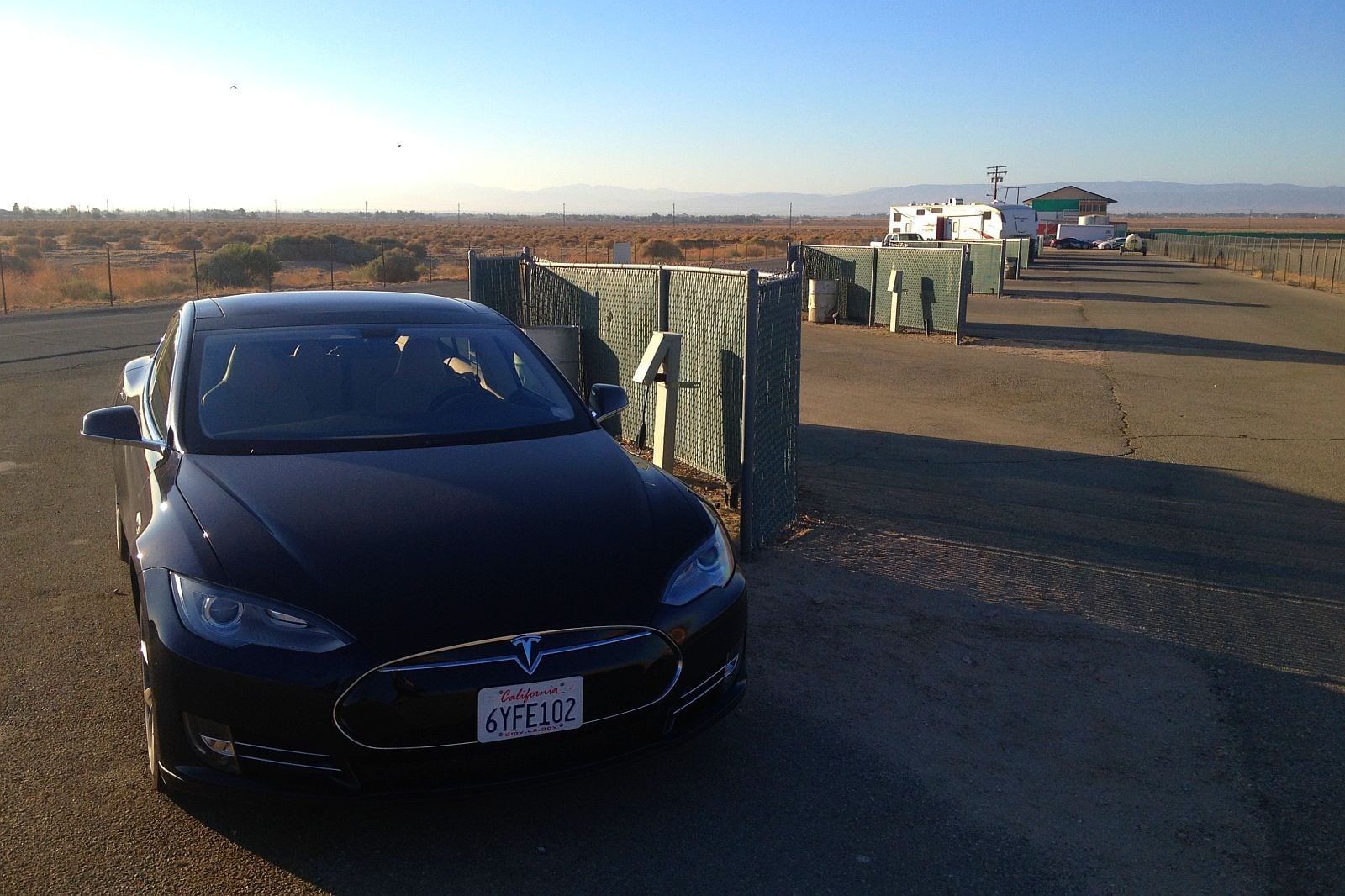
Our 2013 Tesla Model S can do many things other EVs can't, and you're looking at one of them. Here it's plugged in to the 240V shore power receptacle at an RV park in a space with full hookups. It's made to do this, which is another sign that Tesla is thinking way outside the box that defines other electric vehicles and their limited capabilities.
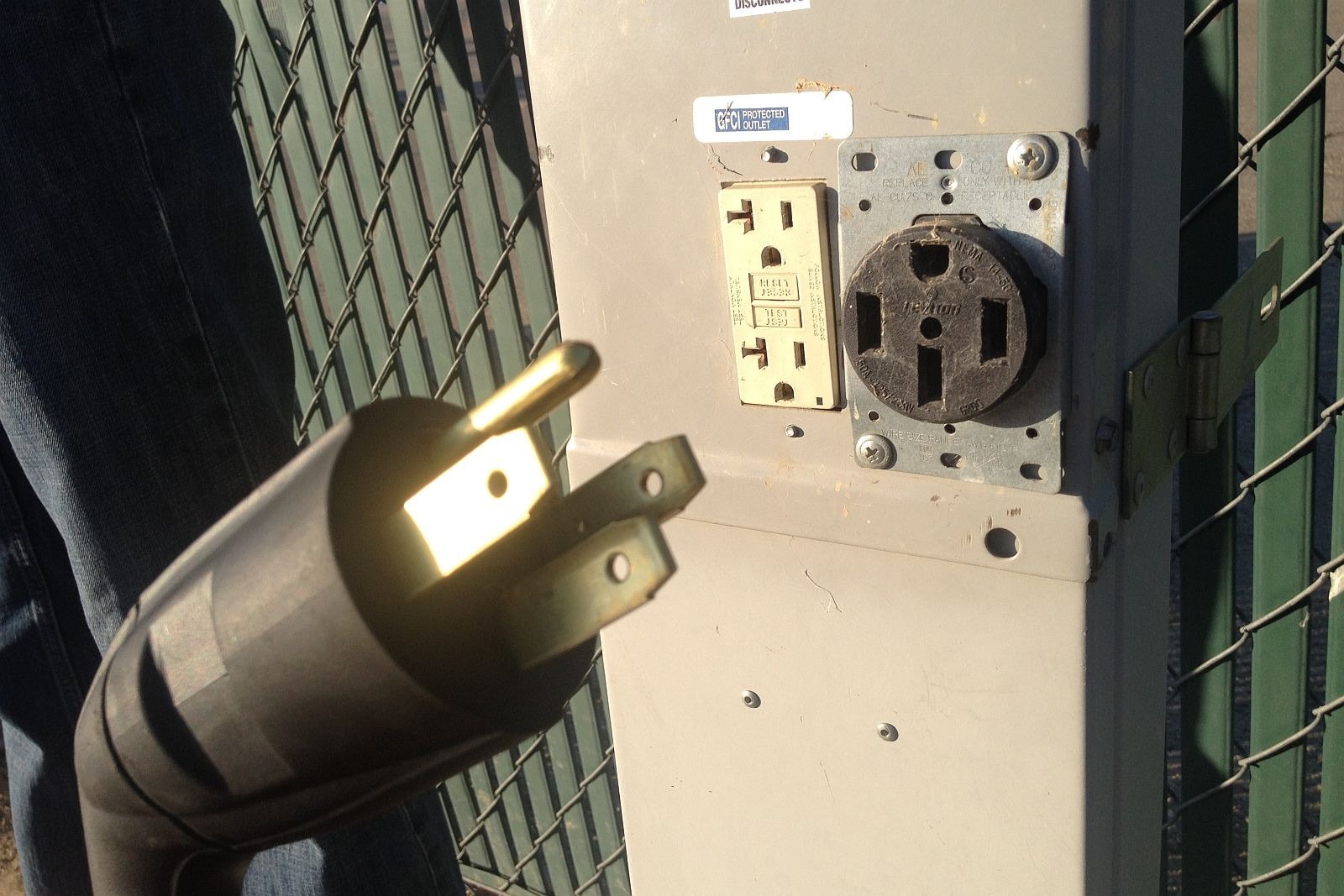
The Tesla's basic charge cord, the one that comes in the trunk, isn't just for 120V home outlets and dire emergencies. It's built to work with 200~240V, too, and the familiar three-prong end can be detached and swapped out for a hefty NEMA 14-50 four-prong plug that's included in the bag. This setup gives you access to potential charge sites at RV parks and campgrounds all across the country.
You could even have an electrician install a 240V, 50-amp NEMA 14-50 receptacle in your garage instead of paying a grand or more for an SAE-compliant Level 2 charge station. The Tesla's basic charge cord can easily be your only means of charging, and in fact it's significantly faster than nearly all Level 2 home charging units.
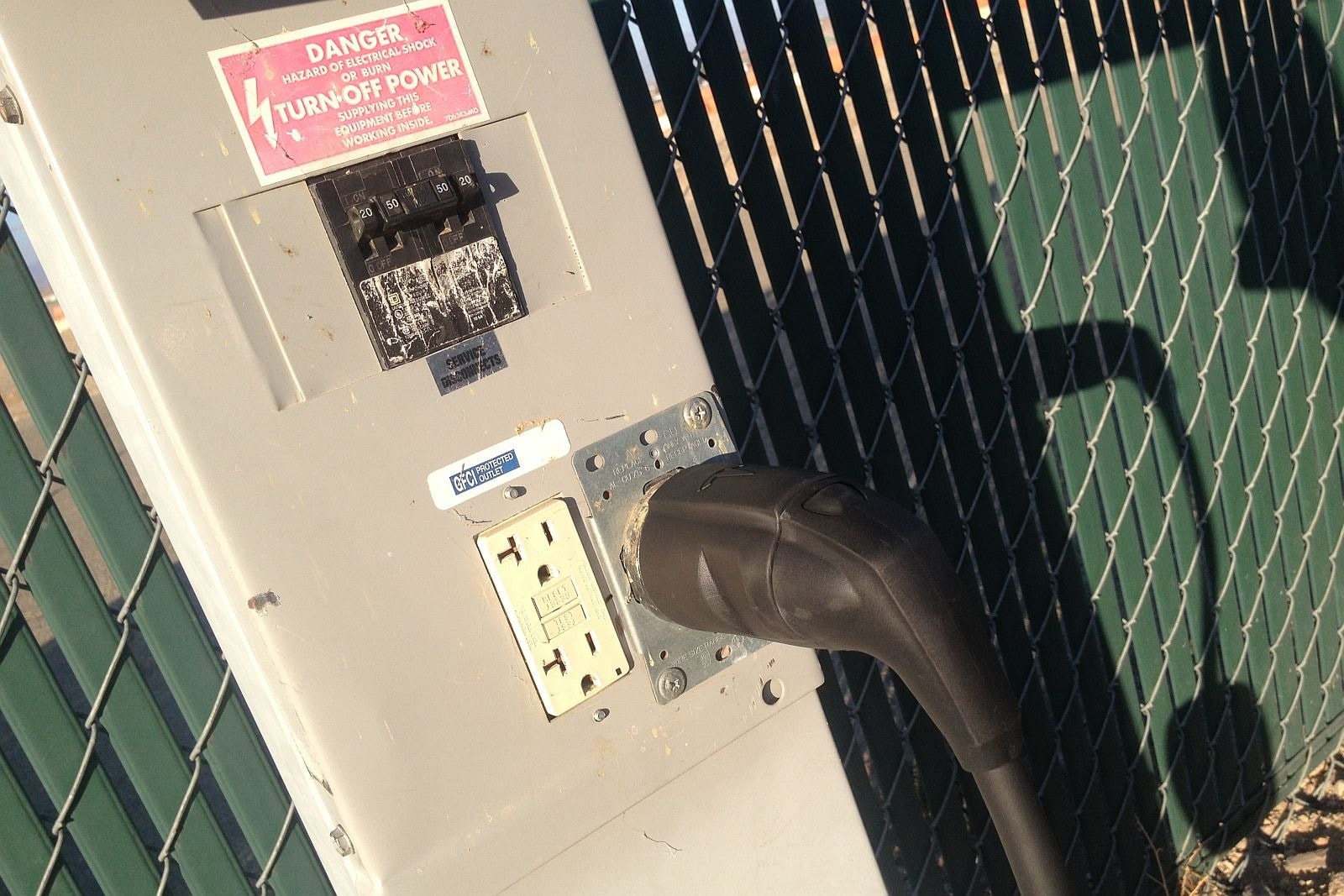
NEMA 14-50 receptacles are not 100-percent universal at all RV park spaces, but they are very common. Large Class A motorhomes depend on them, but spaces devoted to smaller single-axle camp trailers may offer something else. Call ahead if you're planning a cross-country trip. iPhone apps such as Plug Share have a NEMA 14-50 filter, but a lot of RV Parks haven't bothered to get themselves listed, such as the one we're at now.
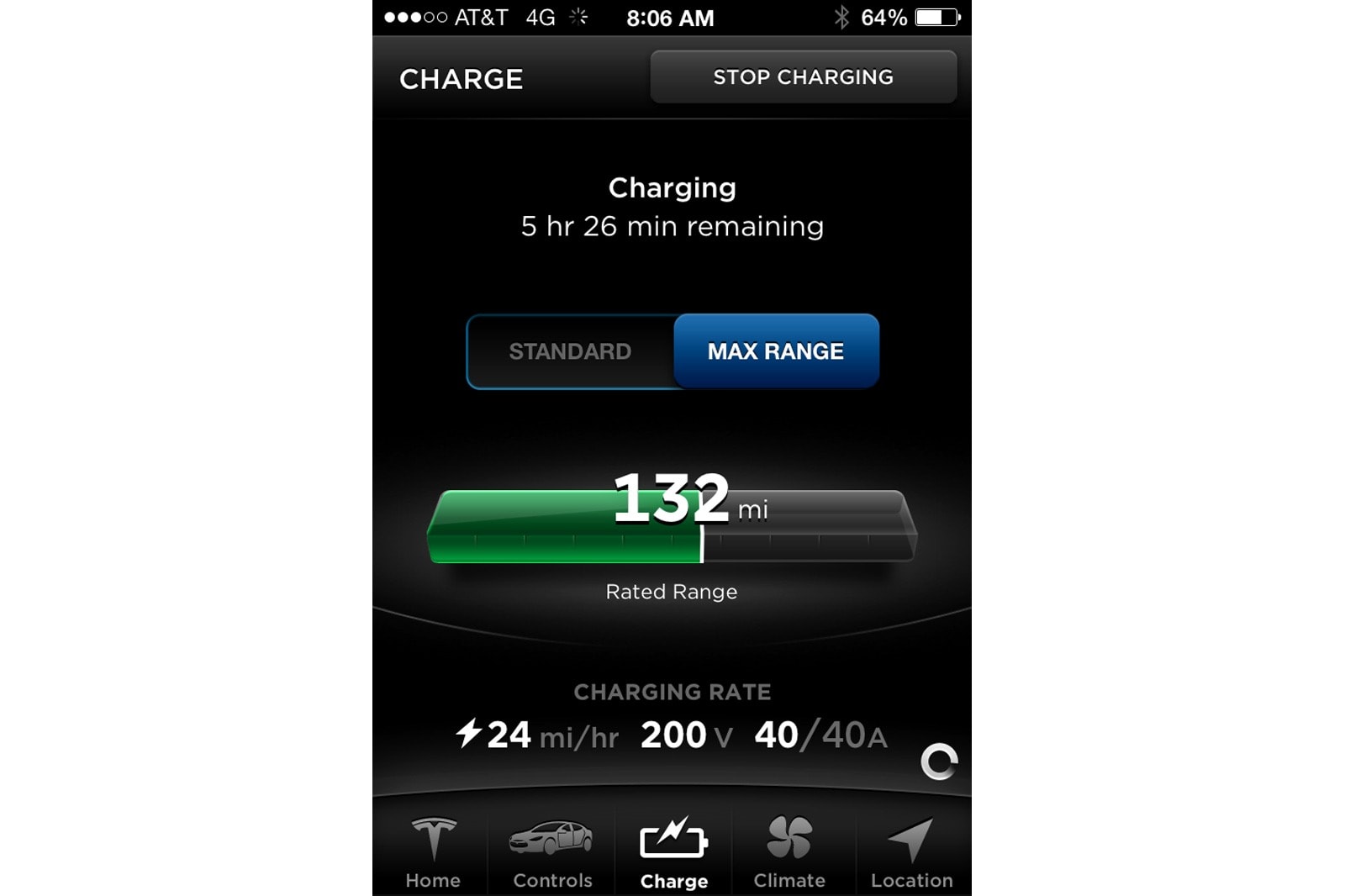
It gets better. The Model S charges 33 percent faster on a NEMA 14-50 receptacle with its own cord than it will at an SAE level 2 station. That's because the "50" stands for 50 amps, the capacity of the circuit the receptacle is connected to. Electrical codes demand a 20-percent safety margin, so the draw through a NEMA 14-50 is limited to 40 amps, as shown on this Tesla iPhone app screenshot.
Meanwhile, 99 percent of SAE Level 2 stations are hooked up to 40-amp service, so they can only supply 30 to 32 amps, depending on the specific model.
And so our Model S is presently charging outdoors in an RV space at a rate of 24 to 25 miles per hour. The fancy-pants Chargepoint Level 2 universal charge station we have back at HQ for all the other EVs on the market can only manage 18 miles per hour. That's your 33 percent faster right there.
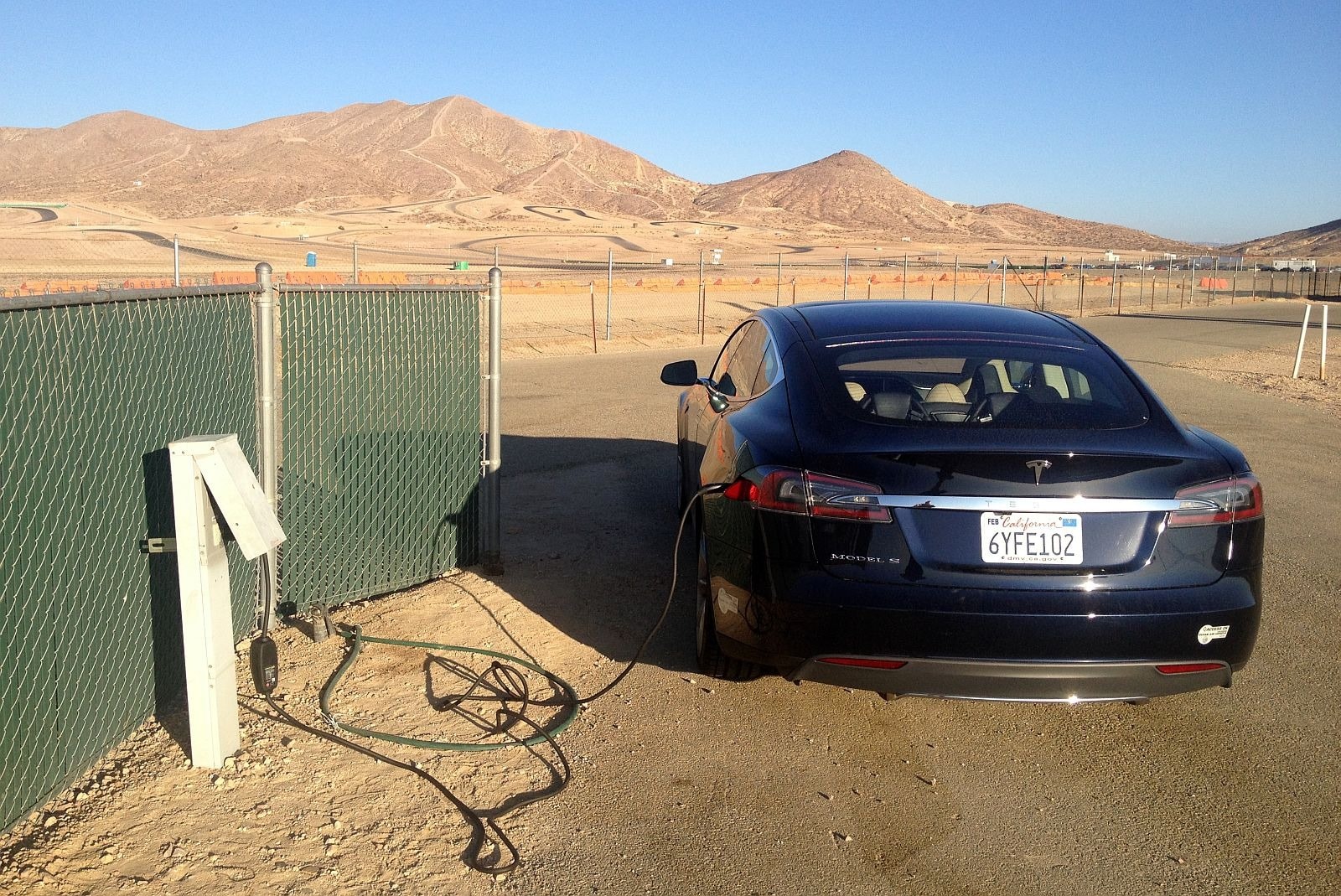
This is far from Supercharger performance, but a NEMA 14-50 hookup can easily refill an empty Tesla in an overnight stay. Bring a tent and you can hopscotch across the country from campground to campground or make a side trip off the Supercharger network. Staying with friends or relatives? Perhaps there's an RV park nearby. Or maybe you can find a hybrid hotel that offers rooms in front and RV spots with hookups in back.
The Palm Canyon Resort near my friend's house in remote Borrego Springs, California is just such a place. The Supercharger network is nowhere in sight, but with NEMA 14-50 charging at the hotel I can still venture down there and pay them a visit in our Model S.
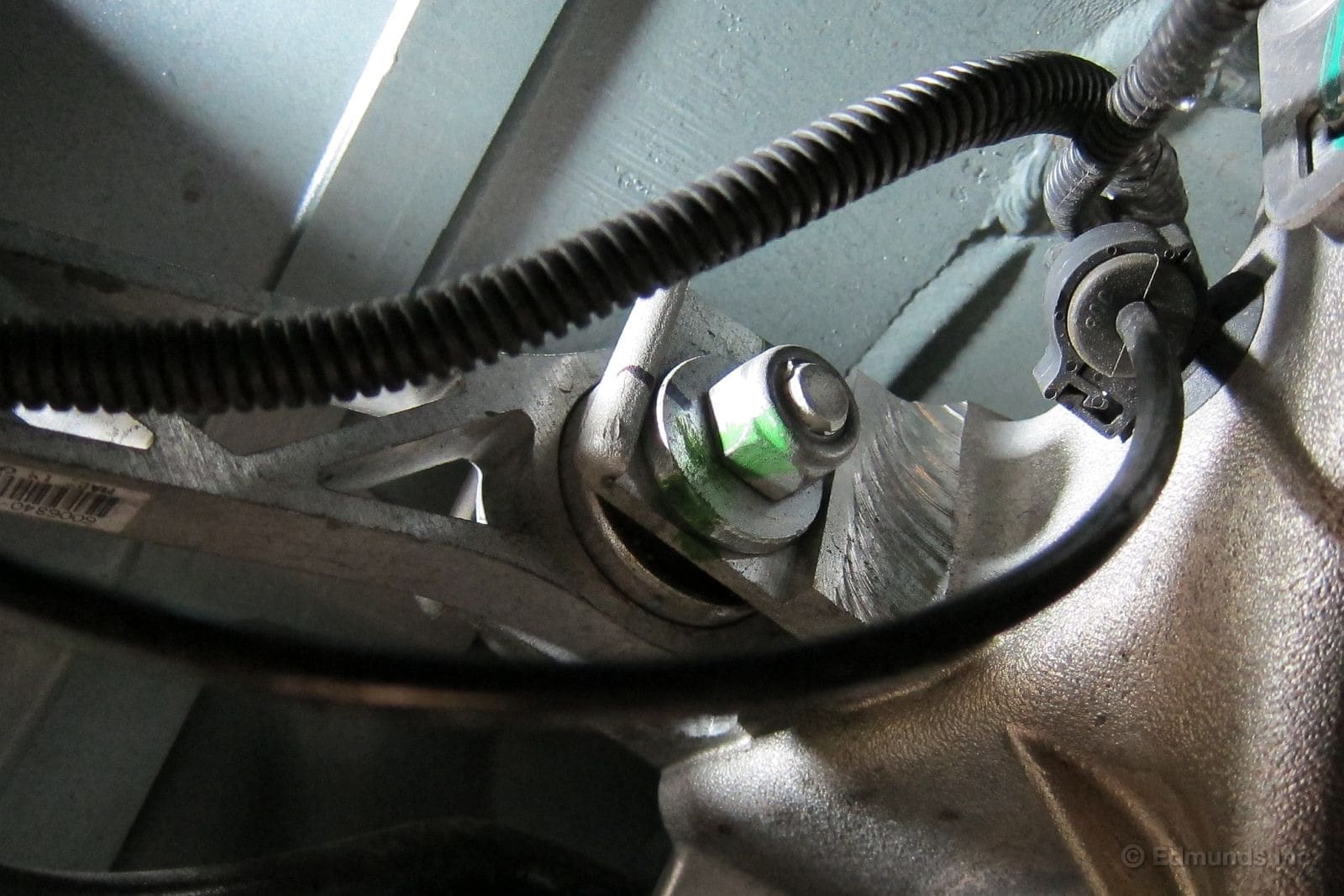
You've already heard that the rear suspension of our 2013 Tesla Model S went out of alignment. For reasons unknown, the rear wheels slipped from 3/16-inch toe-in to 3/8-inch toe-out, which shredded the inside edge of the rear tires in dramatic fashion. Now it's got brand-new tires and the toe-in has been corrected, but we're still not sure when (or why) things went south.
So I recently hoisted the car up on our Rotary 2-post lift to add witness marks to the toe-link adjustment cams. I plan on lifting our Model S every 1,000 miles or so to see if it creeps again. I don't expect to see anything, but, then again, I didn't expect we'd be wasting our breath talking about chewed-up tires before we hit 10,000 miles, either.
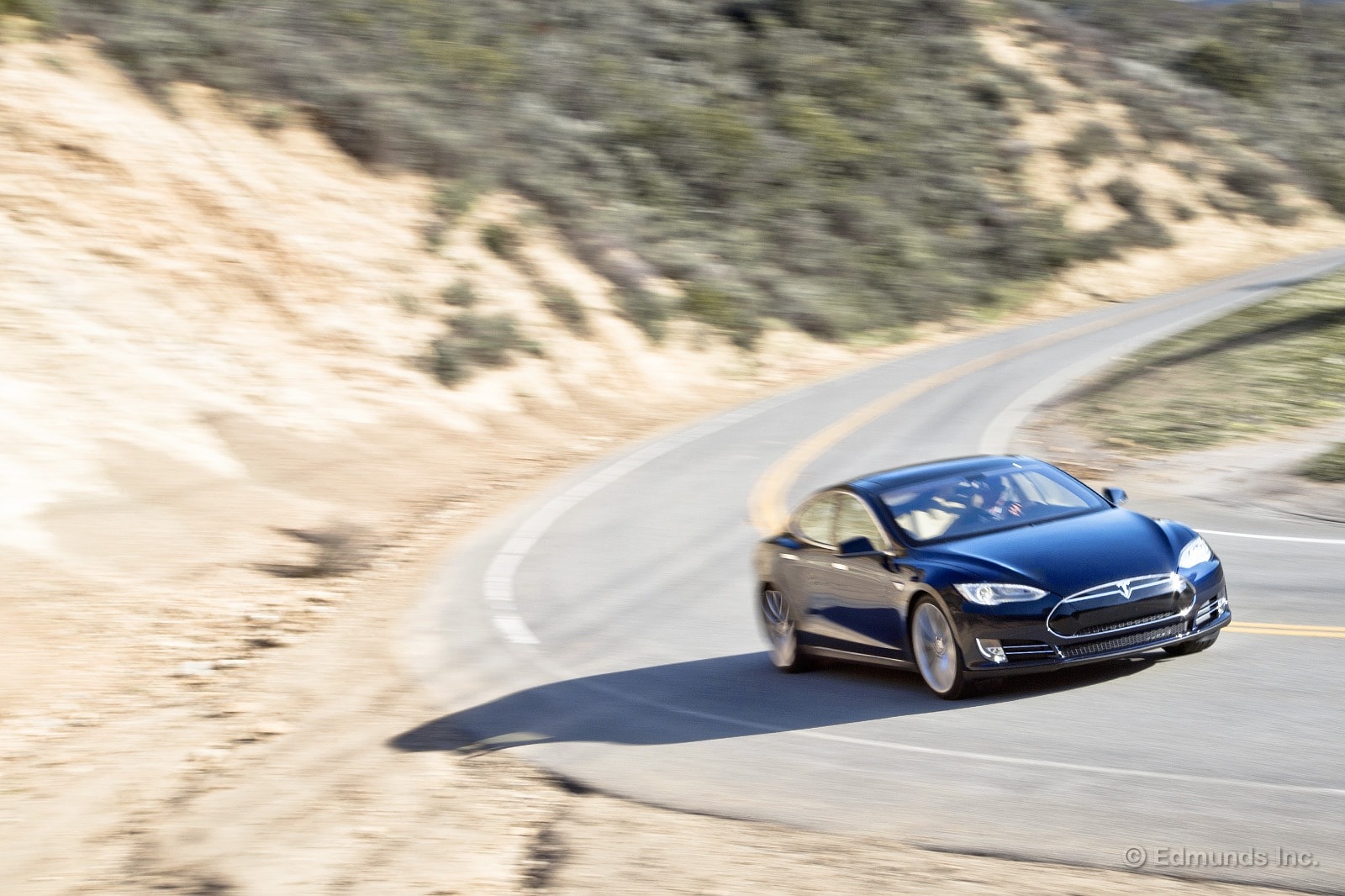
Our 2013 Tesla Model S is making an ominous noise under acceleration and deceleration. It originates from the rear of the car and seems to be getting worse. Listen to the two videos to see what I mean. One version is at low speed and the other at higher speed. We have an appointment scheduled to see the dealer today. We'll let you know what we learn.
The low-speed version
The higher-speed version
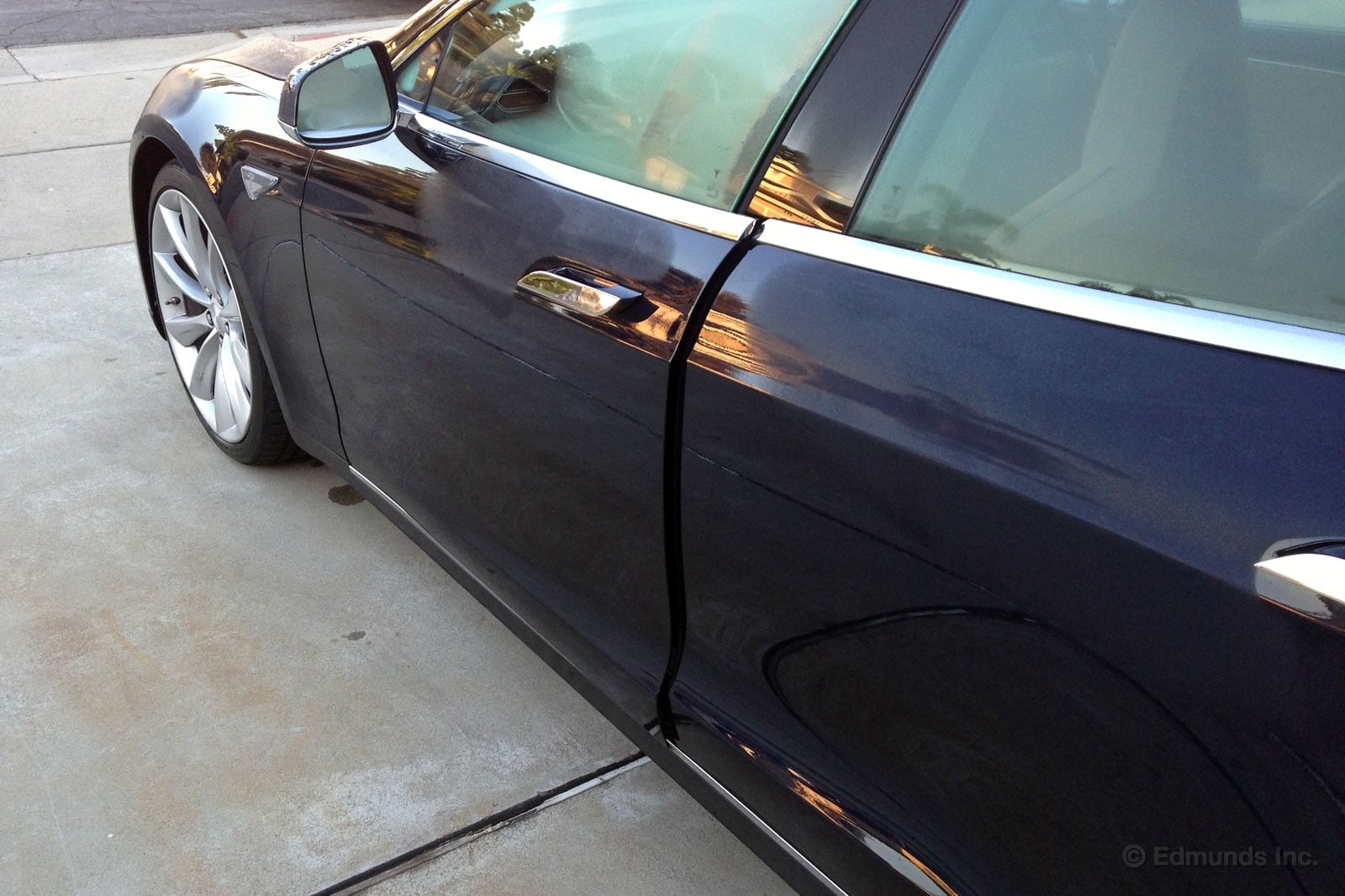
When I shift our 2013 Tesla Model S into park, the driver door opens automatically. The door doesn't open fully, just to the first detent. This is not the first time it's happened.
We waited before taking this into the dealer to see if we could repeat the problem. But so far, the only possible similarity between events is that the car was wet following rain or early morning condensation. No more waiting. We've schedule an appointment to have the issue addressed.
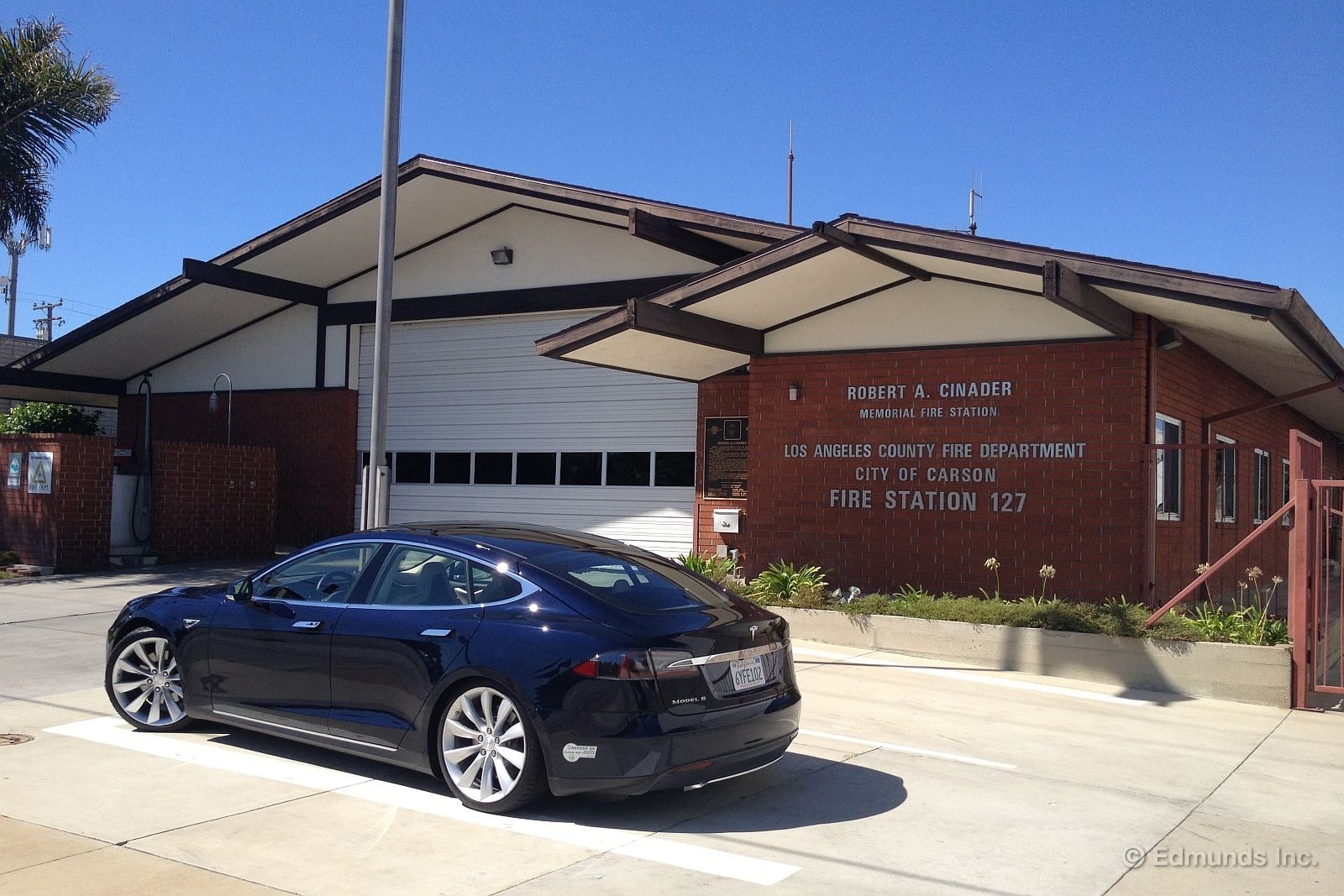
These days every fire station seems to have paramedics, squads of elite firemen with extra medical training and equipment. It's something we take for granted when we talk about first responders these days.
But my late fireman friend Howard was always quick to point out that there was a time not so long ago when the idea of handing over such responsibility to firemen was brand new, revolutionary and controversial. That point in time in the early 1970s was captured by a TV show that was called Emergency!.
The Los Angeles County Fire department's new paramedic program was dramatized in this very popular NBC TV program. During its five-season run, fire chiefs and mayors across the country were inspired to develop similar capabilities after watching the show. Many of them called the production company and L.A. County Fire for advice.
I recently found out that the fictional Station 51, home of Squad 51, is a real operational station I drive past on the 405 freeway every day. I happened to be in our 2013 Tesla Model S when I decided to pop on over for a quick look.
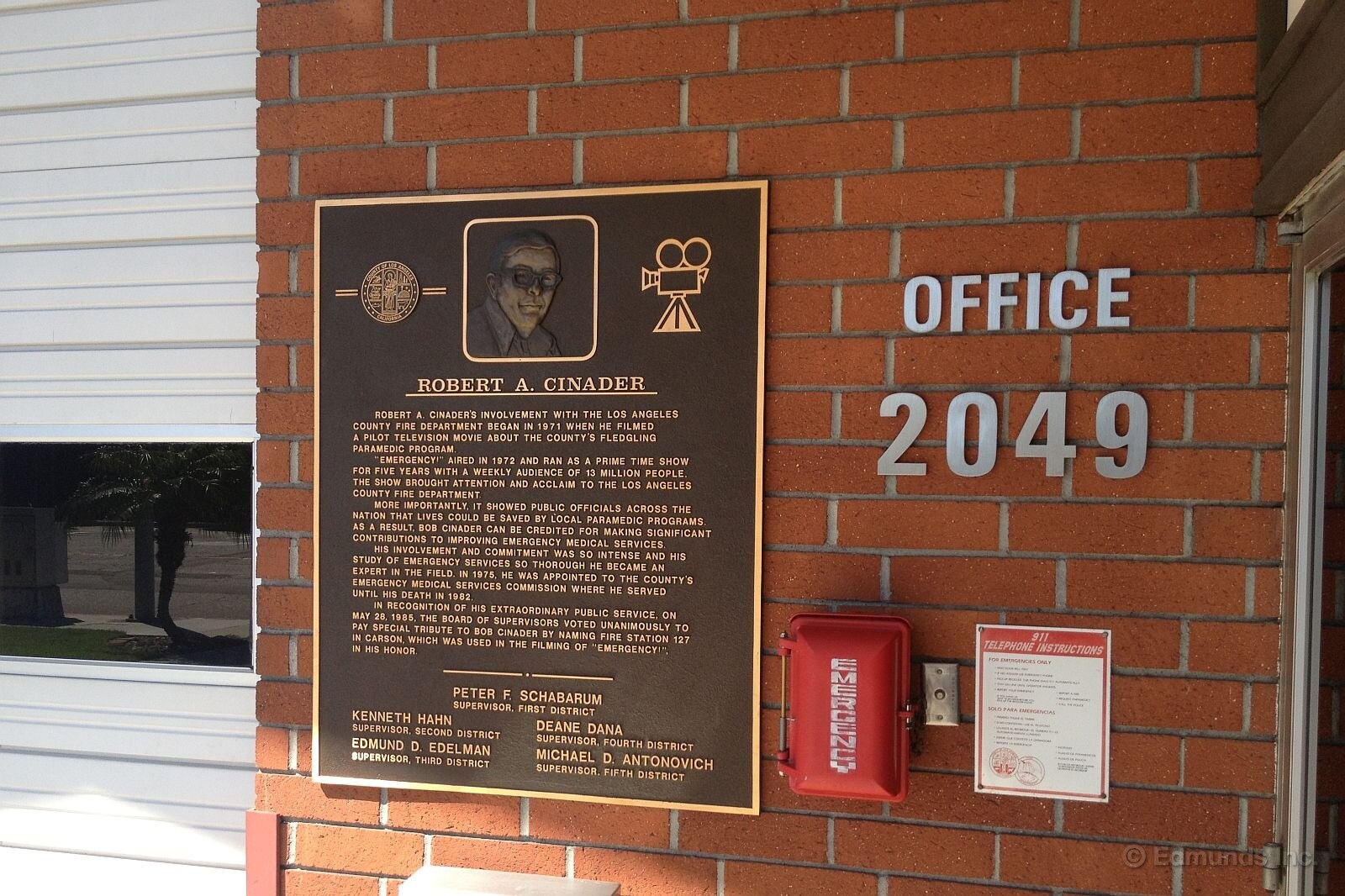
I recognized the familiar roofline in an instant, and the broad street from which Station 51's equipment was dispatched looks exactly the same as it did on TV when I was a kid.
The station's real number is 127, and it is now known as the Robert A. Cinader Memorial Fire Station, in honor of his role in creating and producing the show alongside Jack Webb. A plaque mounted next to the front door details his acknowledged role in helping to promote paramedics programs across the country through his involvement in the show and as a member of the L.A. County Emergency Medical Services Commission thereafter.
So the next time someone tells you that TV is crap, that it contains nothing on it worth watching, tell them the story of Emergency! and the many lives it has doubtless saved by spreading the idea of paramedic programs across the country.
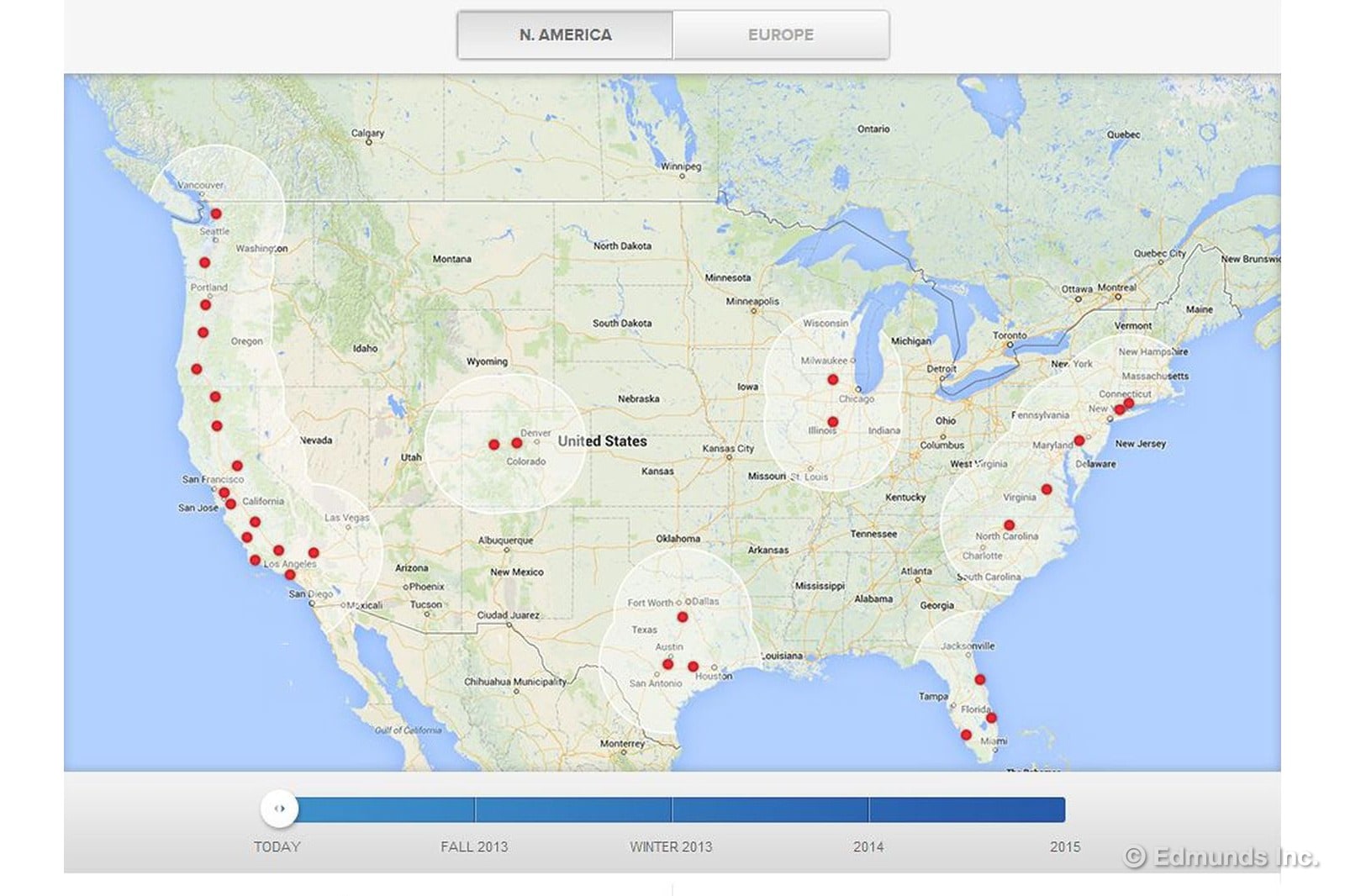
Three new supercharger stations that just opened in northern California and southern Oregon now make it possible to drive our 2013 Tesla Model S from Mexico to Canada. I'll settle for Christmas with my parents on the Oregon coast, though. All I need now is a set of winter tires.
Previously, I could drive our Model S on the Supercharger network no farther north than 100 miles north of Sacramento, CA. But three new stations in Corning, CA, Mt. Shasta, CA and Grant's Pass, OR now make it possible to bridge the gap to existing Superchargers in the northwest and make it all the way to Canada.
I'll turn off at Grant's Pass, though, and head for the coast where my parents live. I just need to work out where I'm going to charge when I get there. Probably an RV park someplace.
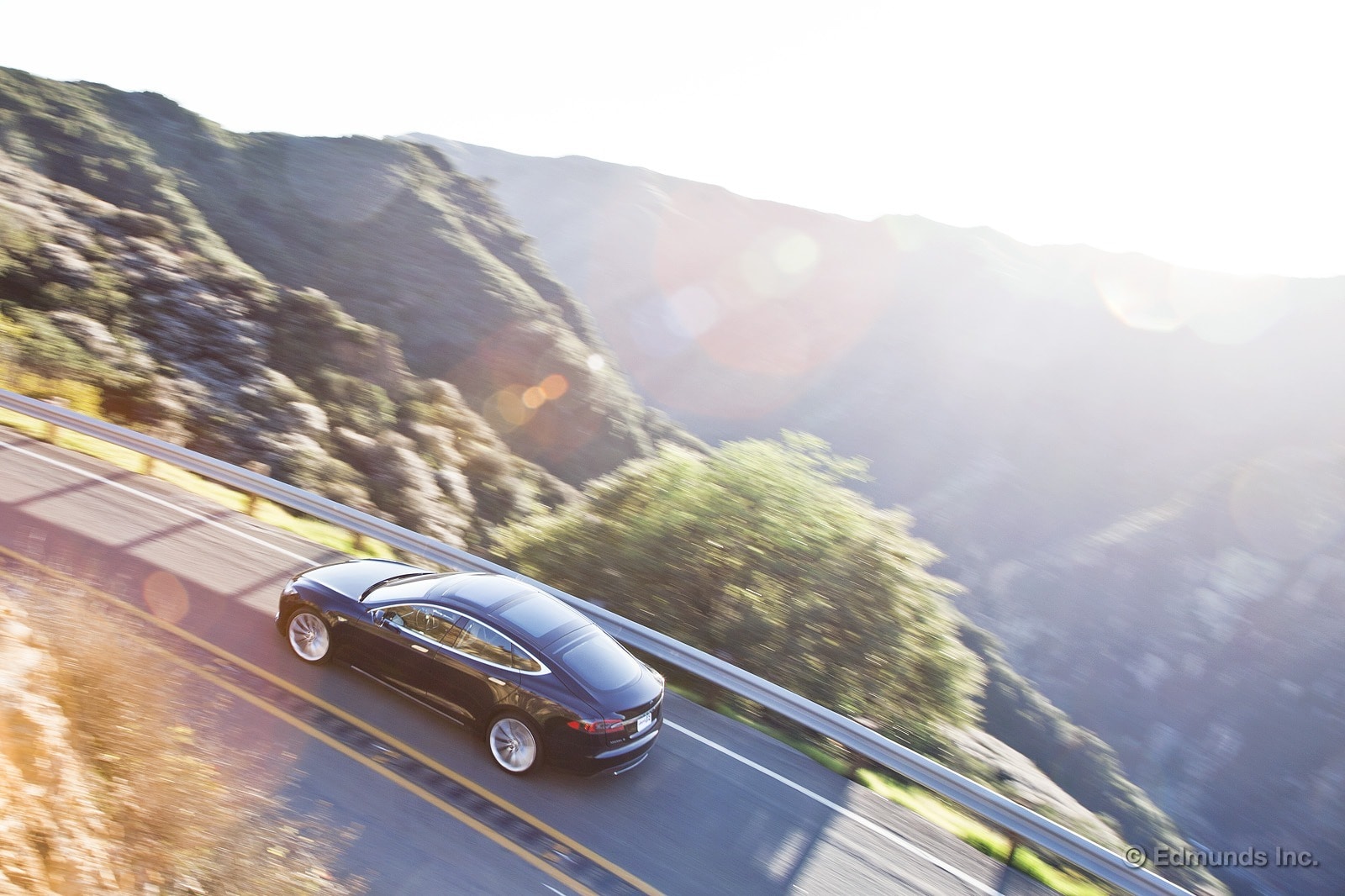
"Our 2013 Tesla Model S is making an ominous noise under acceleration and deceleration. It originates from the rear of the car and seems to be getting worse." That was our last post addressing this mystery.
Here is how it was fixed...
"We replaced the entire drive unit," began our service advisor. "Tesla doesn't want us diagnosing the problem here, so I can't answer your question of exactly what happened. It gets put into a box and shipped off. Sorry I don't have any more information."
If you like to say, "I don't care how you fix it. Just fix it." Then you'll be completely satisfied with this solution. We don't say that. So at this point we have messages out to contacts at Tesla directly to see if we can learn anything more. We'll keep you posted when (if?) we learn something.
While it was at the dealer we also asked to have the magic driver door looked over. The fix here was to replace the driver door handle mechanism.
We're not sure what to think about the fact that both of these repairs were completed with just one overnight stay. Maybe the dealer is really on the ball. Maybe the supply chain is short. Or maybe the parts are readily available because they've seen these before. The car is back on the road again, regardless.
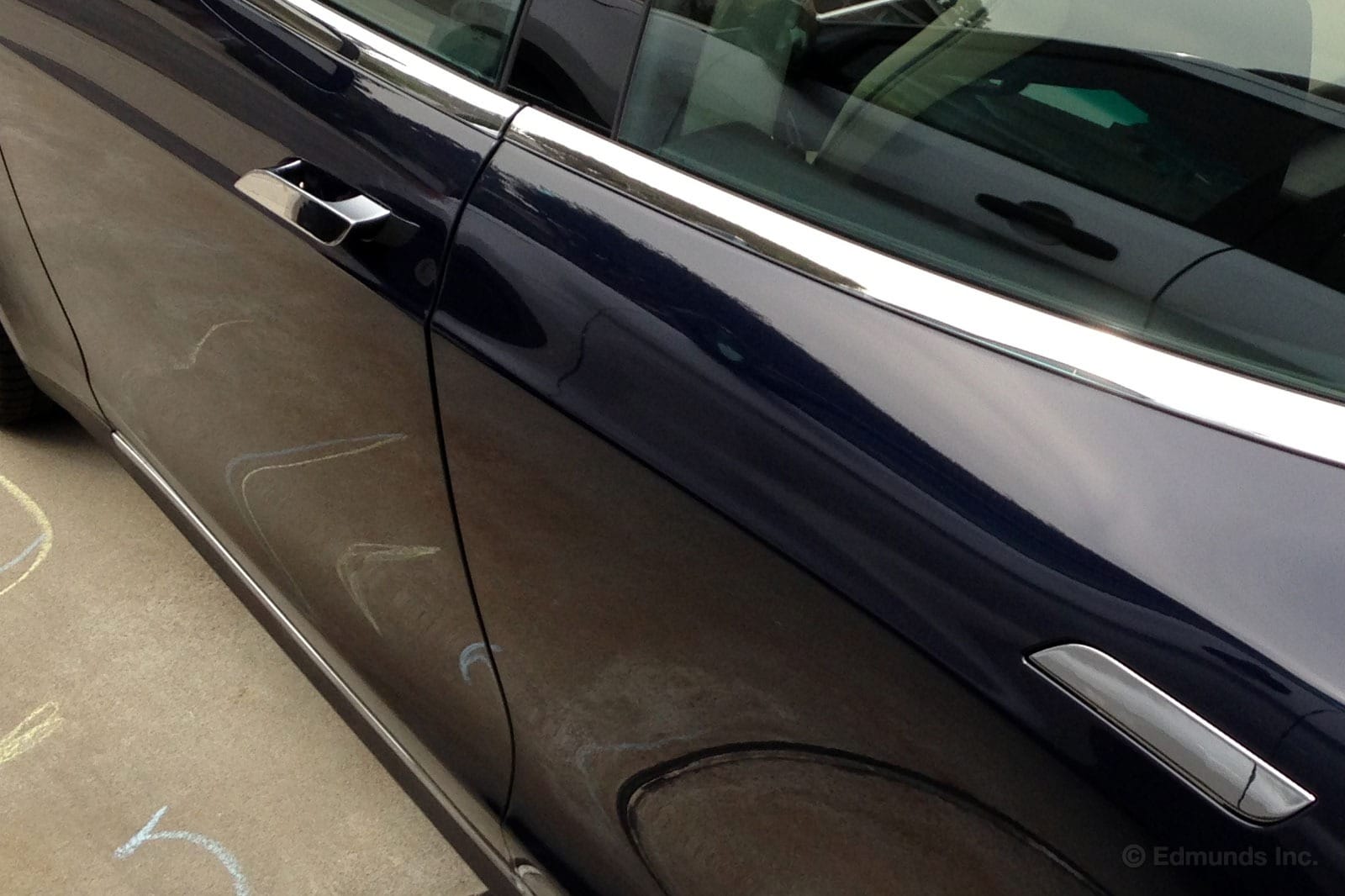
The driver door handle on our 2013 Tesla Model S wouldn't retract yesterday. Normally, as you walk away from the car the handles retract and the doors lock. I initially thought this was related to our recent service. This was the handle mechanism the dealer replaced.
I walked back to the car and pressed the key fob button to manually unlock the doors. Then I manually locked the doors. This time all handles retracted properly. It seemed to be a one-time thing, as the issue has not returned since.

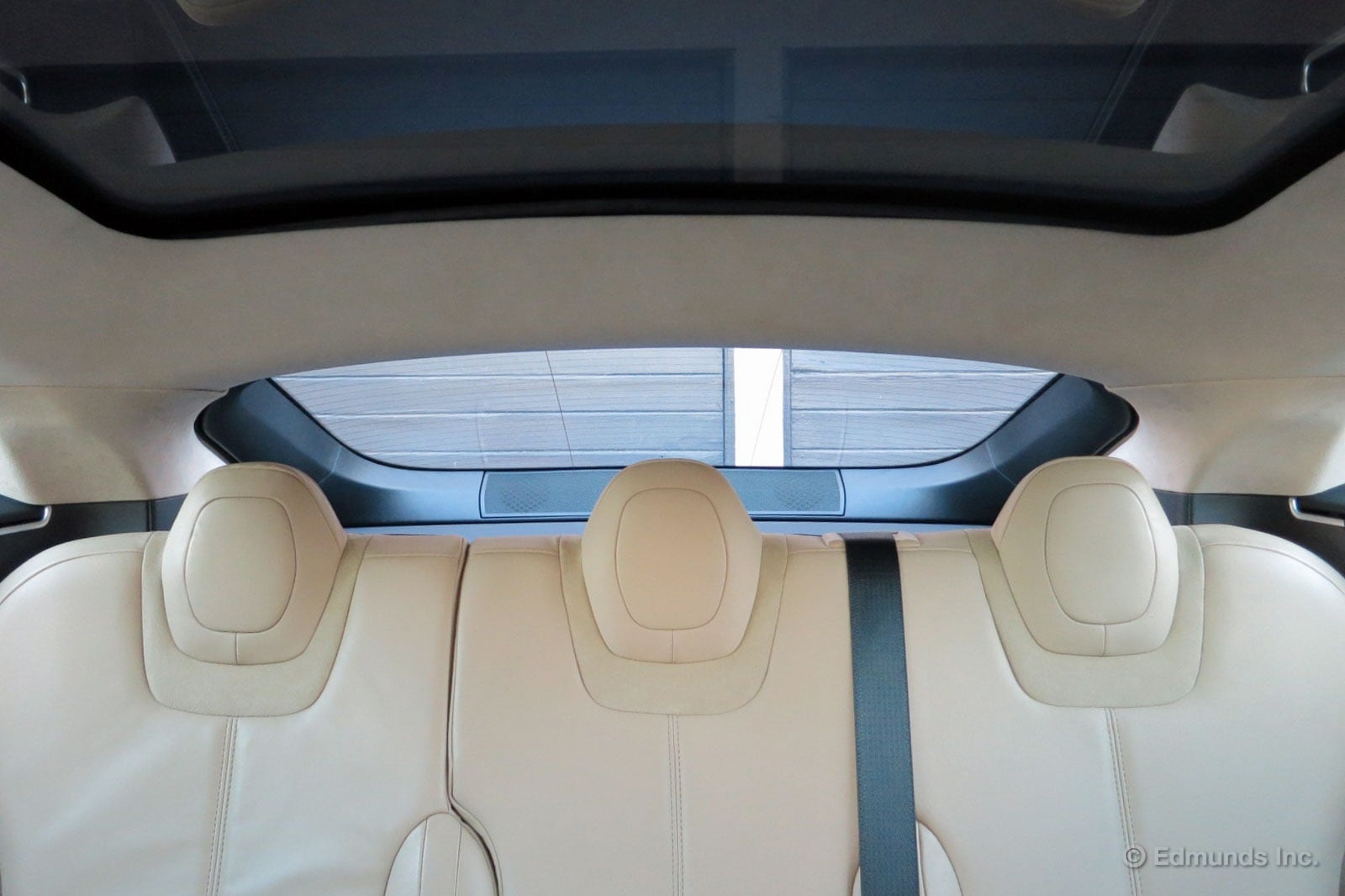
This has been mentioned before, but it jumped out at me again after not driving our Tesla Model S for a while. Compared to most other sedans in its class, the rearward visibility in our Model S is terrible.
To many this may not be cause for concern. I see such drivers every day on the highway and clearly the cars behind them don't factor into how they drive. With that in mind I try to do my best when it comes to accommodating others on the road. Being able to see them helps.
As you can see, the Model S doesn't help much in this regard. The window is comically small, not to mention the fact that its aggressive angle makes for considerable distortion. And check out those C-pillars, they're kind of hard to miss. Granted, I use my side mirrors for making most judgments about lane changes and such, but it's never comforting to check your rear-view mirror and see nothing but roof.
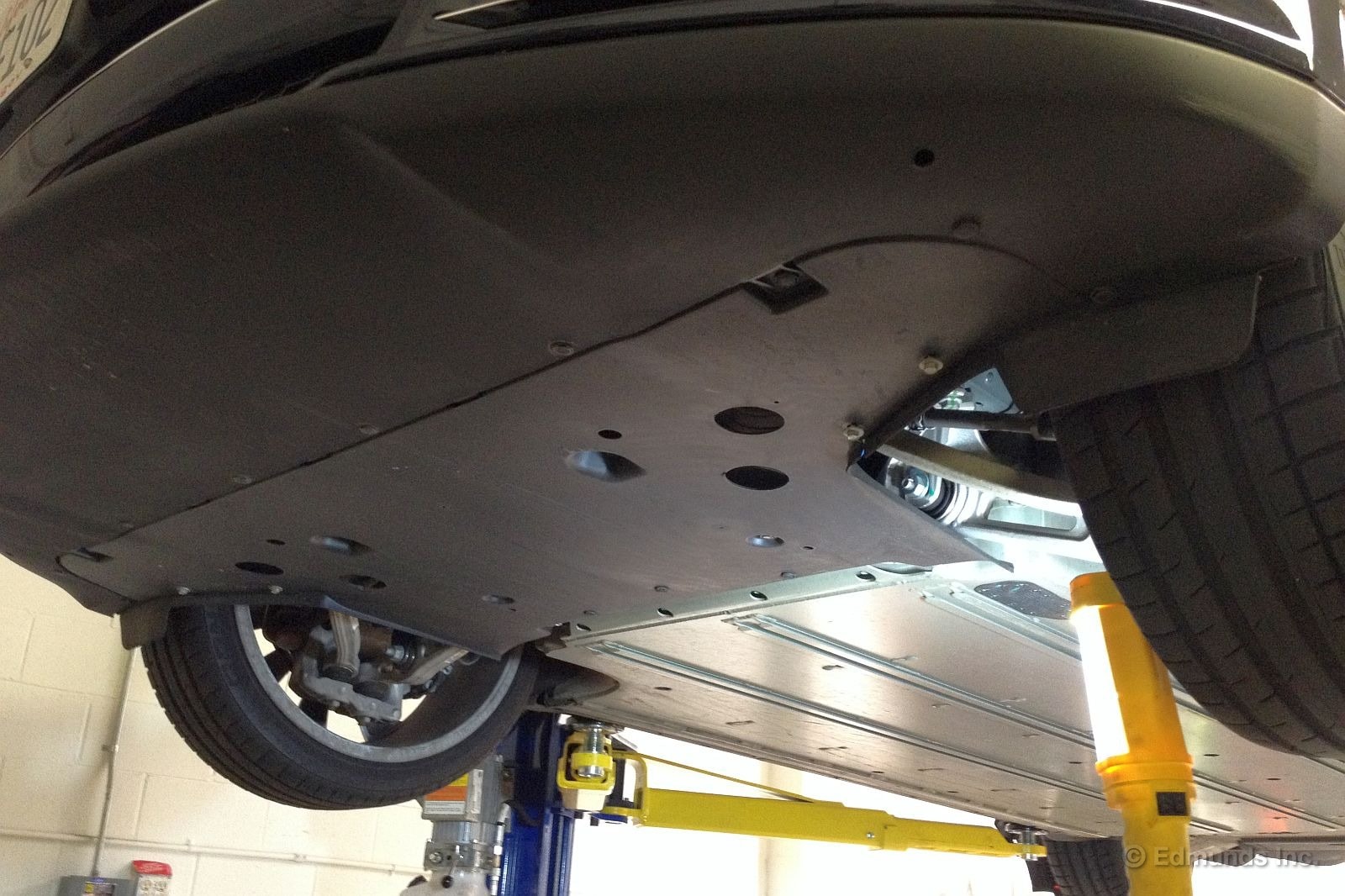
Reports of a third Tesla Model S fire are just filtering in, and the Tesla forums are bogged down with extra traffic, presumably from news media trying to figure out what's going on.
I'm curious, too, so I put our 2013 Model S long-term test car up on our Rotary lift for a look around.
The first fire was reported to be the result of an impact with a "large curved piece of metal" that fell off or was kicked up by a semi. Tesla described a "pole vault effect" that pierced the battery pack from below, creating a three-inch hole. The fire didn't spread throughout the battery pack, and in fact most of what we saw burning in the photos and videos was in front of the battery, involving other components. Still, we understand the initial spark may have come from the battery in that case.
The second fire occurred in Mexico, after the driver ran through a roundabout and struck a tree and pole. So much was going on there it's hard to tell what the cause was, but most certainly the crash came first.
The latest fire is also reported to be a debris strike, but I'm not yet sure if the main traction battery is involved. Photos show a fireman dousing the nose of the car, well ahead of the battery. The main traction battery box begins behind the front axle centerline and extends back under the passenger compartment. It remains to be seen whether or not the battery pack sparked off the blaze.
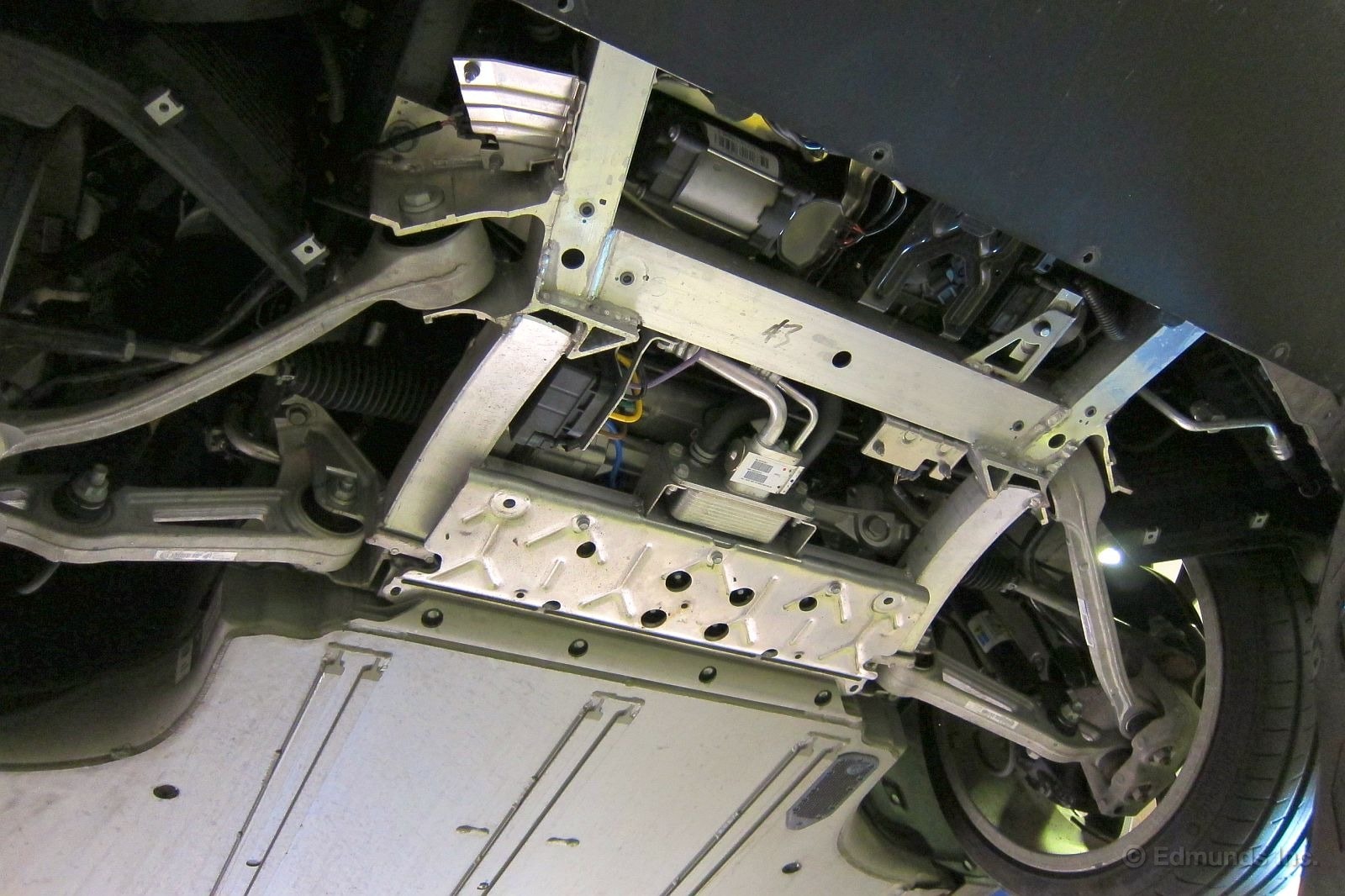
Here I've pulled off the cover to reveal some of what's up front. I can't ID all of the components without a shop manual in hand, but you can see how the battery pack (that big gray box spanning the underside of the car) starts behind the rear axle centerline. Its unseen vertical front edge is protected by the front subframe, which carries the electronic power steering system and other components. Farther forward, those pipes appear to be part of a refrigeration system, most likely the air conditioning. I can also see electronics (and the compressor, I think) related to the air suspension. The 12-volt "normal" battery is in there somewhere, too. Numerous other systems are nearby, out of sight.
Here are a few observations:
The plastic cover I removed to get this view is quite thin. It's just an aerodynamic cover. This design is similar to other cars, but they don't necessarily have electronic components hanging this low under the nose. Most cars have the oil pan of their engine filling this area. Trucks and SUVs will have a metal skidplate because of possible rock impacts that may occur off-road, but few, if any, sedans have one because they don't venture off road.
That said, the Model S does run quite low to the ground, especially at freeway speeds where the air suspension drops the car even more. Check out the ride height of the next Model S you see. They look slammed, but that's how they come from the factory. It's done in the name of improving aerodynamics to reduce drag and improve efficiency.
Finally, the battery box curves in around the back side of the front tires. It's essentially a part of the inner fender liner in places. Direct debris contact is theoretically possible here if a front tire kicks up something. They say the battery box is one-quarter inch thick. Still, I've hit debris in my own cars plenty of times and have never had anything pierce the thin sheet of plastic that made up their fender liners. But that doesn't mean it couldn't happen.
Is there a problem with the battery pack, the thing everyone is concerned about? We don't have enough information to tell. We're not yet certain if the pack was involved in the ignition of the third fire at all. But the confined nature of each fire is actually heartening. It tells me that the compartmentalization of the battery pack is preventing the spread of flames back under the cockpit, as designed.
The proliferation of flames up front seems to indicate that something else is contributing to the visible flames. It's impossible to know how to think about this until we see and analyze pictures of what the drivers struck and where it impacted the underside of the cars in question.
Whatever the case, it's very likely that the impact zone resides within the area depicted in the above photograph.
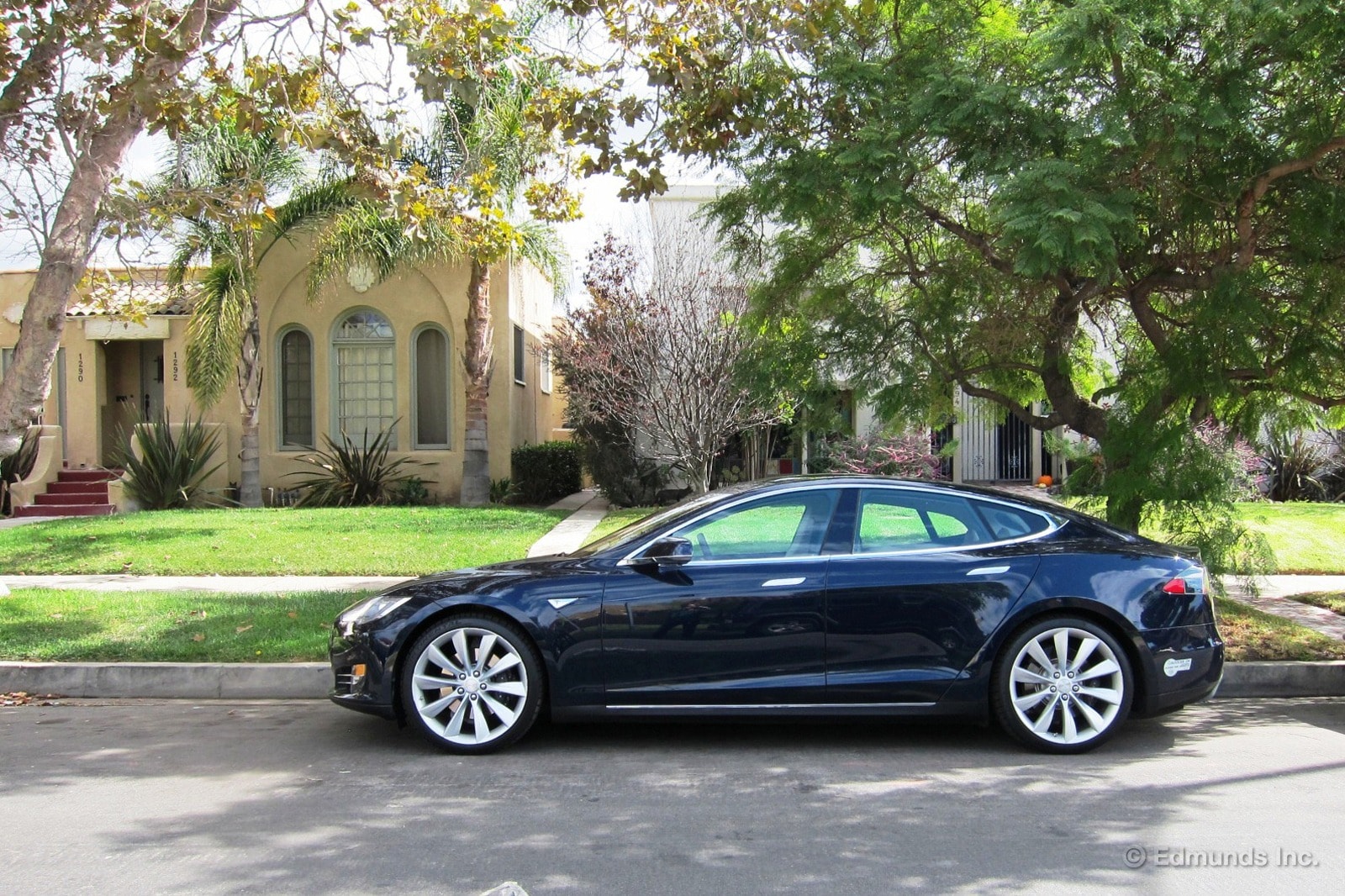
Our long-term 2013 Tesla Model S had a disconcerting, warbly-grindy noise. Subsequently, its electric drive unit was identified by the dealer as the source of the noise (bearings? Motor?), and so was replaced under warranty.
I can report that the noise is now gone. The car is back to its usual, uncommonly silent self, nearly as quiet when in motion as it is when parked at the curb.
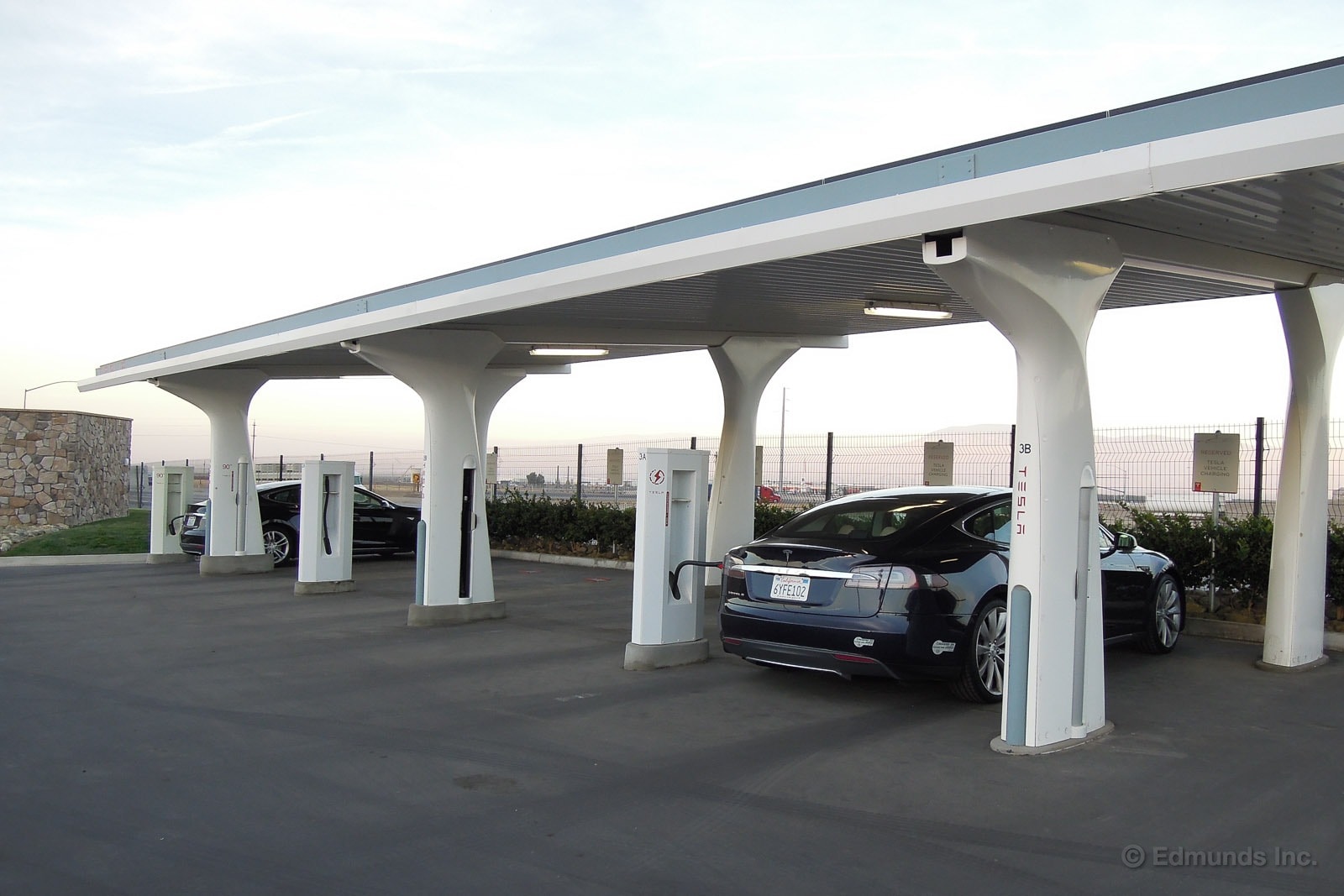
I'm going to make a guess here, but it seems entirely possible that parking your Tesla Model S at a shiny new Tesla supercharger station could be a great way to meet people you'd like to date.
That is, of course, assuming you're in a position to want to date somebody. But would you not agree that these stations are ripe with opportunity? You pull up. A couple minutes later a rather attractive man or woman (whatever suits your fancy) pulls up in the next bay. Now, you've both dropped close to $100,000 on your very much niche-oriented car. I think you've got something in common. You wave and smile, she waves and smiles back. While your car is charging, you walk over to the Starbucks nearby to grab a cappuccino. She naturally follows suit. You have a moment there.
See, it's eHarmony, sponsored by Tesla. For free, no less.

If you've been following the updates on our long-term 2013 Tesla Model S, you've likely seen a few pictures similar to the one above. This displayed squiggly line might look like it's charting Tesla's stock prices, but it's actually showing you real-time tracking of the car's energy consumption.
On one hand, it's easy to just drive the Tesla until you recharge (or run out of juice) and not worry about what your "fuel economy" is. But if you want to know what your Tesla is actually doing, and how your driving style affects it, you need to understand what's being displayed on this screen.
Given that the Model S is all-electric, you can forget all about miles per gallon. Instead, you'll be dealing with energy consumption and durations of distance and time.
The car's main energy tracking screen charts two things: watt-hours (Wh) on the vertical axis and distance in miles (mi) on the horizontal axis. Watt-hours is the way the Model S displays its energy consumption. But it helps to think of it with something familiar: If you have a 60-watt incandescent light bulb and you leave it on for one hour, it will use 60 watt-hours of energy. If you left a 1,000-watt light bulb on for one hour, that would be 1,000 watt-hours, or more commonly expressed in kilowatt-hours: 1 kWh.
In the picture above, you can see how the chart tracks energy consumption up to 900 Wh at the top. It will also show energy production (through the regenerative braking), expressed at a maximum of -300 Wh.
As you drive, the chart is continually updated. New tracking information is applied at the right edge of the screen (where mile "0" is), and that pushes older information off the screen at the left. Basically, peaks are when you're accelerating, and valleys are when you're decelerating/braking.
This information is then averaged. So on the left side of the screen, you'll see a figure: "Avg 278." This means the Model S, for the past 30 miles, has been averaging energy consumption of 278 Wh per mile. Again, thinking in familiar terms, this would mean that for each of those 30 miles the Model S has been driving, averaged out, it has been using the equivalent energy as if you had a 278-watt light bulb plugged in for one hour.
The Model S also knows how much energy it has left in its battery pack. Given that, and your average energy usage, it displays the "Projected Range" on the right side of the chart. In this case, if I kept driving exactly like I had been for the past 30 miles, I could go another 183 miles before I ran out of juice, according to the car.
This chart can be adjusted to different distance increments. You can also track average projected range or instant. The latter would be your range based on how you're driving the Model S at that very moment.
One interesting aspect is that the longer the distances you show on the chart, the more the graph gets smoothed out. To demonstrate, here's a picture of that same chart, but with the smallest, 5-mile increment.
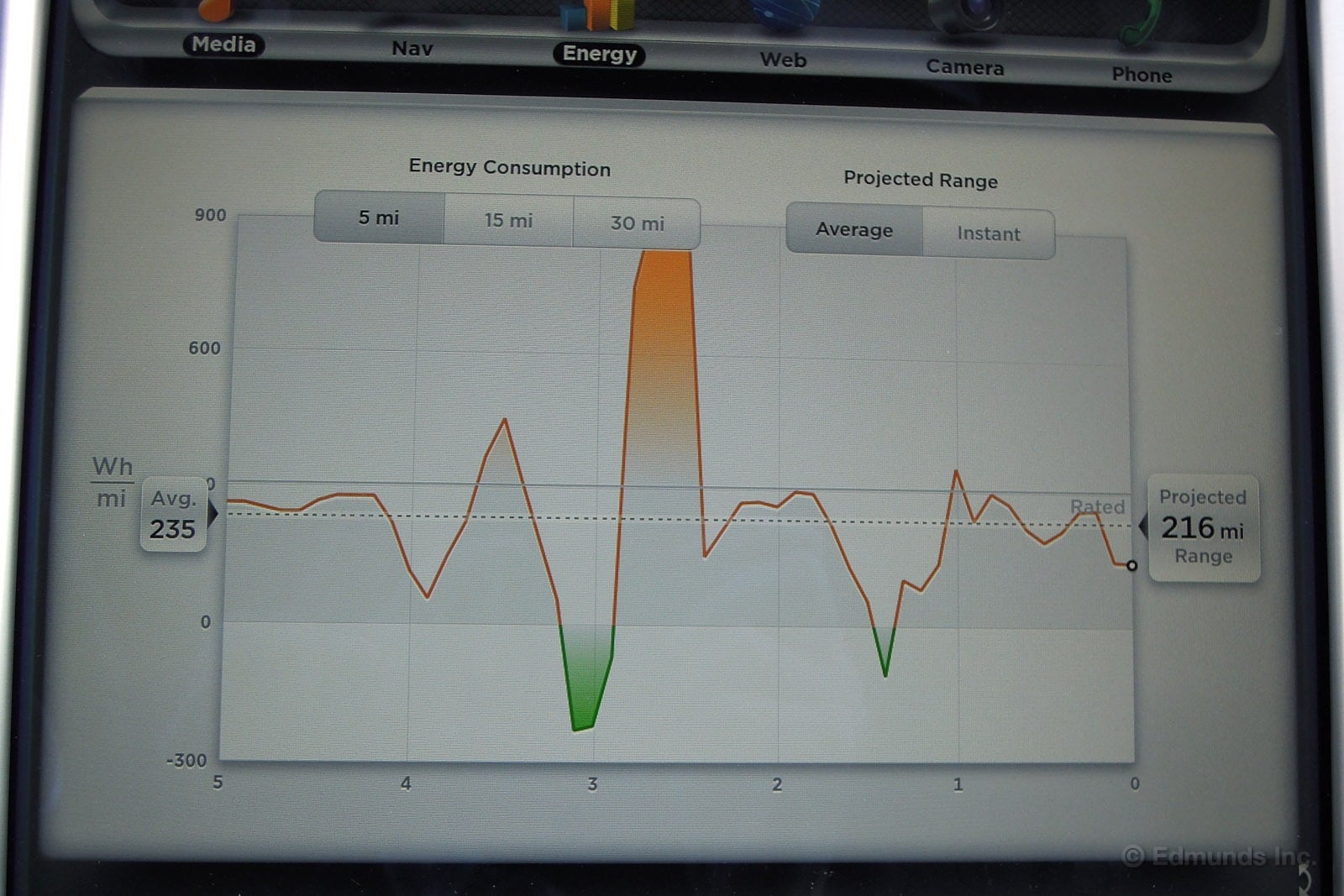
This chart is only showing the past 5 miles driven. But you can see closer, more actual representations of energy usage and production. Right at the 3-mile mark, I slowed down to come to a stop at a stop light, and you can see some actual energy production here. Then, when the light turned green, I pressed down on the accelerator pedal (no gas pedal, right?) to swiftly accelerate up to about 60 mph. That was the big energy spike that went off the chart. Normally, I wouldn't have done this, but it was a good way to show how the chart reflects your real world driving.
Finally, all of this energy usage (and production) gets continually tallied and is then displayed on the main instrument cluster. You can see this information in the picture below.
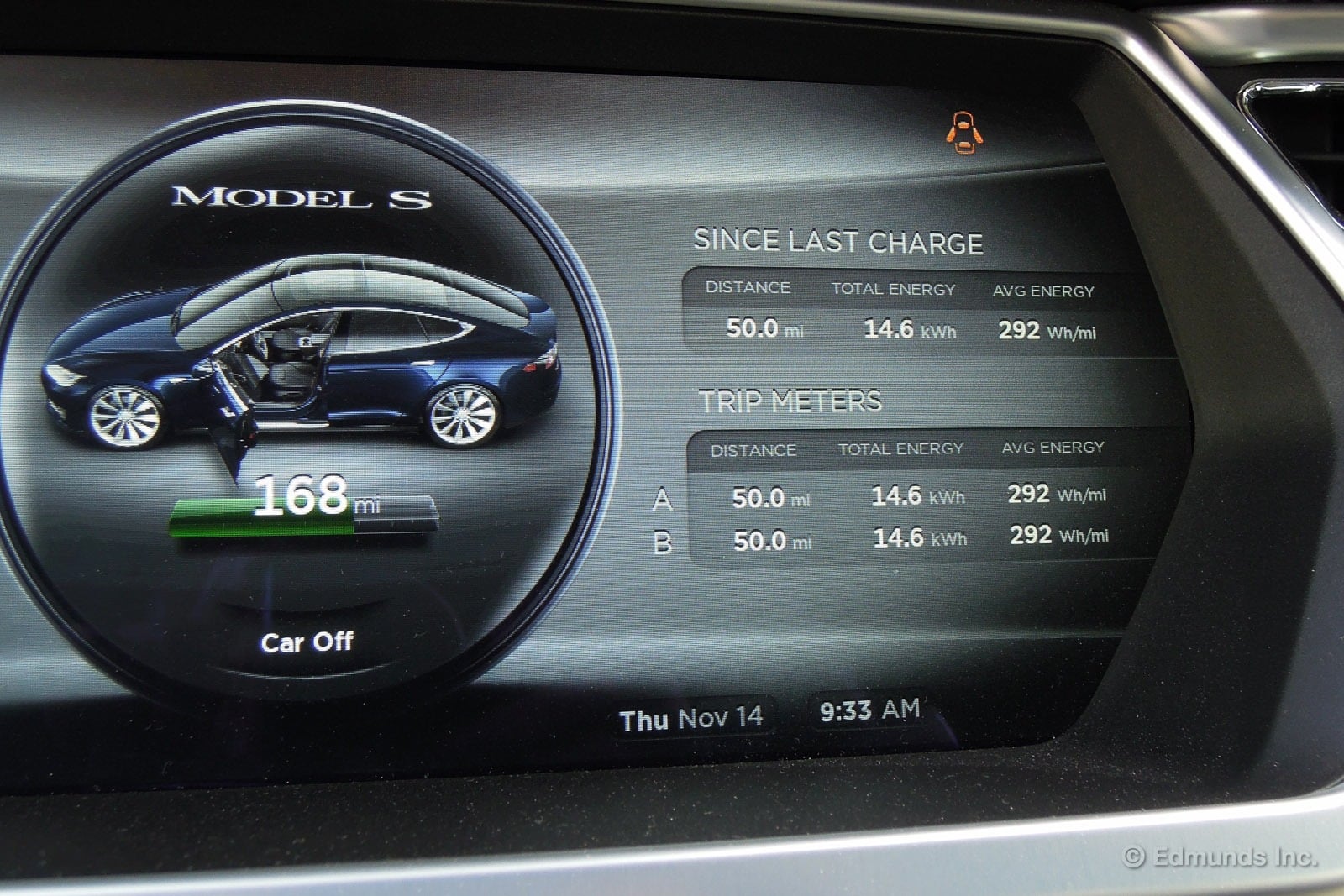
Since my last charge, I've driven 50 miles exactly. And for those 50 miles, I've averaged 292 Wh per mile for energy consumption. If you multiply those numbers, you get 14,600 Wh, or 14.6 kWh, which is what the car is additionally displaying.
With either figure, you're very close to seeing how the EPA estimates "fuel economy" for electric cars. The standardized form is kWh used per 100 miles driven. The EPA combined city/highway estimate for the big battery pack (85-kWh) Model S is 38 kWh used per 100 miles. So, if you take my 292 Wh/m and multiply by 100 and convert into kilowatts, you'd get 29.2 kWh used per 100 miles.
Based on this it would seem that I'm "beating" the EPA estimate, or for those 50 miles driven, anyway. (Remember, the lower the energy consumption number, the better economy you're getting.) However, it's not a fair comparison. The EPA estimate includes charging losses, as this is a reality with an electric car, there's a certain level of unavoidable inefficiency. The in-car displays ignore this.
To get an apples-to-apples comparison, you would need to compare the in-car meter reading at the end for kWh used to the meter display on our HPWC or chargepoint, which will be a higher number. That higher number is the one that has to be recast into kWh/100 miles to truly compare to EPA ratings.
Still, the in-car information is quite useful for understanding where and when energy is being consumed and generated, and you can tailor your driving style to make the most of it.
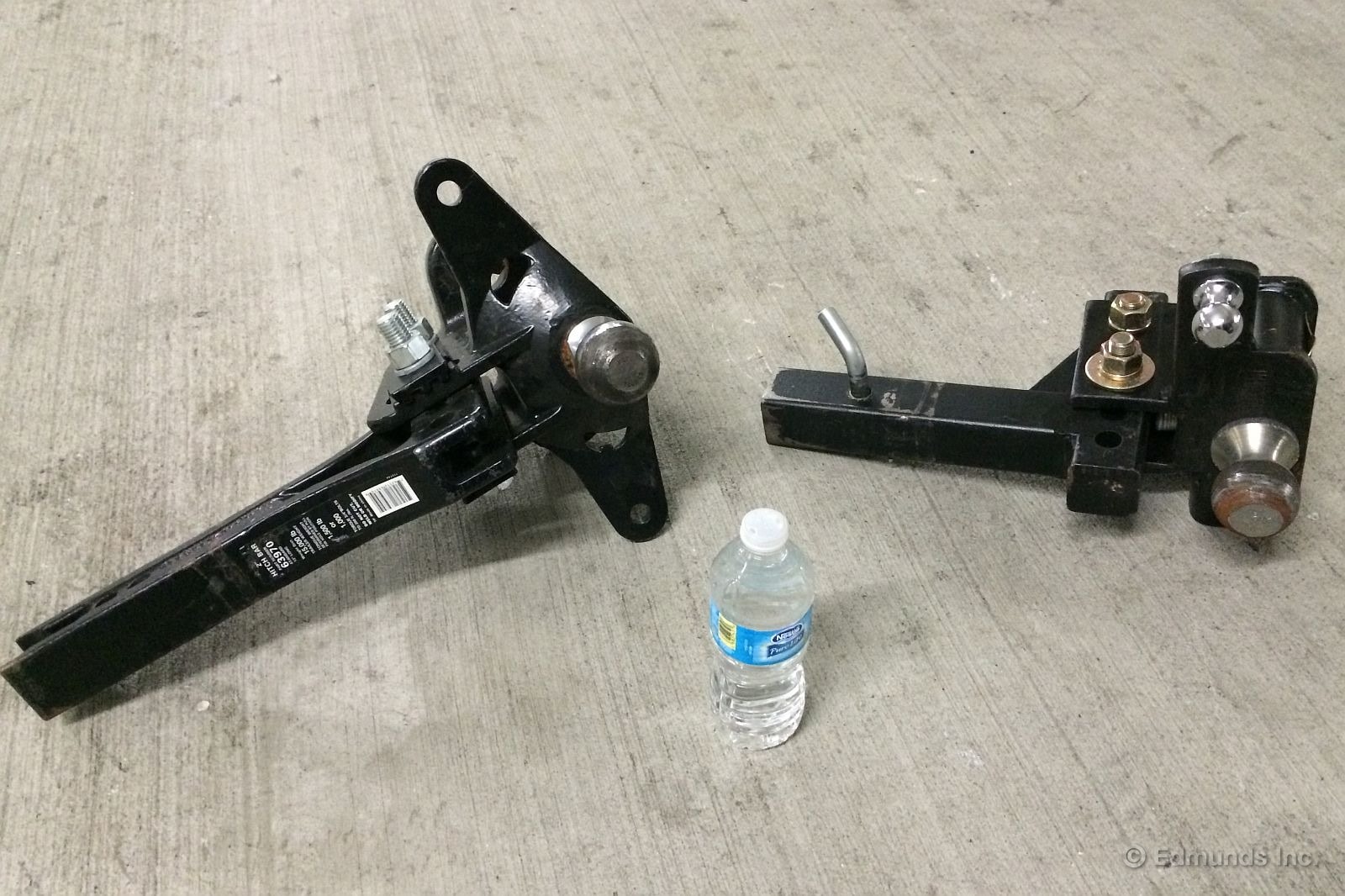
We've all heard about the most recent Tesla fire, the one that happened in Tennessee over a week ago. The driver reportedly remains a Tesla fan after hitting a "rusty three-prong trailer hitch" that was "sticking up with the ball up in the air."
As he tells it, he couldn't miss the object, which subsequently passed under the car and made hard contact. "I felt a firm "thud" as the hitch struck the bottom of the car, and it felt as though it even lifted the car up in the air."
But I haven't yet found a photograph of the actual "rusty three-prong trailer hitch" in question.
We do a lot of towing tests here at Edmunds, so we have a collection of hitch equipment in our garage. I went downstairs and inspected what we had to see if any of it made sense.
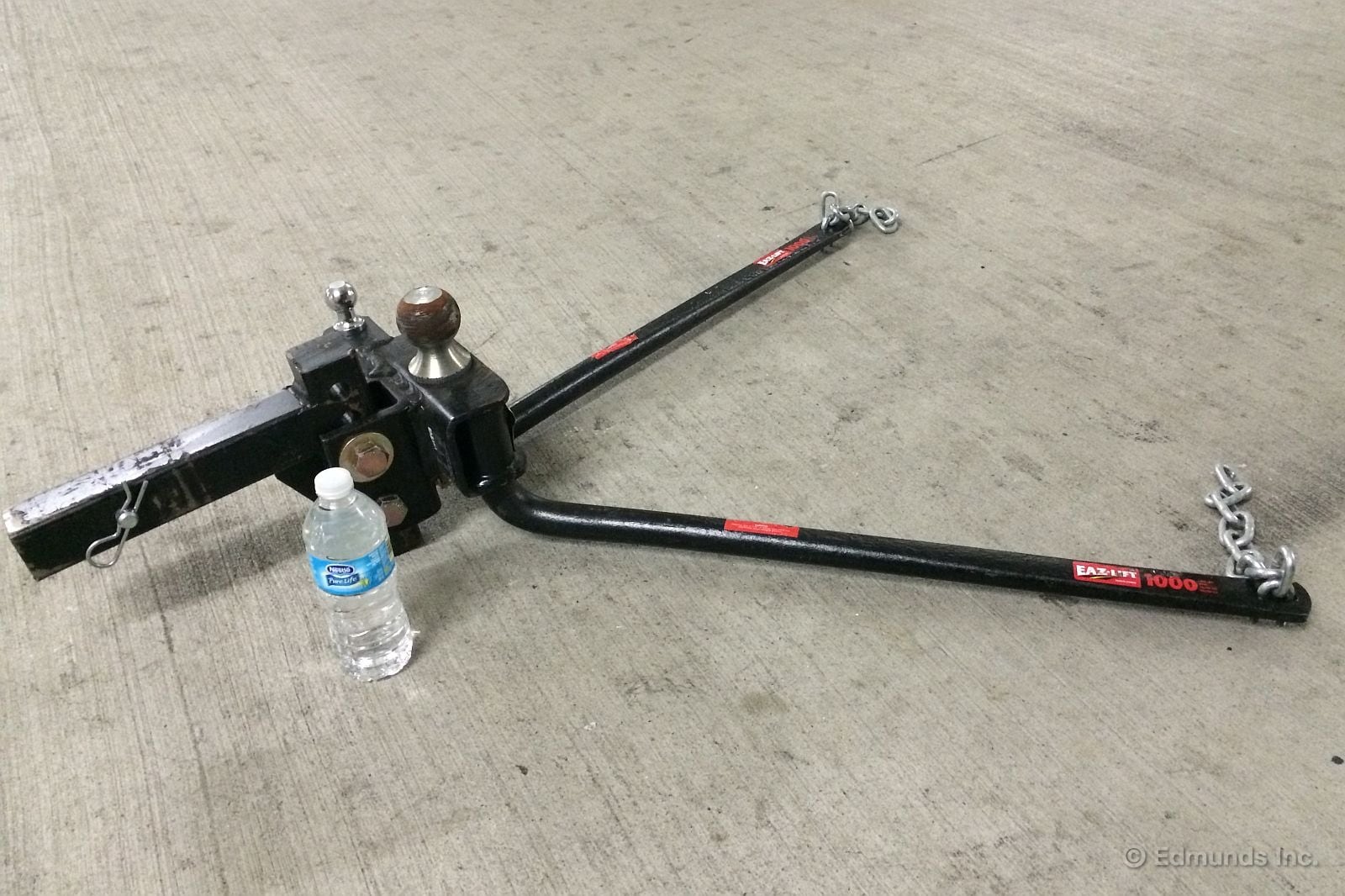
The "three-prong" description immediately brought to mind a load-equalizing hitch, a very common hitch setup that nearly all travel trailers are towed with because they tend to be quite nose heavy. The 3-foot spring bars are like wheelbarrow handles that hold up the back of the truck and distribute excess nose weight back onto the trailer axles.
But it's very unlikely the spring bars were attached like this in this scenario. They're only in place if a trailer is in the act of being towed, and no one has said anything about a trailer crash preceding the Tesla incident.
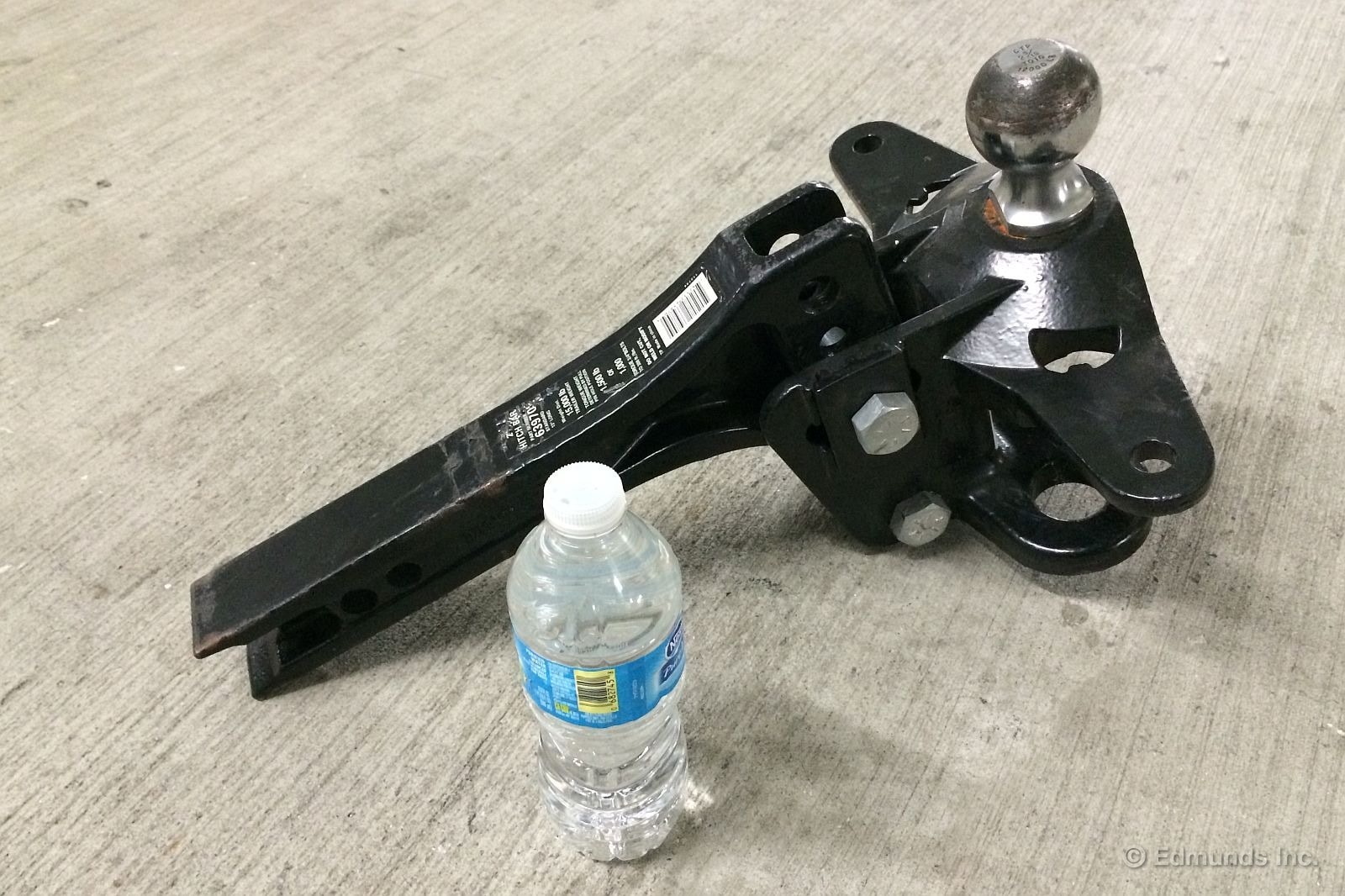
When the spring bars are absent, the hitch head indeed has a 3-prong appearance. Folks often leave this part plugged into their truck even when they're not towing. And it's easy to imagine someone forgetting to insert the secondary retaining pin and have the main pin vibrate loose and fall out.
Tesla or not, it'd be a formidable chunk of debris for any car to hit no matter how it wound up on the road. These things are pure steel. And that 2-inch shaft, the part that plugs into the hitch receptacle, is solid, not hollow. Each one of these weighs about 50 pounds, a figure that came from our own scale in preparation for our most recent towing test.
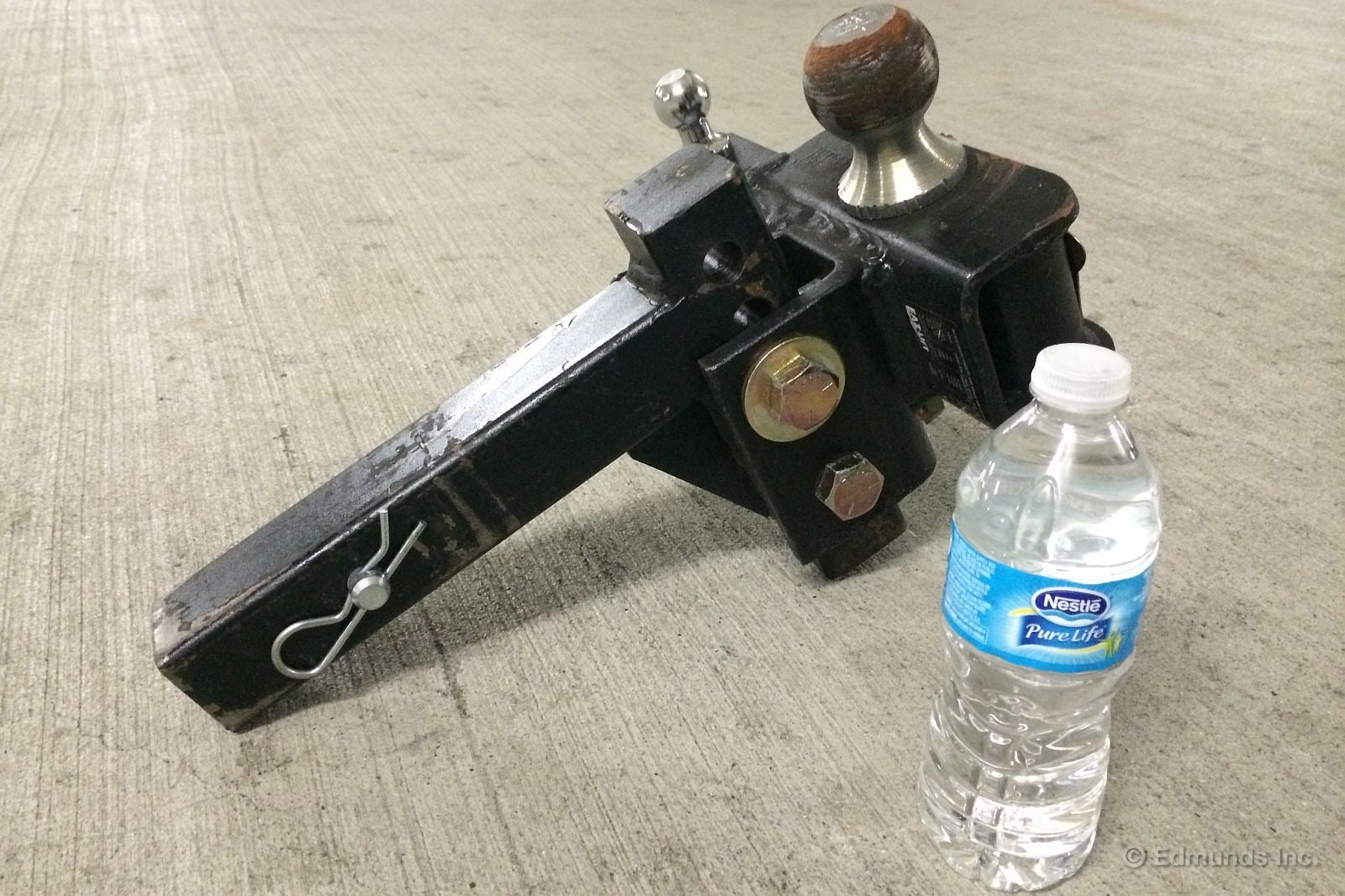
Here's the smaller of the two we own sitting ball up, as described in the driver's account. Imagine a Tesla Model S arriving on the scene left-to-right at 70 mph, the speed the Tennessee car was travelling at impact.
Like ours, that car had air suspension, so at that speed it would have been running along in Low mode with 5.2 inches of ground clearance under the battery box. My water bottle is 8-inches high. The hitch head is quite a bit taller. The math doesn't work out well.
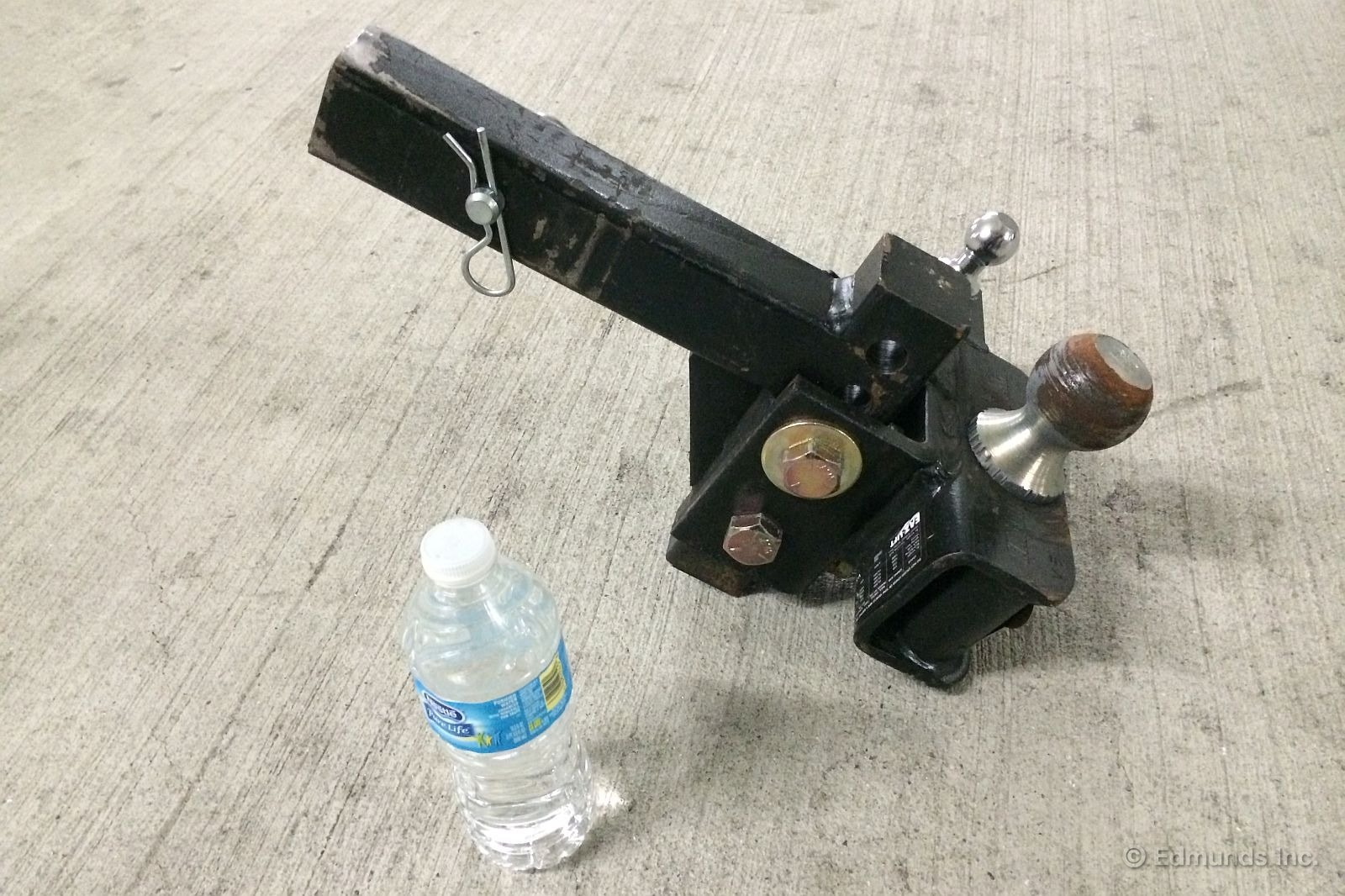
These hitches are bottom-heavy where the absent spring bars are meant to plug in. It wants to sit this way. If hit from the left, the initial impact could tip it up like this and present a 2-inch square solid steel spear to the underside of the car.
Even if it wasn't oriented in this position, it's clear an equalizer hitch like this would do major damage to any car that ran over it. And this could easily explain why he thinks his Tesla got lifted off the ground. Why the quarter-inch battery box sheathing got torn open.
So why is he still a Tesla fan? For one, the fire didn't really get going for five minutes. After the impact he got two levels of warnings, the first of which he ignored in an attempt to make it home. He heeded the second, pulled over, got out and began to collect his things. Then the first smoke appeared underneath. At this point he says he walked about 100 yards away. Flames didn't appear at the front of the car (ahead of the battery) for another two minutes.
But he also says this: "I am thankful to God that I was totally uninjured in any way from this impact. Had I not been in a Tesla, that object could have punched through the floor and caused me serious harm."
From this I take it the size of the object he hit, the thud and the lifting off the ground made a real impression on him. It's another clue that makes me think my equalizer hitch theory is plausible. Any of the above objects could easily cause "serious harm" if hit by a standard car. After all, the sheetmetal under our heels is not much thicker than a half-dozen sheets of paper. We might not have feet left if we ran over one of these.
To his point about the impact itself, the Tesla Model S's underfloor battery box represents a 4-inch thick barrier that prevents objects like this from piercing the cabin. That's no bad thing from a direct-injury point of view. He's probably right.
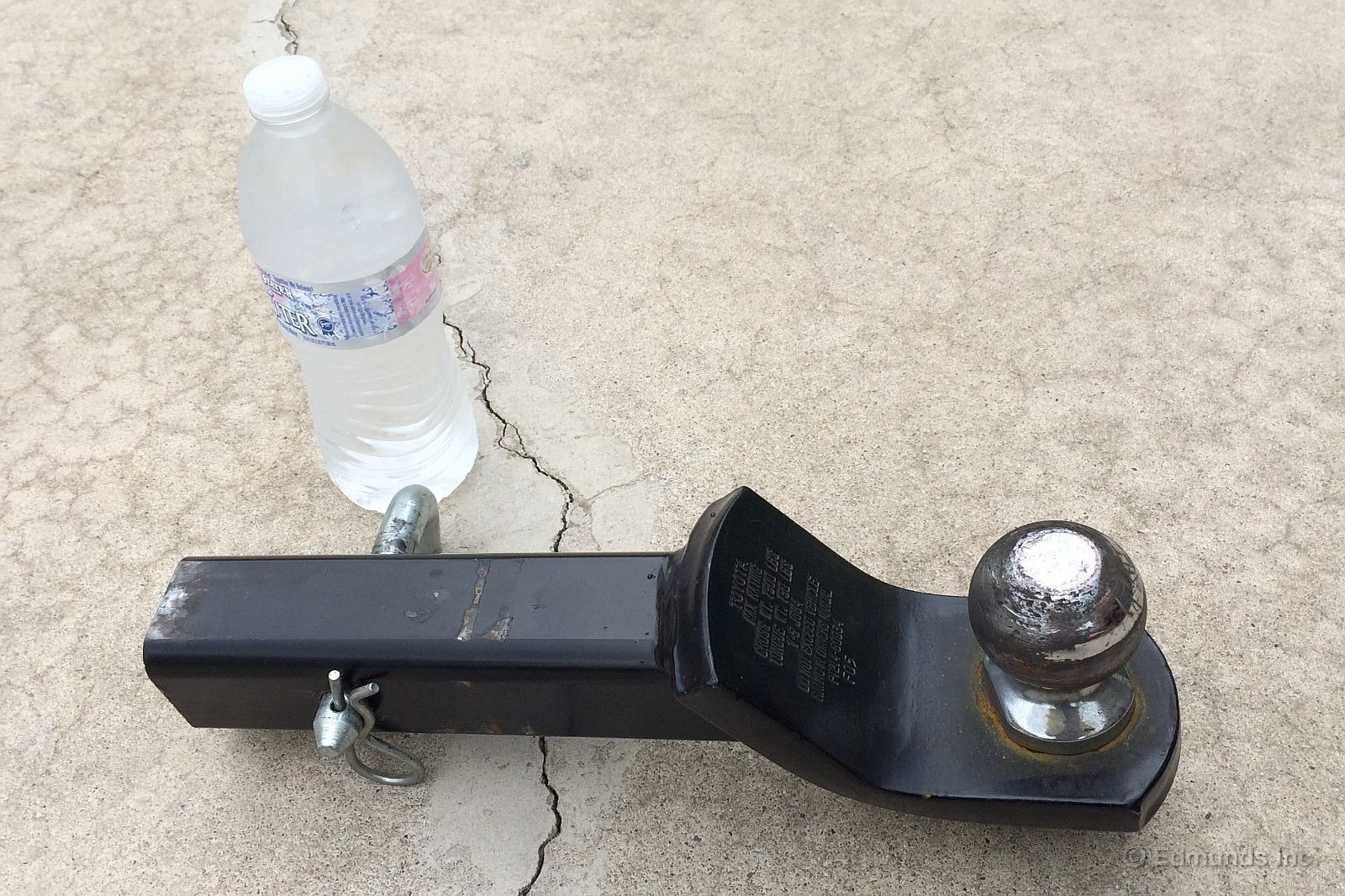
Am I overestimating the size of the hitch? Could it be a regular one like this? You be the judge. For my part, I don't see any "three prong" resemblance. And the above 2-inch receiver with 2-inch ball isn't quite 5 inches tall. It's quite possible one of these could pass cleanly underneath and make zero contact.
But this is all speculation. Tesla has not responded to my request to interview the driver or share these pictures with him to see if they are similar to the thing he hit. I'm hoping we'll know for sure someday, and that goes for the similar incident in Kent, Washington, too.
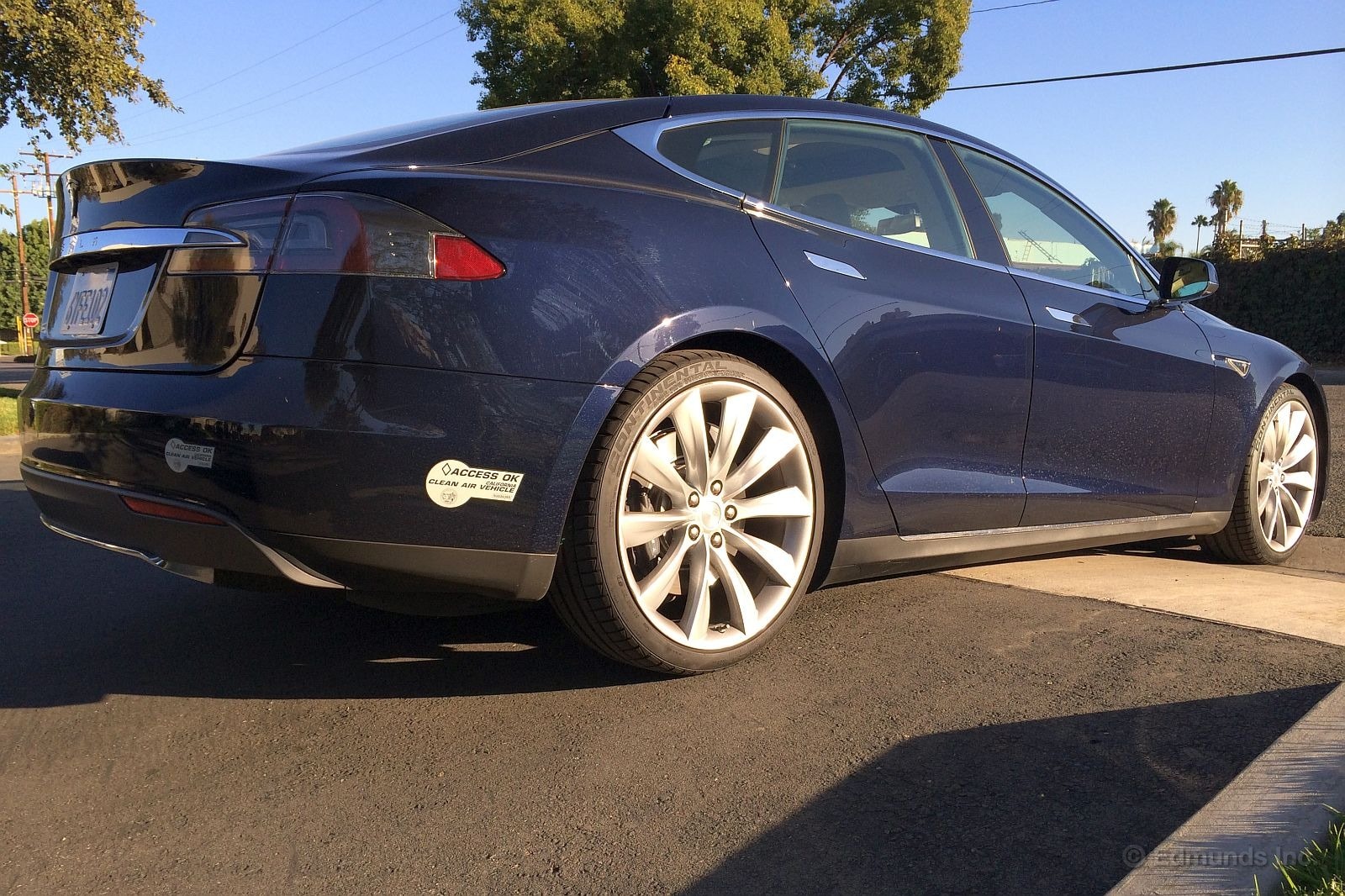
Six inches. That's how much ground clearance our 2013 Tesla Model S has according to the spec sheet. In light of recent events, Tesla is quick to point out this isn't terribly low compared to other cars. That's true on the face of it, but there's always more to this singular number than meets the eye.
The first question is "Where's the low point?" On a 4x4 it's usually the bulbous axle differential housing. Sometimes it's a shock absorber bracket. There's far more clearance under the middle of the vehicle. Sedans are different. The low point is usually some hanging part of the exhaust system. The rocker panel below the door isn't usually the limiting factor, but it's not far off. Still, you've got to get down on hands and knees and peer underneath to identify the point of first contact.
Knowing this, I was surprised when our 2013 Tesla Models S grounded out (mildly) when negotiating the above driveway, which didn't appear to be particularly unusual when I approached. Yes, the sidewalk is a bit higher than the parking lot, but I certainly didn't feel the need to come at it diagonally as I might have if I'd been in a lowered machine.
Two things: The Models S rides on a generous 116.9-inch wheelbase and its 6-inch low point is pretty much the entire underside of the car between the wheels. The battery box is a huge gray monolith, so the low point is a vast plane instead of a single point on a single drooping component. Technically, the low point occurs on the inch-wide rub/reinforcing strips built onto the surface, but even these run the entire length of the box in several bands.
If the plane theory holds true (or true enough as makes no difference), we can easily figure the Breakover Angle by assuming the low point applies at the midpoint of the wheelbase. The answer: 6 degrees.
Our Model S has air suspension, but the brief scraping stopped just as I was beginning to consider selecting High 1 via a virtual button that's buried a couple of levels in the touchscreen menus. Had I needed it, I'd have had to pause on Mount Driveway 15 seconds or so while I negotiated the menus, found the button, pressed it and waited while the compressor raised me off the reef another 0.9 inches. If that hadn't been enough, High 2 was waiting with another 0.4 inches of lift, bringing total ground clearance to 7.3 inches. The calculated breakover angles in these settings are roughly 7.0 and 7.4 degrees.
There's a Low mode, too, and it automatically drops the Tesla 0.8 inches at highway speeds to improve aerodynamics. As a result, the true running ground clearance of a Model S at speed is 5.2 inches, about the same as the length of the newest iPhone.
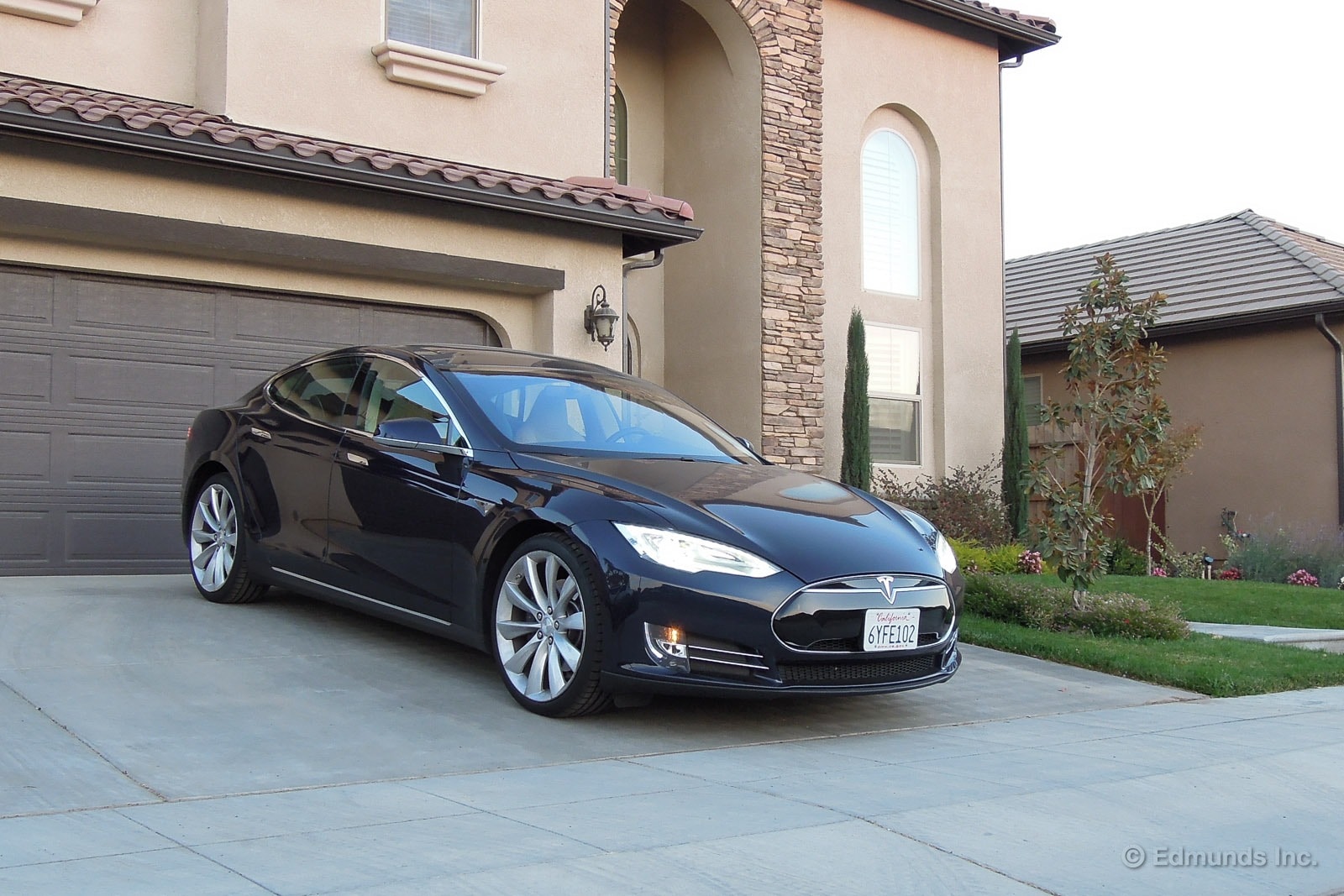
Last month we posted an update on our 2013 Tesla Model S about charging at an RV park. Basically, we used the Model S's included charge cord adapter to connect and recharge from a NEMA 14-50 receptacle, which is a four-prong, 240-volt outlet (yeah, pretty much a dryer outlet).
In the update Dan Edmunds wrote after successfully charging our Model S at the RV park, "You could even have an electrician install a 240V, 50-amp NEMA 14-50 receptacle in your garage instead of paying a grand or more for an SAE-compliant Level 2 charge station."
Well, I just happen to have exactly that setup at my house.
The NEMA 14-50 in my garage came about when the house was built a few years ago. I asked the builder if they could install a 240-volt outlet. It could be used for a clothes dryer, but my thinking was that it could come in handy some day for home-charger pre-wiring or actual electric car charging. Finally, some three and half years later, it finally did with the Model S.
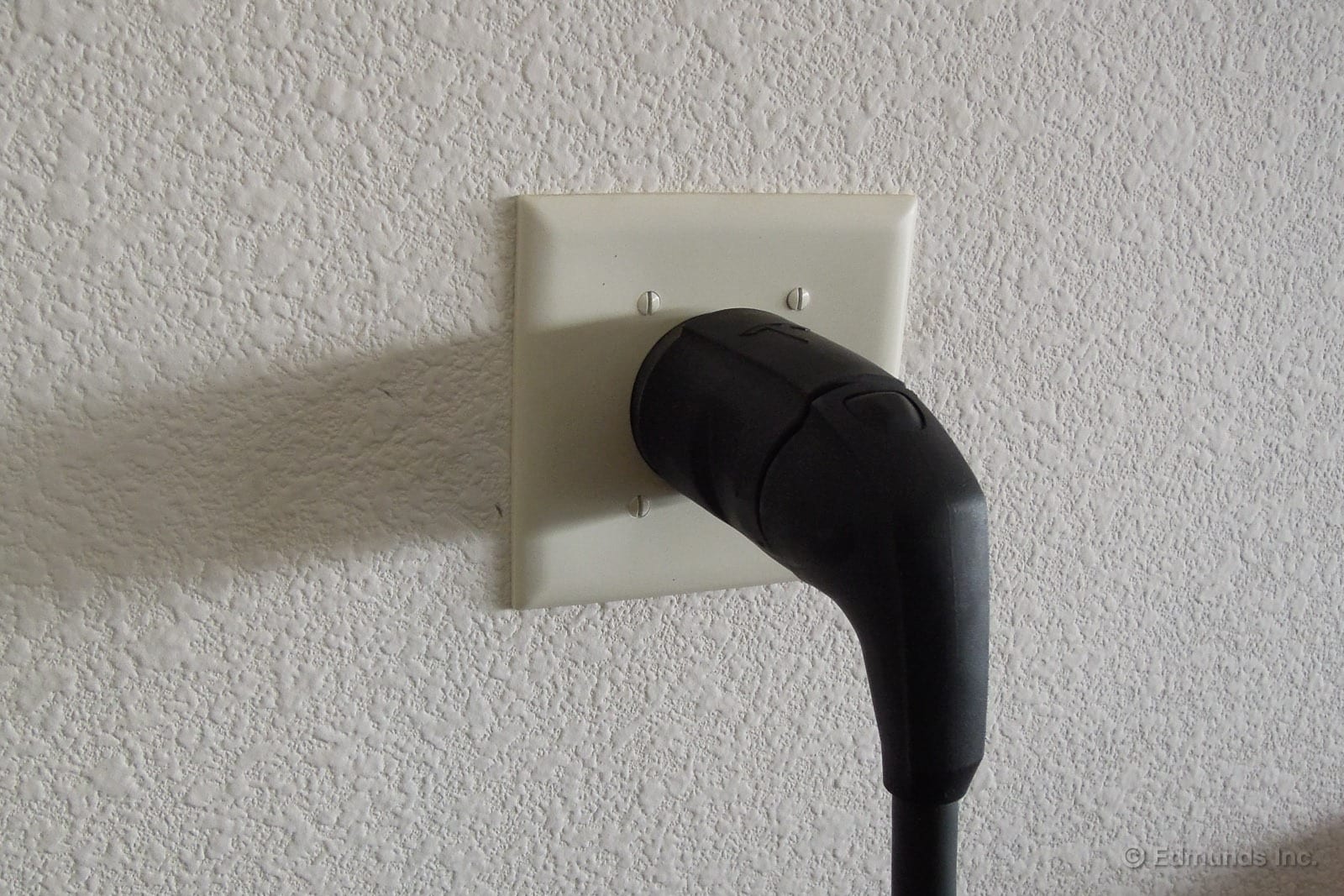
I did have to confirm that outlet's fuse breaker was rated for 50 amps, which it is. But other than that, the process was super easy. I just connected the four-prong adapter to the Tesla's charge cable, plugged it into the wall, and then plugged the cable into the car. The car immediately started taking a charge.
It's a fast charge, too. As Dan also noted in that RV update, the NEMA 14-50, because it's rated at 50 amps, flows more power than the typical Level 2 charge station. Using this setup in my house, I can recharge 29 miles worth of range per hour of charging.
I suspect the typical Model S owner would still want to have the Tesla's High Power Wall Connector installed given that it charges even more quickly and allows true tracking of energy consumption. But I think it's pretty cool that I'm one of the few members on our editorial team that can charge the Model S at my own house with 240-volt power.

Recently our 2013 Tesla Model S received notification (through its cellular connection) that a software update was available. Just like on a PC, you can download it immediately and install, or schedule a time of your choosing.
As you can see in the photo, the update added a variety of new enhancements. But there's one thing that isn't listed: as of 5.8, Tesla changed the way the vehicle's ride height adjusts lower using the air suspension at high speed.
Using the Model S's touchscreen, you can adjust the ride height if the car is fitted with the optional air suspension. The main modes are Very High, High, Standard and Low. The Low mode automatically engages at highway speeds (60 mph and above) to improve aerodynamic efficiency. Or, at least that's the way it used to work. While the option for Low still appears on the screen, its functionality is largely disabled as of the 5.8 update.
Having read about this on the Tesla forums, it seems some owners initially suspected that the change was due to Tesla being proactive about the car's recent news exposure regarding striking road debris and catching fire. However, other owners have determined that it's potentially a software bug, as Low now only engages at speeds above 97 mph. (60 mph converts to 97 kph.)
I've verified that Low on our car no longer engages in the way Tesla originally said it is supposed to. But I haven't driven it at speeds above 97 mph to check that aspect, either.
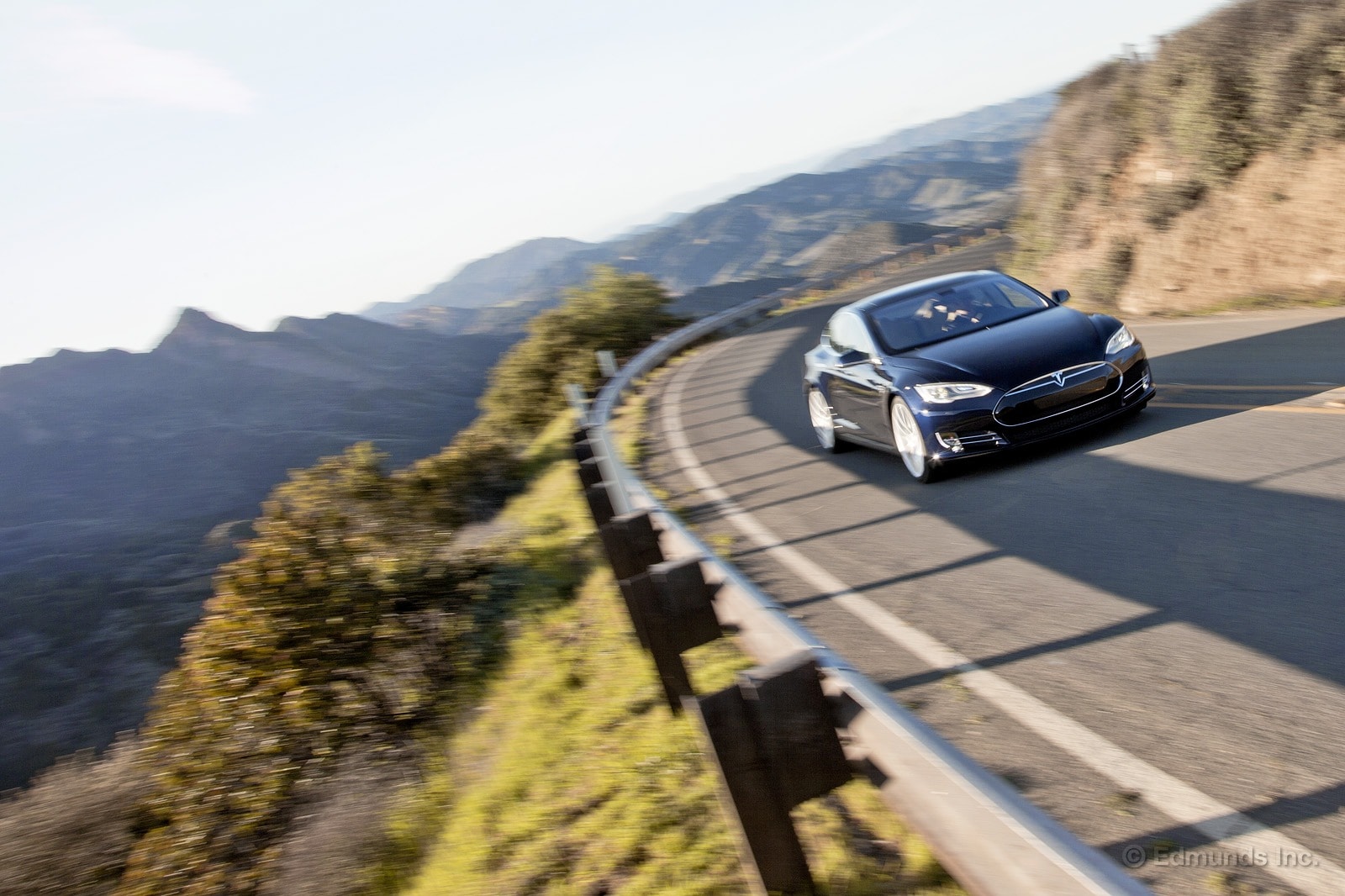
A lot of cars turn heads on the road but I've noticed that our 2013 Tesla Model S tends to attract attention from people who look like they could genuinely afford to buy one. That guy in the Mercedes-Benz S-Class who's crawling down the 10 freeway in bumper-to-bumper traffic in the lane next to me? Yeah, he's swiveling his head to get a look. Eyes on the road, buddy. People with means can be a pretty jaded bunch so it speaks well of the Model S that it's able to stand out and catch the eye of this hard-to-impress demographic.
In her recent "Drive By Numbers" column, senior analyst Jessica Caldwell presents some research that supports the idea that the Tesla Model S is seen as a desirable new toy by the wealthiest car shoppers. According to her analysis, the Model S is the most registered vehicle in 8 of the 25 wealthiest ZIP codes in the US. For example, it's the most popular vehicle in Atherton, CA, where the median home price is a hefty $6,665,231.
Buying patterns among the very wealthy can often forecast mass-market trends, and if that holds true in this situation, the future of the Model S looks quite rosy indeed. Get the full story in Jessica's column.

With the holidays just around the corner we figured it was time to start putting together a gift guide that will help you select automotive-themed tokens of affection for your nearest and dearest. This year we decided to go big or go home.
In addition to more practical selections like utensil sets for tailgaters and a deluxe road safety kit, we've included some high-dollar items for those with very deep pockets. For example, there's a Ferrari surfboard that will set you back almost two grand, and a Lamborghini Murcielago desk that, at over $10,000, doesn't come cheap.
But the priciest item in our gift guide is the Tesla Model S. The Model S is proving to be a fast favorite with wealthy car shoppers. If you've got folks on your list with stratospheric earnings (and if you yourself are similarly loaded), consider stuffing a stocking or two with this handsome example of electric transportation.
Our full 2013 holiday gift guide is located here.
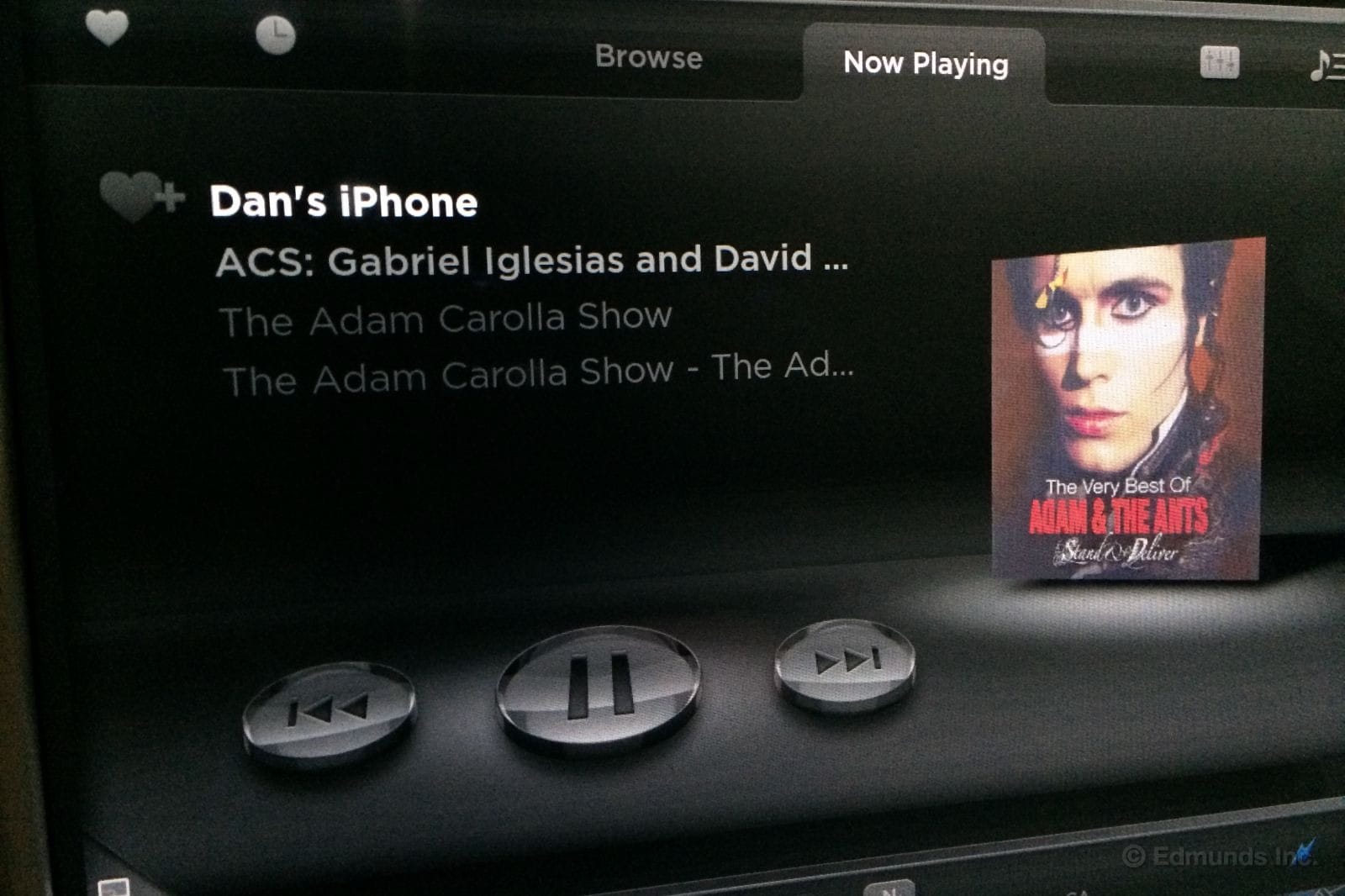
Let's clear this up right away: I don't have any Adam and the Ants on my iPhone. I only have two of their albums on vinyl at home.
I first ran into the problem I'm about to describe when we tested Elon Musk's own Tesla Model S last year. It started soon after I paired my iPhone, being extremely careful not to delete Elon's in the process, and began streaming audio.
As I do today, I listened to a combination of music and podcasts. The system was great at displaying the appropriate album art when songs were playing, but it never could sort out podcasts. The screen was never blank; it always put up something. But it was always some album I didn't recognize from my own playlist.
I chalked it up to some weird prototype glitch.
Fast-forward to our own 2013 Tesla Model S and it's the same story. Music is fine, but a podcast playback never brings along the matching podcast logo from my phone like many other cars manage to do in streaming mode. Instead the Model S seems to be searching the cloud for the corresponding album art.
In this case it went out in search of Adam Carolla and came back with the next closest thing: Adam Ant.
Yeah, they're pretty much the same guy.
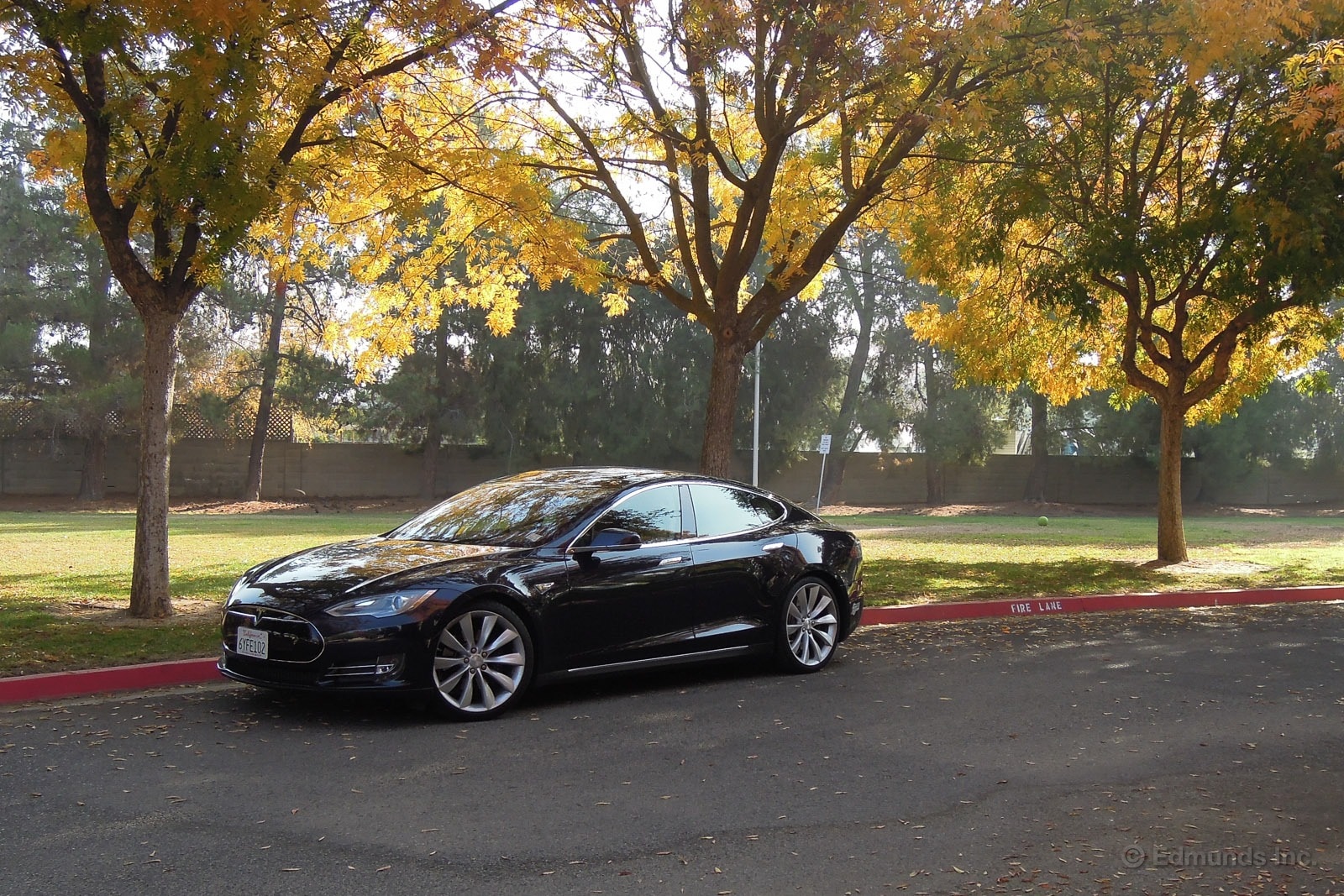
Recently I was chatting with a friend who wanted to know what I thought of our 2013 Tesla Model S, so I ran through some high points. He seemed impressed, but concluded that he "couldn't ever own a car that doesn't have a cool-sounding engine, like a V8."
I get where he was coming from. Sound can be a key element of a car's personality, particularly if you're a car enthusiast. But having spent multiple days in our Model S, I've come to greatly appreciate the opposite: the silence.
After a while, it's just really nice having a car that's quiet at stoplights, in neighborhoods and around town. No engine rumbling, no gear shifting, no exhaust. It's relaxing.
This became clear to me on a weekend morning. I was out with my family in the Model S. My wife was up front, and my two kids were in back. We were just rolling along in town, windows open, enjoying the nice fall day. We came up on an old 1970s Plymouth Barracuda convertible. A nice classic car, no doubt, but the guy had loud aftermarket pipes on it, and the thing was running so rich, and the exhaust so potent, that I had to power up the Tesla's windows and quickly (and quietly) zip past him.
It was a contrast in old versus new. Maybe you do give up a little personality with electric. But for everything else, it's a future I'm looking forward to.
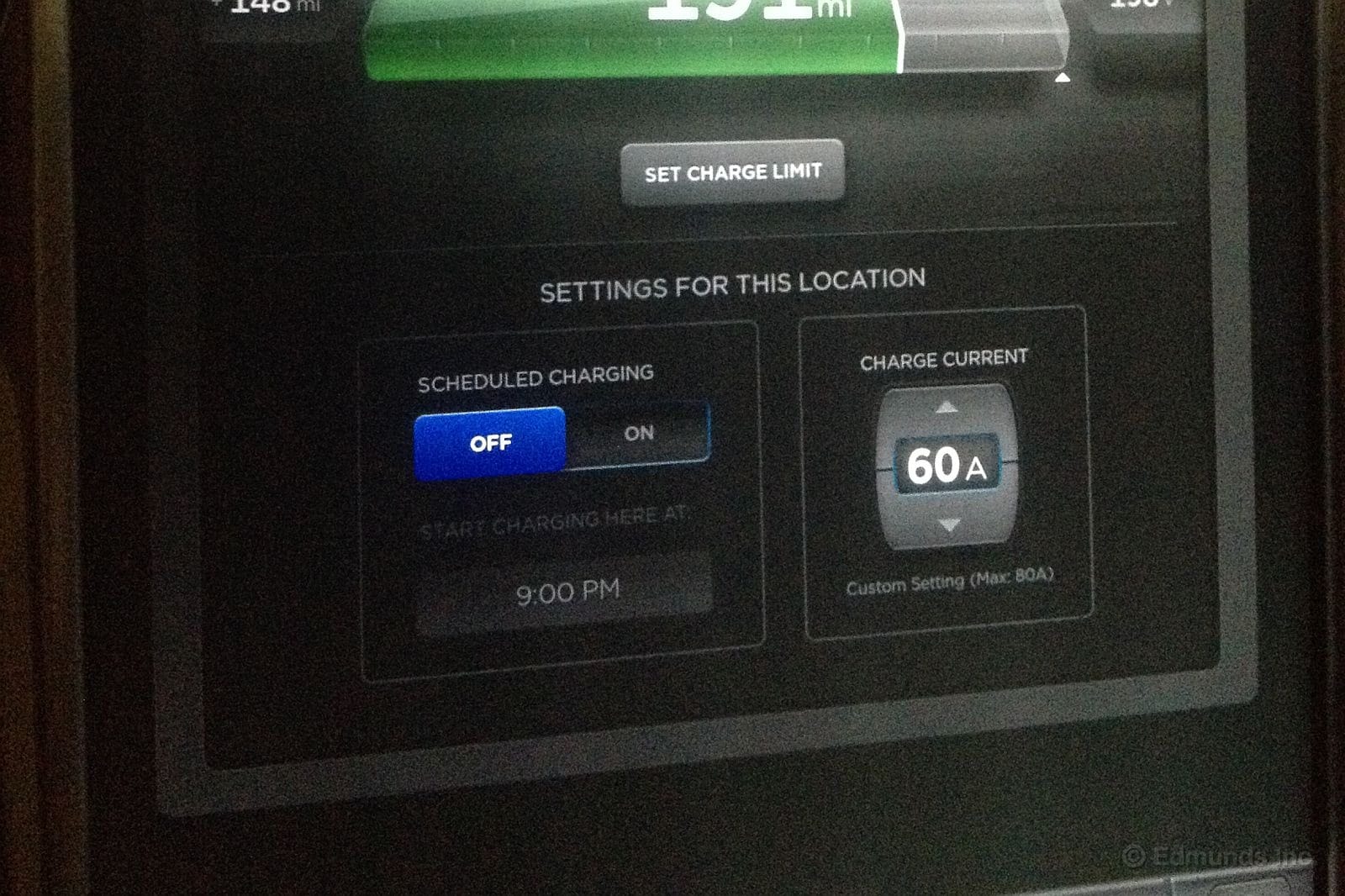
Since the April-May timeframe all Tesla Model S sedans like ours have been operating under firmware restrictions that dialed back the default charging rate of Tesla's HPWC (High Power Wall Connector) to 60 amps instead of the 80 amps they were designed to deliver.
This was done because fuses were popping left and right inside the early HPWCs. Tesla sent out the charging restriction in one of their periodic over-the-air firmware updates as a temporary fix while they worked out a hardware solution.
All of this went down without a recall because the fault was not onboard the car itself. And a large number of Model S owners were oblivious because they do not own or use a Tesla HPWC for charging.
Because ours was one of many HPWCs affected, the 60-amp default remained in effect even after our replacement unit with uprated fuses was installed. We've been able to charge at 80 amps, but only after manually punching up the charge rate to 80 amps after first pushing past an "Are you sure?" screen each and every time.
Until last week.
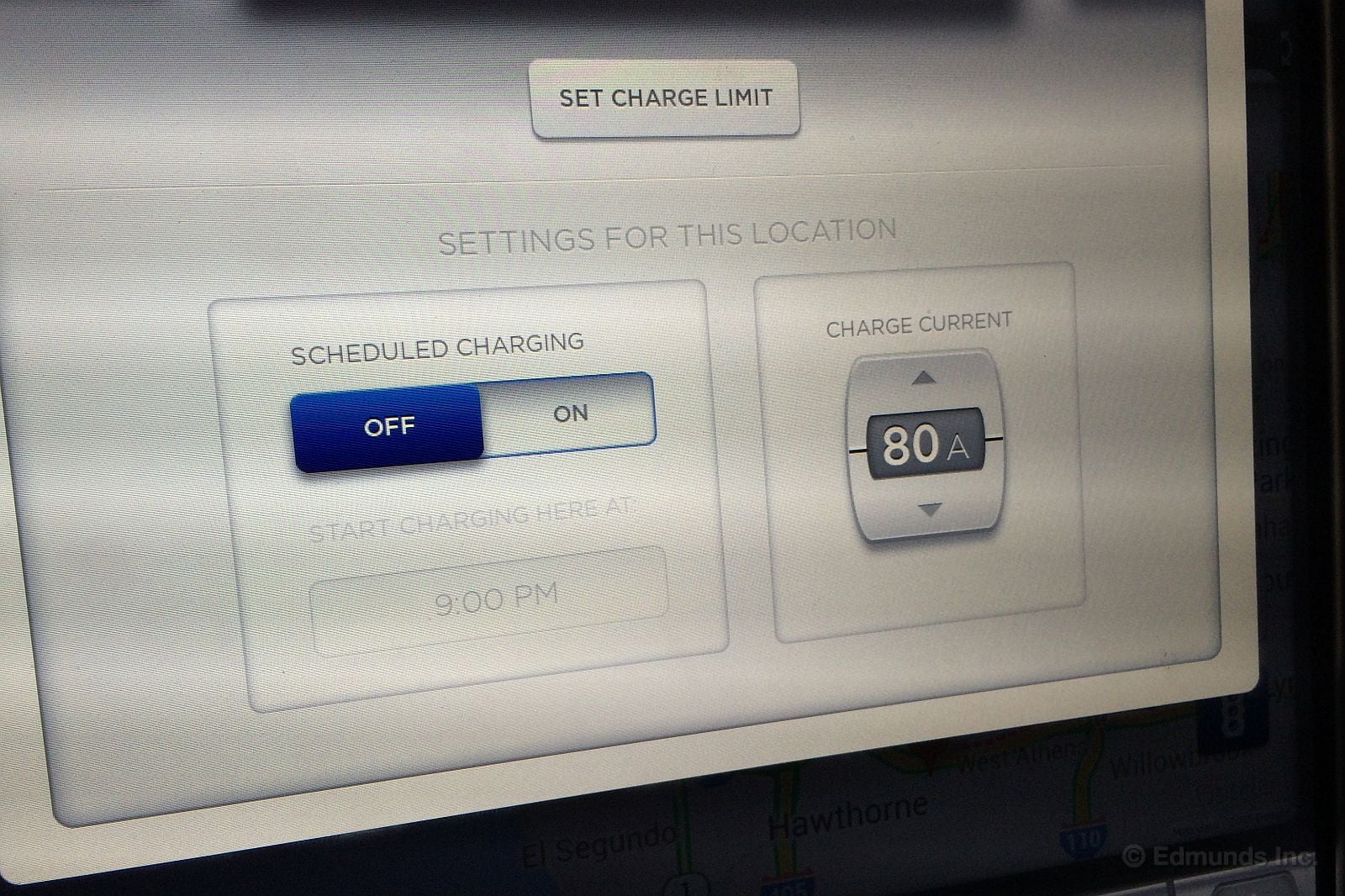
Per my usual routine I ducked inside our Tesla Model S after first plugging-in to up the charge rate to 80 amps. But I was greeted with the above screen instead. It would seem that 80 amps is the HPWC default once more. I no longer have to manually access it as a "custom setting" by tapping the up-arrow 20 times. Huzzah!
I swear it wasn't like that the week before Brent drove the Model S to Fresno for a spell. I can't pin down the precise date because the update must've been received by our car while it was in his hands. And he wouldn't have noticed because he was charging via the NEMA 14-50 socket he happens to have in his garage.
Anyway, it's quite a relief to finally have our HPWC working at full song. Now we just plug in and walk away, which is what we expected all along.
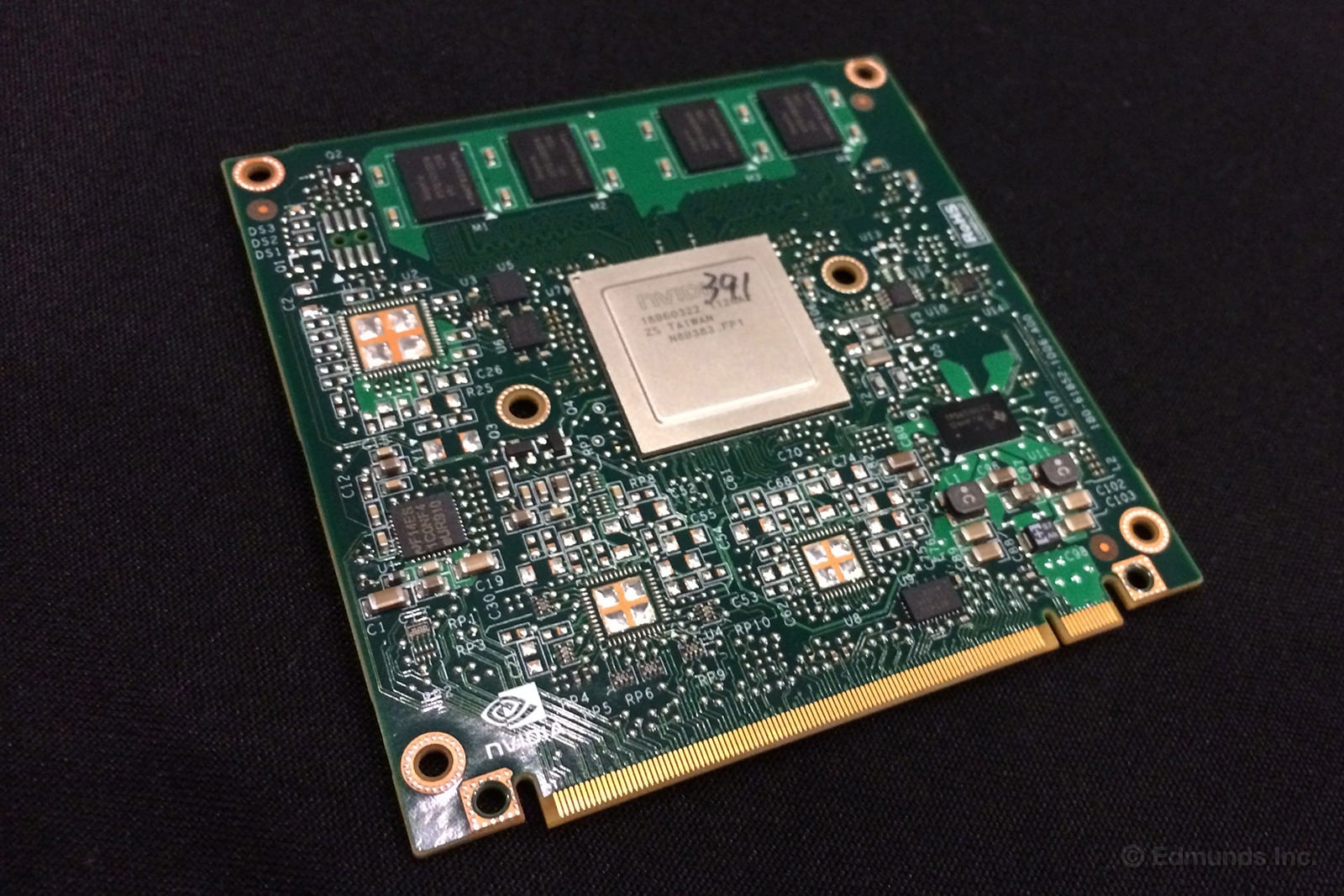
This year's L.A. Auto Show added an extra day for something called the Connected Car Expo. The Expo put a spotlight on emerging technology in the automotive industry and I was fortunate enough to be asked to help moderate a few small discussion groups. One of the first attendees I encountered was Samuel Tao, Director of Product Management, Automotive from Nvidia.
Nvidia is well known for making high-end graphics processors for PCs. As we got to talking about how Nvidia fits into the automotive space, Samuel mentioned that they make the graphics chip for Audi, Lamborghini and the Tesla Model S.
Then he pulled the above-pictured visual computing module out of his pocket and placed it on the table. He said that's the one that runs the Model S's massive touchscreen. At that point, I was wondering what else he had in his pockets, but I didn't ask.
He also mentioned that there are actually two of these processors in the Tesla. The other one handles the gauge cluster. They went with two separate units for the sake of back-up redundancy. I mentioned our earlier issues with the screen needing a restart, but we haven't had any issues since then. He didn't seem all that surprised, but was glad it was working as it should.
A lot of times it's easy to think that a manufacturer produces everything in house. As with most carmakers, Tesla seeks specialists in the field to utilize systems that have already been proven.
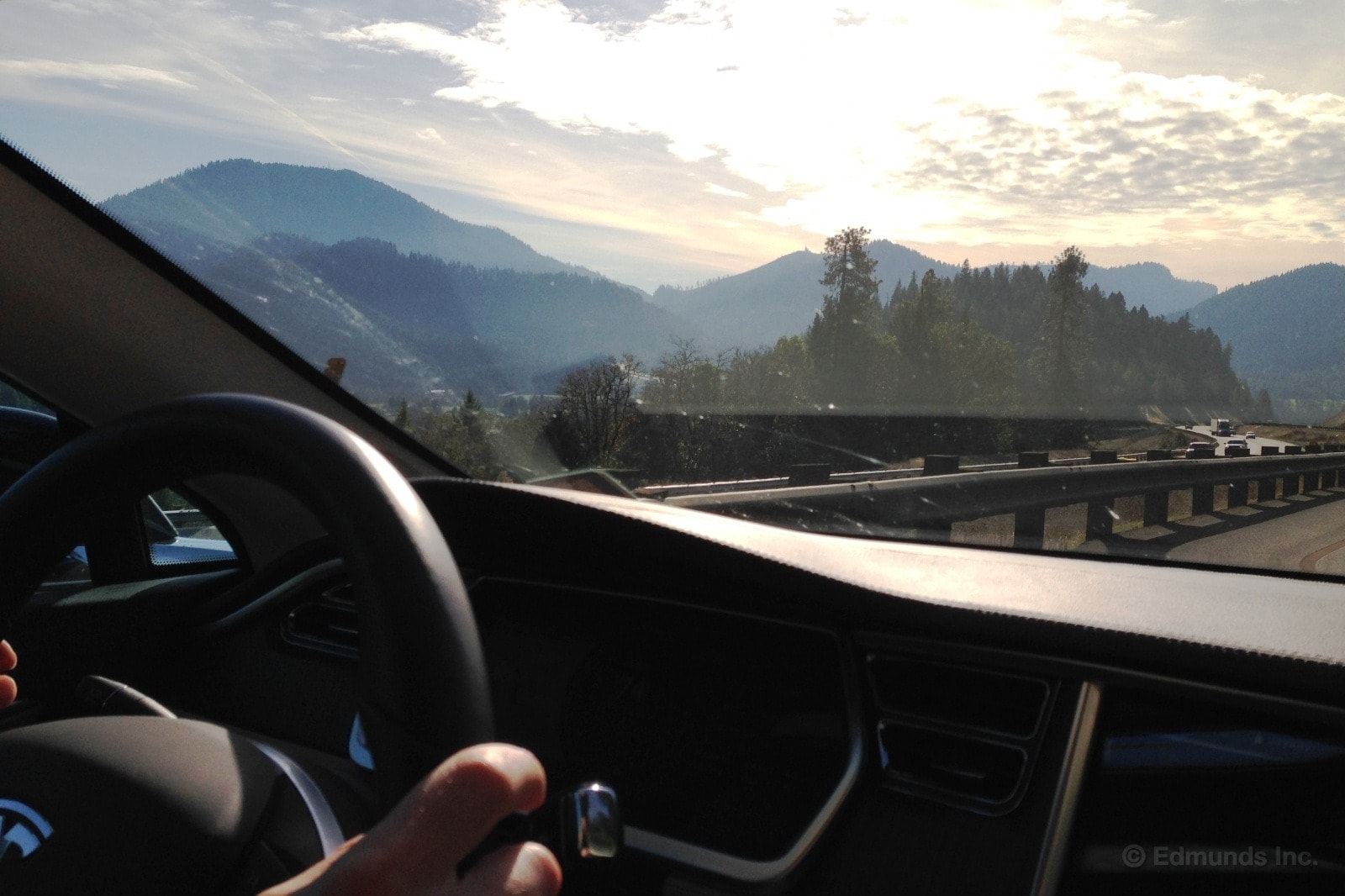
Over the holiday I drove our long-term 2013 Tesla Model S on its longest road trip yet, a 2,000-mile jaunt to Corvallis, OR, and back to Los Angeles. It dawned on me the week prior (before I'd decided which car to take) to my departure that my route would take me right along the path of Superchargers along Interstate 5.
Ah, the 5: a dreary slog of primarily two-lane, boring, straight interstate littered with drivers so oblivious they'd be hilarious were they not so aggravating. Alas, it's the most direct route between the origin and destination, and this trip is long enough that it's going to be plenty time-consuming even without sightseeing forays along the way.
In light of that route, the choice of the Tesla was kind of a natural. Sort of. I mean, there would be a lot of progress-unfriendly stopping to recharge and such, but I always tend to gravitate towards unusual vehicles for long road trips (Audi R8, Dodge Viper).
So in the coming days I'll share, in no particular order and with little rhyme and/or reason, various observations, musings, likes and dislikes from the trip. If there's something specific you'd like to know about taking an EV on a trip such as this, feel free to voice it in the comments here.
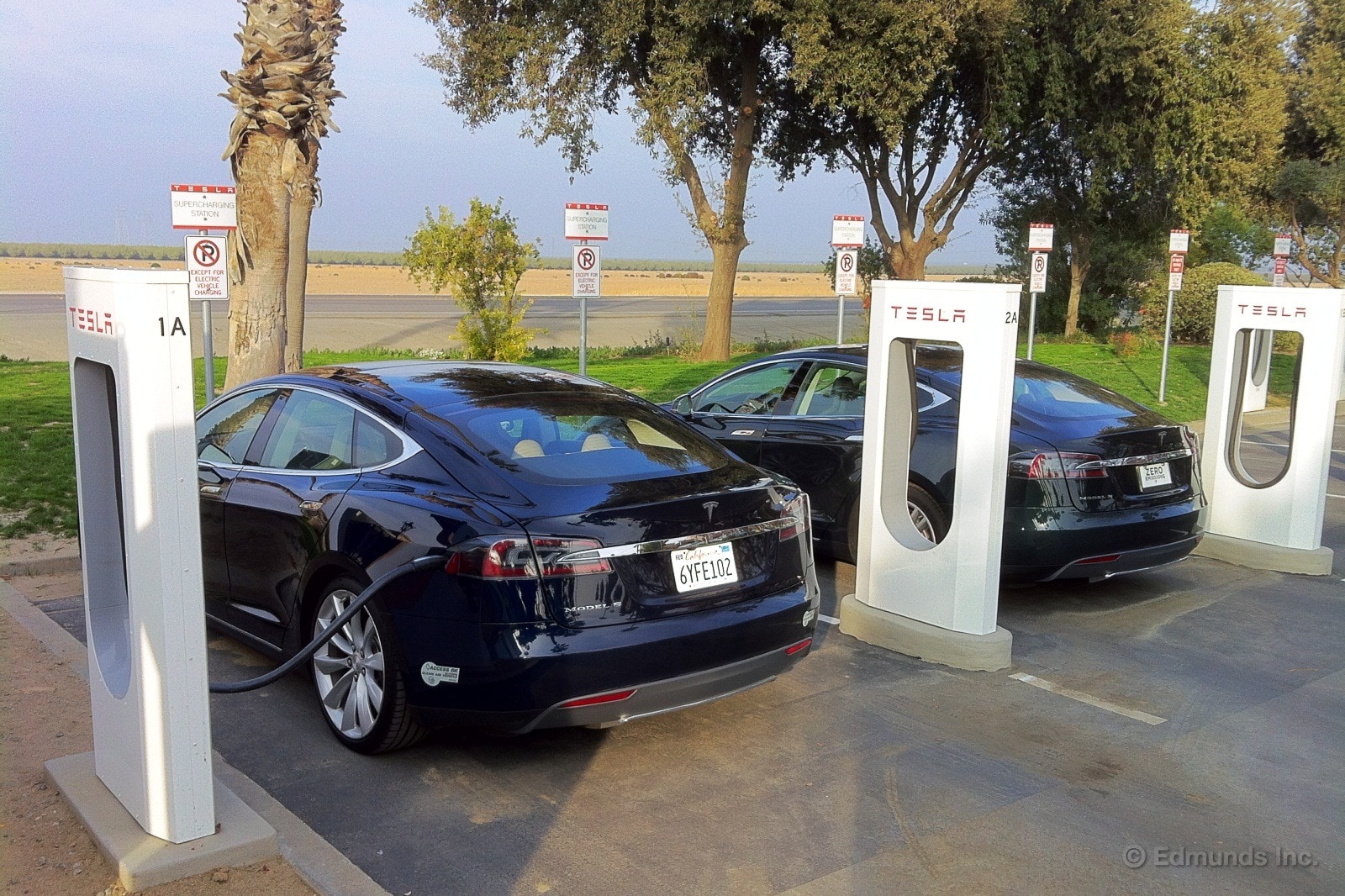
Perhaps unsurprisingly, taking a road trip in an EV like our long-term 2013 Tesla Model S requires planning. I needed to know the Supercharger locations and the distance between them.
I started out on the Supercharger landing page on Tesla's Web site. Strangely, the map there cannot be zoomed, nor are the location markers live. The map is simply an image. To sort out the actual Supercharger locations you scroll down and search the listings for one that sounds like it might be in general vicinity of location you're squinting at on the map. Chances are it's in a town you've never heard of. Good luck.
Click the address and you're taken to the page for that Supercharger location. Click the map embedded there and you go to a Google Maps version of it. One down, many to go. The bottom line is that there's no efficient way to map out a route on Tesla's site, and you have to individually cut and paste the Supercharger addresses into Google Maps.
This was to be a two-day trip: L.A. to Sacramento on day one, then on to Corvallis the next day. I originally planned to start in L.A. with a full charge, skip the Supercharger at Tejon Ranch and then do a full recharge in Coalinga at Harris Ranch (shown above) to be able to push all the way to Sacramento from there. A one-stop strategy.
But skipping Tejon Ranch was inadvisable, Dan Edmunds pointed out to me. The Grapevine is a big battery-sapper of a grade, and the prevailing speed of traffic on this route of about 70-75 mph wouldn't be range-friendly. Better to plan on simply throwing some miles in at Tejon Ranch, he said.
Dan was right. There was no way I'd have made it all the way to Harris Ranch. I ended up stopping at Tejon Ranch, grabbing lunch there while recharging, then stopped again at Harris Ranch where I twiddled my thumbs while, er, the Tesla's tank was brimmed.
While it's nice to have some shops nearby these Superchargers, the built-in catch is that your food/time-sink options are limited to whatever is within walking distance of the parked car. You're at their mercy. Making an additional stop for food (with no electrons being added at the same time) on a long trip would stretch the trip time considerably. Certainly I wasn't going to do that.
Plan on eating a lot of Starbucks and fast food when making road trips in your Model S. Or, since you're into planning ahead, prepare food in advance and bring it with you.
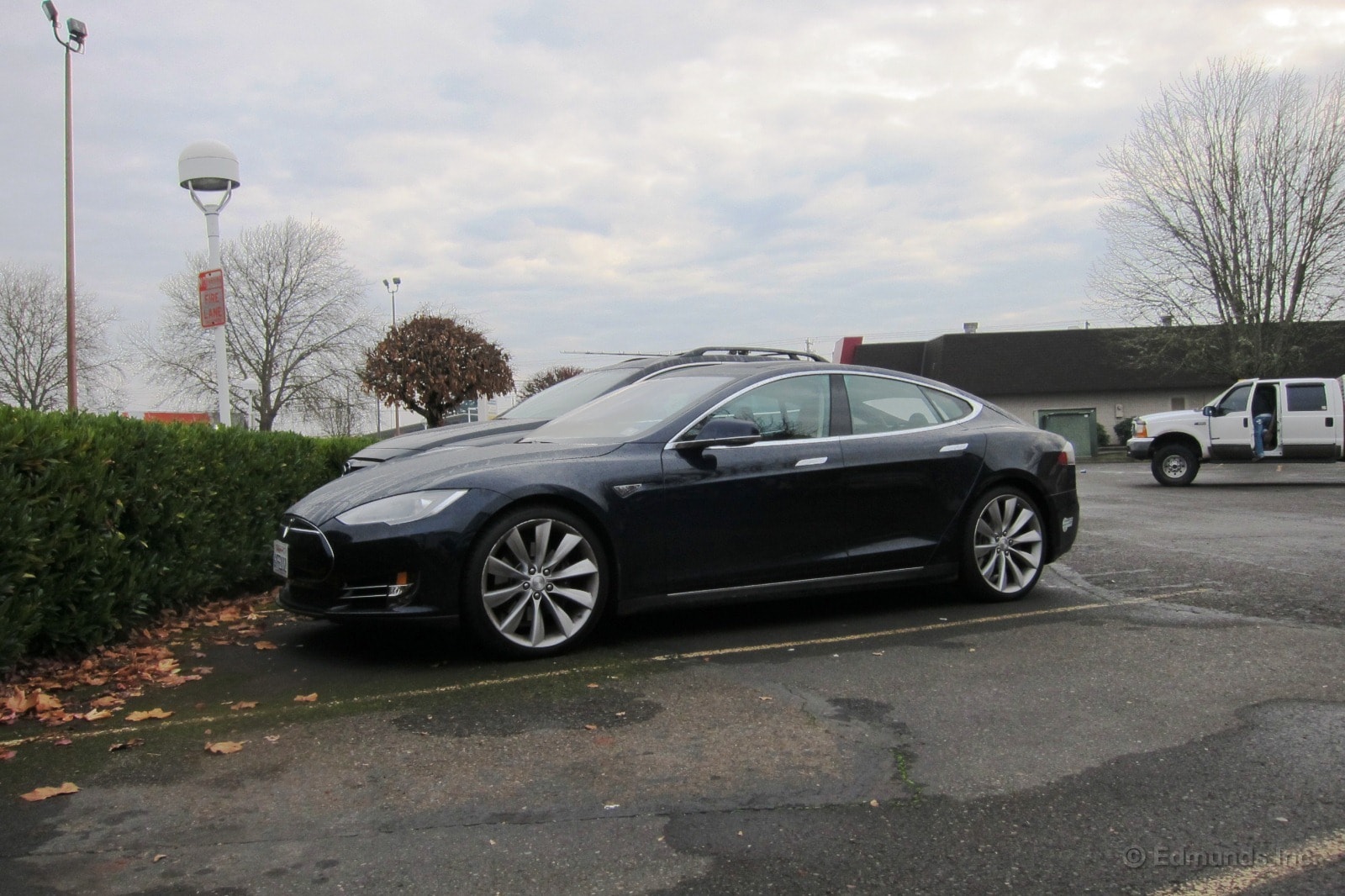
Okay, so what is our long-term 2013 Tesla Model S like to drive on a long freeway road trip, putting aside the particulars of its unconventional refueling?
In some ways, it's brilliant. Its instantaneous and seamless flood of torque is just wonderfully, brutally effective when you want to pop into holes in traffic or put some distance between you and a brain-dead I-5 driver. But that's not all. See, in the Tesla you can be stealthy. Hit the throttle in a conventional car and the soaring engine noise tips your hand. Mat the Tesla's accelerator and the car simply shoots forward. Very rapidly, I might add.
Of course, this ability must be deployed with great care on a trip like this due to the seriously deleterious effect it has on range. But, man, it sure is a nice thing to have in your pocket.
The ride in Standard ride height is supple and dispatches bumps quite effectively. In Low, the ride gets too busy as the suspension seems to bounce off its bump stops. The steering is quite good, too, as it's precise and has natural weighting around center. For a first-effort car by a new automaker, this is pretty astonishing stuff.
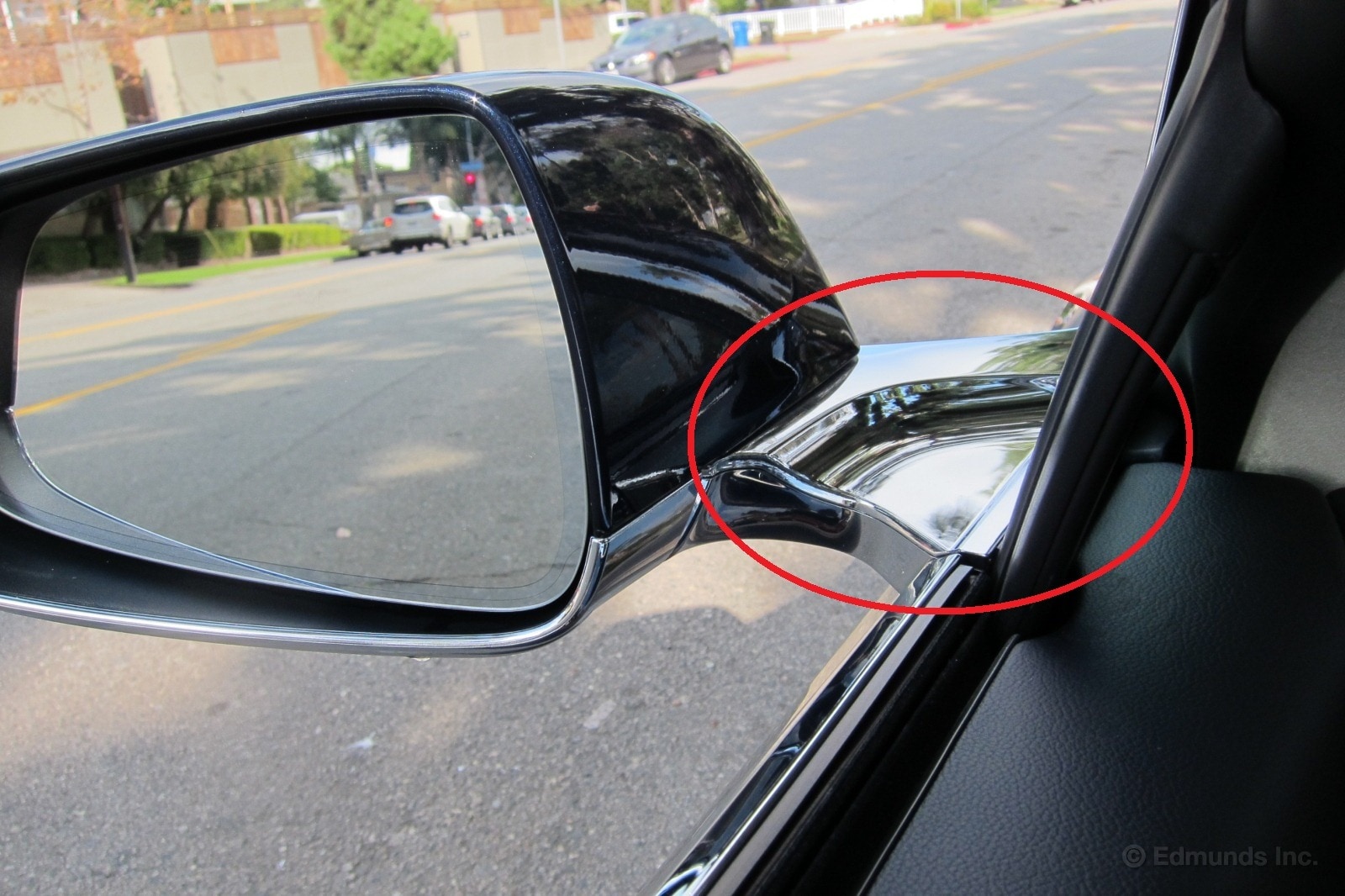
When the sun is in just the right (wrong) position in the sky, our long-term 2013 Tesla Model S throws a big-time glare right in your face. The source? The flat, highly polished chrome-like arm that anchors the side-view mirror to the car. This is no little dazzle, either. It's really obnoxious. I noticed this on the return leg of my road trip as I was heading south on I-5.
Like the goofy door handles, this mirror-finished surface is one of those form-over-function gaffes that I suspect will go away in future Teslas as the new company figures out the right way to make cars.
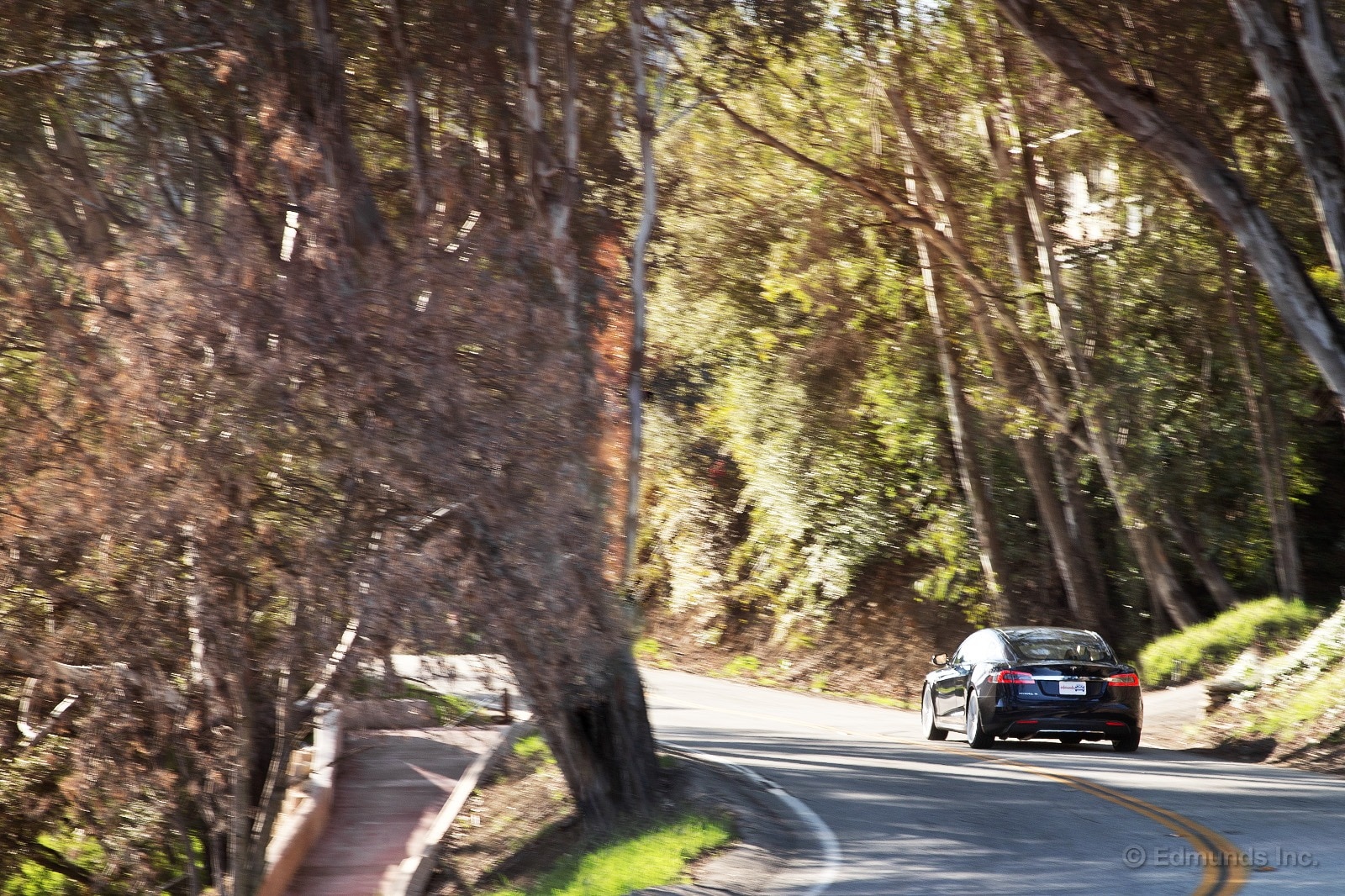
During my road trip, I drove over some coarse pavement. At the time, I thought what I was feeling through the seat of my pants and the steering wheel rim was simply road texture.
But many, many miles later it occurred to me that it might not be the pavement that was causing what I was feeling. It was, in fact, the car.
Here's what it was doing. Every ten seconds or so while traveling at about 70 mph, I'd notice a vibration (if you can call it that) that would increase in amplitude and then fade away to nothing. About ten seconds later, it'd be back. This shimmy continued, never worsening or improving, irrespective of pavement. It was most noticeable on smooth tarmac, almost certainly because rougher pavement would mask it.
Mind you, this is a subtle shimmy. Very subtle. More like a faint zizz that comes and goes. My passenger didn't notice it until I pointed it out. Then, it couldn't be un-felt.
I'm not sure what's causing it. Could be something as simple as an out-of-balance tire, though the periodic nature of this shimmy is unlike any tire balance-related shake I've ever experienced.
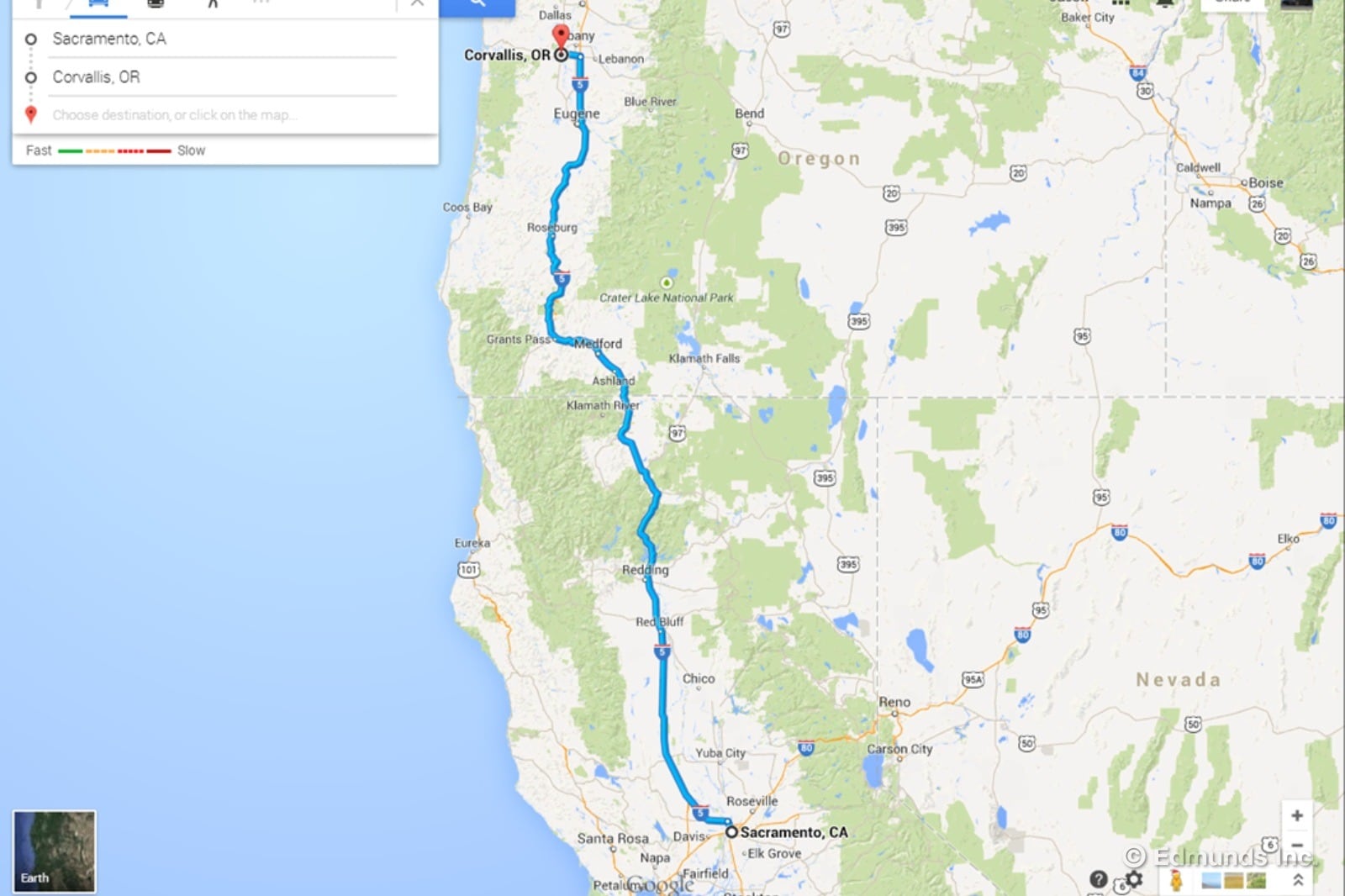
Admission: I sort of cringe at the expression "range anxiety." It's a trite, too-easy sound bite in any discussion of EVs. But in this case, it's apt.
It happened during the 139-mile stretch between the Superchargers at Grant's Pass, OR, and Eugene, OR during my recent road trip in our long-term 2013 Tesla Model S.
I'd left the Grant's Pass Supercharger with an ample cushion of miles in the car's battery. See, up to this point in my trip I'd observed that the "rated range" display in the Tesla's instrument cluster had been optimistic by 15-20% compared to actual driving conditions. To compensate for this reality, I'd been charging with a commensurate buffer of miles in addition to that necessary to reach the next Supercharger. No problem. In fact, at Grant's Pass I'd even thrown in extra miles on top of the buffer. Good thing.
While on the road I periodically compared the rated range to the miles remaining to my destination (as shown by the nav). It's something you find yourself doing out of habit in this car. And at one point after leaving Grant's Pass I saw that my buffer of extra electrons was being consumed at an alarming rate.
I'd been driving conscientiously, not running A/C at all on this trip, no heated seats, and just keeping the temp at a reasonable delta over ambient so as not run the heater too hard. Cruising speed was between 70 and 74 mph. No unduly abrupt or large throttle inputs. So far, it was an approach that was working well. But the terrain on this stretch, it turns out, was much hillier than previous legs, and it was quickly gobbling up range.
Once it became apparent that the rate at which the rated range and the digits on the nav display were attempting to converge could conceivably result in a bad day, I turned it down to 65 on uphill sections. Very shortly afterwards, I locked it at 65 at all times. Then 60. Then 55. We were crawling. I turned off all unnecessary current draws. The instrument panel was dimmed to its lowest setting. No radio. No iPods. Just trundling along the near-empty freeway at night in a $94,000, 461-hp car like a Prius driver. At least I wasn't camping in the left lane.
I rolled into the Eugene Supercharger station with 8 miles left in the tank. In retrospect this sure sounds like ample extra range so what's the big deal, but I have to admit that I was watching those digits like a hawk for most of the leg. And I was counting on no curveballs being thrown at me along the way. Had there been an unexpected freeway detour or an exit closure, I might have been calling a flatbed.
Instead I plugged the Tesla in at the Supercharger located behind the Holiday Inn in Eugene, OR, and walked away. It was in the low 30s outside. I found the nearest restaurant and had dinner.
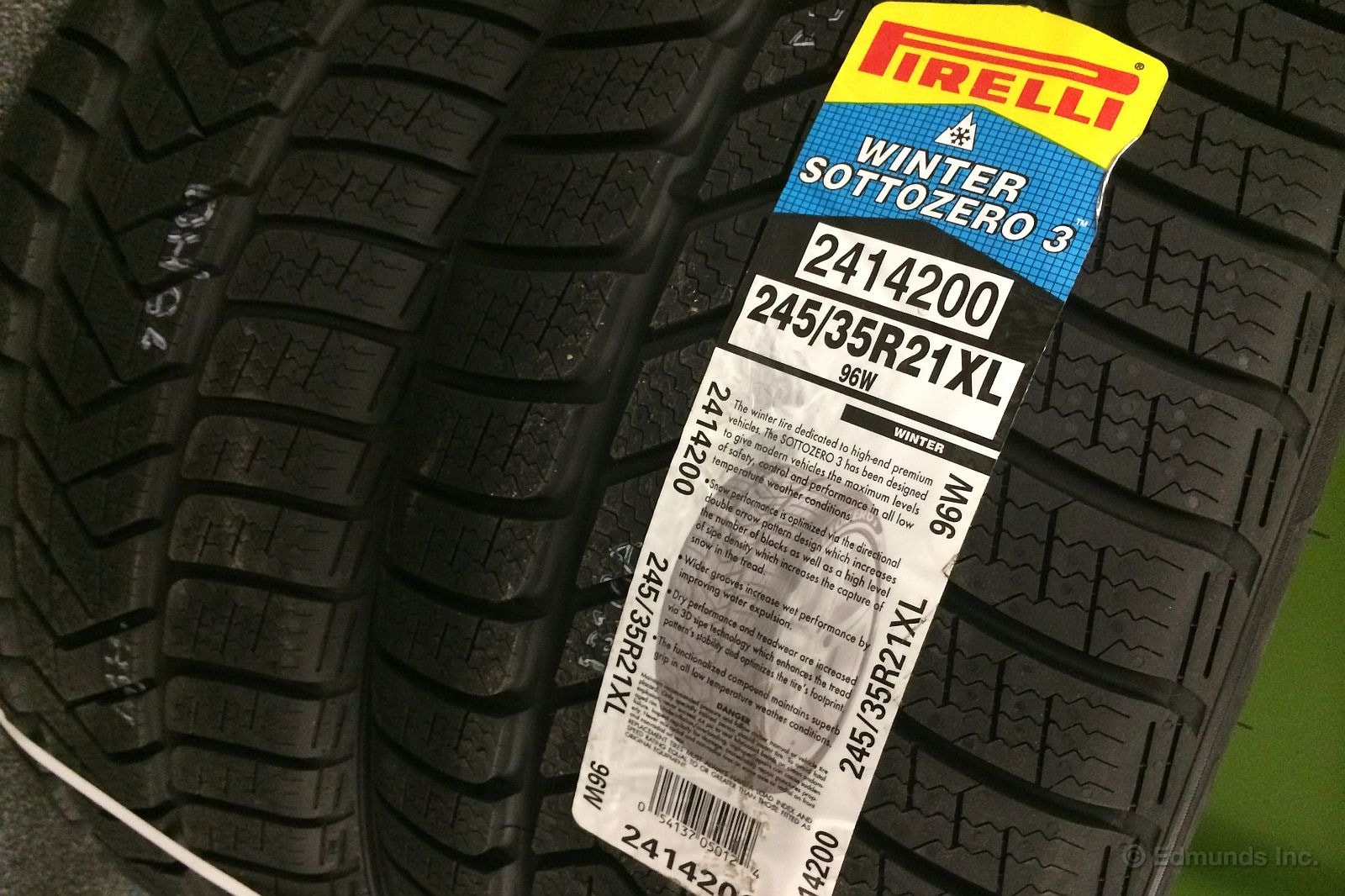
We don't plan on shying away from cold and snowy weather when it comes to driving our 2013 Tesla Model S this winter.
In the immediate future I'm driving it north to Oregon over the holidays. And we plan on taking advantage of the cross-country possibilities of the ever-expanding Supercharger network, which is scheduled to establish its first link across the northern plains states in time for this winter's auto show season.
But our P85 Model S Performance rolls on an uncommon tire size: 245/35R21, to be exact. Furthermore, there aren't many places to buy winter tires in Southern California. Tirerack.com is our best source.
Why did we go with Pirelli Winter Sottozero 3 winter tires? They were the only ones they had in that size.
For its part, Tesla offers a winter wheel/tire package centered around a downgrade to 19-inch rolling stick. But when we went looking they were sold out. And they charge a cool $4,000 for mounted and balanced assemblies.
Tirerack charges $333 each for these 21-inch Pirelli snow and winter tires. With tax and standard shipping (in 24 hours, no less), our rubber cost us just over $1,400. Add in another $100 for dismounting, remounting and balancing and we're still way ahead.
I'm a big advocate of tire switching for maximum performance all year, especially for anyone that deals with snow or cold temperatures regularly in winter. Summer tires are simply dangerous in places where it gets cold and snowy.
But we don't quite fit that mold. After all, it was 88 degrees here in mid-December, and it will never get bitterly cold in the L.A. basin all winter. But our hand was forced in the case of the Model S because nobody makes a 245/35R21 all-season tire. As for chains, which don't fit the bill for constant winter use and pair best with all-season tires anyway, Tesla only sells them for their 19-inch Model S wheels and tires.
Any Model S owner that plans to drive to Tahoe or Mammoth to ski needs to think long and hard and digest all of this. Might I suggest my snow-versus-summer-versus all-season tire performance test as required reading.
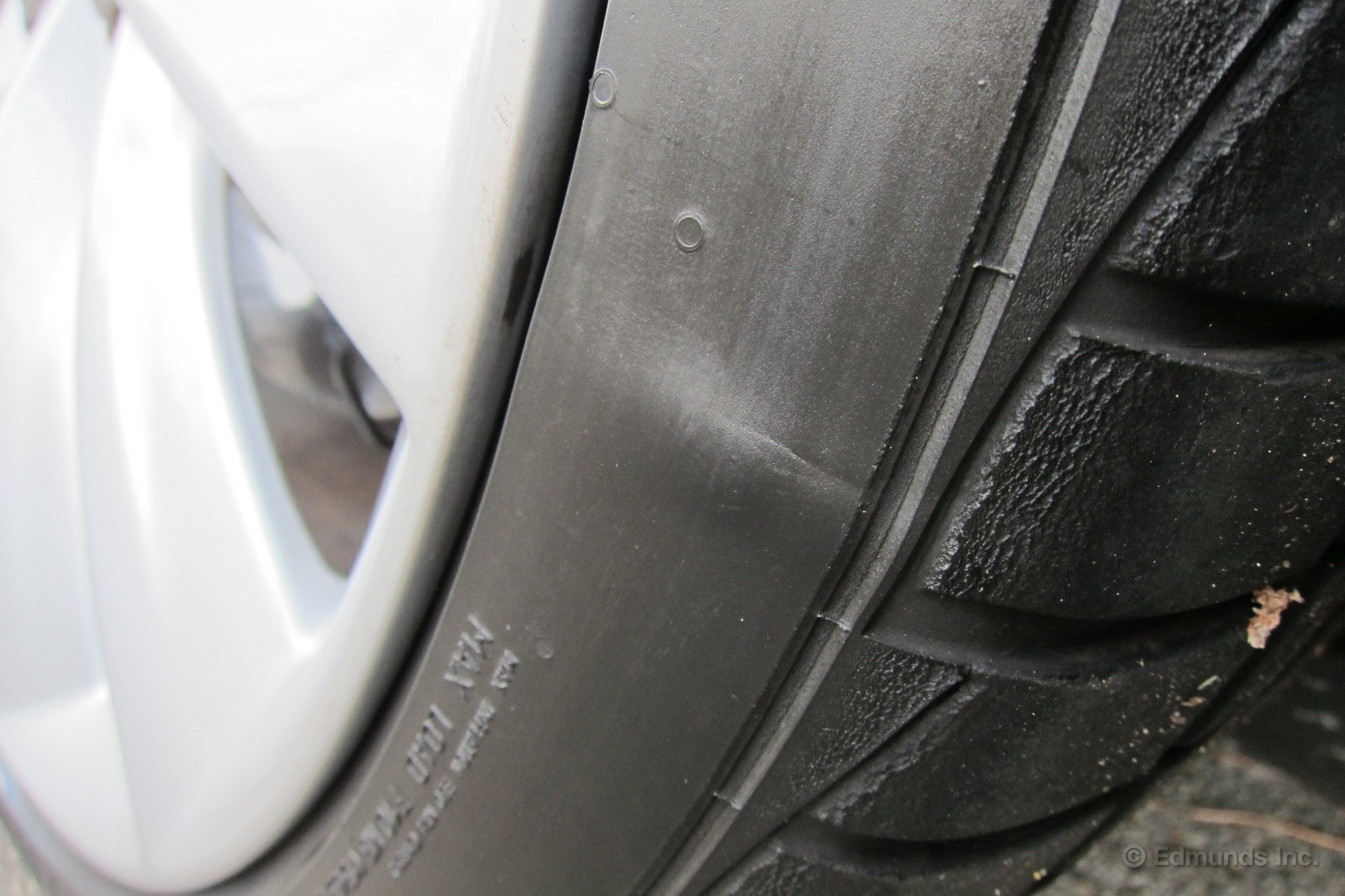
Ruh roh. In Corvallis, OR, at the halfway point of my road trip, my attentive friend at Spriso Motorsports pointed out that the driver-side rear tire of our long-term 2012 Tesla Model S had a little bump in the sidewall. The bubble appears far more prominent in the purposefully lit, super-ultra macro photo above than it did in real life. Guy's got some eyeballs on him.
This is normally the kind of thing that should be addressed promptly. Always one to push my luck, I instead decided to keep an eye on it and make an audible if it appeared to worsen over the course of my trip. Yeah, I'm nutty like that. On the plus side, the bubble didn't change at all over the course of the trip. And with plenty of time to kill during the frequent stops at the Superchargers, I had to do something to keep myself occupied...
The combination of the Tesla's extremely short sidewalls and impossibly heavy 21-inch wheels make its tires more susceptible to this kind of sidewall damage from sharp-edged potholes or impacts.
As an aside, I think the likelihood that this sidewall issue had anything to do with the Tesla's shimmy is nil. But you never know. We'll get the tire replaced and see if the shimmy changes. But in the meantime, Dan is riding on snow tires during his holiday road trip.
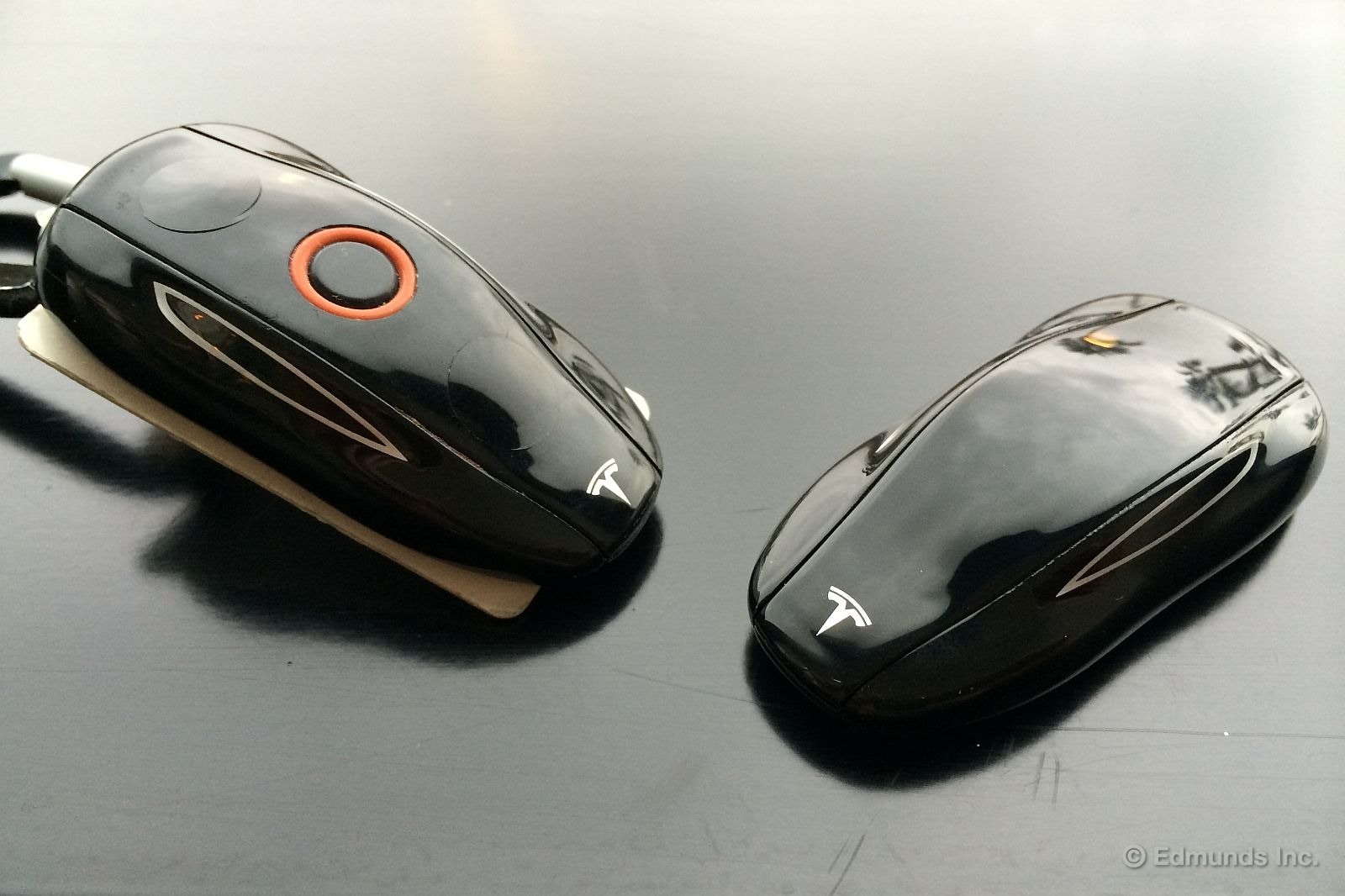
Car keys have a tough life. They spend the bulk of their time rustling around in pockets and purses. They rattle up against adjacent house keys on the same ring. And they sometimes get dropped.
Modern push-start smart-entry key systems have evolved away from serrated teeth. As a result they stay firmly planted in one's pocket or purse more of the time. But they still endure a lot of handling and jostling.
The "key" to our 2013 Model S is of this basic type, but like everything else on the Tesla it's a bit different. It's smooth and seamless. You can't see the three embedded buttons for the frunk, doors and hatch.
That's how it started, anyway. With use, circumferential seams began to emerge. The one for the doors split all the way around and fell off, revealing the actual button below.
At first, some in the office thought it was a new, improved key with a visible unlock button. They said they disliked not knowing exactly where to squeeze the "old" one to achieve the desired result. They even went so far as to say the red ring was a cool touch.
It didn't take long for the little black disk to fracture and fall off, especially considering that the doors automatically unlock and extend their handles with no need for a button press. Most staffers limit their button use to making sure the car is locked as they walk away. Or maybe they'll press the button to find the car in a crowded parking lot now and again.
I still have the black plastic dot. It fell off in my pocket and I saved it. I thought about super-gluing it back on, but quickly dismissed the idea because I figured I'd dribble some into the works or get it on crooked. It'd never look as good as the pristine spare pictured above on the right, the one that's been kept unused in a lock box for safekeeping.
Even knowing what really happened, few are bothered by this development. They kind of prefer it this way. Do you care? Or would you put the spare into circulation?
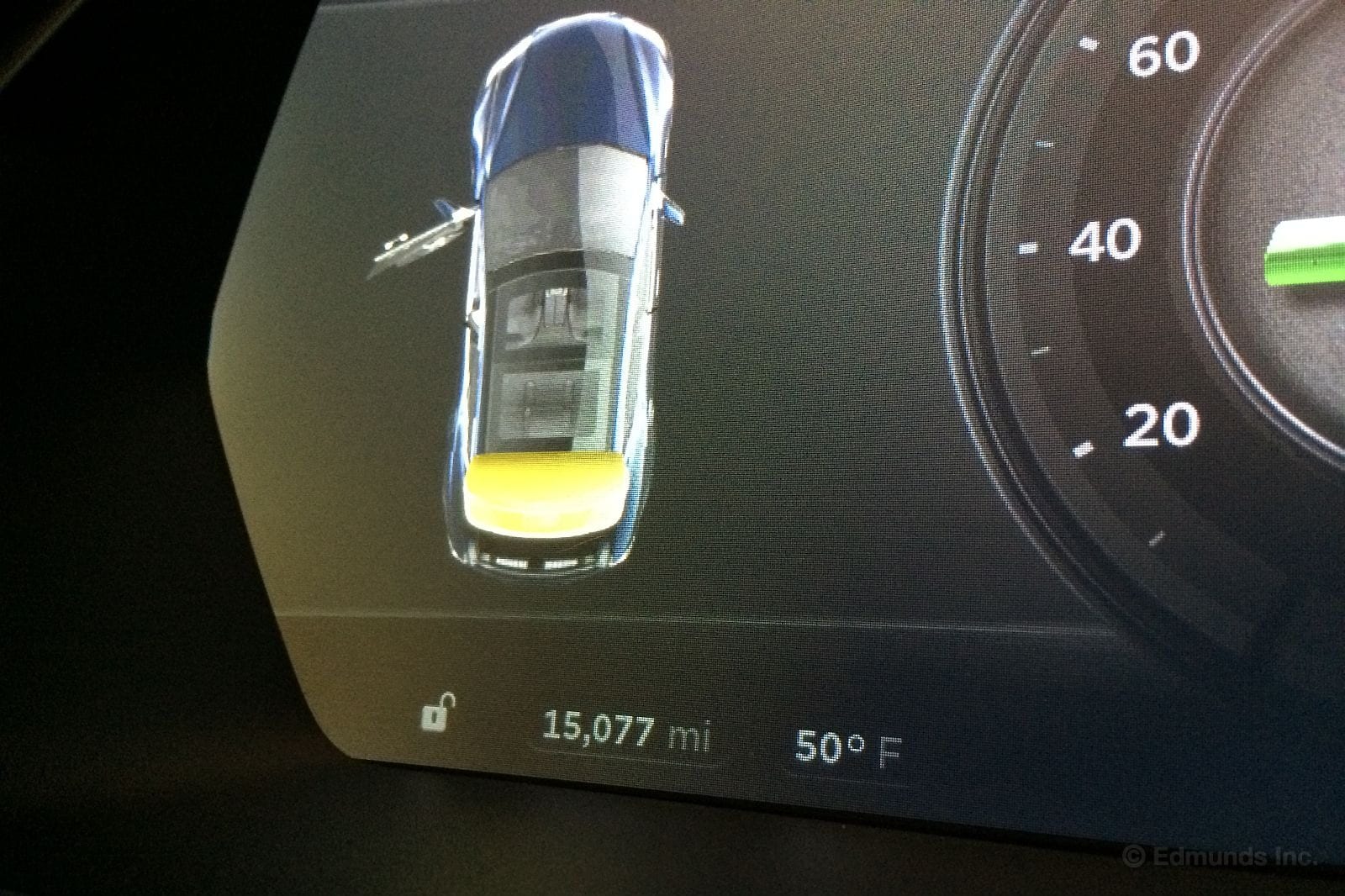
Our 2013 Tesla Model S sailed past the 15,000-mile mark, exactly 10 months to the day since it joined our long-term test fleet.
On the one hand, this lags slightly behind the pace necessary to reach 20,000 miles in one year, our usual stated goal. Its 12-month total is on track to settle in at 18,000 miles if the current mileage accumulation rate persists.
On the other hand, no other electric car we've hosted in our fleet has come even half this close. This current mileage figure is unprecedented in our experience.
We had a 2011 Nissan Leaf for 6 months, in which time we drove it 3,551 miles, an annual rate of 7,600 miles. The pitiful Mitsubishi MiEV accumulated just 1,980 miles and lots of dust during its 6.5-month stay. Before them we put 7,683 miles on a 2009 Mini E.
Range has almost everything to do with it, and at 260-plus the Model S has no equal. More range equals more hand-raisers when the keys are being bandied about. It also helps that the Tesla Model S is quick, fun and has great cargo and passenger flexibility.
The flip-side of range is charging flexibility, and the Model S has that in spades, too. The usual 120V Level One and SAE J-1772 Level Two methods are here, of course. But Tesla is way ahead of the curve with additional 50-amp "NEMA 14-50" RV park compatibility and low installation cost home charging using the supplied cord, their own high-speed 100-amp HPWC for garage installation and the ungodly-fast and ever-expanding Supercharger network built to make cross-country travel a reality.
And this last point is why our Tesla may just make it to 20,000 miles in one year after all. The reality of the Supercharger network allows me to take the Tesla Model S on my annual Holiday trip to Oregon to see my folks. The newly-opened northern California and southern Oregon Superchargers will pair nicely with the NEMA 14-50 dad has in his garage to support his welder.
Though it has grown quickly to 45 stations (at the time of this writing), the Supercharger network didn't exist when we took delivery of our car. If it had been in place throughout we'd be at 20,000 miles already.
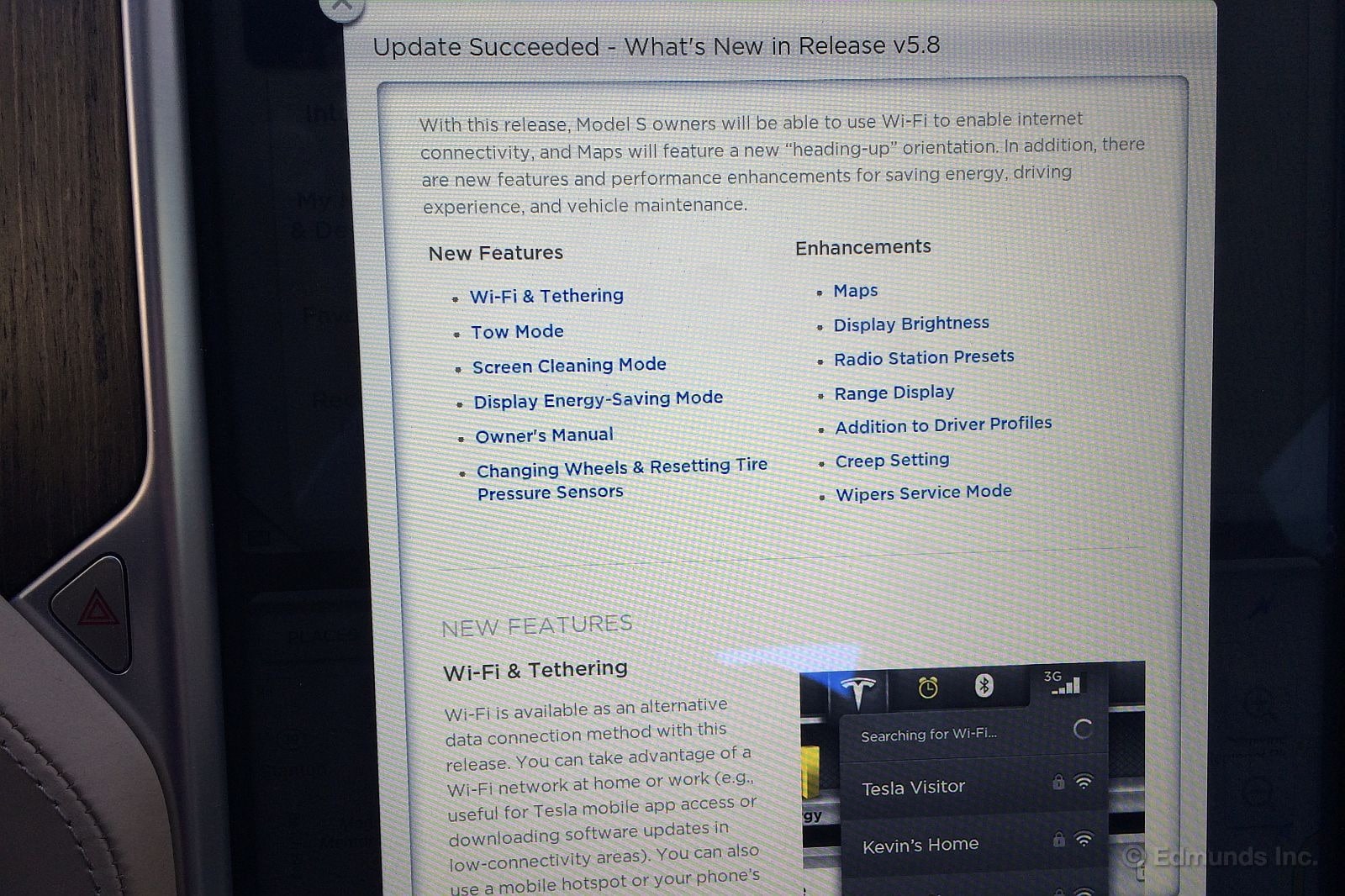
For the most part, what your car has in terms of features and controls on the day you buy it is fixed until the day it goes to the scrapyard. Not so with our 2013 Tesla Model S.
Like the apps or operating system of the typical smartphone, new features and enhancements can be pushed out at any time. The car is built to be upgradeable with new software and firmware versions that are pushed out over the 3G network with which the car communicates. Like your smartphone, all you must do is acknowledge and accept the new download...then wait.
Version 5.8 was released last week, and it brought with it numerous upgrades.
Example: This wiper service mode did not previously exist. This "button" I'm pointing to on the screen is all new. The timing was perfect because our Model S needed new wiper blades, and I was able to park the wipers in the up position with this new feature so I could easily remove the blades before taking them inside the local auto parts store.
But this is not the most significant of the v5.8 improvements...
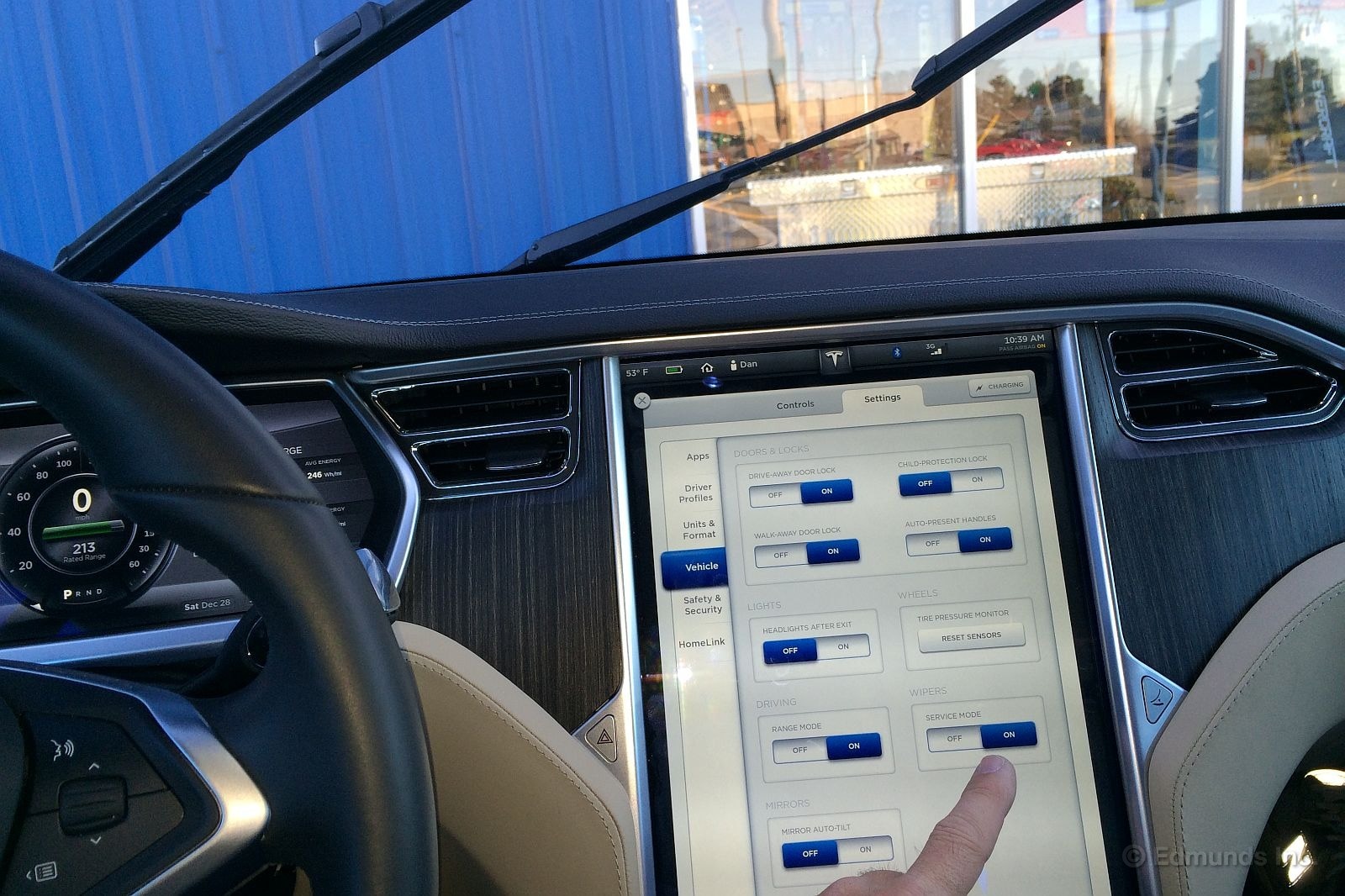
Wi-Fi & Tethering: The Model S needs a strong 3G signal to communicate with the ether for updates like v5.8 and to transmit data to and receive commands from the Tesla smartphone app. But what if you don't have a strong signal or, like dad's place in rural coastal Oregon, have any signal at all? Now you can tether your Model S to your home Wi-Fi network or the one at your hotel or the Starbucks you just parked next to.
Tow Mode: Before this update a warm body had to sit inside the Model S in order to load it onto a rollback. Neutral could only be maintained with someone sitting in the driver's seat. This new feature allows neutral to persist without someone in the car, which is much safer when winching the car onto a tow truck's flat bed. We're not yet sure if this will also work at an automated car wash, but it would seem so. Also, we're not yet sure if this feature is meant for flat-towing a Tesla behind a motorhome at any kind of speed. We're asking Tesla about that.
Screen Cleaning Mode: Exactly what it sounds like. This mode deactivates all the virtual buttons on the screen so you don't randomly change settings while you're cleaning fingerprint smudges off that massive and all-powerful touch screen.
Display Energy-Saving Mode: Before this update, the Model S woke up instantly and started as soon as you opened the door and sat down, but in doing so there was a constant vampire loss that would eat up power overnight and lead to less range in the morning. Now the car hibernates when you get out. The upside is less overnight vampire loss of range (but still not zero.) The downside is ten seconds or so of boot-up before the screen wakes up and the car turns on. A newly-added virtual switch allows you to turn this off if you don't like the boot-up wait this mode creates.
Owner's Manual: The entire Owner's manual is now present in electronic form and can be read on the big screen.
Changing Wheels & Resetting Tire Pressure Sensors: Suppose you want to swap wheels (such as a set of snow tires) or have a TPMS sensor replaced at your favorite tire store. Now you can tell the car that new TPMS sensor(s) with different ID numbers have entered the picture. For the next 20 minutes of driving this sensor "Learn Mode" associates the new sensors with the car. TPMS sensors broadcast every 1 to 3 minutes (depending on the system) and the TPMS computer needs to receive a certain number of consecutive data pings from the same ID number before it gains confidence that the signals are in fact coming from the Tesla and not another vehicle in an adjacent lane.
Map Enhancements: These are numerous. Chief among them is a choice of "heading up" or "north up". Previously it was "north up" all the time. They've also added a compass, and there's now a one-touch navigation feature that, like Google on a desktop, allows you to select and initiate a route from pins on a map when you search for something like Starbucks, where you'd typically get a long list of results. Also, you can now rotate the map to any position by placing two fingers on the screen and turning them like a screwdriver. Traffic and route overlays are more distinct from one another this time out, too.
Display Brightness: There are still Day and Night modes, but now they go through a gradual fade sequence during periods of dawn and dusk, lessening the harshness during this transition.
Radio Station Presets: If you've saved more than two presets, the steering wheel button now marches through your presets. If you have less than two, it behaves as a seek mode and stops at the next strong signal.
Range Display: The algorithm that figures out the average consumption and projected range has been changed to be more accurate in more conditions.
Addition to Driver Profiles: Front seat heater preferences have been added to each driver's profile.
Creep Setting: Creep mode is a slight forward motion that comes when you lift off the throttle. It's there to emulate the familiar response of a standard car with an automatic transmission in Drive. This update smooths out the Tesla's artificial creep, which was a bit too abrupt before. The option to turn it off if you want zero creep remains unchanged.
The point of all this isn't whether or not Tesla should or should not have made these selections before they shipped the first car. The key thing here is new ideas and feature improvements can be pushed out to existing cars as bright ideas are conceived and customer feedback makes its way back to Tesla.
No other car can do this sort of thing to this extent and with this sort of ease. These updates came to our Tesla Model S and were available in an hour while the car was parked in my driveway.
What would I like to see in v5.9? That's the subject of another post, but many things are possible.
Here's one: I'd like to see the cruise control smoothed up. It's excellent at holding speed uphill and down, but the response is too immediate and too jerky when I trim the set-speed up or down in one mph increments by tapping the stalk. Same goes for the cancel feature. These could stand to be less of a step function.
In the Model S I don't have to resign myself to getting used to mildly annoying traits like this for the next 5+ years of ownership. They can easily fix this in a software update, and if enough owners complain loudly enough, they probably will.
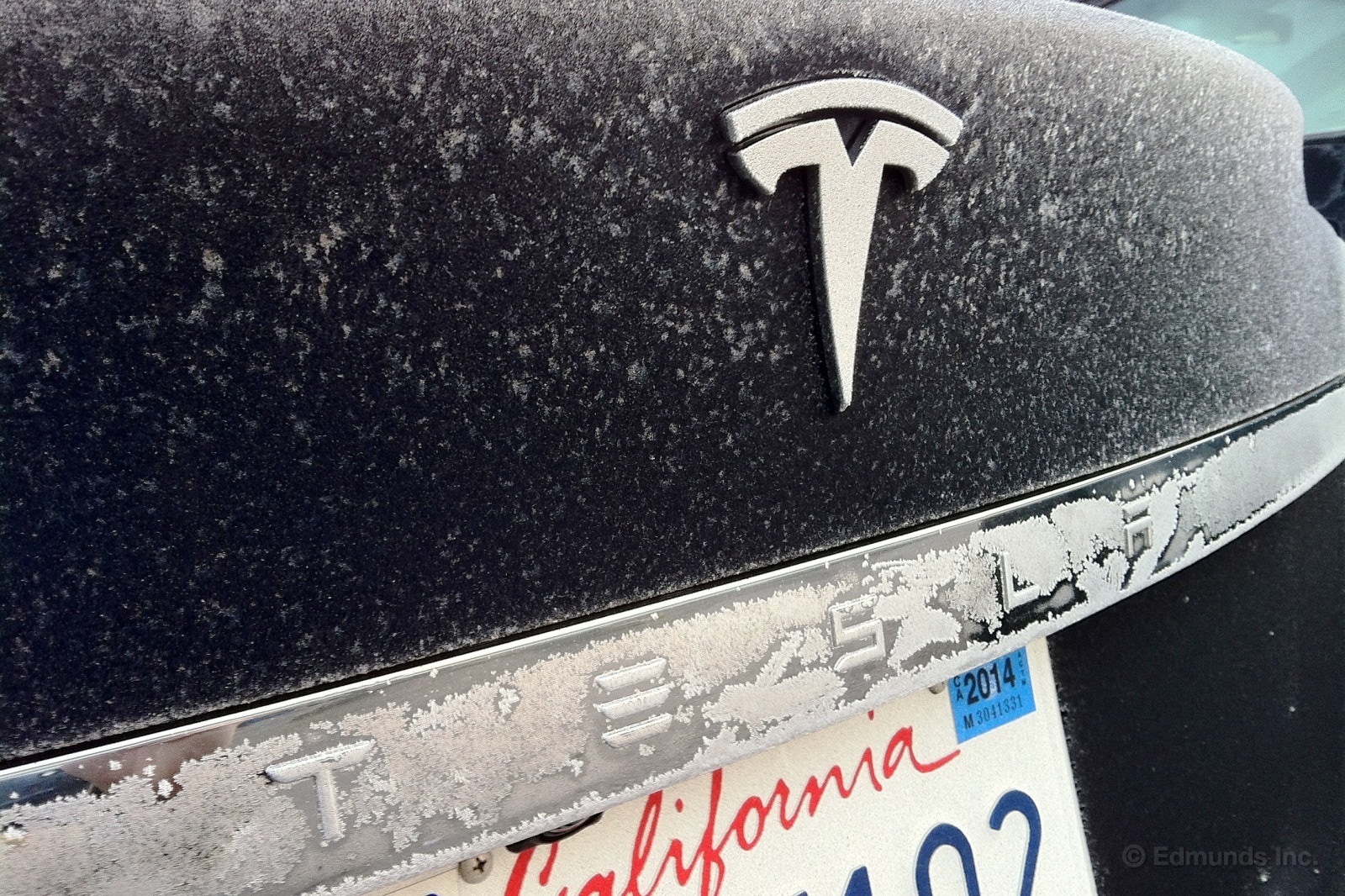
While in Corvallis, OR, during my road trip, I had the opportunity to drive our long-term 2013 Tesla Model S in cold-ish weather. That is, sub- freezing but not single digits. So, brisk rather than brutally cold. Jacket and hat weather.
I stayed at a hotel 1.4 miles away from my sister's house and made several trips to and fro over the course of my multi-day stay. In this weather, the trip regularly consumed 3 to 4 miles of rated range each way when starting off cold. But I had no concerns about range on this part of the trip because I'd done a more-or-less complete charge in Eugene (45 miles away) that I planned on riding out for the duration of my Corvallis stay. So this unexpected extra consumption was inconsequential other than the additional minutes it took to replenish them (and on a related note, driving a Tesla fast on the freeway can be slower in the long run for this reason).
Another cold-weather observation. When warming up, the Tesla shows hash marks on the power and regen meters (these also appear when the battery is low on charge, as I found when I first pulled into the Eugene Supercharger). Basically, it's still warming up, and the juice is restricted. I'm not one to hammer a cold car, so the limited power was fine. But the limited regen was a big surprise the first time I lifted to slow down. Normally in this car you get a big hit of regen and slow down dramatically, especially since I use the more aggressive of the two regen settings. When you lift while the car is cold, it barely slows at all.
Interestingly, on the return trip to Eugene from Corvallis (my sole "long" trip in cold weather that started out with a stone-cold Tesla), regen remained limited even after driving 20 miles.
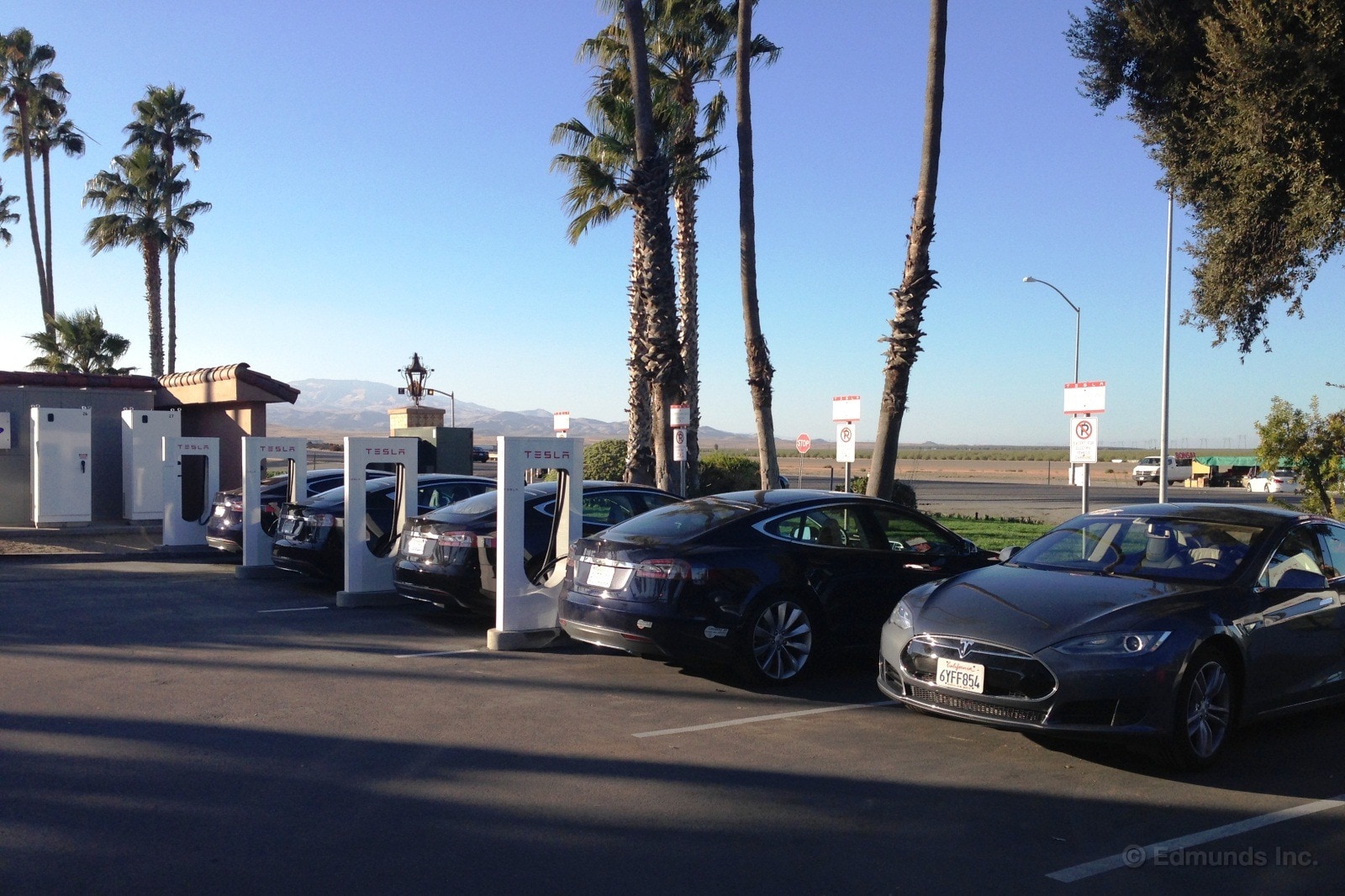
This photo was taken at Harris Ranch on the return leg of my 2,000-mile road trip in our long-term 2013 Tesla Model S.
As you can see, the next Tesla to pull up to this bank of Superchargers is pretty much boned. All of the chargers are taken, and none of the other vehicle owners are in sight. They're off snoozing or eating or playing jai-alai somewhere, apparently oblivious to the plight befalling the next Tesla driver seeking a juice fix.
When I drove up, two chargers of the five were available. Halfway through my (partial) charge, another car took the sole remaining charger. At no point during my charge were the other three chargers vacated.
This wait-so-you-can-wait-more situation is likely to become more commonplace as more Teslas hit the streets, though additional Superchargers along popular routes will help.
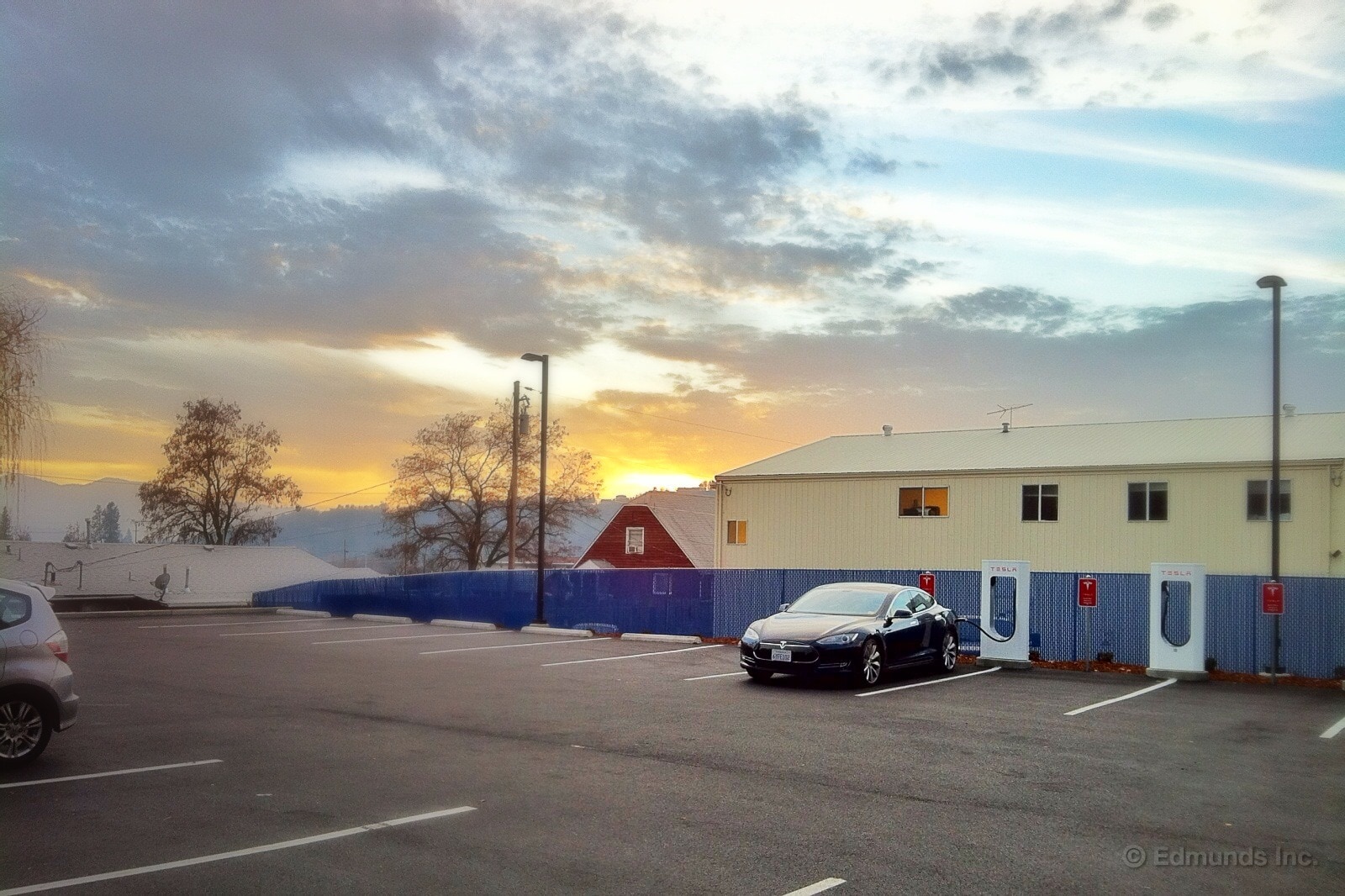
A few commenters were critical of the recharging strategy I employed during my 2,000-mile road trip in our long-term 2013 Tesla Model S. Namely, I'd fill only partway, putting in enough miles to reach the next Supercharger, plus an extra buffer. For this I was chastised as an EV newbie and tut-tutted for not doing complete charges.
The irony here is that those doing complete charges at each Supercharger are revealing themselves as EV newbies. The reason is time. Filling the last 20% doubles the amount of time you're sitting at the Supercharger compared to filling to 80% from empty. Science!
Since my route required recharging at every Supercharger along the way, the most time-efficient strategy is to roll into each Supercharger with a nearly-empty battery, put in enough miles to reach the next one (plus a bit more, just in case), then hit the road. Doing a complete charge at every Supercharger would have been a colossal waste of time, adding hours, not minutes, to an already long trip.
In fact, partial fills in this manner are recommended on Tesla's website:
"Optimal Charging
The fastest way to replenish your Model S is to charge to 80% state of charge, which is more than enough for travel between Supercharger stations. Charging the final 20% takes approximately the same amount of time as the first 80% due to a necessary decrease in charging current to help top-off cells. It's somewhat like turning down a faucet in order to fill a glass of water to the top without spilling."
What's needed is route topography to be taken into account in the Tesla's navigation system. You'd program your route and the system would make a rough estimate of how much additional range will be sucked out by hills along this route. Easy for me to say...
Incidentally, when you're on the fourth recharge of the day and you've eaten all the crummy fast food you can stomach, done plenty of aimless walking around, caught up on emails, your bladder's empty and you're parked in the back of a restaurant parking lot in Grant's Pass (colloquially referred to as "Grant's Ass") in winter, getting back on the road and making some kind of progress toward your destination becomes your mission in life. Stopping every 150 to 200 miles does lose its novelty in a hurry during a trip like this.
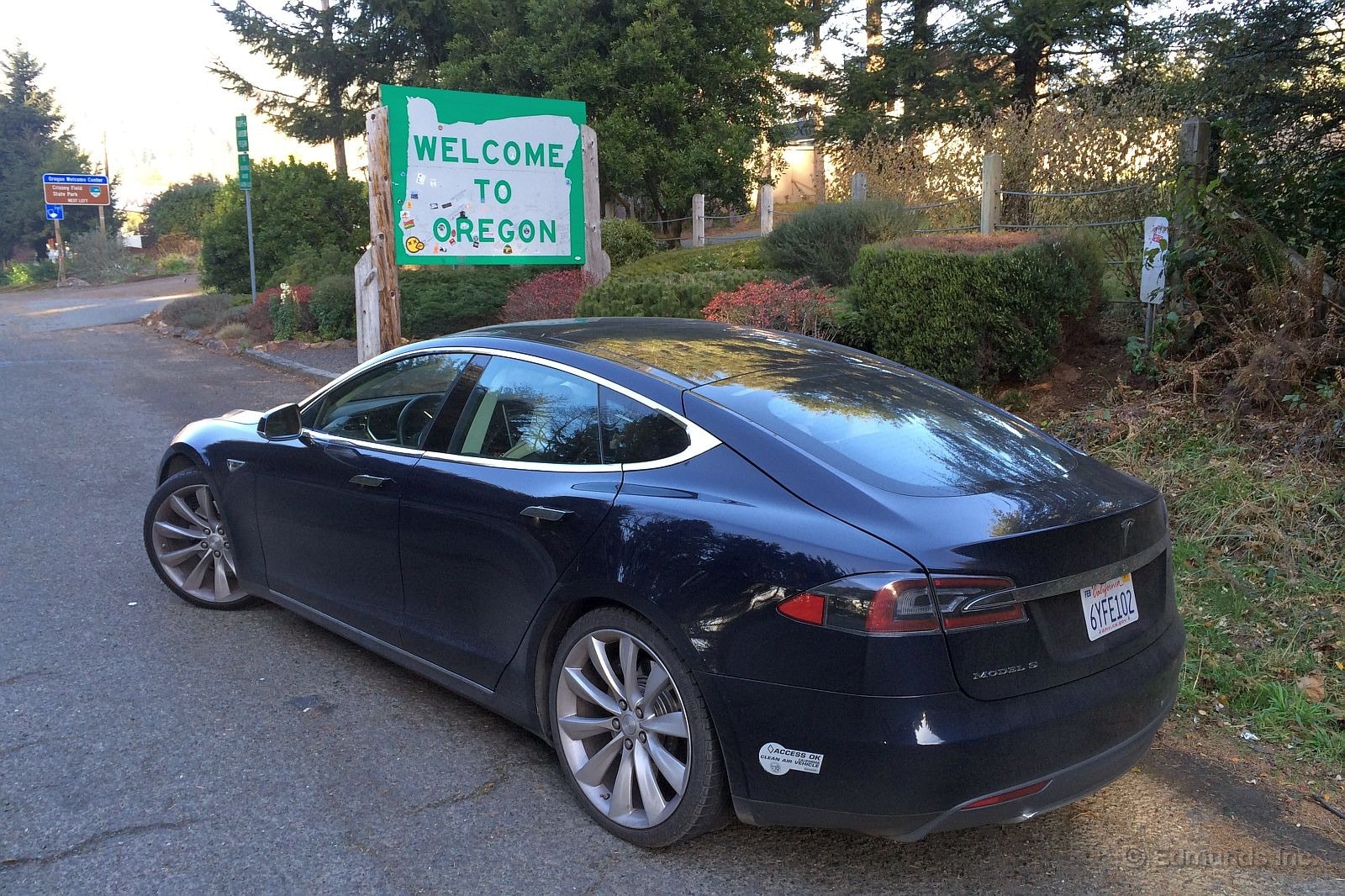
Twice a year my family heads north to Oregon to visit my parents on the spectacular yet remote southern Oregon coast. Each time we take a different car from the long-term fleet, and this time it was the 2103 Tesla Model S sedan.
We couldn't have done this in August because the Tesla Supercharger network hadn't yet been finished north of Sacramento, California. Our long-term 2013 Hyundai Santa Fe was drafted instead.
By November Tesla had added Superchargers all the way north to Canada. Engineering Editor Jay Kavanagh beat me to trial-run honors by traveling to Corvallis, Oregon during the Thanksgiving break.
But I was still curious. Would the Tesla Model S and its battery charging requirement significantly alter our usual trip timing, Supercharger network notwithstanding?
There was only one way to find out, but my wife and daughters were not terribly excited about being roped into this experiment. Would I regret this decision after subjecting them to unwanted extra travel time? Would it take forever? Would I never hear the end of it?
It must be said that my wife and daughters are not fans of the banzai run. For starters, they don't like rising from bed well before sunrise and lifting off at zero-dark-thirty. And there isn't a seat made that my wife is happy in for 15 hours straight. She likes to stop, get out and walk around now and again. And given the choice she'd rather eat her meals while stationary, preferably in a restaurant booth.
For my part, I tend to get antsy about getting there, but I'm less of an iron-butt than I used to be. So I'm OK with the idea of overnighting somewhere along the way. After all, it's an 890-mile trip via the most direct route.
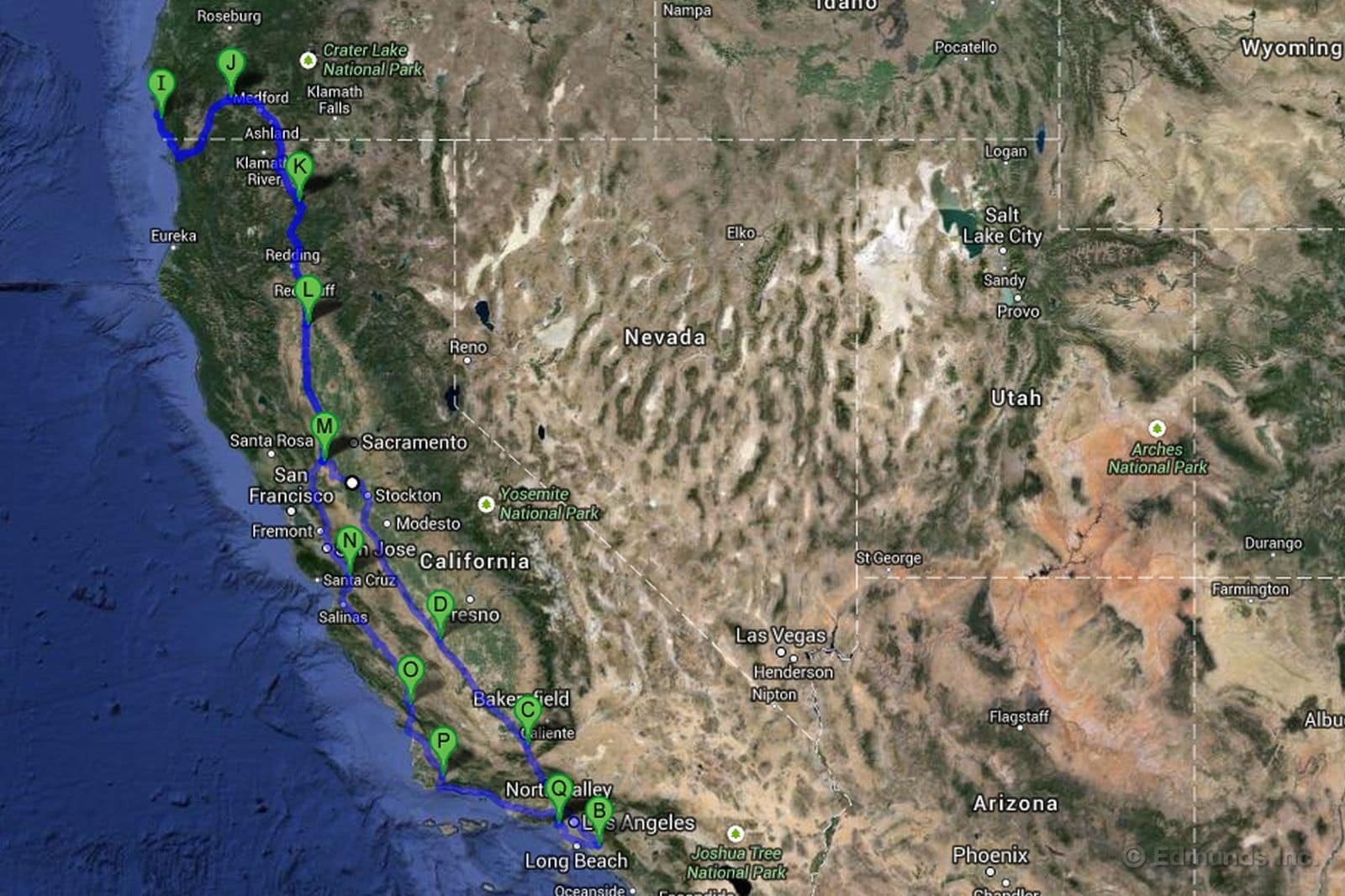
Still, we took a 650-mile chunk out of the trip on the first day, traveling from Santa Ana (Point B) to Mt. Shasta (Point K) and winding up a bit farther north than we usually get on the initial push. Our journey began at a civilized 7:45 a.m. and ended at 9:30 p.m. Along the way we took our food and bathroom breaks at Tesla Supercharger locations, though the reality of free refills at our chosen eateries led to a couple of extra potty-only rest stops in between.

We left our home in Santa Ana with a full battery. The initial 115 miles saw us traverse the L.A. basin and climb over Tejon pass into California's great central valley. The Tejon Ranch supercharger (Point C) stands at the base of the pass on the far side, and we arrived with 117 miles remaining. We stopped for 20 minutes to stretch, use the washroom and walk around while the Model S took on another 61 miles of electricity. Our new driving range of 178 miles was more than enough to cover the middling 116-mile gap to the next Supercharger.
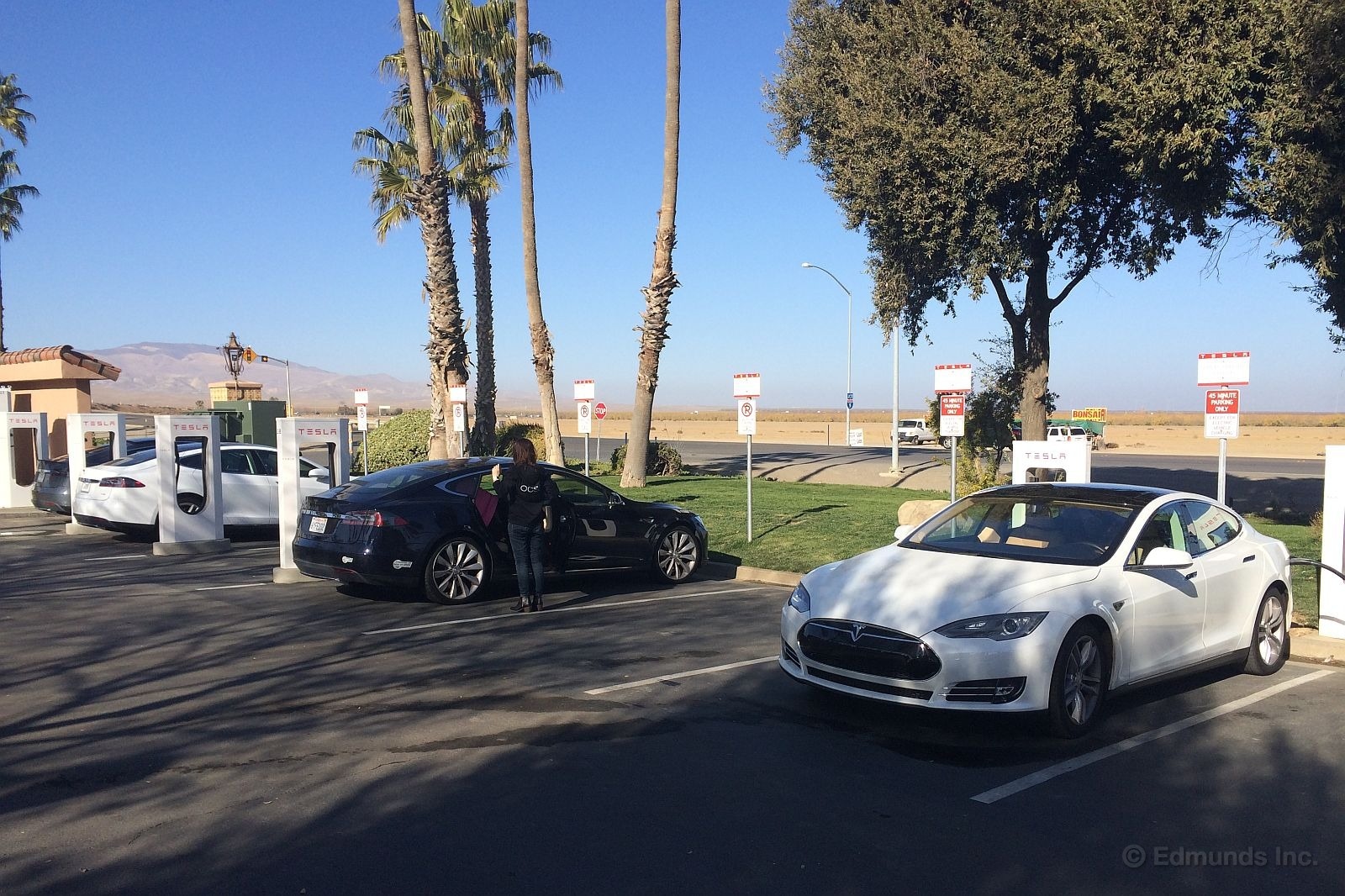
The range meter was down to 41 miles when we wheeled into the Harris Ranch Inn & Restaurant parking lot (Point D), whereupon we plugged in and went inside for an unhurried sit-down lunch while the battery charged more completely. The next run was to be the longest of the trip, but the new Vacaville Supercharger was still only 198 miles away. Our P85 Tesla's large 85kWh battery made it unnecessary to wait until the bitter end, so we paid the bill when we were done eating and left when we felt like it. We were there about an hour and we left with 245 miles in the tank.
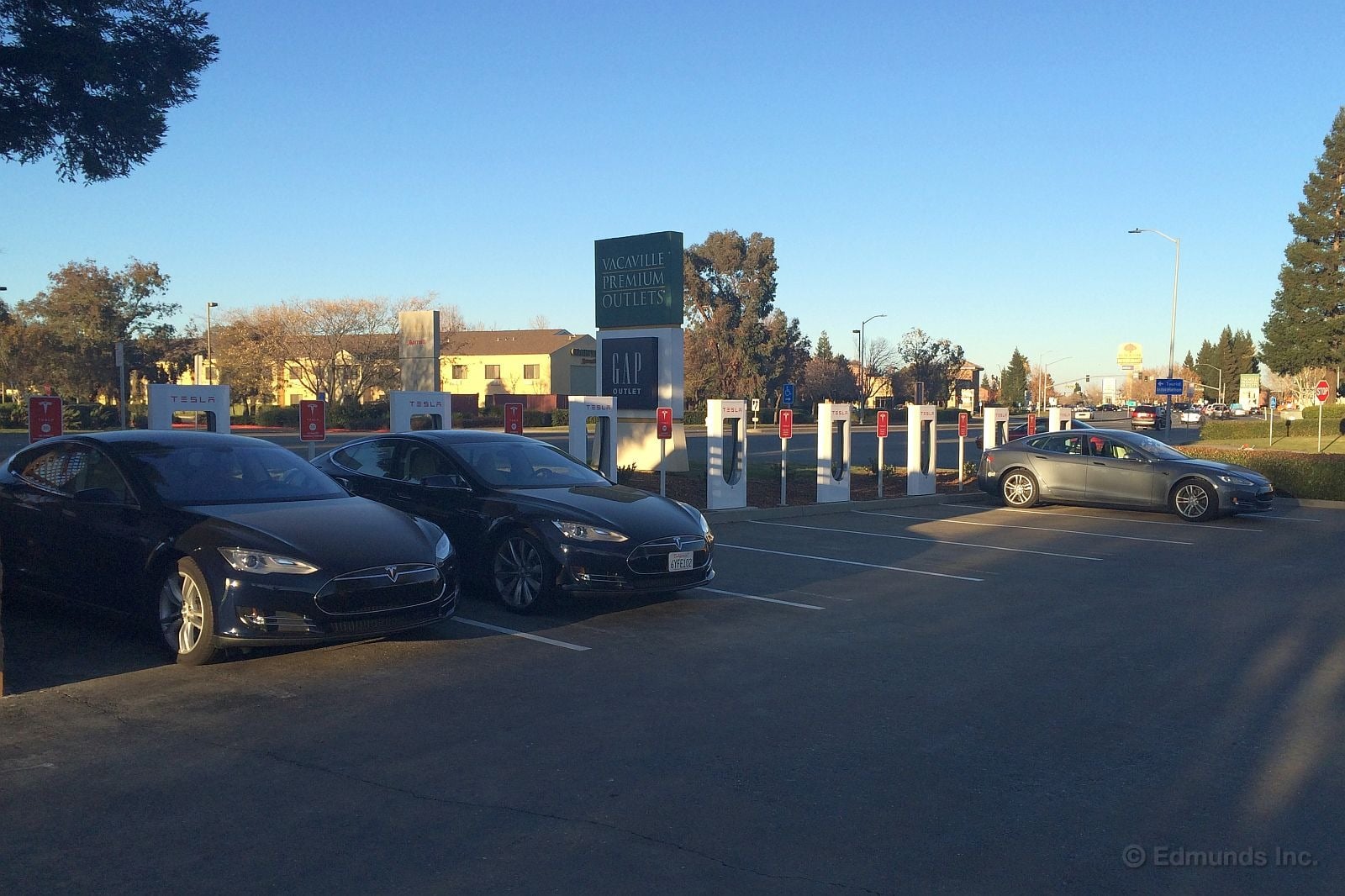
About three hours later we rolled into Vacaville (Point M) with 24 miles left. We plugged in for 35 minutes, but 25 minutes would have been enough. This was the first of the new 120 kW Superchargers we'd encountered. Tejon and Harris had been slower 90 kW units. But this was also an outlet mall. We needed a Christmas present for my mom and my wife saw this purse at the Fossil store. You know how it goes. We exited the lot with 176 miles on board and 113 miles to the next station.
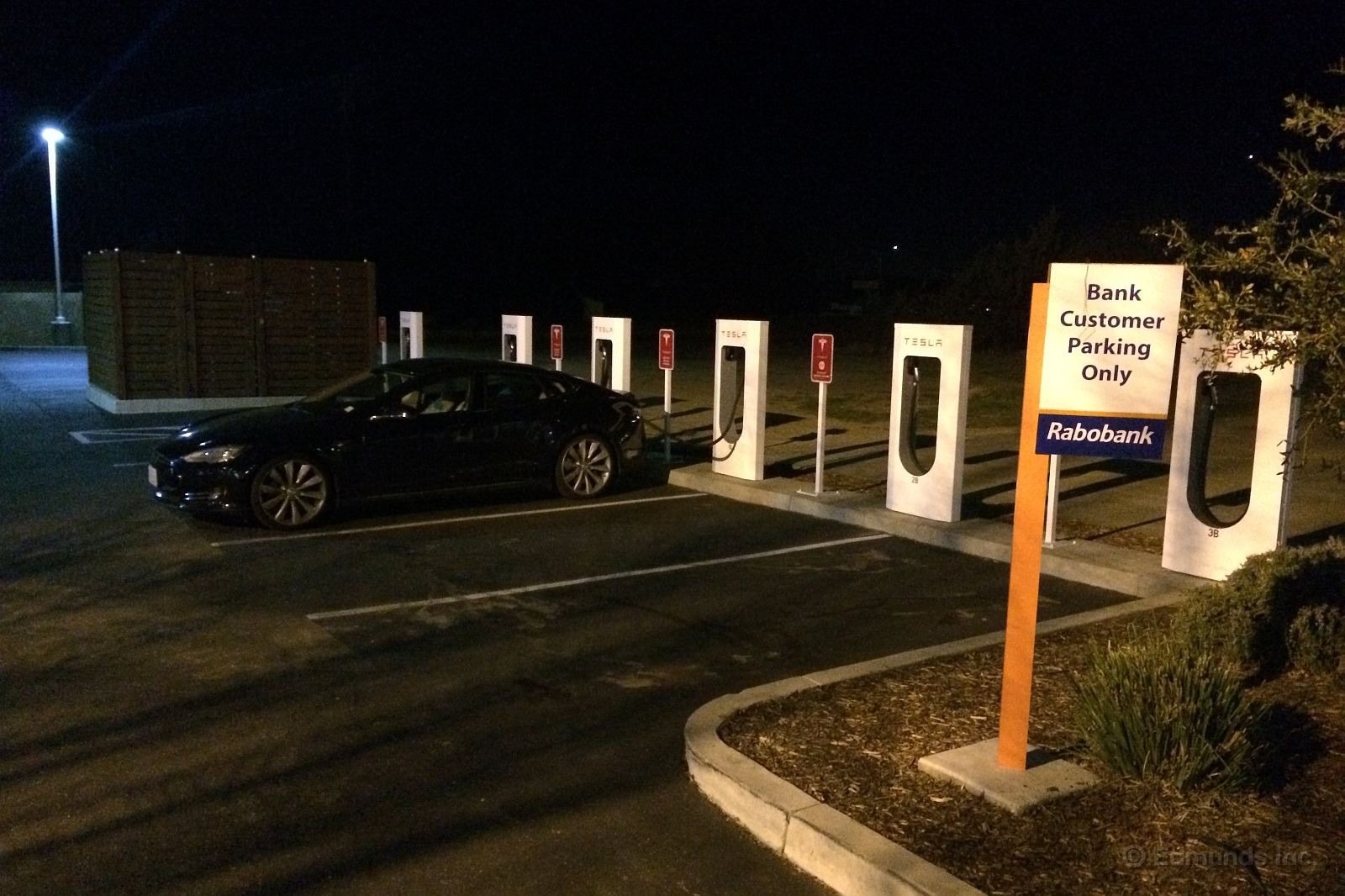
It was time for dinnertime when we arrived in Corning (Point L) with 29 miles to spare. Here we ate another sit-down meal while the battery charged more fully. Our overnight stop at Mt. Shasta was only 108 miles up the road, but the elevation gain was going to be significant and I wanted to make sure we had some margin. We were there about an hour, and we left with 228 miles of range. In hindsight 35 minutes would have been enough charge time because this was another new 120 kW station.
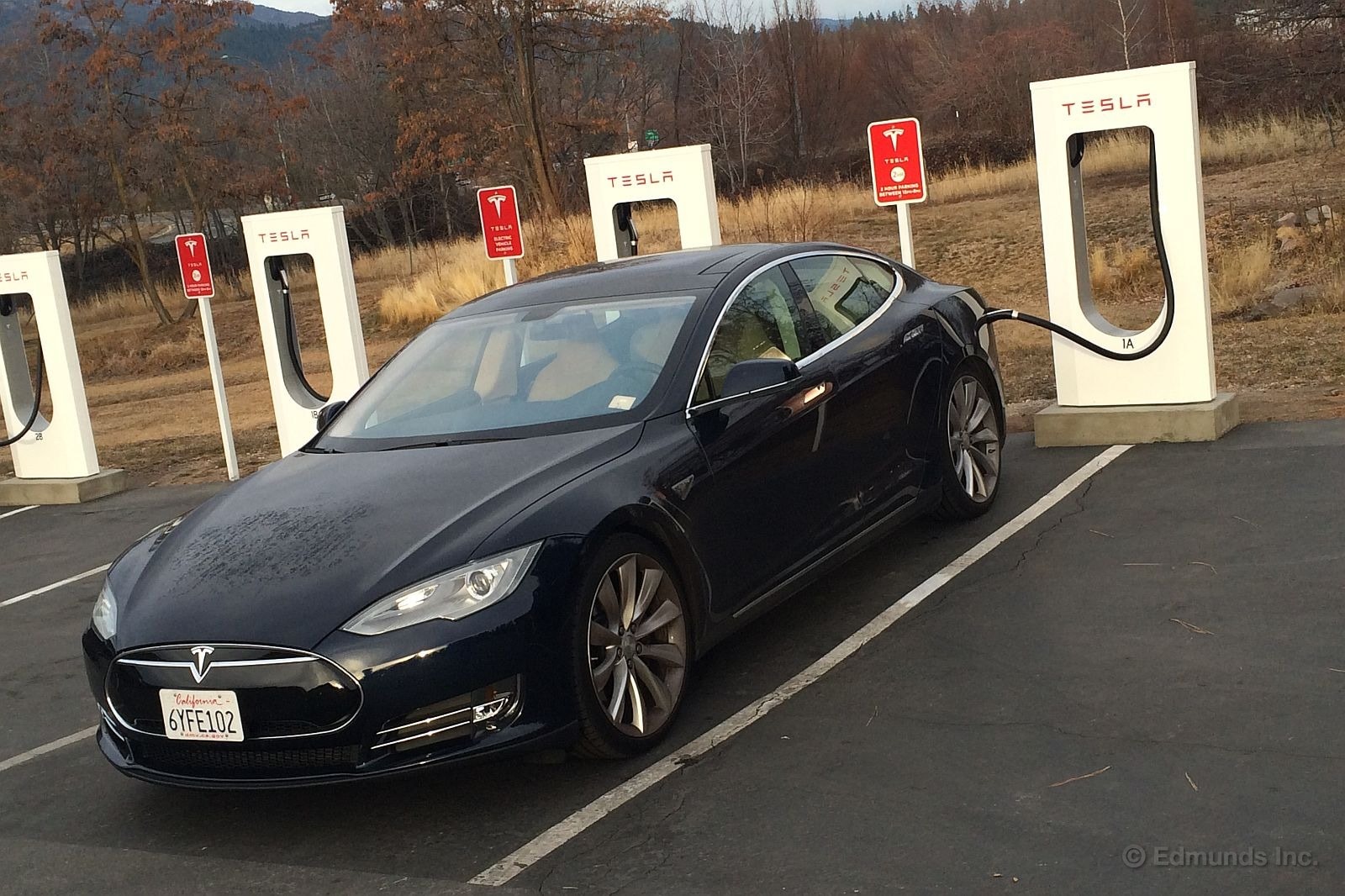
Mt. Shasta's Supercharger is located in the parking lot of the Tree House, a really nice place to stop for the night. We arrived at 9:30 p.m. with 68 miles left over and plugged in knowing the Model S would be absolutely full by the time we left the next morning. In reality it was full before my head hit the pillow.
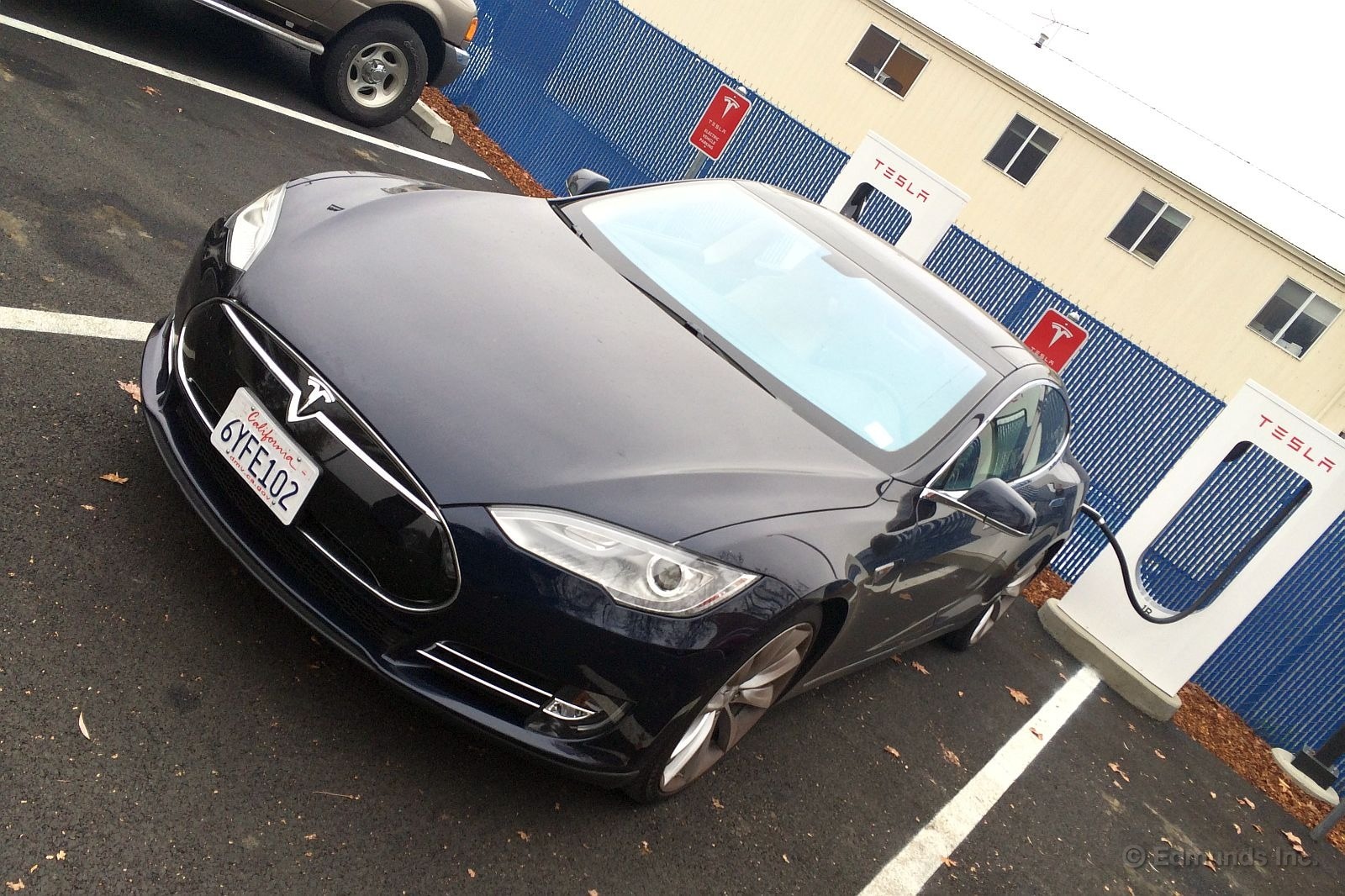
Next day we slept in, knowing we only had 239 miles to Grandma's house ahead of us. The first 118 miles took us over the Siskiyou summit and into Grant's Pass, Oregon (Point J), where we arrived at our final Supercharger stop with 107 miles left. We lingered longer than necessary as we posed for silly pictures in front of the nearby Caveman statue and chatted with curious patrons coming out of the Black Bear Diner, in whose parking lot this Supercharger is located. After 30 minutes we finally departed with 221 miles in hand, much more than we'd need to cover the 123 miles between us and our final destination.
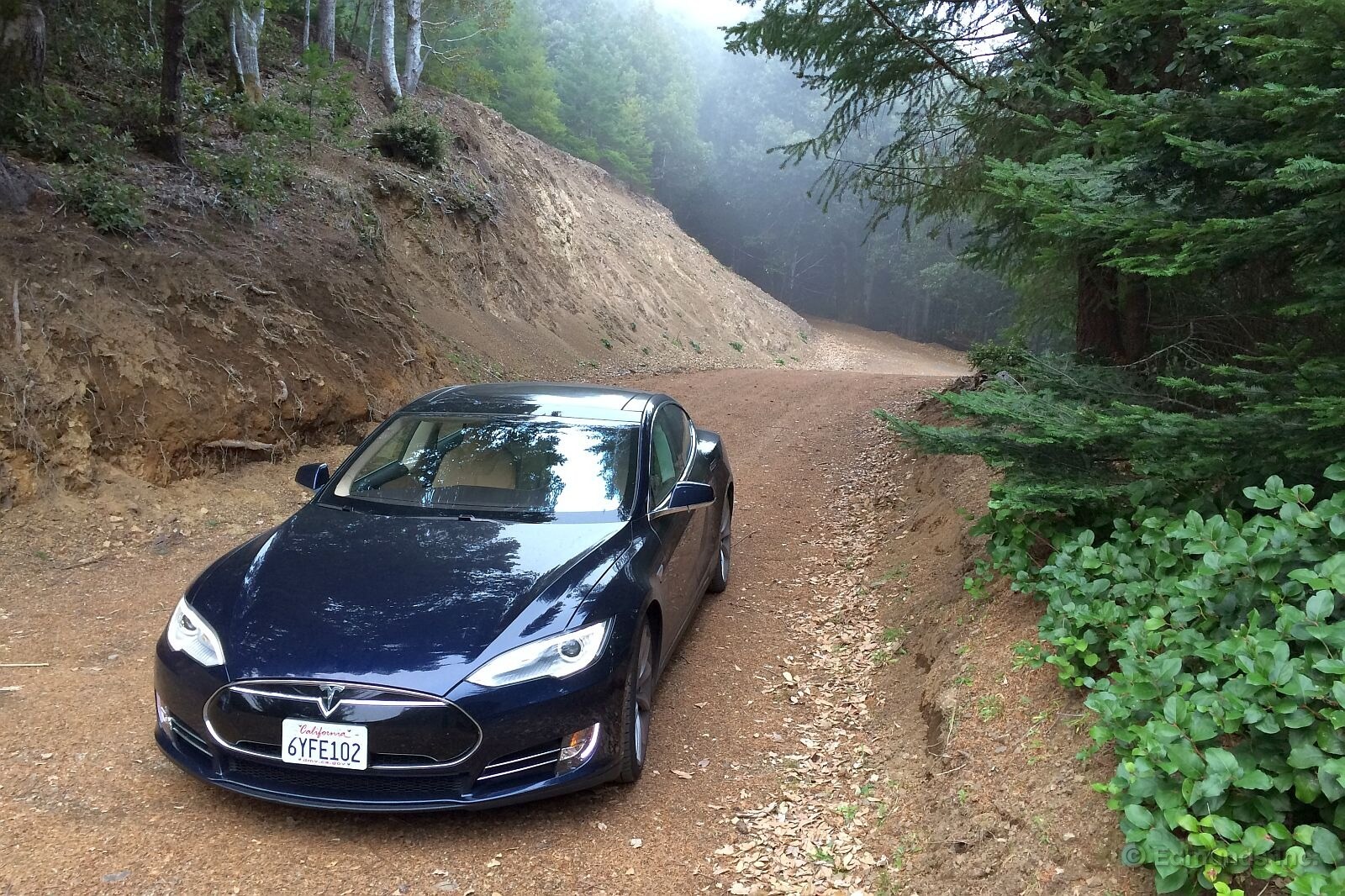
We arrived at my folks' place (Point I) in the early afternoon, about an hour or sooner than we usually make our appearance.
It had been a relaxing and stress-free trip, and it hadn't cost us a dime in electricity. I doubt our choice of the Model S added as much as an hour to our usual travel time. Day one's figure is closer to 40 minutes. Day two wasn't affected much at all, 10 minutes, tops.
Much of our downtime would have happened no matter what car we drove. We would have stopped to eat. We would have stopped to stretch. The difference here is the location and certainty of those stops is known by all parties in advance.
It turns out this has a calming effect on the proceedings. The conflict between those that want to press on and those that want to take a break now vanishes completely. Supercharger travel in a Tesla has a go-with-the-flow quality to it.
Also, eating and pumping gas are two separate operations in a normal car. In a Tesla these happen simultaneously. You don't stop to refuel so much as you drive to a place to eat that happens to have a means to fill up. The car is plugged in and charging before the passengers have even collected their things and gotten themselves out of the car.
Get into the rhythm of the thing and the pattern of stops and charging is thoroughly manageable. Here's how that rhythm played out for us.
Day 1: Drive two hours, potty break/stretch/short charge.
Drive two hours, lunch/long charge.
Drive three hours, potty break/stretch/shopping/medium charge.
Drive two hours, dinner/long charge.
Drive two hours, overnight stop/full recharge
Total distance: 650 miles
Total Time: 13 hours 45 minutes
Stationary time: 3 hours 15 minutes (meals, bathroom, shopping, charging)
Drive time: 10 hours 30 minutes
Day 2: Drive two hours, potty break/stretch/short charge
Drive three hours, arrive at destination
Total distance: 240 miles
Total time: 5 hours 30 minutes
Stationary time: 30 minutes
Drive time: 5 hours
Before you ask, there's never a need to fill up 100%, so the question of "Yes, but how long does it take to fill a Tesla at a Supercharger?" is irrelevant. The better question is "How much time do we need to spend here to have enough to comfortably get to the next Supercharger?"
We don't yet have enough experience with Network travel to answer the second question accurately. In hindsight we could have trimmed 10 minutes or more off many of our stops. That said, on this trip the car was generally ready before we were, not the other way around.
Upon arrival we plugged into the NEMA 14-50 socket Dad has in his garage for his welder. We'd recharge there during our stay, waking up to a full battery every morning.
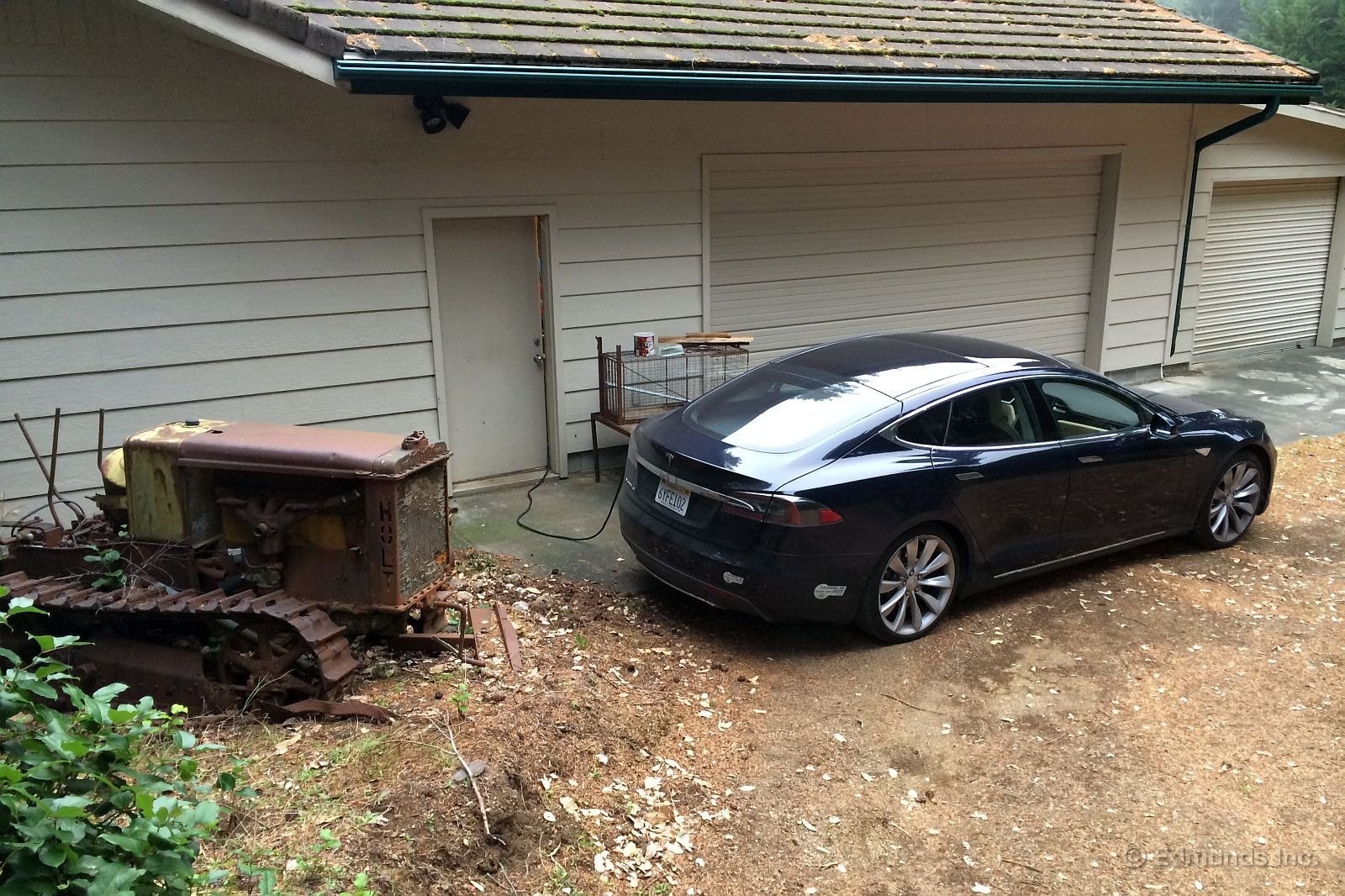
Dad has plenty of power in his Oregon coast garage. It's more of a shop, really. Beyond the usual hand tools he's got a mill, a lathe, a humungous 6.5-hp air compressor and a nice welder. And he happens to have a NEMA 14-50 "RV" socket, too, and that made it easy to drive our 2013 Tesla Model S every day during our stay.
Sure, a garden-variety 120-volt, 12-amp garage plug would have worked, but the resulting slow charge rate couldn't possibly fill the battery overnight. The Tesla's unique configurable charge cord with its included NEMA 14-50 wall adapter can access 240-volt power at up to 40 amps. Volts times amps equals watts, so that works out to a very healthy maximum delivery rate of 9.6 kilowatts.
And so we awoke to a full battery every morning. We could drive as much as we liked. Good thing, too, because the weather was gorgeous and the stunning viewpoints are numerous.
But it gets better. Dad's electricity rates are low. He pays just 7.4 cents per kilowatt-hour (kWh) in summer and 7.94 cents in winter. These rates apply at all hours. Taxes and transmission costs are included, too.
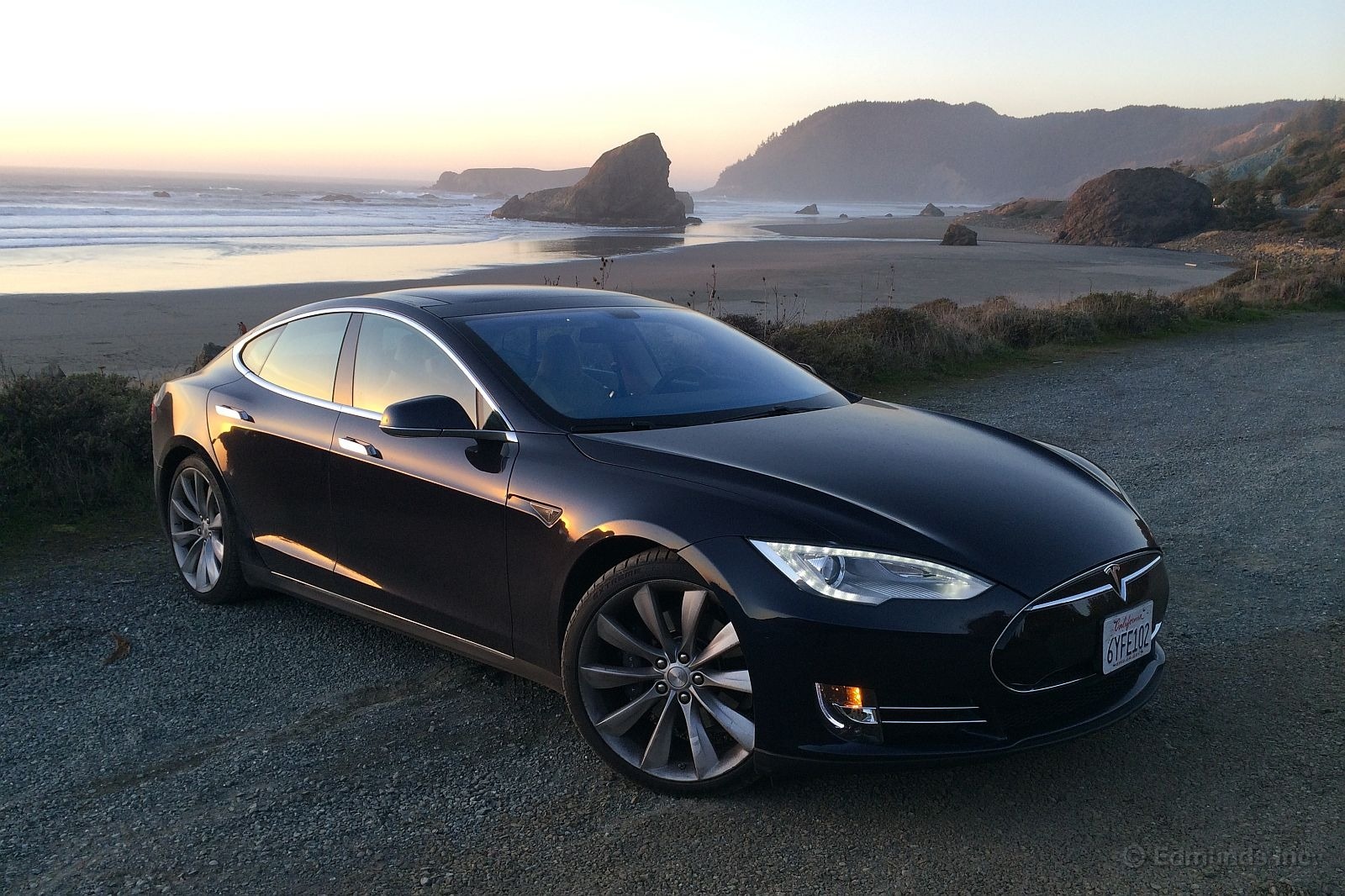
Dad's place stands on top of a hill at 1,600 feet, just one mile inland from the seashore. The road up is sinuous, narrow, poorly maintained and dotted with the occasional cow. And the steepness kicks up substantially when you turn onto the one-lane road/driveway that eventually leads to his house after first passing five others.
We went up and down this route a dozen times in the course of the 374 miles we covered over our 5-day stay. The car's consumption onboard meter registered a total of 144.8 kW during that period. Assuming a charging loss of 20 percent, Dad's electrical meter would have registered about 174 kW of billable electricity consumption.
At his winter rate of 7.94 cents apiece, that works out to $13.80.

The going rate for unleaded in these parts is $3.40 per gallon. Our $13.80 would buy us just 4.06 gallons of the stuff, not even enough to fill a Jerry can. An equivalent gas-powered car would have to be capable of 92 mpg (on this sort of challenging terrain, no less) to cover those 374 miles on that amount of gas.
This 92-mpg figure is what I call mpgc, and it differs from the silly mpge that's on EV window stickers because it's cost-based, not CO2-based. But mpgc varies radically with the local prices of gas and electricity. I pay four times as much as Dad for my electricity at home. Mpgc is too specific to the wildly variable local prices of electricity to be of any use on a window sticker.
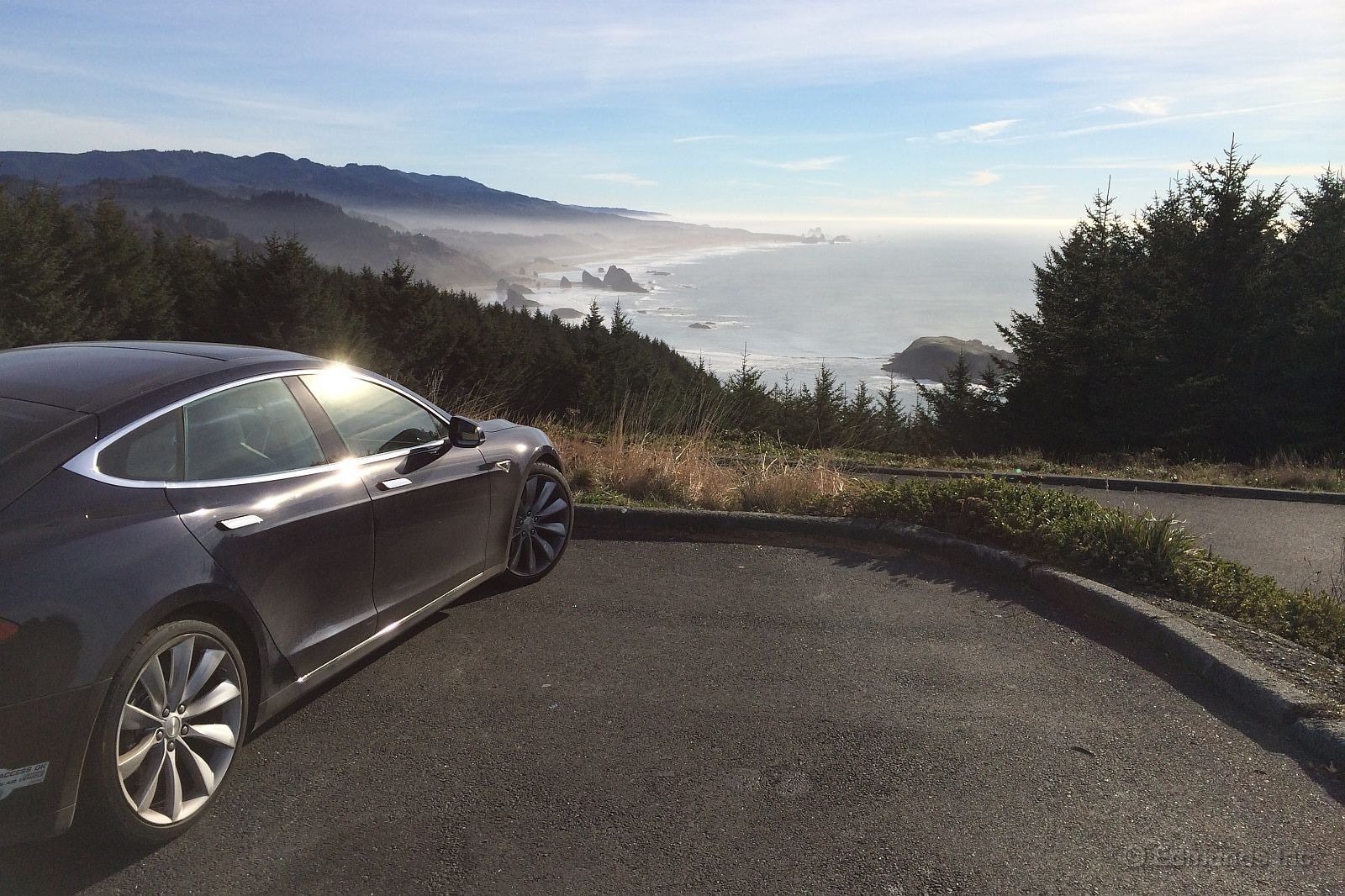
Here on the Oregon coast, the 2013 Tesla Model S is much more practical than I ever imagined. Cheap electricity makes it easy to run, and the Supercharger network along Interstate 5 is within easy reach. All you need is a NEMA 14-50 RV socket at your home base.
Mom and Dad could easily get to the Costco and Home Depot they frequent in Medford after a brief stop at the Grant's Pass supercharger. From there they could get to Seattle or L.A., but when it comes right down to it the sights are so spectacular here there's not much reason to venture too far afield.
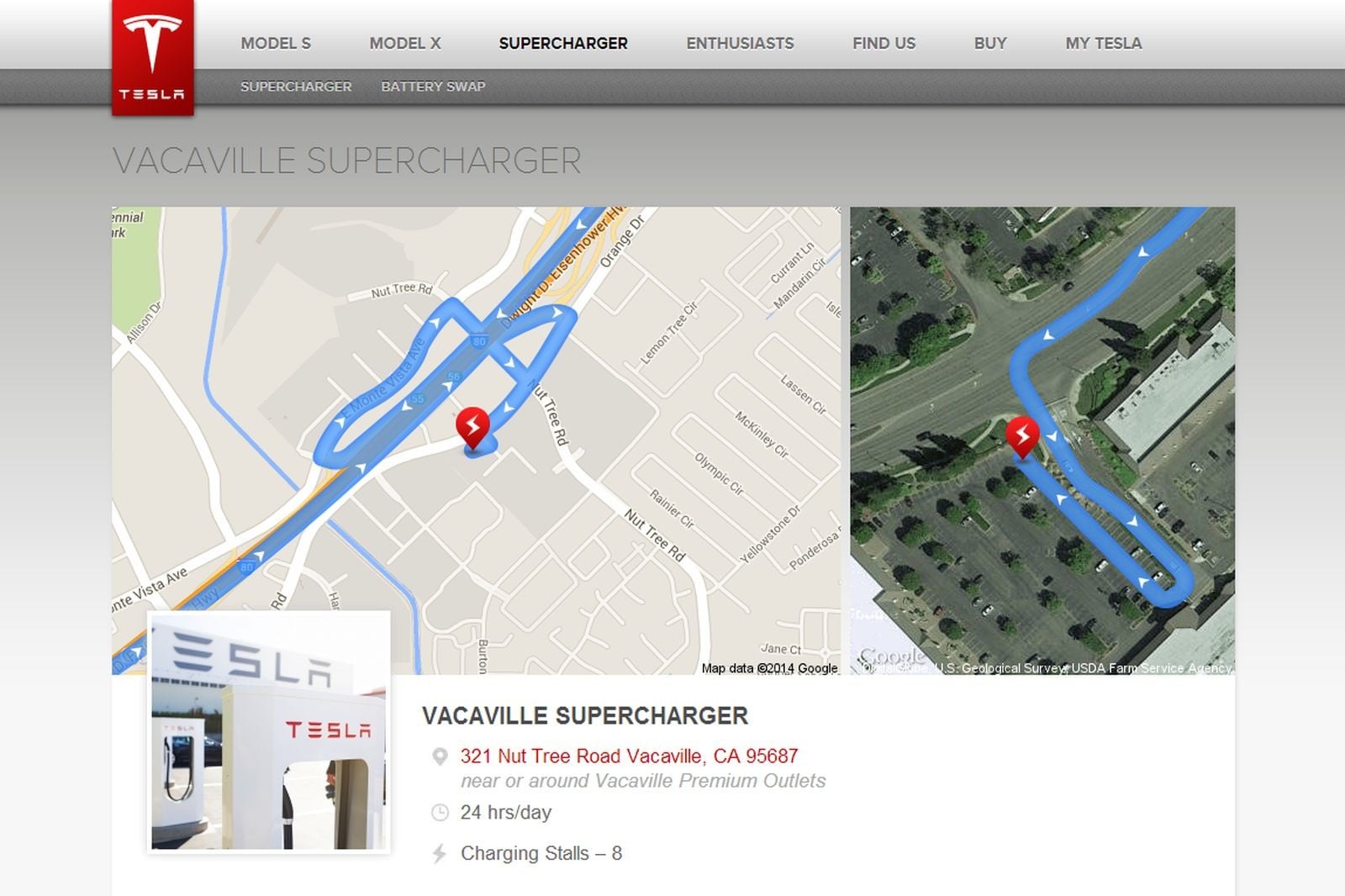
We're headed south on the way home from Oregon. The Supercharger at Vacaville, California is dead ahead. We decided against dinner at our last stop, but we're good and hungry now. And we're in the mood for a break.
I back our 2013 Tesla Model S into one of the eight supercharger slots located along one edge of the lot at Vacaville Premium Outlets, hop out and plug in. Electricity begins flowing before everyone else finishes sorting themselves out and exits the car. Time: 7:32 p.m.; remaining range: 13 miles
After a short discussion we decide to eat at Mel's Diner. It's not on the Vacaville Supercharger webpage that my wife consulted in the car on the way in, but Google says it's just behind the narrow strip of outlet stores to our left.
We do an end-around past the row of shops, traverse Mel's parking lot and go inside. The hostess seats us after a brief wait. Our waiter comes by after a couple of minutes and takes our drink orders while we continue to peruse our menus.
Our drinks arrive a couple of minutes later. At this point I decide to see how the car is doing while my wife and kids order food. Then I ask for a patty melt, medium well, with fries and a side salad.
Time: 7:45 p.m. (13 minutes elapsed); total miles added: 77; new range: 90 miles
The salads arrive. No, that one's mine. She had the ranch.
Time: 7:51 p.m. (19 minutes elapsed); total miles added: 107; new range: 120 miles
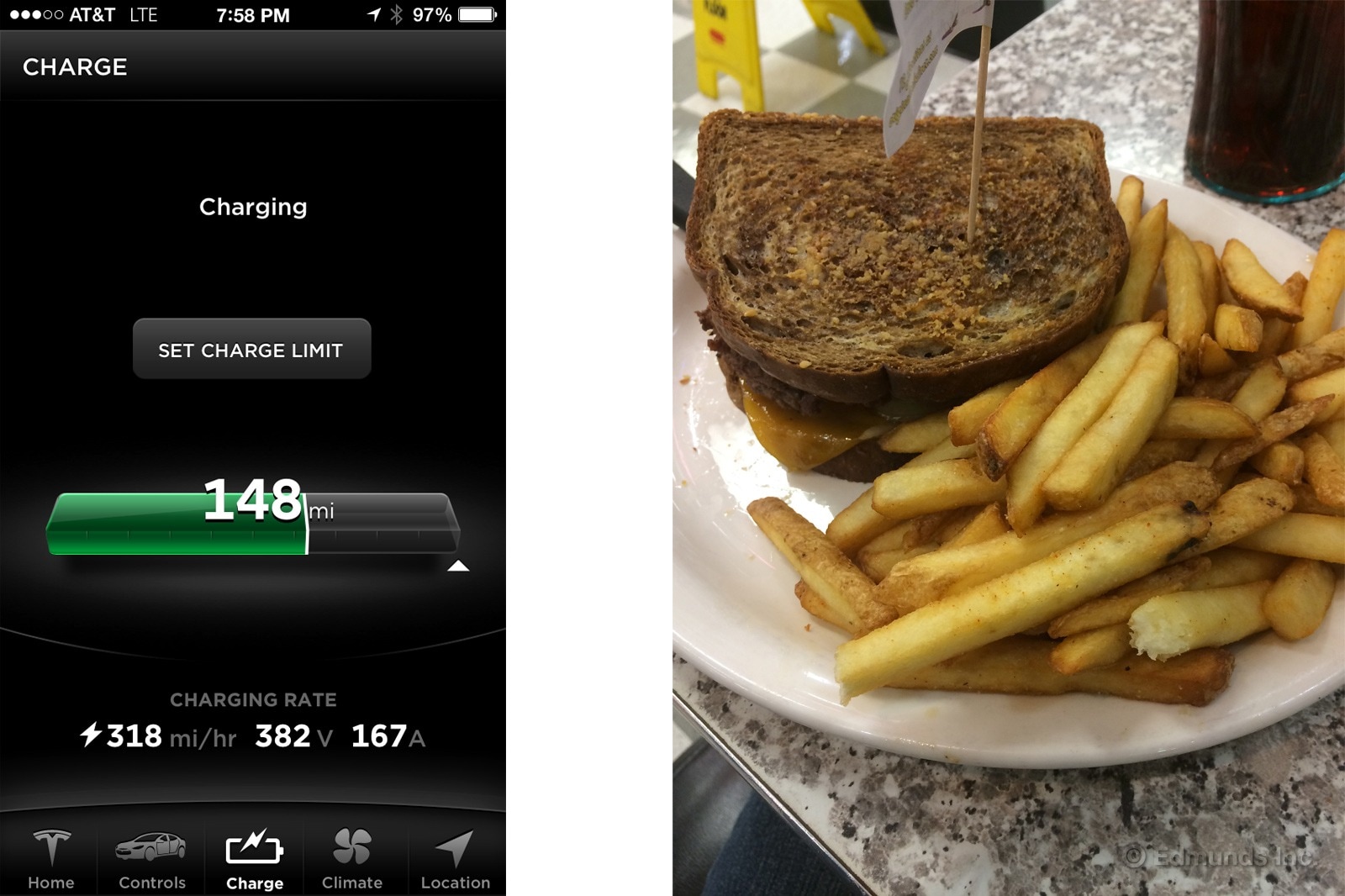
Our food arrives. Pass the ketchup, please.
Time: 7:58 p.m. (26 minutes elapsed); total miles added: 135; new range: 148 miles
Everyone's chatting and having a good time. The others continue to nibble away as I clean my plate of the last French fry and start eyeing the baggie of uneaten crackers that came with my salad.
Time: 8:17 p.m. (45 minutes elapsed); total miles added: 191; new range: 204 miles
The check arrived a couple of minutes ago after we declined dessert, but now we've decided we're ready to settle the bill and move on. I head to the register while the girls freshen up.
Time: 8:24 p.m. (52 minutes elapsed); total miles added: 205; new range: 218 miles
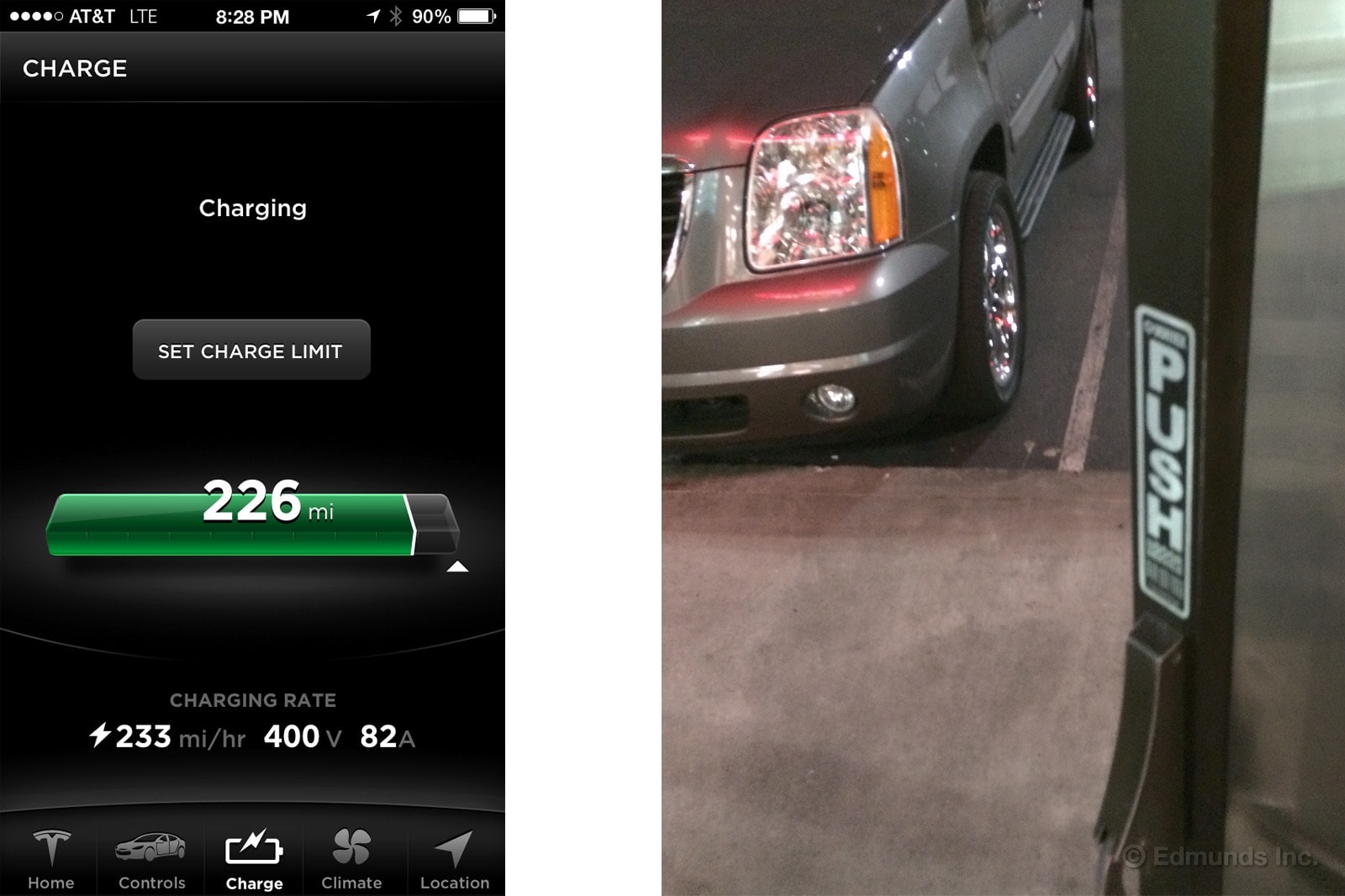
We head out the door.
Time: 8:28 p.m. (56 minutes elapsed); total miles added: 213; new range: 226 miles
We arrive back at the car. I unlock and unplug while the girls settle in.
Time: 8:32 p.m. (1 hour elapsed) total miles added: 219; new range: 232 miles
Strictly speaking, we didn't need to add this much juice. Our next Supercharger at Gilroy is only 114 miles away. The battery took enough electricity on board by the time our food arrived at the 26-minute mark. We could have eaten across the street at In-N-Out and been fine.
But we were happy to relax and chill out a bit. The car was ready well before we were, but it's nice to know this longer opportunistic charge will only make our next stop that much shorter.
You may have noticed that half of the total amount we added went in during the first 20 minutes. The second half took the next 40 minutes. That's typical. Charging starts off at a rapid pace and gradually tapers off near the end.
The best way to minimize Supercharger downtime — if that's important on a given trip — is to work it out so you arrive with a lowish battery so you're charging on the steep part of the charge-rate curve. And it doesn't pay to fill up any more than necessary to get to the next one. That is, of course, unless you're in the mood for an unhurried dinner like we were.

What is it with our long-term 2013 Tesla Model S and its rear tires? First the premature wear issue that destroyed the two rears, then a bubble that destroyed the driver-side rear, now this.
The tire pressure monitoring system (TPMS) light came on while driving. Before I could pull off to check into it, the light extinguished. Forgot about it until the next day when this alert flashed up while still in the driveway.
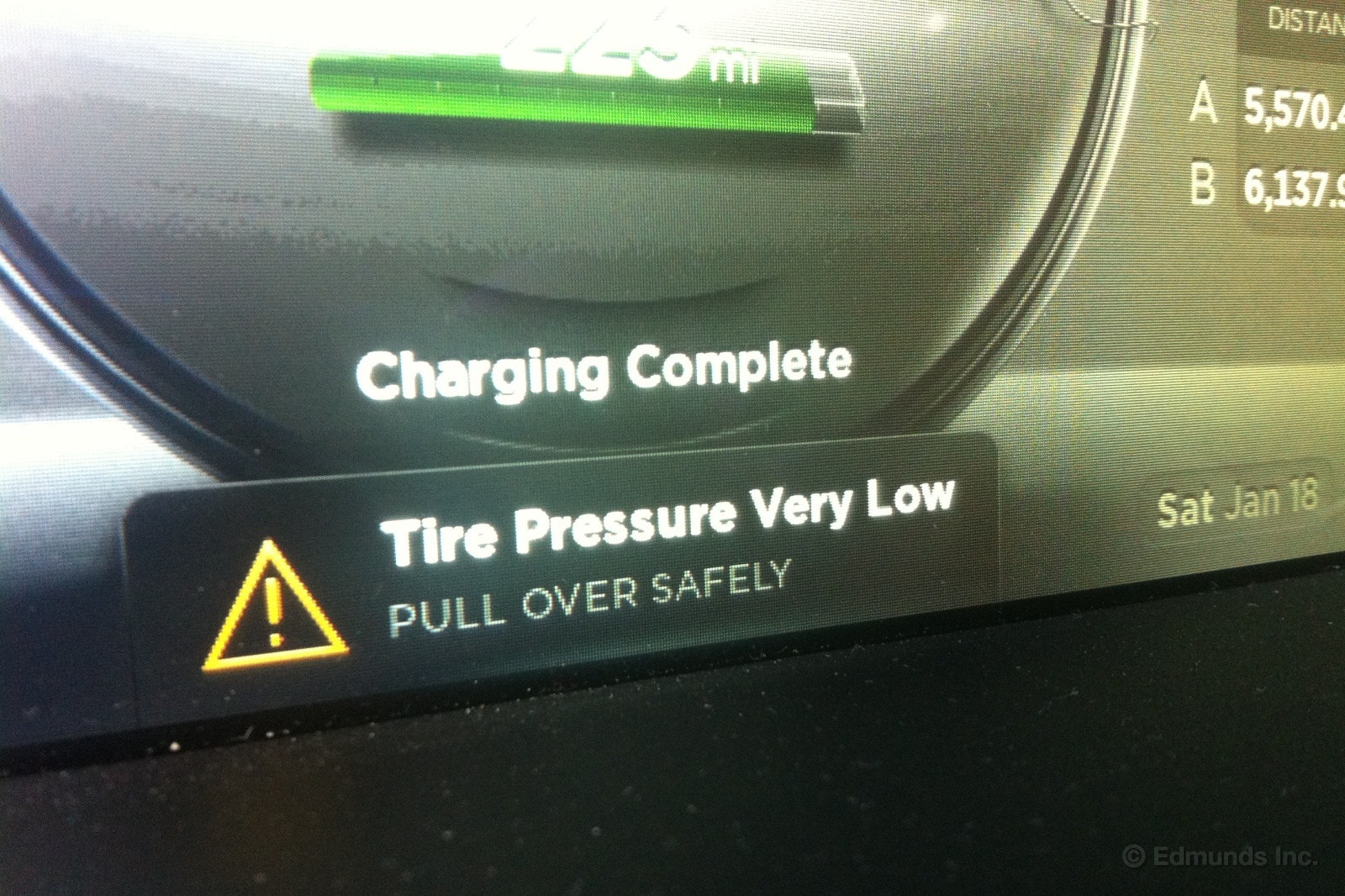
This was a far more strident warning than the one that came up the day prior. Sure enough, the driver-side rear tire was the source of the light. Here's how low it was:
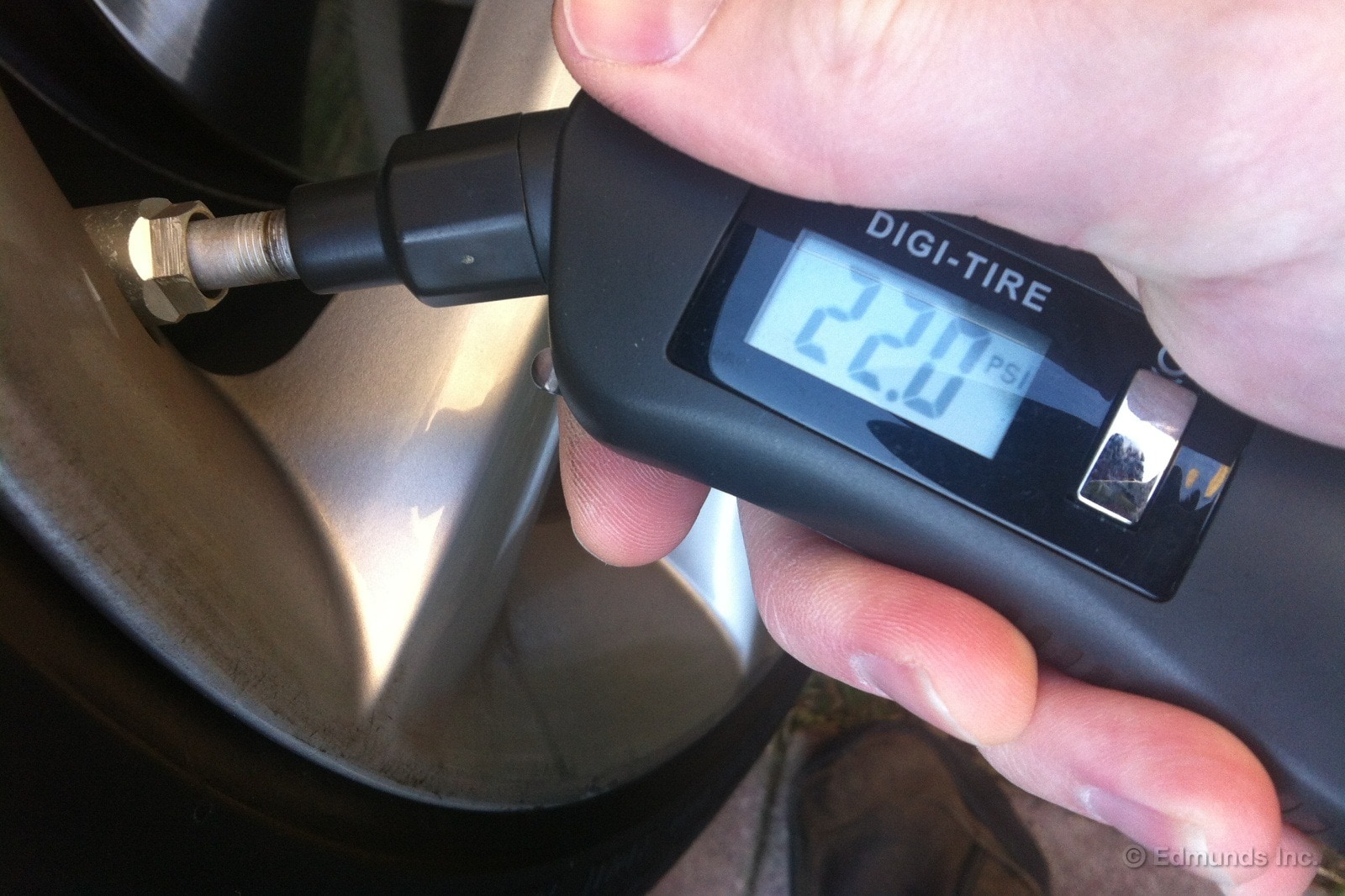
I couldn't see what was causing the leak, so I pumped it back up to 42 psi and kept an eye out for recurring TPMS lights. That day I drove it 80 miles with no such light. The next day it was back to 20 psi in the morning. So I set it to 42 psi again and headed to Stokes Tire.
The culprit: a wood screw in the tread. $30 later and a fresh tire plug and I was on my way.
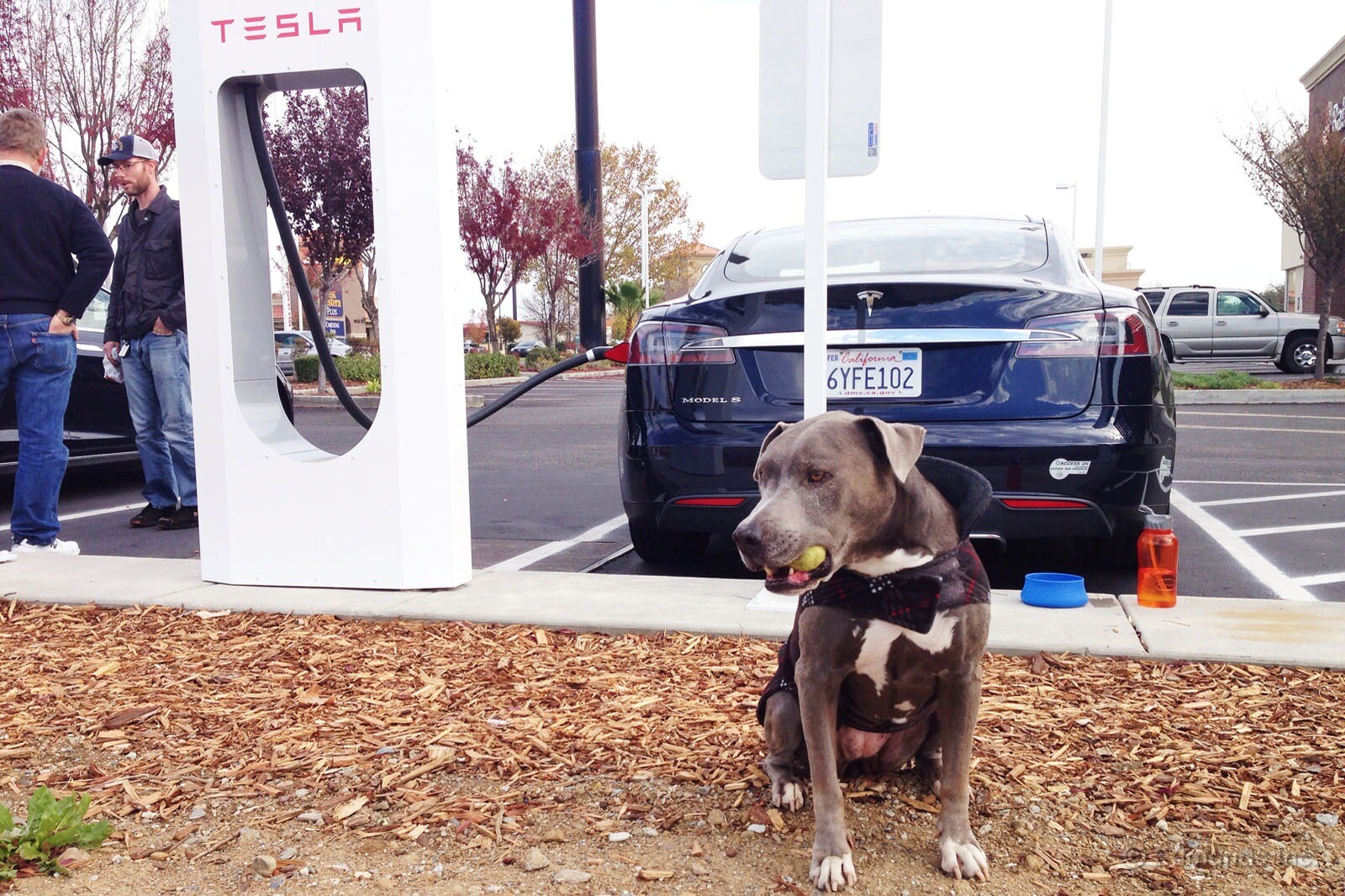
So I've been meaning to write this up for awhile: a quick review of each of the Supercharger stations we stopped off at to charge our 2013 Tesla Model S during a holiday road trip from L.A. to Corvallis, Oregon.
Editor Dan Edmunds pretty much did the same run JayKav and I did back in November but I figured I'd focus more on what exactly there is to do at these stations while you're waiting for your car to charge.
Unsurprisingly, there's not much to do in the middle of nowhere, which is where most of these superchargers are located. And surprisingly, you'd think Tesla would partner up with affluent brands to appeal to the typical Tesla customer. But nope. Or maybe just not yet. Anyway, here's what you can do at each stop.
We had Mya the dog with us so she welcomed these frequent stops. And given the half hour to 45 minutes it was the perfect opportunity to have her stretch her legs and go potty.
By the way, since Tesla's Supercharger map isn't interactive, I made my own Google Maps of where we stopped.
Lebec: In terms of food, this has something for everyone. We liked Chipotle for those tasty bowls, Starbucks for a coffee or if you want to go for a walk, there's the In N Out across Laval Road. Since we brought Mya the dog with us, she loved the walk. There's also a huge open field north of Laval Road for playing fetch.
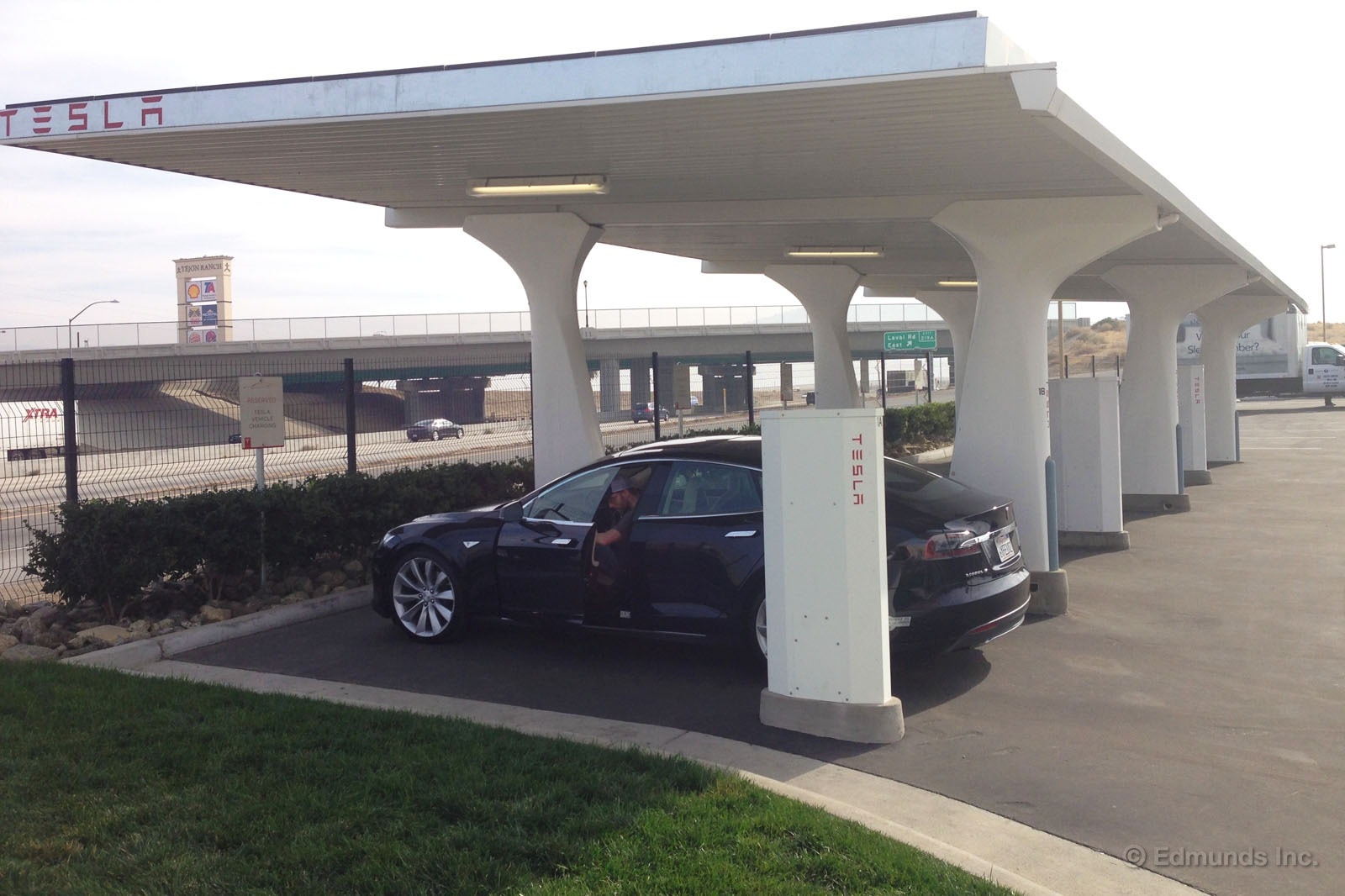
Harris Ranch: Since this Supercharger is located in the parking lot of the Harris Ranch, all there really is to do is peruse the little gift store inside. There's a bunch of food gifts like fancy jars of jam, nuts, etc. There's also a bar and a restaurant. But we just grabbed a cup of coffee and enjoyed the quiet garden in the back.
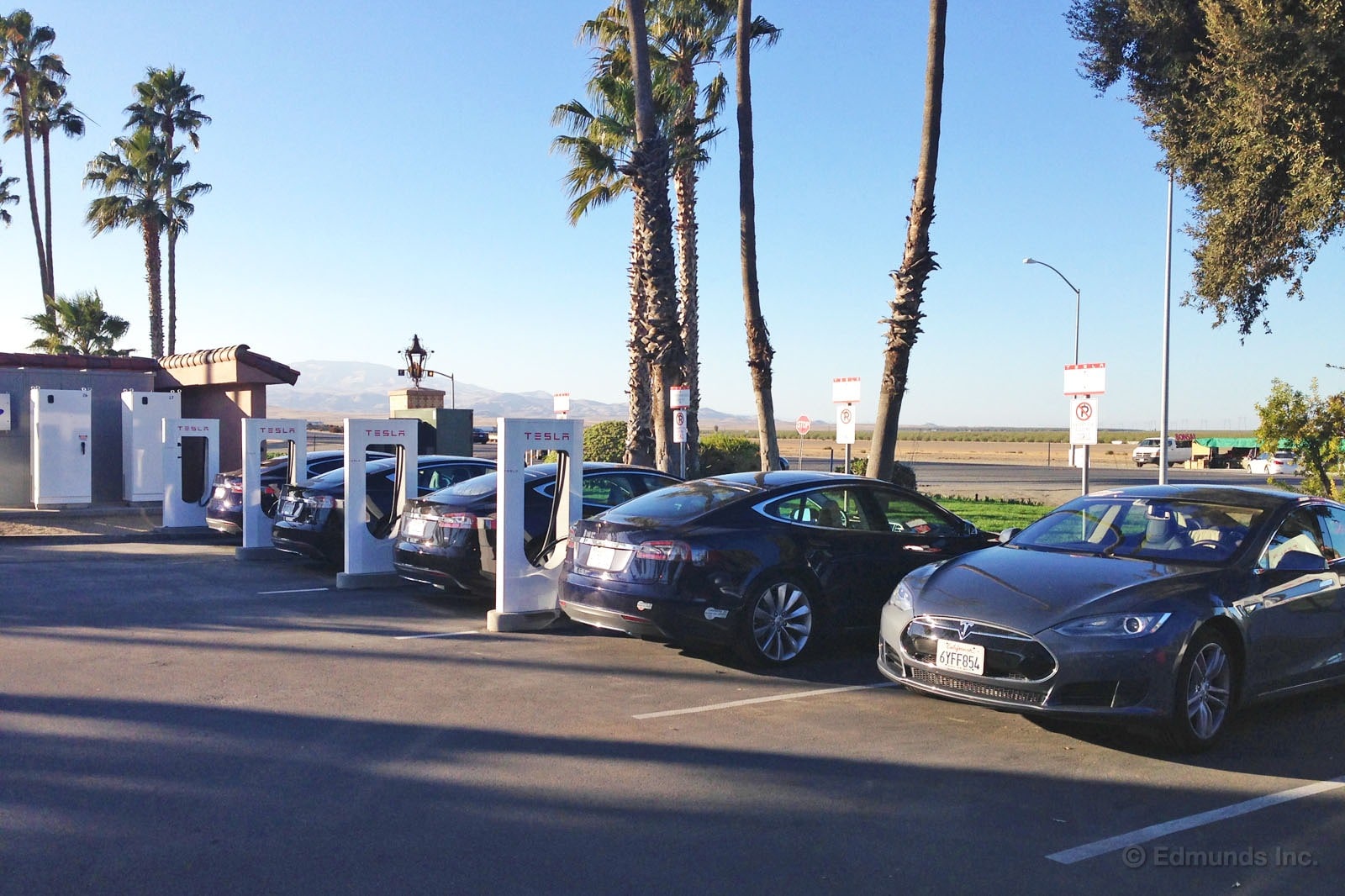
Folsom: This Supercharger station was located in the Folsom Premium Outlet parking lot near a McDonald's. Nothing really "premium" about the stores there. But you can kill time window shopping. If you like McDonald's then you're in luck. But if you'd rather have something like Starbucks, it's a 1.2-mile walk along Folsom Boulevard. Mya loved that walk of course. We even came across wildlife! Some Canada geese just tooling about.
Corning: Really the only thing here is Starbucks. You can have coffee and use their free WiFi. When we drove up, there was a Tesla owner passing the time sitting in his car. He came out to talk to us once we plugged in. While he and JayKav chatted, I played fetch with Mya in the nearby dirt lot.
Mt. Shasta: This was my favorite Supercharger stop. There's a lovely stream past the station where again we played fetch with Mya and had her run around. The Tree House Restaurant & Bar, where the Supercharger is located, didn't really have anything we were interested in eating so we walked to Mt. Shasta Boulevard where there were more restaurant options. Yaks Koffee Shop & Cafe has the biggest breakfast burrito I've ever seen as well as a fancy coffee drink menu with Butter Toffee Lattes and Coconut Cream Mochas, if that's your thing.
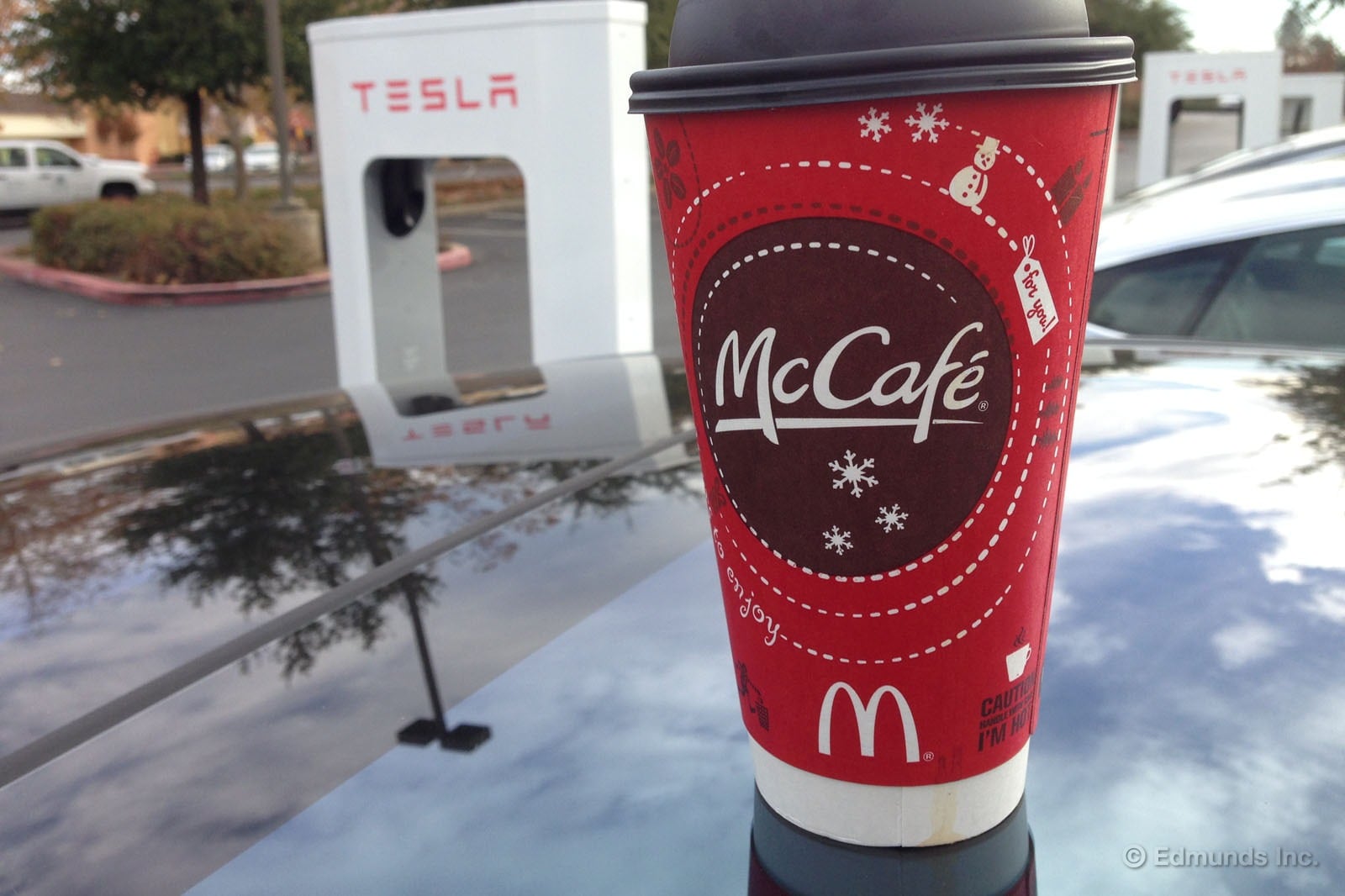
Grants Pass: Ohhh, Grants Pass. This is the sitting-in-your-car stop. Nothing really to see here unless you want to take a stroll to look at a giant Caveman statue. There's a McDonald's across the street.
Eugene: This was my second favorite stop because it's within walking distance of the Hop Valley Brewing Co. Your road trip companion can enjoy a flight of beer here, but I recommend their IPA, which was pretty decent. For food they have hearty entrees like gorgonzola stuffed porkchops and an Alehouse steak. If you don't mind a walk and want some coffee, surprise, there's a Starbucks just 0.3 mile away.
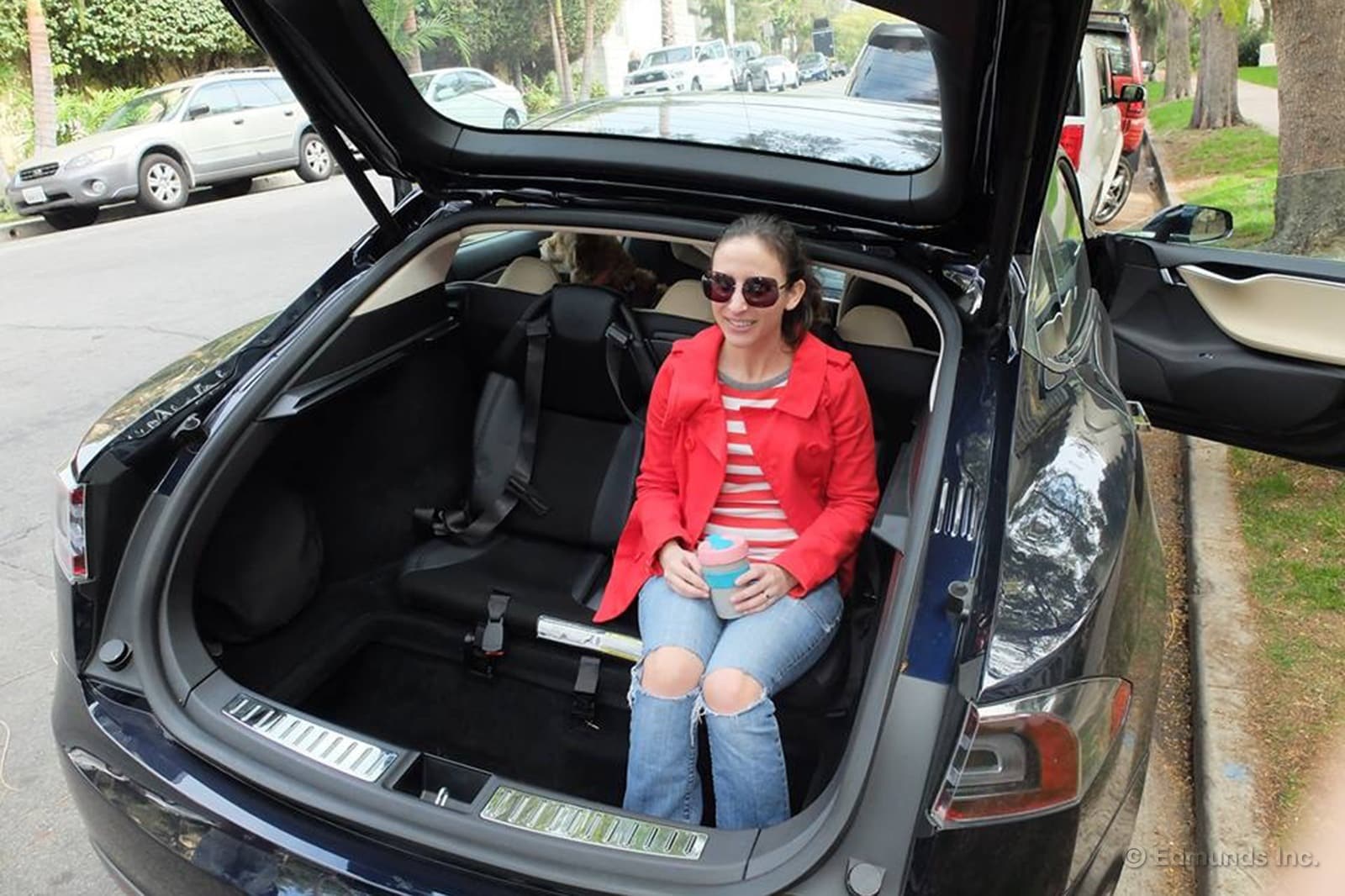
Jacquot and Monticello are forever pondering, "Will the Bike Fit?" Or rather, will a mountain bike fit in the trunk of the long-term car in question. That's not what I'm seeking to answer today.
Now normally, I wouldn't ponder whether my wife will fit in the trunk of a car. Generally speaking, doing so would indicate that I have either, A) Murdered her or B) Attempted to smuggle her out of East Germany. In this case, the 2013 Tesla Model S provides a third option.
We equipped our Tesla with the two-person, pop-up "third-row" seat that faces rearward in the trunk just like wagons of old (and the Mercedes-Benz E350 Wagon of new; the only other car to come so-equipped). It's quite obvious that it's intended for children, but as the wife in question is only 5 feet tall, I started to wonder if she would indeed fit.
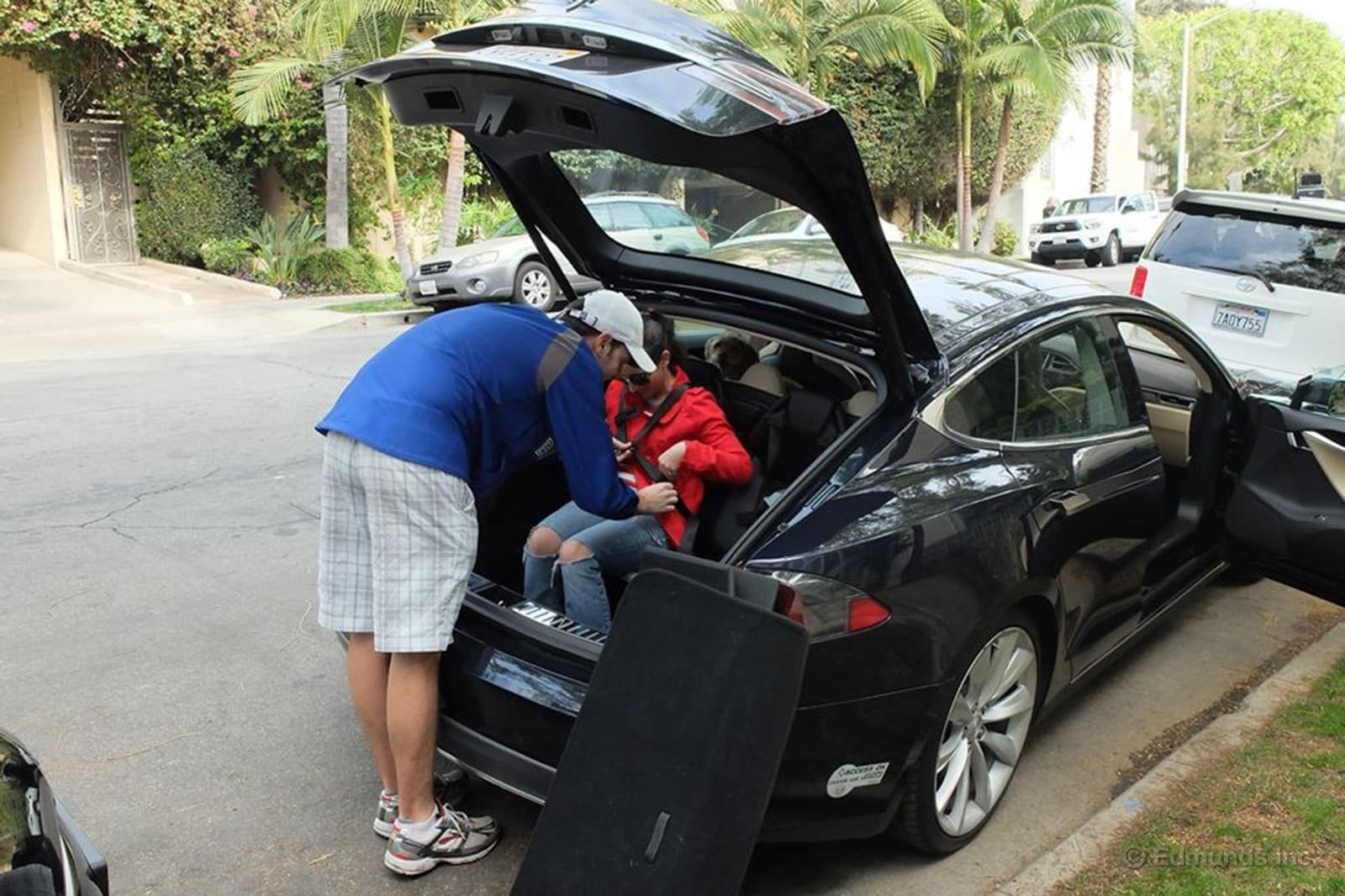
Each seat comes with a five-point seat belt like you'd find in a child seat. Here, we briefly tried to secure it for a better picture, but as it proved mildly difficult to adjust the belts, abandoned the attempt.
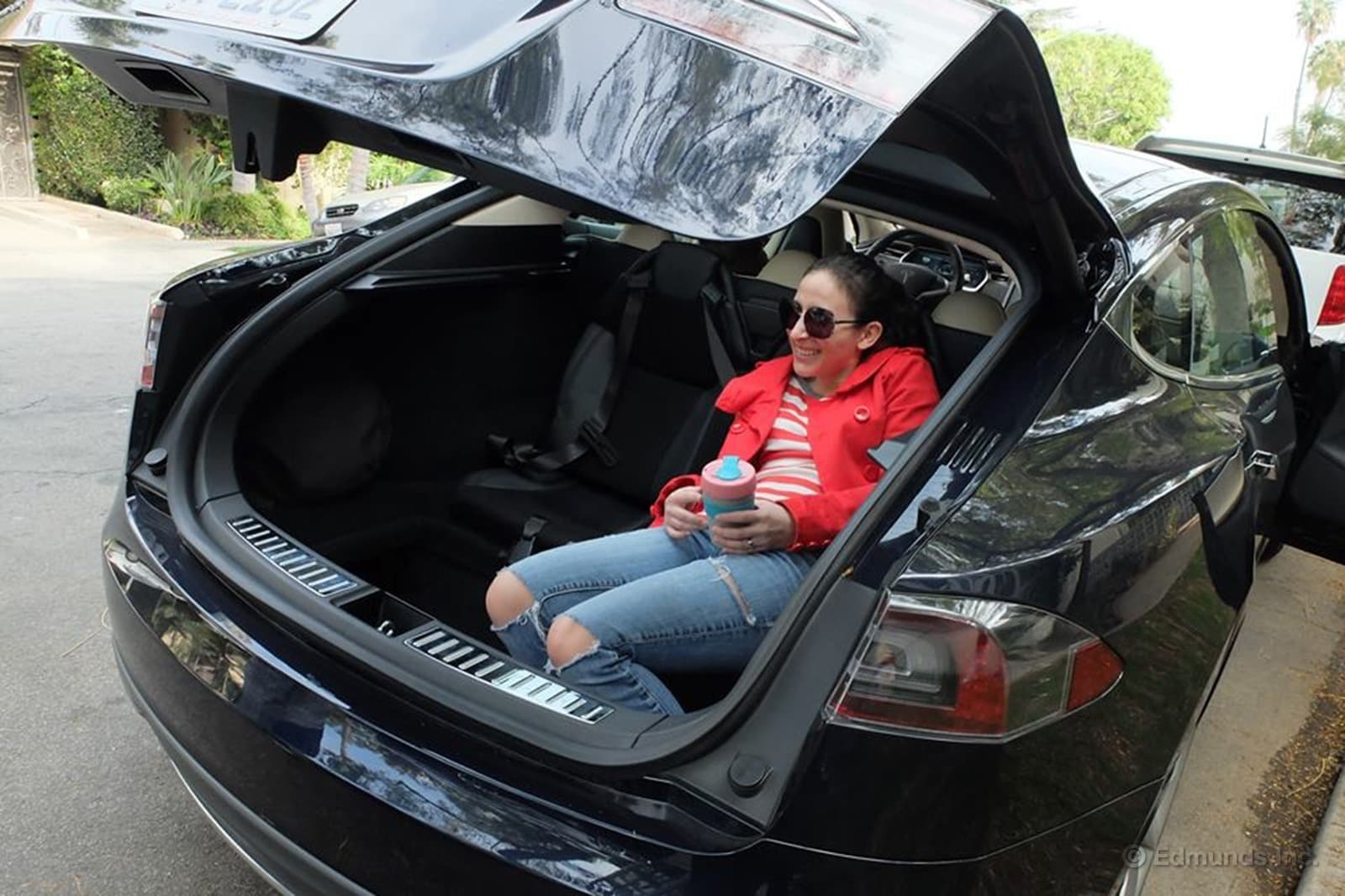
Ah, so I guess it was a good thing we couldn't get those belts to work.
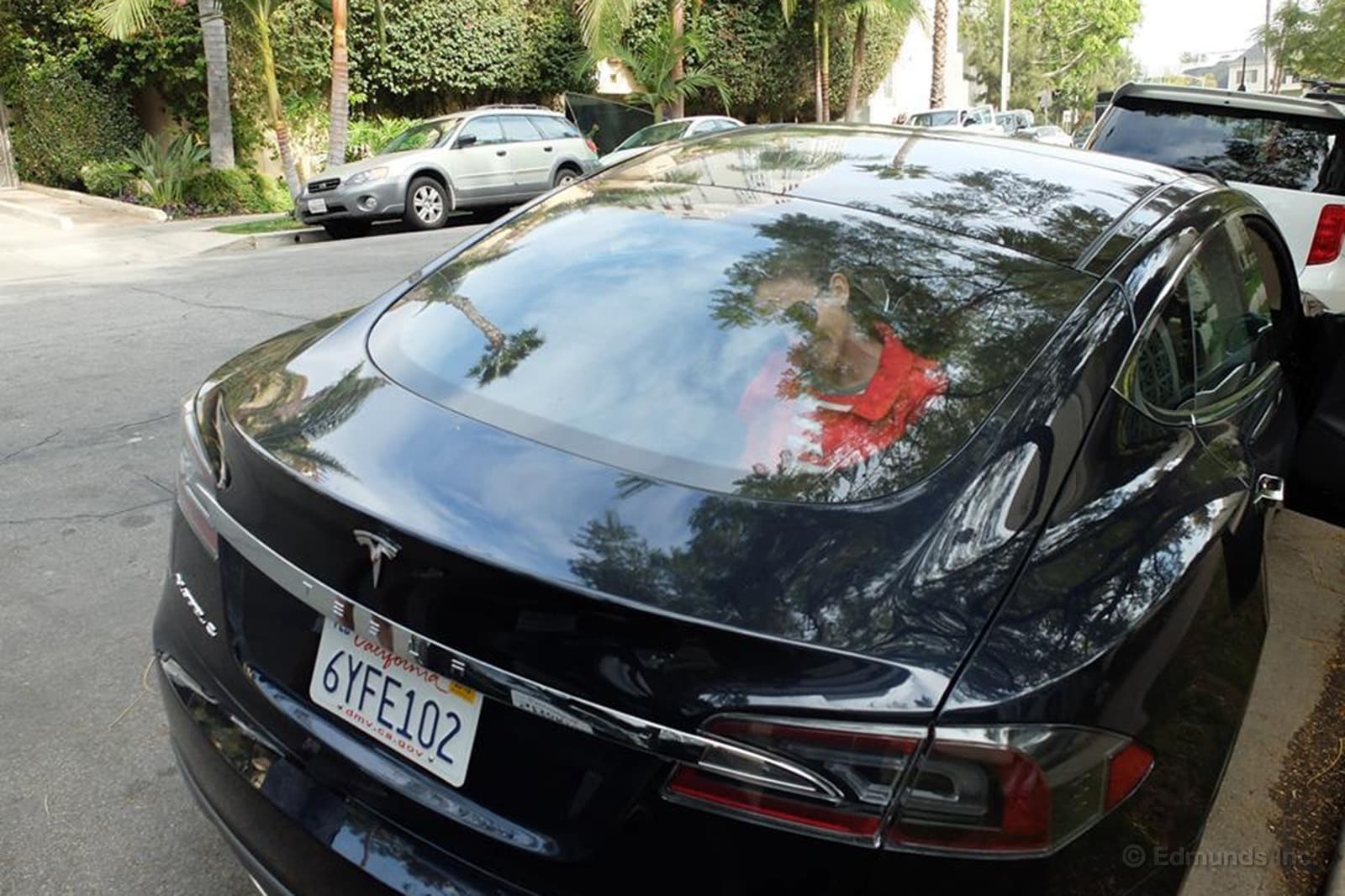
So here's your answer: the wife will not fit. Or she will, but she won't be happy. Or she won't have a head, which I suppose means you actually did murder her, in which case you didn't really need the Tesla to begin with. You really shouldn't murder your wife.
Best to keep the rumble seat to the kids, then. Or skip it altogether, as the hole it leaves under the trunk floor would be quite useful for carrying groceries and other easily shiftable items.
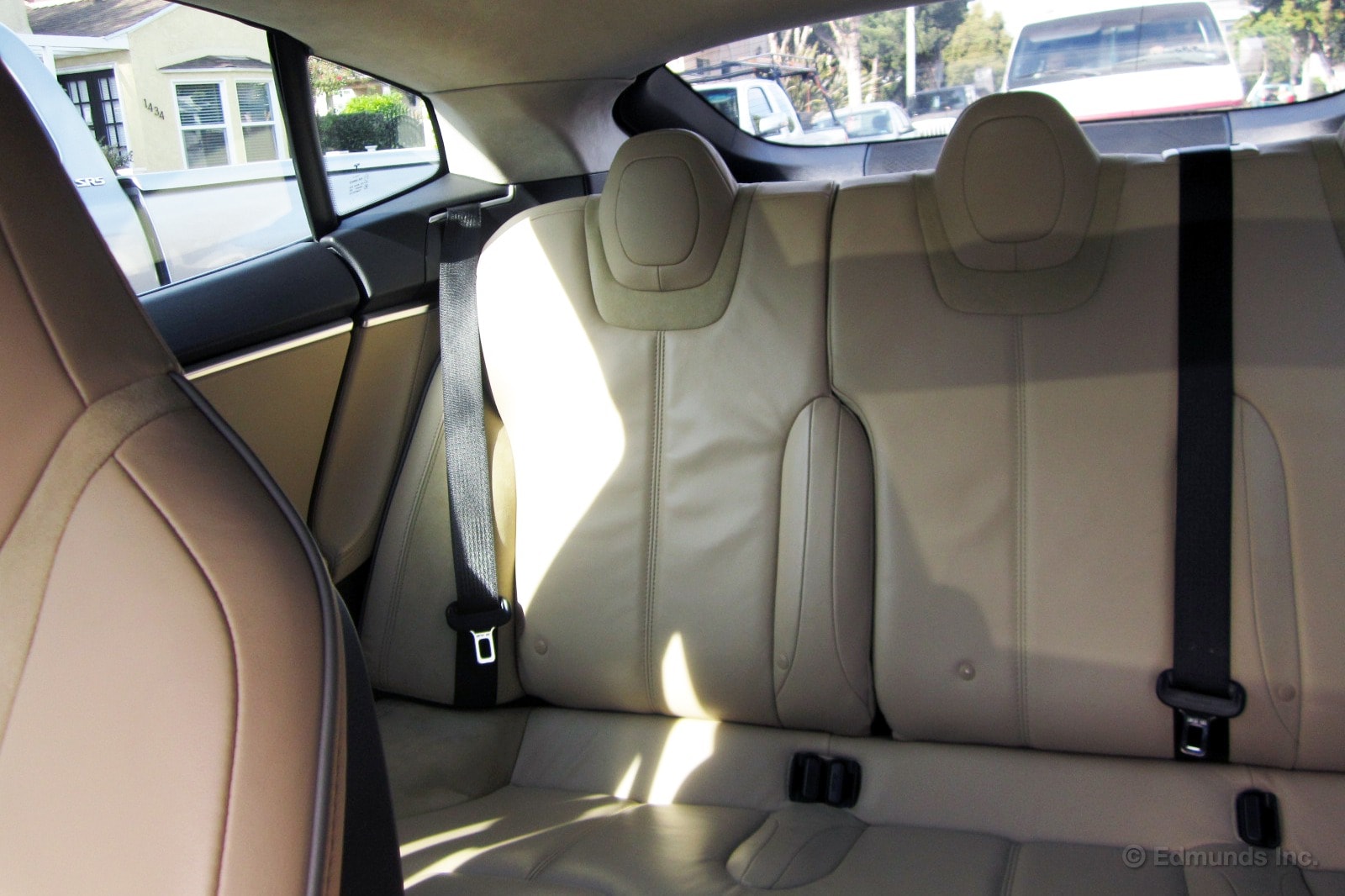
I've previously written about the 2013 Tesla Model S's missing coat hooks and grab handles. I've also expressed my puzzlement about the bowling alley that runs between the front seats.
After driving the Tesla Model S this past weekend, I noticed a few more common equipment omissions. Just like the Mercedes CLA, the Tesla does not have a drop-down rear center armrest. Given the Tesla's higher price and vastly more usable rear seat space, it's an even more glaring omission here.
The Tesla also lacks a Homelink universal garage door opener and a hard-wire iPhone/iPod music interface. The latter is especially annoying since the car has a pair of USB ports, which in virtually every car, indicates you can control your iWhatever with the car's own controls.
Instead, you're left with Bluetooth Audio (no AUX jack either) and the need to select tracks or podcasts with the phone itself. That'll probably get you pulled over in California and other states, since looking at your phone to select something is obviously exponentially more dangerous than looking at the 40-inch flatscreen embedded in the dash.
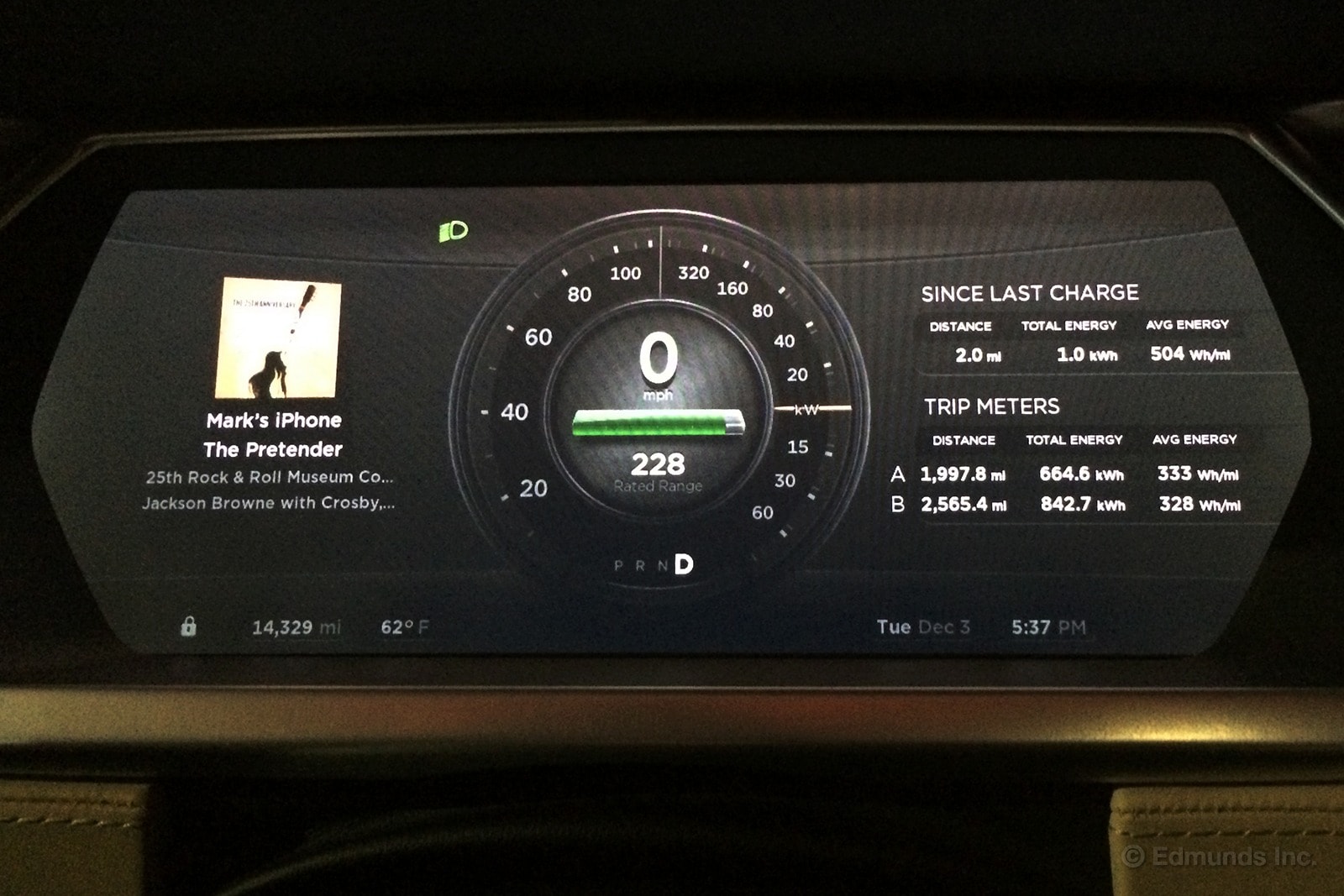
Savvy TV shoppers may learn about tech terms like luminance, contrast ratio and refresh rates. Then there are black levels, and that's what leads me to the 2013 Tesla Model S.
At night, I noticed that the screens (both the instrument panel and the big central touchscreen) never attain a good solid level of blackness. Where it's supposed to be black, it's really a dark-ish gray. As a self-professed TV nerd, this bothers me. No, it's not a deal breaker, but it does make it just a little bit harder to read things at a quick glance.
You can see it in the rather poor image above. Those darkest areas on screen should be black. I tried adjusting the screen brightness but what I may have needed was a contrast adjustment. Then again, it's probably the screen itself, as the picture elements simply can't block all of the backlighting.
Yes, I've gotten to that point with the Tesla. Nitpicking. The rest of the car is great. I mean that. I love driving this car.
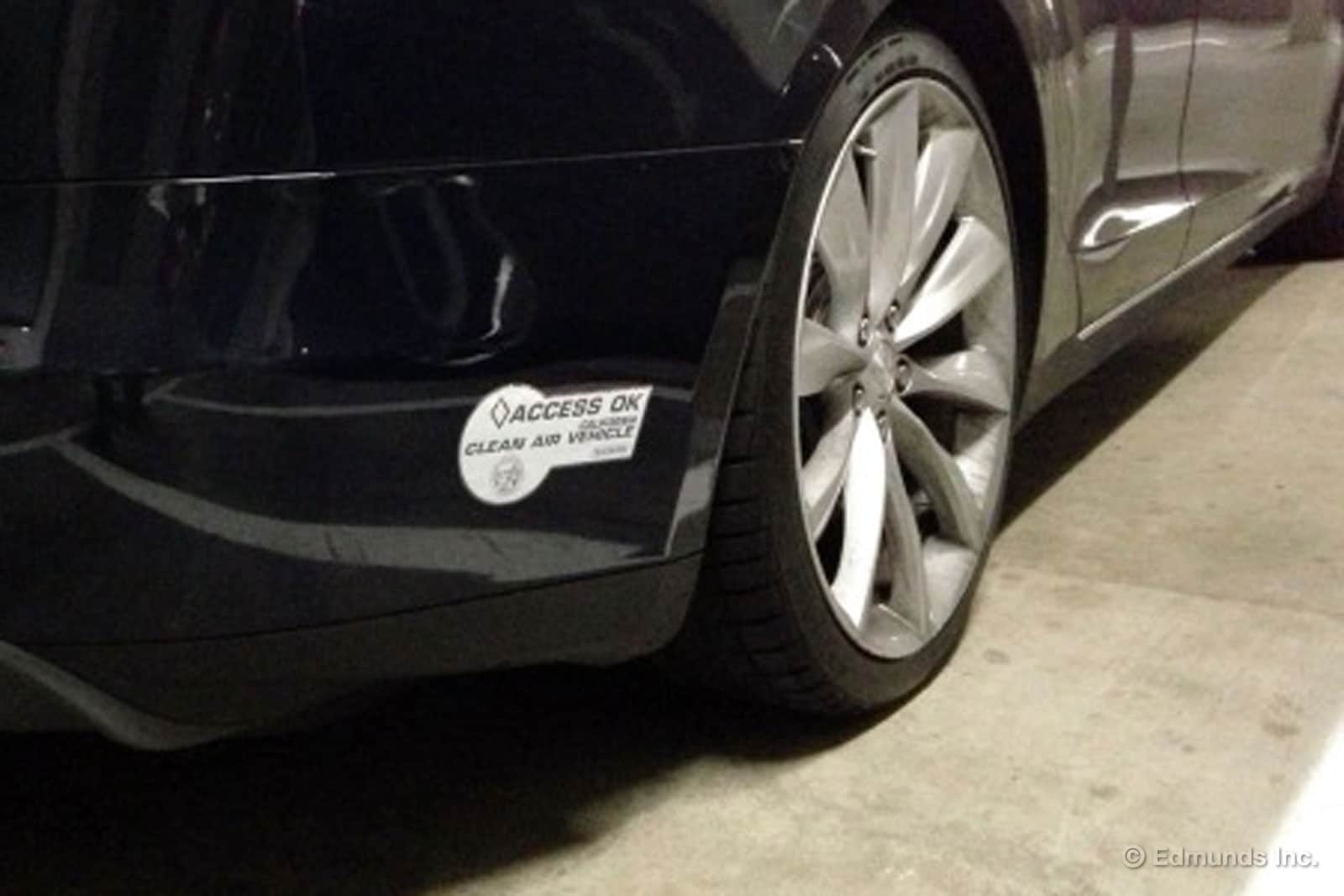
When the carpool stickers for our 2013 Tesla Model S finally arrived last summer I was thrilled. With a 35-mile commute each way down one of the busiest freeways in L.A., I saw myself shaving a nice chunk off of it each night as I breezed by in the far left lane.
The reality has been completely different.
I'm not sure whether it's the sheer number of "carpool exempt" cars (Tesla, Prius, Volt, etc.) or an increased number of real carpoolers, but the far left lane is now nearly as crowded as every other lane on the 405, at least during rush hour. In fact, a fellow editor with the same commute even passed me the other night while driving in the standard lanes.
Now, I still like the fact that I can use the carpool lane while driving the Tesla and the fact that it's about hundred times better than a Prius doesn't hurt either. But the days of carpool sticker nirvana are over in L.A. and I don't see it going back anytime soon.
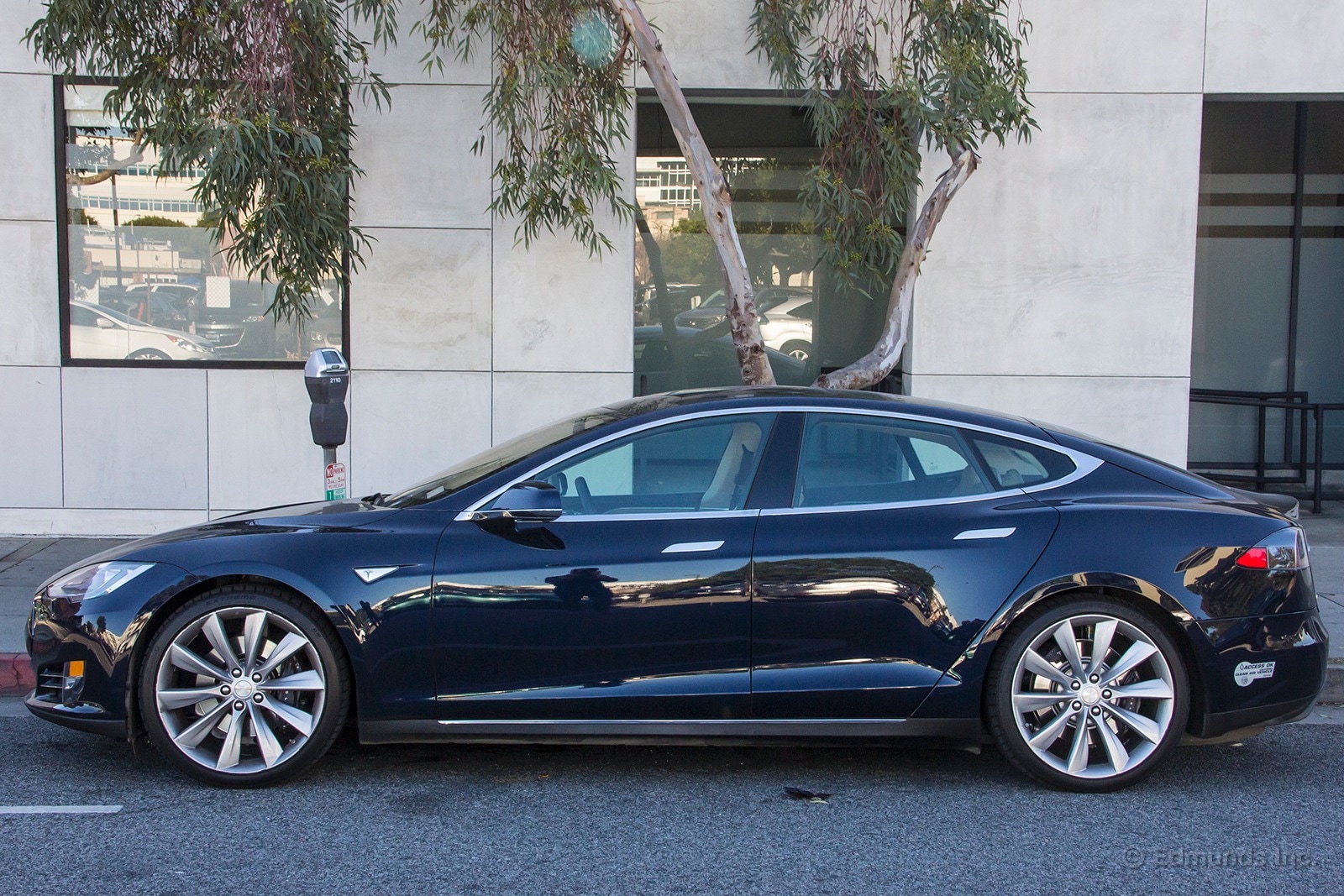
With new supercharger stations opening daily, our long-term 2013 Tesla Model S has been clocking quite a few miles as of late. It has seen several road trips, and I don't see it in the office nearly as much. I hadn't driven our Tesla in ages, but when I got back into it recently, I remembered exactly how much I love this car.
The interior is still fantastic. While there are minor gripes about panel fitment, the door panel design is stunning, and I find the massive center screen massively pleasing to look at and touch.
The exterior is still gorgeous, too. The character lines are as appealing as they were when the Model S was new, and in my mind they will look good for a long time (unlike some over-styled EVs of the past).
Most of all, the acceleration continues to delight me. The readily available torque in the Tesla Model S entertains everyone that sits in the passenger seat and quickly leaves surrounding traffic in the rear view.
Some cars lose their luster once the new-car smell is gone, and even this $100K electric supercar sedan is subject to some of that. But after nearly a year in our fleet, the Model S still gets my vehement seal of approval.
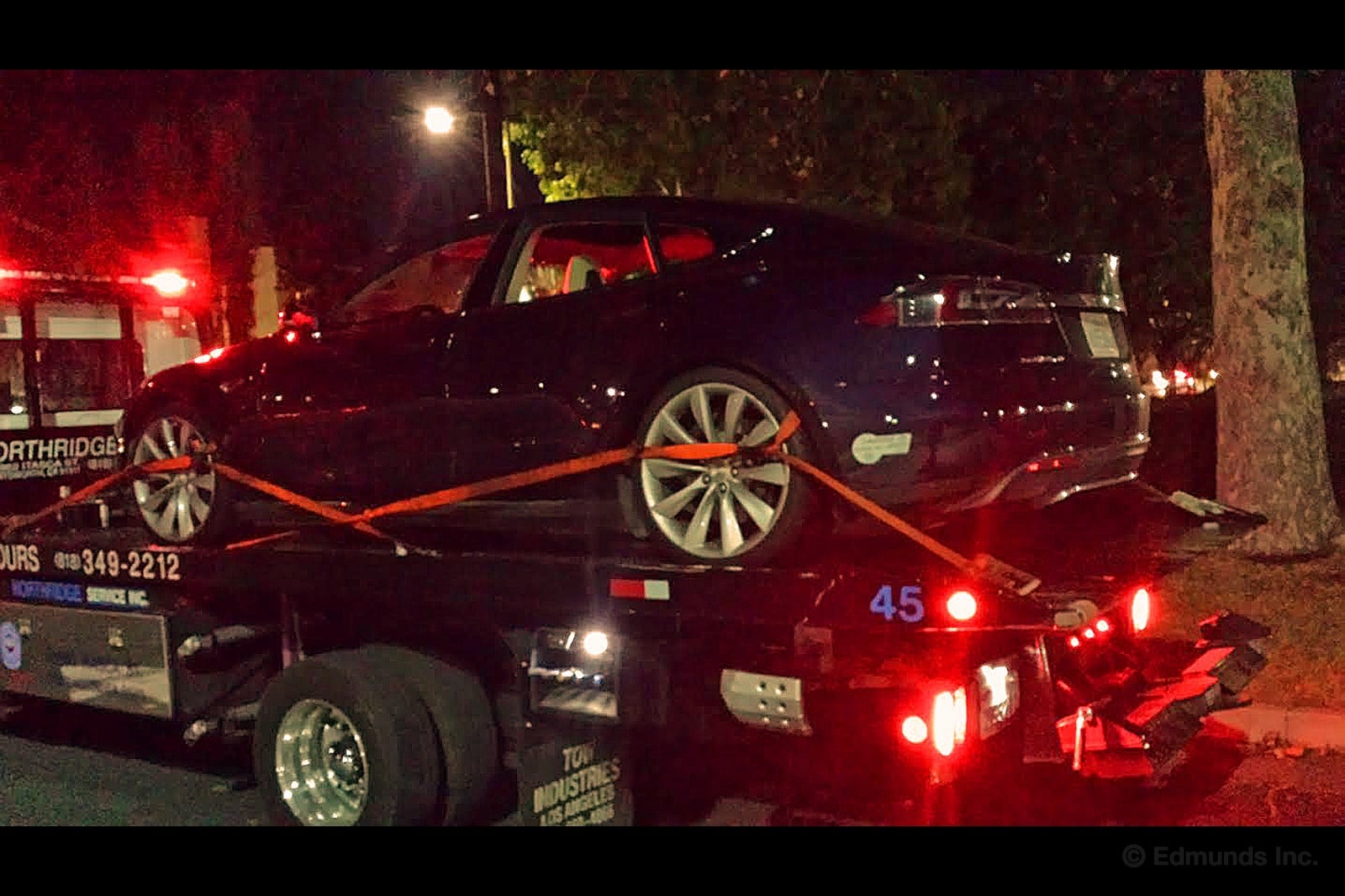
This was to be my first date with the 2013 Tesla Model S. I've admired this car from afar, and quite honestly, I'd been looking forward to some Tesla seat time since being hired at Edmunds.com. Finally, my chance had come. Just the two of us. Alone. It was destined to be a special night. Me, the Tesla, and the highway.
Well, I'm sure I'm not the first guy to have a dream date go sour.
The night started innocently enough. After a thorough intro to the car by Features Editor Mike Magrath, I hopped into the Tesla and made my way to Pacific Coast Highway. My plan was to drive it by the beach, then take a canyon drive over to the San Fernando Valley.
The initial drive was fun, but uneventful. Because of traffic, I wasn't really able to test the Model S's capabilities, but I got glimpses of what it could do while switching lanes on PCH. Magrath had said, "Two things to remember. This car is wide, like S Class wide. And it is fast. Crazy fast."
It sounded like a challenge. But I behaved myself. No need for the new guy to go and get into trouble.
When I got home, I parked the Model S and went upstairs. My teenage son saw the key fob (which looks like a car itself) and flipped. "Do you have the Tesla today?"
And then the pleas began: Can I have a ride? Please? I dangled the Model S as a way to get some dishes washed, and then we were off.
Twenty minutes later, I was back in the car with my son as copilot. Our plan was to go south on the 101 Freeway for one exit, turn around, and come back, a roundtrip of perhaps a mile. With little freeway traffic, it seemed like a great idea.
The initial drive was great. Both the kid and I had smiles the size of Fiats. The Tesla gave us smooth, powerful acceleration. Mike had suggested this could very well be the fastest car I'd ever driven, and he was spot on. Incredible ride.
The ride went incredibly bad on the way back.
While accelerating up the 101 north onramp, something happened. I'm not sure what as I'm not a tech guy. The best way to describe the feeling would be to compare it to a manual-transmission car stalling in first gear. The Tesla jerked violently forward, and then lost power.
The Tesla's massive display starting flashing messages: "12V Battery Power Low - Car May Shut Down Unexpectedly" and "Car Needs Service - Car May Shut Down Unexpectedly." The funny thing about it was that the car already had shut down unexpectedly. I had no power to accelerate and I couldn't move over to the shoulder. I simply had to coast to a stop on the onramp of a Los Angeles freeway, well after dark.
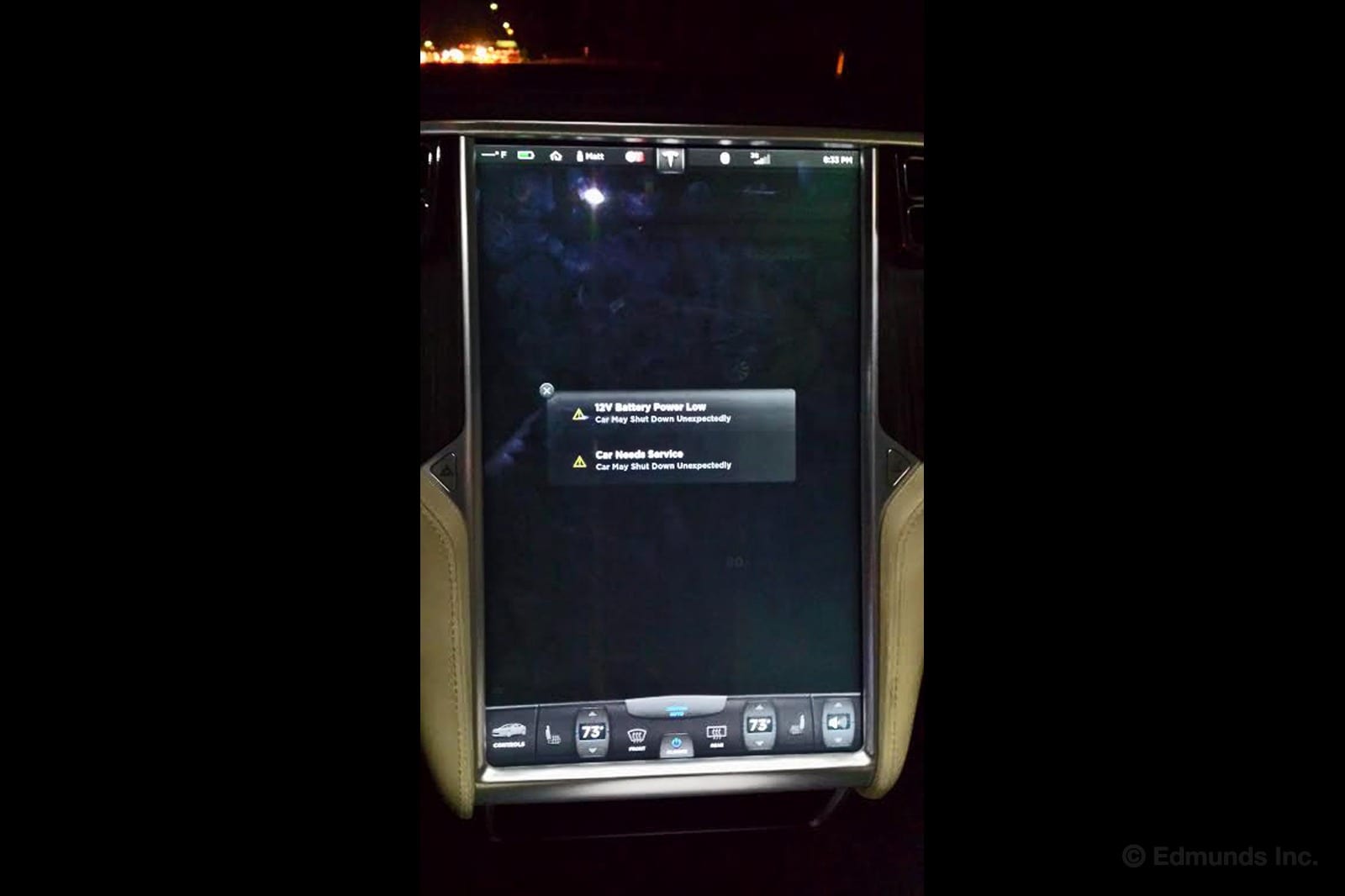
My son hit the hazard icon on the dash and we hopped out of the car. We've all seen videos of stalled cars on freeways getting plowed into by distracted drivers. We weren't hanging around for that.
I did get back in the car for a moment when the onramp was clear. I wanted to try again to restart the car to get it out of traffic. No dice. I got out, and we stayed well clear of the disabled Tesla after that.
I called a friend who lived nearby and asked him to take my kid home. No need for both of us to be stuck on the side of a freeway. He suggested we put the car in neutral and roll it over to the shoulder or down the onramp and onto the street. Great suggestions, but we couldn't get the car out of gear.
It's worth noting that between my friend and me, we have nearly two decades of car-sales experience. That doesn't make us experts in car technology, but we've both driven thousands of cars over the years. Chances are if we couldn't find a way to move the Tesla, the average driver wouldn't have been able to either.
We got Tesla roadside assistance on the phone, and learned that in 45 minutes or less a tow truck would arrive to get me off the road. About 30 minutes later, the truck arrived.
The timing couldn't have been better. While the tow truck was setting up to load the Tesla, whatever power source was keeping the hazard lights blinking failed.
If the tow truck didn't arrive at exactly when it did, the stalled Tesla would have been nearly invisible to traffic getting on the freeway.
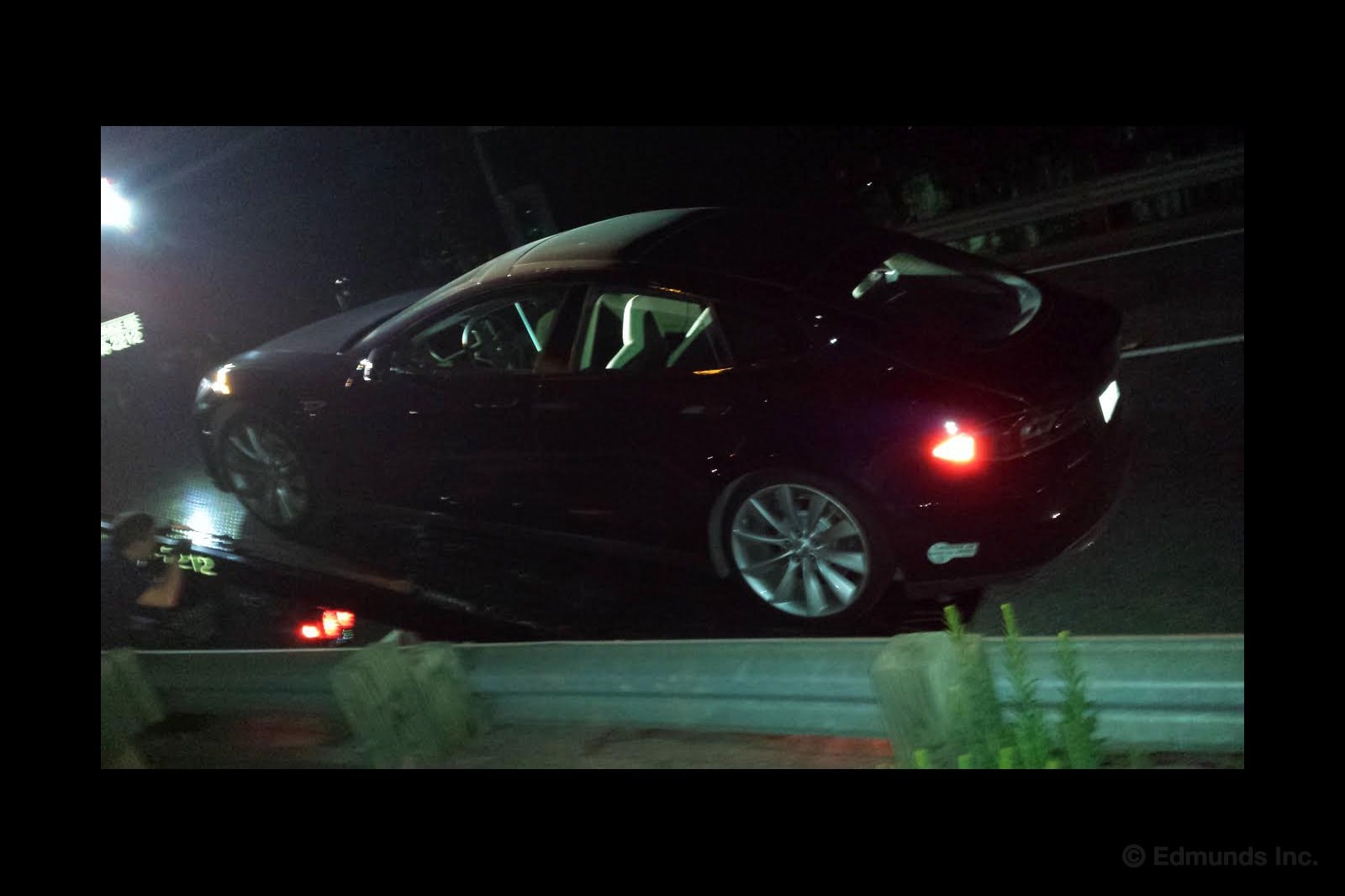
The tow-truck driver took about 15 minutes to get the Tesla on the flatbed. He finished securing the car, and away it went, bound for the Tesla Santa Monica repair shop (which knows us well by now).
First dates don't always work out the way you plan. And although I still admire the Tesla, I think I'm going love it as I have since I started working at Edmunds.
From afar.
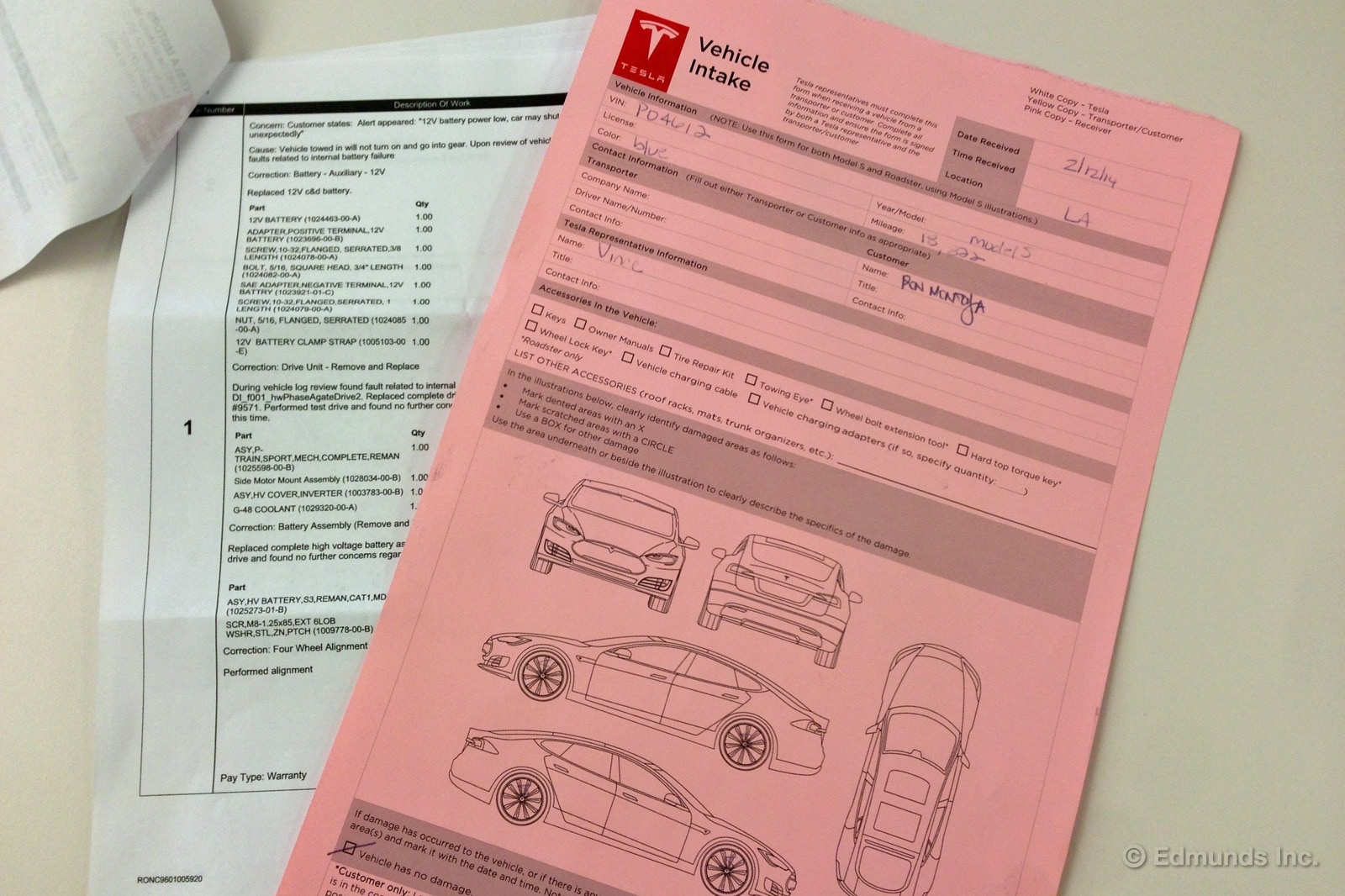
When we last left our 2013 Tesla Model S, it was on the back of a flat-bed tow truck, having died on my colleague, Matt Jones. It spent the night in a tow yard and was delivered to the Tesla service department in West Los Angeles the following morning.
Vince, our service advisor, was great about giving me updates throughout the course of the day. "We're getting a bunch of faults from the drive unit and main battery pack," said Vince. "Our technicians are taking a look at it now. I'll call you when I have more information."
It sounded serious.
He called back about an hour later and said they would be replacing the drive unit and the high-voltage battery assembly. I asked Vince what caused the problems, but he said they don't open up the batteries at the service center. Like most warranty issues on new cars, the parts are replaced at the dealer and the old ones are sent to corporate headquarters for the engineers to study and see what went wrong. The service invoice didn't give me much more to go on, "During vehicle logs review, found fault related to internal drive unit failure. Replaced complete drive unit assembly per TDS case #9571."
If you're keeping score, our Model S is now on its third drive unit: the one that came with the car, the one that was replaced in November, and this latest one. And that wasn't the only thing that was replaced on this service visit.
After the power unit was replaced, the Model S needed a four-wheel alignment. That's because the rear subframe must be removed to extract the power unit.
The service center also replaced the 12-volt battery, along with providing new battery terminals and a battery clamp strap.
The Tesla dealer also took care of four service bulletins under warranty:
Concern: Front lower control arm washer installation
Correction: Inspect knuckle/ball joint surfaces, install four front lower control arm washers.
Concern: Firmware update for automatic charge current reduction
Correction: Update firmware to version 5.8.4
Concern: Front bumper carrier bolt replacement
Correction: Replace front bumper carrier bolts and washers
Concern: New bolt for rear camber correction
Correction: Installed rear upper camber adjustment bolts per proactive repair.
Tesla also performed a "courtesy vehicle inspection," where it noted that the right rear tire has 3/32" of tread remaining. For reference, the other tires are at 8/32" (LF), 7/32" (RF) and 8/32" (LR). The worn tire is closer to its treadwear indicator on the inside of the tire, and given our past with prematurely worn tires, it's worth keeping a close eye on. Also, I wonder if the service bulletin regarding the new bolt for rear camber correction has something to do with this wear. Dan Edmunds will take a closer look at the tire soon.
Finally, the dealer found that the lug nuts were beginning to swell and were hard to remove, so they replaced all 20 of them.
All repairs were performed under warranty and Tesla delivered the car to us the following morning. Tesla didn't note the cost of the parts in its paperwork, but I have to think this repair cost Tesla at least the $5,000. Big 85KwH batteries and electric drive units don't come cheap.
When I first sat down to write this post, I was all fired up, as I tried to picture myself in an owner's shoes. If I had to replace the engine on my car twice — hell, even once — I would swear off the brand forever. But after talking it over with some colleagues, I was reminded that the people who buy Teslas aren't just buying basic transportation. They are early adopters and willing beta testers of a shiny new piece of tech.
In that context, I remembered my experience with my Xbox 360. Early models had high failure rates, which led to the infamous "Red Ring of Death." At the end the console generation, I had gone through three system failures. Not once did I think about ditching the Xbox and gaming exclusively on a Sony PlayStation 3. The Xbox was my preferred piece of tech, and when it broke, I just got it fixed, warranty or not.
Obviously the costs are different and no one relies on an Xbox 360 to get them to work, but the mindset is the same. For those Tesla owners who still love their cars, even in the face of major repairs, I get it.
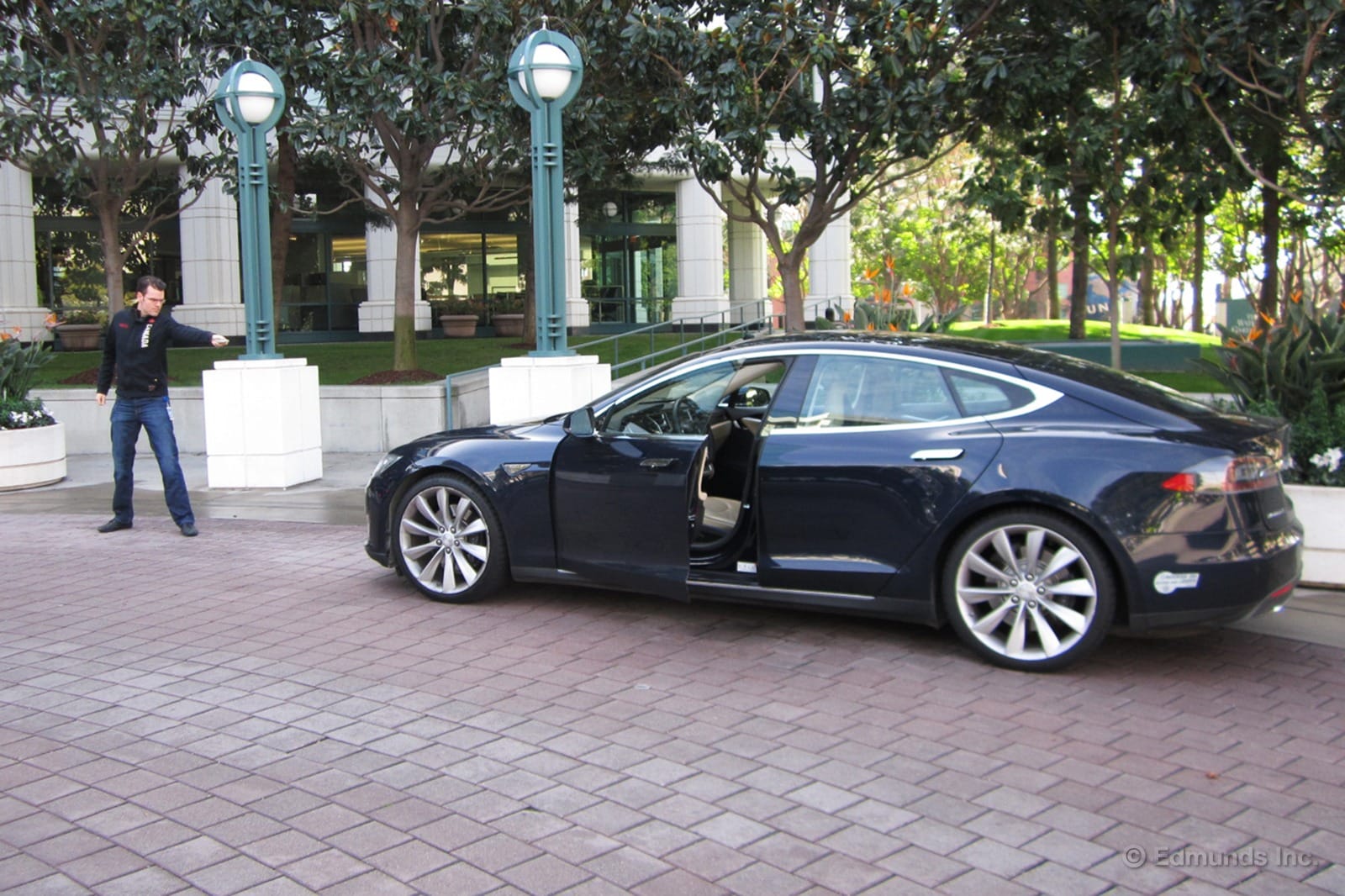
A couple of weeks ago I wrote about a few missing features in the 2013 Tesla Model S. As some Model S owners pointed out in the comments, I erroneously included the Homelink universal garage door opener amongst them. I was clearly wrong: the Tesla does in fact have Homelink built into the uber touchscreen that controls everything else in the car. I should've known, despite Homelink in every other car consisting of three physical buttons on the visor, mirror or headliner near the sunroof controls.
However, as it turns out, the problem isn't that the Tesla Model S is missing Homelink, but that it's rather complicated.
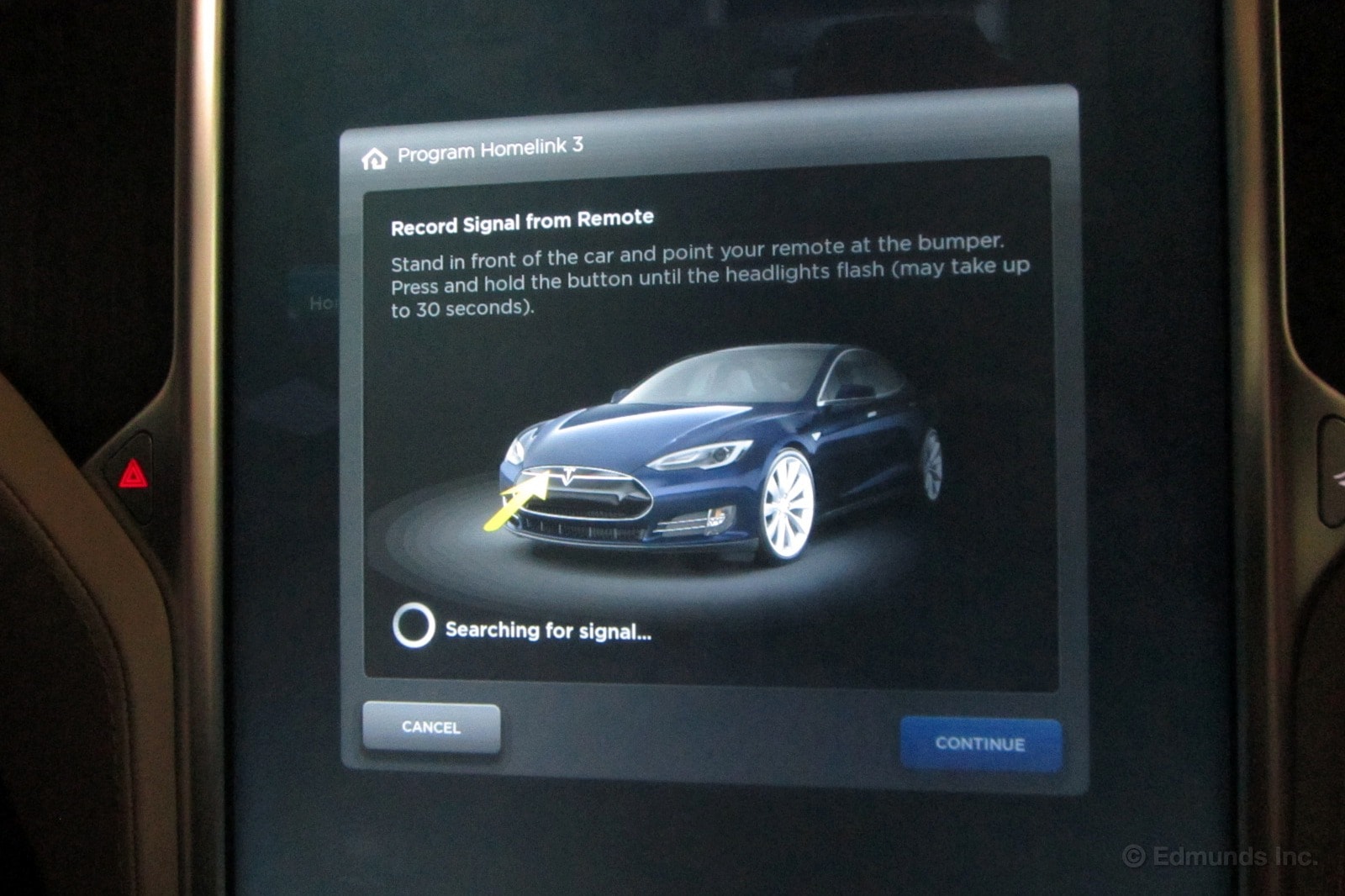
As the Homelink screen instructs, you have to stand outside the car for as many as 30 seconds pointing your garage door opener at the car. Doing so will likely result in you looking insane, something akin to either training your car like a dog or threatening it with a phaser. I opted for the latter, which on the upside, made me feel a bit like Will Riker.
In most other cars, you simply press the Homelink and garage door opener buttons simultaneously for a few seconds while inside the car.
As for actually using Homelink, the Tesla features a GPS-linked system. When you approach the programmed gate or door, the Homelink menu screen automatically pops up and you must then press the button in question. Now, in order for this to work, you have to program it in the spot where you want the menu to pop up. As ridiculous as you may feel doing the "training" described above in your driveway, imagine doing it in front of your exclusive gated community's remote-activated gate.
Alternatively, you can bypass the GPS portion and press "Controls," then Settings, then the Homelink tab, then the programmed button.
If this all seems needlessly complicated, I agree. In every other car, you simply reach up and press a single button when you determine with your eyes that you're approaching your garage or gate. Judging by Tesla owners boards, it seems like this is a setup many would prefer. The Tesla's touchscreen is pretty damn impressive, but some things simply don't belong in it. Homelink is one of them...but hey, at least it has it.
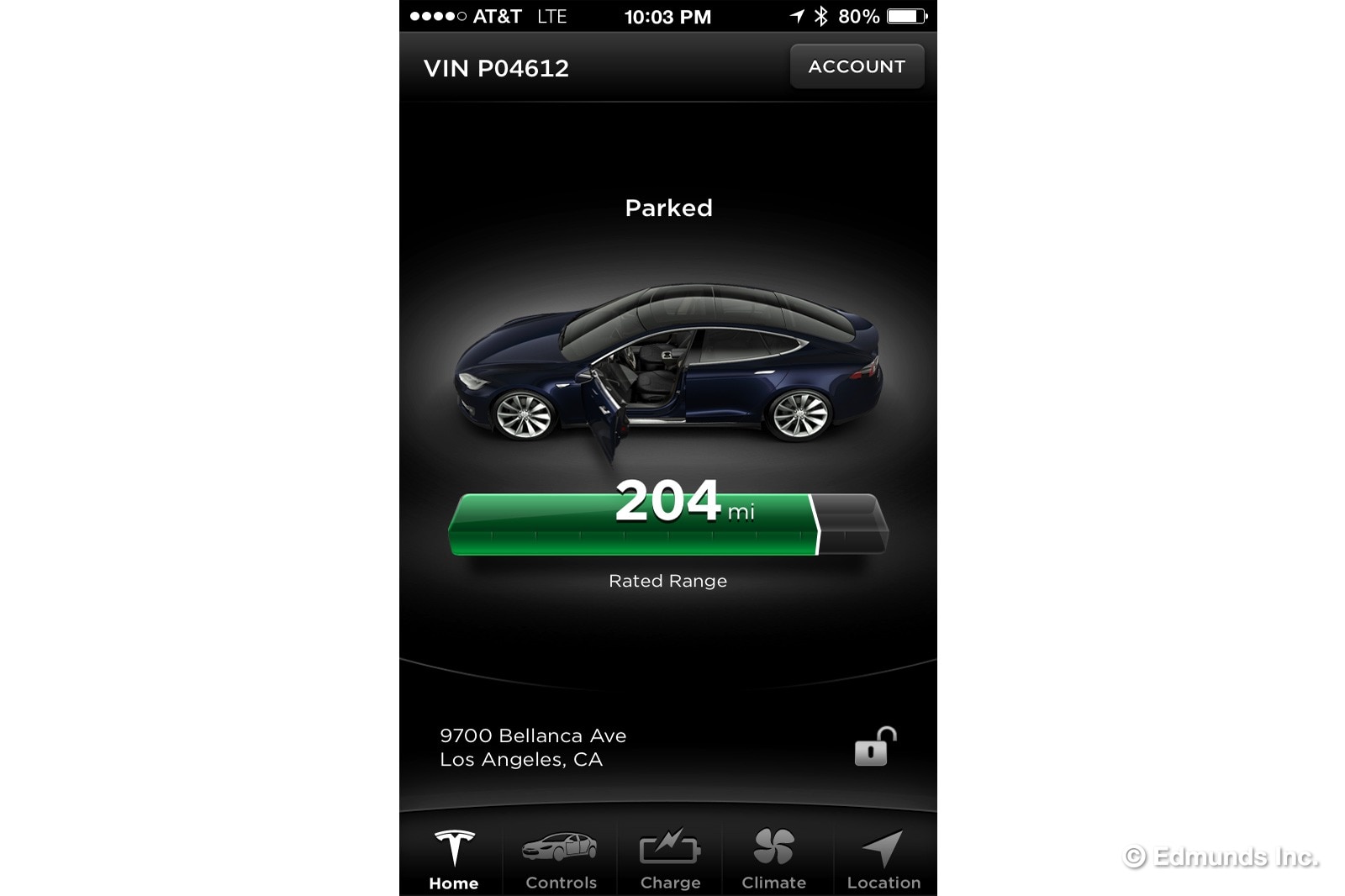
One of the frequently asked questions I get about electric vehicles goes like this: "What happens to the battery when the car sits parked? How many miles does is lose just sitting there?"
OK, that was two questions, but still.
A couple of weeks ago I deliberately checked out the 2013 Tesla Model S for a trip I took to Puerto Rico to test the upcoming 2014 Mini Cooper.
The Model S was my ride to the airport, and it sat idle in an LAX parking structure for three days while I flew south for the winter. Tesla's handy iPhone app confirmed it had 204 miles of range as I boarded the Wally Park airport shuttle.
How much would it have when I came back?
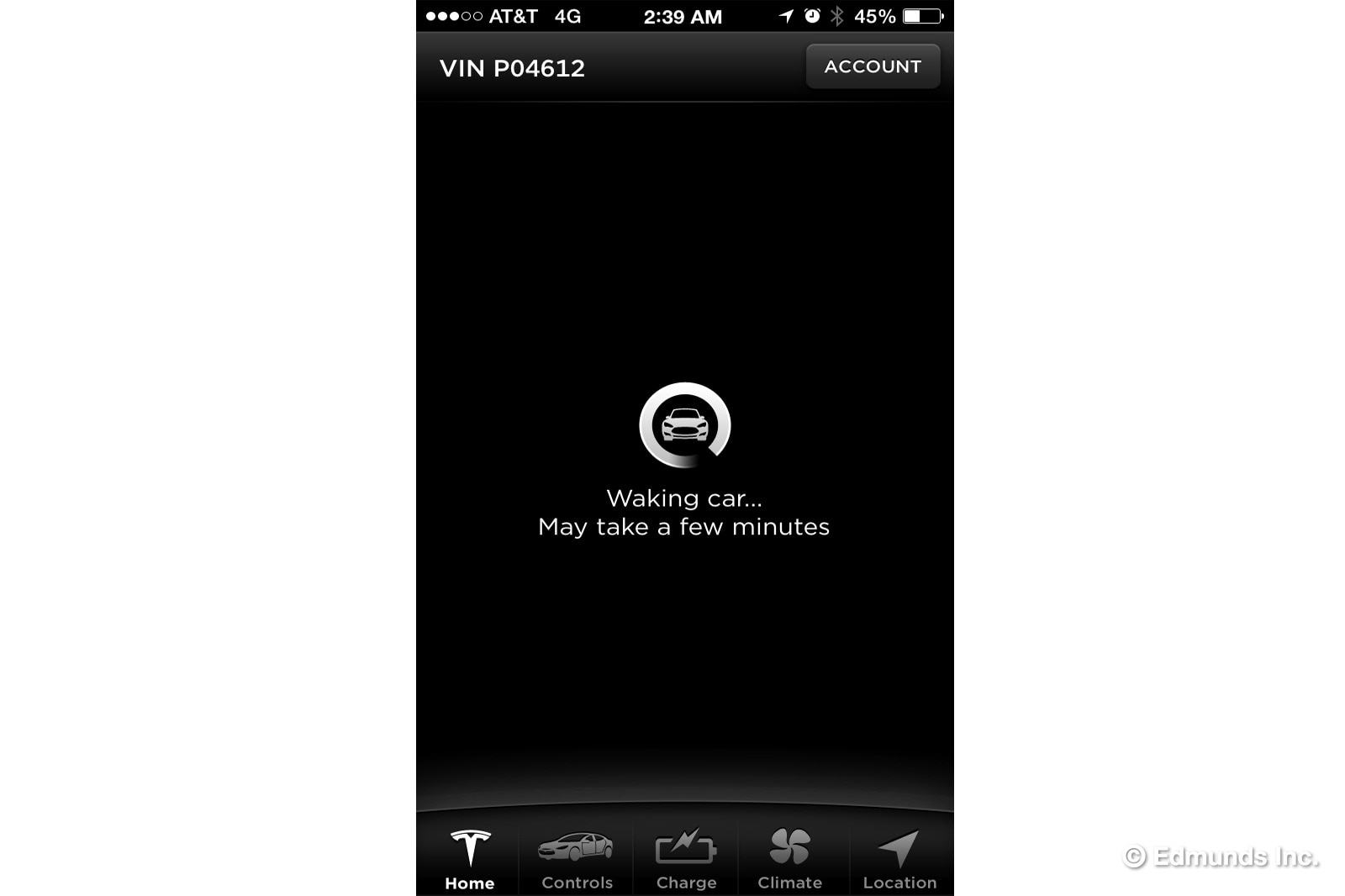
I took periodic screen captures of the Tesla iPhone app at random intervals during my trip. After an uneventful red-eye flight out of Los Angeles, I recorded the first couple during the 14 hours I was stranded at the Atlanta airport as my connecting flight was cancelled not once, but twice. I took another when I finally checked into my Puerto Rico hotel room at 2:39 a.m. the next morning.
Each check-in took a couple of minutes while the car woke up at the prompting of the app. This delay is a symptom of the new power-saving feature that entered the picture last December as part of software update v5.8.
There was no such delay before the power-saving feature was added. A certain part of the car's brain was booted up and alert all the time, and that apparently came at the cost of a certain amount of battery drain and loss of range.
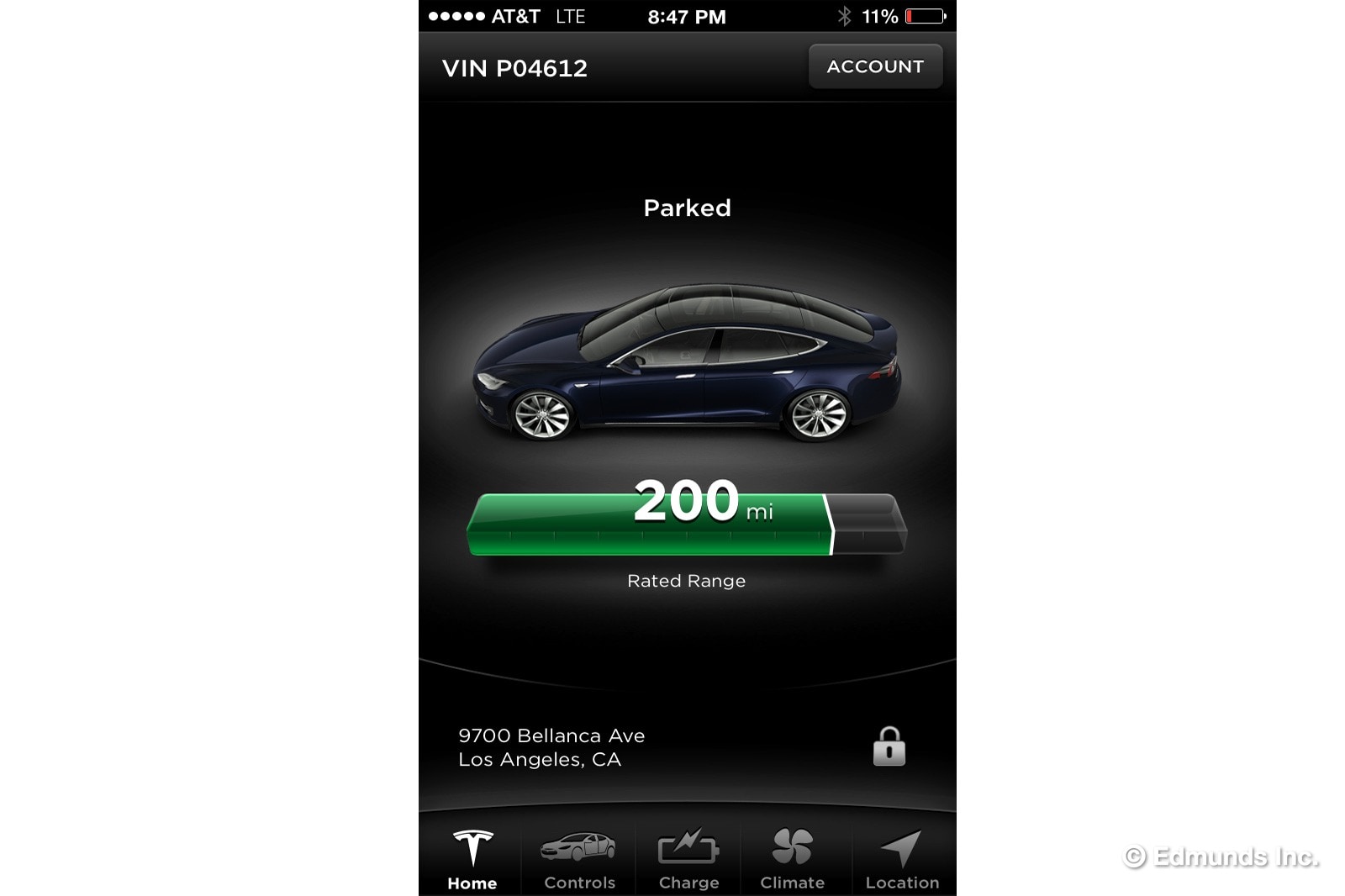
I returned to the car about one hour shy of three days later. In that time the range had dropped from 204 to 200 miles, not very much, if you ask me. A drain of a mile-and-a-bit per day seems entirely satisfactory to me.
But why was there any drain at all? I suspect it's because the car still has to be semi-conscious so it can respond to a wake-up call from the app. In such circumstances zero drain doesn't seem possible. And of course the car awoke from its slumber each time I pinged it before going back to sleep.
Interestingly, this new power save feature has an off switch that removes the delay and reinstates the pre-update alertness our car had before December.
I have another business trip coming up. Perhaps I'll drive the Tesla to the airport once more and leave it there for a few days with the power save feature turned off to see what kind of difference this setting makes.
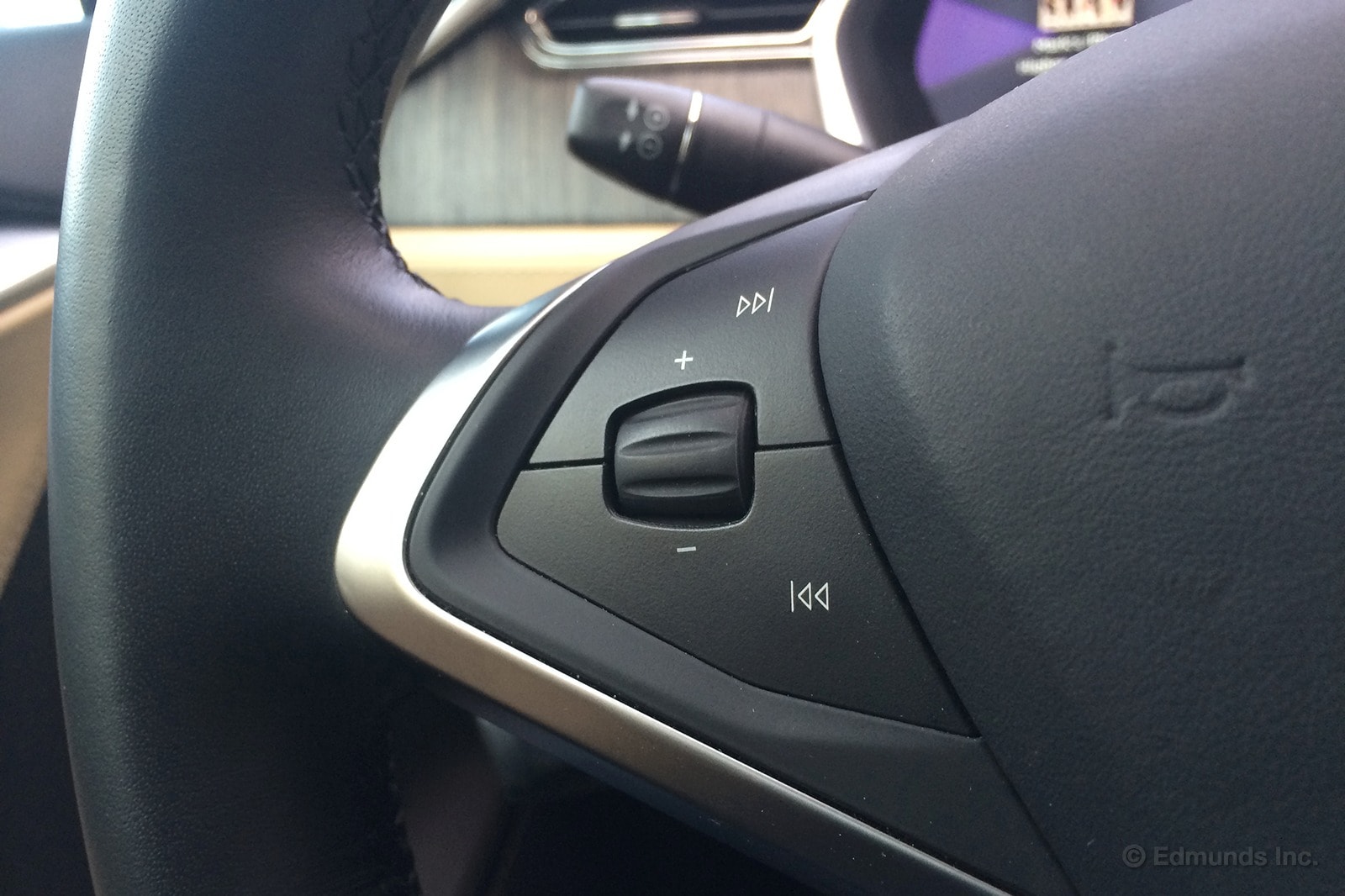
It seems I have something against steering wheel controls lately. I last complained about the button layout in our Mazda 3. This time, it's our 2013 Tesla Model S.
As you may know, Tesla sourced some of the buttons and controls from Mercedes-Benz. Smart move, because they feel premium with a satisfying heft and click. I'm guessing the buttons on the steering wheel weren't, though, because they feel light and wobbly. The scrolling wheel selector between them feels premium, at least.
Definitely not a deal breaker, just more nitpicking.
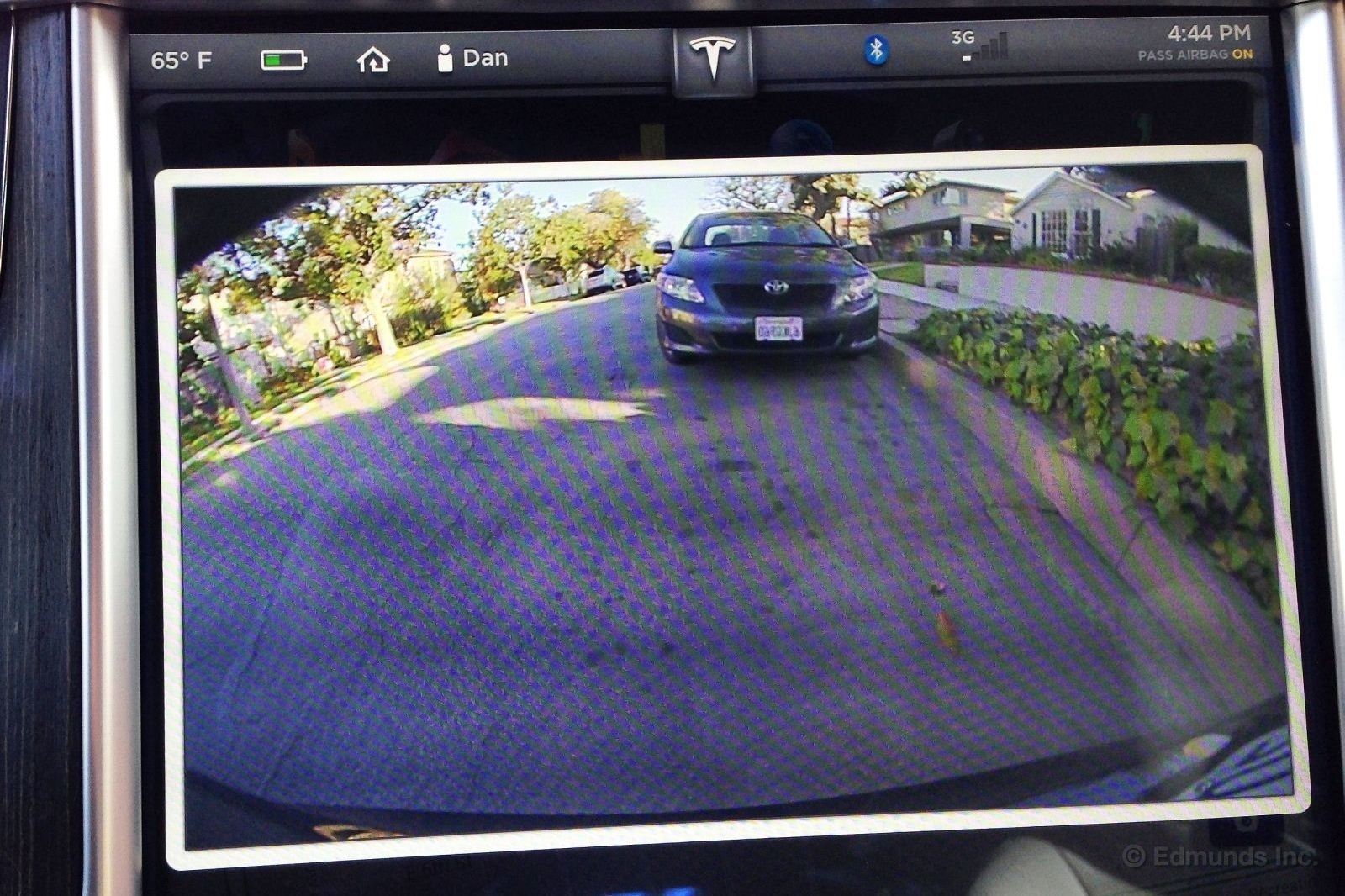
Tesla says that its Model S is the only car with an HQ backup screen. That much is true, but something on that HQ screen is missing.
There are no distance lines to let you know how far you are from the car behind you. There is also no projected path for the Model S when it is in reverse.
Nearly all lesser priced cars have backup screens with these features. The Tesla Model S is a big car. When I'm parking this car I need all the help I can get. I discovered that other Tesla owners are concerned about this lacking feature. There is speculation in the Tesla forums that the Model S will add this feature in a future software update.
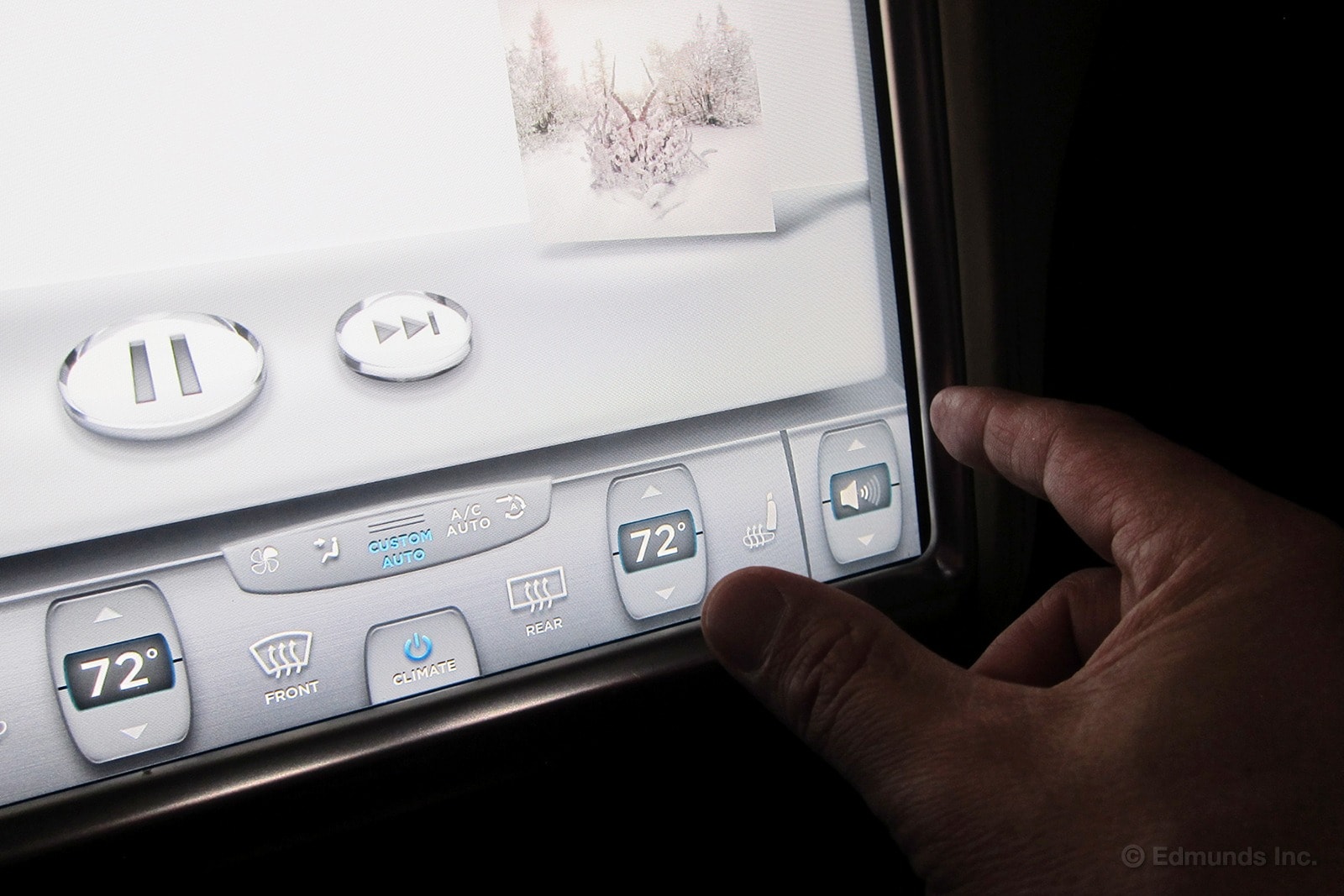
Excluding multiple drive unit failure, the 2013 Tesla Model S's most annoying feature, or lack thereof, is this: no volume knob. Elon and friends have over-thought many aspects of this car, some for good (giganto multimedia display, acceleration as dreamy as a box of Whip-Its) and some for ill.
When you absolutely must pummel your eardrums to the first wails of "Immigrant Song" for example, it's very soft-rock to reach down for a twist of the old touch-sensitive volume icon. Cadillac and Ford fare only marginally better here, too. Even the iPhone has tactile volume control.
Sure, there's the left-thumb dial on the steering wheel. There's also cholera, Bieber, and cesium-laced bluefin.
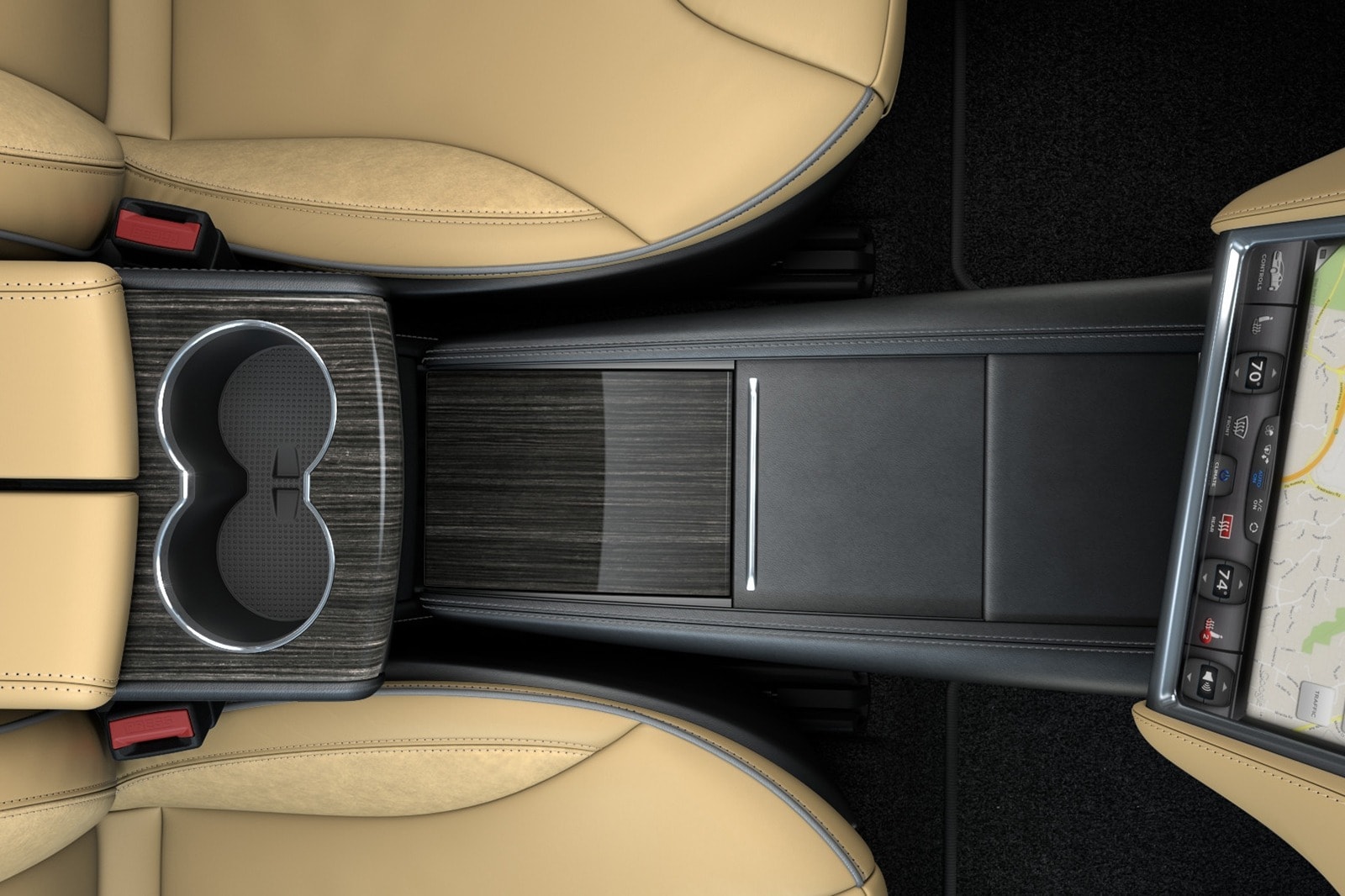
One of the gripes we and other Tesla Model S owners have is the lack of interior storage. As it comes from the factory, you have two medium-sized cupholders, a glovebox and a short walled tray that is mounted to the floor where other cars would have a center console. For $650, you can have Tesla install something called a Yacht floor, which lines that floor tray with matching interior wood trim and strips of rubber that run lengthwise. For the same price, there's also something called the Premium Center Console.
A friend of mine has a Model S and decided to spring for that center console and I had an opportunity to check it out. Unlike the rest of the car, I was duly unimpressed.
The unit doesn't look half bad, with stitched leather and wood trim to match the rest of his car. It's sectioned in two, with a spot intended for your phone and other personal effects and another with adjustable cupholders. Both have sliding covers to keep objects out of view.
Before I even touched it, I could tell that the covers were not up to snuff. They didn't fit flush and looked like they didn't quite close completely. Things got worse when I moved them out of the way, as they felt flimsy. Even the side walls of the console didn't feel all that substantial. The phone bin did have a neat Apple Lightning connector for his iPhone 5, but using it requires removing the phone from its case. It also doesn't hold the phone securely either.
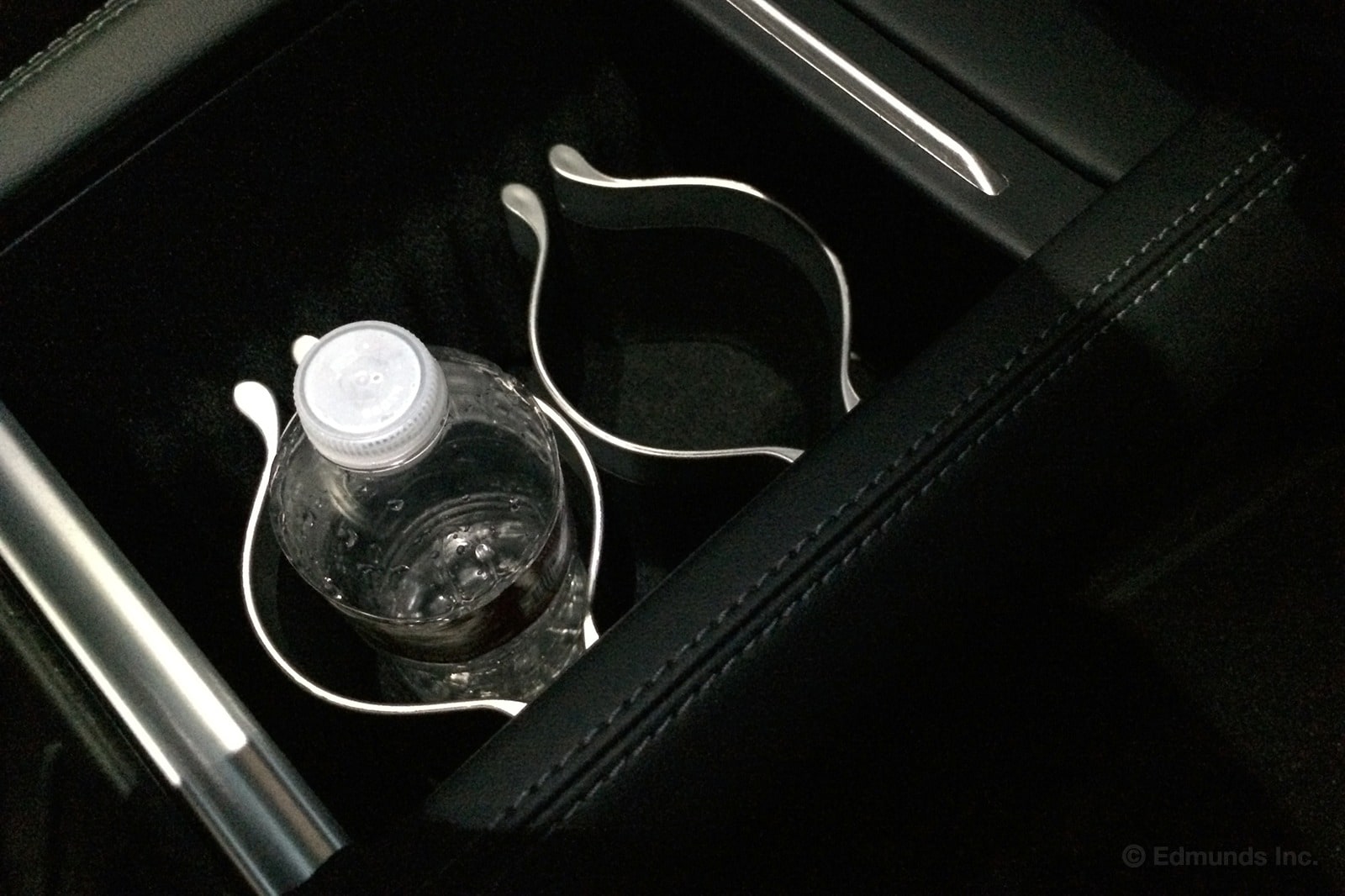
The cupholder bin was better executed, with curved metal dividers that you can position as you see fit. Considering the overall fit and finish of the Model S, this option is a huge disappointment. My friend agreed and let me know that he complained to Tesla enough that they agreed to uninstall it and give him a full refund.
There are other aftermarket options out there, but I haven't seen them in person, nor have I heard any reactions to them. At this point, I'm more than happy making due with the standard flat bin.
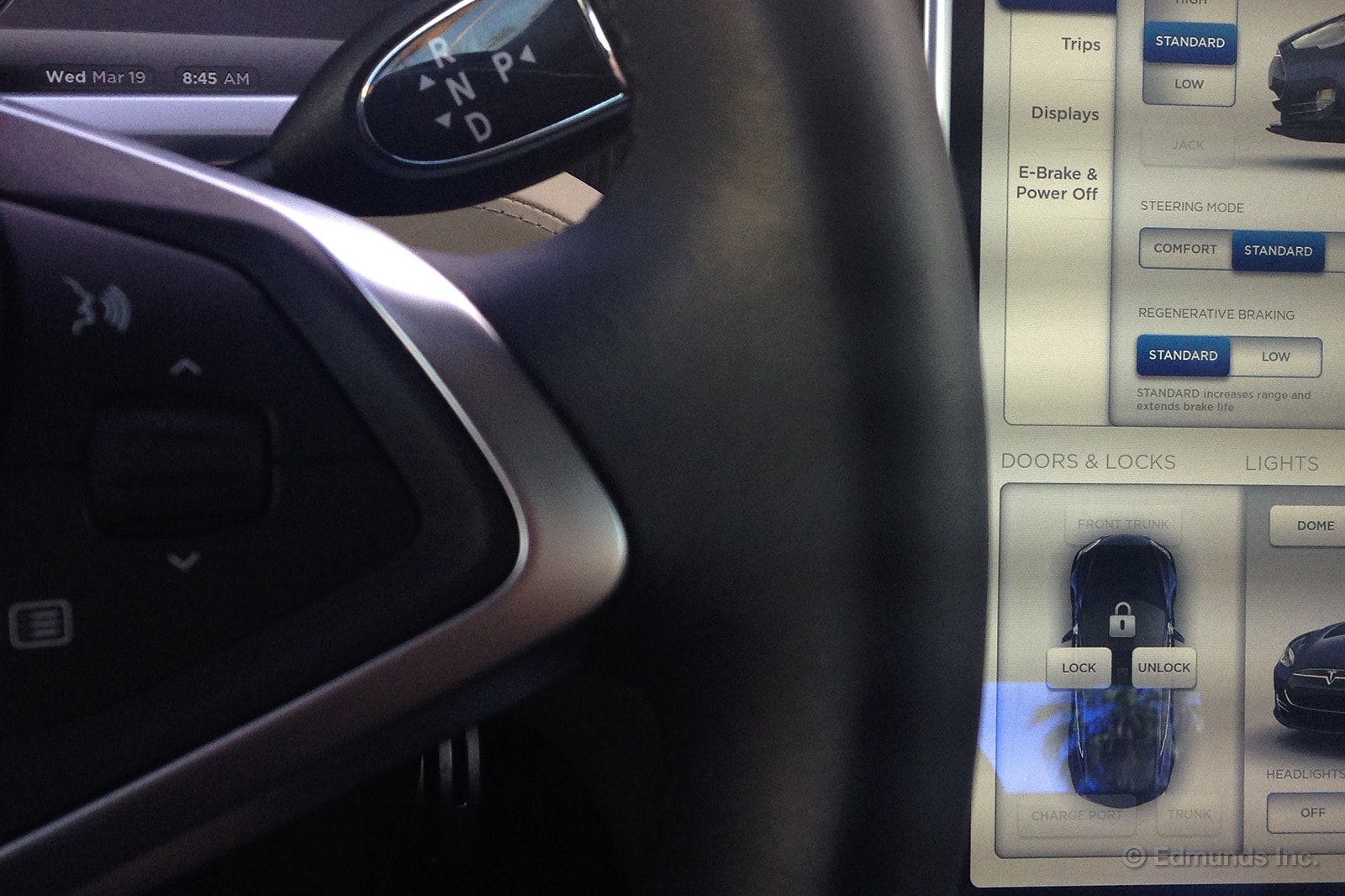
...or maybe it's technically a digital potentiometer. Either way, the default "Standard" and "Low" settings for regenerative braking on the 2013 Tesla Model S just aren't enough.
If you've never driven an EV before, the hardest thing to get used to is the regenerative braking. It's not like it is on your hybrid. When you let off the throttle in an EV it feels like someone turned on a gravity pump that exclusively targets your vehicle. Or like you're driving through deep sand. So, after a few miles you've figured this out and you stop getting out of the gas and into the brakes and start letting off the gas slowly, letting the regen do the dirty work and using the brake pedal only for the last 5-0 mph mark.
At least, this is the way it should work. Unfortunately, our Tesla's regen isn't quite strong enough in normal to work this way on crowded freeways and the low mode isn't low enough. They work fine, but I want more. I want control.
The solution, then, is a fairly simple rheostat that could control the regen from 100-0 depending on my mood / driving style. (Hey, look, Tesla even gave me a handy dial right on the steering wheel!) With two settings already available, this could be done with a software update looking exactly like the sunroof slider if they're not cool with the wheel button.
Sure, some people wouldn't use it, but then again, some people don't use the paddles and manual mode on their cars and we still get that.
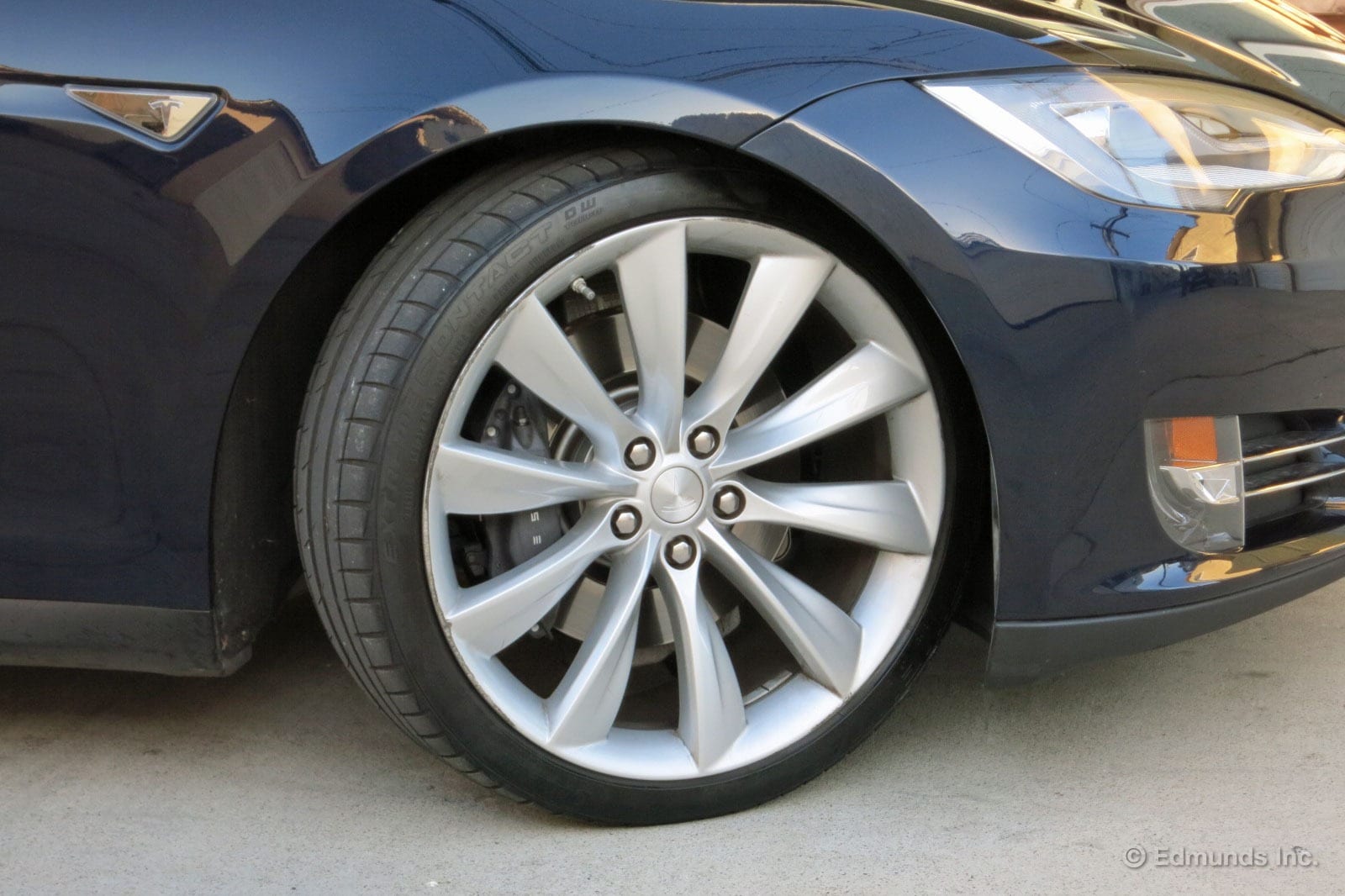
With well over 20,000 miles on the odometer, our 2013 Tesla Model S has some solid wear on it. At this point I would expect a few squeaks and creaks to pop up in the interior, but the noise I heard last night wasn't like that at all.
The noise I heard was coming from the steering rack, but only as it approached full lock. It was a loud creak, too, not a faint tick that turning up the radio would cure.
Wind the wheel one way and it was "creak, creak, creak." Wind it the other way, same thing. I have no idea what could be causing the noise, but it sounds pretty awful coming from a car this expensive.
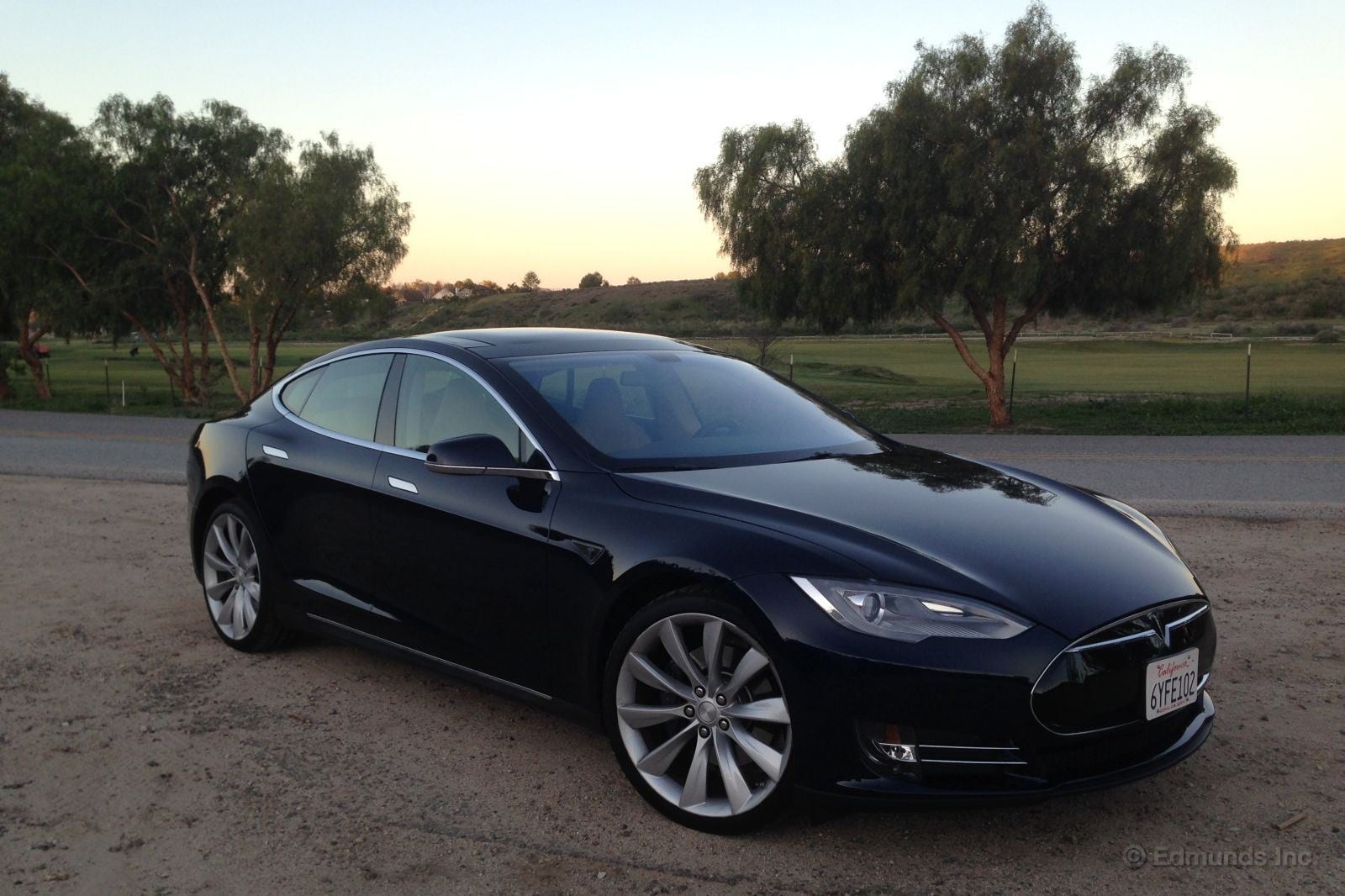
For the past two and a half years I've been driving a 2011 Nissan Leaf SL and I'm sold on electric cars. But as the months go by, I feel more and more restricted by the range. There are several places I routinely want to go that are about 80 miles away, 160 round trip. So we're not talking full-on road trip, just too far for the Leaf. That's why, when I saw the 2013 Tesla Model S was available, I decided to stay electric but push beyond my normal boundaries. Still, I wanted every bit of security I could get.
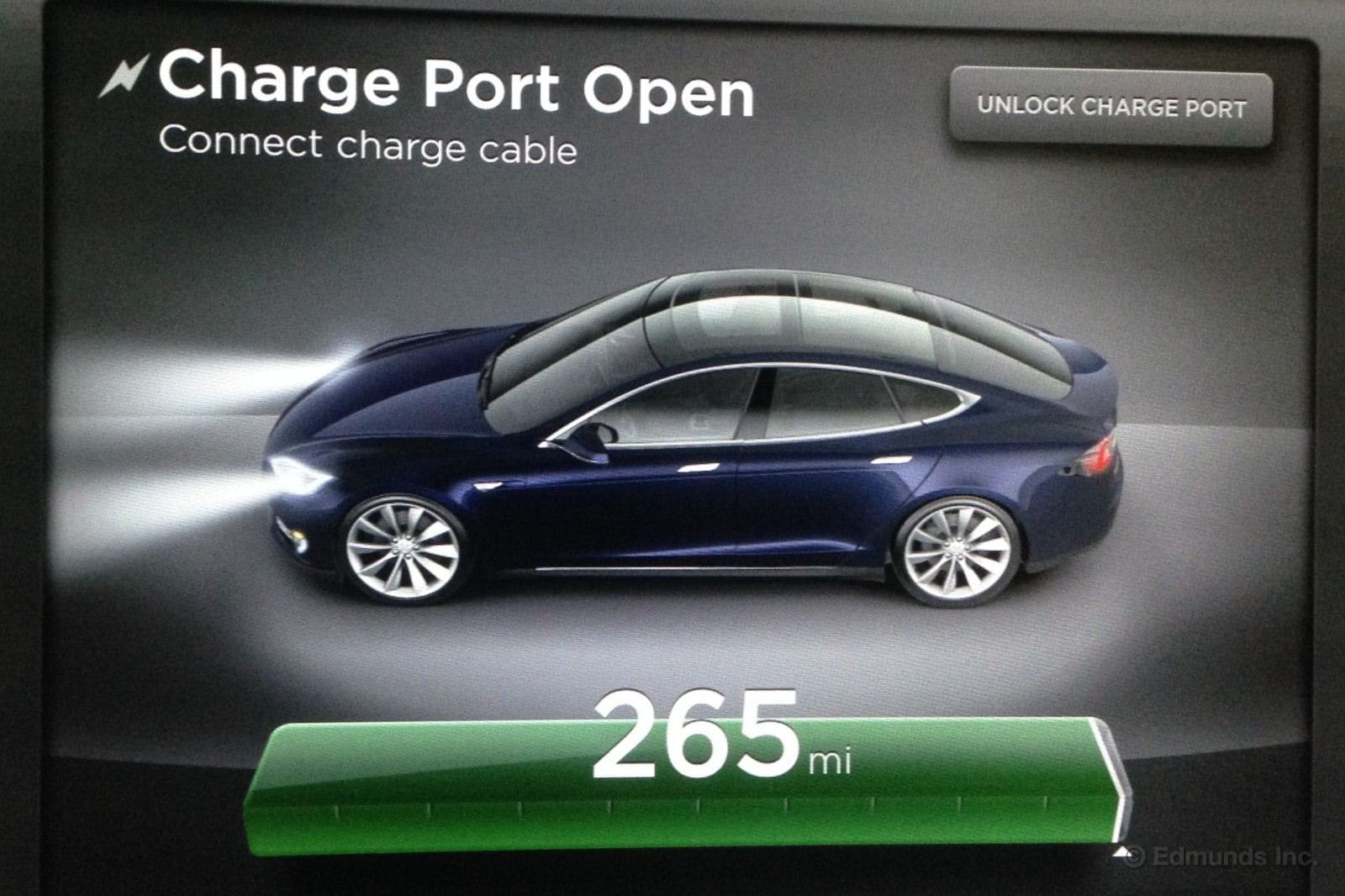
Sunday night I set the charger for 100-percent charge. It hurt to do this, because filling it to max reduces the battery's recharge capacity. Over the time I've driven the Leaf I've seen its range diminish. When it was new I could squeeze 85 miles out of the battery without trouble. Now I'm lucky to get 70 miles on a single charge, and then I'm watching the range and driving without climate control.
Setting the Tesla's charge limit was easy because I didn't have to wade through multiple menus. It was just a matter of sliding the charge limit needle to max. I did need to allow more time for a full charge so I left it connected all night. In the morning I was met with the welcome sight of 265 miles of range. I could reach my destination, return to the Edmunds' offices, and still have plenty of range for the next driver.
My Leaf has been a reliable and pleasant commuter car. But next time around, I'd like more useable range. Maybe there is a sweet spot for electric cars that is somewhere between my Leaf and the pricy Tesla.
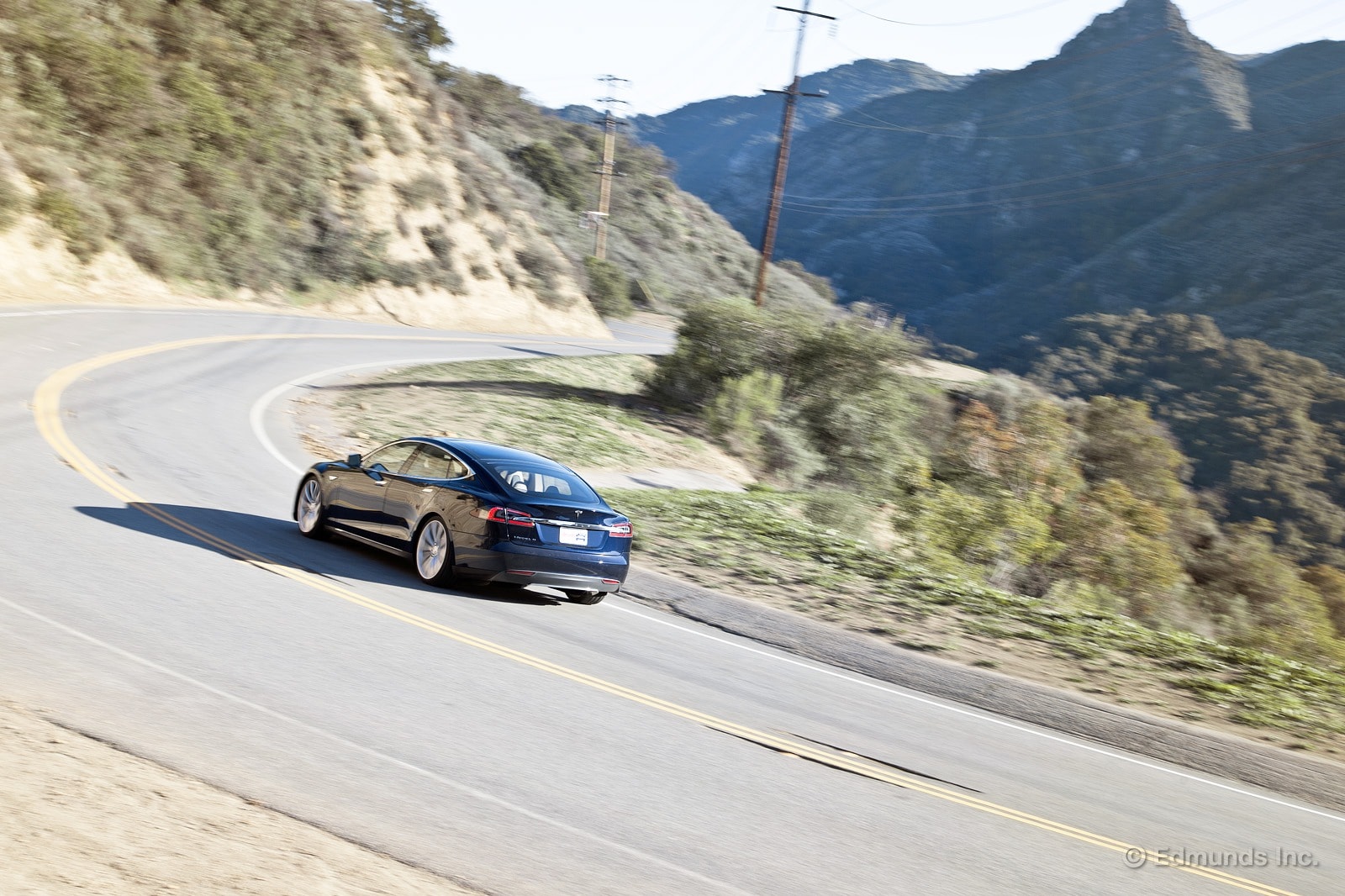
It's a rare day when the keys to our long-term 2013 Tesla Model S end up in my pocket. I have a long commute perfect for adding miles to our long-term cars, and it was during only my second outing with the Tesla that it finally hit the 20,000-mile marker.
On the surface, driving the Model S like a normal car is a non-event. A recent software update added a crawl feature that rolls the car forward when the brake pedal is released, just as in a normal automatic transmission-equipped car. Turn off the aggressive regenerative braking and it stops like everything else on the road. The only things you'll miss are engine noise and gear changes. You'll quickly find that depriving yourself of engine roar leads to a casual violation of local speed limits. Keeping an eye on the speedo is a must.
Willfully give it the beans and the Model S responds like the wolf in sheep's clothing that it is. Mashing the accelerator thrusts the Tesla forward like the train of an LIM-launched roller coaster. The instantaneous 443 lb-ft of torque is alarming for first timers, but is also endlessly entertaining when giving out rides. You're going to get some hop-ons, because everyone you've ever known will want a go at the Model S. You will be helpless to resist because it's just so damn fun to experience their shock at how quick the car is.
For newbies, range is the only thing that is cause for concern. Gunning the Model S eats into its fuel reserves, so don't drive like a maniac and you will find the Tesla's distance-to-empty estimation to be pretty spot-on. More importantly, you won't be forced to be timid with the throttle later on to make up for the lost range.
As much as I like driving the Model S, to own the car is to come to terms with its shortcomings. Some idiosyncrasies, like the distortion around the edges of the windshield, can be downplayed due to Tesla's relative inexperience in building cars. More troublesome are the drive unit troubles, the most recent being a failure that left Matt Jones stranded on Highway 101 in Los Angeles. We have contacted Tesla to explain this most recent issue, but they have yet to respond.
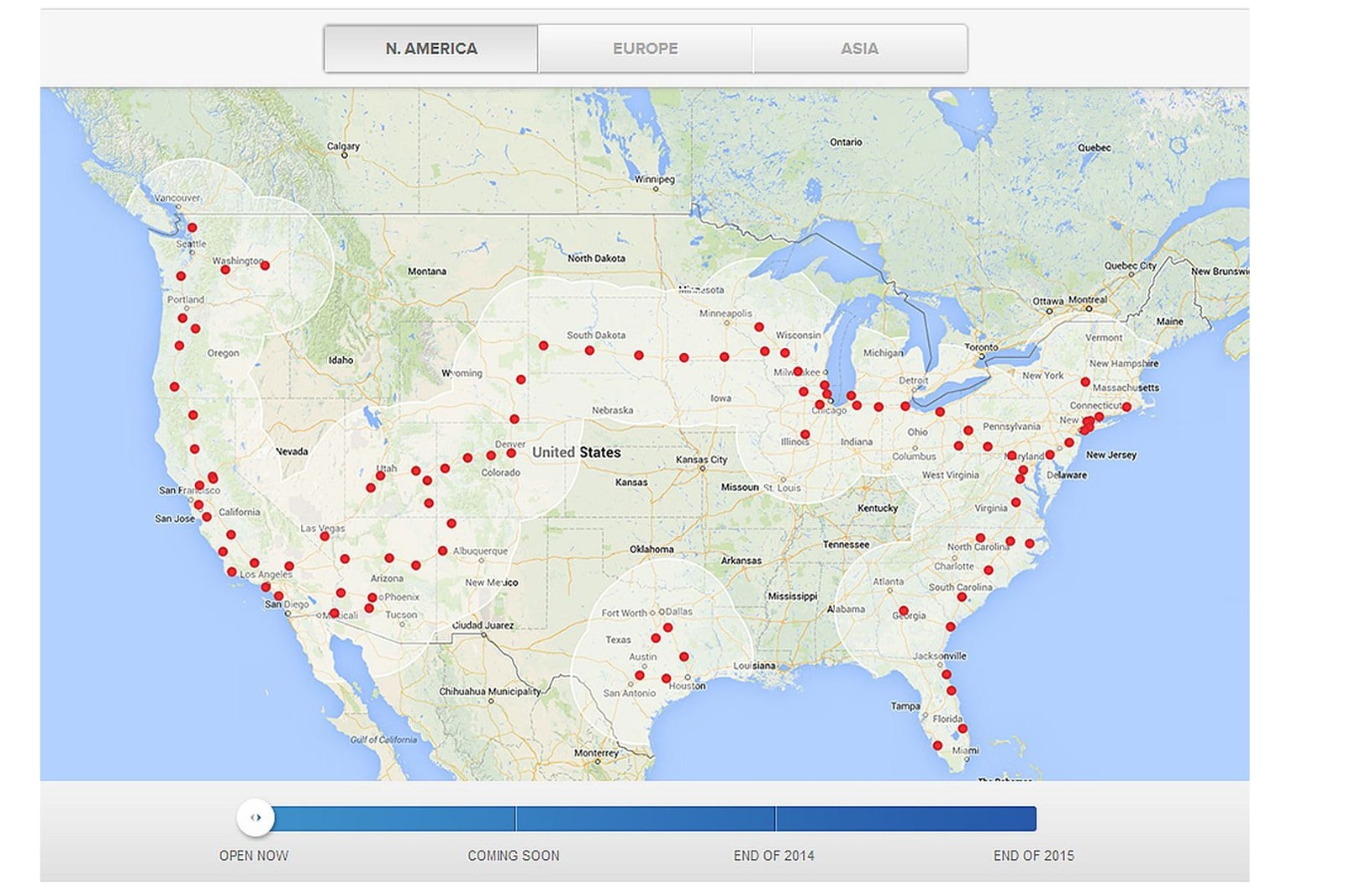
The list of far-flung places we can drive our 2013 Tesla Model S continues to grow as more Supercharger stations are added. There are 94 in the Continental US at the moment, which is two more than I saw when I checked this map last week and about 40 more than there were this past New Year's Day.
The latest Supercharger addition that affects us is the new one in San Juan Capistrano, the place with the mission, the swallows and former President Nixon's western White House. This one puts San Diego within easy range for a round trip with no top-up required to get back home.
So now we have the entire west coast, from Canada to Mexico. The eastern seaboard is connected from the tip of Florida to points just north of Massachusetts. A coast-to-coast route allows either coast access to Chicago, Detroit, Denver, Las Vegas and points in between. Arizona is well-covered, and sightseeing places like Moab, Zion National Park and Mt. Rushmore are accessible, too. Even the Coke museum in Atlanta is fair game.
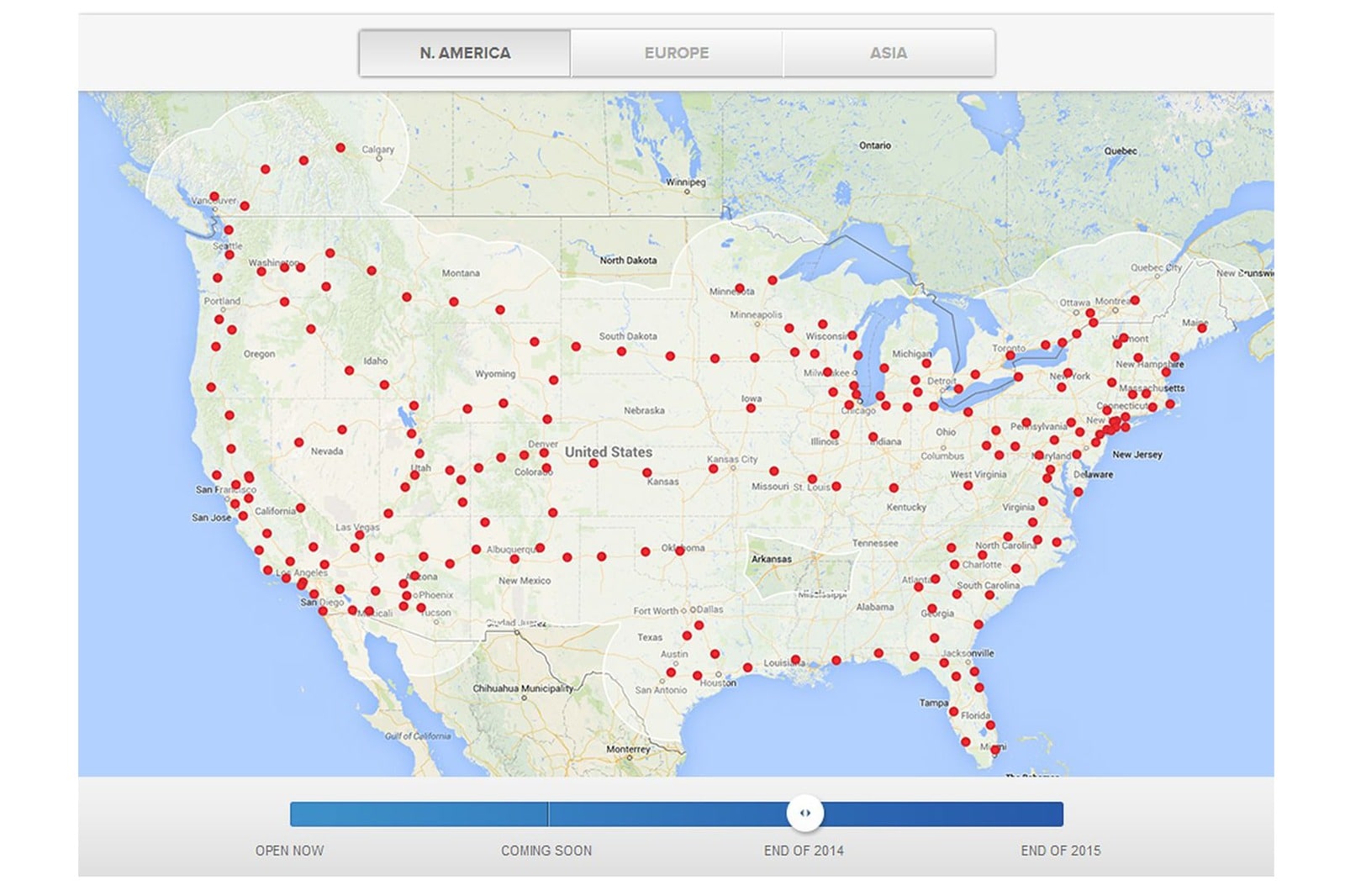
The above map depicts Tesla's plan for the end of 2014. A couple more cross-country routes will be added, which will bring several more states along for the ride. The skiers among us can't help noticing the proposed stations up the eastern flank of the Sierra Nevada mountains leading to Mammoth. If they get snow next winter, we'll be all set.
And still more Superchargers are in the planning stages for 2015. Tesla is showing no signs of slowing down, and they seem to be hitting their Supercharger milestones.
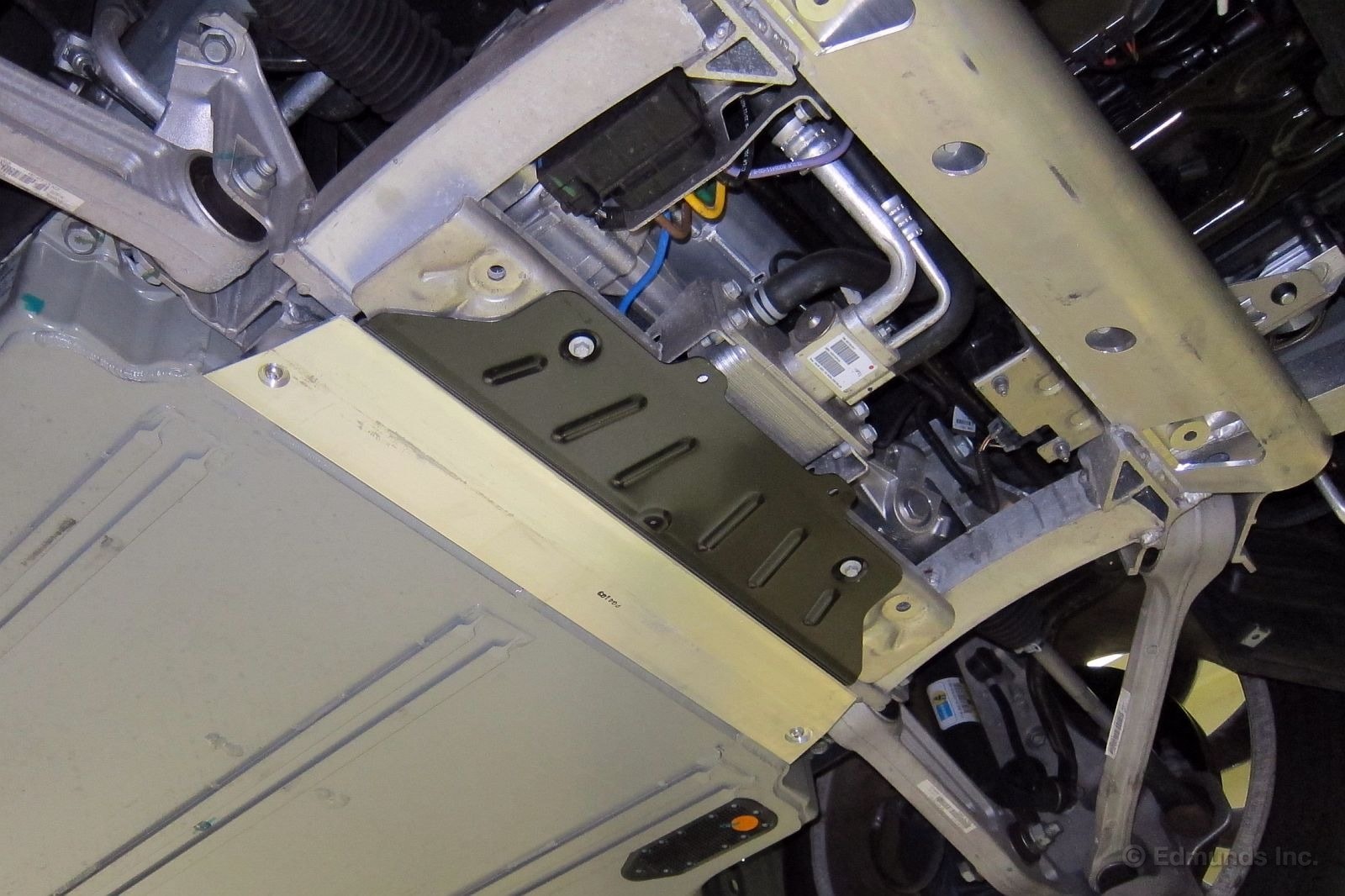
It's coming up on two months since Tesla rolled out their mechanical response to the pair of weird debris-caused battery fires that occurred last year. The situation didn't seem dire, so we chose not to rush out to be the first on our block to have the new Underbody Shield Kit installed on our 2013 Tesla Model S. Better to wait until the initial stampede subsided, until the pipeline had plenty of parts in it.
We finally took it in last week. Well, actually, the concierge came to us and picked it up. That's the advantage of being three miles from a Tesla Service Center.
I hoisted the car up on our Rotary lift and removed the plastic underbody soon after it came back so I could see what they'd done. The shot above shows the new pieces.
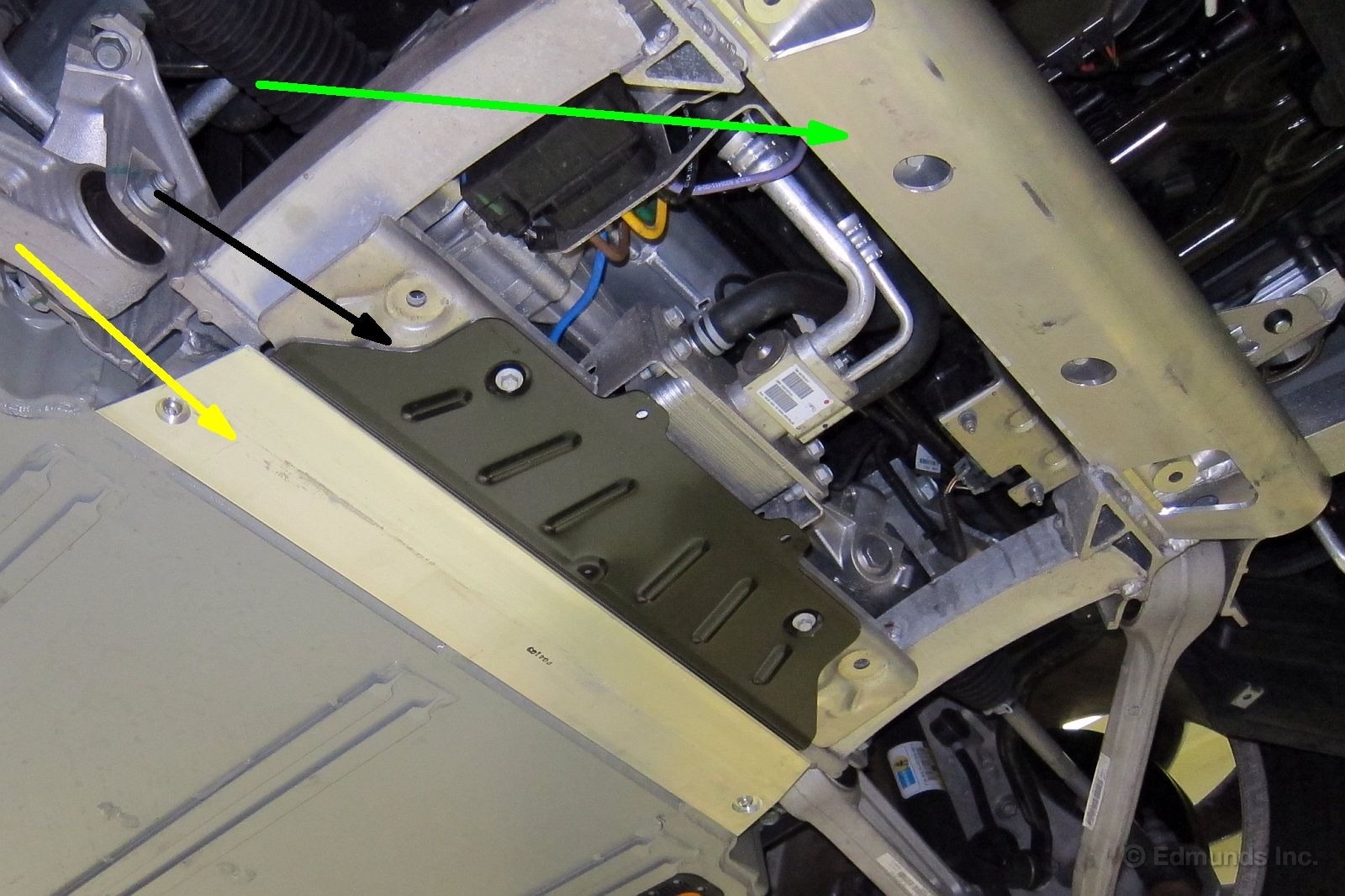
There are three main parts: a forward-mounted Skid Bar (green), a stamped titanium Bash Plate (black) and an extruded aluminum Bash Plate (yellow).
The Skid Bar is there to contact the item well forward of the leading edge of the battery to get it tumbling and encourage it to "pike upwards" before it gets to the battery rather than into the battery. This sacrificial part is hollow so that it will deform instead of the subframe to which it's attached.
The two bash plates are built to conceal, protect and bridge over the lower edge of the battery box, the zone where the two debris-strike incidents did their damage. If the object isn't deformable they're designed to ramp over it.
Elon Musk included a couple of videos of these pieces in action in his blog post on the subject. One of them shows an encounter with a three-pronged trailer hitch that mimics one of the fire incidents.
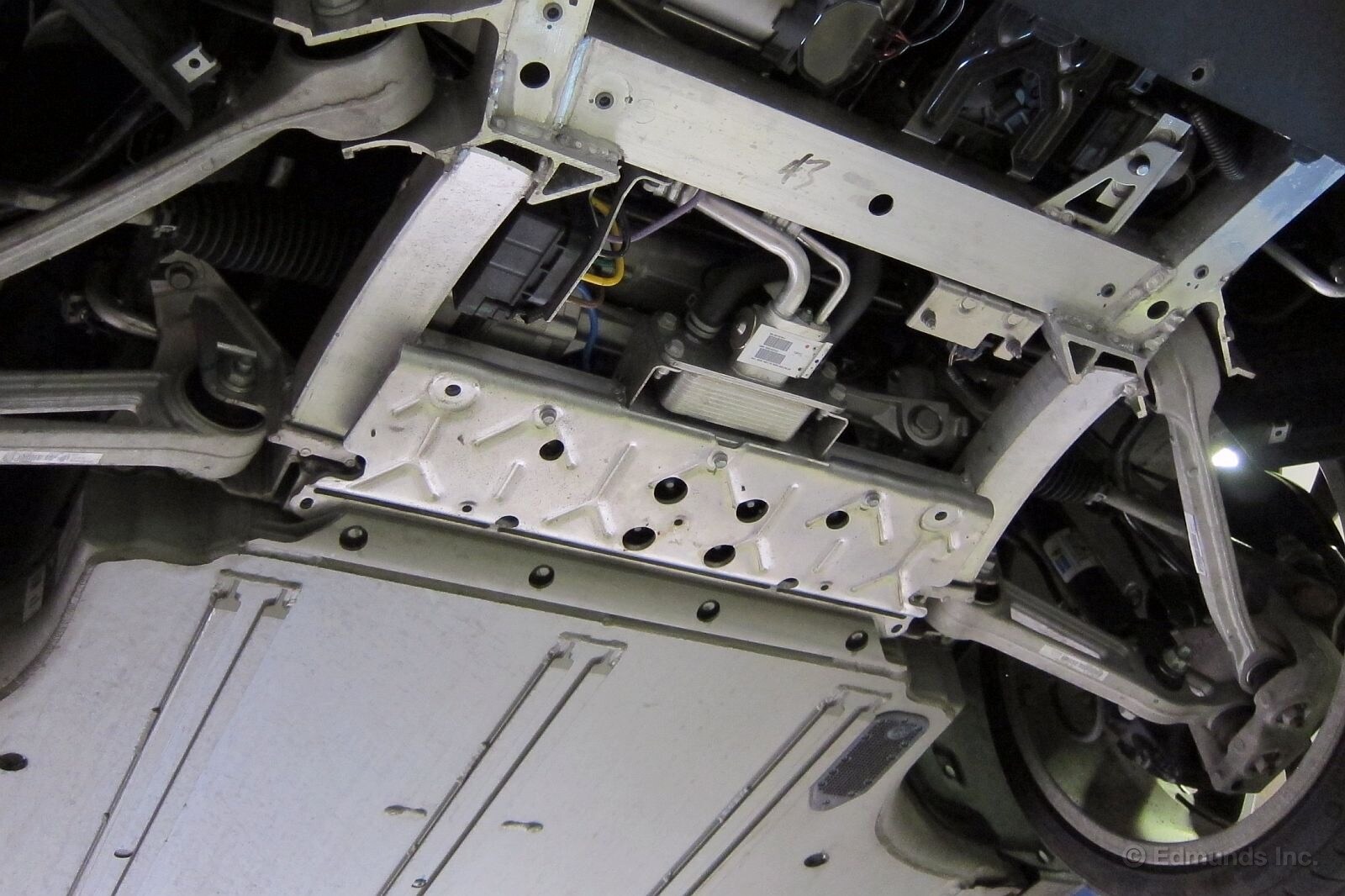
In case you were wondering, here's a "before" shot that shows what our car looked like before the parts were added.
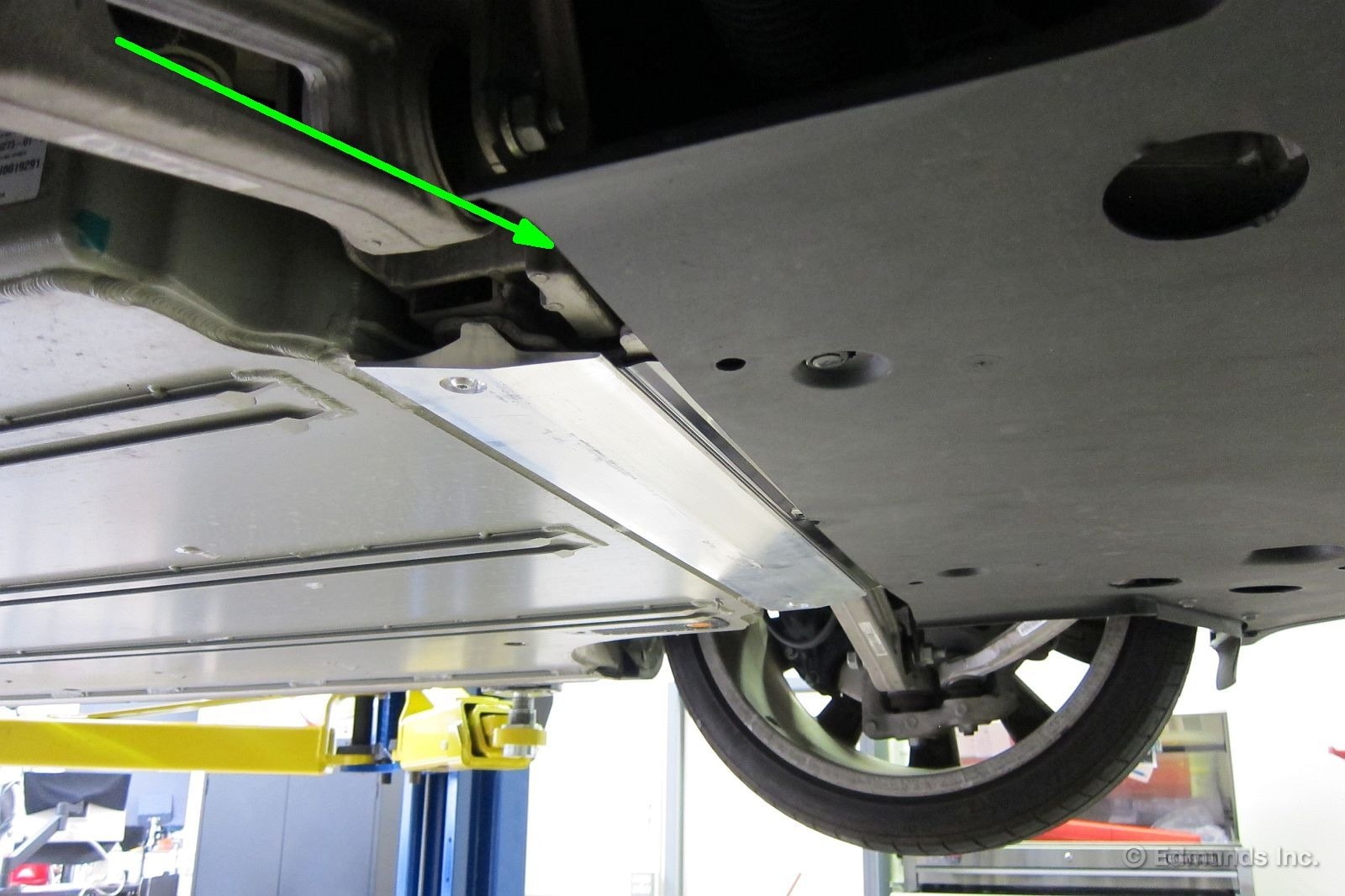
The cross-section of the extruded aluminum Bash Plate conforms to the contours above and provides a smooth ramp-like transition below. It slightly overlaps its titanium counterpart, which is mostly hidden when the plastic underbody cover is installed.
The cover itself has had a couple of inches trimmed off of its rear edge (green) to make room for the new pieces.
It took less than a day for the Tesla Service Center to install the Underbody Shield kit and look after a couple of other items we brought to their attention. We'll cover what happened with the rest in an upcoming installment.
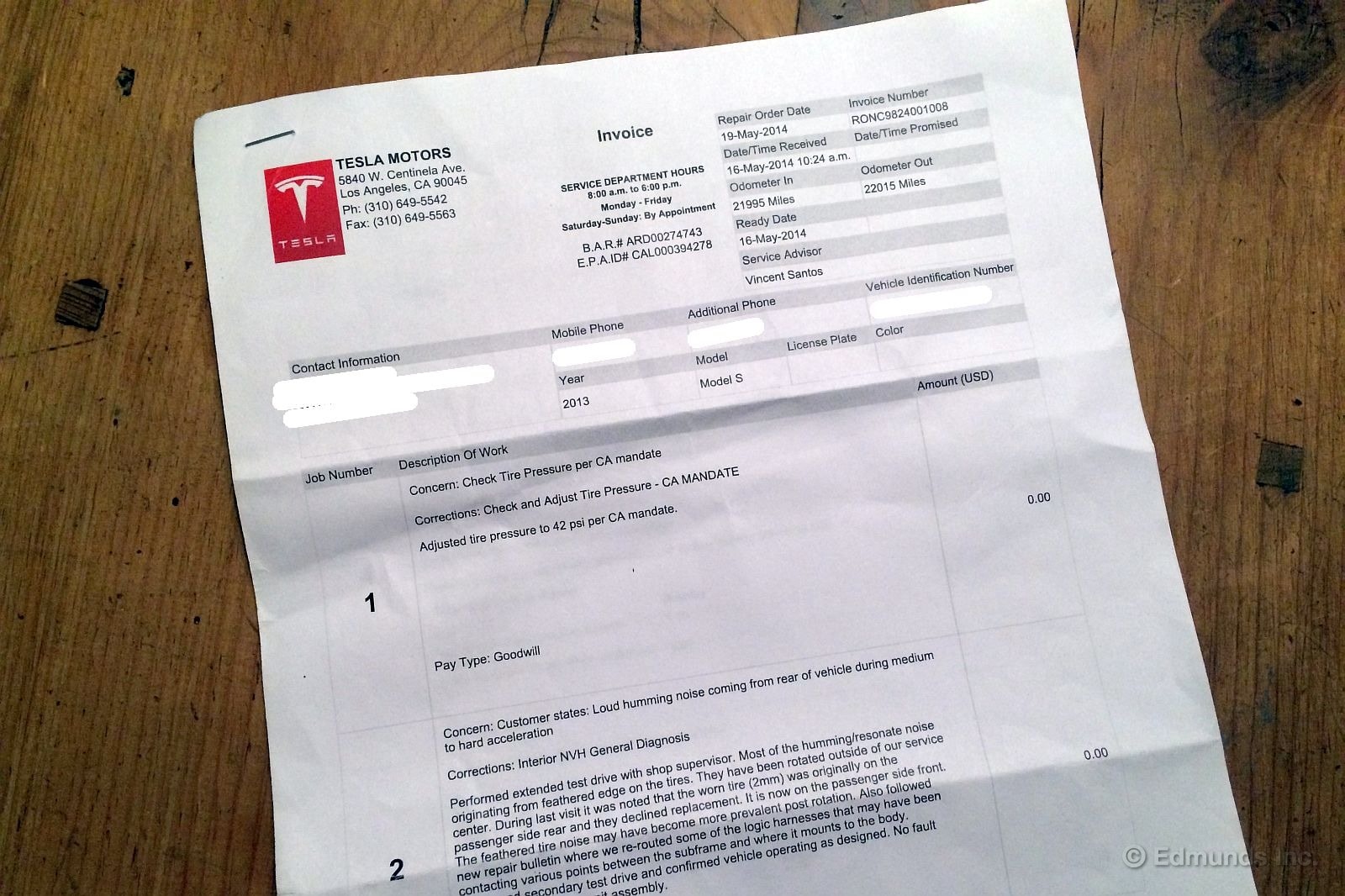
None of our most recent 2013 Tesla Model S complaints were very significant. Taken separately, each one could wait. The vanity mirror hinges had cracked, but they still worked and hadn't fallen off. Ed heard a creak in the steering. We needed to have the new Underbody Shield kit installed. I recently heard a loud buzzing when the air conditioner kicked on in hot weather.
And then we started to hear a sort of raspy noise under hard acceleration. That tipped the scales. We made our appointment.
Here's what the Tesla Service Center did in addition to installing the Underbody Shield Kit, which was covered previously.
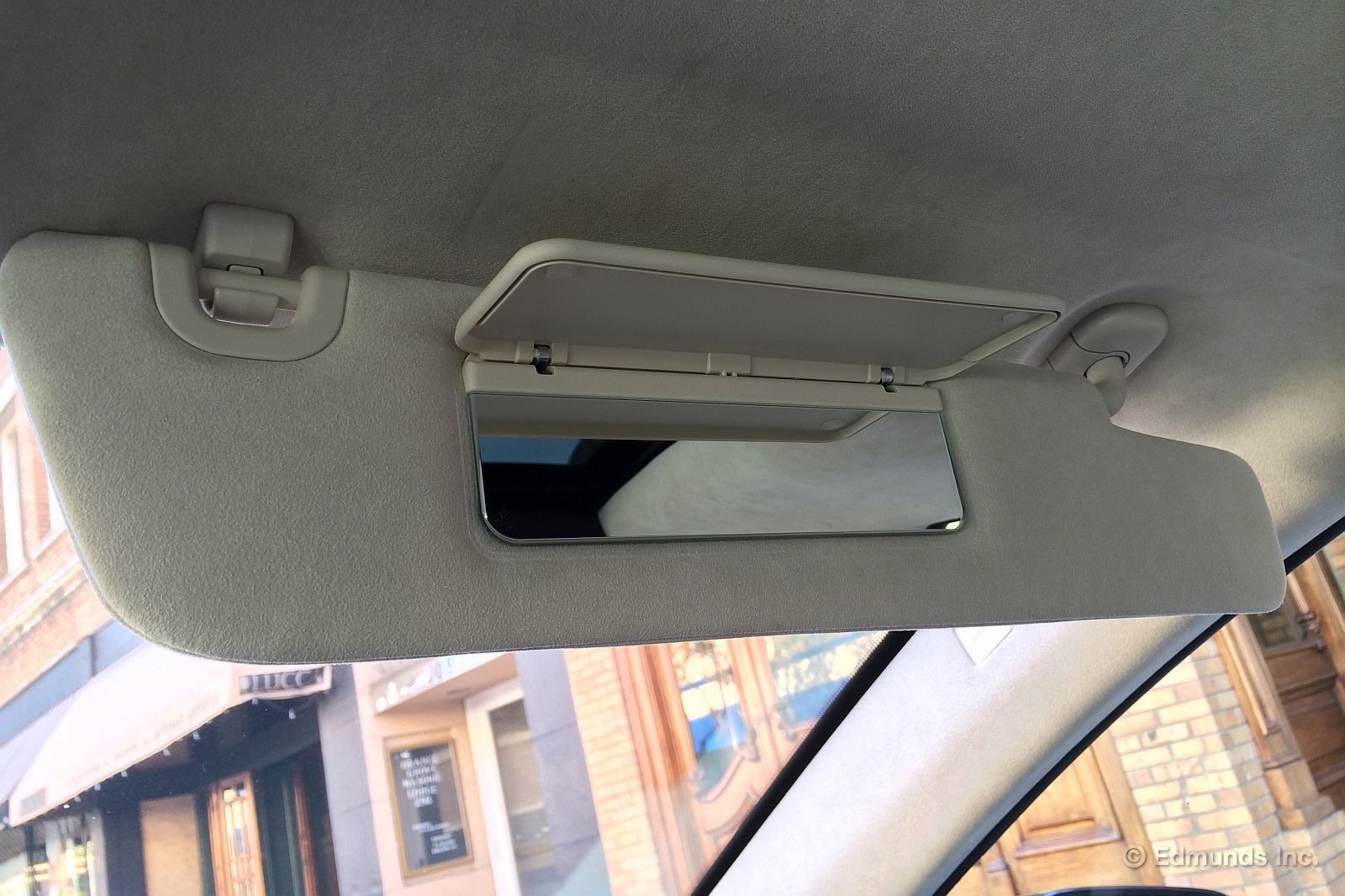
Sun Visor Vanity Mirrors, Broken Hinges:
Both sides were affected. They swapped in new driver and passenger side vanity mirror assemblies. They're still not illuminated, which is frankly surprising at this price.
Pay Type: Goodwill
Steering, Creaking Noise:
They added a shim and re-torqued the subframe bolts to a higher torque setting. There's a factory bulletin that covers this (SB-13-32-001), so we aren't the only ones.
Pay Type: Warranty
AC Compressor, Humming Noise Upon Starting:
Apparently we're not the first to notice this, either. They installed a "Compressor NVH Cover" and associated bracket to attenuate the noise and help eliminate interior resonance. I'm not yet sure if newly-built Model S sedans come with this part or if they install it on an as-needed basis.
Pay Type: Goodwill
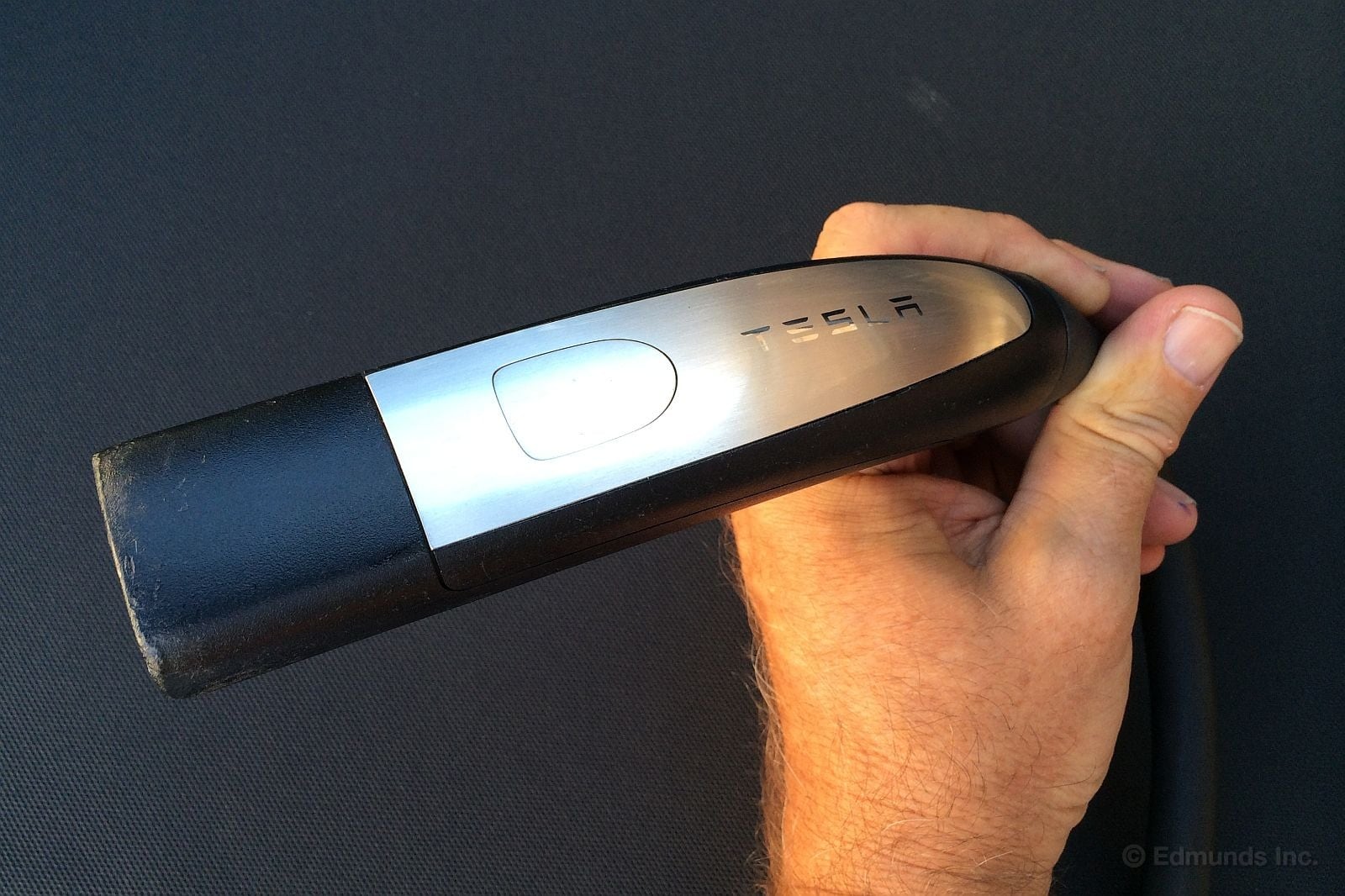
Mobile Connector Badge, Install:
Our mobile power cord has been missing a glint of stainless steel trim since any of us can remember. It's purely cosmetic to the point that we weren't bothered by it and had not pointed it out. The Tesla service folks noticed this one on their own when giving the car the once-over.
Pay Type: Goodwill
Raspy Noise During Hard Acceleration:
Tesla technicians confirmed there is no fault with drive unit (main electric motor) which was our main worry going in. Instead they re-routed and secured some logic harnesses in accordance with a recent repair bulletin to reduce the chance of contact at various points between the subframe and body. They also reported feathered wear on the tires that were contributing a hum. They felt especially good about this theory after temporarily fitting a completely different set of wheels and tires for a quick check.
Pay Type: Warranty
There's no doubt that new tires are in our near future, but I'm not entirely convinced they got this one right. The noise I heard was more mechanical than that. But I didn't personally participate in the back-to-back tire test, so I'll defer for the time being. We'll revisit this issue when new tires enter the picture.
When all was said and done the car was ready the same day it arrived at their shop. But Friday afternoon got weird on our end and we asked them to hold the delivery until Monday morning. None of this cost us anything, but I can't help wondering about the "goodwill" repairs. Are all Tesla owners getting the same treatment when it comes to issues such as these?
We've never specifically told any service writer this is an Edmunds.com car, but they know the VIN. By now it's pretty obvious. And this time I caught a glimpse of the notation "Edmunds VIP" written on the Tesla copy of the paperwork when Cameron and I signed for the car.
Good service or not, I'm getting weary of all of these little issues. None of them was a big deal, but they keep coming. And in the past they've replaced a touchscreen, two drive units and the battery. It hasn't all been little stuff, not by a long shot.
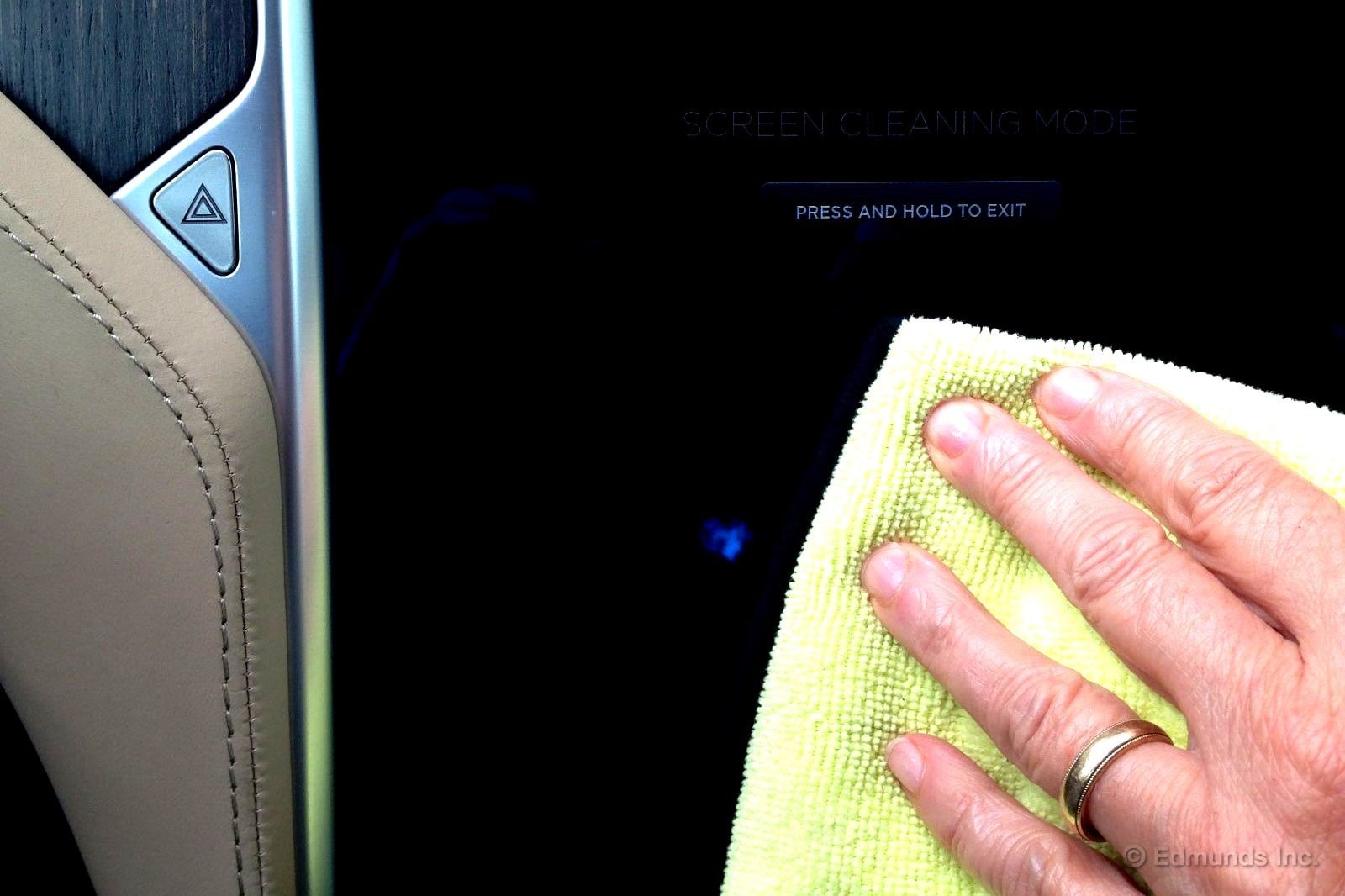
I'm kind of a neat freak about having clean glass. Since the touchscreen in our 2013 Tesla Model S is nearly as big as a home TV, it quickly gets decorated with nasty looking fingerprints and smears.
As Dan Edmunds noted, a software update earlier this year introduced a new feature to help clean the touchscreen. The screen is locked and darkened while you clean the screen rather than scrambling all the information that is currently being displayed. I found that if you use a clean microfiber towel, you don't need any cleaning fluid. In fact, they advise not to use any cleaning fluid or abrasive towels.
If the Tesla Model S was mine (and I wish it were) I'd keep a microfiber towel in the car and clean the screen every couple of days.
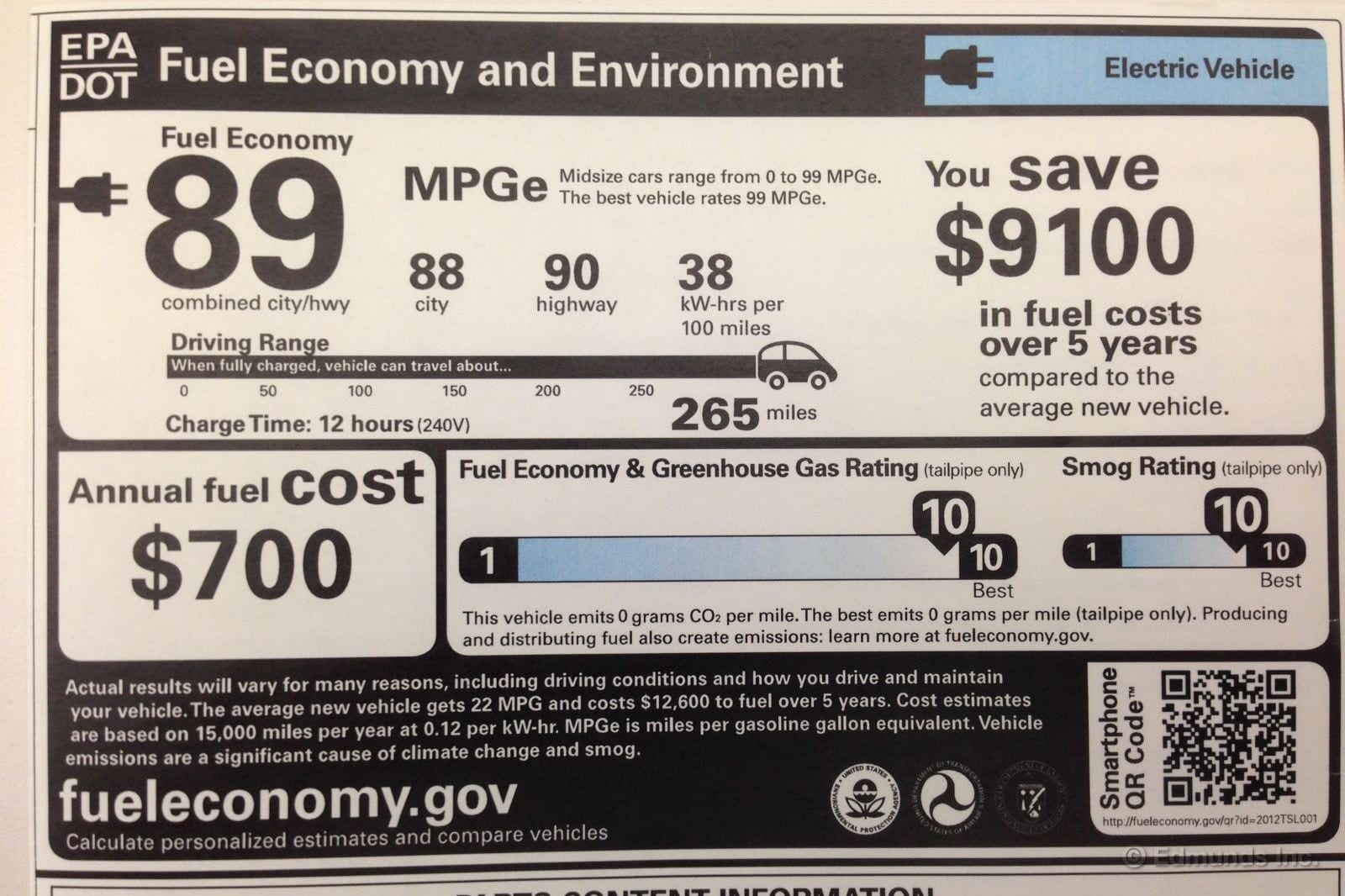
Americans hate high gas prices. Hate, hate, hate them. Presidencies have been toppled by the inability to provide cheap gas. Just ask Jimmy Carter. So you would think Americans would embrace EVs. Not so. Or at least, not yet. Maybe the problem is no one puts a real dollar sign on the savings.
I decided to look at the fuel cost of driving our 2013 Tesla Model S 23,000 miles compared to driving the BMW 7 Series, (19 mpg combined) over the same distance. Remember, this is fuel cost only.
Here are the numbers I based my calculations on:
Average cost of electricity in California: 16 cents per kilowatthour (kWh).
Average cost of premium gas in California in 2013: $4.09
Miles driven: 23,000
Fuel efficiency of the BMW 7 Series: 19 mpg
Fuel efficiency for Tesla: 3 miles/kilowatthour
And here are the results:
Cost of electricity to drive the Tesla 23,000 miles: $1,226
Cost of premium gas to drive BMW 7 Series 23,000 miles: $4,951
Money saved on fuel by driving Tesla: $3,724
Obviously, there are many factors that could change the result of these calculations. But most of the variables play in favor of the Tesla. For example, there are many free public charging stations where there is no cost for electricity. The electricity from Tesla's superchargers is also free. And many people who get a Tesla become enraptured with solar power and have panels installed on their houses. This drops the cost of electricity well below the 16-cent average. Additionally, some utilities reduce rates for charging EVs at night. Southern California Edison, for example, charges only 11 cents kWh for charging after midnight.
Also keep in mind that these figures are just for 23,000 miles. Over 100,000 miles the savings in fuel costs is $16,192.
And this is just the savings in money. Don't even get me started on how much time you save by charging while you work, or sleep, rather than standing there in the gas station, staring at the spinning numbers on the pump.
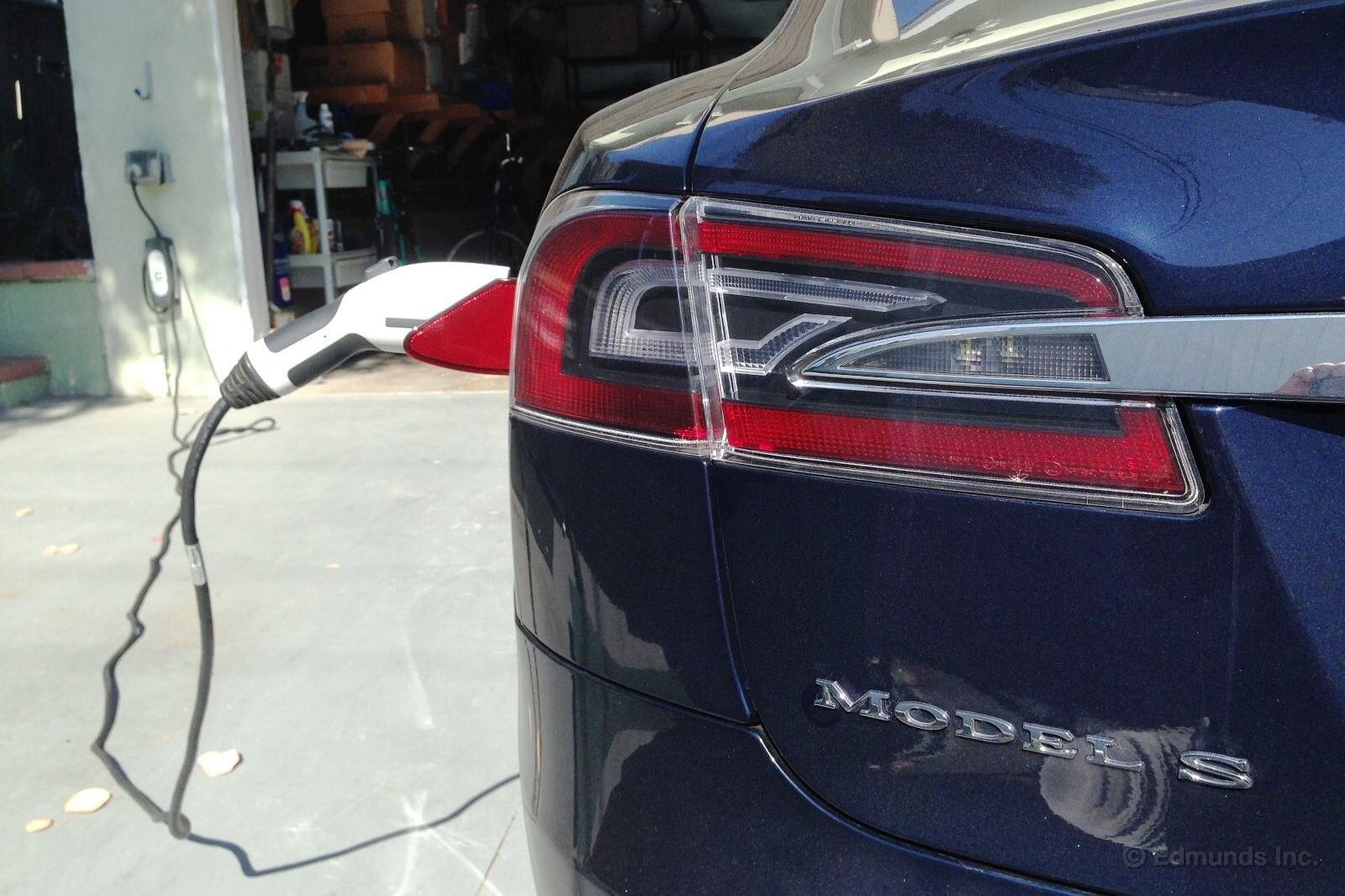
When you drive the 2013 Tesla Model S you'd better be ready for questions. Over the past year driving this EV, and the three years driving my 2011 Nissan Leaf SL, I've fielded hundreds of questions. They almost always come in the same order. The #1 most common question is — you guessed it — "How far will it go on a full charge?"
The #2 most common question might surprise you.
#2: "After the battery runs out, does the motor switch on?" No, I say. There's no motor. So then, that leads to the next question.
#3: "So what happens when the battery runs out? Are you just dead in the water?" I usually answer that you are not exactly "dead in the water," but you are in the same situation as you would be if you ran out of gas. Now, this triggers the next question.
#4: "How long does it take to recharge?" I have a problem with this question. It assumes you always run it down to zero and charge from an empty battery. I don't do this for the same reason people don't use up all the gas in their tank before filling up. So full recharge time is something that almost never happens. Instead, I'm charging when the battery is a quarter full to half full.
Last weekend, I still had about 65 miles of range on the Tesla but I decided to recharge anyway on my 240-volt home charger. I plugged in at 8:00 p.m. on Saturday night and it was fully recharged mid-morning Sunday.
Yes, that's a long time but, to be honest, I didn't need it any sooner. So, while a fast recharge time might be important sometimes (i.e. while on the way to Las Vegas when, by the way, you can use the much faster supercharger) most of the time it is a meaningless number. Of course, people can imagine all sorts of scenarios when it might be important. But all I'm saying is that, to me, in three years of EV driving, it hasn't really been important.
To round out this list, I'll leave question #5 up to other EV drivers who might read this and feel like chiming in. If no one does, I'll post something in the comments.
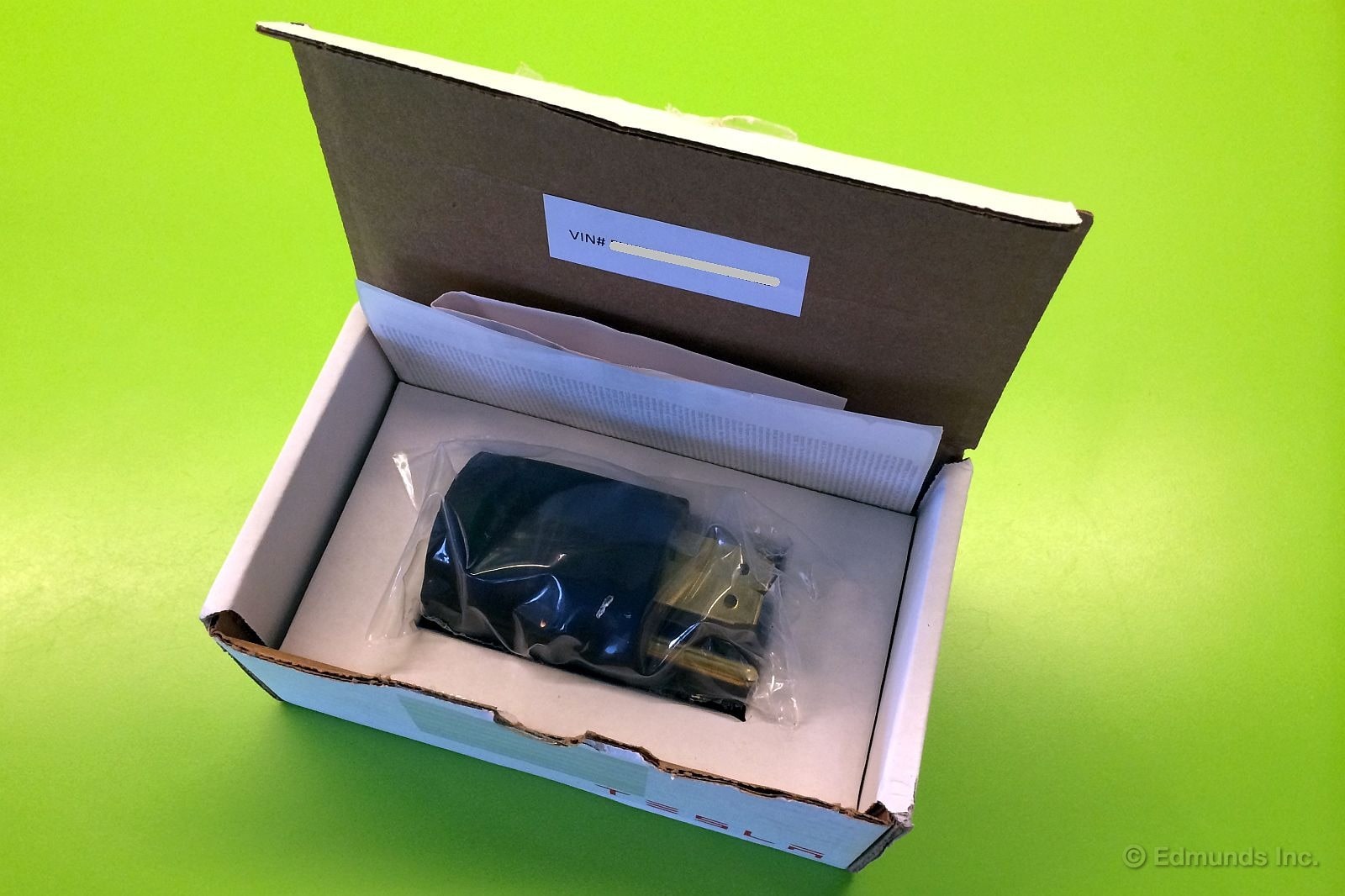
A package came today, and it was from Tesla Motors. Inside was a replacement NEMA 14-50 charge cord adaptor for our 2013 Tesla Model S.
Don't remember the story? It dates back to late last year and involved a couple of near-miss fire incidents during charging with a 240-volt NEMA 14-50 wall receptacle and the matching plug adaptor that Tesla provides with each Model S charge cord.
The incidents were ultimately blamed on faulty NEMA 14-50 wall receptacle installations, possible DIY jobs by amateur electricians. Indeed the parts required to install a NEMA 14-50 receptacle are temptingly cheap at places like Home Depot and Lowes. Thing is, you can't buy experience and an electrician's training at those places.
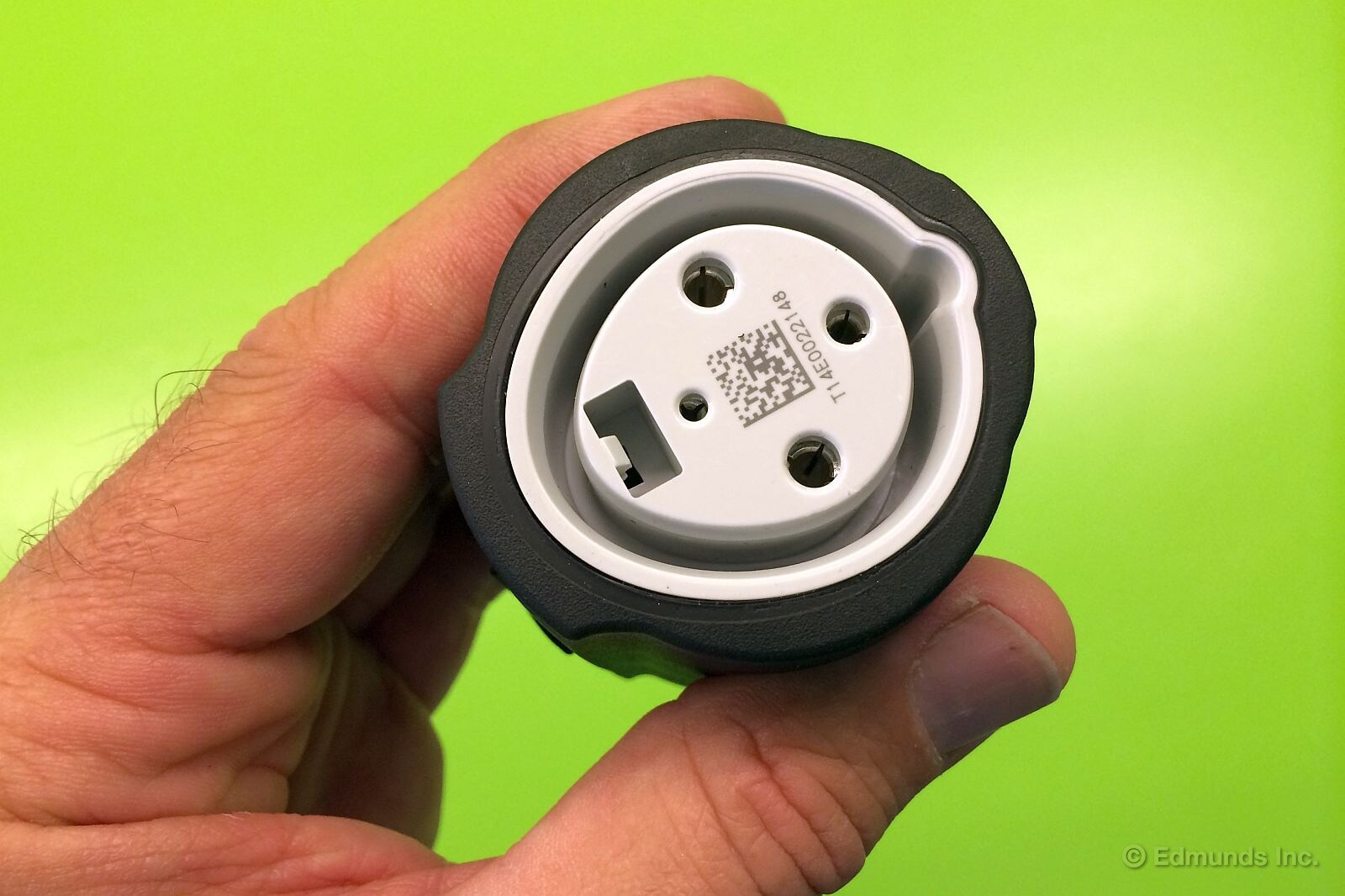
Tesla came up with two new safeguards to deal with this scenario. The first was an over-the-air software update (v5.8.4) that would dial the charge rate back by 25 percent if a certain type of wonky current fluctuation was detected by the onboard charging system. We received that update in late December before I headed out on my holiday road trip.
The second was the new NEMA 14-50 plug-end adaptor that came in the box today.
Word from Elon Musk back on January 10th was that the new adaptor would be mailed out to Tesla owners in two weeks' time. I just eyeballed my calendar: it's the second of June.
The new piece is dimensionally identical to the original part, but there's a thermal fuse buried somewhere inside. This fuse is designed to trip and terminate the charging process if overheating is detected. It's a triple-redundancy behind the software tweak and the charge cord's own circuit breaker.
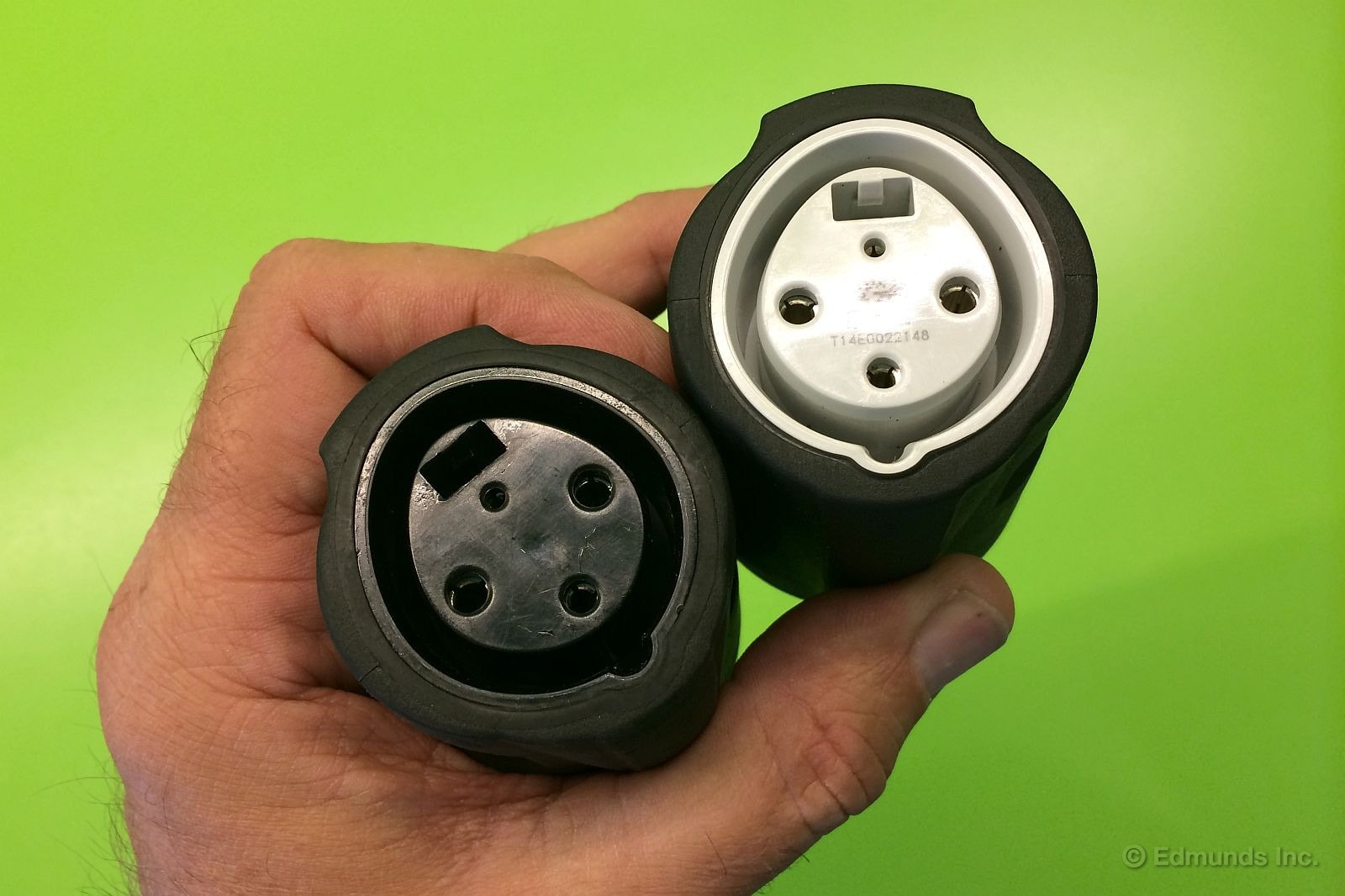
Tesla made it ridiculously easy to tell the new 14-50 plug-end from the old one. The new piece has a light-gray socket, the old one is black.
Tesla wants the old parts back, perhaps for no other reason than to ensure they're out of circulation. Or maybe they'll inspect them for signs of near-miss overheating. To that end the box contains a pre-addressed return shipping label. I've already re-packed the now-obsolete part and handed the box to the FedEx guy for delivery back to Tesla.

We thought we would bide our time while waiting for the debut of the Tesla Model X by keeping our long-term 2013 Tesla Model S a while longer. But we have pretty much covered all the bases on this car and quite frankly, we're getting that itch to buy something new. We were pretty sure that selling this car would replenish our coffers. But we weren't exactly sure how much we'd get. No one had any pricing data on the car.
This isn't the first time this has happened. Our long-term Chevrolet Volt and Fiat 500 were in the same uncharted waters back when we sold them. Would we get top dollar for our Model S? Take a wild guess before you hit the jump.
"Hold on sir," said the greeter at CarMax. "I'm checking with my manager to see if we can appraise this car."
This was the first time I've heard this at CarMax, but my worry was short lived. The manager came over quickly and said they could appraise it, but it would take twice as long (about an hour) since they had to do "a lot of research."
During the appraisal, I learned that CarMax wasn't going to resell the Model S on its lot. "Our insurance company won't let us sell this car until there are more out there," said the appraiser. My guess is that CarMax needs to work out the details of servicing the vehicle and offering an extended warranty. Instead, CarMax would list the Model S for sale at its own auction.
Roughly an hour later, I had an offer in hand. CarMax offered us $79,000. For reference, back in February 2013, we paid $103,770 (I'm discounting the $1,235 we paid for the wall charger, since it wasn't part of the vehicle). This is about a 24-percent depreciation, and slightly over with our fleet average of 22 percent.
We're still debating whether to take the offer, sell it private party. Or we may keep the Model S a while longer.
What would you do? Take the CarMax offer or sell it on your own?
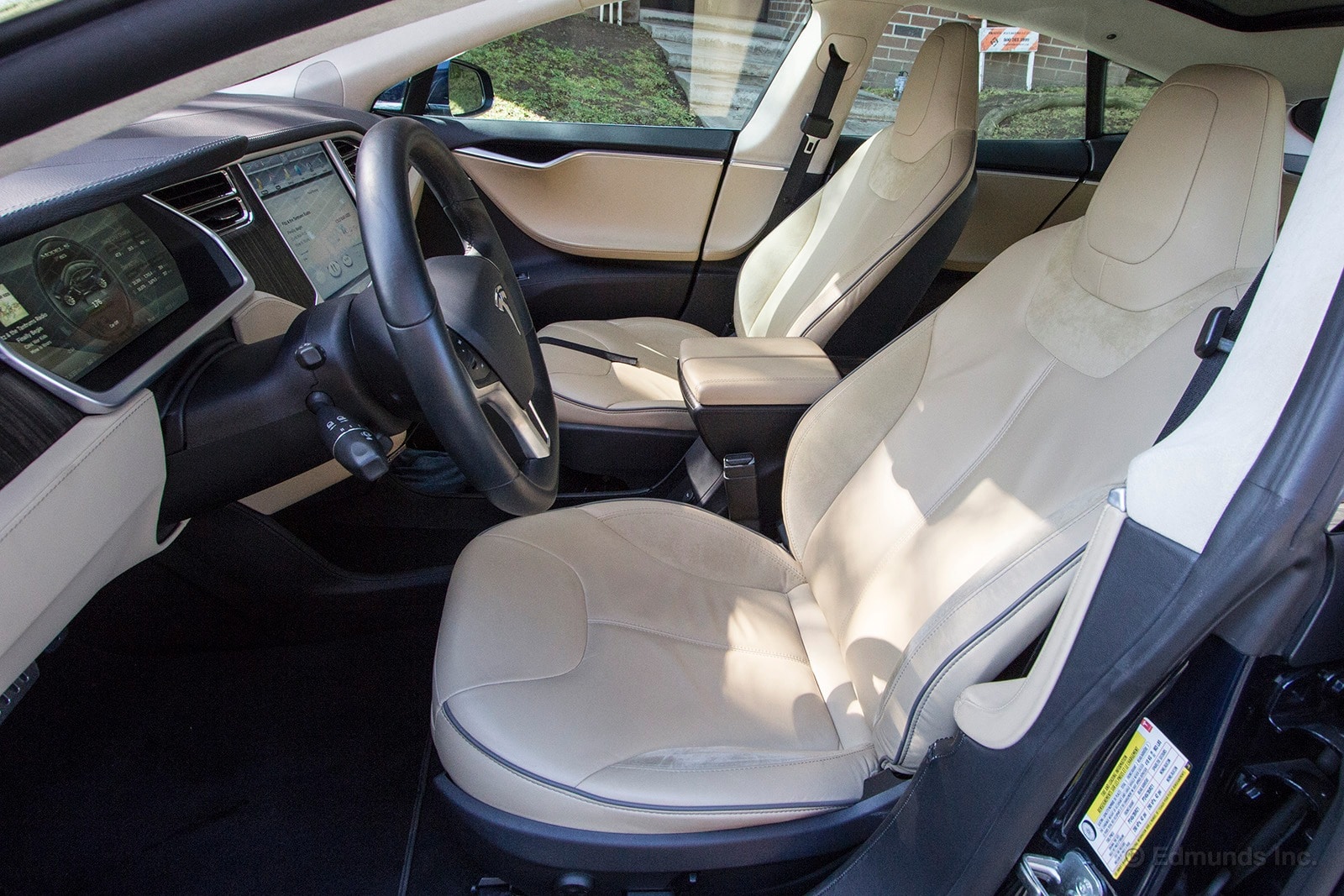
While there are mixed opinions about the style and practicality of some features on the interior of our long-term 2013 Tesla Model S, the materials are certainly durable. After 16 months in our fleet and nearly 23,000 miles on the odometer, our Tesla's interior surfaces are holding up well.
The driver's seat has no stains like you'd typically see on a light-colored interior, and minimal wear on the seams where you enter and exit the car.
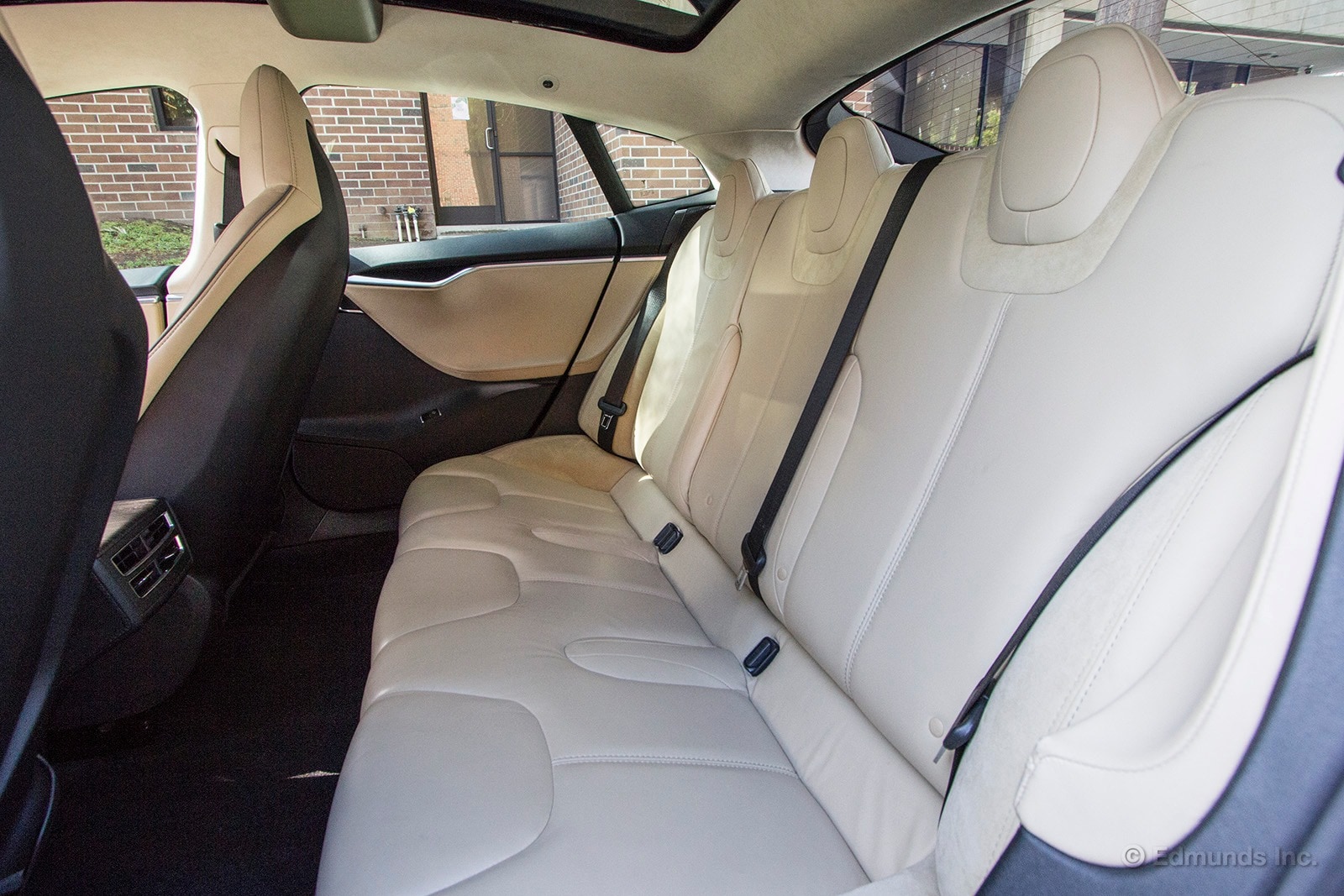
The rear seat is tip-top with no discoloring, tears, or wrinkles.
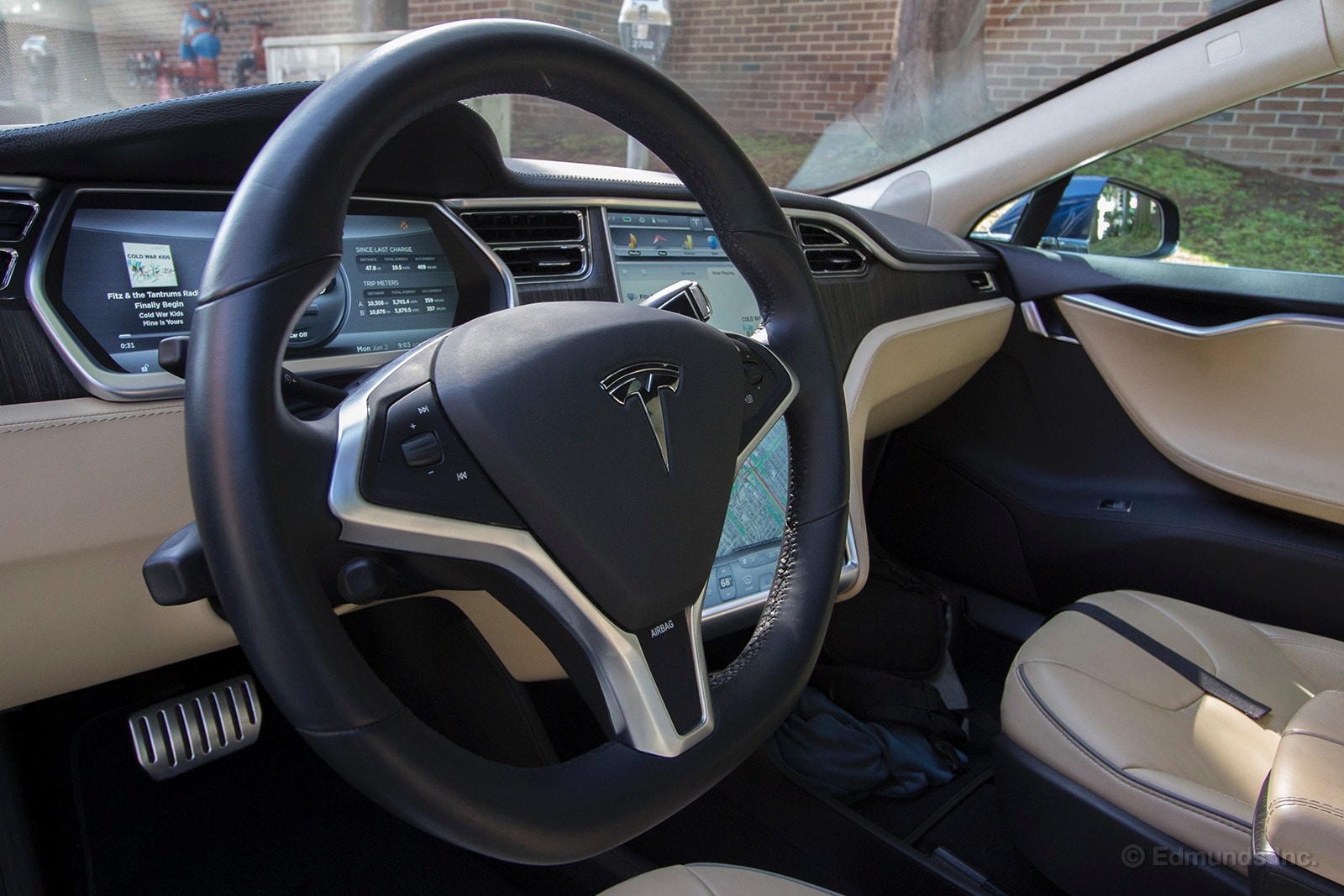
The steering wheel has no cracking or fading.
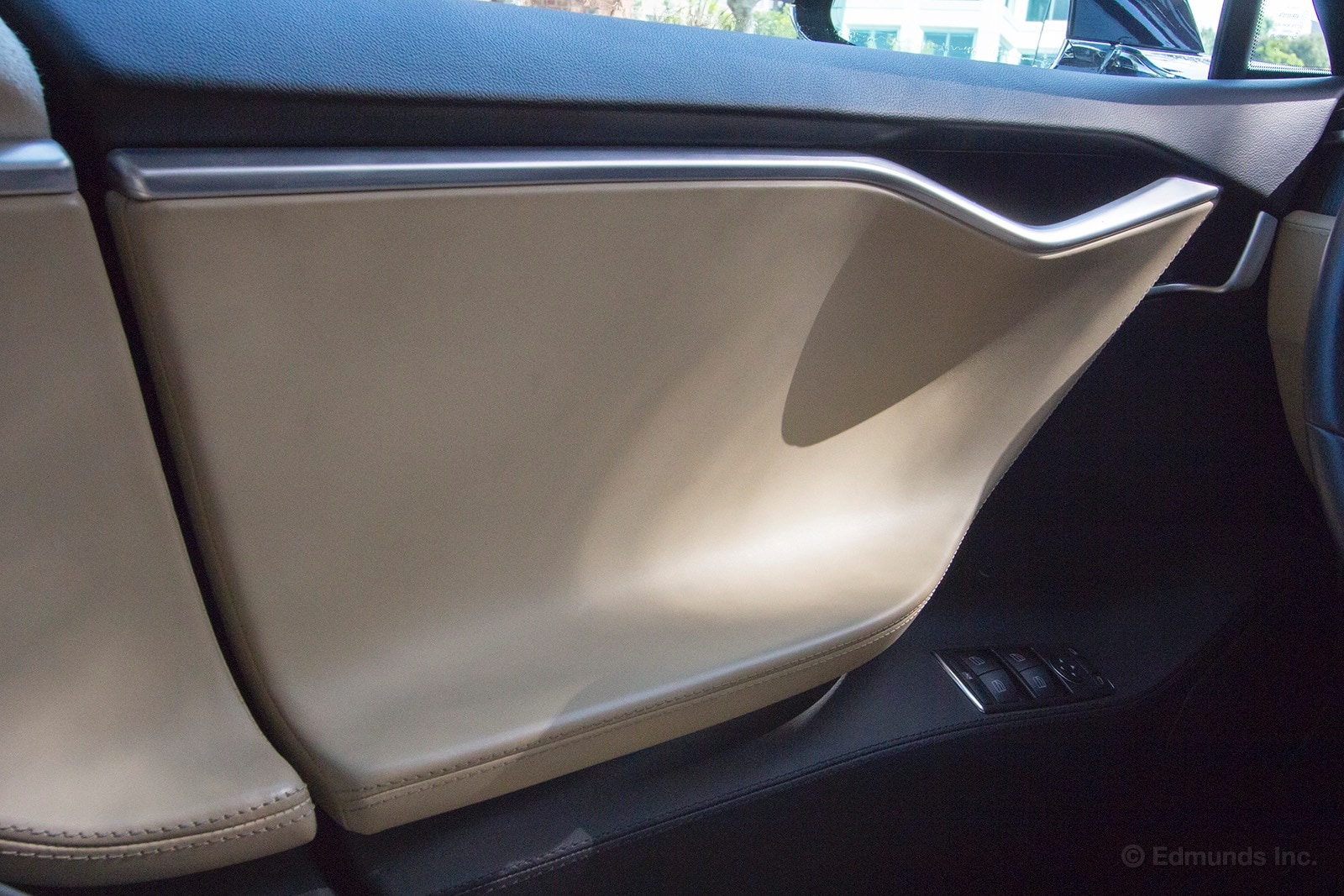
The door panels are in great condition as well. The driver's side armrest has a few markings that will likely come out with upholstery conditioner and some elbow grease, but the passenger side is clean and clear.
Whatever your opinion may be about the rest of the Model S, its interior is made of sturdy materials.
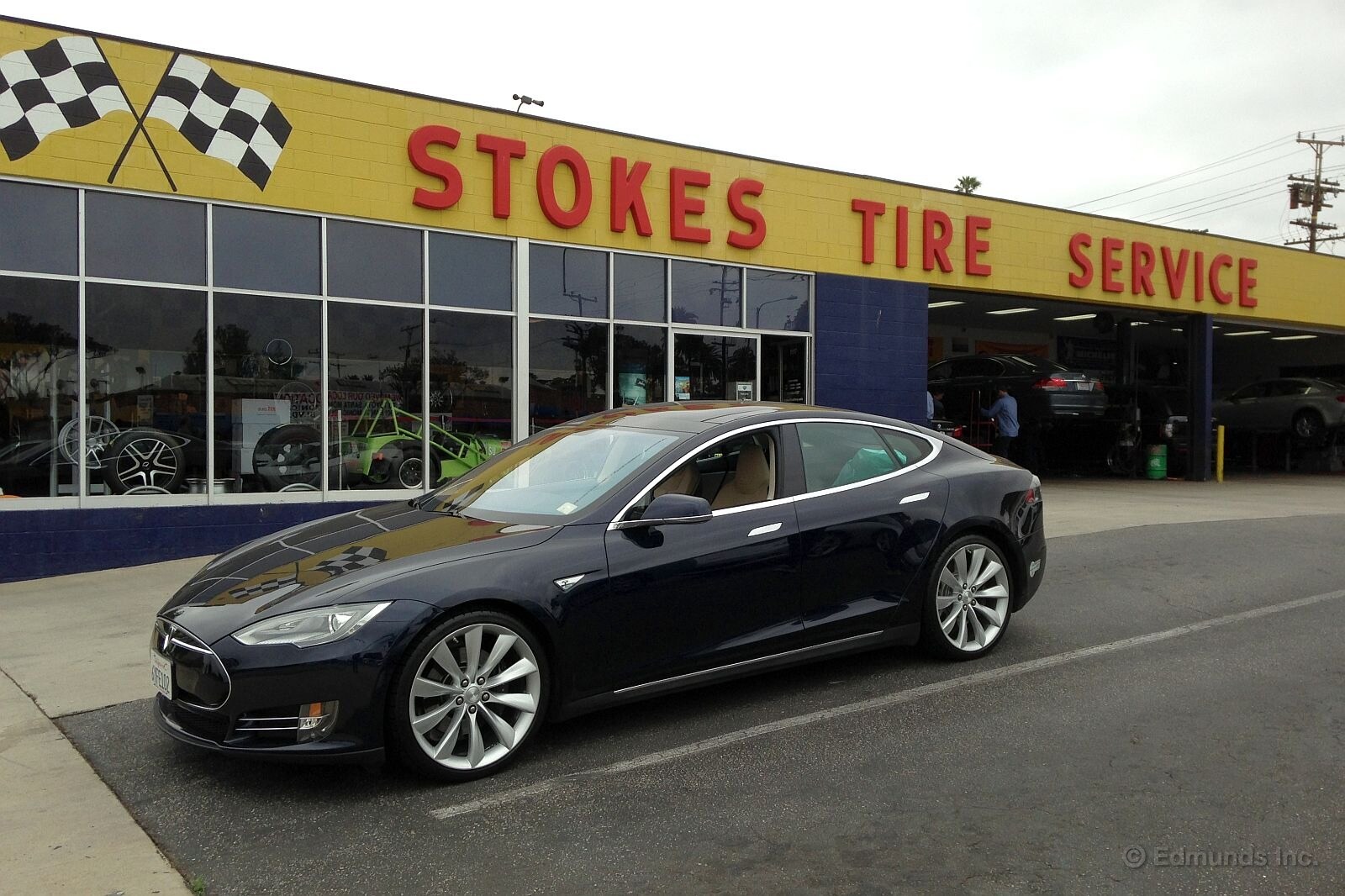
Truth be told, only one tire on our 2013 Tesla Model S was down to the wear bars and needed to be replaced. You may remember that we got out of sequence a few months ago when we replaced a single tire that was damaged. The other three have about 3,000 miles left.
So the question was this: two tires or four?
We were leaning toward four because of the noise problem that cropped up recently. Tesla service surmised that odd (and subtle) heal-toe tire wear was playing a role after they conducted back-to-back test drives with new tires and wheels they had on the shelf.
The deal was sealed when Matt Edmonds, a friend over at Tire Rack, suggested we try the Michelin Pilot Super Sport, a tire that's newly available in 245/35ZR21, the very size we need.
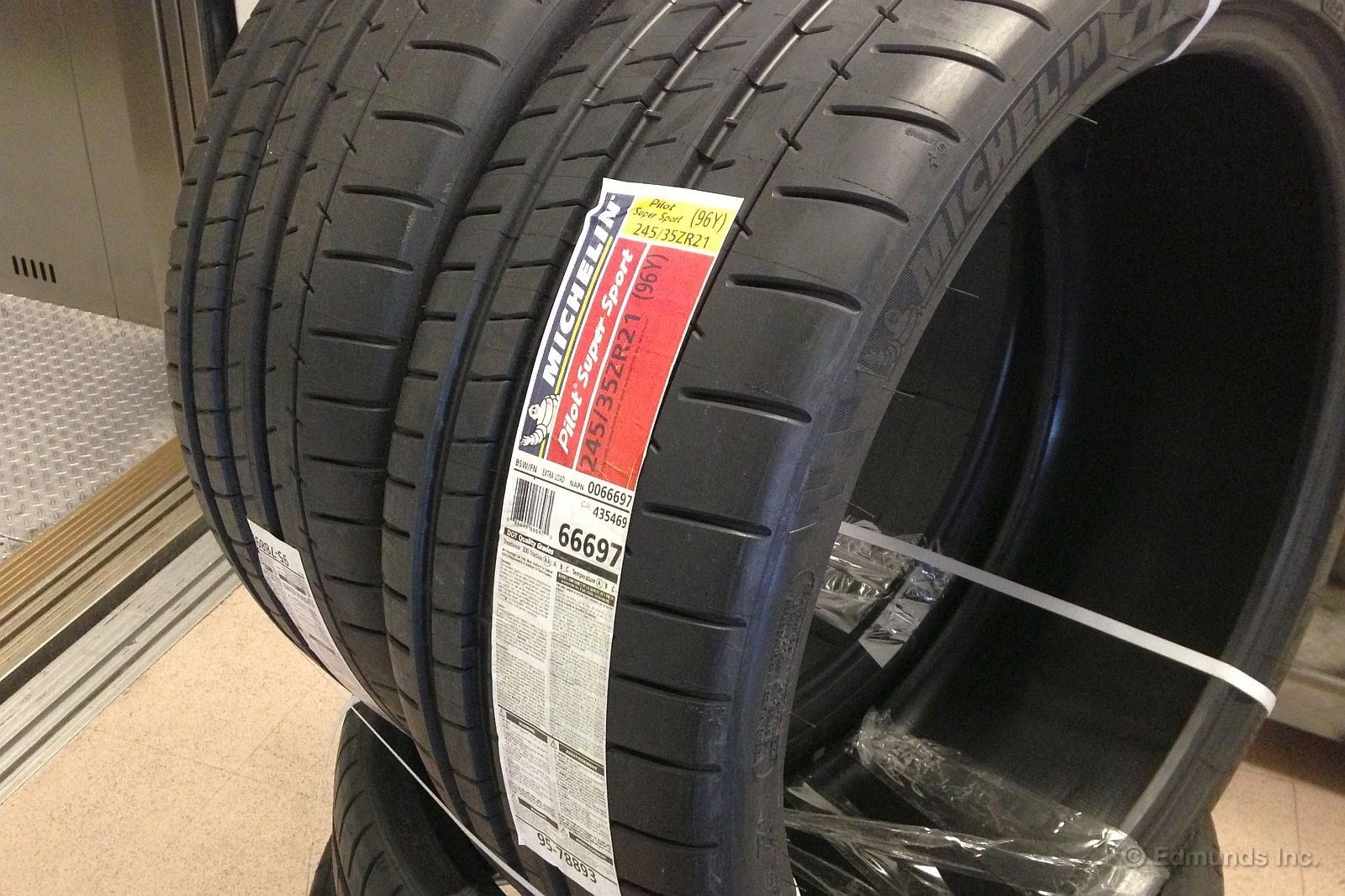
Their unit price of $293, only $8 more than the OE Continentals we've used so far, wasn't high enough to scare us off. And then Matt told me that a Tire Rack colleague that owns a Model S felt they were both grippier and quieter, with no detectable loss of range. Michelin backs them with a 30,000-mile tread warranty so long as they're rotated on schedule, which is pretty decent tire life on a Model S.
Sold. And the tires arrived at our door from their Reno, Nevada west coast warehouse as they usually do in one business day.
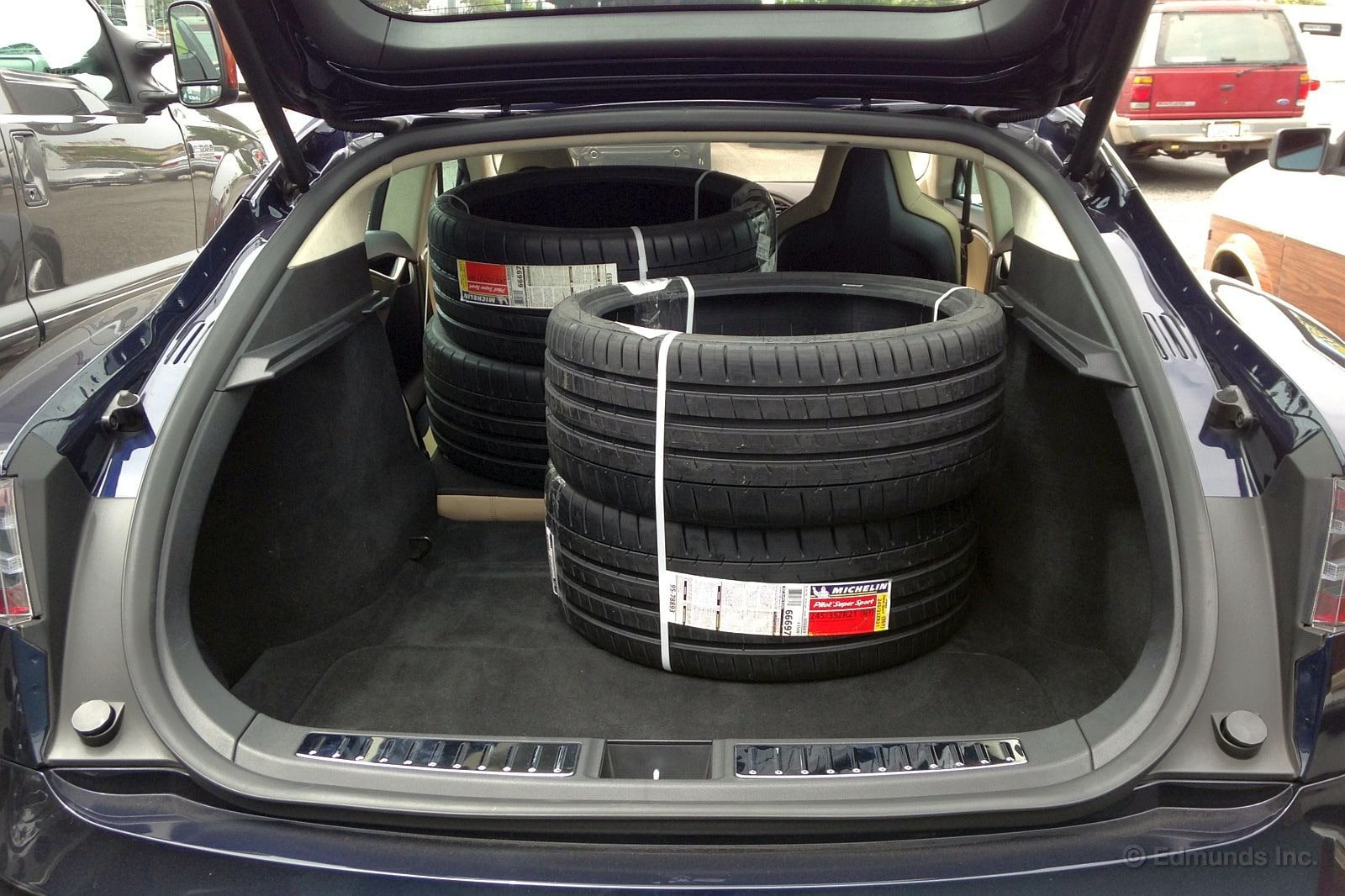
The Model S is one of those rare vehicles this side of an SUV that is cavernous enough to carry its own rather massive tires to Stokes, our usual tire shop.
While we were there we asked them to check the alignment and make any necessary adjustments.
The front was dead on. Rear camber was fine, but rear toe was slightly out of spec. It's minor stuff, though, nothing at all like the extreme and sudden shift to maximum toe-out that lunched our first set of tires last year. The marks I added after last time hadn't visibly moved. Well. Maybe a teensy bit on the left rear.
The numbers confirm this, more or less. The total toe was reasonably close to spec: 0.72 degrees toe-in compared to a maximum of 0.50 degrees toe-in. At least it was still toed in, was making no move at all toward toe-out. Whatever happened last time was NOT happening again.
But it wasn't distributed evenly left to right. The left rear was 0.08 degrees toe-in and the right was at 0.64 degrees toe-in. Our Tesla must've been dog-tracking slightly, but not enough so a following car would notice. Stokes set both rear wheels to 0.20 degrees toe-in and squared it up so our total toe-in is now at 0.40 degrees, the dead-center of the spec.
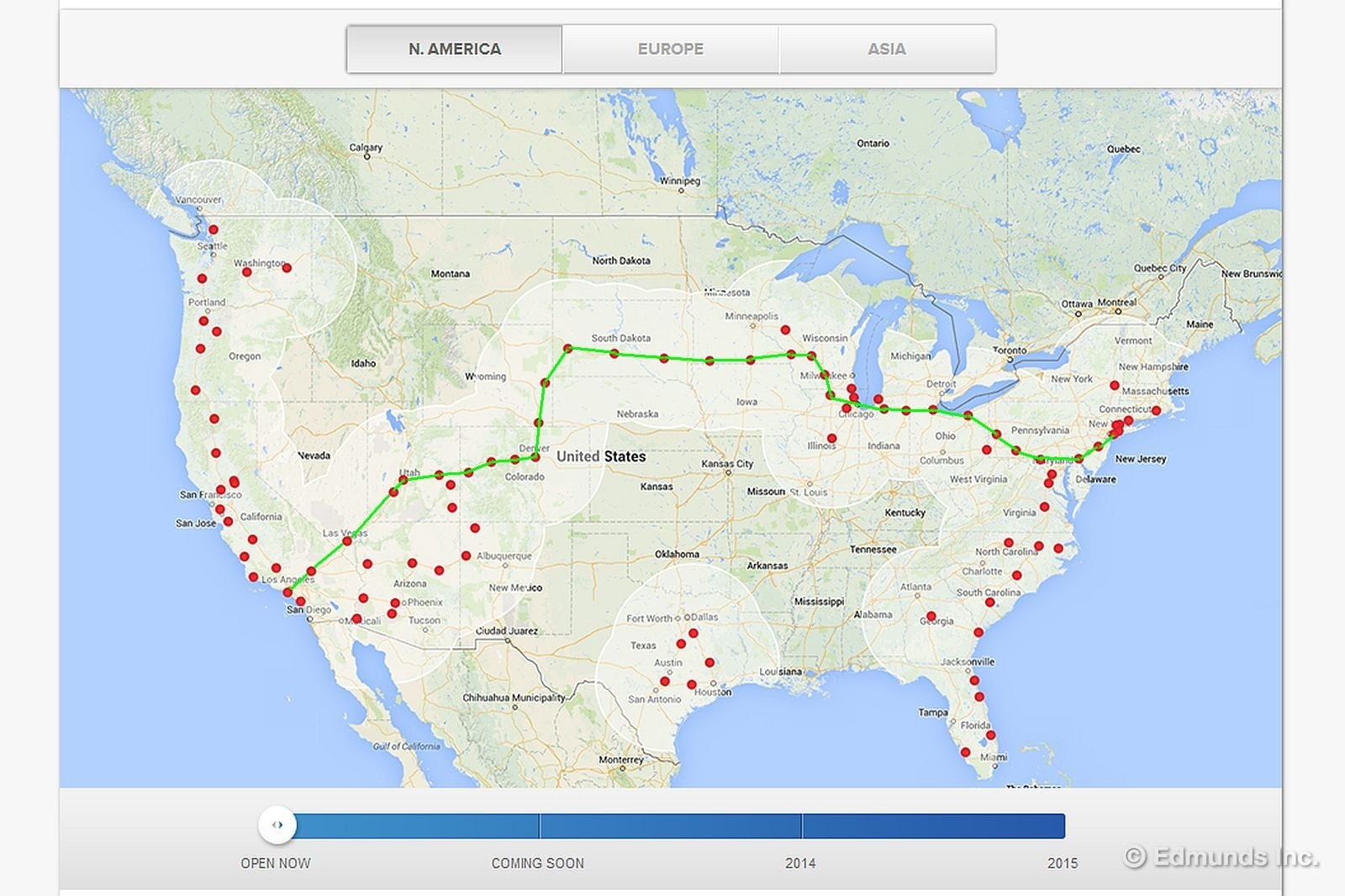
We're finally going to do it. Photo Editor Kurt Niebuhr and I are preparing to drive our 2013 Tesla Model S from Los Angeles to New York City following the path dictated by the Supercharger network.
Our original goal is simple: depart Los Angeles on Friday night after game five of the Stanley Cup is over and arrive in New York before the puck drops in Madison Square Garden on Monday night for game six. That gives us 69 hours to play with.
The Rangers have some work to do if this is going to pan out. They've got to win game five in Los Angeles. It's all over if the Kings take Friday's game at the Staples Center.
In which case we'll still make the drive. We don't have tickets for game six anyway. It's only just an excuse at this point.
And yes, this trip represents another reason why we just replaced all four tires.
Our route will be slightly shorter than the 3,400-mile path taken by the Tesla Motors team this past January. New Superchargers that have since opened in Nevada and Utah make it unnecessary to follow their path through the Four Corners area. Still, Kurt and I will be covering 3,282 miles.
The Tesla team made their crossing in 76 hours. They had a team of two cars, a sleeper van and a film van. Fifteen engineers and Supercharger staffers in matching jackets made up the caravan. Engineers with intimate knowledge of the Model S were calculating the exact speed to drive and the precise moment to unplug the car.
They used a Pony Express method to keep their drivers fresh. I'm not sure if they pre-staged new drivers up the road or not, but a recently released trio of videos (one, two, three) depicts a substantial effort.
They also had to deal with snow as they traversed Colorado.
Kurt and I will be on our own. We'll take turns driving and sleeping. We don't plan on stopping, except of course, for the two dozen times we'll have to stop to recharge. There will be energy drinks, granola bars and whatever food we can scare up within walking distance from the Superchargers.
My calculations suggest it's possible for us to finish well within our 69-hour time limit. We should get there in plenty of time for the game, if there is one.
Kurt's the photographer, I'll be sending out tweets via Twitter. Follow our progress at @edmunds and @Edmunds_Test. My Instagram screen name is "suspensiontuna".
Will we set a Guinness World Record? I'm not sure I'm up for the paperwork. I'll keep a logbook, I'll turn on location tracking on my iPhone so all my photos are geotagged and I might mount a Vbox in the car.
Or not, Kurt and I want to make the crossing just because.
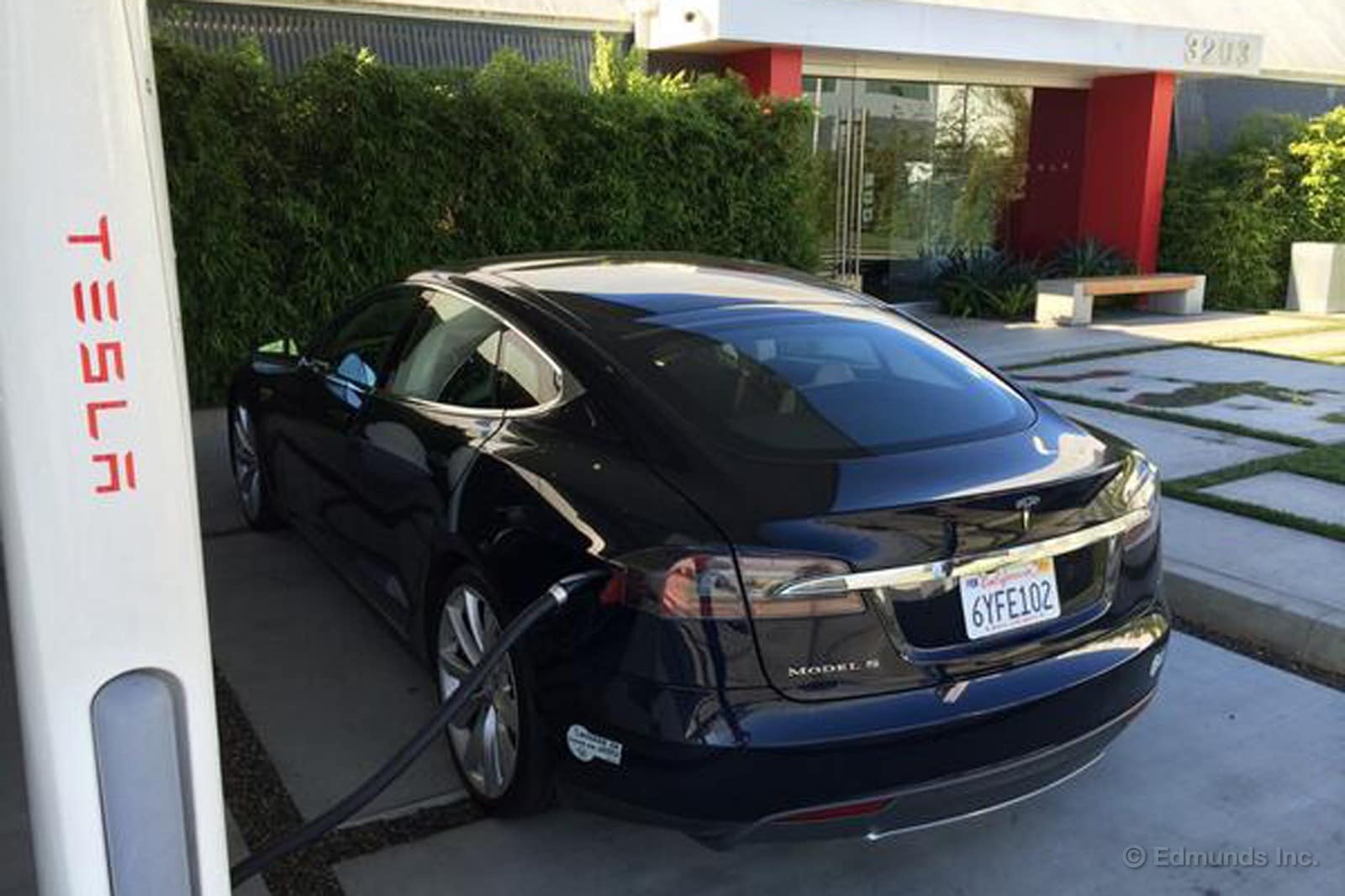
Here is a photo essay of our long-term 2013 Tesla Model S during our cross-country road trip using the newly completed Tesla supercharger network. This is recreated from the live Twitter feed for those of you who don't use Twitter.
Dan Edmunds @Edmunds_Test:
Topping up our @TeslaMotors Model S in preparation for a cross-country trip. We leave after #StanleyCup game 5 ends.

At the Portofino watching the 3rd period. We're driving to NYC even if the Kings take it. Driver has iced tea.
This #StanleyCupFinal overtime period is delaying our LA-to-NYC liftoff in the @edmunds #Tesla Model S.
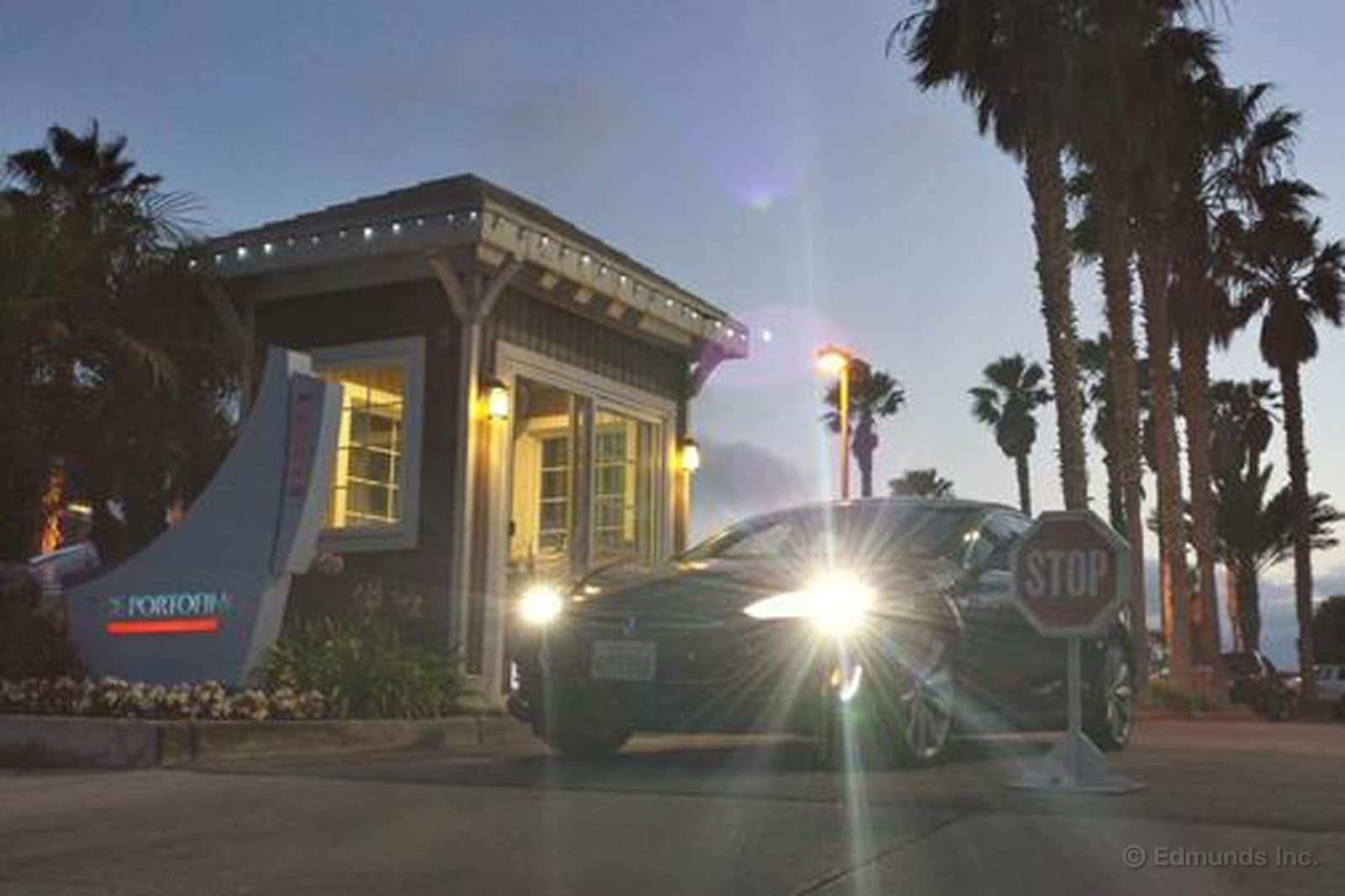
Departed the Portofino for NYC in our @TeslaMotors Model S at 8:26 pm after regulation ended. #GoKingsGo
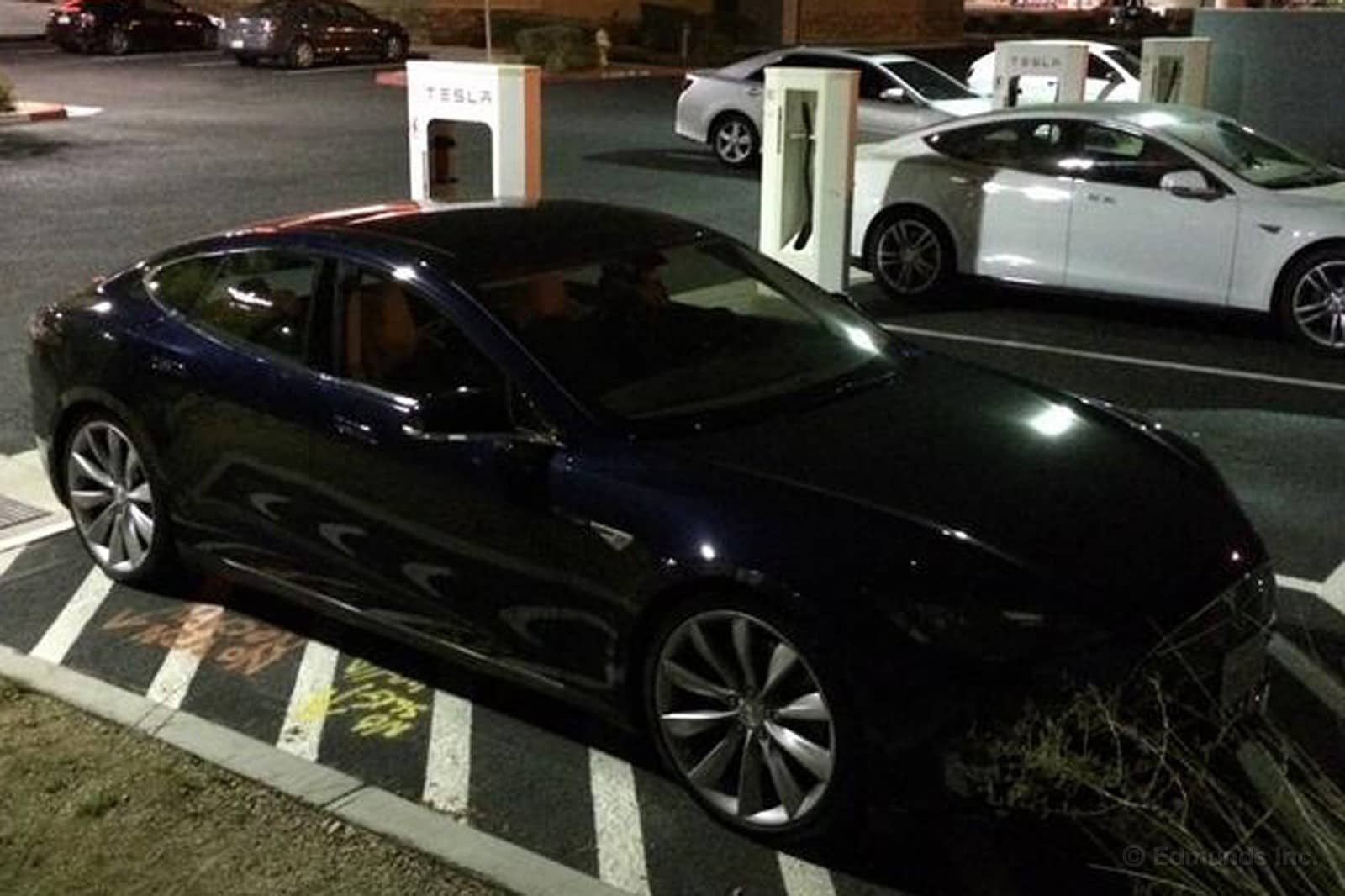
Our @TeslaMotors Model S is taking on more power at the Barstow Supercharger. We'll do this two dozen more times.
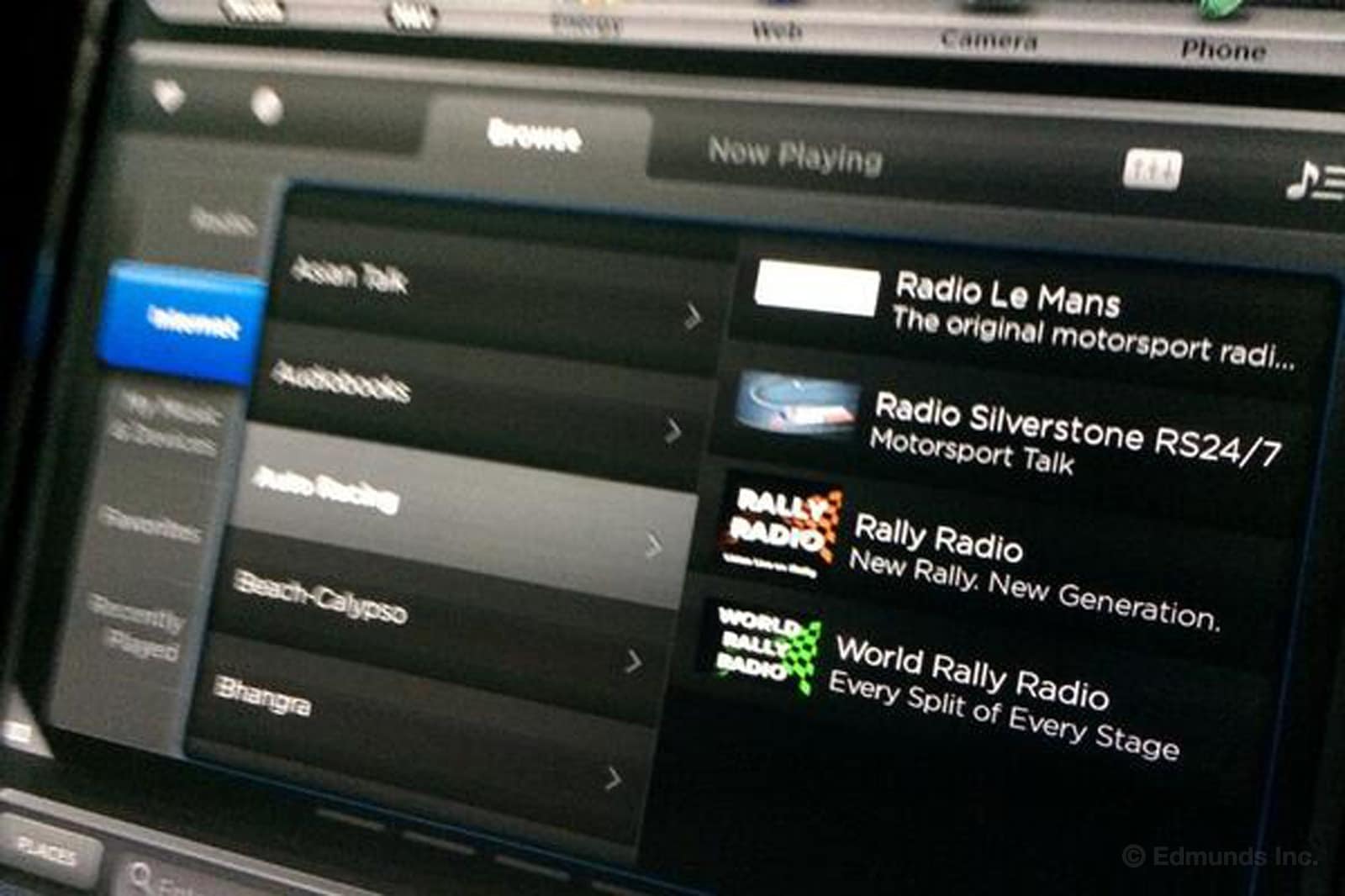
Radio LeMans is in your @TeslaMotors Model S: Internet > TuneIn Radio > Location > Europe > UK > Genre > Auto Racing
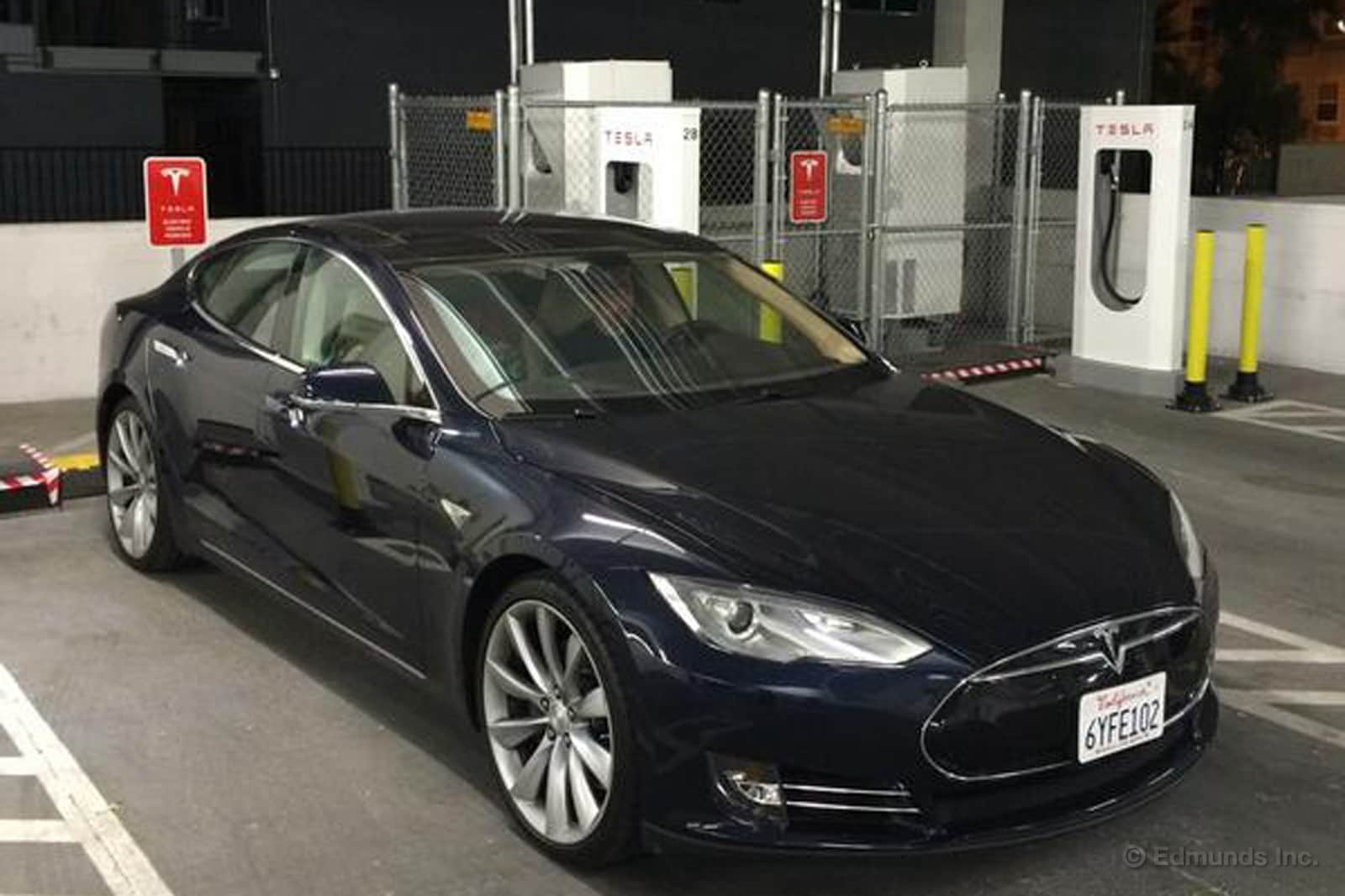
Left Las Vegas at 3:18 am to begin our longest and sketchiest leg: 222 miles with over 4k elevation gain. #evxcountry
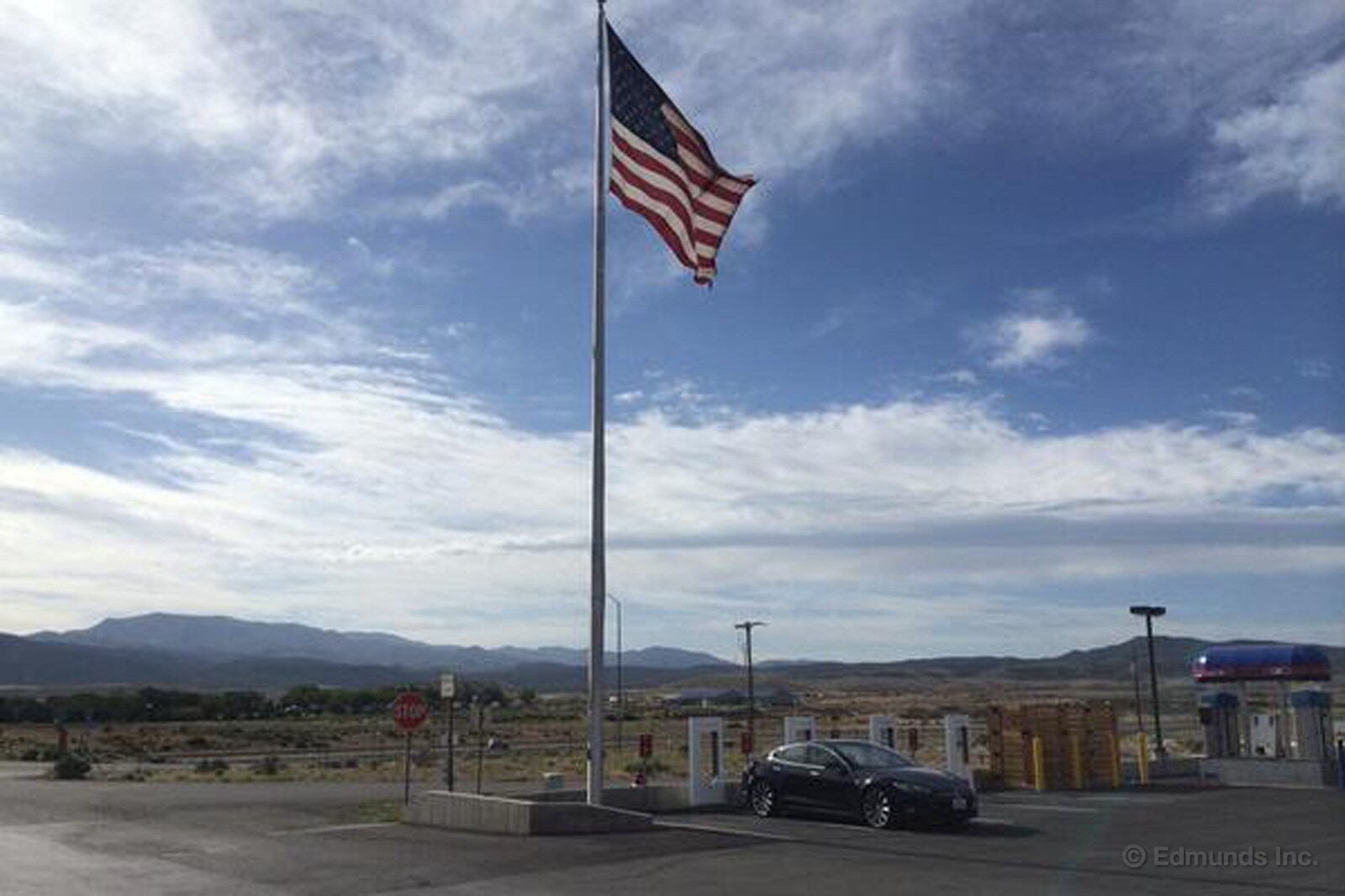
We made it from Las Vegas to the Beaver, UT @TeslaMotors Supercharger with 9 miles to spare. #evxcountry
Vegas (2,060 ft) is 222 miles from Beaver, Ut (5891 ft) intermediate low 1,500 ft, high 6,500 ft. St. George #Supercharger will fill the gap
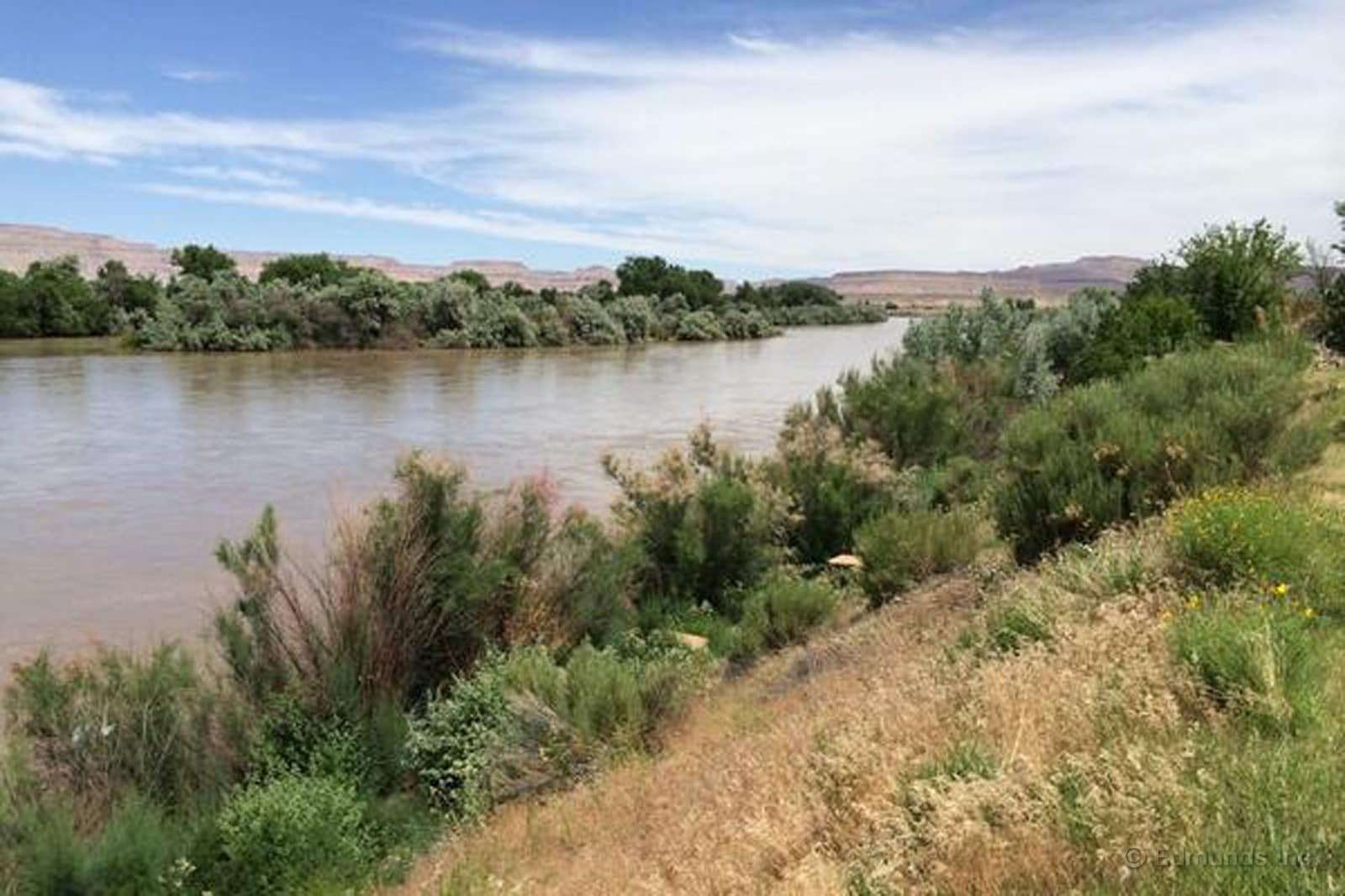
The @edmunds team just left the @TeslaMotors Supercharger on the banks of the Green River. Next stop, Colorado.

Miles and miles of construction coneage is slowing is down.
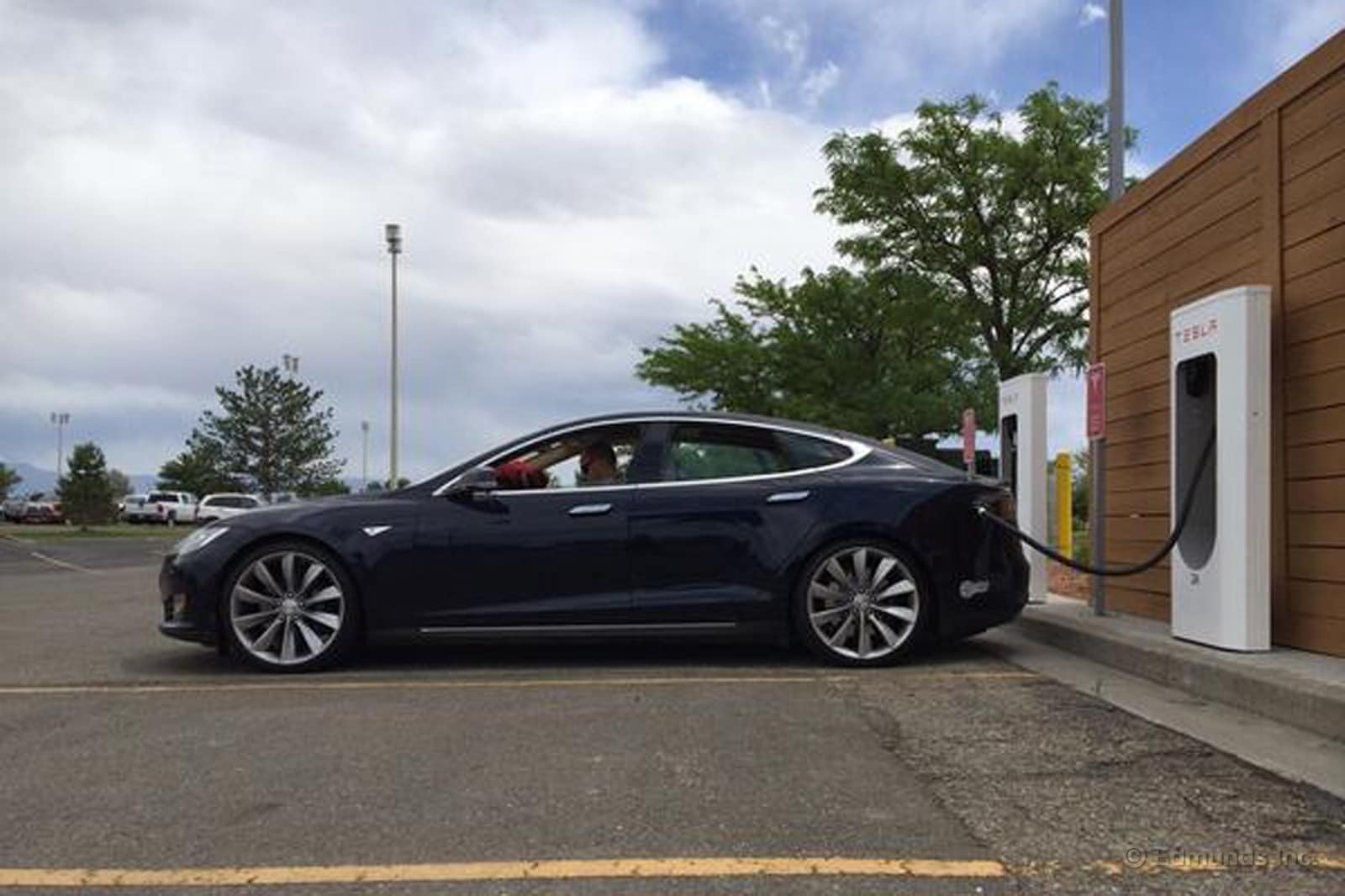
Grand Junction, Colo. Supercharger achievement unlocked. Our @TeslaMotors Model S was here and gone in 24 minutes.
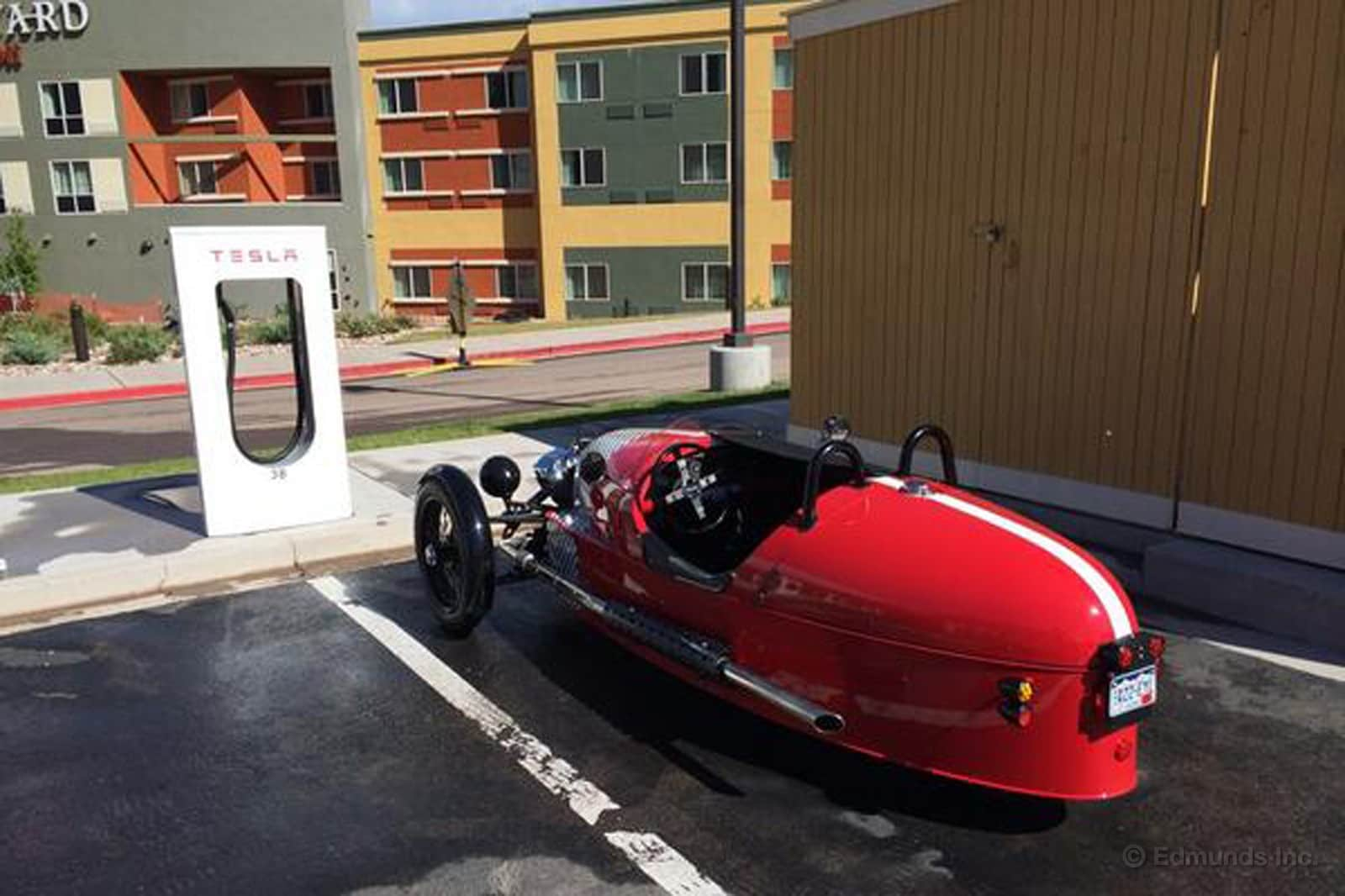
Glenwood Springs is having a British car show tomorrow. Morgan parked next (but not in) the #Supercharger lot.
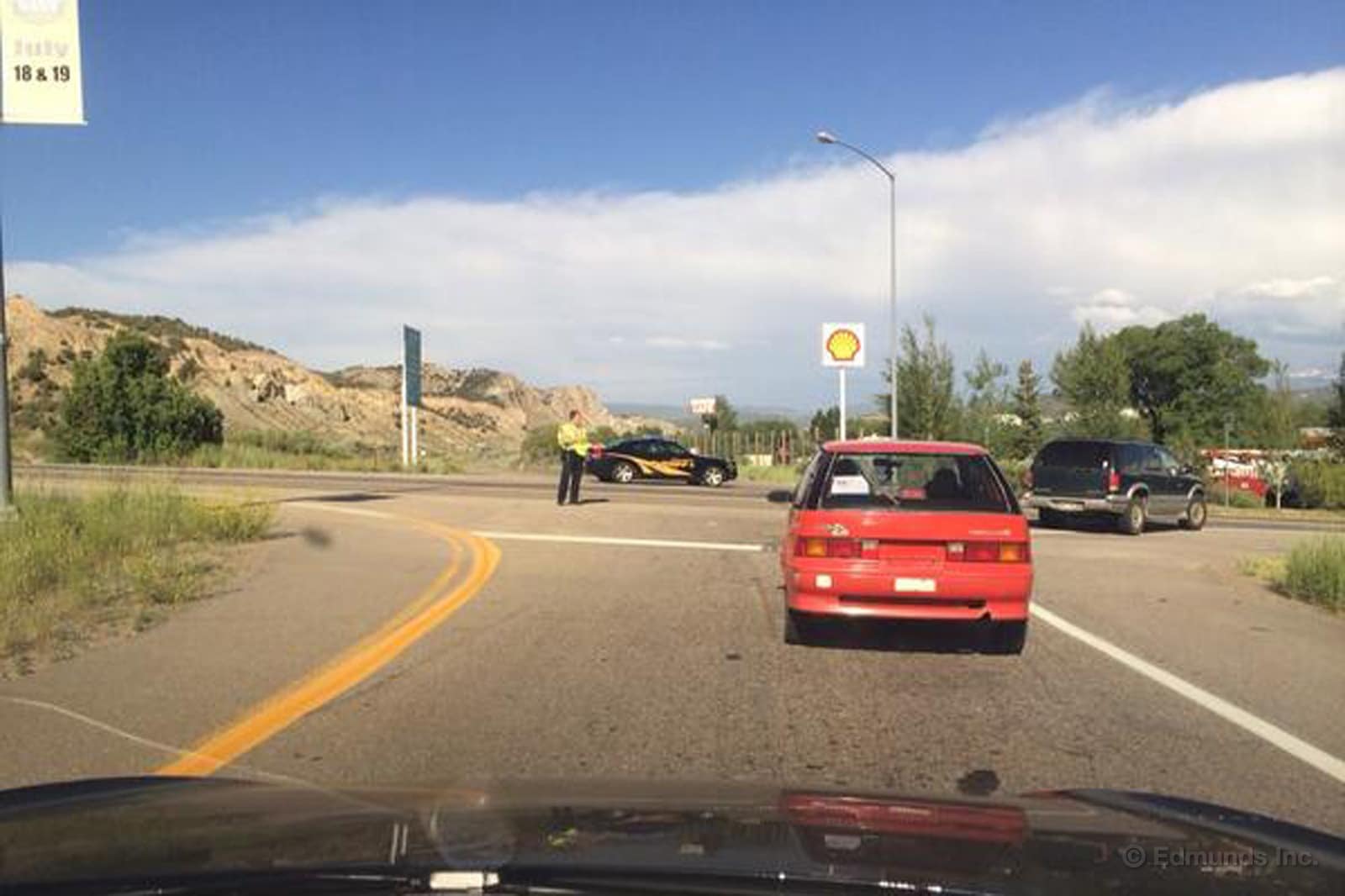
Big delay. I-70 closed at Gypsum. Being detoured onto dinky road through town to Eagle. Losing time. #evxcountry
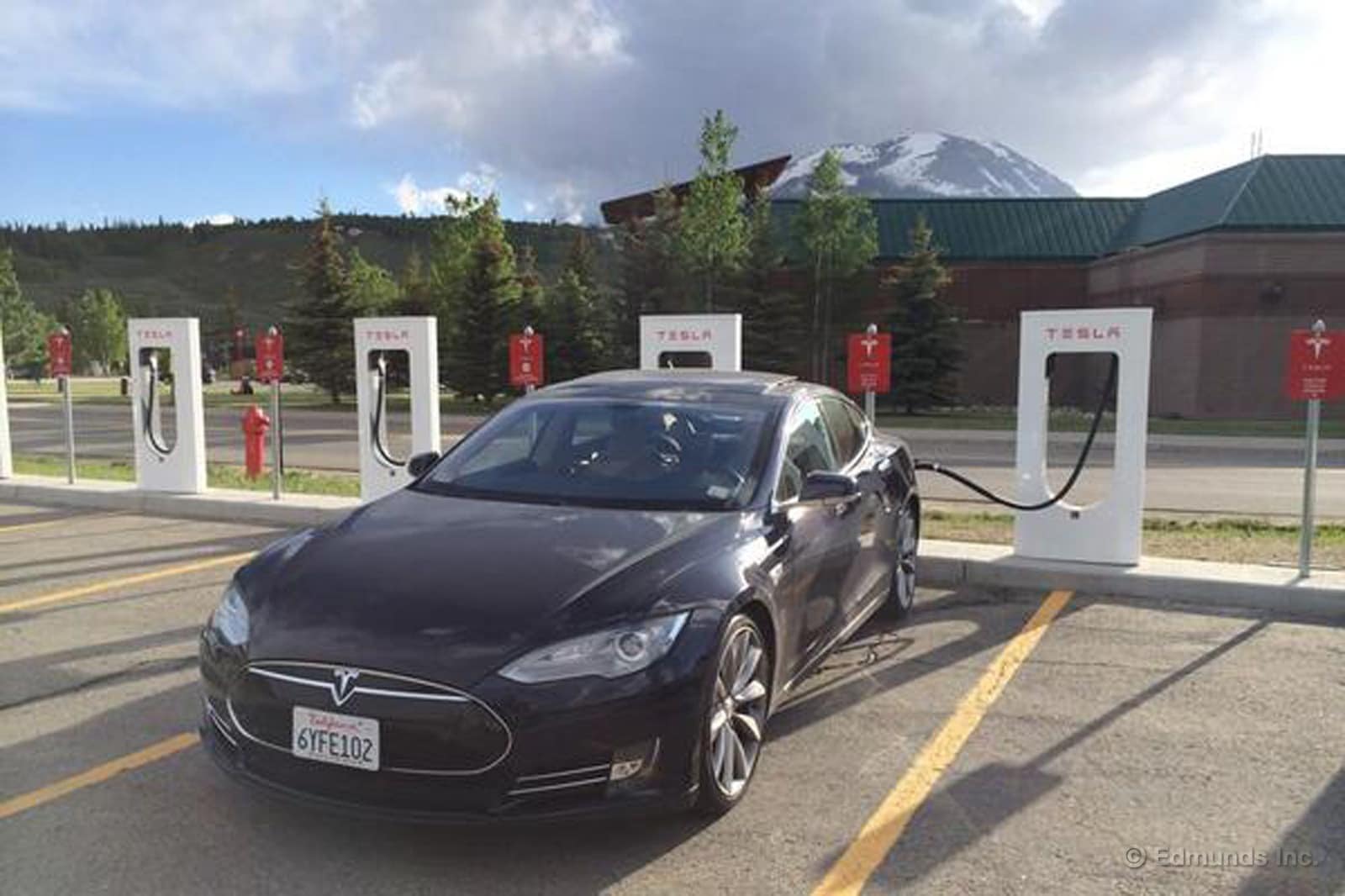
Leaving the @TeslaMotors Supercharge at Silverthorne, CO. Will pass Denver in an hour on way to Cheyenne, WY.
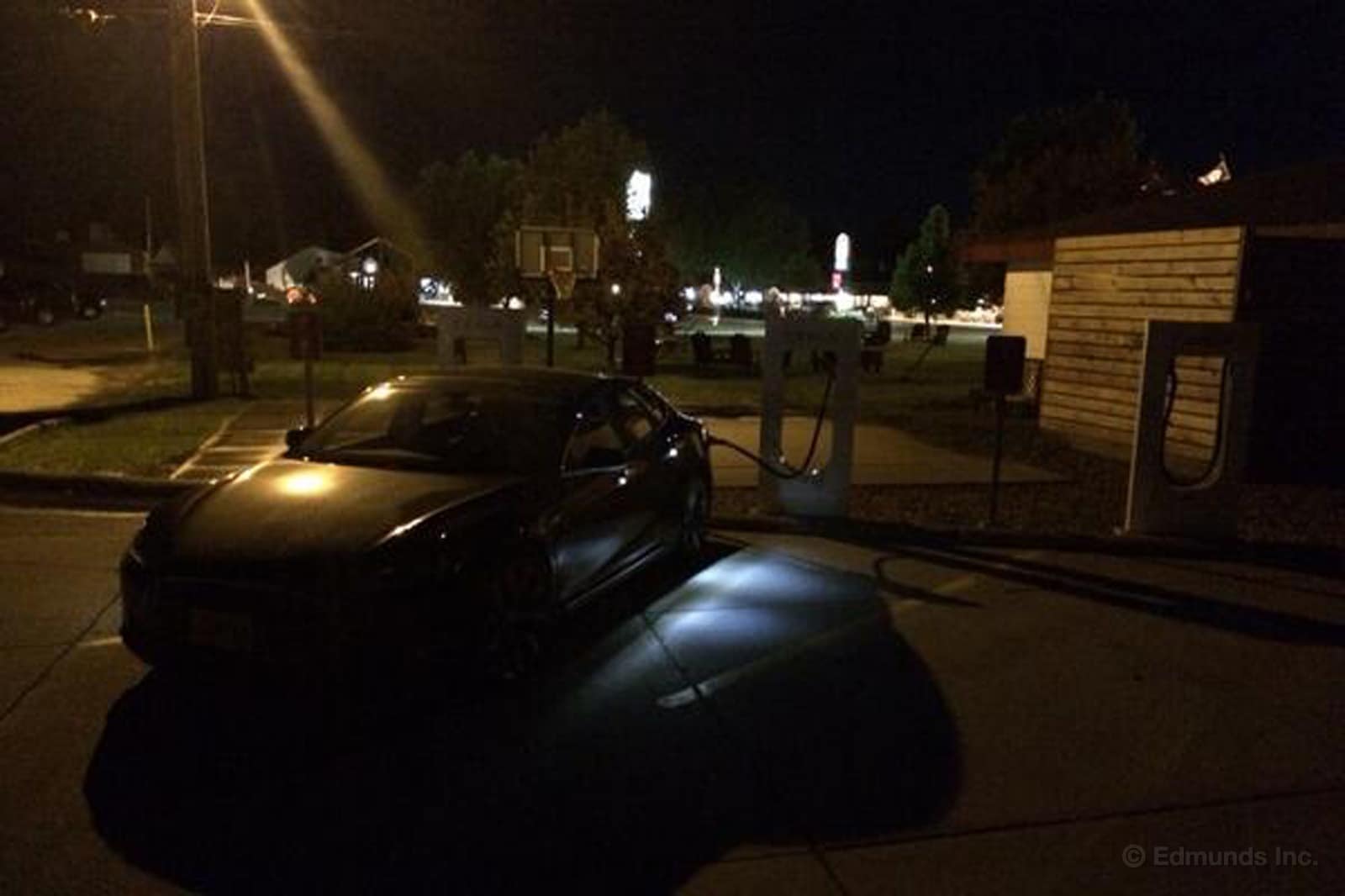
We crossed the Wyoming state line at the 24-hr mark of our coast-to-coast journey in the @edmunds Tesla Model S.
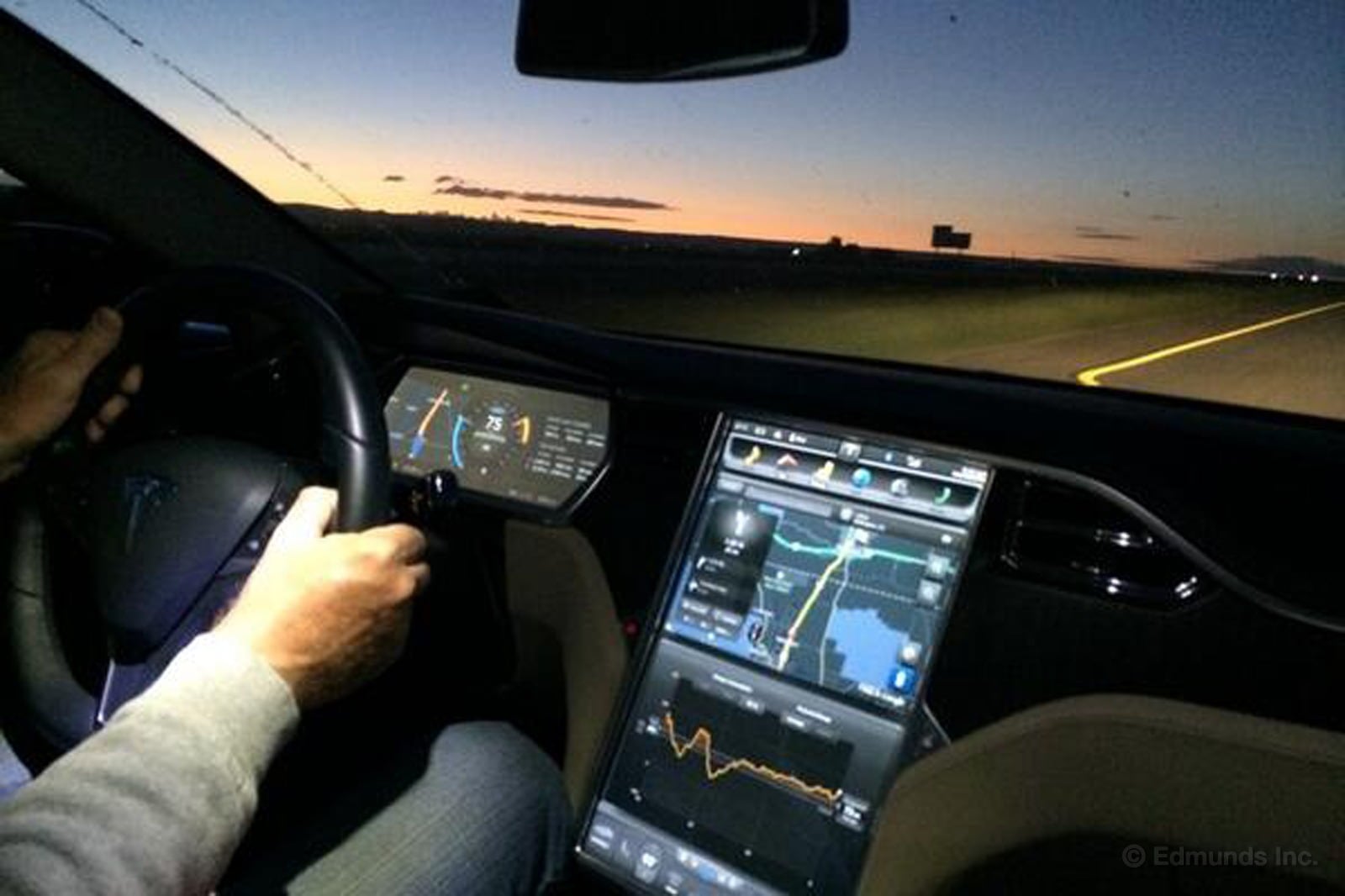
It's nearly 1:00 am in tiny Lusk, Wyoming. Nothing to do at this Supercharger at this hour. Rapid City SD is next.

In the pre-dawn light we have a clear view of Mt. Rushmore ... mall. #evxcountry
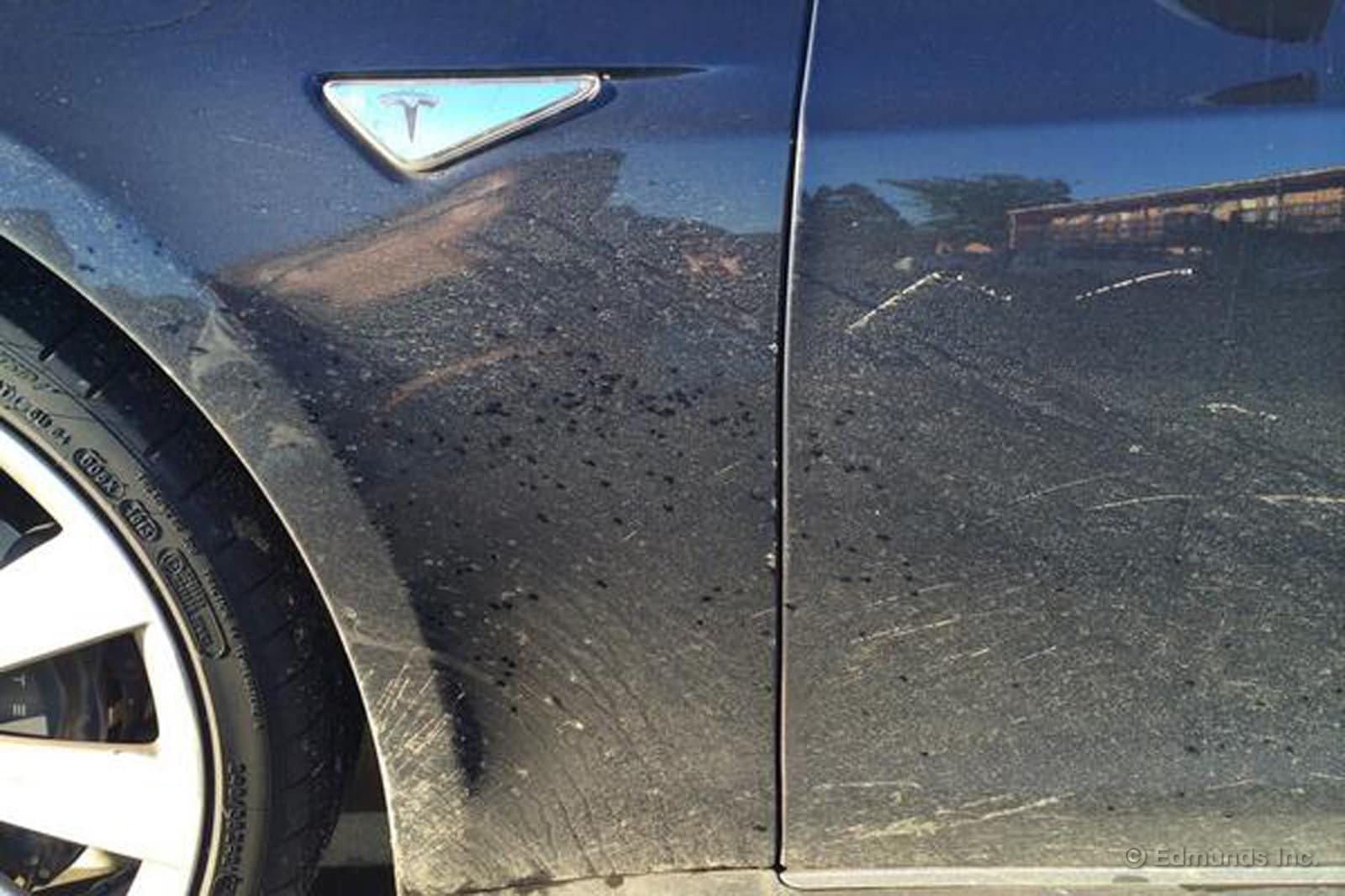
The @edmunds crew has wheeled their @TeslaMotors Model S to the Murdo, SD Supercharger.
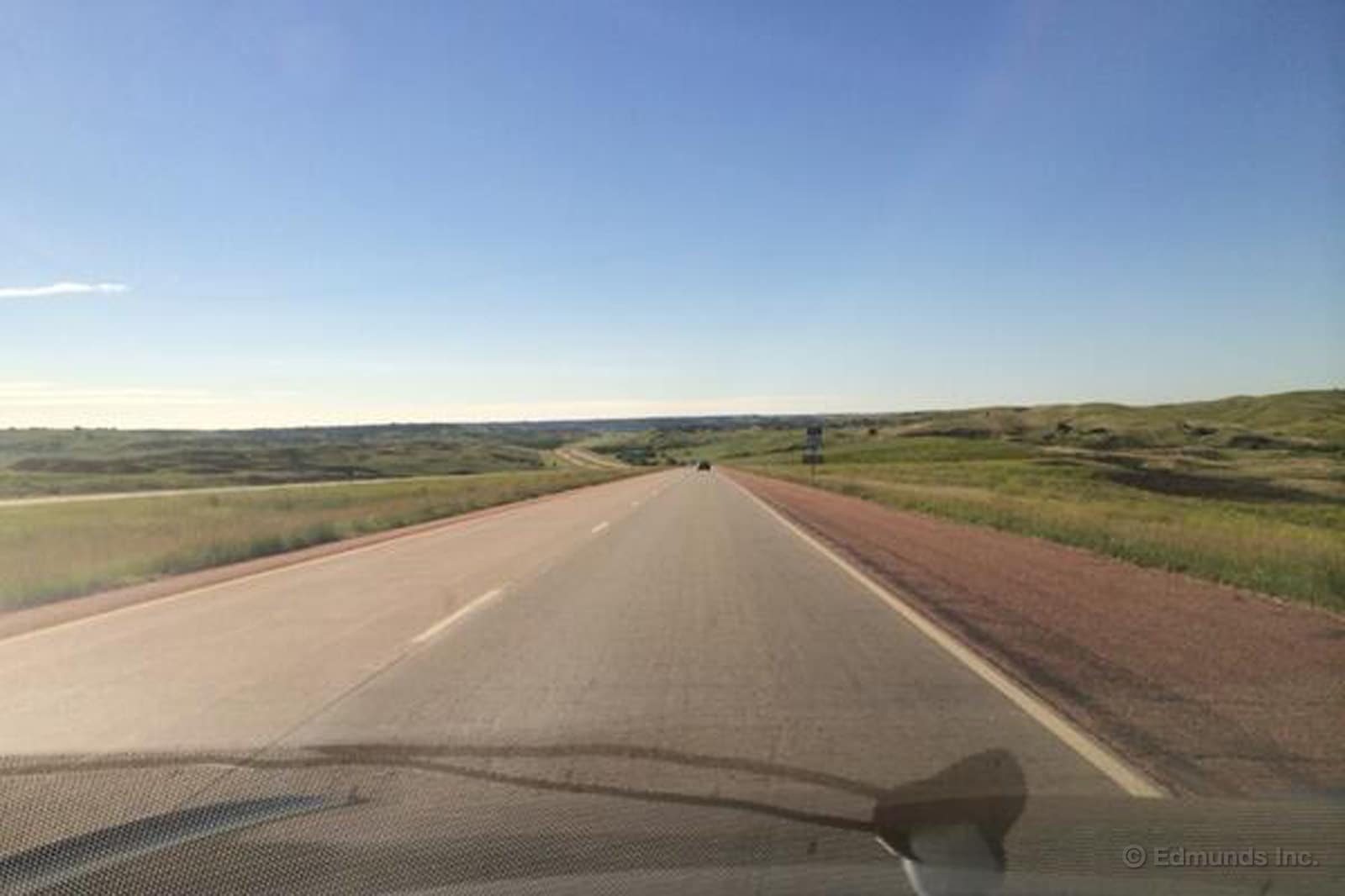
We passed the halfway point on the run to the Mitchell, SD @TeslaMotors supercharger. Happy Fathers Day!
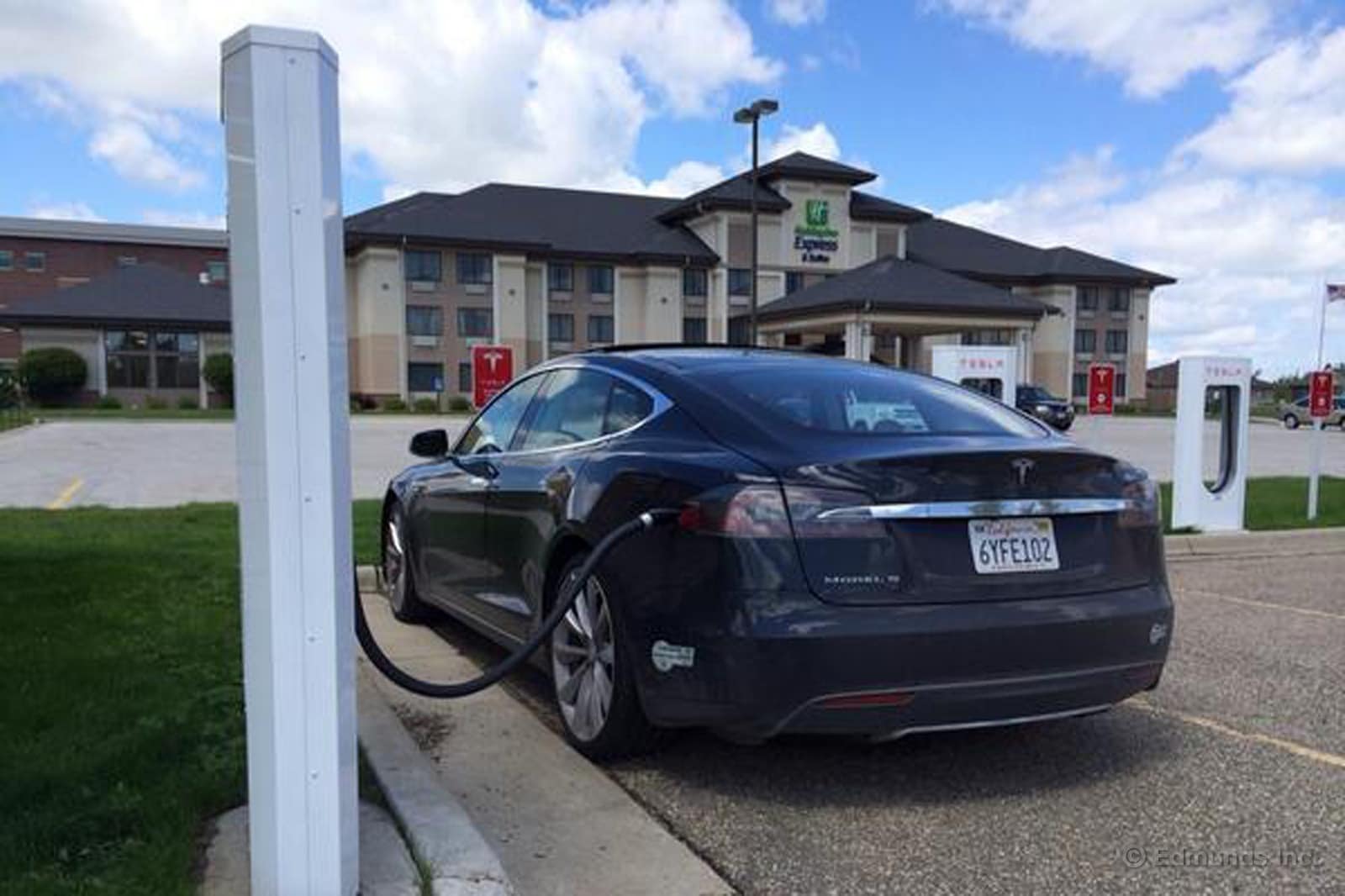
We might've felt smarter if we'd stayed at the Worthington, MN Holiday Inn Express, but we've got to move on. #tesla
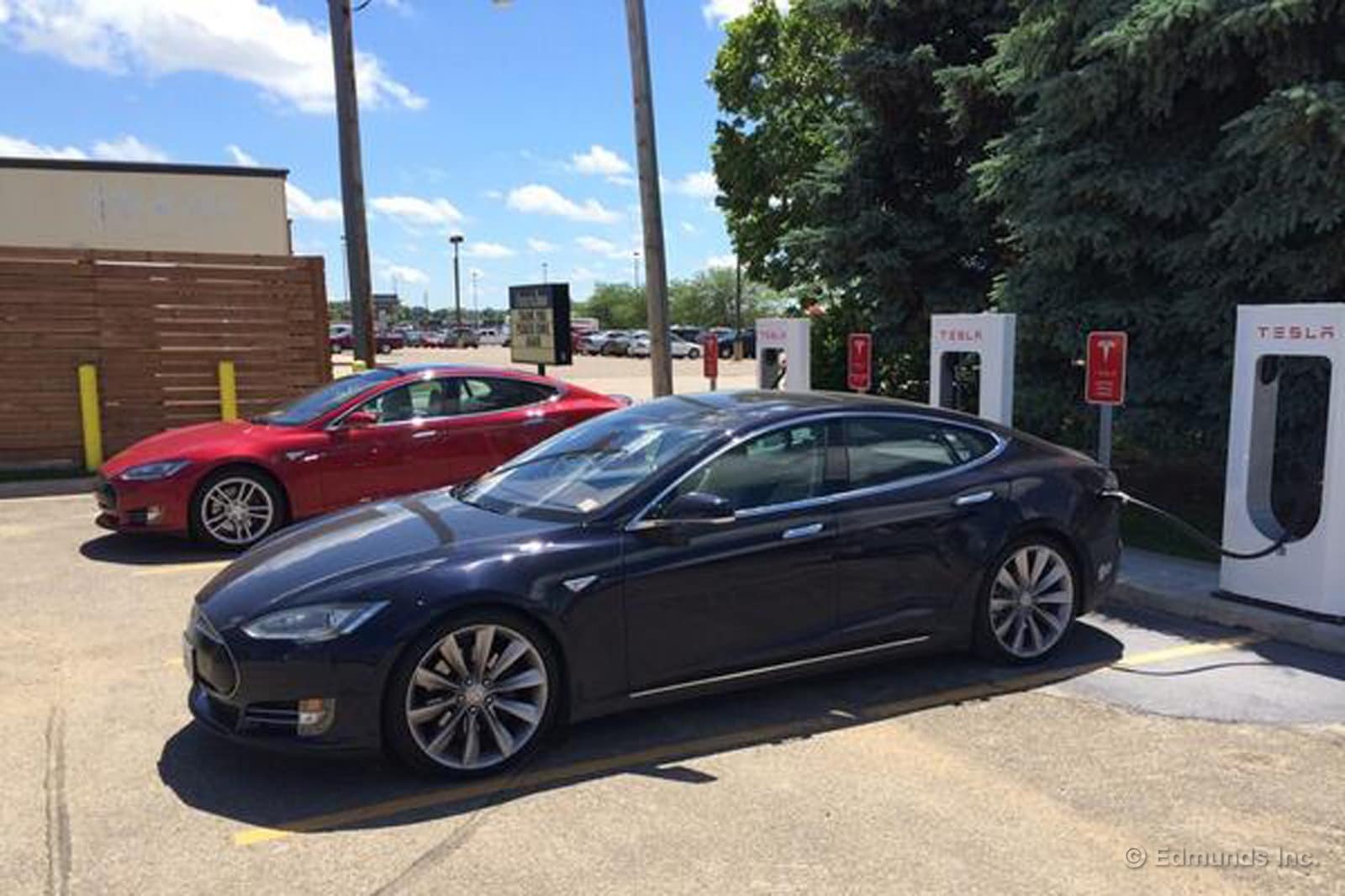
Our @TeslaMotors Model S road trip is on schedule. We left Albert Lea, MN a half-hour ago. Wisconsin is up next.
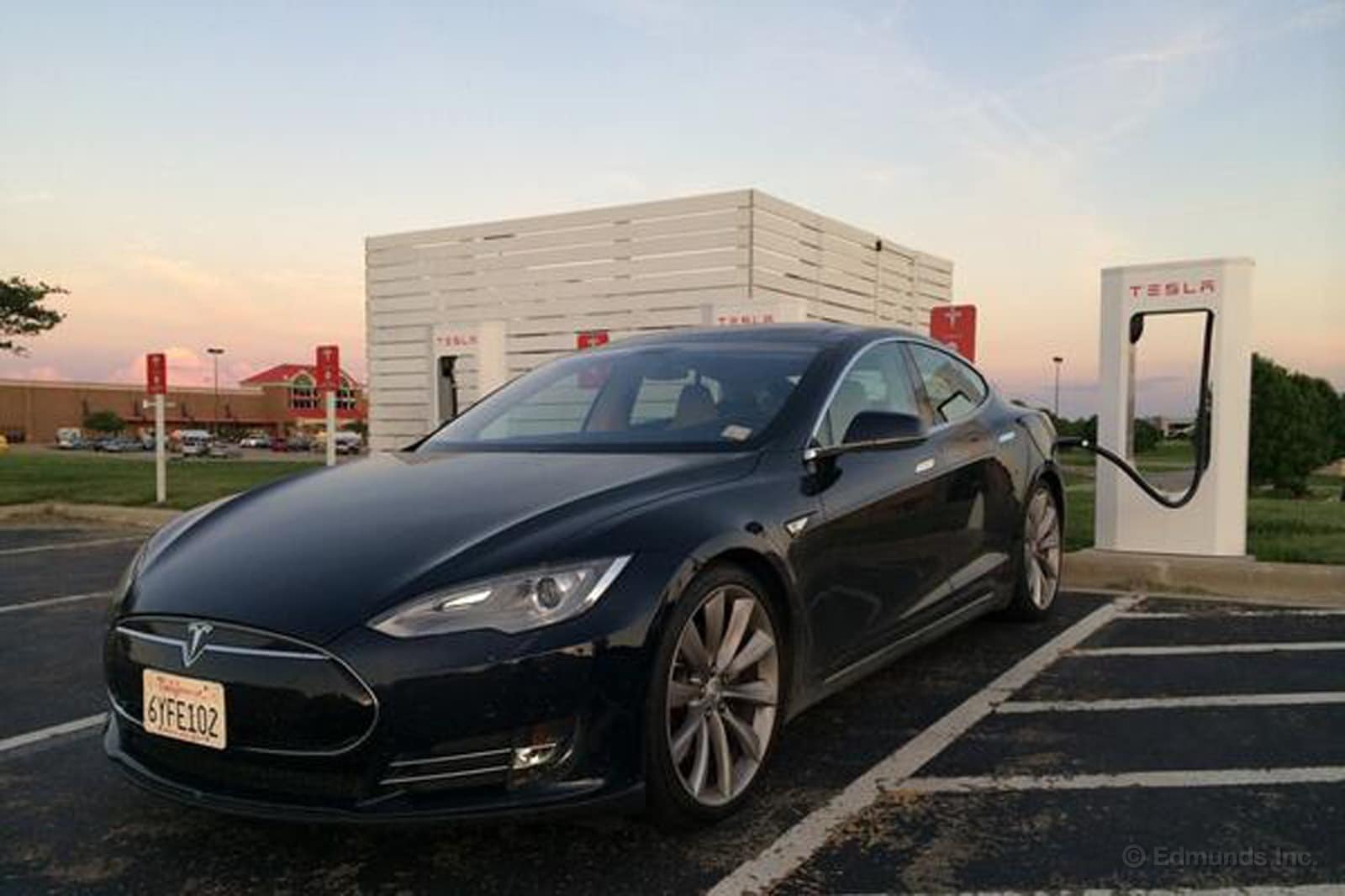
Eating dinner while our @TeslaMotors Model S charges in Rockford, IL. This long charge will take us to Indiana.
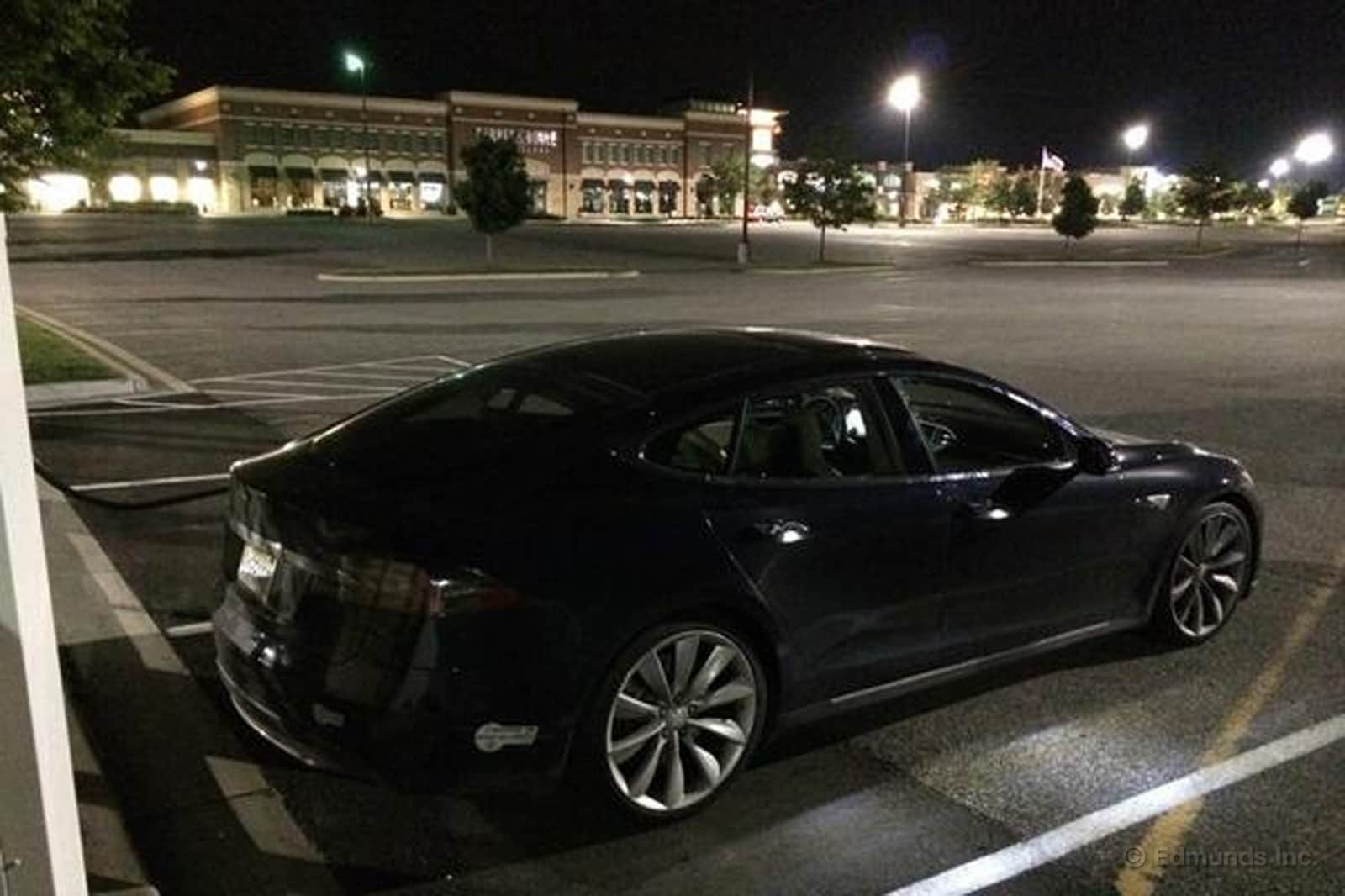
Mishawaka supercharger location is weak. Long ways from toll road exit, no food or restrooms after mall hours.
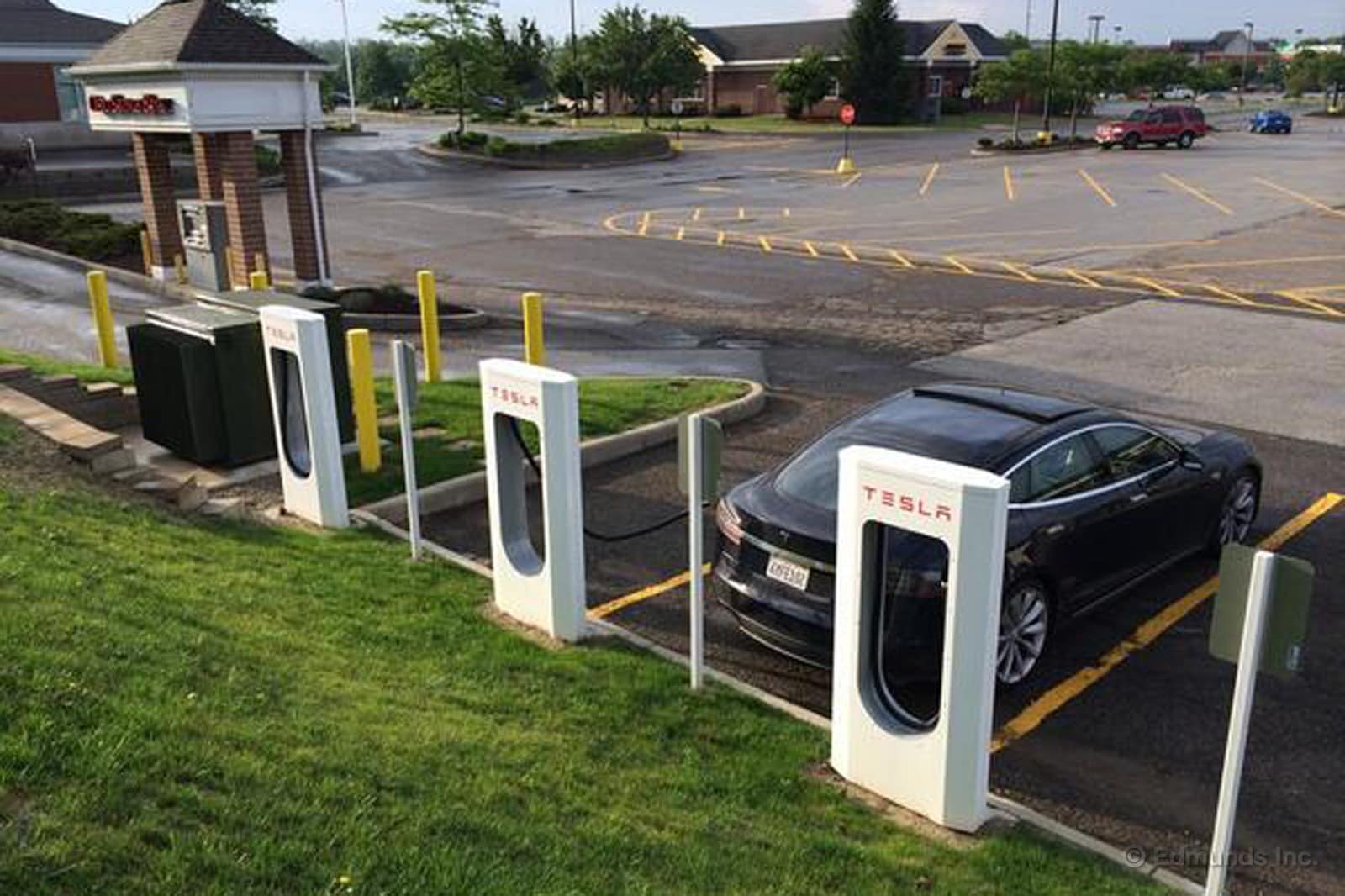
Sunrise in Macedonia, OH. Only three stops after this in our LA-NY crossing in the @edmunds @TeslaMotors Model S.
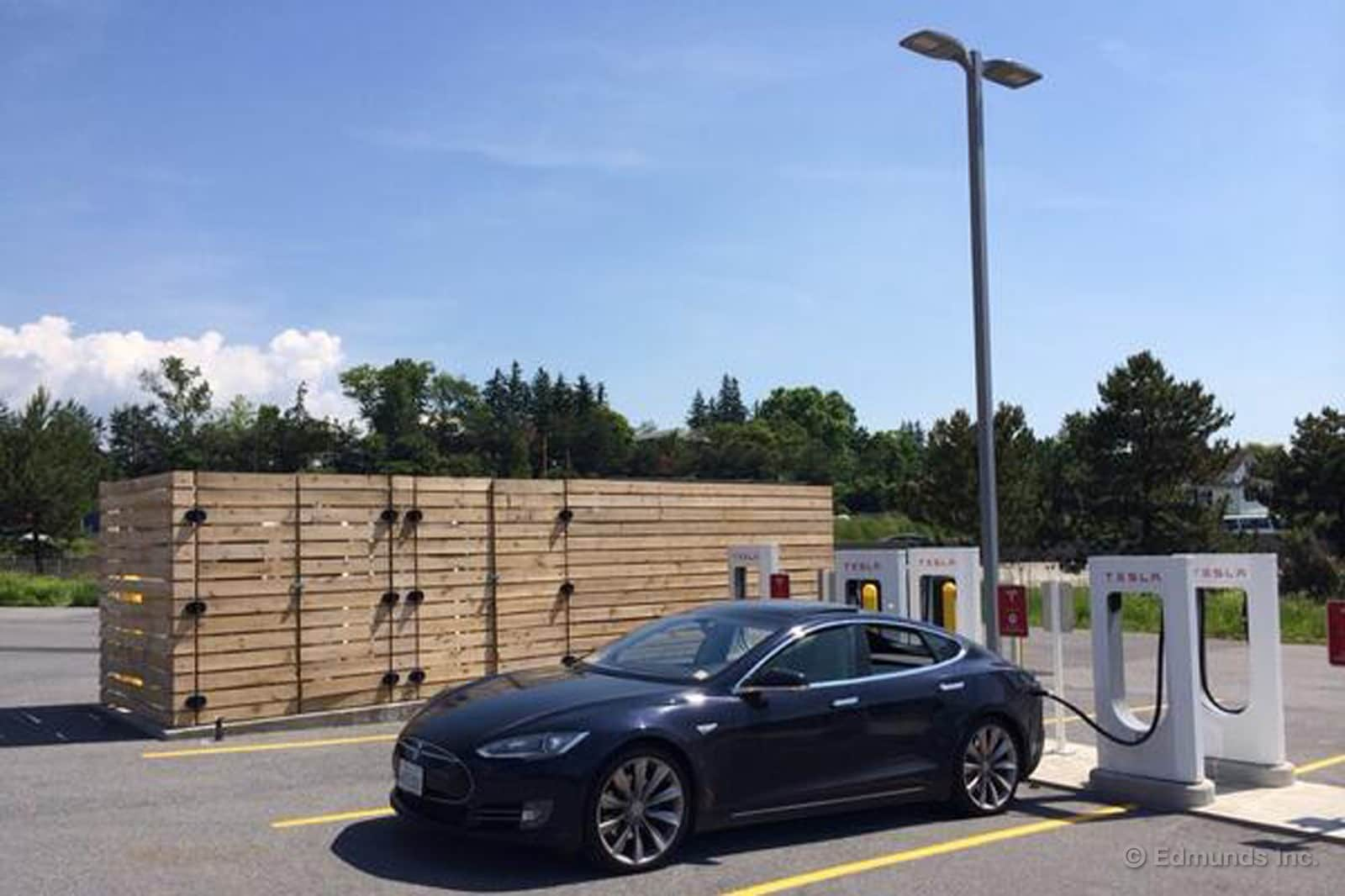
We're at the Somerset, PA supercharger. Only 373 miles remain until our @TeslaMotors Model S sees NYC.

We just plugged our @TeslaMotors Model S in for the last time at the Newark, DE travel plaza. Only 130 miles to NYC!
Stay tuned. More to come from our arrival in New York and the trip back to Los Angeles.
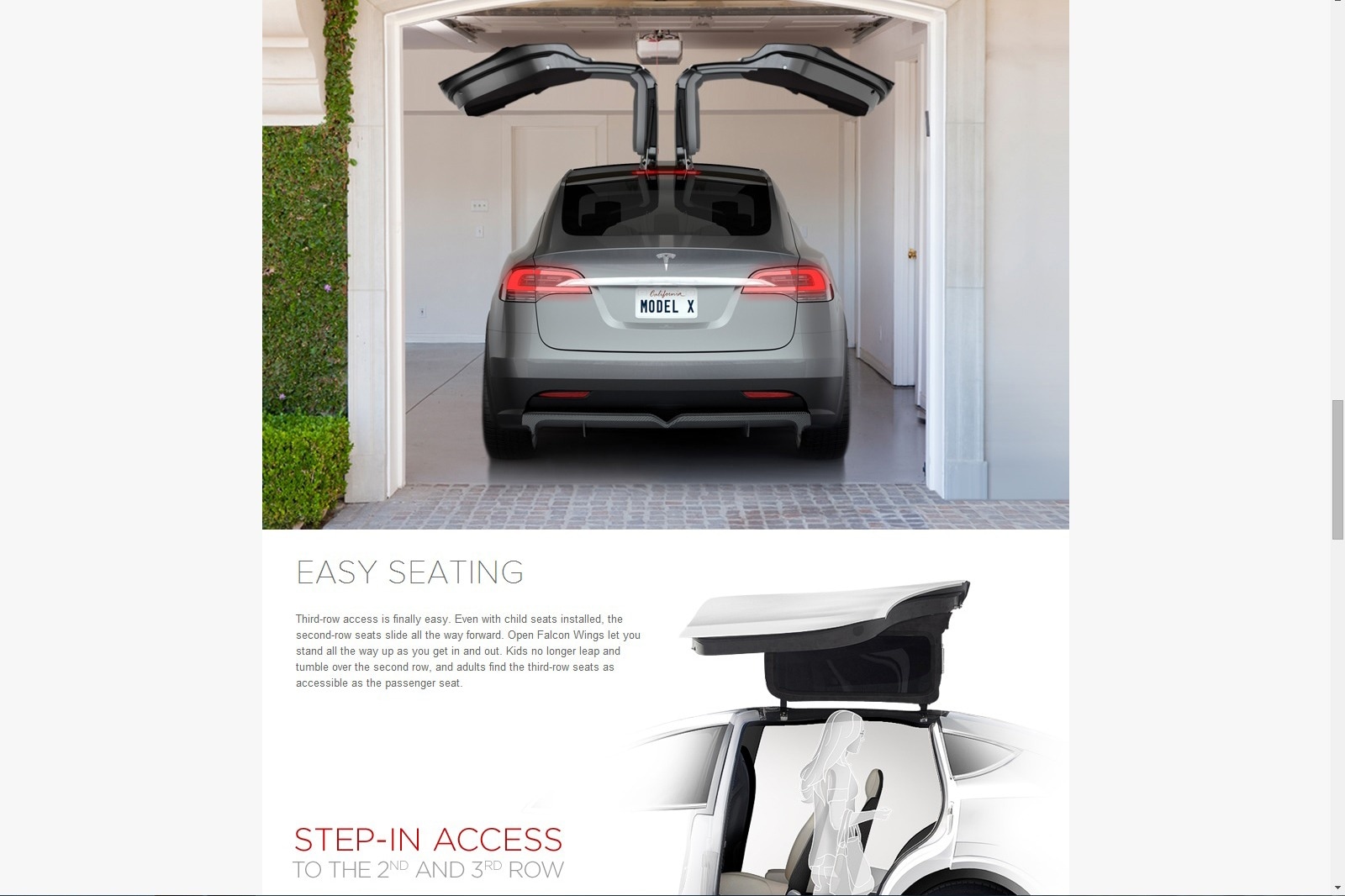
Back in January, we made a $40,000 deposit for a Tesla Model X Signature. We hadn't heard much from Tesla since then, even after it was quietly delayed into 2015. That changed when we received the following e-mail.
Dear Model X reservation holders,
Falcon wing doors, all-wheel drive, and the most stylish way to combine an SUV's utility with a sports car's performance. Model X will be a production car that exceeds the promises made when we first showed the concept.
In the fall, we'll start building Model X prototypes on a newly expanded and integrated production line at our factory in Fremont, CA. The first Model X cars for you, our reservation holders, will be produced starting in early 2015.
We're pleased to confirm that the falcon wing doors will be a defining feature of this exceptional car. Not only do these doors look amazing, but they also make getting in and out of the Model X so much easier than would a conventional front-hinged door. You can even do it standing up.
We'll also deliver a level of functionality and practicality that will exceed what you saw on the concept vehicle. We can confirm that all-wheel drive will come standard for Model X, and you'll have the option to add a third row of seats to carry more passengers. You'll also be able to fold down the second and third rows to create a flat platform for storage. When it comes to charging and long distance drives, Model X will be able to take full advantage of our rapidly growing Supercharger network.
These features combine to offer power, speed, and space — all packaged in an all-electric vehicle that looks and drives like it comes from the future.
We'll have more to say about Model X in the coming months, so stay tuned for updates. Thank you for your confidence in Tesla.
So the "falcon doors" are not just something fancy for the prototype. They will be the signature detail of our signature edition. Time will tell if these will be as practical in the real world.
What do you think of the falcon doors?
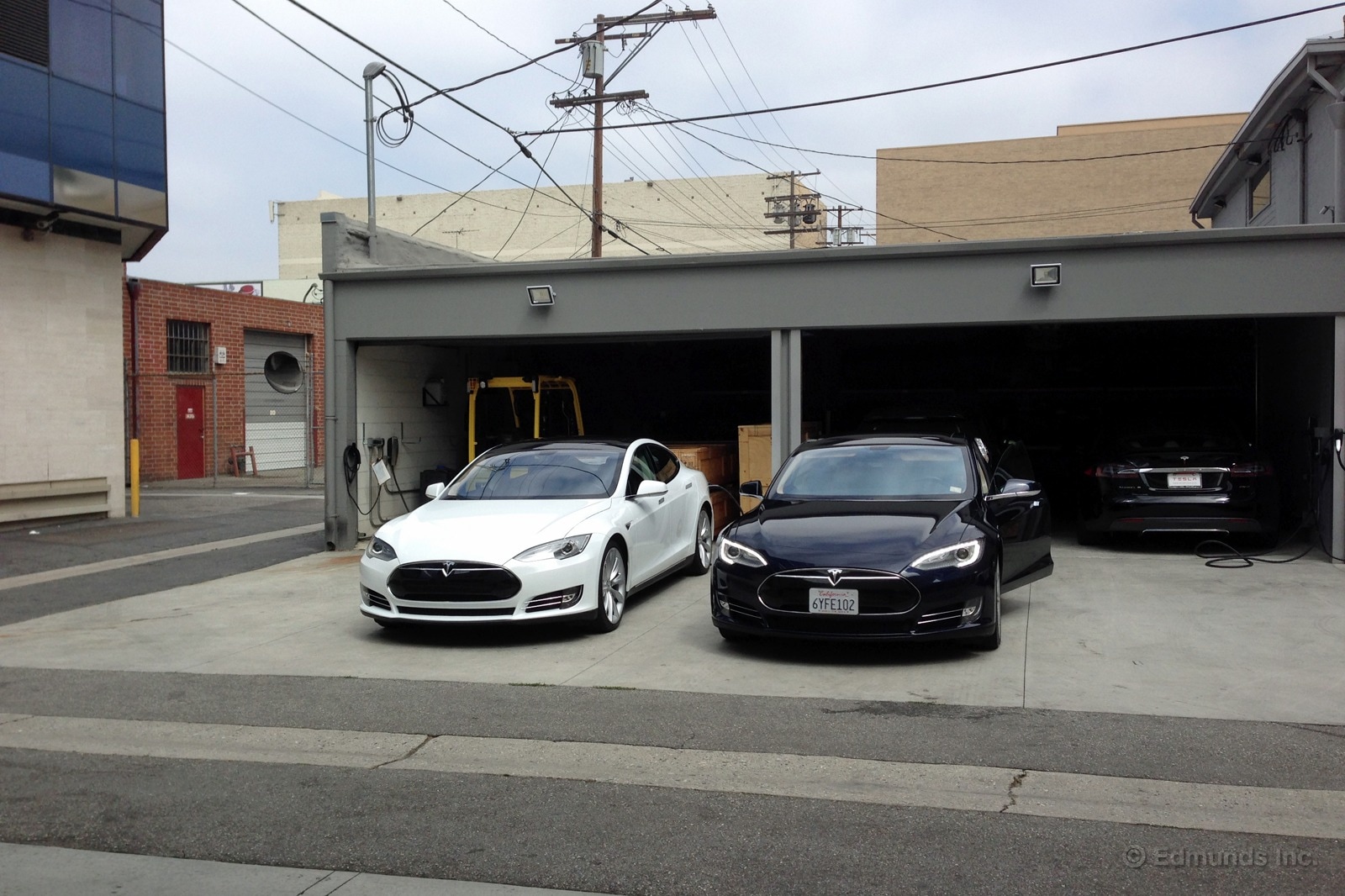
Just a few days after his epic, cross-country Supercharger-fueled road trip in our 2013 Tesla Model S, Dan Edmunds, director of vehicle testing, sent me the following text:
"It should go in for a post-trip check-up tomorrow, after I wash it. We started to hear a noise in the last 500 miles. And those new tires should be rotated too."
Dan and Kurt are preparing a full update on their trip for publication in a few days. They made it there in record time, breaking Tesla's own cross-country run by several hours. We let them sleep for a while when they got back but they are now working on photos and such.
Dan later told me about an error message he saw on the car's touchscreen: "Bluetooth not functioning correctly, needs service."
We were going to begin the process of selling the car, so it was important to have these things sorted out before listing it. I sent an email to my manager, letting her know this would take up most of my day and quipped, "It'll probably need a new touchscreen and drive unit."
Turns out, I wasn't too far off.
Dan had used the old steering-wheel-button reset trick to clear the Bluetooth error message. Our service advisor, Omar, watched as I paired my phone to the car. The error message didn't reappear. Don't you hate when that happens? Still, Omar said he'd have a technician look into it.
Next, I took a ride with the technician so I could point out the strange noise. I was worried that the car would have stage fright and not make the noise, but my concern was unwarranted. We only drove for a block and a half before the technician recognized the sound. "This noise is known internally as the 'milling sound,'" the technician said.
"What's the common fix for this?" I asked.
It'll probably need a new drive unit, he told me.
The next item on our list was a tire rotation. Tesla normally charges about $60 for this, but Omar said he'd have it taken care of at no charge. He also noticed that our Model S was due for a firmware update and would save us the trouble of updating it ourselves.
Finally, Omar noticed that we hadn't performed the annual service on our Model S. The service includes the following items: annual inspection, replacement parts (includes brake pads if needed and windshield wipers, but excludes tires), system monitoring, hardware upgrades and remote diagnostics. Omar also mentioned that it would include a tire alignment, new cabin filter and a filter for the AC compressor — all this for a cool $600.
We decided to pass on the annual service. The alignment had already been performed when we installed the new tires. System monitoring? We were just there in May when Tesla took care of a laundry list of items. Plus, they were already installing the firmware upgrade as part of the "Courtesy Inspection." Hardware upgrade? Any critical part should be (and was) covered under warranty. More on that later. So the only thing we were missing out on was the AC filters and the wiper blades, not worth $600.
Around midday, I received a call from Omar with an update on the repairs. "The technician sent a recording of the milling sound to our engineers and they gave us the OK to replace the drive unit." It was a unique way of diagnosing the issue.
All the work was set to be finished by the end of the day, but there was an issue with the new drive unit. It had a broken logic connector. This meant that Tesla would need yet another drive unit, which it got from another one of its shops across town. But that meant I wouldn't have the car back that day. Plus, the techs spotted a few other items that needed repairs. Here's how it broke down:
Noise or Vibration While Driving:
The technician found the milling sound coming from inside the drive unit. The solution was to install a new one. When the replacement unit came in, the logic connector was split. Another had to be ordered.
Pay Type: Warranty
Coolant System- Check and Fill:
We didn't ask for this one, so I'm guessing it was part of the process to install the drive unit. The technician performed an air purge in the cooling system.
Pay Type: Warranty
Ride Height Sensor:
The ride height sensor on the right rear of the car needed replacement. They installed the new part and said the car should be a bit quieter. I hadn't noticed, but I'm glad they caught it.
Pay Type: Warranty
Bluetooth Error:
Tesla ran a diagnostic on the system and paired an Apple and an Android phone. Everything checked out. Dan's hard reset must have taken care of this bug.
Pay Type: Goodwill
Tire Rotation:
This was included in the courtesy inspection. We even got a free alignment as a bonus. An alignment is required every time the drive unit is replaced, since the techs have to take off the car's rear subframe for the swap.
Pay Type: Goodwill
Firmware Update:
Also part of the courtesy inspection. We are now on Version 5.11 (1.59.56)
Pay Type: Goodwill
Side Motor Mount:
During the installation of the new drive unit, the technician noticed that the side motor mount had a small crack. Tesla installed a new side motor mount.
Pay Type: Warranty
Active Louver:
The active louvers on the Model S regulate airflow to the radiator. Tesla performed a thermal test and found that the center louver was faulty. The techs installed a new center louver.
Pay Type: Warranty
I picked up the car around 3:30 p.m. the following day. Tesla had offered to bring the car to us, but I planned on taking it home that night and the service center was on my way. Omar was still finishing up the paperwork and offered me a Starbucks coffee from next door. One tall Frappuccino later, the Tesla was back on the road, good as new.
Total Cost: $0
Days out of service: 1.5
Parting Thoughts:
When I wrote about the previous drive unit replacement, I posited that Tesla owners wouldn't be scared off by all the repairs, since they were early adopters who were essentially beta-testing the car. I compared the situation to the rash of faulty Xbox 360s years ago, which didn't deter me from the brand. I caught some heat in the comments.
I was called a Tesla apologist and my very title as "consumer advice editor" was called into question. Here's how I see things now:
Some of you have suggested we pursue a buy-back from Tesla, under a state Lemon Law. But there are a number of criteria that must be met for someone to have a valid lemon-law case, such as the repairs occurring within the first 18 months or 18,000 miles, the car being out of service for over 30 days or four or more repairs for the same issue. The California Department of Justice Web site says:
"The 'Lemon Law' presumption is a guide, not an absolute rule. A judge or arbitrator can assume that the manufacturer has had a reasonable number of chances to repair the vehicle if all of the conditions are met. The manufacturer, however, has the right to try to prove that it should have the chance to attempt additional repairs, and the consumer has the right to show that fewer repair attempts are reasonable under the circumstances."
The car has 30,000 miles on it. It hasn't been out of service for 30 days. And to Tesla's credit, they've taken care of every repair and then some. I'm no lawyer, but this doesn't strike me as an open-and-shut lemon law case.
Driving around the past few days with this car has reminded me of how good it is. People often ask me what I think of it, and I tell them this is an awesome car, with a huge caveat: Be prepared for things to go wrong. The Model S is a highly advanced car from a company that is just learning the ups and downs of manufacturing vehicles on a large scale.
I usually recommend that people lease an EV, rather than buy one. EVs are like smartphones: The technology moves so fast that three years from now, something vastly better will be out. Plus, it avoids any resale and long-term maintenance issues. But leasing is not an option for the Model S (unless you own a business), so if you're set on buying one, or already have one and plan on keeping it for a while, I would HIGHLY recommend that you buy the extended service plan for $4,000.
Here's why: Tesla does not have a powertrain warranty like ever other carmaker. The drive units are covered under the new-car limited warranty of four years or 50,000 miles. Only Tesla knows what these drive units cost on a retail level, or the hours of labor you'd need to pay for a repair out of your own pocket.
The battery has an amazing eight year or 125,000-mile warranty. And though we've replaced our battery once, experience has shown that it's the drive unit you should really be worried about.
As for my Xbox analogy: It was a theory. Sometimes theories are right, sometimes they're wrong. But putting it out there generates discussion and everyone is welcome to agree or disagree. I don't think that makes me a Tesla apologist.
I bet many early Tesla owners felt like they were on the ground floor of a car company that defied the odds. Some have had a smooth ride, while others may have had a ton of issues, like us. This happens with any car company. Some will choose to stick with the brand and others will swear it off forever.
I'm not giving Tesla a free pass, here. The company needs to get these quality issues under control, and more importantly, Tesla needs to have a powertrain warranty like everyone else. I will give Tesla credit for taking care of every repair in a fast and efficient manner. Many non-Tesla dealerships aren't as willing to take on warranty work and be as proactive in fixing things we didn't go in for.
How you view Tesla and the Model S in the future will all depend on your level of investment in the brand. If you're a true believer, these repair setbacks won't alter your course. But if you're someone who wanted a stylish EV to replace a luxury sedan, this may be more maintenance than you care to deal with. Both are valid conclusions in my mind. But if Tesla someday wants to win over the mainstream with an "affordable" EV, these cars must have a bulletproof reputation.
Feel free to agree or disagree with me in the comments.
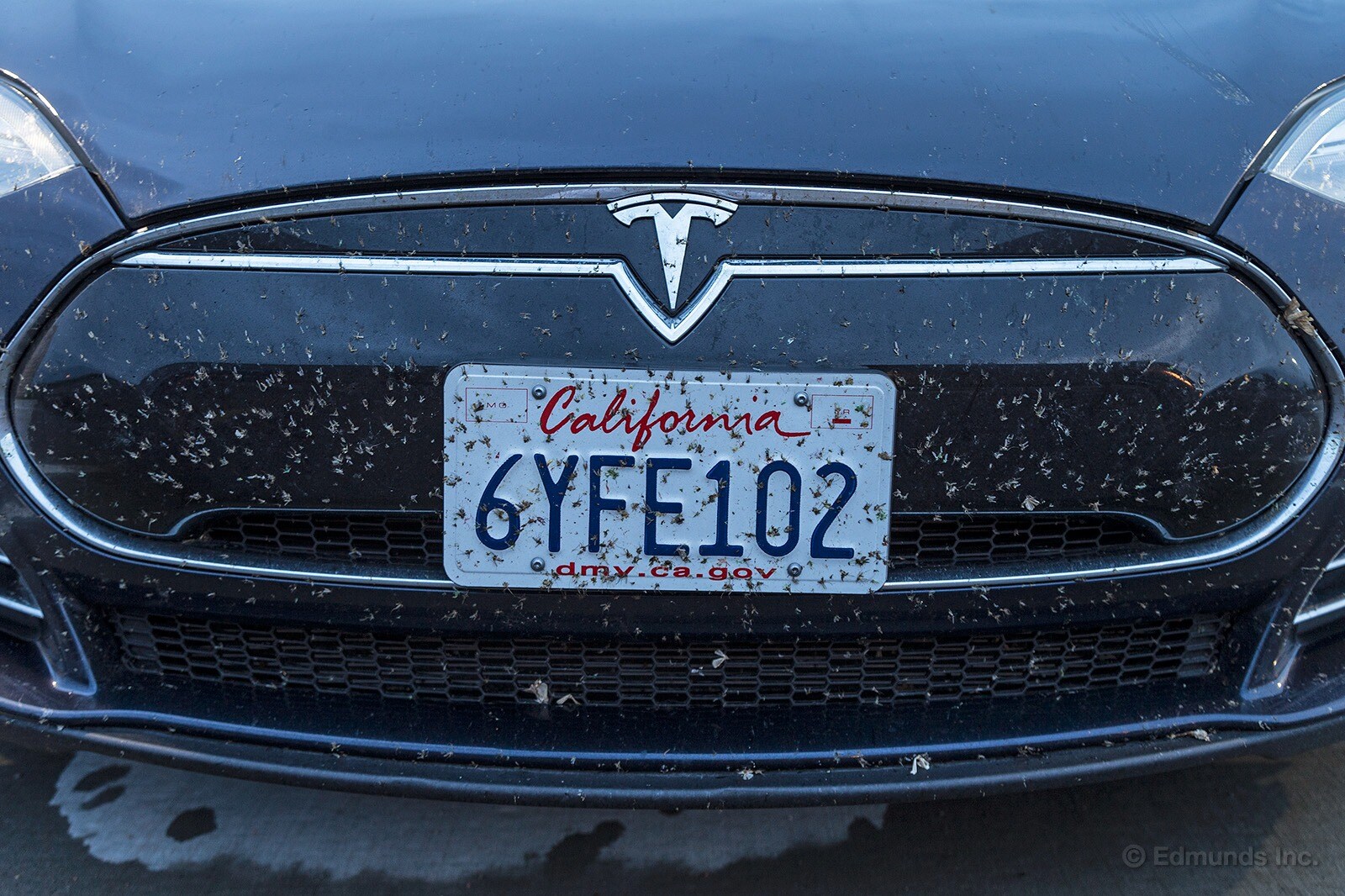
You got the first half of the story from Dan and Kurt.
Here's the rest of the cross country run in our long-term 2013 Tesla Model S:
2013 Tesla Model S Coast-to-Coast Road Trip
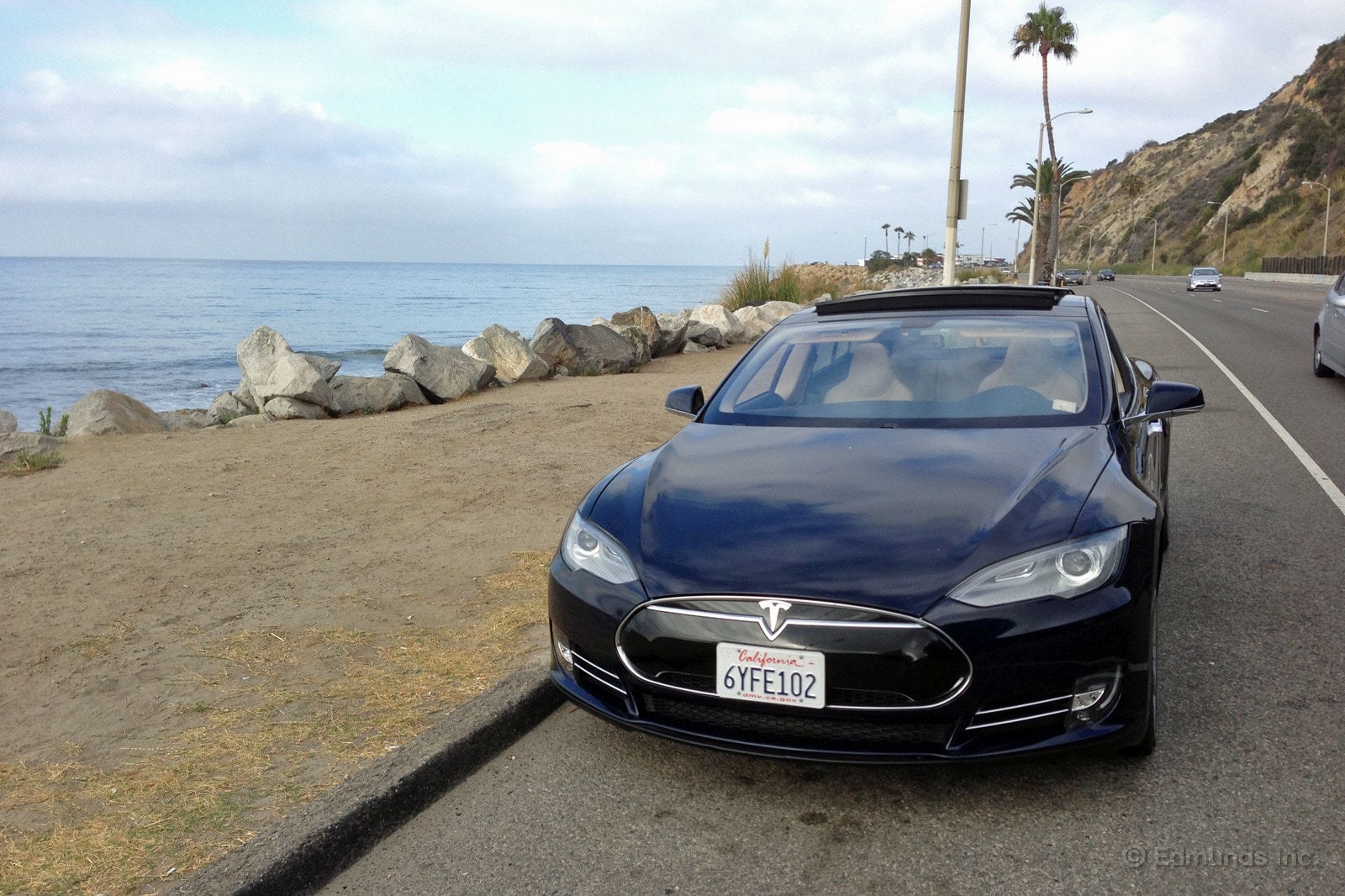
This may come as a disappointment to some, but we've sold our long-term 2013 Tesla Model S. A number of readers wanted us to keep the car for reasons ranging from "I want to see what else happens" to "the Model S is the only car worth reading about on this blog."
There was never a dull moment with our Model S, and while it wasn't my decision to sell it, I can understand why it had to go. First, we've already learned the lessons from this car. It is an impressive technological achievement, but Tesla needs to iron out its quality problems.
Second, we've already set our sights on buying two other vehicles: a 2015 Ford Mustang and a 2015 Ford F-150. Selling the Model S will make it possible for us to add two cars to the fleet and provide twice the content for our readers.
And third, we received not one but two offers for the Tesla and that was too good to pass up. Here's how it happened.
Sometime before Dan Edmunds, director of vehicle testing, went on his cross country road trip, I received an e-mail from a reader in Texas. He had seen the CarMax post and offered us $82,500 to buy our Model S. It was a solid offer, but I wasn't ready to sell yet. A couple weeks passed, and I took the car in for the milling sound I discussed in another post.
During that time, Edmunds Automotive Editor Mark Takahashi told us that Allan, a relative of his, was also interested in the Model S. Allan and his wife were already EV converts, having owned a Nissan Leaf. They didn't want to pay full price for a new Model S, or have to wait months for one to be built. He was fully aware of our car's repair history and was still interested. After all, the car's been sorted out and is still under warranty. That said, I recommended he purchase an extended warranty, just in case.
We told Allan that we already had an offer for $82,500, but we'd sell it to him for $83,000. He was OK with that. The Texas buyer, meanwhile, wasn't willing to counter Allan's offer, citing the added miles on the car and the recent drive unit replacement. Let me be clear: He was still interested in buying it, just not willing to go over his initial offer.
And so the Model S went to Allan and his wife for $83,000. The price was a $4,000 improvement over CarMax's offer of $79,000. Also keep in mind that CarMax made that offer before we added 7,778 miles to the car. You have to imagine CarMax's reappraisal would probably be about $1,000 less than the initial one.
There are two ways of looking at the depreciation on this car. If you factor in the cost of a High Powered Wall Connector ($1,200 plus $35 for shipping), we paid $105,005 for the Model S brand new. In that case, the used sale price of $83,000 represents 21-percent depreciation.
If you deduct the price of the HPWC — and, after all, we're keeping ours and we can imagine a Tesla owner doing the same — the retail price of our Model S would have been $103,770. Depreciation in that case would drop slightly, to 20 percent.
This car is a year-and-a-half old and has 30,000 miles on it, so in either case the car has impressive resale value. For reference, our fleet average is about 22-percent depreciation after one year. Maybe Tesla was onto something when it promised to have the highest resale value of the luxury brands.
I'm going to miss our Model S. It wasn't perfect, but it was like nothing else out there. Take heart, Tesla fans: Sometime in early 2015, we will be one of the first to buy a Model X.
Final Odometer: 30,251 miles

My friend Russell is a software engineer who lives near Seattle, Washington. He's also a serious gearhead. When he sold his 2009 Nissan GT-R a few months ago, he knew exactly what he was going to replace it with: a Tesla Model S.
He ordered his Model S just a few weeks after the announcement of the dual-motor setup and he took delivery of the P85D 24 hours before I showed up on his doorstep. I was on a road trip to Portland but visiting him near Seattle was no problem, especially when he offered to take me for a drive.
I was eager to check out all the updates I had missed since Edmunds sold its long-term Tesla Model S nearly six months ago. The P85D gets a second electric motor in the front of the car, all-wheel drive and some added safety equipment. This is perfect for someone like Russell who lives in an area with so much rain and snow.
For options, there wasn't much he left on the shelf. He got his P85D with the carbon-fiber spoiler, red brake calipers, Smart Air Suspension, panoramic sunroof, the Tech Package (LED corner lights, foglights, power liftgate, auto-dimming rumors, power-folding headed side mirrors, and eventually, "Autopilot"), the Premium Interior package, rear jump-seats, the Subzero Weather package (heated washer nozzles, wiper blade defrosters, front and rear heated seats, heated steering wheel), a wall connector for home charging and a second set of wheels and tires for summer driving.
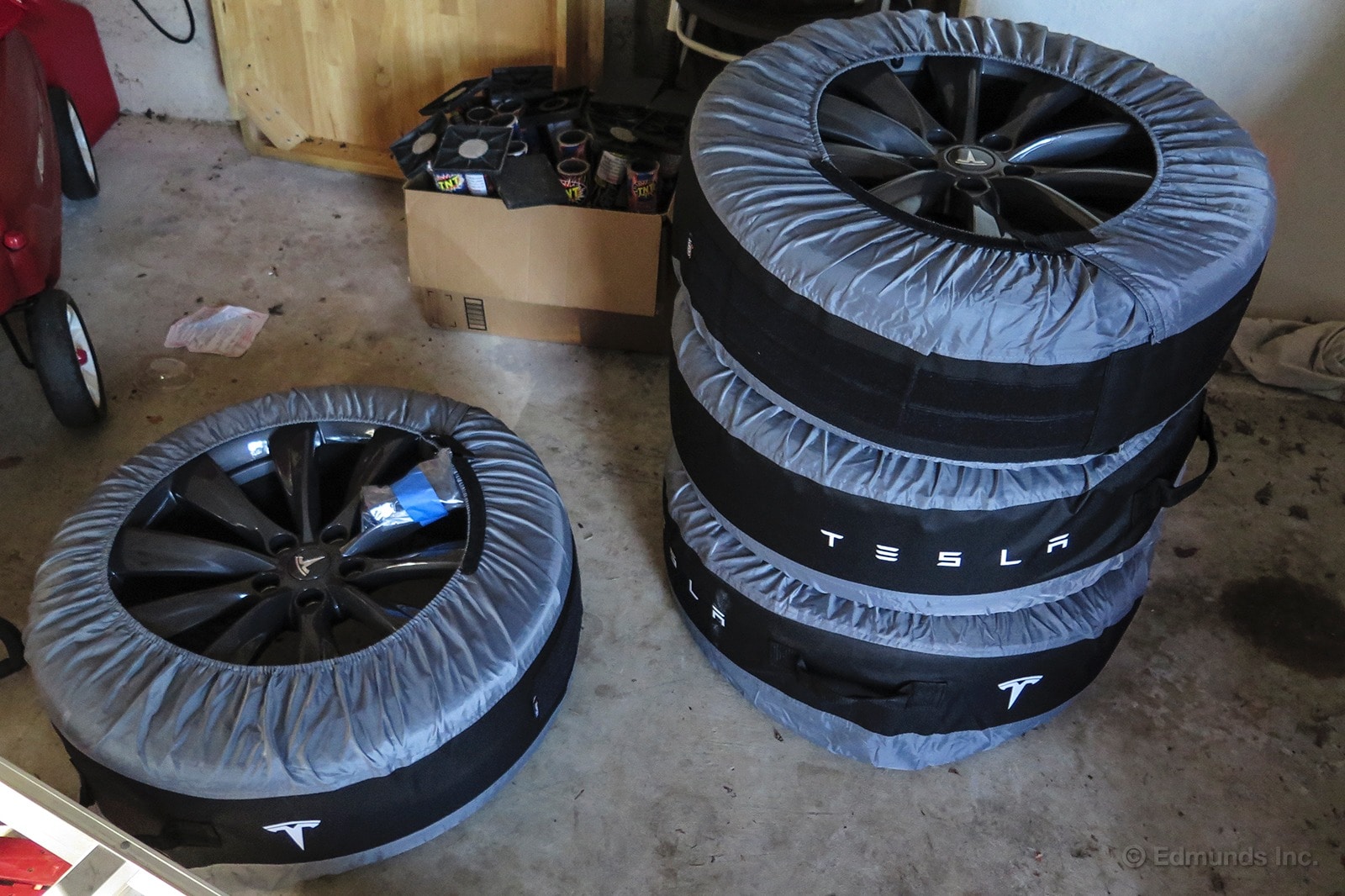
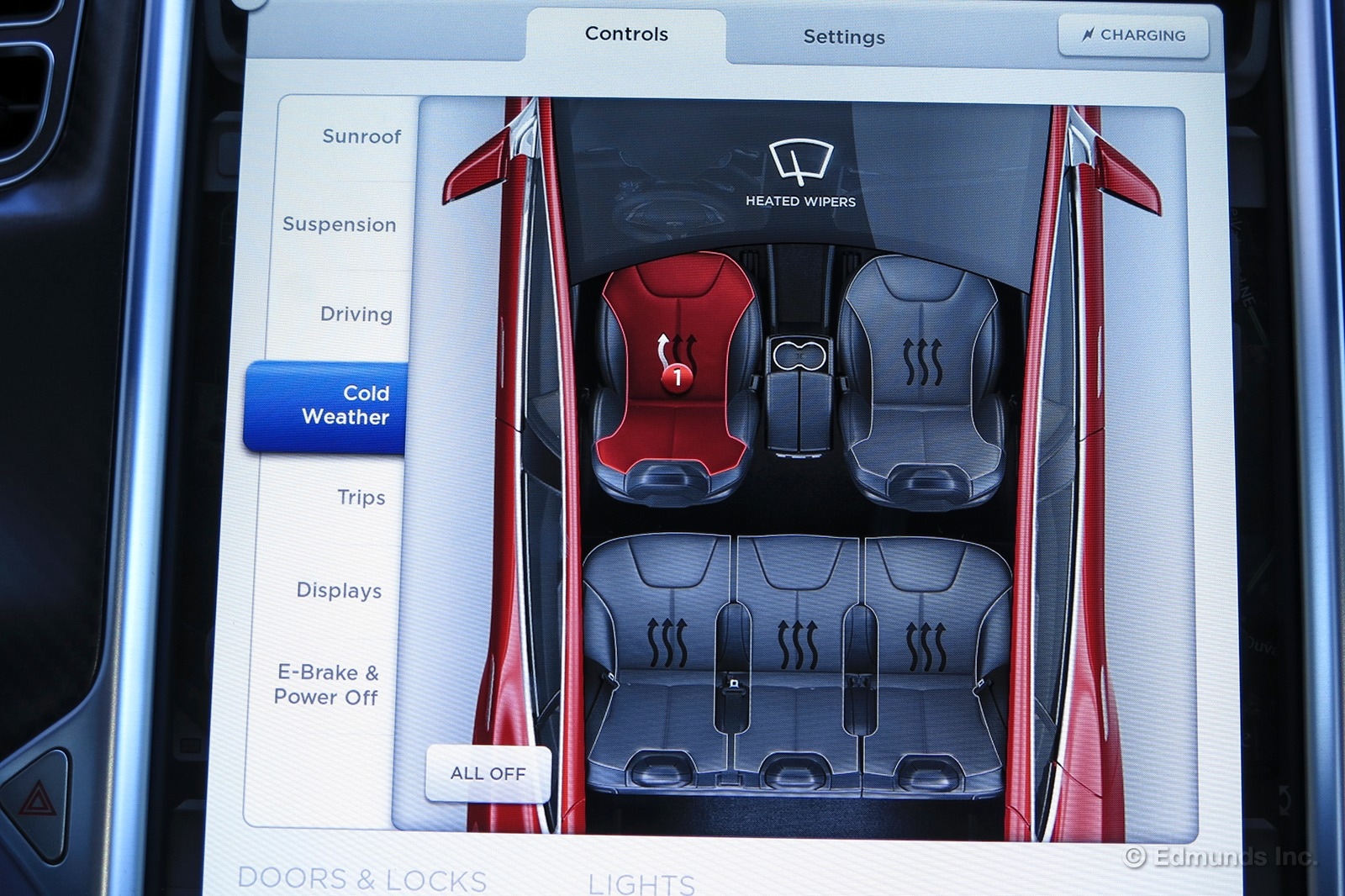
He left out the Ultra High Fidelity sound system in lieu of an even-more-powerful aftermarket system he plans on adding himself. After Russell gave me the run-down of all the options, we were ready to go for a drive. The "Insane" acceleration mode is just as its name suggests. Much like our old long-termer, 0-60 acceleration feels like being shot out of a canon thanks to the massive amount of immediately available torque. When we track-tested our old 414-hp long-termer, it went from zero to 60 mph in just 4.4 seconds. The P85D gets 691 hp, and Tesla estimates that will get it from zero to 60 in just 3.2 seconds. Not only is that 1.2 seconds quicker than our old P85, but also 0.7 seconds quicker than the 2009 GT-R Russell was getting out of.
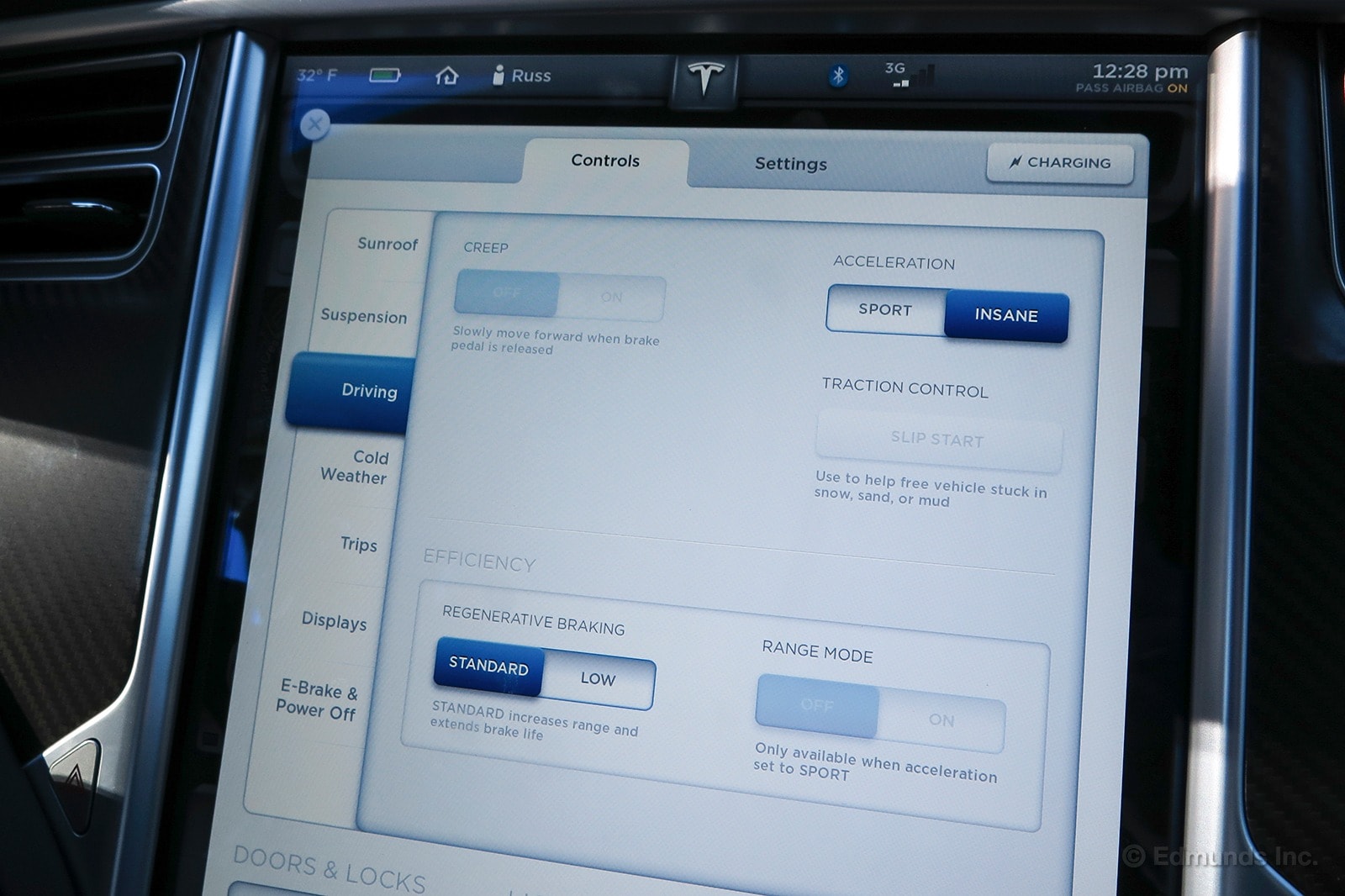
The cargo area has decreased in size slightly with the addition of a motor up front, but that's about the only physical change I noticed in the Model S. Everything else looks pretty similar, and to my eye, still fantastic. Our single-motor P85's frunk:
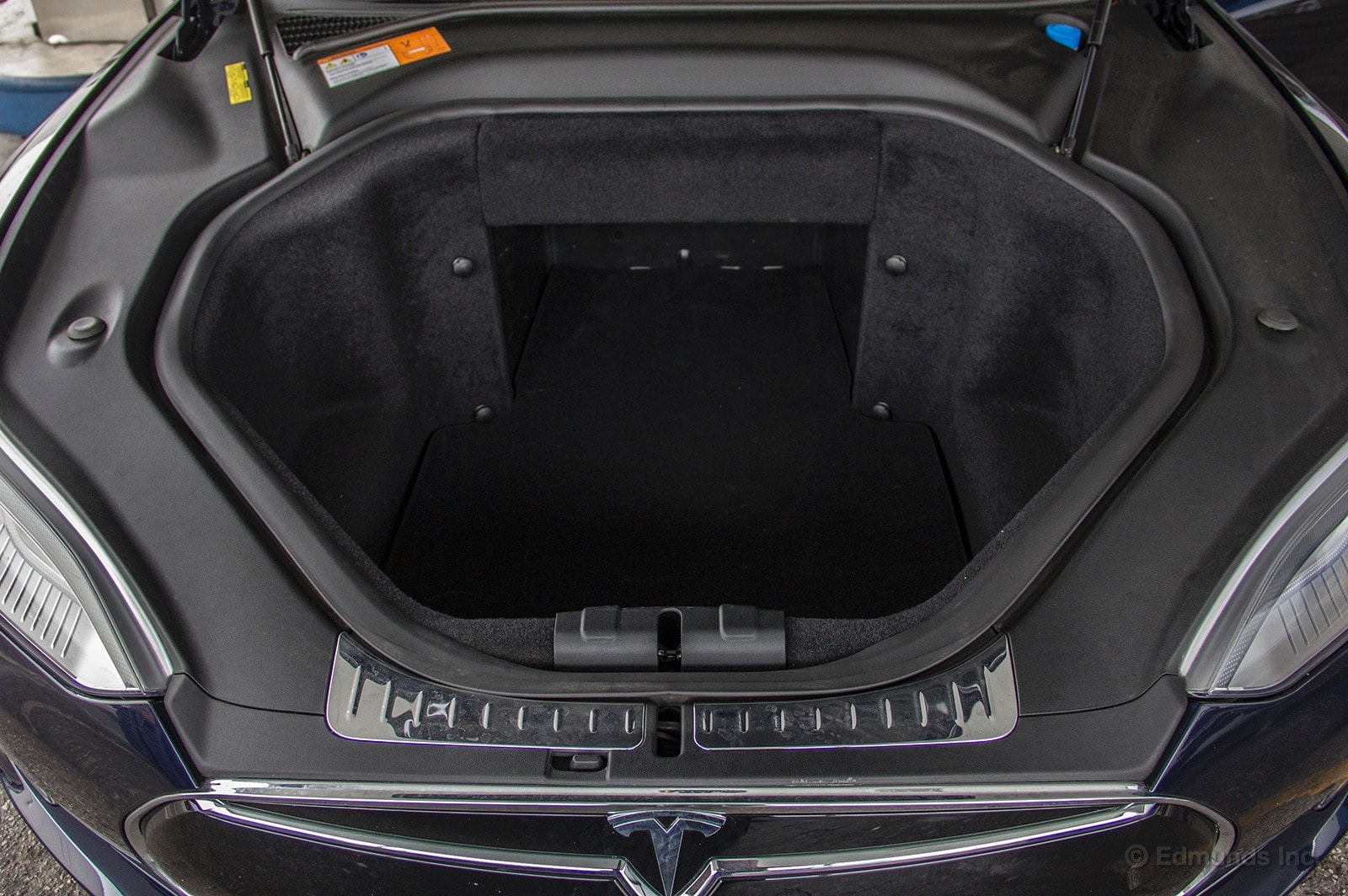
The P85D's frunk:
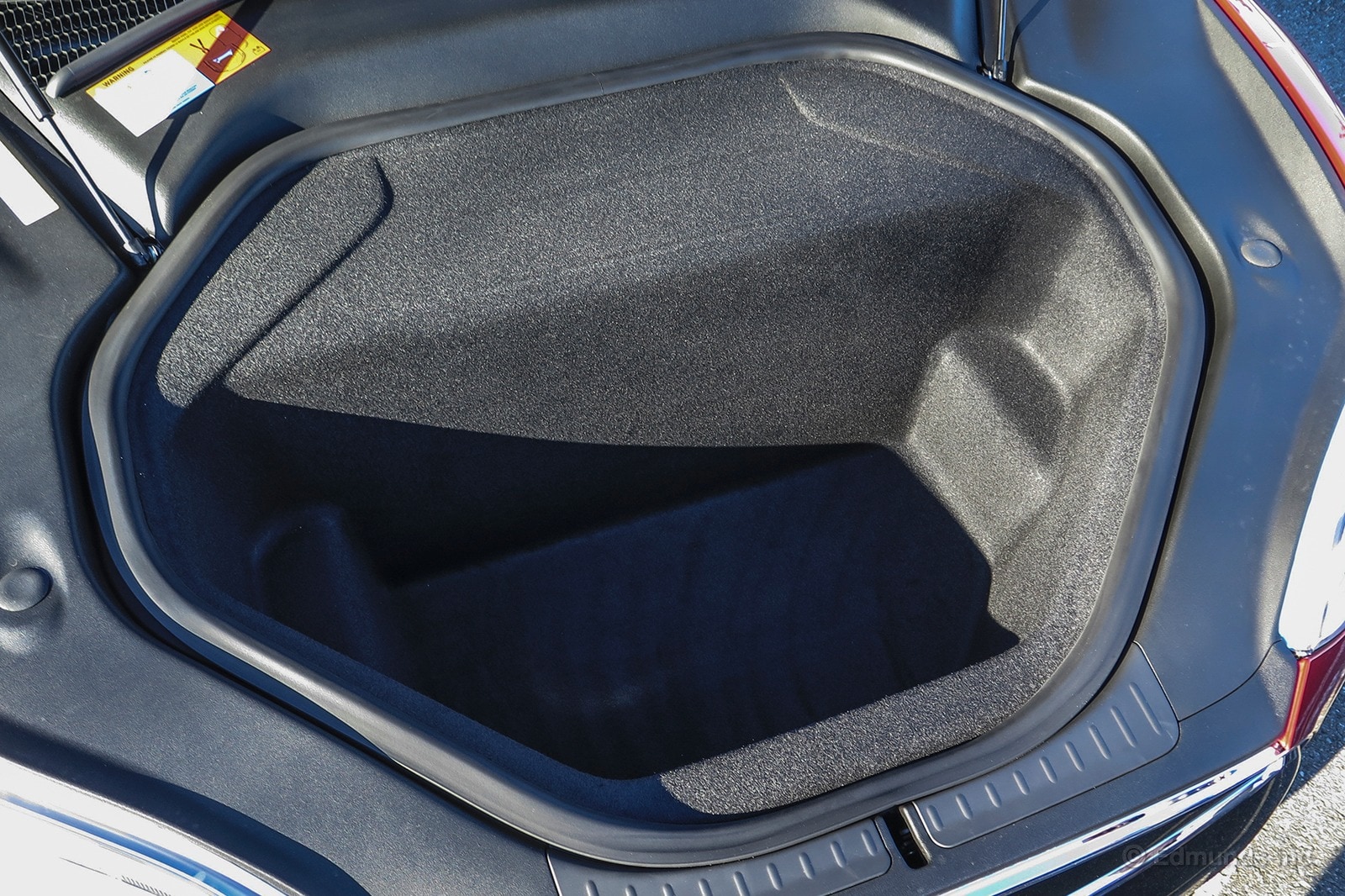
In the clamor of weekday traffic, we couldn't really explore the P85D's handling limits. Even without that chance, though, I was still impressed by the P85D's acceleration, and I'm looking forward to bugging Russell for another ride in the future.
I asked Russell how long he plans on keeping his Model S. "At least a decade, unless they release something crazy," he said. I'll make sure to hound him for reliability updates as often as possible, too.
Wrap-Up
What We Got
When it finally came time to order our 2013 Tesla Model S we had two trim levels to decide between: Base and Performance. The base version started at $59,900 and included 19-inch wheels, keyless entry, dual-zone climate control and cloth seats. More importantly, it was powered by the standard 40 kWh battery pack rated at 235 horsepower and 310 pound-feet of torque and had a range of roughly 100 miles on electricity. This wasn't going to be enough power for our daily driving habits.
Instead, we opted for the Performance trim. With that we got the 85 kWh battery, which boosted output to 416 hp and 443 lb-ft of torque. It also extended the electric range closer to 265 miles. Adjustable air suspension, traction control and Nappa leather were also part of the $93,750 starting price. Optional equipment was plentiful. We added blue metallic paint ($750), a panoramic sunroof ($1,500), Dolby Pro Logic stereo ($950), rear-facing jump seats ($1,500), a rear parcel shelf ($250), twin chargers ($1,500) to utilize the high-power wall connector ($1,200 plus $35 shipping) and the Tech package ($3,750), which bundled xenon headlights, self-dimming side mirrors, a power liftgate, an HD back-up camera, turn-by-turn navigation and automatic keyless entry.
All in all our Model S stickered at $105,005 when we picked it up at Tesla's factory in Fremont, California. Here's how the ownership experience went.
"The Model S is comfortable, luxurious and it feels substantial on the road. And it is fast. Like supercar fast.... The Tesla does not like crosswinds. For several miles, keeping the sedan true in the lane was difficult. Nothing severe, but not the kind of dynamic flaw you find in a Mercedes S-Class or a Porsche Panamera." — Scott Oldham
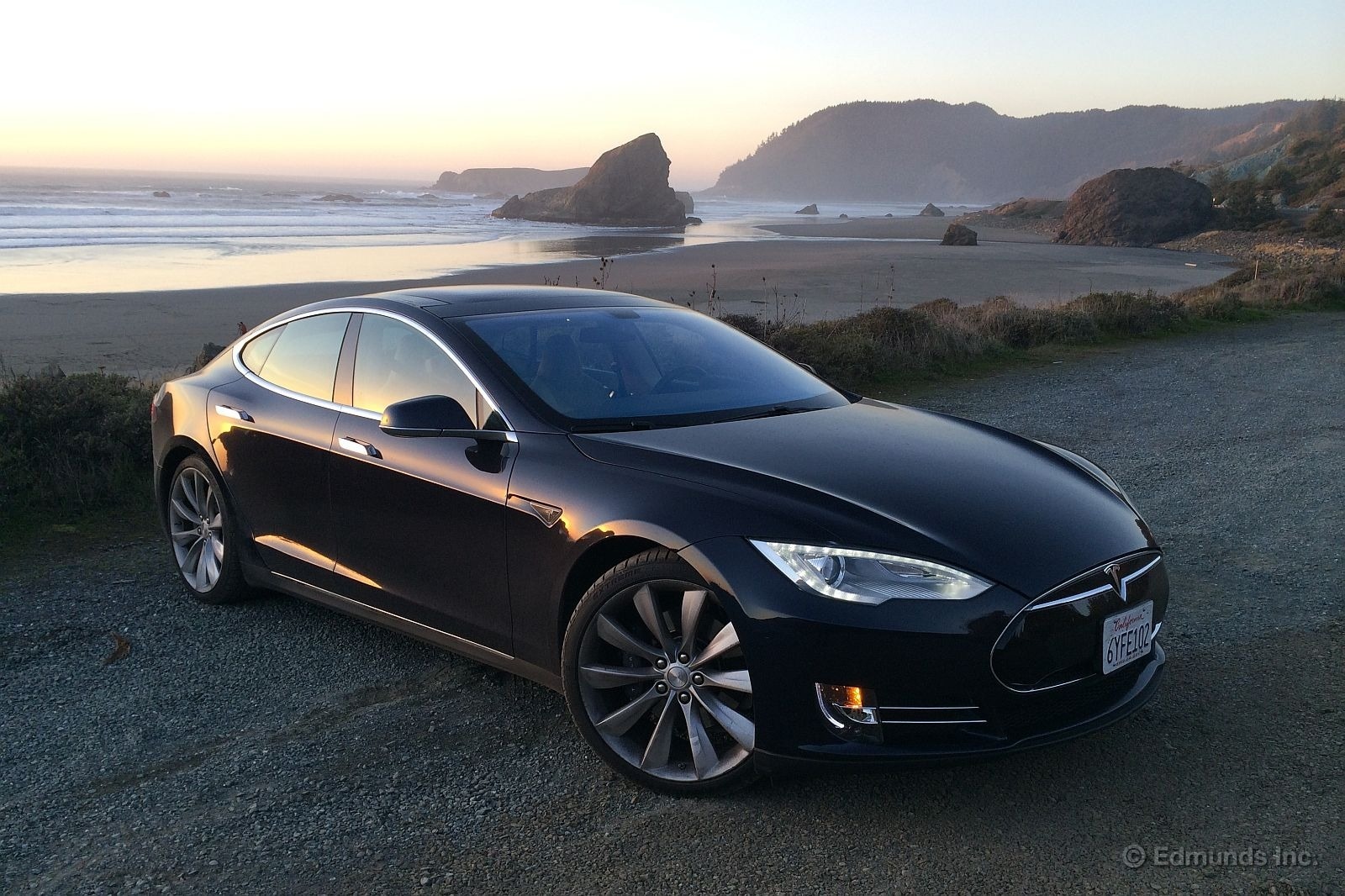
"This car's ability to dump all that torque from a stop and supply it continuously throughout the quarter-mile is what makes it so unique." — Chris Walton
"Our Model S can do many things other EVs can't.... Here it's plugged in to the 240V shore power receptacle at an RV park in a space with full hookups. It's made to do this, which is another sign that Tesla is thinking way outside the box that defines other electric vehicles and their limited capabilities." — Dan Edmunds
"A couple of weekends ago my wife and I dashed out of town to watch the Grand Am races at Mazda Raceway Laguna Seca. And we drove up and back in our Tesla Model S, the only pure electric vehicle on the market that can make the 750-mile round trip in anything approaching a normal time scale." — Dan Edmunds
"In the Model S, the eight-way-adjustable front seats are pleasantly comfortable. They have a good shape, nice materials and a decent amount of adjustment. But as luxury cars go, they're nothing special." — Ed Hellwig
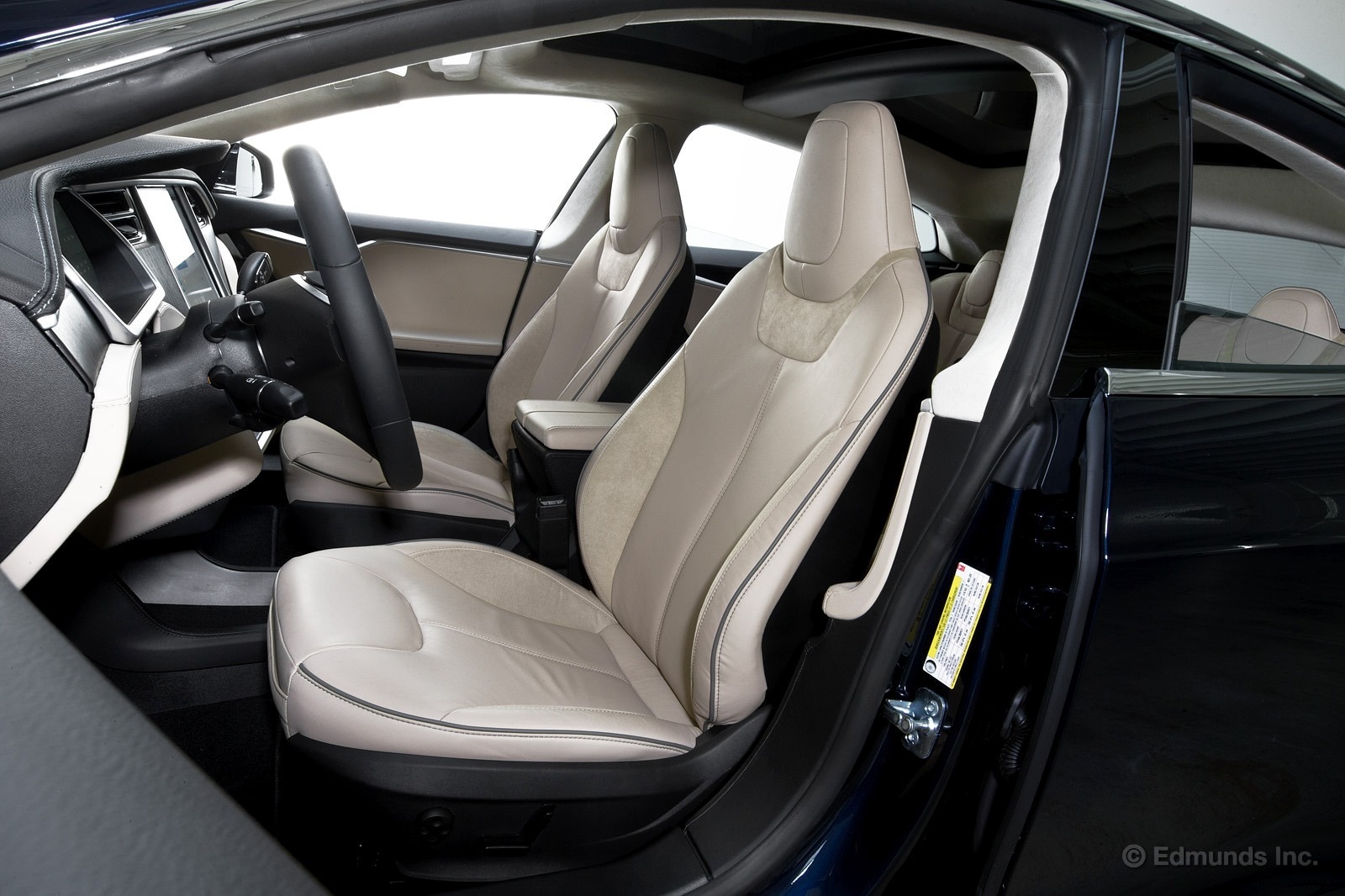
"The best thing the rear seats in the Tesla have going for them is space. There's plenty of it. The Model S is a very wide car and it translates into enough room for true three-across seating. In most luxury sedans, the middle is nothing more than a penalty seat." — Ed Hellwig
"I don't understand the Tesla Model S's center console, or rather its lack of one. There's just a carpeted strip on the floor with little walls on the side. It's basically a gutter. Is this appealing?" — James Riswick
"The task of transporting a set of wheels for my personal car recently fell to our Tesla Model S. Even with the rear jump seats installed there was plenty of space for four large boxes." — Travis Langness
"Yesterday I put my 5-year-old in the Tesla's rear jump seat. It was met with a mixed review. There was a moment of hesitation, for both of us, when I closed the hatch. Then, as I climbed in the driver seat to take her for a ride, she said this. 'Daddy, I don't think it's a good idea to put kids in the trunk.'" — Josh Jacquot
"I really like the look of the wood trim in our long-term Tesla. It's got a rough texture with a matte finish, which cuts down on the amount of glare that might sear your retina. In a neat coincidence, I found out a little more about this unique wood trim." — Mark Takahashi
"I'm fairly obsessed with the iPhone app for our Tesla Model S. Every once in a while I just check in to see how the car is doing. It's like having a baby monitor for your car." — Donna DeRosa
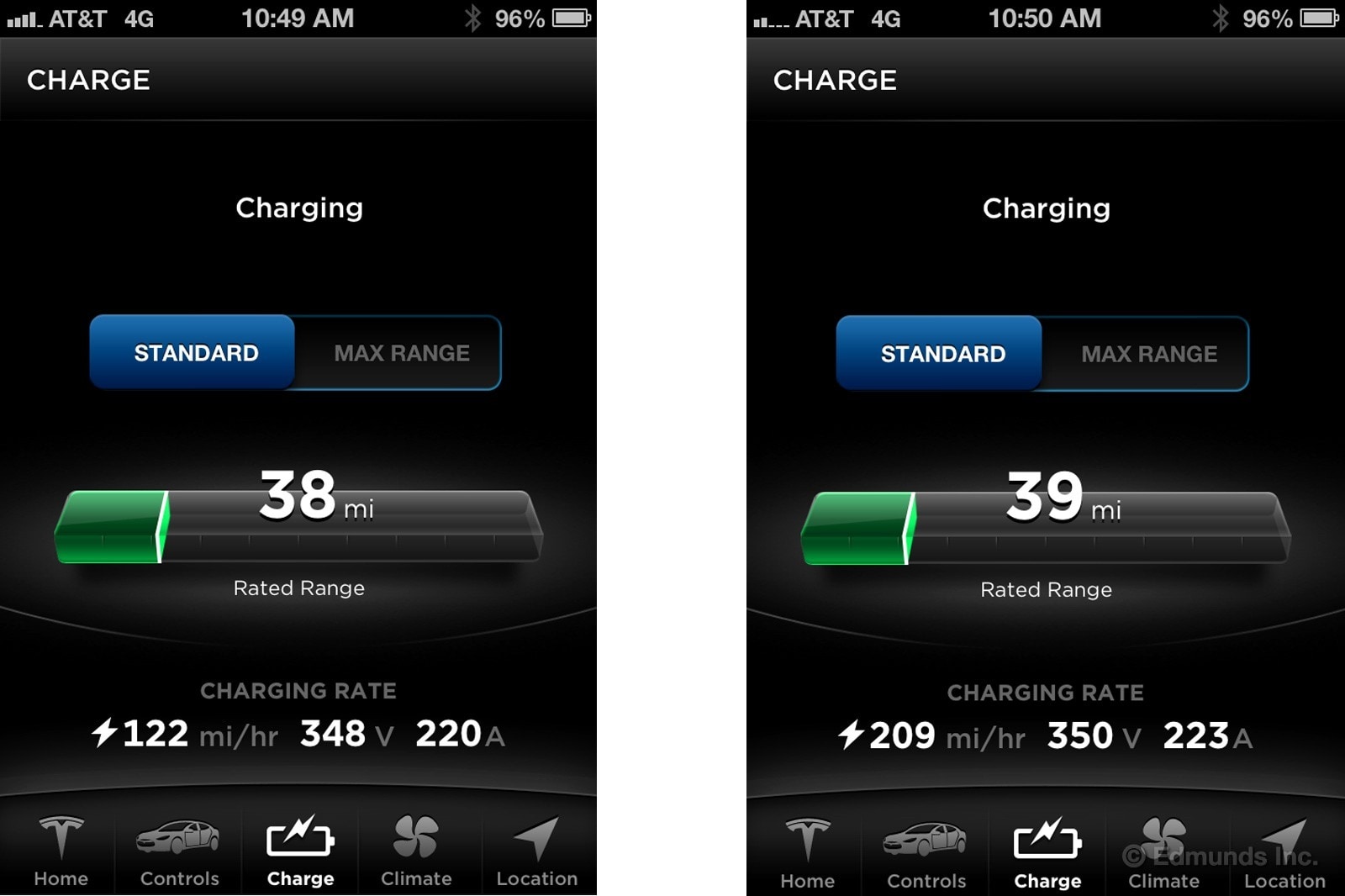
"Medium- and high-pitch frequencies are crisp and clear, while bass is strong and consistent up and down the volume range. There is no speaker distortion, regardless of genre (making it more impressive), even when you turn the stereo up to the maximum." — Travis Langness
"The primary display screen on our Tesla Model S went blank, again. If you are keeping track, this is the third outage in three months of ownership." — Mike Schmidt
"Despite the car's breathtaking price tag, the Model S's tire pressure monitor doesn't tell you which tire is low. It just says 'Hey! Go check all the tires!'" — John O'Dell
"The Tesla's setup bothers me because in Southern California every time you apply the brakes it affects hundreds, if not thousands, of others behind you. I simply don't want to trigger the brake lights every time I lift off the throttle. Let me be clear: I also don't want to be rear-ended." — Josh Jacquot
"'There's a Tesla Supercharger around here somewhere,' I thought to myself.... I found it just behind a Fro-Yo place and the Chipotle Grill.... A Panda Express sits next door... an In-n-Out a quarter-mile away.... You'll have plenty to eat while your Model S quietly recharges in something like 30 or 45 minutes. And there are six available spots." — Dan Edmunds
Maintenance & Repairs
Regular Maintenance:
Routine service is due on the Model S every 12,500 miles or 12 months, according to the owner's manual. Tires should be rotated every 6,000 miles.
Service Campaigns:
We expected some hiccups from the Model S. Not only was the car an all-new display of emerging technology, but it was also Tesla's first shot at building a car from the ground up. Our car amassed quite the repair résumé during the last 17 months.
Some notes about this list: 1) It includes everything beyond normal maintenance; 2) we had an early production car, so several of these issues were fixed as running changes on later production models; 3) many of the repairs were performed during the same visit; 4) only two visits required more than an overnight stay.
Fuel Economy and Resale Value
Observed Fuel Economy:
EPA estimates for electricity consumption in the Model S were 38 kWh/100 miles, with a range of 265 miles on a full charge. Our best observed range was 230.4 miles and the best projected range was 264.2 miles.
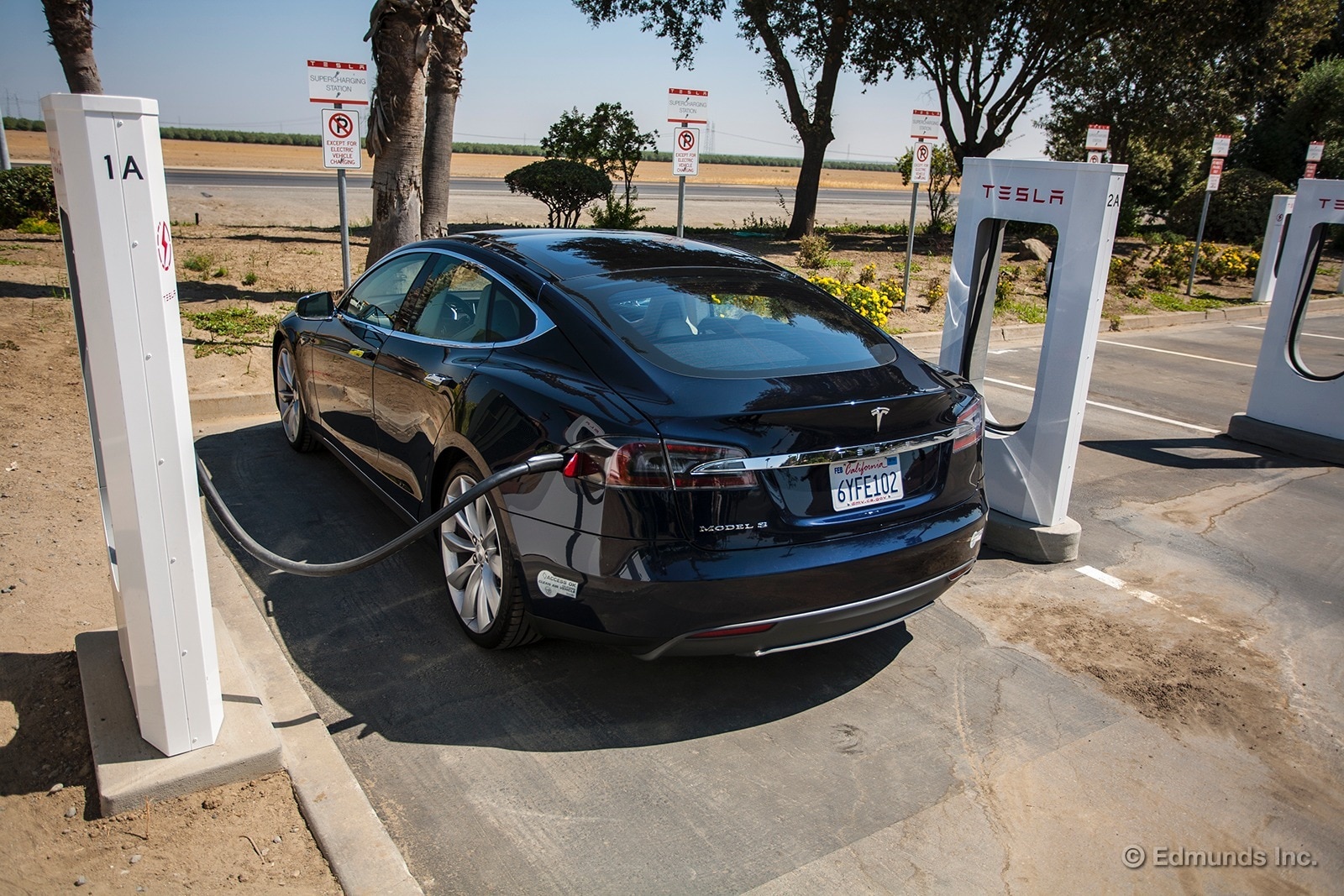
Resale and Depreciation:
We purchased our Model S for $103,770 (excluding the charger, which we kept). After 17 months we accumulated 30,251 miles and it was time to sell. At this time, Edmunds' TMV® Calculator could not value the vehicle, as there weren't enough cars on the used market. So we tried our luck with CarMax, who offered $79,000. Research led us to believe the fair market value was higher, so we advertised publicly. Soon thereafter we found a buyer and sold for $83,000, which reflected a 20-percent depreciation.
Summing Up
Pros: Thrilling performance, spacious and comfortable cabin, unmatched electric range, easy-to-use driver interface, plenty of cargo space, free national supercharger network, no routine maintenance costs, strong resale value.
Cons: Extensive list of repairs necessary, interior amenities don't match other luxury sedans in its price range, latest active safety systems not available, needs at least a Level 2 charger to make it useful as a daily driver.
Bottom Line: The Model S is a fast, comfortable and technologically brilliant luxury sedan, but numerous problems with its touchscreen, tires and drivetrain make it hard to recommend.
| Total Body Repair Costs: | None |
| Total Routine Maintenance Costs: | None (over 17 months) |
| Additional Maintenance Costs: | $1,907 for 5 new tires, mounted and balanced |
| Warranty Repairs: | See previous list, "Warranty" |
| Non-Warranty Repairs: | See previous list, "Goodwill" |
| Scheduled Dealer Visits: | 2 |
| Unscheduled Dealer Visits: | 7 |
| Days Out of Service: | 9 |
| Breakdowns Stranding Driver: | 1 |
| Best Observed Range: | 230.4 miles |
| Best Projected Range: | 264.2 mpg |
| Distance Powered by Superchargers: | 11,693 miles |
| Distance Powered by other chargers: | 18,558 miles |
| True Market Value at service end: | Not available |
| What it Sold for: | $83,000 |
| Depreciation: | $20,770 (20% of paid price) |
| Final Odometer Reading: | 30,251 miles |
Edmunds purchased this vehicle for the purposes of evaluation.
